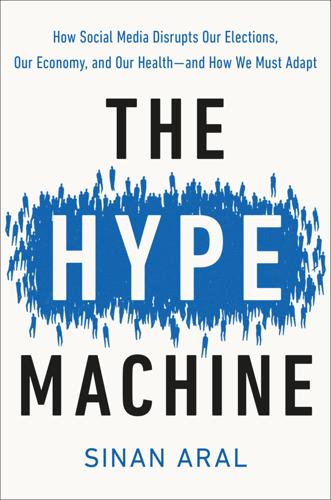
The Hype Machine: How Social Media Disrupts Our Elections, Our Economy, and Our Health--And How We Must Adapt
by
Sinan Aral
Published 14 Sep 2020
Skeptics contend that such misinformation preached to the choir, because exposure was “selective”—meaning that die-hard conservatives saw pro-Trump fake news, while die-hard liberals saw pro-Clinton fake news, making it unlikely that it changed anyone’s mind. Guess et al. found 40 percent of Trump supporters and only 15 percent of Clinton supporters read pro-Trump fake news, while 11 percent of Clinton supporters and only 3 percent of Trump supporters read pro-Clinton fake news. Sixty-six percent of the most conservative voters, the farthest-right decile, visited at least one pro-Trump fake news site and read an average of 33.16 pro-Trump fake news articles. But the argument that fake news was preaching to the choir doesn’t address voter turnout, because ideologically consistent fake news can motivate voters to turn out even if it doesn’t change their vote choices.
…
When the public revelation of the sting operation drew investors’ attention to the fact that fake news was being published on websites like Seeking Alpha, Kogan et al. used the public revelation of the sting to examine whether increased awareness of fake news eroded consumers’ trust in real news. Not surprisingly, fake news had a bigger impact on trading volume and price volatility before the SEC announcement than after it. But investors were also less moved by real news once the SEC drew attention to the existence of fake news, demonstrating the potential for fake news to erode the public’s trust in news altogether. If fake news can disrupt markets, it can affect everyone in society, whether we read and share it or not.
…
The distributions were skewed by a few viral hits, and a smaller percentage of voters saw the largest concentration of fake news. Guess et al. found that the 20 percent of Americans with the most conservative news diets were responsible for 62 percent of visits to fake news websites and that Americans over sixty were much more likely to consume fake news. On Twitter, Grinberg et al. found that 1 percent of registered voters consumed 80 percent of the fake news and that 0.1 percent accounted for 80 percent of “shares” from fake news websites. In a second, representative online survey of 3,500 Facebook users, Guess, Nyhan, and Reifler found that only 10 percent of respondents shared fake news and that they were highly concentrated among Americans over sixty-five.

The Death of Truth: Notes on Falsehood in the Age of Trump
by
Michiko Kakutani
Published 17 Jul 2018
The report also found that “average levels of misinformation were higher in swing states”—like Florida, North Carolina, and Virginia—than in uncontested states. Russians had become very adept not only at generating fake news but also at inventing fake Americans who commented on that fake news and joined fake American groups. A Russian troll factory employee named Vitaly Bespalov, who worked at a St. Petersburg propaganda factory called the Internet Research Agency, told NBC News that the job was “a merry-go-round of lies.” Workers on the first floor wrote fake news stories referencing blog posts written by workers on the third floor, while colleagues posted comments on those stories under fake names and coordinated other social media posts.
…
The new nihilism is people making money by creating fake news stories—by one estimate upward of ten thousand dollars a month, earned through online ads. NPR reported that one entirely fictional story with this headline—“FBI Agent Suspected in Hillary Email Leaks Found Dead in Apparent Murder-Suicide”—was shared on Facebook more than half a million times and was created by a California-based company named Disinfomedia that oversees several fake news sites. The founder of Disinfomedia, identified by NPR as one Jestin Coler, claimed that he started the company to show how easily fake news spreads and that he enjoys “the game.”
…
How Americans Decide What News to Trust on Social Media,” American Press Institute, Mar. 20, 2017; Elisa Shearer and Jeffrey Gottfried, “News Use Across Social Media Platforms 2017,” Pew Research Center, Sept. 7, 2017. Fake news is nothing new: “Yellow Journalism,” in Crucible of Empire: The Spanish-American War, PBS, pbs.org; Jacob Soll, “The Long and Brutal History of Fake News,” Politico, Dec. 18, 2016; “Gaius Julius Caesar: The Conquest of Gaul,” Livius.org. man behind the massacre: Kevin Roose, “After Las Vegas Shooting, Fake News Regains Its Megaphone,” New York Times, Oct. 2, 2017; Jennifer Medina, “A New Report on the Las Vegas Gunman Was Released. Here Are Some Takeaways,” New York Times, Jan. 19, 2018.

Outnumbered: From Facebook and Google to Fake News and Filter-Bubbles – the Algorithms That Control Our Lives
by
David Sumpter
Published 18 Jun 2018
Donald Trump has labelled the New York Times, CNN and other traditional news sources as fake news, because of what he perceives as one-sided coverage of his presidency. Trump can have this definition if he wants. My definition is stricter: fake news is news that is demonstrably false, not just politically angled. Fake news consists of stories picked up by fact-checker sites like Snopes and PolitiFact, and shown to be factually incorrect. Based on this definition, there were at least 65 fake news sites during the election. The alt-right site Breitbart sits delicately balanced on the edge of my definition. The question is not whether or not fake news exists. There is little doubt about that.
…
In the experiment, 14 per cent of people said they had heard these fake fake news stories. This was not significantly different from the 15 per cent who said they had heard the actual fake news stories. Even very shortly after the election, the participants couldn’t properly remember which fake things they had seen online. Combining these results with an analysis of how news spreads on Facebook and the relative impact of fake news websites compared with traditional news sites, Hunt and Matthew made a ‘back-of-an-envelope’ calculation to show that, at the very most, the average American would be able to remember one or two fake news stories as they went to the polls, and they were unlikely to believe these stories.
…
When I contacted him, Matthew was reluctant to draw a definitive conclusion that fake news had no influence in the election. He told me: ‘We can’t estimate how actually seeing a story/ad affects how people vote.’ Linking news exposure to actual voting requires further study. Even if we are as cautious as Matthew suggests, I just couldn’t see how the fake news effect could add up. Despite Donald Trump’s narrow victory in the election, Hunt and Matthew’s ‘back-of-an-envelope’ calculation implies that fake news is nothing more than meaningless noise. The ineffectiveness of fake news gives a very different picture to that implied by the concept of a post-truth world.
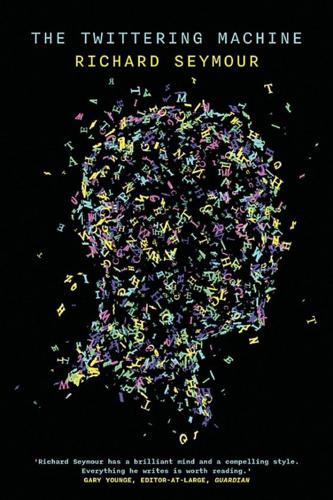
The Twittering Machine
by
Richard Seymour
Published 20 Aug 2019
For example, the satirical claim that the US would . . . Nicky Woolf, ‘As fake news takes over Facebook feeds, many are taking satire as fact’, Guardian, 17 November 2016. 26. The Toronto Sun’s false story . . . Ishmael N. Daro, ‘A Fake Online Review Claimed Refugees “Slaughtered Goats” In a Hotel. This Newspaper Helped it Go Viral’, BuzzFeed News, 11 October 2018. 27. The baser truth is that Facebook profited . . . Judd Legum, ‘Facebook’s pledge to eliminate misinformation is itself fake news’, Guardian, 20 July 2018. 28. In 2017, Facebook launched a ‘war on fake news’ . . . Dave Lee, ‘Facebook’s fake news crisis deepens’, BBC News, 15 November 2016; ‘Facebook fake news: Zuckerberg details plans to combat problem’, BBC News, 19 November 2016; Mark Molloy, ‘Facebook just made it harder for you to share fake news’, Daily Telegraph, 20 March 2017. 29.
…
The kinds of people prepared to believe such stories were not only far from Clinton’s core demographic; they were not even rooted in the sort of epistemological presuppositions that would be susceptible to a liberal press ‘fact check’. There is also little evidence that ‘fake news’ had much effect in 2016, and attempts to blame belief in ‘fake news’ stories risk shuffling cause and effect. For example, a study by researchers at Ohio State University looked at the correlation between belief in ‘fake news’ stories and defection from the Democratic ticket in 2016.18 It, quite ingeniously, controlled for alternative factors such as age, education, gender, race and ideological orientation.
…
Trump’s claim that she lied repeatedly and pathologically about her alleged heroics in Bosnia was also true.21 If the term ‘fake news’ is widely used by the Right, including such conspiracy theorists as Alex Jones, this suggests it is semantically loaded. Indeed, Trump’s appropriation of the term prompted a momentary fumbling for fine distinctions. The BBC suggested that ‘unverified’ was not the same as ‘fake’: fake news was untrue, whereas unverified news had not yet been proven to be true or false. The problem with such Jesuitical distinctions is that all ‘fake news’ is ‘unverified’ until someone proves it is ‘fake’. When Trump used the term, he was using it to describe media organizations publishing a document concerning his alleged relationships with the Russian state that, they admitted, they couldn’t verify.

Likewar: The Weaponization of Social Media
by
Peter Warren Singer
and
Emerson T. Brooking
Published 15 Mar 2018
THE UNREALITY MACHINE 118 “When all think alike”: Walter Lippmann, The Stakes of Diplomacy (Henry Holt, 1915), 51. 118 Moët champagne: Samanth Subramanian, “Inside the Macedonian Fake-News Complex,” Wired, February 15, 2017, https://www.wired.com/2017/02/veles-macedonia-fake-news/. 118 slick wardrobes: Alexander Smith and Vladimir Banic, “Fake News: How a Partying Macedonian Teen Earns Thousands Publishing Lies,” NBC News, December 9, 2016, http://www.nbcnews.com/news/world/fake-news-how-partying-macedonian-teen-earns-thousands-publishing-lies-n692451. 118 old industrial town: “About Veles,” Macedonia Information, accessed March 19, 2018, http://makedonija.name/cities/veles. 118 four times the advertising: Josh Constine, “Facebook Swells to 1.65B Users and Beats Q1 Estimates with $5.38B Revenue,” TechCrunch, April 27, 2016, https://techcrunch.com/2016/04/27/facebook-q1-2016-earnings/. 118 With each click: Subramanian, “Inside the Macedonian Fake-News Complex.” 118 tens of thousands of dollars: Ibid. 119 swelled into the hundreds: Craig Silverman and Lawrence Alexander, “How Teens in the Balkans Are Duping Trump Supporters with Fake News,” BuzzFeed, November 3, 2016, https://www.buzzfeed.com/craigsilverman/how-macedonia-became-a-global-hub-for-pro-trump-misinfo?
…
THE UNREALITY MACHINE 118 “When all think alike”: Walter Lippmann, The Stakes of Diplomacy (Henry Holt, 1915), 51. 118 Moët champagne: Samanth Subramanian, “Inside the Macedonian Fake-News Complex,” Wired, February 15, 2017, https://www.wired.com/2017/02/veles-macedonia-fake-news/. 118 slick wardrobes: Alexander Smith and Vladimir Banic, “Fake News: How a Partying Macedonian Teen Earns Thousands Publishing Lies,” NBC News, December 9, 2016, http://www.nbcnews.com/news/world/fake-news-how-partying-macedonian-teen-earns-thousands-publishing-lies-n692451. 118 old industrial town: “About Veles,” Macedonia Information, accessed March 19, 2018, http://makedonija.name/cities/veles. 118 four times the advertising: Josh Constine, “Facebook Swells to 1.65B Users and Beats Q1 Estimates with $5.38B Revenue,” TechCrunch, April 27, 2016, https://techcrunch.com/2016/04/27/facebook-q1-2016-earnings/. 118 With each click: Subramanian, “Inside the Macedonian Fake-News Complex.” 118 tens of thousands of dollars: Ibid. 119 swelled into the hundreds: Craig Silverman and Lawrence Alexander, “How Teens in the Balkans Are Duping Trump Supporters with Fake News,” BuzzFeed, November 3, 2016, https://www.buzzfeed.com/craigsilverman/how-macedonia-became-a-global-hub-for-pro-trump-misinfo?utm_term=.mqxmBEGNRa#.panz3vD86O. 119 would hold special events: Smith and Banic, “Fake News.” 119 “Dmitri”: Ibid. 119 a “clickbait coach”: Isa Soares et al., “The Fake News Machine: Inside a Town Gearing Up for 2020,” CNNMoney, http://money.cnn.com/interactive/media/the-macedonia-story/. 119 “Since fake news started”: Smith and Banic, “Fake News.” 119 “some white people”: Silverman and Alexander, “How Teens in the Balkans.” 119 false reports received: Craig Silverman, “This Analysis Shows How Viral Fake Election News Outperformed Real News on Facebook,” BuzzFeed, November 16, 2016, https://www.buzzfeed.com/craigsilverman/viral-fake-election-news-outperformed-real-news-on-facebook?
…
,” Tyndall Report, October 25, 2016, http://tyndallreport.com/comment/20/5778/. 135 “ Breitbart of the left”: Jonathan Easley, “Top Dem Super PAC Launches Anti-Trump War Room,” The Hill, December 6, 2016, http://thehill.com/blogs/ballot-box/308978-top-dem-super-pac-launches-anti-trump-war-room. 135 secret employ: Casey Michel, “The Bizarre Rise and Dramatic Fall of Louise Mensch and Her ‘Blue Detectives,’” ThinkProgress, January 19, 2018, https://thinkprogress.org/blue-detectives-collapse-trump-russia-a42a94537bdf/. 135 2017 French presidential election: Laura Daniels, “How Russia Hacked the French Election,” Politico, April 23, 2017, https://www.politico.eu/article/france-election-2017-russia-hacked-cyberattacks/. 135 Spain: Vasco Cotovio and Emanuella Grinberg, “Spain: ‘Misinformation’ on Catalonia Referendum Came from Russia,” CNN, November 13, 2017, https://www.cnn.com/2017/11/13/europe/catalonia-russia-connection-referendum/index.html. 135 Pakistani defense minister: Ben Westcott, “Duped by Fake News Story, Pakistani Minister Threatens Nuclear War with Israel,” CNN, December 26, 2016, https://www.cnn.com/2016/12/26/middleeast/israel-pakistan-fake-news-nuclear/index.html. 135 false Facebook update: Justin Lynch, “In South Sudan, Fake News Has Deadly Consequences,” Slate, June 9, 2017, http://www.slate.com/articles/technology/future_tense/2017/06/in_south_sudan_fake_news_has_deadly_consequences.html. 136 sectarian and ethnic violence: “Social Media and Conflict in South Sudan: A Lexicon of Hate Speech Terms” (report, PeaceTech Lab, n.d.), https://static1.squarespace.com/static/54257189e4b0ac0d5fca1566/t/5851c214725e25c531901330/1481753114460/PeaceTech+Lab_+SouthSudanLexicon.pdf. 136 rival Sudanese Facebook groups: Lynch, “In South Sudan.” 136 In India: “Hindutva.Info Runs Fake News of Hindus Thrashing Barkati,” ENewsRoom, February 16, 2018, https://enewsroom.in/hindutva-info-runs-fake-story-hindus-rastravadi-muslims-bashing-barkati/. 136 in Myanmar: Euan McKirdy, “When Facebook Becomes ‘the Beast’: Myanmar Activists Say Social Media Aids Genocide,” CNN, April 6, 2018, https://www.cnn.com/2018/04/06/asia/myanmar-facebook-social-media-genocide-intl/index.html. 136 in Sri Lanka: Amanda Taub and Max Fisher, “Where Countries Are Tinderboxes and Facebook Is a Match,” New York Times, April 21, 2018, https://www.nytimes.com/2018/04/21/world/asia/facebook-sri-lanka-riots.html. 136 “The germs”: Ibid. 136 trademark look: Michael Lohmuller, “Panic Ensues After MS13 Allegedly Prohibits Blonde Hair in Honduras Markets,” InSight Crime, May 27, 2015, https://www.insightcrime.org/news/analysis/ms13-allegedly-prohibits-blonde-hair-in-honduras-markets/. 136 criminals solemnly denounced: MS-13, press release, trans.
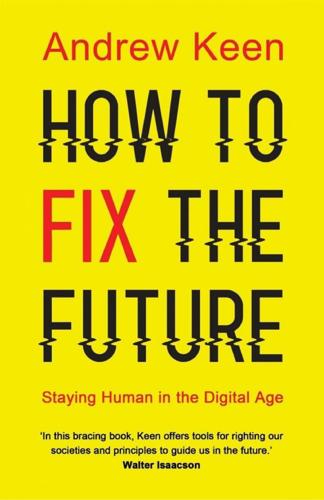
How to Fix the Future: Staying Human in the Digital Age
by
Andrew Keen
Published 1 Mar 2018
“With this law,” Maas explained a few months before the law was due to go into effect, “we put an end to the verbal law of the jungle on the internet and protect the freedom of expression for all.”37 Other European countries are also active in trying to curb fake news. The British Parliament has set up a House of Commons Select Committee to “grill Facebook executives” over their role in the fake news ecosystem.38 Even the Czech Republic, which is also holding general elections in late 2017 and has been subjected to a relentless information war no doubt orchestrated by the anonymous Fancy Bears in Moscow, is planning to open a specialist fake news unit ahead of the vote to tackle falsehoods purposely spread on the internet.39 The growing global furor, with its threats of financial punishment over social media’s publication of fake news, bestiality, child sexual abuse, and beheadings is, fortunately, finally having an impact.
…
Duncan Robinson and David Bond, “Tech Groups Warned on ‘Fake News,’” Financial Times, January 31, 2017. 33. Ibid. 34. “Terror and the Internet,” Economist, June 10, 2017. 35. Rachel Stern, “Germany’s Plan to Fight Fake News,” Christian Science Monitor, January 9, 2017. 36. Nick Hopkins, “How Facebook Flouts Holocaust Denial Laws Except When It Fears Being Sued,” Guardian, May 24, 2017. 37. Melissa Eddy and Mark Scott, “Delete Hate Speech or Pay Up, Germany Tells Social Media Companies,” New York Times, June 30, 2017. 38. Ben Riley-Smith, “Parliament to Grill Facebook Chiefs over ‘Fake News,’” Telegraph, January 14, 2017. 39.
…
Twitter’s value, he suggests, is more than just economic—particularly in our “post-truth” Trumpian political world, with its infestation of fake news and its nefarious trolls whipping up the online mob.3 So, he says, we should approach prominent media companies like Twitter as if they are public television or radio networks. “It’s important to run Twitter on the same public principles as Harvard University or the Guardian newspaper. Its societal worth can’t be quantified purely in terms of financial value,” the Betaworks CEO insists. What he’s saying is that—given the corrosive impact of fake news and other ridiculously biased or corrupt information on a culture that is already suffering a dearth of trust—some of our most influential new media platforms, like Twitter, might be too important to be treated like other for-profit companies.
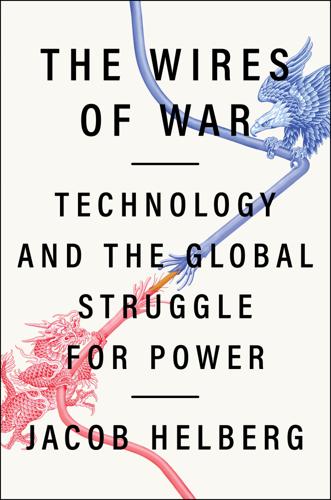
The Wires of War: Technology and the Global Struggle for Power
by
Jacob Helberg
Published 11 Oct 2021
v=QEEnme-miW4&feature=youtu.be. 99 “Impact Study on Citizens’ Ability to Detect Disinformation 1.5 Years After Completing a News Media Literacy Program,” IREX, https://www.irex.org/resource/impact-study-citizens-ability-detect-disinformation-15-years-after-completing-news-media. 100 Erin Murrock, Joy Amulya, Mehri Druckman, and Tetiana Liubyva, “Winning the war on state-sponsored propaganda,” IREX, https://www.irex.org/sites/default/files/node/resource/impact-study-media-literacy-ukraine.pdf. 101 Jon Henley, “How Finland starts its fight against fake news in primary schools,” The Guardian, January 29, 2020, https://www.theguardian.com/world/2020/jan/28/fact-from-fiction-finlands-new-lessons-in-combating-fake-news. 102 “The Media Literacy Index 2019: Just think about it,” Open Society Institute–Sofia, November 29, 2019, https://osis.bg/?p=3356&lang=en. 103 Eliza Mackintosh, “Finland is winning the war on fake news. What it’s learned may be crucial to Western democracy,” CNN, https://edition.cnn.com/interactive/2019/05/europe/finland-fake-news-intl/. 104 Ryan J. Foley, “Efforts grow to help students evaluate what they see online,” Associated Press, December 30, 2017, https://apnews.com/64b5ce49f58940eda86608f3eac79158. 105 “MediaWise,” Poynter Institute, https://www.poynter.org/mediawise/. 106 Carl T.
…
sequence=5&isAllowed=y. 6 Craig Silverman and Lawrence Alexander, “How Teens in the Balkans Are Duping Trump Supporters With Fake News,” BuzzFeed News, November 3, 2016, https://www.buzzfeednews.com/article/craigsilverman/how-macedonia-became-a-global-hub-for-pro-trump-misinfo#.fu2okXaeKo. 7 Kurt Wagner, “Mark Zuckerberg says it’s ‘crazy’ to think fake news stories got Donald Trump elected,” Recode, November 11, 2016, https://www.vox.com/2016/11/11/13596792/facebook-fake-news-mark-zuckerberg-donald-trump. 8 Amit Singhal, “ ‘Revenge porn’ and Search,” Google Public Policy Blog, June 19, 2015, https://publicpolicy.googleblog.com/2015/06/revenge-porn-and-search.html. 9 P.
…
Excerpt from Brad Smith & Carol Ann Browne, “Tools and Weapons,” Apple Books, https://books.apple.com/us/book/tools-and-weapons/id1455068611. 25 Lee, AI Superpowers, e-book, 130. 26 “Beijing police have covered every corner of the city with video surveillance system,” People China, October 5, 2015, http://en.people.cn/n/2015/1005/c90000-8958235.html. 27 Josh Chin and Liza Lin, “China’s all-seeing surveillance state is reading its citizens’ faces,” Strait Times, July 8, 2017, http://www.straittimes.com/opinion/chinas-all-seeing-surveillance-state-is-reading-its-citizens-faces. 28 Ross Andersen, “The Panopticon Is Already Here,” The Atlantic, September 2020, https://www.theatlantic.com/magazine/archive/2020/09/china-ai-surveillance/614197/. 29 Lee, AI Superpowers, e-book, 94. 30 James Vincent, “Watch Jordan Peele use AI to make Barack Obama deliver a PSA about fake news,” The Verge, April 17, 2018, https://www.theverge.com/tldr/2018/4/17/17247334/ai-fake-news-video-barack-obama-jordan-peele-buzzfeed. 31 Daniel Gross, interview with author, May 1, 2020. 32 Vincent, “Watch Jordan Peele use AI to make Barack Obama deliver a PSA about fake news.” 33 “Kenya election: Fake CNN and BBC news reports circulate,” BBC, July 29, 2017, https://www.bbc.com/news/world-africa-40762796. 34 Gianluca Mezzofiore, “No, Emma Gonzalez did not tear up a photo of the Constitution,” CNN, March 26, 2018, https://www.cnn.com/2018/03/26/us/emma-gonzalez-photo-doctored-trnd/index.html. 35 Ady Barkan, “Opinion: I speak with a computerized voice.
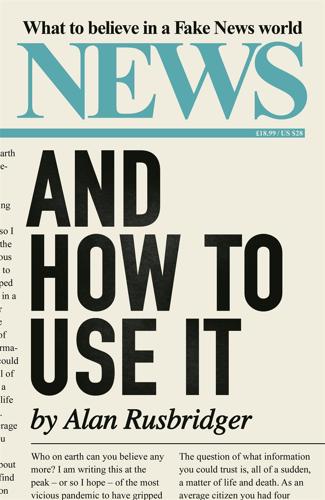
News and How to Use It: What to Believe in a Fake News World
by
Alan Rusbridger
Published 26 Nov 2020
It had become such a staple of the fact-checking world that Facebook hired it to help identify fake news on its platform. (Snopes pulled out of the partnership in early 2019, citing too much staff time spent on it.) Snopes, however, does not call things ‘fake news’. If the term once referred to a statement’s inaccuracy, it now ‘behaves like a rhetorical middle finger’ denoting a politician’s dislike of a statement regardless of its truth, writes one Snopes editor. A 2017 Gallup/Knight poll found that 51 per cent of American adults agree that accurate stories portraying politicians negatively sometimes constitute ‘fake news’ (28 per cent said these are ‘always’ fake news). Instead of fanning the flames, Snopes kicked the term out of their style guide.
…
<http://www.lse.ac.uk/GranthamInstitute/news/fundamental-flaw-in-press-watchdogs-complaints-process-helps-newspapers-to-promote-climate-change-denial/> Ward, Bob. ‘“The Mail on Sunday” admits publishing more fake news about climate change’. LSE Grantham Research Institute on Climate Change and the Environment blog, 22 April 2018. <http://www.lse.ac.uk/GranthamInstitute/news/the-mail-on-sunday-admits-publishing-more-fake-news-about-climate-change/> Wardle, Claire. ‘Fake news. It’s complicated’. First Draft, 16 February 2017. <https://medium.com/1st-draft/fake-news-its-complicated-d0f773766c79> Wardle, Claire and Hossein Derakhshan. ‘Information disorder: Toward an interdisciplinary framework for research and policy making’.
…
It’s just as undesirable to use a generalised term to discredit real news by simply labelling it fake. There is precedent for the latter use of the term in Nazi Germany and elsewhere (SEE: LÜGENPRESSE). Donald Trump’s tweet on 17 February 2017 was firmly in this tradition: ‘The FAKE NEWS media is not my enemy, it is the enemy of the American People!’ He named the ‘failing’ New York Times, as well as NBC, ABC, CBS and CNN – all broadly reputable news organisations – as fake news. This was, itself, fake news. FALSE AMPLIFIERS Facebook’s definition: ‘Coordinated activity by inauthentic accounts that has the intent of manipulating political discussion (e.g., by discouraging specific parties from participating in discussion or amplifying sensationalistic voices over others).’
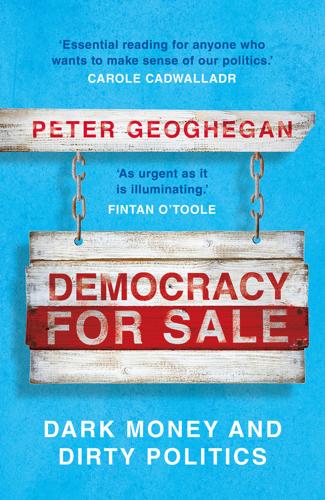
Democracy for Sale: Dark Money and Dirty Politics
by
Peter Geoghegan
Published 2 Jan 2020
We only know about the fine at all because of a legal challenge against the Electoral Commission.40 Otherwise, even this shard of information would have been buried under Northern Irish donor secrecy laws. The CRC story starkly reveals the limits of the rules governing our democracy in other ways, too. Official attempts to scrutinise the DUP donation floundered. When the fake news inquiry wrote to Richard Cook, he initially claimed that his response had been “lost” by the inquiry.41 This was contradicted by clerks in Westminster. Cook then wrote a letter accusing chair Damian Collins of being “the source of the ‘fake news’ you claim to wish to investigate”.42 Cook refused to answer any questions about the donation. In its final report, the committee concluded that: There is an absence of transparency surrounding the relationship between the Constitutional Research Council, the DUP and Vote Leave.
…
Chapter 3: The Bad Boys of Brexit 1 Arron Banks, The Bad Boys of Brexit: Tales of Mischief, Mayhem & Guerrilla Warfare in the EU Referendum Campaign (London, 2017), p. 306. 2 Digital, Culture, Media and Sport Committee, ‘Fake News’, House of Commons, June 2018. See also http://data.parliament.uk/writtenevidence/committeeevidence.svc/evidencedocument/digital-culture-media-and-sport-committee/disinformation-and-fake-news/oral/85344.html; accessed 19 Jan. 2020. 3 Ed Caesar, ‘The Chaotic Triumph of Arron Banks, the “Bad Boy of Brexit”’, New Yorker, March 2019. 4 Danny Dorling and Sally Tomlinson, Rule Britannia: Brexit and the End of Empire (London, 2019), p. 37. 5 Ed Caesar, ‘The Chaotic Triumph of Arron Banks, the “Bad Boy of Brexit”’, New Yorker, March 2019. 6 Robert Wright, ‘Arron Banks and the mystery Brexit campaign funds’, Financial Times, November 2018. 7 Ed Caesar, ‘The Chaotic Triumph of Arron Banks, the “Bad Boy of Brexit”’, New Yorker, March 2019. 8 Ibid. 9 Martin Fletcher, ‘Arron Banks: the man who bought Brexit’, New Statesman, October 2016. 10 Ed Caesar, ‘The Chaotic Triumph of Arron Banks, the “Bad Boy of Brexit”’, New Yorker, March 2019. 11 Tim Shipman, All Out War: The Full Story of Brexit (London, 2017), p. 43. 12 Alastair Sloan and Iain Campbell, ‘How did Arron Banks afford Brexit?’
…
See also https://nationalcrimeagency.gov.uk/news/public-statement-on-nca-investigation-into-suspected-eu-referendum-offences; accessed 19 Jan. 2020. 83 Charles Hymas, ‘Arron Banks threatens to sue Electoral Commission after being cleared by National Crime Agency over loans in Brexit referendum campaign’, Telegraph, September 2019. 84 Andrew Marr Show, BBC, November 2018. 85 Ian Cobain, ‘Ashcroft’s millions: from Belize tax haven to Tories via Southampton’, Guardian, March 2010. 86 Joe Lo, ‘Revealed: How Britain First Disguised the Source of a £200,000 Donation’, Vice, July 2019. 87 Billy Kenber, Paul Morgan-Bentley and Louis Goddard, ‘Tories under attack after tax haven donations’, The Times, March 2019. 88 Ian Cobain and Matthew Taylor, ‘Far-right terrorist Thomas Mair jailed for life for Jo Cox murder’, Guardian, November 2016. 89 ‘The Banks Files: Brexit funder urged campaign to “press it harder” after Jo Cox murder’, Channel 4, March 2019. 90 Rowena Mason, ‘Leave.EU condemned for linking Orlando attack to referendum vote’, Guardian, June 2016. 91 Ibid. 92 ‘Revealed: How Leave.EU faked migrant footage’, Channel 4, April 2019. 93 Digital, Culture, Media and Sport Committee, ‘Fake News’, House of Commons, June 2018. See also http://data.parliament.uk/writtenevidence/committeeevidence.svc/evidencedocument/digital-culture-media-and-sport-committee/disinformation-and-fake-news/oral/85344.html; accessed 19 Jan. 2020. 94 Peter Geoghegan and Jenna Corderoy, ‘Arron Banks lied to Parliament about his Brexit campaign, say whistleblowers’, openDemocracy, November 2018. 95 Arron Banks, The Bad Boys of Brexit: Tales of Mischief, Mayhem & Guerrilla Warfare in the EU Referendum Campaign (London, 2016), pp. 308–309. 96 Ed Howker, ‘Arron Banks and the UKIP data hijack’, Channel 4, December 2019. 97 Peter Geoghegan and Jenna Corderoy, ‘Revealed: Arron Banks’s staff crunched millions of voters’ data after Brexit vote’, openDemocracy, November 2019. 98 Ibid. 99 Alex Hern, ‘Leave.EU and Arron Banks insurance firm fined £120,000 for data breaches’, Guardian, February 2019. 100 Jen Frost, ‘Tribunal throws out Eldon and Leave EU appeals against ICO’, InsurancePost, February 2020. 101 David Pegg, ‘Met to take no further action over Leave.EU spending breaches’, Guardian, September 2019. 102 Andrew Pierce and James Tapsfield, ‘Your gold door’s worth more than my house!

Facebook: The Inside Story
by
Steven Levy
Published 25 Feb 2020
The Project P team found that of the top one hundred fake news stories, none of them originated from the suspected Russian groups. Fake news, they concluded, was really a problem of cutting off the money supply of malefactors, like the Macedonians in Veles, who were gaming the system. In a sense, they saw it as a similar situation to Facebook’s problem with spammy developers. Dealing with fake news, under that view, was not really much different from taming the excesses of Zynga’s Mark Pincus. “We understood some of the disinformation efforts had been traced to Russia [but] the fake news problem seemed larger,” says Colin Stretch, Facebook’s general counsel.
…
the real newspaper: Eric Lubbers, “There Is No Such Thing as the Denver Guardian, Despite That Facebook Post You Saw,” Denver Post, November 5, 2016. “We’ve tried to do”: Laura Sydell, “We Tracked Down a Fake-News Creator in the Suburbs. Here’s What We Learned,” NPR, November 23, 2016. BuzzFeed tracked: Craig Silverman and Lawrence Alexander, “How Teens in the Balkans Are Duping Trump Supporters with Fake News,” BuzzFeed, November 3, 2016. “They only wanted pocket money”: Samanth Subramanian, “Inside the Macedonian Fake-News Complex,” Wired, February 15, 2017. fake news stories on Facebook exceeded: Craig Silverman, “This Analysis Shows How Viral Fake Election News Stories Outperformed Real News on Facebook,” BuzzFeed, November 16, 2016.
…
There is a certain profound lack of empathy in asserting that the only reason why someone could have voted the way they did is because they saw some fake news. I was in the room during that interview, and can report that the remark in question was greeted with equanimity. Zuckerberg seemed to be reasonable in discussing it. But once out of the room a single remark survived: Facebook’s CEO said it was crazy to think that fake news had an impact. Months later, he would apologize. Given what was to be unearthed, he had no choice. * * * • • • WHILE FACEBOOK WAS making a belated attempt to see where the fake news came from, outsiders were also focusing on it. In the weeks after the election, misinformation on Facebook became a favorite target of finger-pointers devastated by the Trump victory.

WTF?: What's the Future and Why It's Up to Us
by
Tim O'Reilly
Published 9 Oct 2017
Pay Google.” 215 Facebook’s desire not to be the arbiter of truth: Peter Kafka, “Facebook Has Started to Flag Fake News Stories,” Recode, March 4, 2017, https://www.recode.net/2017/3/4/14816254/facebook-fake-news-disputed-trump-snopes-politifact-seattle-tribune. 215 “before it turns into a tsunami”: Krishna Bharat, “How to Detect Fake News in Real-Time,” NewCo Shift, April 27, 2017, https://shift.newco.co/how-to-detect-fake-news-in-real-time-9fdae0197bfd. Bharat’s article has many additional practical suggestions for how to algorithmically detect fake news in addition to some of those that I outline in this chapter. 215 “the overall logic is the same”: Bharat, “How to Detect Fake News in Real-Time.” 217 “to make it tolerate them”: Michael Marder, “Failure of U.S.
…
Similarly, when Facebook cracked down on stories with clickbait headlines, Adam Mosseri, its VP of product management for News Feed, wrote, “Facebook won’t be publicly publishing the multi-page document of guidelines for defining clickbait because ‘a big part of this is actually spam, and if you expose exactly what we’re doing and how we’re doing it, they reverse engineer it and figure out how to get around it.’” Just as with clickbait headlines, some incentives to create fake news can be eliminated. Many of those promoting fake news during the 2016 election were politically motivated, whether sincerely or cynically, but many fake news sites, like the ones created by the Macedonian teens, were created purely for financial gain. Cutting off advertising for sites or accounts that are peddling fake news is a great way to eliminate some of the most egregious offenders. This can be done not only by the platforms themselves, but by advertisers and ad networks who place “remnant advertising” on the lowest-quality sites.
…
CHAPTER 10: MEDIA IN THE AGE OF ALGORITHMS 199 Macedonian teens out to make a buck: Craig Silverman and Lawrence Alexander, “How Teens in the Balkans Are Duping Trump Supporters with Fake News,” BuzzFeed, November 3, 2016, https://www.buzzfeed.com/craigsilver man/how-macedonia-became-a-global-hub-for-pro-trump-misinfo. 199 to churn out the stuff: Laura Sydell, “We Tracked Down a Fake-News Creator in the Suburbs. Here’s What We Learned,” NPR All Tech Considered, November 23, 2016, http://www.npr.org/sections/alltechconsidered/2016/11/23/503146770/npr-finds-the-head-of-a-covert-fake-news-operation-in-the-suburbs. 199 “a pretty crazy idea”: Aarti Shahani, “Zuckerberg Denies Fake News on Facebook Had Impact on the Election,” NPR All Tech Considered, November 11, 2016, http://www.npr.org/sections/alltech considered/2016/11/11/501743684/zuckerberg-denies-fake-news-on-face book-had-impact-on-the-election. 200 hyperpartisan stories shown to each group: “Blue Feed/Red Feed,” Wall Street Journal, May 18, 2016, updated hourly, retrieved March 31, 2007, http://graph ics.wsj.com/blue-feed-red-feed/. 200 video claiming that her aide Huma Abedin: “Huma Kidding?

The Constitution of Knowledge: A Defense of Truth
by
Jonathan Rauch
Published 21 Jun 2021
What about all the other phony stories they do? FAKE NEWS!” And this: “So they caught Fake News CNN cold, but what about NBC, CBS & ABC? What about the failing @nytimes & @washingtonpost? They are all Fake News!” In the president’s worldview, by holding itself to account, the network had proved not its integrity but its corruption—and, indeed, the corruption of the entire news industry. In much the same spirit, in 2018 the president and the Republican National Committee touted something they called the “Fake News Awards.” What the president and the committee did not note was that of the eleven supposedly fake news items, at least seven had been promptly corrected by the outlets which had published them.
…
Conservatives were also seeing and digesting significantly more fake news. One study, by the political scientists Andrew Guess, Brendan Nyhan, and Jason Reifler in 2018, found that fewer than half of Americans visited a fake news website in the weeks before the 2016 election, but the visitors were not evenly distributed across the ideological spectrum: about six in ten visits to fake news sites came from the most conservative 20 percent of Americans. Trump supporters were more than twice as likely as Hillary Clinton supporters to visit untrustworthy websites; strikingly, fake news sites accounted for more than 10 percent of Trump supporters’ overall news diet, versus only 1 percent of Clinton supporters’ news diet.56 Other research found that conservatives were more exposed to conspiracy theories and fake news, and were more likely to believe them.
…
Hyping disinformation risked making disruptive actors like Putin and Trump seem ten feet tall, which was exactly their goal. Most people, during the 2016 presidential campaign, did not go to fake news websites. Fewer than 10 percent shared fake news links on Facebook, according to a 2019 analysis by New York University’s Social Media and Political Participation Lab and Princeton University. Republicans were four times more likely than Democrats to share fake news links—but still, fewer than a fifth of Republicans did so.70 Brendan Nyhan and his colleagues found that the reach of fake news declined in the 2018 midterm election cycle, partly thanks to countermeasures by the media platforms.71 During the pandemic in 2020, polls found that more Republicans (80 percent) trusted Trump for medical information than trusted the Centers for Disease Control.

Calling Bullshit: The Art of Scepticism in a Data-Driven World
by
Jevin D. West
and
Carl T. Bergstrom
Published 3 Aug 2020
Technologically, the same artificial intelligence techniques used to detect fake news can be used to get around detectors, leading to an arms race of production and detection that the detectors are unlikely to win. A second approach is governmental regulation. Some countries have already passed laws against creating or spreading fake news, but we worry about this approach for two reasons. First, it runs afoul of the First Amendment to the US Constitution, which guarantees freedom of speech. Second, who gets to determine what is fake news? If a leader doesn’t like a story, he or she could declare it fake news and pursue criminal charges against the perpetrators.
…
But more recently, governments such as those of China, Iran, and Russia have discovered that social media offers an ideal platform on which to monitor public sentiment, track dissent, and surreptitiously manipulate popular opinion. Still, fake news is not primarily a propaganda tool. Most fake and hyperpartisan news is created for a different reason: to generate advertising revenue. Anyone, anywhere can get in on the action. In the final days of the 2016 US election, Barack Obama talked extensively about the fake news factories in Macedonia. The people running these factories—often teenagers—created at least 140 popular fake news websites during the election. When a story went viral, it generated huge advertising revenues for the site owners.
…
You don’t necessarily know the answer just by looking at it; you may have to do some research. It’s not clear where to do that research, or what sources count as authoritative. Once you find an answer, reasonable people still might not agree whether you are looking at fake news, hyperpartisan news, satire, or some other type of misinformation. And because fake news is continually evolving, a training set of fake news stories from 2020 might be out of date by 2021. To call bullshit on the newest AI startup, it is often sufficient to ask for details about the training data. Where did it come from? Who labeled it? How representative is the data?
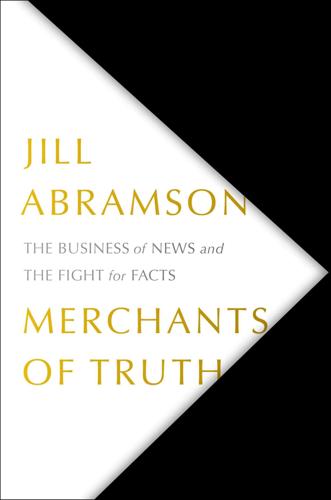
Merchants of Truth: The Business of News and the Fight for Facts
by
Jill Abramson
Published 5 Feb 2019
Their posts bore headlines: Craig Silverman, “Use This Checklist to Find Out If You’re Looking at Fake News,” BuzzFeed, December 16, 2016, https://www.buzzfeed.com/craigsilverman/fake-news-checkllist-1?utm_term=.vsb1J2yAD#.bymK6DqMx; Craig Silverman, “6 Easy AF Steps to Detect Fake News Like a Pro,” BuzzFeed, December 16, 2016, https://www.buzzfeed.com/craigsilverman/detect-fake-news-like-a-pro-2; Craig Silverman, “This Is How You Can Stop Fake News from Spreading on Facebook,” BuzzFeedNews, November 19, 2016, https://www.buzzfeednews.com/article/craigsilverman/heres-how-to-report-fake-news-on-facebook. Lytvynenko said: Jane Lytvynenko, interviewed by John Stillman at BuzzFeed Toronto, July 28, 2017.
…
As a result, much of what they published had a distinctly didactic quality. Their posts bore headlines like “Use This Checklist to Find Out If You’re Looking at Fake News” and “6 Easy [as Fuck] Steps to Detect Fake News Like a Pro” and “This Is How You Can Stop Fake News from Spreading on Facebook.” The urgency of their work did not altogether prevent them from enjoying it, but the job also posed certain occupational hazards. Lytvynenko said it had given her nightmares. Her first big BuzzFeed story, for example, was on the German creator of a fake-news site whose anti-immigration fearmongering clickbait doubled as a driver of traffic to his web store, where he sold firearms.
…
On the very day the editors: Abby Ohlheiser, “Three Days after Removing Human Editors, Facebook Is Already Trending Fake News,” Washington Post, August 29, 2016, https://www.washingtonpost.com/news/the-intersect/wp/2016/08/29/a-fake-headline-about-megyn-kelly-was-trending-on-facebook/?utm_term=.b4df12f85d94. Then more: Craig Silverman, “Here’s Why Facebook’s Trending Algorithm Keeps Promoting Fake News,” BuzzFeed, October 26, 2016, https://www.buzzfeednews.com/article/craigsilverman/can-facebook-trending-fight-off-fake-news. He did so in early September: Mark Zuckerberg’s Facebook profile, September 6, 2016, https://www.facebook.com/zuck/posts/10103087138471551.

How to Be Right: In a World Gone Wrong
by
James O'Brien
Published 2 Nov 2018
And here’s Jack, in Croydon, in 2018, showing that it worked. Jack: Um. Where do you stand on fake news, James? James: I’m passionately opposed to it. But you can’t answer a question with a question. Jack: I can’t do it. I can’t answer fake questions with fake answers. Sorry, mate. James: It’s not a fake question. How do you feel about the mocking of disabled journalists? Jack: Fake news. James: But we’ve seen the pictures, Jack. Jack: Fake news. James: So the pictures are fake? Jack: Fake news. James: OK. So how do we feel about the mocking of Gold Star families? This refers to Khizr and Ghazala Khan, the Pakistani American parents of US Army Captain Humayun Khan, who was killed in the Iraq War in 2004.
…
Trump responded by suggesting erroneously that the speech had been written by Hillary Clinton’s staff and insulting the parents, saying: ‘If you look at his wife, she was standing there. She had nothing to say. She probably – maybe she wasn’t allowed to have anything to say. You tell me.’ Jack: Gold Star families? Again, fake news. James: You’ve seen it on your screen, Jack. Jack: I’ve seen it on my screen, mate. Fake news. James: How do you know the story about the balloon isn’t fake news? Why have you chosen to believe this? Jack: You’re going nuts about it, and I know why. James: Jack, I think it’s funny. I’m not going nuts about it. I’m giggling. You’re the one who’s phoned me about a giant balloon.
…
It’s because you describe all the facts that provide the basis for attacking Donald Trump as ‘fake news’. So you can understand why! Come on, Jack, no one’s that stupid. If you describe the evidence of your own eyes as ‘fake news’, then of course you can understand why people keep attacking him. It’s not difficult to grasp that, if you describe facts as lies, then you’ve chosen not to understand. I can’t really help you any more than that. Jack: Give me some real facts and then we can talk about them. James: I just have. He mocks disabled journalists, he boasts about sexually assaulting women, he’s a multiple bankrupt … Jack: Fake news. James: He mocked the parents of a Gold Star soldier.
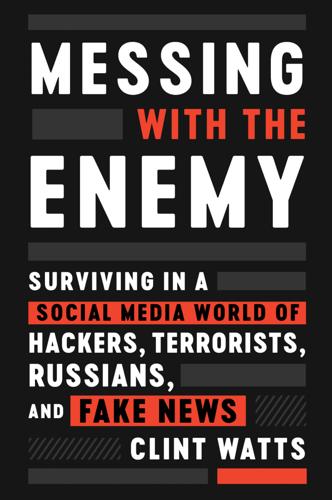
Messing With the Enemy: Surviving in a Social Media World of Hackers, Terrorists, Russians, and Fake News
by
Clint Watts
Published 28 May 2018
Above all, I had fallen for “fake news.” Everyone falls for fake news sometimes, and if people say they don’t, they either are lying to themselves, lack the humility to admit it, or still don’t realize they’ve been duped. The vaccine-autism conspiracy continues on the internet and social media today. I’ve even seen it coming from Russian trolls infiltrating American audiences. Autism is something everyone hopes to avoid, regardless of political affiliation. If a troll can hook someone on an autism conspiracy, it’ll be even easier to hook them on a social or political conspiracy. But why did I fall for fake news? I research social media and study this stuff, and yet I still convinced myself to space out my daughter’s vaccinations and demand single packaged shots, just in case vaccinations caused autism.
…
Less than a month after the election, social media influence became a fixation with journalists as they looked for an explanation as to how Donald Trump had beaten all the odds. He was completely unconventional, uninformed, unlikable in so many ways, and yet he had become the leader of the free world. Fake news entered the American lexicon, and my team’s pre-election detailing of Russian active measures on the internet was now the subject of hot debate. Had fake news swayed the U.S. presidential election? A Washington Post article cited our study, and soon left-leaning trolls, led by the self-righteous Glenn Greenwald, of the Intercept, and the always bitter Matt Taibbi, of Rolling Stone, grouped me with McCarthyites seeking to suppress free speech.
…
I research social media and study this stuff, and yet I still convinced myself to space out my daughter’s vaccinations and demand single packaged shots, just in case vaccinations caused autism. I had created my own fake news back when I socially engineered prank calls at West Point as a cadet, and later I fell for fake news in trying to care for my daughter. I fell for the vaccine-autism conspiracy due to my preference bubble: my friend was the source, and I wanted to believe I could avoid autism by my own initiative. I suffered terribly from my implicit bias. Moreover, my friend and I both shared anxiety about increases in autism diagnoses and, as upcoming first-time parents, we both were more likely to spread the emotionally potent conspiracy.7 Social media has only made the danger of falling for fake news worse.
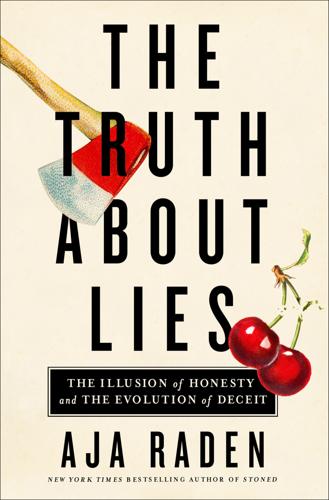
The Truth About Lies: The Illusion of Honesty and the Evolution of Deceit
by
Aja Raden
Published 10 May 2021
But belief in one or more of those fake news stories accounted for another 11 percent. For voters defecting from the Democratic ticket, falling for even one of just those random three fake news items had a greater effect than any other individual factor, apart from simply being a Republican. Gunther, Beck, and Nisbet include the cautious disclaimer that “we cannot prove that belief in fake news caused these former Obama voters to defect from the Democratic candidate in 2016,” but go on to conclude that “these data strongly suggest, however, that exposure to fake news did have a significant impact on voting decisions.”34 In academic speak, this is as close to an admission of direct causality as we are likely to get.
…
The data shows that the truth rarely reached more than 1,000 Twitter users, whereas the most malignant and outrageous lies reached well over 10,000—and, of course, it got there a lot faster. The tweets containing “fake news” stories took one-sixth the time to reach 1,500 people as tweets containing accurate information—and not because they were shared by users with a larger platform or disproportionately amplified by bots.39 In fact, the study concluded that, unlike us, bots were spreading fake news and real news at an equal rate. Humans, on the other hand, could not get enough of the lies. Average people were just more inclined—70 percent more inclined—to retweet the “fake news” tweets than anything remotely true. And while Twitter accounts that predominately shared accurate information had more followers, they also determined that the crazier a tweet was—no matter where it came from—the more likely it was to go viral.40 As you’ll recall, mere exposure creates in us an unconscious truth bias toward the familiar and prevalent—the predicate of all successful propaganda.
…
The problem is that from riots in China to suicides in New Jersey, Hoaxes are a category of lie that never—by definition—stays on a personal scale. Once enough individual beliefs reach that critical mass I mentioned earlier, they alter everyone’s reality. Take, for example, the 2016 election. According to a recent Ohio State University study, fake news likely swung the presidency to Donald Trump. The study, authored by Richard Gunther, Paul A. Beck, and Erik C. Nisbet,32 is one of the first analyses of the effect fake news had on voter turnout and their choices, and it suggests that around 4 percent of Americans who voted for Barack Obama in 2012 were dissuaded from voting for Hillary Clinton in 2016 specifically because of the influence of specious news.

Genius Makers: The Mavericks Who Brought A. I. To Google, Facebook, and the World
by
Cade Metz
Published 15 Mar 2021
He knew that current technology was not up to the task, which required a very subtle breed of human judgment. Any AI technology that could reliably identify fake news would have passed a much larger milestone. “It would mean AI has reached human-level intelligence,” he said. He also knew that fake news was in the eye of the beholder. Separating the real from the fake was a matter of opinion. If humans couldn’t agree on what was and what was not fake news, how could they train machines to recognize it? News was, inherently, a tension between objective observation and subjective judgment. “In many cases,” Pomerleau said, “there is no right answer.”
…
“Today, as we sit here, 99 percent of the ISIS and Al Qaeda content”: Ibid. Pomerleau tweeted out what he called the “Fake News Challenge”: Dean Pomerleau tweet, November 29, 2016, https://twitter.com/deanpomerleau/status/803692511906635777?s=09. “I will give anyone 20:1 odds”: Ibid. “It would mean AI has reached human-level intelligence”: Cade Metz, “The Bittersweet Sweepstakes to Build an AI That Destroys Fake News,” Wired, December 16, 2016, https://www.wired.com/2016/12/bittersweet-sweepstakes-build-ai-destroys-fake-news/. “In many cases”: Ibid. the company held a press roundtable at its corporate headquarters in Menlo Park: Deepa Seetharaman, “Facebook Looks to Harness Artificial Intelligence to Weed Out Fake News,” Wall Street Journal, December 1, 2016, https://www.wsj.com/articles/facebook-could-develop-artificial-intelligence-to-weed-out-fake-news-1480608004.
…
But the talent shift wasn’t the biggest change wrought by Trump’s arrival in the Oval Office. From the moment the election ended, the national media started to question the role of online misinformation in the outcome, raising deep concerns over the power of “fake news.” Mark Zuckerberg initially dismissed these concerns during a public appearance in Silicon Valley days after the election, blithely saying it was a “pretty crazy idea” that voters were swayed by fake news. A chorus of reporters, lawmakers, pundits, and private citizens, however, pushed back. The truth was that the problem had been rampant during the election, particularly on Facebook’s social network, where hundreds of thousands of people, perhaps even millions, had shared hoax stories with headlines like “FBI Agent Suspected in Hillary Email Leaks Found Dead of Apparent Murder-Suicide” and “Pope Francis Shocks World, Endorses Donald Trump for President.”

Conscience of a Conservative: A Rejection of Destructive Politics and a Return to Principle
by
Jeff Flake
Published 31 Jul 2017
This is why the Founders felt it critical that an American electorate be well informed, and why being a discerning and informed citizen is now more important than ever before. Fake news has been around forever. Our own time, of course, has put its distinctive mark on this scourge. We haven’t, for instance, always had the technology to disseminate and target fake news in such a way that millions of people believe it to be true, the way we do now. We haven’t always had to deal with weaponized information as a means to wage war by foreign enemy powers. We haven’t always had the willingness and brazenness of certain politicians to exploit the gullibility of certain voters by pushing fake news. Perhaps most destructive of all, we haven’t ever had an occupant of the White House who so routinely calls true reports that irk him “fake news” while giving his seal of approval to fake reports that happen to support his position.
…
Some of our Western allies are so concerned about the threat posed by fake news that they are considering imposing enormous civil penalties on the social networks that spread it and profit from it. Some proposals even criminalize the content itself. In the months after our election, as worries of Russian meddling and an awareness of the magnitude of the problem crossed the Atlantic to threaten parliamentary elections in Germany and France, the German minister of the interior proposed to fine Facebook and Twitter $53 million for each instance of fake news that is not removed from circulation within twenty-four hours.
…
Even the technologists and the social media goliaths are having to race to stay clear about what it is they’re selling and about what is and isn’t true. In the early months of 2017, CBS’s 60 Minutes devoted a segment to the subject of fake news, where it reported that in Michigan (for example) in the days before the election, fully half of the information in circulation on social media was fraudulent. And during its investigation into Russian meddling into our 2016 election, the Senate Intelligence Committee interviewed a former FBI agent named Clinton Watts, who revealed that the Russians, who are now wielding fake news as a weapon of war, had during the election used “trolls” to expertly plant false stories in the American news ecosystem, stories that were amplified geometrically by Russian “bots,” machine-run Twitter accounts that share stories artificially, causing them to go viral.

The Controlled Demolition of the American Empire
by
Jeff Berwick
and
Charlie Robinson
Published 14 Apr 2020
For example, Media Matters had a detailed map of the constellation of right-wing Facebook pages that had been the biggest purveyors of fake news - as well as insight into the food chain of fake news and how it was moving through the Facebook ecosystem. Similarly, after Google revised their terms of service in order to prohibit so-called fake news sites from using their advertising network, it was Media Matters that had the information necessary to identify 40 of the worst fake news sites to which this policy applied.” If forcing the social media platforms to silence those with dissenting voices does not work during the course of their four-year plan, Media Matters has a backup plan that seems crazy, even by their standards.
…
They have the ability to start hot wars through a simple formula of concocting lies, manipulating the way the viewers felt about those lies, followed by constant repetition. But they call the Alternative Media “fake news”? The Nightly News is so fake that it says “Made in China” on the label and falls apart the first time someone tries to actually put it on and wear it. Their hysterical overreaction when President Trump flipped the script and slapped the “fake news” label on CNN showed their insecurity about being exposed as an entertainment channel and not an actual news organization. The reaction of the mainstream media proves that the “fake news” is not actually fake because they are so obviously threatened by it, otherwise, they would simply ignore it.
…
Did NBC run a special broadcast to refute Elvis being spotted at a Chick-Fil-A, or eating Ding Dongs at a Winn Dixie store? No, why not? That is fake news, right? So where is the massive overreaction from the mainstream media? They had fake news right in front of their faces when President Obama pretended to drink a glass of Flint, Michigan water during a campaign, but they failed to recognize such an obvious stunt, in part because they liked the guy.170 The discovery of the actual fake news being pushed by the major news organizations sent some people into a frenzy of retaliation against these big corporations, but they did not turn out as well as some had hoped.

New Laws of Robotics: Defending Human Expertise in the Age of AI
by
Frank Pasquale
Published 14 May 2020
Olivier Sylvain, “Intermediary Design Duties,” Connecticut Law Review 50, no. 1 (2018): 203; Danielle Keats Citron and Mary Anne Franks, “The Internet as a Speech Machine and Other Myths Confounding Section 230 Reform” (working paper, Public Law Research Paper No. 20-8, Boston University School of Law, Massachusetts, 2020); Carrie Goldberg, Nobody’s Victim: Fighting Psychos, Stalkers, Pervs, and Trolls (New York: Plume, 2019), 38. 27. Craig Silverman, “Facebook Is Turning to Fact-Checkers to Fight Fake News,” BuzzFeed News, December 15, 2016, https://www.buzzfeed.com/craigsilverman/facebook-and-fact-checkers-fight-fake-news?utm_term=.phQ1y0OexV#.sn4XJ8ZoLA. 28. Timothy B. Lee, “Facebook Should Crush Fake News the Way Google Crushed Spammy Content Farms,” Vox, December 8, 2016, http://www.vox.com/new-money/2016/12/8/13875960/facebook-fake-news-google. 29. Safiya Umoja Noble, Algorithms of Oppression: How Search Engines Reinforce Racism (New York: New York University Press, 2018); Carole Cadwalladr, “Google, Democracy and the Truth about Internet Search,” Guardian, December 4, 2016, https://www.theguardian.com/technology/2016/dec/04/google-democracy-truth-internet-search-facebook. 30.
…
Their own design choices mean that summaries of stories shared on Facebook, as well as those presented by Google’s desktop and mobile displays, all tend to look similarly authoritative, whatever the source.19 Thus, a story from the fabricated “Denver Guardian,” falsely tying Hillary Clinton to an FBI agent’s suicide, can appear as authoritative as a Pulitzer Prize–winning investigation debunking such conspiracy theories.20 More directly, Facebook profits from fake news; the more a story is shared (whatever its merits), the more ad revenue it brings in.21 Toward the end of the 2016 election, fake news outperformed real news in Facebook’s ecosystem.22 We also now know that Facebook directly helped the Trump campaign target its voter-suppression efforts at African Americans.23 Ethics was an afterthought, as long as the ad money kept rolling in.
…
Germany has led the way, with legislation imposing clear responsibility on platforms for fake news. Inadequacies of AI detection systems are no longer an excuse there. The Netherlands has also empowered officials to punish platforms that feature hate speech or lies. Still, media regulators in both countries face criticism from a press that perceives any restrictions—even on the platforms that are now draining their revenue away—as an assault on hard-won independence. Matters are even worse in the United States, where a prevaricator-in-chief managed to use “fake news” as an epithet against the very outlets trying to expose his misdeeds.

Rationality: What It Is, Why It Seems Scarce, Why It Matters
by
Steven Pinker
Published 14 Oct 2021
* * * • • • To understand viral humbug such as urban legends, tabloid headlines, and fake news, we have to remember that it is fantastically entertaining. It plays out themes of sex, violence, revenge, danger, fame, magic, and taboo that have always titillated patrons of the arts, high and low. A fake headline like FBI Agent Suspected in Hillary Email Leaks Found Dead in Apparent Murder-Suicide would be an excellent plot in a suspense thriller. A recent quantitative analysis of the content of fake news concluded that “the same features that make urban legends, fiction, and in fact any narrative, culturally attractive also operate for online misinformation.”53 Often the entertainment spills into genres of comedy, including slapstick, satire, and farce: Morgue Employee Cremated by Mistake While Taking a Nap; Donald Trump Ends School Shootings by Banning Schools; Bigfoot Keeps Lumberjack as Love Slave.
…
Gigerenzer, G., Swijtink, Z., Porter, T., Daston, L., Beatty, J., et al. 1989. The empire of chance: How probability changed science and everyday life. New York: Cambridge University Press. Gilbert, B. 2019. The 10 most-viewed fake-news stories on Facebook in 2019 were just revealed in a new report. Business Insider, Nov. 6. https://www.businessinsider.com/most-viewed-fake-news-stories-shared-on-facebook-2019-2019-11. Gilovich, T., Vallone, R., & Tversky, A. 1985. The hot hand in basketball: On the misperception of random sequences. Cognitive Psychology, 17, 295–314. https://doi.org/10.1016/0010-0285(85)90010-6.
…
Building a better correction: Three lessons from new research on how to counter misinformation. Columbia Journalism Review. http://archives.cjr.org/united_states_project/building_a_better_correction_nyhan_new_misperception_research.php. Nyhan, B. 2018. Fake news and bots may be worrisome, but their political power is overblown. New York Times, Feb. 13. https://www.nytimes.com/2018/02/13/upshot/fake-news-and-bots-may-be-worrisome-but-their-political-power-is-overblown.html. Nyhan, B., & Reifler, J. 2012. Misinformation and fact-checking: Research findings from social science. Washington, DC: New America Foundation. Nyhan, B., & Reifler, J. 2019.

No Filter: The Inside Story of Instagram
by
Sarah Frier
Published 13 Apr 2020
hl=en. 10 | CANNIBALIZATION Most Instagram users had no idea: Casey Newton, “America Doesn’t Trust Facebook,” The Verge, October 27, 2017, https://www.theverge.com/2017/10/27/16552620/facebook-trust-survey-usage-popularity-fake-news. the top stories with false information: Craig Silverman, “This Analysis Shows How Viral Fake Election News Stories Outperformed Real News on Facebook,” BuzzFeed News, November 16, 2016, https://www.buzzfeednews.com/article/craigsilverman/viral-fake-election-news-outperformed-real-news-on-facebook. Some Facebook executives, like Adam: Salvador Rodriguez, “Facebook’s Adam Mosseri Fought Hard Against Fake News—Now He’s Leading Instagram,” CNBC, May 31, 2019, https://www.cnbc.com/2019/05/31/instagram-adam-mosseri-must-please-facebook-investors-and-zuckerberg.html.
…
They tended to promote her brand: Frier, “Trump’s Campaign Says It Was Better at Facebook.” He warned the CEO that: Adam Entous, Elizabeth Dwoskin, and Craig Timberg, “Obama Tried to Give Zuckerberg a Wake-Up Call over Fake News on Facebook,” Washington Post, September 24, 2017, https://www.washingtonpost.com/business/economy/obama-tried-to-give-zuckerberg-a-wake-up-call-over-fake-news-on-facebook/2017/09/24/15d19b12-ddac-4ad5-ac6e-ef909e1c1284_story.html. Zuckerberg reassured the outgoing president: Entous, Dwoskin, and Timberg, “Obama Tried to Give Zuckerberg a Wake-Up Call.” While people spent an average: Sarah Frier, “Facebook Watch Isn’t Living Up to Its Name,” Bloomberg Businessweek, January 28, 2019, https://www.bloomberg.com/news/articles/2019-01-28/facebook-watch-struggles-to-deliver-hits-or-advertisers.
…
Some of them stayed home, too emotional to face the reality of the erratic new leader of the United States. The media generated several handy narratives for How It Happened. A top theory was that the news feed algorithm, designed by engineers to give people what they wanted, had been rewarding articles and videos that subtly nudged voters to believe in outlandish conspiracy theories and fake news that often cast Clinton herself in the worst possible light. Stories that claimed the pope had endorsed Trump, or that Clinton had sold weapons to the Islamic State, were juiced by Facebook’s algorithms and promoted to millions of Facebook users. In the three months prior to the election, the top stories with false information reached more people on Facebook than the top stories from legitimate news outlets.

Custodians of the Internet: Platforms, Content Moderation, and the Hidden Decisions That Shape Social Media
by
Tarleton Gillespie
Published 25 Jun 2018
Lingel and Gillespie, “One Name to Rule Them All.” 34John, The Age of Sharing. 35Marwick, Status Update; Thompson, “The New Visibility.” 36Andrejevic et al., “Participations”; Bakioglu, “Exposing Convergence”; David and Pinch, “Six Degrees of Reputation”; Fast, Örnebring, and Karlsson, “Metaphors of Free Labor”; Herman, “Production, Consumption, and Labor in the Social Media Mode of Communication”; Jarrett, “The Relevance of ‘Women’s Work’”; Postigo, “The Socio-Technical Architecture of Digital Labor”; van Doorn, “Platform Labor.” 37Melissa Zimdars, “My ‘Fake News List’ Went Viral. But Made-Up Stories Are Only Part of the Problem,” Washington Post, November 18, 2016, https://www.washingtonpost.com/posteverything/wp/2016/11/18/my-fake-news-list-went-viral-but-made-up-stories-are-only-part-of-the-problem/?utm_term=.e85377696beb; Angie Drobnic Holan, “2016 Lie of the Year: Fake News,” Politifact, December 13, 2016, http://www.politifact.com/truth-o-meter/article/2016/dec/13/2016-lie-year-fake-news/. For a survey of the fake news phenomenon, see also Jack, “Lexicon of Lies.” 38Associated Press, “‘Pizzagate’ Shooting Suspect: ‘The Intel on This Wasn’t 100 Percent,’” December 8, 2016, http://www.cbsnews.com/news/pizzagate-shooting-suspect-edgar-maddison-welch-intel-wasnt-100-percent/. 39Kaveh Waddell, “Facebook and Google Won’t Let Fake News Sites Use Their Ad Networks,” Atlantic, November 15, 2016, https://www.theatlantic.com/technology/archive/2016/11/facebook-and-google-wont-let-fake-news-sites-use-their-ads-platforms/507737/. 40This has expanded: for example, Google started letting users flag when their “snippets” when they’re incorrect.
…
When an intermediary grows this large, this entwined with the institutions of public discourse, this crucial, it has an implicit contract with the public that, whether platform management likes it or not, can differ from the contract it required users to click through. The primary and secondary effects these platforms have on essential aspects of public life, as they become apparent, now lie at their doorstep. Fake news is a useful example. Facebook and Twitter never promised to deliver only reliable information, nor are they legally obligated to spot and remove fraud. But the implicit contract is now such that they are held accountable for some of the harms of fake news, and must find ways to intervene. This is not a contract that will ever bind the platforms in court, but it is certain to be upheld in the court of public opinion. Even as moderation grows more complicated and costly, the expectations of users have grown not more forgiving but more demanding.
…
For a survey of the fake news phenomenon, see also Jack, “Lexicon of Lies.” 38Associated Press, “‘Pizzagate’ Shooting Suspect: ‘The Intel on This Wasn’t 100 Percent,’” December 8, 2016, http://www.cbsnews.com/news/pizzagate-shooting-suspect-edgar-maddison-welch-intel-wasnt-100-percent/. 39Kaveh Waddell, “Facebook and Google Won’t Let Fake News Sites Use Their Ad Networks,” Atlantic, November 15, 2016, https://www.theatlantic.com/technology/archive/2016/11/facebook-and-google-wont-let-fake-news-sites-use-their-ads-platforms/507737/. 40This has expanded: for example, Google started letting users flag when their “snippets” when they’re incorrect. See Klint Finley, “Google Wants You to Help Fix the Fake-Fact Problem,” Wired, April 26, 2017, https://www.wired.com/2017/04/google-wants-crowd-solve-fake-fact-problem/. 41danah boyd, “Turmoil in Blogland,” Salon, January 8, 2005, http://www.salon.com/2005/01/08/livejournal/. 42Personal interview. 43Personal interview. 44Carolyn Gregoire, “The Hunger Blogs: A Secret World of Teenage ‘Thinspiration,’” Huffington Post, February 8, 2012, http://www.huffingtonpost.com/2012/02/08/thinspiration-blogs_n_1264459.html. 45Boero and Pascoe, “Pro-Anorexia Communities and Online Interaction.” 46Alice Marwick, “Is Blocking Pro-ED Content the Right Way to Solve Eating Disorders?”

Reset
by
Ronald J. Deibert
Published 14 Aug 2020
Advocates of fact-checking also assume that everyone reasons the same way: Woolley & Joseff. Demand for deceit. Fact-checking can actually reinforce the spread of false information: Pennycook, G., & Rand, D. (2020, March 24). The right way to fight fake news. Retrieved from https://www.nytimes.com/2020/03/24/opinion/fake-news-social-media.html; Pennycook, G., Bear, A., Collins, E. T., & Rand, D. G. (2020). The implied truth effect: Attaching warnings to a subset of fake news headlines increases perceived accuracy of headlines without warnings. Management Science [Forthcoming]. http://dx.doi.org/10.2139/ssrn.3035384 General warnings about the veracity of news can actually reduce confidence in all news sources: Clayton, K., Blair, S., Busam, J.
…
Doubleday; For a contrary view, see Rid, T. (2013). Cyber war will not take place. Oxford University Press USA. Spreading false information is as old as humanity itself: See Posetti, J., & Matthews, A. (2018, July 23). A short guide to the history of “fake news” and disinformation. Retrieved from https://www.icfj.org/news/short-guide-history-fake-news-and-disinformation-new-icfj-learning-module Nonetheless products of history: See Deibert, R. (1999). Harold Innis and the empire of speed. Review of International Studies, 25(2), 273–289; Ruggie, J. G. (1993). Territoriality and beyond: Problematizing modernity in international relations.
…
Retrieved from https://web-assets.domo.com/blog/wp-content/uploads/2018/06/18_domo_data-never-sleeps-6verticals.pdf “Human cognitive architecture”: Lin, H. (2019). The existential threat from cyber-enabled information warfare. Bulletin of the Atomic Scientists (75), 187–196; See also Matthews, J. (2019, April). A cognitive scientist explains why humans are so susceptible to fake news and misinformation. Retrieved from https://www.niemanlab.org/2019/04/a-cognitive-scientist-explains-why-humans-are-so-susceptible-to-fake-news-and-misinformation/ Thanks to the pioneering work of Nobel Prize– winning psychologist Daniel Kahneman: Kahneman, D. (2011). Thinking, fast and slow. Macmillan; Tversky, A., & Kahneman, D. (1974). Judgment under uncertainty: Heuristics and biases.
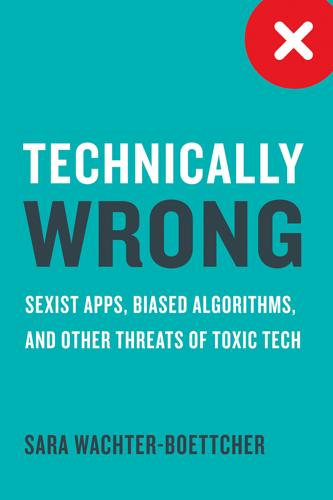
Technically Wrong: Sexist Apps, Biased Algorithms, and Other Threats of Toxic Tech
by
Sara Wachter-Boettcher
Published 9 Oct 2017
Whether the timing was coincidental doesn’t really matter: as long as Reddit maintains a “free speech” ideology that relies on unpaid moderators to function, it will continue to fall apart—and the victims will be those on the receiving end of harassment. FAKING NEWS Speaking of broken platforms and the American president, I would be remiss not to talk about perhaps the biggest story related to technology and the 2016 election: “fake news.” As I write this today, the term has pretty much lost its meaning: the president and his staff now use it to vilify any press coverage they don’t like. But during the fall of 2016, actual fake news was all over Facebook: The Pope endorses Donald Trump! Hillary Clinton sold weapons to ISIS! According to a BuzzFeed News analysis, in the run-up to Election Day 2016, the top twenty fake stories from hoax and hyperpartisan sources generated more engagement on Facebook than the top twenty election stories from major news sites: 8.7 million shares, comments, and reactions, versus 7.4 million from real news sources.42 Most reports traced the problem back to May of 2016, when tech news site Gizmodo published an article based on an interview with former members of Facebook’s Trending team.
…
But it didn’t matter: in August, the Trending team was suddenly laid off, and a group of engineers took its place to monitor the performance of the Trending algorithm.45 Within three days, that algorithm was pushing fake news to the top of the feed: “BREAKING: Fox News Exposes Traitor Megyn Kelly, Kicks Her Out for Backing Hillary,” the headline read. The story was fake, its description was riddled with typos, and the site it appeared on was anything but credible: EndingTheFed.com, run by a twenty-four-year-old Romanian man who copied and pasted stories from other conservative-leaning fake-news sites. Yet the story stayed at the top of the Trending charts for hours. Four different stories from EndingTheFed.com went on to make it into BuzzFeed’s list of most-shared fake-news articles during the election.46 This time, conservative pundits and politicians were silent.
…
The idea is so ingrained in Facebook’s culture—so core to the way it sees the world—that One Hacker Way is even the official address of the company’s fancy Menlo Park headquarters. That’s why it was so easy for fake news to take hold on Facebook: combine the deeply held conviction that you can engineer your way out of anything with a culture focused on moving fast without worrying about the implications, and you don’t just break things. You break public access to information. You break trust. You break people. Facebook didn’t mean to make fake news a real problem, just like Twitter didn’t mean to enable harassers. But Facebook’s unquestioning commitment to the Hacker Way—to a belief system that puts technical solutions first, and encourages programmers and product teams to take risks without thinking about their implications—made it easy for it to stay blind to the problem, until it was far too late.
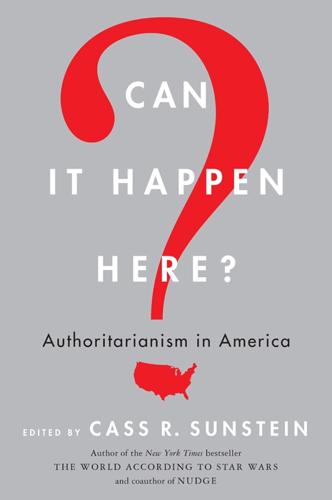
Can It Happen Here?: Authoritarianism in America
by
Cass R. Sunstein
Published 6 Mar 2018
So far, the press remains free, at least as a formal matter. But the most popular news outlets enthusiastically embrace President Trump’s programs. They are careful not to criticize him. The majority of Americans dismiss the president’s critics as sources of “fake news.” The Department of Justice is starting to investigate some sources of fake news for possible sedition. Whether or not the investigations result in prosecution, the dissenting news outlets are increasingly marginal. In terms of impact, they’re failing, and their economic situation is increasingly dire. In a recent speech to a joint session of Congress, President Trump declared that the war on Islamic terrorism “had no beginning and has no end.”
…
Montesquieu, The Spirit of the Laws (Cambridge, UK: Cambridge University Press, 1989). 2. Herbert Storing, ed., The Complete Anti-Federalist (Chicago: University of Chicago Press, 2007). 3. See vol. 6 of The Complete Anti-Federalist, 201. Chapter 5 1. “Many Americans Believe Fake News Is Sowing Confusion,” Pew, December 2016, http://www.journalism.org/2016/12/15/many-americans-believe-fake-news-is-sowing-confusion/. 2. Christopher Andrew and Vasili Mitrokhin, The Mitrokhin Archive: The KGB in Europe and the West (New York: Penguin Press, 1999), 315–17; Comrade Kryuchkov’s Instructions: Top Secret Files on KGB Foreign Operations, 1975–1985, eds.
…
Presidential Election,” First Monday, November 2016, http://journals.uic.edu/ojs/index.php/fm/article/view/7090/5653. 22. Hunt Allcott and Matthew Gentzkow, “Social Media and Fake News in the 2016 Election,” NBER Working Paper No. 23089, National Bureau of Economic Research, June 2017, http://www.nber.org/papers/w23089. 23. “National Security Advisor General H. R. McMaster on MSNBC with Hugh Hewitt,” August 5, 2017, http://www.hughhewitt.com/national-security-advisor-general-h-r-mcmaster-msnbc-hugh/. 24. Joe Parkinson and Georgi Kantchev, “Document: Russia Uses Rigged Polls, Fake News to Sway Foreign Elections,” Wall Street Journal, March 3, 2017, https://www.wsj.com/articles/how-does-russia-meddle-in-elections-look-at-bulgaria-1490282352. 25.
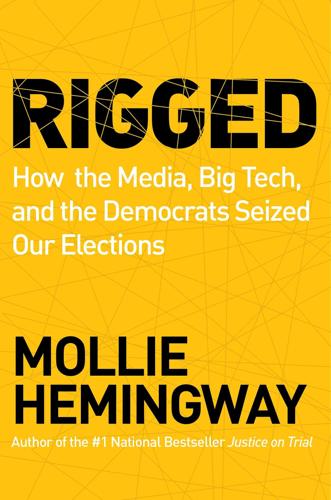
Rigged: How the Media, Big Tech, and the Democrats Seized Our Elections
by
Mollie Hemingway
Published 11 Oct 2021
Jordan Davidson, “Surprise! The ‘Russian Bounty’ Story Hyped Up by Corrupt Media to Hurt Trump Turned Out to Be Fake News,” The Federalist, April 15, 2021, https://thefederalist.com/2021/04/15/surprise-the-russian-bounty-story-hyped-up-by-corrupt-media-to-hurt-trump-turned-out-to-be-fake-news/. 41. Tristan Justice, “Liz Cheney Was a Primary Culprit of Spreading Fake News on Russian Bounties to Undermine Trump,” The Federalist, April 16, 2021, https://thefederalist.com/2021/04/16/liz-cheney-was-a-primary-culprit-of-spreading-fake-news-on-russian-bounties-to-undermine-trump/. 42. Josh Lederman (@JoshNBCNews), “This raises the obvious and very serious question: The US had intelligence that Russia was paying militants to kill US & allied troops…,” Twitter, June 27, 2020, 4:54 p.m., https://twitter.com/JoshNBCNews/status/1276982370973945863. 43.
…
Jordan Davidson, “These ‘Fortune 500’ Companies Donated to the Marxist, Anti-Capitalism Black Lives Matter Foundation,” The Federalist, July 13, 2020, https://thefederalist.com/2020/07/13/these-fortune-500-companies-donated-to-the-marxist-anti-capitalism-black-lives-matter-foundation/. 48. Jonah Gottschalk, “Twitter Mob Attacks Wendy’s after Falling for Fake News,” The Federalist, June 2, 2020, https://thefederalist.com/2020/06/02/twitter-mob-attacks-wendys-after-falling-for-fake-news/. 49. Chris Cwik, “Drew Brees Addresses NFL Players Kneeling in 2020: ‘I Will Never Agree with Anybody Disrespecting the Flag,’ ” Yahoo, June 3, 2020, https://sports.yahoo.com/drew-brees-addresses-nfl-players-kneeling-in-2020-i-will-never-agree-with-anybody-disrespecting-the-flag-164423496.html. 50.
…
Allum Bokhari, #DELETED: Big Tech’s Battle to Erase the Trump Movement and Steal the Election (New York: Center Street, 2020), 29. 4. Ibid., 423. 5. Sheera Frenkel, “Renegade Facebook Employees Form Task Force to Battle Fake News,” BuzzFeed, November 14, 2016, https://www.buzzfeednews.com/article/sheerafrenkel/renegade-facebook-employees-form-task-force-to-battle-fake-n. 6. Sam Levin, “Mark Zuckerberg: I Regret Ridiculing Fears over Facebook’s Effect on Election,” The Guardian, September 27, 2017, https://www.theguardian.com/technology/2017/sep/27/mark-zuckerberg-facebook-2016-election-fake-news. 7. Michael Nunez, “Former Facebook Workers: We Routinely Suppressed Conservative News,” Gizmodo, May 9, 2016, https://gizmodo.com/former-facebook-workers-we-routinely-suppressed-conser-1775461006. 8.
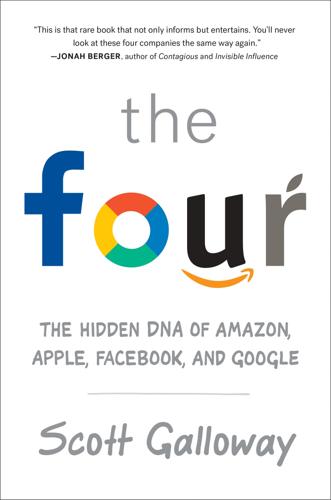
The Four: How Amazon, Apple, Facebook, and Google Divided and Conquered the World
by
Scott Galloway
Published 2 Oct 2017
“Facebook: ‘We cannot become arbiters of truth—it’s not our role.’” iNews. April 6, 2017. https://inews.co.uk/essentials/news/technology/facebook-looks-choke-fake-news-cutting-off-financial-lifeline/. 36. “News Use Across Social Media Platforms 2016.” 37. Pogue, David. “What Facebook Is Doing to Combat Fake News.” Scientific American. February 1, 2017. https://www.scientificamerican.com/article/pogue-what-facebook-is-doing-to-combat-fake-news/. 38. Harris, Sam. Free Will (New York: Free Press, 2012), 8. 39. Bosker, Bianca. “The Binge Breaker.” Atlantic, November 2016. https://www.theatlantic.com/magazine/archive/2016/11/the-binge-breaker/501122/.
…
He went into the restaurant and fired a shot, though without hurting anyone (this time), and was arrested.34 The shit sandwich here is that having legitimate news next to fake news has only made the Facebook platform more dangerous. When standing in line at Kroger, you may suspect Hillary is not an alien, despite what the Enquirer and other supermarket tabloids tell you. However, the presence of the New York Times and WaPo on Facebook has legitimized fake news. Platform How can Facebook exert some form of editorial control? A good place to start is with hate crimes. It’s easy to be on the right side of that one.
…
If Facebook is by far the largest social networking site, reaching 67 percent of U.S. adults,36 and if more us, each day, are getting our news from it, then Facebook has become, de facto, the largest news media firm in the world. The question is, does news media have a greater responsibility to pursue, and police, the truth? Isn’t that the point of news media? As the backlash continued, Facebook introduced tools to help combat fake news. Users can now flag a story as fake, and it will be sent to a fact-checking service. In addition, Facebook is using software to identify potentially fake news.37 However, with both of those methods, even if false, at most the story is only labeled “disputed.” Given the polarization of our political climate and the “backfire effect”—where if you present someone with evidence against their beliefs, they double down on their convictions—a “disputed” label won’t persuade a lot of people.
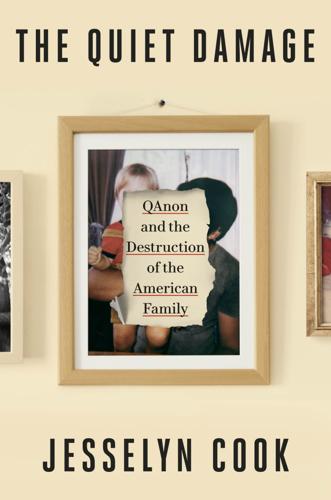
The Quiet Damage: QAnon and the Destruction of the American Family
by
Jesselyn Cook
Published 22 Jul 2024
Nagler, and J. Tucker, “Less Than You Think: Prevalence and Predictors of Fake News Dissemination on Facebook,” Science Advances 5, no. 1 (2019): eaau4586, https://doi.org/10.1126/sciadv.aau4586. GO TO NOTE REFERENCE IN TEXT a third of “digital immigrants” over sixty-five: L. H. Owen, “Old People Are Most Likely to Share Fake News on Facebook. They’re Also Facebook’s Fastest-Growing U.S. Audience,” Nieman Lab, January 11, 2019, https://www.niemanlab.org/2019/01/old-people-are-most-likely-to-share-fake-news-on-facebook-theyre-also-facebooks-fastest-growing-u-s-audience/. GO TO NOTE REFERENCE IN TEXT “the largest false flag since 9/11”: “Debbie Lusignan Sane Progressive,” BitChute, October 21, 2022, https://www.bitchute.com/video/oedkByucRQBn/.
…
GO TO NOTE REFERENCE IN TEXT The pandemic saw their social media use climb: Common Sense, The Common Sense Census: Media Use by Tweens and Teens, 2021 (San Francisco: Common Sense Media, 2022), https://www.commonsensemedia.org/research/the-common-sense-census-media-use-by-tweens-and-teens-2021. GO TO NOTE REFERENCE IN TEXT unable to recognize fake news: S. Xu, A. Shtulman, and A. G. Young, “Can Children Detect Fake News?,” Proceedings of the Annual Meeting of the Cognitive Science Society 44 (2022): 2988–93, https://escholarship.org/uc/item/9bh2z1q9#; E.-A. Dumitru, “Testing Children and Adolescents’ Ability to Identify Fake News: A Combined Design of Quasi-experiment and Group Discussions,” Societies 10, no. 3 (2020): 71, https://doi.org/10.3390/soc10030071. GO TO NOTE REFERENCE IN TEXT those from disadvantaged backgrounds: P.
…
Koul, “Tell Us The Wildest Conspiracy Theories You’ve Been Hearing at School,” BuzzFeed News, October 13, 2020, https://www.buzzfeednews.com/article/scaachikoul/are-you-a-teacher-dealing-with-conspiracy-theories. GO TO NOTE REFERENCE IN TEXT The single best way to counter fake news: S. van der Linden and J. Roozenbeek, “Psychological Inoculation Against Fake News,” in The Psychology of Fake News (New York: Routledge, 2020), 9, 147–69. GO TO NOTE REFERENCE IN TEXT media literacy training: A. Huguet et al., “Exploring Media Literacy Education as a Tool for Mitigating Truth Decay,” report, RAND Corporation, July 11, 2019, https://www.rand.org/pubs/research_reports/RR3050.html.
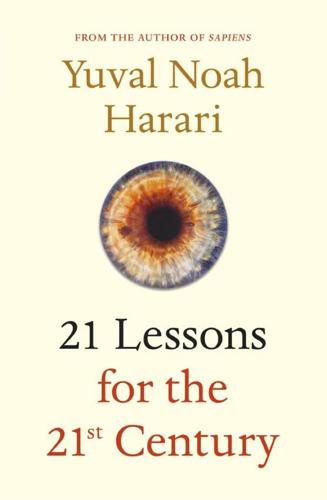
21 Lessons for the 21st Century
by
Yuval Noah Harari
Published 29 Aug 2018
We have zero scientific evidence that Eve was tempted by the Serpent, that the souls of all infidels burn in hell after they die, or that the creator of the universe doesn’t like it when a Brahmin marries an Untouchable – yet billions of people have believed in these stories for thousands of years. Some fake news lasts for ever. I am aware that many people might be upset by my equating religion with fake news, but that’s exactly the point. When a thousand people believe some made-up story for one month – that’s fake news. When a billion people believe it for a thousand years – that’s a religion, and we are admonished not to call it ‘fake news’ in order not to hurt the feelings of the faithful (or incur their wrath). Note, however, that I am not denying the effectiveness or potential benevolence of religion.
…
Therefore, if you dream of a society in which truth reigns supreme and myths are ignored, you have little to expect from Homo sapiens. Better try your luck with chimps. Getting out of the brainwashing machine All this does not mean that fake news is not a serious problem, or that politicians and priests have a free licence to lie through their teeth. It would also be totally wrong to conclude that everything is just fake news, that any attempt to discover the truth is doomed to failure, and that there is no difference whatsoever between serious journalism and propaganda. Underneath all the fake news, there are real facts and real suffering. In Ukraine, for example, Russian soldiers are really fighting, thousands have really died, and hundreds of thousands have really lost their homes.
…
WAR Never underestimate human stupidity 12. HUMILITY You are not the centre of the world 13. GOD Don’t take the name of God in vain 14. SECULARISM Acknowledge your shadow Part IV: Truth 15. IGNORANCE You know less than you think 16. JUSTICE Our sense of justice might be out of date 17. POST-TRUTH Some fake news lasts for ever 18. SCIENCE FICTION The future is not what you see in the movies Part V: Resilience 19. EDUCATION Change is the only constant 20. MEANING Life is not a story 21. MEDITATION Just observe Notes Acknowledgements Index Copyright About the Book FROM THE AUTHOR OF THE MILLION COPY BESTSELLER SAPIENS Sapiens showed us where we came from.
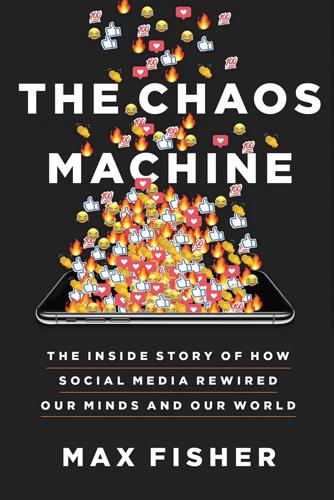
The Chaos Machine: The Inside Story of How Social Media Rewired Our Minds and Our World
by
Max Fisher
Published 5 Sep 2022
But whatever they said in private, in public Facebook and the other companies rejected the concerns their executives and employees were voicing. “Personally I think the idea that fake news on Facebook, which is a very small amount of the content, influenced the election in any way—I think is a pretty crazy idea,” Zuckerberg said two days after the vote. He chided critics for, he said, “a certain profound lack of empathy in asserting that the only reason someone could have voted the way they did is they saw some fake news.” Overnight, the “revolution company,” as Zuckerberg had once described Facebook—the platform that credited itself with aiding the Arab Spring and that had in its own 2010 experiment empirically demonstrated its ability to mobilize 340,000 voters, the leader of an industry that saw itself as the culmination of Silicon Valley’s promise to transform human consciousness—suddenly claimed to be just a website.
…
One of them, Glenn Beck, wrote up the meeting, praising Zuckerberg as a champion of free speech. Facebook fired the contractors overseeing the trending widget on a Friday, letting algorithms take full control. By Monday, its top story was a fake-news link accusing Fox News host Megyn Kelly of backing Hillary Clinton. The far-right blog that had published it was later identified as one of the top drivers of fake news on Facebook during the 2016 election. That summer, in July, just a few days before the Republican National Convention formally nominated Trump for president, Zuckerberg was confronted at a financial conference by Rupert Murdoch and Robert Thomson, the founder and the CEO, respectively, of News Corp, which owns Fox News and many conservative outlets internationally.
…
To the insider who’d leaked them to me, the files were evidence of the company’s sloppiness and shortcuts in trying to stem the growing global turmoil that he believed its products exacerbated, or even caused. To me, they were even more than that. They were a window into how Facebook’s leadership thought about the consequences of social media’s rise. Like many, I had initially assumed social media’s dangers came mostly from misuse by bad actors—propagandists, foreign agents, fake-news peddlers—and that at worst the various platforms were a passive conduit for society’s preexisting problems. But virtually everywhere I traveled in my reporting, covering far-off despots, wars, and upheavals, strange and extreme events kept getting linked back to social media. A sudden riot, a radical new group, widespread belief in some oddball conspiracy—all had a common link.

Don't Burn This Book: Thinking for Yourself in an Age of Unreason
by
Dave Rubin
Published 27 Apr 2020
You’ll also know that straight white men aren’t evil (it’s actually racist and sexist to believe so) and that Western values rooted in individual rights are the cornerstones of free societies. Defend them proudly! Learn how to spot fake news: So much of this hatred comes from our deeply corrupt mainstream media. Activists pretending to be journalists have helped spread fake news more than Donald Trump ever could do on his own, so we’ll look at how to spot the lies. You’ll learn that the blue-check Twitterati at Vox, BuzzFeed, and HuffPo release ideologically driven articles presented as legitimate journalism.
…
. | Rubin, Dave, 1976– Classification: LCC JC585 .R823 2020 (print) | LCC JC585 (ebook) | DDC 320.51/3—dc23 LC record available at https://lccn.loc.gov/2019058060 LC ebook record available at https://lccn.loc.gov/2019058061 pid_prh_5.5.0_c0_r0 For Ben Affleck CONTENTS CHAPTER 1 It’s Time to Come Out CHAPTER 2 Embrace Your Wake-Up Call CHAPTER 3 Think Freely or Die CHAPTER 4 Don’t Worry, You’re Not a Nazi CHAPTER 5 Check Your Facts, Not Your Privilege CHAPTER 6 Never Surrender to the Mob CHAPTER 7 Stop Hating (Straight) White Men, America, and Western Values CHAPTER 8 Learn How to Spot Fake News CHAPTER 9 Find a Mentor CHAPTER 10 Move On with Your Life Acknowledgments Notes Index 1 It’s Time to Come Out THE ORIGINAL TITLE of this book was Why I Left the Left. For many months, the master plan was to give a definitive account of my political evolution.
…
It quickly became clear to me that they were just pushing propaganda by selectively editing stories to drum up click-bait headlines, without ever considering counter-narratives or challenges to their agenda. In essence, they designed the first model of the dangerous outrage machine that produces what we have come to call fake news. In the beginning I’d dismiss this and always try to push the narrative back into the center while discussing whatever political dramas were big at the time, but every debate seemed to end with somebody, somewhere, being called a bigot—just for having a different opinion. Simply put, no matter what the conversation was about, there was always a smear on hand to shame someone into silence.
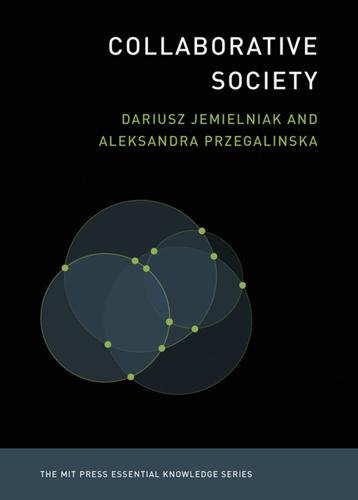
Collaborative Society
by
Dariusz Jemielniak
and
Aleksandra Przegalinska
Published 18 Feb 2020
In fact, Donald Trump’s 2016 US election victory and the UK’s Brexit campaign success that same year are both partly attributable to an avalanche of fake news and skillful trolling. The general information overflow combined with the increase in fake news presence has increased the importance of our proficient use of search engines along with the ability to access the relevant filter bubbles and to prioritize alternate knowledge sources over traditional textbook knowledge.53 Since traditional information sources slowly lose trust while fake news propagation thrives, people succumb to new forms of tribalism: they trust the online communities that they know and to which they belong.
…
In our ninth and final chapter, “Controversies and the Future of Collaborative Society,” we extrapolate from the current trends and observe that collaborative tendencies may not necessarily prevail. We discuss the negative effect of collaborative society’s advances, including filter bubbling and fake news. We remark on the dangers and potential of bots and other nonhuman actors that now enter the collaborative society, but we also discuss being open to their positive capabilities. Finally, we consider the possible impact of intermediating technologies on the future of collaboration. 2 Neither “Sharing” nor “Economy” Open collaboration, sharing economy, platform capitalism, and peer production all describe certain aspects of a revolutionary change resulting from sociotechnological advancement.
…
In addition, another intriguing phenomenon comes into view: in many ways, hacktivism proves to be the same strong weapon of manipulation used by the political systems it targets. As we write this book, controversy regarding the 2016 US presidential election still remains unresolved, despite strong links to intervention by Russian hackers. The influence and spread of fake news in this context exemplifies an activity that is hard to classify but can be placed within the range of cyberactivism and cyberterrorism, or even cyberwar. The impact of social media’s vulnerability and compliance in these attacks has been challenged in the US Senate.51 We return to this issue in the last chapter.

The Authoritarian Moment: How the Left Weaponized America's Institutions Against Dissent
by
Ben Shapiro
Published 26 Jul 2021
Media elites and Democratic Party members couldn’t make that argument explicitly—it was simply too authoritarian. So instead, they designed the concept of “fake news”—false news that Americans had apparently been bamboozled by. Post-election, the term gained ground in rapid fashion, with left-wing sites like PolitiFact explaining, “In 2016, the prevalence of political fact abuse—promulgated by the words of two polarizing presidential candidates and their passionate supporters—gave rise to a spreading of fake news with unprecedented impunity.” Predictably, PolitiFact blamed Facebook and Google.21 After the election, President Barack Obama—a man who certainly was no stranger to dissemination of false information, often with the compliance of a sycophantic press—complained about the “capacity to disseminate misinformation, wild conspiracy theories, to paint the opposition in wildly negative light without any rebuttal—that has accelerated in ways that much more sharply polarize the electorate and make it very difficult to have a common conversation.”22 In November 2017, Senator Dianne Feinstein (D-CA) openly threatened the social media companies, growling, “You created these platforms . . . and now they’re being misused.
…
Mark Zuckerberg, “Bring the World Closer Together,” Facebook.com, June 22, 2017, https://techcrunch.com/2017/06/22/bring-the-world-closer-together/. 20. Justin Fox, “Why Twitter’s Mission Statement Matters,” HBR.org, November 13, 2014, https://hbr.org/2014/11/why-twitters-mission-statement-matters. 21. Angie Drobnic Holan, “2016 Lie of the Year: Fake news,” Politifact.com, December 13, 2016, https://www.politifact.com/article/2016/dec/13/2016-lie-year-fake-news/. 22. David Remnick, “Obama Reckons with a Trump Presidency,” NewYorker.com, November 18, 2016, https://www.newyorker.com/magazine/2016/11/28/obama-reckons-with-a-trump-presidency. 23. Scott Shackford, “Senator Feinstein’s Threat to ‘Do Something’ to Social Media Companies Is a Bigger Danger to Democracy Than Russia,” Reason.com, November 3, 2017, https://reason.com/2017/11/03/sen-feinsteins-threat-to-do-something-to/. 24.
…
Scott Shackford, “Senator Feinstein’s Threat to ‘Do Something’ to Social Media Companies Is a Bigger Danger to Democracy Than Russia,” Reason.com, November 3, 2017, https://reason.com/2017/11/03/sen-feinsteins-threat-to-do-something-to/. 24. Kurt Wagner, “Mark Zuckerberg says it’s ‘crazy’ to think fake news stories got Trump elected,” Vox.com, November 11, 2016, https://www.vox.com/2016/11/11/13596792/facebook-fake-news-mark-zuckerberg-donald-trump. 25. Mark Zuckerberg, “Building Global Community,” Facebook.com, February 16, 2017, https://www.facebook.com/notes/mark-zuckerberg/building-global-community/10103508221158471/?pnref=story. 26. “Transcript of Mark Zuckerberg’s Senate hearing,” WashingtonPost.com, April 10, 2018, https://www.washingtonpost.com/news/the-switch/wp/2018/04/10/transcript-of-mark-zuckerbergs-senate-hearing/. 27.
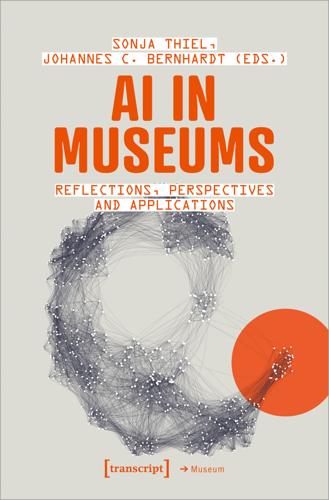
AI in Museums: Reflections, Perspectives and Applications
by
Sonja Thiel
and
Johannes C. Bernhardt
Published 31 Dec 2023
But like any tool, AI is not consequently good or bad, and can also be part of the solution. Artificial intelligence requires training on large datasets, this is why datasets have also been created to enable them to be used for fake news detection projects (Liar, BuzzFace, Facebook Hoax …). These datasets are interesting because they evince some common patterns in fake news, such as many occurrences of first and second person pronouns for textual content. The AI models used to detect fake news use a different approach (Salazar 2020). Some of them examine content propagation and interaction between people. Researchers have found that false news stories on Twitter are 70 per cent more likely to be retweeted than true stories.
…
One becomes increasingly confused, since the results come so close to authentic archives that it becomes impossible to distinguish them. Artistic Processing Once I had created my collection of 100 fake archive texts, I wanted to stage it by combining it with authentic archives in three works offering different points of view on the process of creating fake news and adhering to a form of chronology in their approach. This triptych stages three temporal sequences in the life of archives and fake news: production (Living Organism), selection (Selective Memories), and transmission (The Post-Truth Archive). Living Organism Installed on the high bookshelves of the École Nationale des Chartes, surrounded by old books and archives, printers copy the texts of original broadsides and AI generated ones on long rolls of paper.
…
Some models focus on trying to detect whether one particular content propagates already known fake news, while others focus on the structure of the text or image itself. Researchers, big tech firms, and start-ups are developing such models. To name a few examples, Meta has developed a model called SimSearchNet++ to detect variations of an image with a very high degree of precision.5 It uses OCR to detect texts in images. The start-up Sensity has developed a solution to detect deepfakes or images of faces generated with GANs.6 Research tends to show that—as is often the case with AI—methods employing a mix of human annotators and AI tools are more capable of detecting fake news. But, as always, this comes with risks of misuse: those technologies might also be used by governments aiming to censor information.
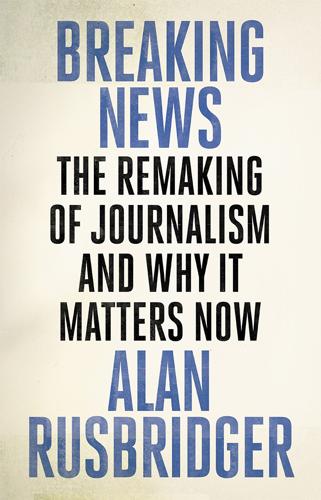
Breaking News: The Remaking of Journalism and Why It Matters Now
by
Alan Rusbridger
Published 14 Oct 2018
If only people trusted journalists more, society would have a system in place for dealing with fake news. If only . . . we were back to issues of trust and the paradox that popularity, economic viability, editorial quality and trust did not inevitably go hand in hand. There was something about the present age that made people suspicious of the claims that journalism made for itself – along with many other institutions of the tower. And some of the new conventions of information were, in their publicness, an improvement on some historic practices. Take two: the correction and the link. For all the concern about fake news and the casualness with which inaccurate and distorted information spread, there was also a widespread instinct to correct things that were wrong, or untrue, or unclear.
…
Joseph ref1 Canary Wharf ref1, ref2, ref3 Canonbury ref1 Carlson, Tucker ref1 Carman, George (QC) ref1, ref2, ref3, ref4n Carney, Mark ref1 Carter, Graydon ref1 Carter-Ruck lawyers ref1 Carvin, Andy ref1 Catch Me If You Can (film) ref1 Caulfield, Mr Justice ref1 Cecil, Lord Robert ref1 censorship ref1, ref2, ref3 CERN ref1 challenge ref1, ref2, ref3, ref4 Champaign News Gazette (newspaper) ref1, ref2 Channel 4 (TV) ref1, ref2 Chaos Monkeys (Martínez) ref1, ref2 Chapman, Jessica ref1 charity ref1 Charles, Prince ref1 Chartbeat ref1 Chehadé, Fadi ref1 Chernin, Peter ref1 Chicago Online ref1 Chicago Sun-Times (news-paper) ref1 Chicago Tribune (newspaper) ref1, ref2 China ref1, ref2, ref3, ref4 Chippendale, Peter ref1 Chomsky, Noam ref1, ref2 Churchill, Prime Minister Sir Winston ref1, ref2, ref3 ‘churnalism’ ref1, ref2 CIA ref1 CiF (Comment is Free) ref1, ref2 CiF Belief ref1, ref2n circulation ref1, ref2, ref3 passim, ref1, ref2, ref3, ref4n bulk sales ref1, ref2, ref3, ref4, ref5, ref6, ref7n, ref8n decline ref1, ref2, ref3, ref4, ref5 gains ref1, ref2, ref3, ref4 international ref1, ref2, ref3, ref4, ref5 citizen journalists (stringers) ref1, ref2 Citizen Kane (film) ref1 City of London ref1 City University of New York (CUNY) ref1 Clapper, James ref1, ref2 Claridge’s hotel ref1, ref2 classified material ref1, ref2, ref3 Clegg, Nick (MP) ref1, ref2, ref3, ref4 Clerkenwell ref1 ‘click-through rate’ (CTR) ref1 clickbait ref1, ref2 climate change ref1, ref2, ref3, ref4, ref5, ref6, ref7, ref8, ref9, ref10n Clinton, President Bill ref1, ref2, ref3, ref4 Clinton, Hillary ref1, ref2, ref3, ref4, ref5 Clooney, George ref1 Cobain, Ian ref1 Cobbet, William ref1 Code of Practice ref1 Coile, Peter ref1 Colao, Vittori ref1 colour ref1, ref2, ref3, ref4, ref5, ref6n Colvin, Marie ref1 Comey, James ref1 Committee of Imperial Defence (UK) ref1 Committee to Protect Journalists (CPJ) ref1, ref2n ‘commodity news’ ref1 Common Purpose ref1 complexity ref1, ref2, ref3, ref4 composing room ref1, ref2 ComScore ref1, ref2n concentration camps ref1 Conn, David ref1 consent ref1 Conservative Party ref1, ref2, ref3, ref4, ref5, ref6, ref7, ref8, ref9, ref10, ref11, ref12, ref13 content management system ref1, ref2 convergence ref1 Coogan, Steve ref1 Cook, Tim ref1 Corn, David ref1 correction ref1, ref2 corruption ref1, ref2, ref3, ref4, ref5, ref6, ref7 Coulson, Andy ref1, ref2, ref3, ref4 Cox, Jo (MP) ref1 Craigslist ref1, ref2 The Creation of the Media (Starr) ref1 cricket ref1 Crossman, Richard ref1 crowdfunding ref1 crowdsourcing ref1, ref2, ref3, ref4, ref5, ref6 Crown Prosecution Service ref1, ref2 Crowther, Geoffrey ref1 Culture Media & Sports committee (UK) ref1 CUNY ref1 CVs ref1, ref2 cybercrime ref1 cyberspace ref1 Dacre, Paul ref1, ref2, ref3n, ref4n Dagens Nyheter (newspaper) ref1, ref2 Daily Dish ref1 Daily (iPad newspaper) ref1 Daily Mail & General Trust ref1 Daily News (newspaper) ref1 Daily Sketch (newspaper) ref1 Dangerous Estate (Williams) ref1 Danks, Melanie ref1, ref2 Danny (IT expert) ref1 data ref1, ref2, ref3, ref4, ref5 Davies, Nick ref1, ref2, ref3, ref4, ref5, ref6 passim, ref1, ref2, ref3, ref4n, ref5n Davis, David (MP) ref1, ref2 Dayton Ohio peace accord ref1 De Correspondent ref1, ref2 de Tocqueville, Alexis ref1 ‘dead-tree journalism’ ref1, ref2 Deadline (film) ref1 deadlines ref1 Dean, Malcolm ref1n ‘death knock’ ref1 Deedes, Lord Bill ref1, ref2 Deedes, Jeremy ref1 Deepwater Horizon ref1 defamation ref1, ref2 Defence Advisory (DA) Notice system ref1, ref2, ref3 deference ref1 Defoe, Daniel ref1, ref2 Delane, John ref1, ref2 Delaunay hotel ref1, ref2 Delingpole, James ref1, ref2 Deller, Jeremy ref1 democracy ref1, ref2, ref3, ref4, ref5, ref6, ref7, ref8, ref9, ref10, ref11, ref12, ref13 Democratic National Committee (DNC) ref1, ref2 Department of Justice (US) ref1 Der Spiegel (magazine) ref1, ref2, ref3 Desmond, Richard ref1, ref2, ref3, ref4, ref5, ref6, ref7, ref8n Despicable Me (film) ref1 Dewey, John ref1, ref2, ref3, ref4n Diamond, Bob ref1 Diana, Princess ref1 Diawara, Fatoumata ref1 Dickens, Charles ref1, ref2 Die Zeit (newspaper) ref1 Digg ref1 ‘Digital News Report’ (RISJ) ref1 Dixon, Hugo ref1 Dixon, Jeremy ref1, ref2n docu-tainment ref1, ref2 donations ref1, ref2 doorstep reporting ref1, ref2, ref3 Dorsey, Jack ref1 dot.com bubble ref1 Dowler, Milly ref1, ref2n Downie, Len ref1n Downing Street ref1, ref2 drinks culture ref1, ref2, ref3, ref4, ref5, ref6, ref7, ref8, ref9, ref10 Drudge ref1 drugs ref1, ref2, ref3, ref4 duty ref1, ref2, ref3, ref4, ref5, ref6 DVDs ref1 Dworkin, Ronald ref1, ref2 eBay ref1, ref2, ref3 Economist (magazine) ref1, ref2, ref3, ref4, ref5, ref6, ref7, ref8 Edelman Trust Barometer ref1n Edison, Thomas ref1 editorials ref1, ref2, ref3 Edmondson, Ian ref1 education ref1, ref2 Eisenstein, Elizabeth L. ref1 El País (newspaper) ref1, ref2, ref3, ref4 election (US 2016) ref1, ref2, ref3, ref4 Electoral Commission ref1 electric cars ref1 Electronic Information Service ref1 The Elements of Journalism (Kovach/Rosenstiel) ref1 Elizabeth II, Queen ref1 Ellingham Hall (Suffolk) ref1 Ellis, Michael (MP) ref1 Ellison, Sarah ref1 Ellsberg, Daniel ref1 Emap ref1 eMarketer ref1 Enders Analysis ref1, ref2, ref3, ref4 endowment ref1, ref2, ref3, ref4, ref5, ref6, ref7n Engelberg, Steve ref1 The Enlightenment ref1, ref2 Enron ref1 environment ref1, ref2, ref3, ref4, ref5 Enzensberger, Hans-Magnus ref1 Ernst & Young ref1 Espionage Act (1917) ref1 EternalBlue ref1n Euromyth ref1 Europe ref1, ref2, ref3, ref4, ref5 European Commission (EC) ref1 European Convention on Human Rights ref1, ref2 European Court of Human Rights (ECHR) ref1 European Court of Justice (ECJ) ref1, ref2, ref3 European (newspaper) ref1, ref2 European Union (EU) ref1, ref2, ref3, ref4, ref5 Euston Project ref1 Evans, Sir Harold ref1, ref2, ref3 Evans, Rob ref1, ref2 Evans, Timothy ref1, ref2n experimentation ref1, ref2, ref3, ref4, ref5 Facebook ref1, ref2, ref3, ref4 passim, ref1, ref2, ref3 passim, ref1, ref2 passim, ref1 passim, ref1 facts ref1, ref2, ref3, ref4, ref5, ref6, ref7, ref8, ref9, ref10, ref11, ref12, ref13, ref14 Fahrenthold, David ref1 Fairfax Media ref1, ref2, ref3 fake news see under falsehood Falconer, Lord ref1 Falkirk Herald (newspaper) ref1, ref2 falsehood ref1, ref2, ref3, ref4, ref5, ref6, ref7, ref8, ref9, ref10, ref11 fake news ref1, ref2, ref3, ref4, ref5, ref6, ref7, ref8, ref9, ref10, ref11, ref12 passim lies ref1, ref2, ref3, ref4, ref5, ref6, ref7, ref8 Farage, Nigel ref1, ref2 Farrar, Jeremy ref1 Farringdon Road ref1, ref2, ref3, ref4, ref5, ref6, ref7, ref8, ref9, ref10 FBI ref1, ref2, ref3, ref4 FedEx conditions of carriage ref1 Fedorcio, Dick ref1 Feinstein, Senator Diane ref1 female genital mutilation ref1, ref2 Ferguson, Niall ref1 Ferrer, Albert ref1 Fidler, Roger ref1 The Fifth Estate (film) ref1, ref2n Filloux, Frederic ref1 filter bubbles ref1, ref2, ref3, ref4, ref5, ref6 First Amendment (US) ref1, ref2, ref3, ref4n Fish4jobs ref1 Fitzsimons, Sheila ref1n, ref2n Flat Earth News (Davies) ref1 Fleet Street ref1, ref2, ref3, ref4, ref5 Flickr ref1, ref2, ref3 Folwell, Steve ref1 food production ref1, ref2 Forbes (magazine) ref1 Ford, John ref1, ref2 foreign correspondents ref1, ref2, ref3, ref4, ref5, ref6 Foreign Corrupt Practices Act (US 1977) ref1 Foreign Intelligence Surveillance Act (FISA) courts ref1 Foreign Office ref1 Forgan, Liz ref1, ref2 fossil fuels ref1 Fourth Estate ref1 Fox TV ref1, ref2, ref3, ref4, ref5, ref6, ref6 Frankel, Max ref1 Frankfurter Allgemeine Zeitung (newspaper) ref1 free newspapers ref1, ref2, ref3, ref4, ref5, ref6, ref7, ref8 free press ref1, ref2, ref3, ref4, ref5, ref6, ref7, ref8, ref9 free speech ref1, ref2, ref3, ref4, ref5, ref6, ref7, ref8, ref9 freebies ref1, ref2, ref3 Freedland, Jonathan ref1, ref2 Freedom Act (2015) ref1 Friedman, Thomas ref1 Friendly, Fred ref1 G4S security guards ref1, ref2n G-20 protests (2009) ref1 Gaddafi, Muammar ref1 GAFAT companies ref1, ref2 Gallagher, Tony ref1 Gaskell, John ref1 Gates, Bill ref1 GCHQ ref1, ref2, ref3, ref4, ref5, ref6, ref7, ref8n Geary, Joanna ref1 Gehry, Frank ref1 Gellman, Barton ref1 Gentleman, Amelia ref1 George III, King ref1 germ (virus) ref1 Germany ref1, ref2 Gibson, Janine ref1, ref2, ref3, ref4, ref5, ref6, ref7 Gillespie, Fulton ref1 Gillmor, Dan ref1, ref2, ref3n Glaxo Smith Kline (GSK) ref1 Gledhill, Ruth ref1 Glocer, Tom ref1 Glover, Stephen ref1, ref2, ref3n, ref4n Goldacre, Ben ref1, ref2n Goldman, William ref1, ref2 Goldman Sachs ref1, ref2 Good, Jennifer ref1 Goodale, James ref1 Goodman, Clive ref1, ref2 Goodman, Elinor ref1 Google ref1, ref2, ref3, ref4, ref5, ref6, ref7, ref8, ref9, ref10, ref11, ref12 passim, ref1, ref2 Goranzon, Anders ref1 Gordon, David ref1, ref2, ref3n Gordon, Michael ref1 Gore, Vice President Al ref1 Gorwa, Robert ref1 Gove, Michael ref1 Gowers, Andrew ref1 Graham, Don ref1, ref2 Graham, James ref1 Graham, Katherine (Kay) ref1, ref2, ref3 Granada TV ref1, ref2 Grant, Hugh ref1 Gray, Charles (QC) ref1, ref2, ref3n Great Barrier Reef ref1 Great Integration ref1 Greenslade, Roy ref1, ref2, ref3n Greenwald, Glenn ref1, ref2, ref3, ref4, ref5, ref6, ref7, ref8 Greer, Ian ref1 Guardian Australia ref1 Guardian Cities ref1 Guardian Media Group (GMG) ref1, ref2, ref3, ref4, ref5, ref6, ref7, ref8, ref9, ref10, ref11n, ref12n Board ref1, ref2, ref3, ref4, ref5, ref6, ref7, ref8n, ref9n Guardian News and Media (GNM) ref1, ref2n Guardian Unlimited ref1, ref2, ref3, ref4, ref5, ref6, ref7, ref8, ref9, ref10n Gulliver, Stuart ref1, ref2 gun control ref1 Gurfein, Judge Murray ref1 GUS retail group ref1 Gutenberg, Johannes ref1, ref2, ref3, ref4 Haaretz (newspaper) ref1 Hack Attack (Davies) ref1, ref2 Hacked Off ref1 Hagel, John ref1 Haig, General Al ref1, ref2 Hamilton, Neil (MP) ref1, ref2, ref3n Hankey, Sir Maurice ref1 Hanks, Tom ref1 Hansard ref1, ref2 hard knocks, school of ref1, ref2 Harding, James ref1 Harford, Tim ref1 Harlow Technical College ref1 Harris, Wendy ref1 Hartwell, Lord ref1 Hastings, Max ref1, ref2, ref3n Hayden, Michael V. ref1 Hayden, Teresa Nielsen ref1 Hayley, Sir William ref1 Hazlitt, William ref1, ref2 Hearst, William Randolph ref1, ref2 Henry, Georgina ref1, ref2 Henry Jackson Society ref1 Herald Sun (newspaper) ref1 Here Comes Everybody (Shirky) ref1 Hetherington, Alistair ref1, ref2 Hewlett, Steve ref1 Heywood, Jeremy ref1, ref2 Higgins, Eliot ref1 High Court ref1, ref2, ref3, ref4 Hillsborough disaster (1989) ref1, ref2, ref3n Hinton, Les ref1, ref2, ref3, ref4 Hirsch, Fred ref1, ref2, ref3n Hislop, Ian ref1 HMRC ref1 Hoare, Sean ref1, ref2 Hodgson, Godfrey ref1 Hoffman, Dustin ref1, ref2 Hoffman, Reid ref1, ref2 Holder, Eric ref1 Hollywood ref1 Home Affairs committee (UK) ref1 Home Office ref1 The Home Organist (magazine) ref1 Hong Kong ref1 Hooper, David ref1 Hopkins, Nick ref1 Horowitz, Ami ref1 Horrie, Chris ref1 Hotel Bristol (Villars) ref1, ref2 HotWired ref1 House of Commons ref1, ref2, ref3, ref4 House of Lords ref1, ref2 Houston, Robin ref1 How to Spend It (magazine) ref1 HSBC ref1, ref2, ref3 Huffington, Arianna ref1, ref2n Huffington, Michael ref1 Huffington Post ref1, ref2, ref3, ref4, ref5n Human Genome Project ref1 Human Rights Act (1998) ref1, ref2, ref3, ref4n Humanity United ref1 Hunt, Henry ref1 Hutton report (2004) ref1 ‘idea agora’ ref1 i-escape ref1 Iliffe of Yattendon, Lord ref1 Imanuelsen, Peter ref1 immigration ref1, ref2, ref3, ref4, ref5, ref6n Independent Press Standards Organisation (IPSO) ref1, ref2, ref3, ref4 Independent on Sunday (newspaper) ref1 Indonesia ref1 InFacts ref1 ‘influence model’ ref1 Infomediary ref1 information chaos ref1, ref2, ref3, ref4, ref5, ref6 Information Commissioner’s Office (ICO) ref1 ‘information superhighway’ ref1, ref2, ref3 Ingrams, Richard ref1 injunctions ref1, ref2, ref3, ref4, ref5 Ink (Graham) ref1 Inkster, Nigel ref1 ‘innovation blindness’ ref1 Instagram ref1 integrated model ref1 integrity ref1 Intelligence Community programmes (US) ref1 ‘intelligence porn’ ref1 Intelligence and Security committee (UK) ref1, ref2 Intercept ref1 The Internet for Dummies (series) ref1 Internet Explorer ref1 intrusion ref1 investigative journalism ref1, ref2, ref3, ref4, ref5, ref6, ref7, ref8, ref9, ref10n Investigatory Powers Act (2016) (UK) ref1 Investigatory Powers Tribunal (IPT) (UK) ref1, ref2 ‘invisible mending’ ref1 iPad ref1, ref2, ref3, ref4 iPhone ref1, ref2 iPlayer ref1 IRA ref1, ref2 Iran ref1, ref2 Iraq wars ref1, ref2, ref3, ref4, ref5, ref6, ref7, ref8 Ireland ref1 Irish Independent (newspaper) ref1, ref2 Irish Times (newspaper) ref1 Irons, Jeremy ref1 Isaacson, Walter ref1 iTunes ref1 ITV ref1, ref2 James, Clive ref1 James, Erwin ref1 Jarvis, Jeff ref1, ref2, ref3 Jay, Peter ref1 Jenkins, Simon ref1, ref2 Jersey ref1 Jobs, Steve ref1 Johnson, Boris (MP) ref1, ref2 Johnson, Graham ref1 Johnston Press Ltd ref1n Jonathan of Arabia (TV) ref1 Jones, George ref1 Joseph Rowntree Foundation ref1 journalism accountability ref1, ref2 dead-tree ref1, ref2 investigative ref1, ref2, ref3, ref4, ref5, ref6, ref7, ref8, ref9, ref10n seven deadly sins ref1n traditional ref1, ref2, ref3, ref4, ref5 training ref1, ref2, ref3, ref4 Jowell, Tessa ref1 Judicial Redress Act (2016) ref1 Junius ref1 ‘junk news’ ref1 Jupiter Research ref1 Kaplan Educational publishing ref1 Katine (Uganda) ref1 Katz, Ian ref1, ref2, ref3, ref4, ref5, ref6n Kaufer, Stephen ref1 Keller, Bill ref1, ref2, ref3 Kelner, Simon ref1, ref2, ref3, ref4, ref5n Kenya ref1, ref2 ‘keyword pages’ ref1 Khatchadourian, Raffi ref1 King, Dave ref1, ref2 King’s College, London ref1 Kings Place offices ref1, ref2, ref3, ref4, ref5 Kinsley, Michael ref1 Kirwan, Peter ref1 Knight Ridder ref1, ref2 Knopfler, Mark ref1 Kovach, Bill ref1 Krauze, Andre ref1 Kushner, Jared ref1 La Repubblica (newspaper) ref1 Laborde, Jean-Paul ref1 Labour Party ref1, ref2, ref3, ref4, ref5, ref6, ref7 Lamb, Larry ref1 Lambert, Richard ref1 Lanchester, John ref1, ref2 Large Hadron Collider ref1 Larson, Jeff ref1 Law Commission (UK) ref1 Lawrence, Felicity ref1 Lawson, Dominic ref1 lawyers ref1n Le Monde (newspaper) ref1, ref2 Leave campaign group ref1 Lebedev, Alexander ref1, ref2n Lebedev, Evgeny ref1n legacy media ref1 legality ref1 Lehman Brothers ref1, ref2 Leigh, David ref1, ref2 Leipzig, mayor of ref1 Lelyveld, Joseph ref1 Leonard, Joe ref1 letters ref1, ref2, ref3, ref4, ref5 newsletters ref1, ref2, ref3 readers’ ref1, ref2, ref3, ref4, ref5, ref6, ref7, ref8, ref9 Leveson, Lord Justice Brian ref1, ref2, ref3n Leveson Inquiry ref1, ref2, ref3, ref4, ref5, ref6, ref7, ref8n Levin, Bernard ref1, ref2n Lewinsky, Monica ref1 Lewis, Paul ref1, ref2, ref3 Lewis, Will ref1 libel actions ref1, ref2, ref3, ref4, ref5, ref6, ref7n, ref8n, ref9n libel laws ref1, ref2 Liberal Democrat party ref1, ref2 Liberty ref1 Liberty and Security in a Changing World (2013 report) ref1 lies see under falsehood lighthouse model ref1, ref2 LinkedIn ref1, ref2, ref3 links ref1, ref2, ref3, ref4, ref5, ref6, ref7, ref8, ref9, ref10n Linotype machine ref1, ref2, ref3 Linux ref1 Lippmann, Walter ref1 Littlewoods ref1 Lloyd, John ref1 Lloyds Bank ref1 Local Government Act (1972) ref1 Local World Ltd ref1, ref2, ref3n London Daily News (newspaper) ref1 London Evening Standard (newspaper) ref1 London Review of Books ref1, ref2 London School of Economics ref1n Lonely Planet ref1 ‘long tail’, theory of ref1 Los Angeles Times (newspaper) ref1, ref2, ref3, ref4 Lowry, L.S. ref1, ref2n loyalty scheme ref1 Ludgate Circus ref1 Ludlow machine ref1, ref2 Luxx (magazine) ref1 Luyendijk, Joris ref1 MacAskill, Ewen ref1, ref2, ref3 McCabe, Douglas ref1 McCabe, Eamonn ref1 McCain, John ref1 McCall, Carolyn ref1, ref2, ref3 Macedonia ref1 MacKenzie, Kelvin ref1 McKibben, Bill ref1, ref2 McKillen, Paddy ref1 McKinsey & Co ref1, ref2, ref3, ref4 MacLennan, Murdoch ref1, ref2, ref3, ref4, ref5, ref6n Macron, President Emmanuel ref1 MacroWikinomics (Tapscott) ref1 MacTaggart lecture (2009) ref1 Mail Online ref1, ref2, ref3 Mainstream Media (MSM) ref1, ref2, ref3 Major, Prime Minister John ref1 The Making of the English Working Class (Thompson) ref1 Malmo ref1 Manchester Evening News (MEN) (newspaper) ref1, ref2, ref3, ref4n Manchester Guardian (newspaper) ref1, ref2, ref3, ref4 Mandelson, Peter (MP) ref1 Manning, Chelsea ref1, ref2, ref3 Marks, Vic ref1 Marland, Caroline ref1 ‘marmalade dropper’ ref1, ref2n Martínez, Antonio García ref1, ref2 Mashable ref1, ref2 ‘The Masque of Anarchy’ (poem) ref1 Massachusetts Institute of Technology ref1 Match.com ref1 Mauro, Ezio ref1 Maxwell, Robert ref1, ref2, ref3, ref4, ref5, ref6n May Corporation Ltd ref1 May, Prime Minister Theresa ref1, ref2, ref3 Mayes, Ian ref1, ref2 Mead/Lexis ref1 Medejski, John ref1 Media Guardian ref1 media law ref1 media section ref1 Media Show (radio) ref1 Media Standards Trust (MST) ref1 Meeker, Mary ref1 Melbourne, Florida ref1, ref2 Merkel, Chancellor Angela ref1 Metcalfe, Jane ref1 metrics ref1, ref2, ref3, ref4, ref5, ref6, ref7, ref8 Metro (newspaper) ref1, ref2, ref3n Meyer, Philip ref1, ref2 MI5 ref1, ref2, ref3, ref4, ref5, ref6n MI6 ref1, ref2, ref3, ref4, ref5, ref6, ref7, ref8n Miami Herald (newspaper) ref1 Michelin tyres ref1 Microsoft ref1, ref2, ref3, ref4 Middle East ref1, ref2, ref3, ref4, ref5, ref6, ref7 ‘middle market’ ref1 Middleton, Julia ref1 migrant workers ref1, ref2, ref3, ref4 Miliband, Ed (MP) ref1 Miliband, Ralph ref1, ref2 Mill, John Stuart ref1 Miller, Andrew ref1n, ref2n Miller, Sienna ref1 Milton, John ref1, ref2, ref3 Miranda, David ref1, ref2 Mirror Group Newspapers ref1, ref2, ref3, ref4, ref5 mobile devices ref1, ref2, ref3, ref4, ref5, ref6, ref7 moderation ref1, ref2, ref3, ref4, ref5 Monaco ref1 Monbiot, George ref1 monitoring ref1 Monsanto ref1 Moore, Charles ref1, ref2, ref3 Moore, Michael ref1 Moran, Chris ref1 Morgan, Daniel ref1 Morgan, Piers ref1 Morgan Stanley ref1 morning conference ref1, ref2, ref3, ref4, ref5, ref6n Morozov, Evgeny ref1 Moses, Sir Alan ref1 Mossberg, Walt ref1 Mother Jones (magazine) ref1 Movable Type ref1 Mowatt, Roger ref1 Mowlam, Mo (MP) ref1, ref2n MPs ref1, ref2, ref3, ref4, ref5, ref6, ref7, ref8, ref9 MSN ref1 Mubenga, Jimmy ref1, ref2 Mugabe, President Robert ref1 Mulcaire, Glenn ref1, ref2, ref3 Mumsnet ref1 Murdoch, James ref1, ref2, ref3, ref4, ref5 Murdoch, Rupert ref1, ref2, ref3, ref4, ref5, ref6, ref7, ref8, ref9, ref10, ref11 passim, ref1, ref2, ref3, ref4, ref5, ref6n Murdoch, Wendi ref1 Murdoch empire ref1, ref2, ref3, ref4, ref5, ref6, ref7, ref8, ref9, ref10, ref11, ref12, ref13, ref14, ref15, ref16n Murray, Douglas ref1 Murray, Scott ref1, ref2 Murrow, Edward R. ref1 Muslims ref1, ref2, ref3, ref4 Mutter, Alan ref1 mutualisation ref1, ref2, ref3 Myners, Paul ref1, ref2 MySpace ref1, ref2, ref3, ref4 National Security Agency (NSA) ref1, ref2, ref3, ref4, ref5, ref6, ref7, ref8, ref9, ref10 National Theatre ref1 National Union of Journalists ref1, ref2 Naughton, John ref1 NCND policy (never confirm nor deny) ref1 Negroponte, Nicholas ref1 Netherlands, Queen of the ref1 netiquette ref1 Netscape ref1, ref2 Neuberger, Lord ref1 Nevin, Charles ref1 New Republic (magazine) ref1 New Statesman (magazine) ref1, ref2, ref3, ref4, ref5 New York Observer (newspaper) ref1 New York offices ref1, ref2, ref3 New York Post (newspaper) ref1 New York Times v.
…
On this most people could agree: we were now up to our necks in a seething, ever churning ocean of information; some of it true, much of it wrong. There was too much false news, not enough reliable news. There might soon be entire communities without news. Or without news they could trust. There was a swamp of stuff we were learning to call ‘fake news’. The recently elected 45th President of the United States, Donald Trump, used the term so indiscriminately it rapidly lost any meaning. The best that traditional journalism could offer was – or so he repeatedly told us – fake. We should believe him, not lying journalists. Truth was fake; fake was true.

Twitter and Tear Gas: The Power and Fragility of Networked Protest
by
Zeynep Tufekci
Published 14 May 2017
Sue Shellenbarger, “Most Students Don’t Know When News Is Fake, Stanford Study Finds,” Wall Street Journal, November 22, 2016, http://www.wsj.com/articles/most-students-dont-know-when-news-is-fake-stanford-study-finds-1479752576; Craig Silverman and Jeremy Singer-Vine, “Most Americans Who See Fake News Believe It, New Survey Says,” BuzzFeed, December 6, 2016, https://www.buzzfeed.com/craigsilverman/fake-news-survey. 13. Sheera Frenkel, “How Facebook Spreads Fake News and Anti-Muslim Views in Myanmar,” BuzzFeed, November 20, 2016, https://www.buzzfeed.com/sheerafrenkel/fake-news-spreads-trump-around-the-world. 14. Alexander Smith and Vladimir Banic, “How Macedonian Teens Earn—and Spend—Thousands from Fake News,” NBC News, December 9, 2016, http://www.nbcnews.com/news/world/fake-news-how-partying-macedonian-teen-earns-thousands-publishing-lies-n692451. 15.
…
I checked back with activists in the Middle East who confirmed that such fake news—often aimed at discrediting dissidents—had gone viral in their own countries, too. One Tunisian activists told me that he thought it was a major reason a secular party had lost one election. Another blogger wrote about the spread of fake news in Egypt, and lamented: “The social media is always highlighted for its role in the Arab spring, especially in the Egyptian revolution. Well, I think it is time to let the world know that the social media is also destroying the Arab Spring.”15 Fake news and other forms of misinformation could proliferate for some of the same reasons that these same activists could earlier easily share their own content documenting corruption and exposing wrong-doing.
…
The affordances of digital connectivity; globalization of information flows; business models, policies, and algorithms of the few dominant platforms; ease of setting up sites; and enterprising young people had combined in yet another perfect storm. The moral of this story isn’t that “fake news” definitely swung the US election in 2016, or somehow the past was an ideal place of only facts and reasoned dialogue in the public sphere. In fact, various forms of misinformation and propaganda have always been part of the public sphere, and the success of “fake news” rested on many antecedent dynamics. Mass media had already been losing credibility both due to its own missteps and failures, but also due to a sustained attack against its normative function as gatekeeper for facts.

Exponential: How Accelerating Technology Is Leaving Us Behind and What to Do About It
by
Azeem Azhar
Published 6 Sep 2021
In short, an unhealthy combination of exponential forces – new information networks, viral network effects and AI – combine to help lies spread. And that means fake news is everywhere. In 2019, a survey of citizens in 25 countries found that more than 4 in 5 thought they had been exposed to fake news. Nearly 9 out of 10 of those had initially thought a fake news story was real (your author is in that majority).32 Nearly half of Turks and more than 30 per cent of Koreans, Brazilians and Mexicans say they are exposed to fake news on a weekly basis.33 During the 2020 US election, social networks became breeding grounds for malevolent actors fomenting conspiracies about vaccines or the origins of Covid-19 – bolstered by the increasingly erratic tweets of the then president Donald Trump.
…
Jackson School of International Studies, 28 June 2016 <https://jsis.washington.edu/news/north-korea-cyber-attacks-new-asymmetrical-military-strategy/> [accessed 26 April 2021]. 19 Edward White and Kang Buseong, ‘Kim Jong Un’s Cyber Army Raises Cash for North Korea’, Financial Times, 17 June 2019 <https://www.ft.com/content/cbb28ab8-8ce9-11e9-a24d-b42f641eca37> [accessed 24 March 2021]. 20 ‘North Korea GDP’, Trading Economics <https://tradingeconomics.com/north-korea/gdp> [accessed 26 April 2021]. 21 ‘North Korea GDP’. 22 Seth Jones, Containing Tehran: Understanding Iran’s Power and Exploiting Its Vulnerabilities (Center for Strategic and International Studies, January 2020) <https://www.csis.org/analysis/containing-tehran-understanding-irans-power-and-exploiting-its-vulnerabilities> [accessed 21 June 2020]. 23 ‘Six Russian GRU Officers Charged in Connection with Worldwide Deployment of Destructive Malware and Other Disruptive Actions in Cyberspace’, US Department of Justice, 19 October 2020 <https://www.justice.gov/opa/pr/six-russian-gru-officers-charged-connection-worldwide-deployment-destructive-malware-and> [accessed 26 April 2021]. 24 ‘MH17 Ukraine Plane Crash: What We Know’, BBC News, 26 February 2020 <https://www.bbc.com/news/world-europe-28357880> [accessed 24 March 2021]. 25 Andrew Marino, ‘Sandworm Details the Group behind the Worst Cyberattacks in History’, The Verge, 28 July 2020 <https://www.theverge.com/21344961/andy-greenberg-interview-book-sandworm-cyber-war-wired-vergecast> [accessed 14 September 2020]. 26 Rae Ritchie, ‘Maersk: Springing Back from a Catastrophic Cyber-Attack’, I-CIO, August 2019 <https://www.i-cio.com/management/insight/item/maersk-springing-back-from-a-catastrophic-cyber-attack> [accessed 26 April 2021]. 27 ‘The Sinkhole That Saved the Internet’, TechCrunch, 8 July 2019 <https://social.techcrunch.com/2019/07/08/the-wannacry-sinkhole/> [accessed 12 January 2021]. 28 ‘National Cyber Force Transforms Country’s Cyber Capabilities to Protect the UK’, GCHQ, 19 November 2020 <https://www.gchq.gov.uk/news/national-cyber-force> [accessed 2 January 2021]. 29 Dustin Volz and Robert McMillan, ‘Hack Suggests New Scope, Sophistication for Cyberattacks’, Wall Street Journal, 18 December 2020 <https://www.wsj.com/articles/hack-suggests-new-scope-sophistication-for-cyberattacks-11608251360> [accessed 24 March 2021]. 30 Simon Oxenham, ‘“I Was a Macedonian Fake News Writer”’, BBC Future, 28 May 2019 <https://www.bbc.com/future/article/20190528-i-was-a-macedonian-fake-news-writer> [accessed 30 September 2020]. 31 Soroush Vosoughi, Deb Roy and Sinan Aral, ‘The Spread of True and False News Online’, Science, 359(6380), 2018, pp. 1146–51 <https://doi.org/10.1126/science.aap9559>. 32 Sean Simpson, ‘Fake News: A Global Epidemic Vast Majority (86 per cent) of Online Global Citizens Have Been Exposed to It’, Ipsos, 11 June 2019 <https://www.ipsos.com/en-us/news-polls/cigi-fake-news-global-epidemic> [accessed 24 March 2021]. 33 Digital News Report 2018, Reuters, p. 144. 34 Samantha Bradshaw and Philip N.
…
Says Russian-Backed Outlets Spread COVID-19 Vaccine “Disinformation”’, Reuters, 8 March 2021 <https://www.reuters.com/article/us-usa-russia-covid-disinformation-idUSKBN2B0016> [accessed 23 April 2021]. 43 Peter Walker, ‘New National Security Unit Set Up to Tackle Fake News in UK’, The Guardian, 23 January 2018 <https://www.theguardian.com/politics/2018/jan/23/new-national-security-unit-will-tackle-spread-of-fake-news-in-uk>. 44 Brian Raymond, ‘Forget Counterterrorism, the United States Needs a Counter-Disinformation Strategy’, Foreign Policy, 15 October 2020 <https://foreignpolicy.com/2020/10/15/forget-counterterrorism-the-united-states-needs-a-counter-disinformation-strategy/> [accessed 24 March 2021]. 45 Micah Zenko, ‘Obama’s Final Drone Strike Data’, Council on Foreign Relations, 2017 <https://www.cfr.org/blog/obamas-final-drone-strike-data> [accessed 12 January 2021]. 46 ‘Give and Take – Drone Technology Has Made Huge Strides’, The Economist, 8 June 2017 <https://www.economist.com/technology-quarterly/2017/06/08/drone-technology-has-made-huge-strides> [accessed 14 October 2020]. 47 ‘MQ-1B Predator’, U.S.

The Intelligence Trap: Revolutionise Your Thinking and Make Wiser Decisions
by
David Robson
Published 7 Mar 2019
Retrieved 19 October 2017, http://www.snopes.com/medical/disease/bananas.asp. 2 Forster, K. (7 January 2017), ‘Revealed: How Dangerous Fake News Conquered Facebook’, Independent: https://www.independent.co.uk/life-style/health-and-families/health-news/fake-news-health-facebook-cruel-damaging-social-media-mike-adams-natural-health-ranger-conspiracy-a7498201.html. 3 Binding, L. (24 July 2018), ‘India Asks Whatsapp to Curb Fake News Following Spate of Lynchings’, Sky News online: https://news.sky.com/story/india-asks-whatsapp-to-curb-fake-news-following-spate-of-lynchings-11425849. 4 Dewey, J. (1910), How We Think, p 101. Mineola, NY: Dover Publications. 5 Galliford, N. and Furnham, A. (2017), ‘Individual Difference Factors and Beliefs in Medical and Political Conspiracy Theories’, Scandinavian Journal of Psychology, 58(5), 422?
…
Sure enough, the participants with lower CRT scores reported seeing greater meaning in these pseudo-profound statements, compared to people with a more analytical mindset.26 Pennycook has since explored whether this ‘bullshit receptivity’ also leaves us vulnerable to fake news – unfounded claims, often disguised as real news stories, that percolate through social media. Following the discussions of fake news during the 2016 presidential election, he exposed hundreds of participants to a range of headlines – some of which had been independently verified and fact-checked as being true, others as false. The stories were balanced equally between those that were favourable for Democrats and those that were favourable to Republicans.
…
32. 26 Pennycook, G., Cheyne, J.A., Barr, N., Koehler, D.J. and Fugelsang, J.A. (2015), ‘On the Reception and Detection of Pseudo-Profound Bullshit’, Judgment and Decision Making, 10(6), 549?63. 27 Pennycook, G. and Rand, D.G. (2018), ‘Lazy, Not Biased: Susceptibility to Partisan Fake News Is Better Explained by Lack of Reasoning than By Motivated Reasoning’, Cognition, https://doi.org/10.1016/j.cognition.2018.06.011. See also Pennycook, G. and Rand, D.G. (2017), ‘Who Falls for Fake News? The Roles of Bullshit Receptivity, Overclaiming, Familiarity, and Analytic Thinking’, unpublished paper, https://dx.doi.org/10.2139/ssrn.3023545. 28 Swami, V., Voracek, M., Stieger, S., Tran, U.S. and Furnham, A. (2014), ‘Analytic Thinking Reduces Belief in Conspiracy Theories’, Cognition, 133(3), 572?
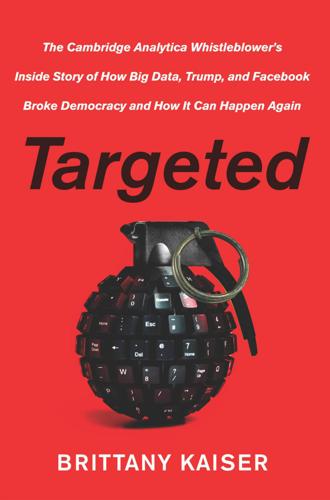
Targeted: The Cambridge Analytica Whistleblower's Inside Story of How Big Data, Trump, and Facebook Broke Democracy and How It Can Happen Again
by
Brittany Kaiser
Published 21 Oct 2019
In the Cambridge office, it wasn’t unusual to hear the term fake news invoked, in part, I think, because we Cambridge employees felt that the Russians’ efforts either had been made up by those who couldn’t accept Hillary’s crushing defeat or, perhaps, had been negligible when compared with our own. Cambridge Analytica, and not some outside government, had secured Trump’s presidency, we believed, and the focus on Russia was considered disruptive to the new administration in whose success the company was deeply invested. Of course, Russian influence on the election was of great concern in intelligence circles, and quickly this “fake news” grew harder to ignore.
…
Six days later, a curious all-company email from Julian crossed my desk. This was entirely separate from the ICO. It was about a completely new inquiry, on “fake news,” that the House of Commons Digital, Culture, Media, and Sport Committee (DCMS) had been carrying out for a year. Alexander had been “invited” to speak before the committee on February 27, to “help” its members understand data-driven marketing. He didn’t anticipate any adverse publicity from the appearance, but he wanted the staff to be aware. Our company didn’t have any experience with fake news, he said, so we were “delighted to help,” Julian wrote. Alexander was among many experts who had been invited, including major news organizations such as CNN and CBS and executives from Facebook, Twitter, Google, and YouTube.
…
As the day progressed in England, my phone began to blow up. Friends texted me that my name had been mentioned in Parliament—more than once. Robert Murtfeld texted me every quote, word for word. The committee’s inquiry into fake news wasn’t an academic exercise designed to swing the Brexit vote using propaganda to force a new revote, or “people’s vote,” as so many Brexiteers claimed. Alexander hadn’t been invited to share his insights about the dissemination of fake news. He had been summoned there to account for Cambridge Analytica’s complicity in it. The DCMS comprised eleven members, nine of whom were present that day. Its chair was Damian Collins, a no-nonsense, conservative Remainer with a background in advertising.

Dangerous Ideas: A Brief History of Censorship in the West, From the Ancients to Fake News
by
Eric Berkowitz
Published 3 May 2021
In the wake of the disinformation–saturated 2016 Brexit referendum and US election, European governments moved to force online Internet companies to purge disinformation from their platforms. A 2018 German law requires networks with more than two million members to take down fake news within twenty-four hours of notification or face fines of up to €50 million, and a 2018 French law allows authorities to order the deletion of false online information that could affect elections. In Germany, the Network Enforcement Act, or the NetzDG, targets a laundry list of “obviously illegal” materials. French legislators were more precise in defining fake news as “inexact allegations or imputations, or news that falsely report[s] facts, with the aim of changing the sincerity of a vote.”86 In 2018, the EU also arm-wrestled the major platforms into signing a “voluntary” agreement to abide by broad guidelines to address fake news, particularly as it relates to elections.
…
In one instance, the entire channel of the Violation Documentation Center, a human rights monitoring group, was removed, with its 32,000 videos.87 YouTube worked to restore the mistakenly deleted videos, but there is no such good faith in the censorship schemes of authoritarian governments. Under the pretense of combating fake news, online dissent has been widely suppressed. In 2017 alone, seventeen countries, including Belarus, Egypt, and Malaysia, passed or proposed laws outlawing fake news. While Russia’s law is perhaps the most obvious in its hypocrisy—criminalizing false reports along with “blatant disrespect” for authorities—other regimes have the same aims. Egypt jailed nineteen dissident journalists in 2018 on charges of false news, while two women who uploaded videos on Facebook describing incidents of sexual harassment against them and decrying government inaction, were arrested for spreading false rumors.88 One of them received eight years in prison.
…
Shannon Van Sant, “Russia Criminalizes the Spread of Online News Which ‘Disrespects’ the Government,” NPR, March 18, 2019, https://www.npr.org/2019/03/18/704600310/russia-criminalizes-the-spread-of-online-news-which-disrespects-the-government; Daniel Funke, “Egypt Is Jailing More Journalists on ‘False News’ Charges Than Anywhere Else in the World,” Poynter, December 13, 2018, https://www.poynter.org/fact-checking/2018/egypt-is-jailing-more-journalists-on-false-news-charges-than-anywhere-else-in-the-world. 89. Shahbaz, “Freedom on the Net 2018.” 90. “Singapore Fake News Law a ‘Disaster’ for Freedom of Speech, Says Rights Group,” Guardian, May 9, 2019, https://www.theguardian.com/world/2019/may/09/singapore-fake-news-law-a-disaster-for-freedom-of-speech-says-rights-group. 91. Paul Mozur, “Coronavirus Outrage Spurs China’s Internet Police to Action,” New York Times, March 16, 2020, https://www.nytimes.com/2020/03/16/business/china-coronavirus-internet-police.html?

Zucked: Waking Up to the Facebook Catastrophe
by
Roger McNamee
Published 1 Jan 2019
As a result, when confronted with evidence that disinformation and fake news spread over Facebook influenced the Brexit referendum in the United Kingdom and a presidential election in the United States, Facebook took steps that spoke volumes about the company’s world view. They demoted publishers in favor of family, friends, and Groups on the theory that information from those sources would be more trustworthy. The problem is that family, friends, and Groups are the foundational elements of filter and preference bubbles. Whether by design or by accident, they share the very disinformation and fake news that Facebook would like to suppress
…
Department of, 32, 34 Delaney, John, 167 Dell, 35, 152 democracy, 2, 3, 10–12, 17, 37, 84, 85, 93, 103, 112, 117, 122, 126–27, 129, 133, 136, 159, 162, 200, 203, 204, 217, 220, 233–35, 238, 239, 242, 253–57, 263–65, 258, 268–69, 277–83 Facebook’s threat to, 242–45, 258, 280, 281 four pillars of, 243–45 see also elections Democratic Congressional Campaign Committee (DCCC), 11, 111, 114, 116 Democratic National Committee (DNC), 11, 111, 114, 116, 124, 125 Democratic Party, Democrats, 121, 130–33, 167, 197, 210, 212, 227 Pizzagate and, 124–26, 130 Depression, Great, 43 developing countries, 179–80, 233 Diamond, Larry, 243 Diana, Elisabeth, 231–32 Digital Equipment, 46, 152 DiResta, Renée, 92–93, 121–23, 127, 128, 146, 242 disinformation and fake news, 94–96, 117, 123, 173, 229, 233, 234, 237, 253, 257–58, 260, 274 on Facebook, 89, 94–96, 119, 159, 165, 166, 208–9, 228, 243, 245, 258, 270, 281 Free Basics and, 180 Pizzagate, 124–26, 130 Russia and, 121–24, 174; see also Russia on Twitter, 177 on YouTube, 177–78 see also conspiracy theories Disney Company, 143–44, 193 Doerr, John, 26–27, 61 dopamine, 86, 88, 107, 147, 258, 271, 273 Dorsey, Jack, 229 dot-com bubble, 27, 38–40, 48, 49 Doubleclick, 65, 138–39 Doyle, Mike, 210 Dropbox, 41 Drummond, Jamie, 159 DuckDuckGo, 271 Dwoskin, Elizabeth, 168 eBay, 36, 38 economy, economics, 43–48, 82, 155, 162–63, 201, 220, 225, 235, 238, 254, 262–63, 281 Edelman, Gilad, 155 Edelman, Joe, 108 Edge, 28–29 education, 257 Egypt, 243 8chan, 102, 123 Einstein, Albert, ix, 53 elections, 82, 122, 129, 141, 156, 159, 208, 215, 216, 227, 238, 243, 244, 251–55, 258–59, 269, 274, 280, 282 microtargeting and, 237–38 2016 presidential, see presidential election of 2016 of 2018 and 2020, 12, 111, 119, 127, 153, 220, 235, 278, 279, 281 Electronic Arts, 14, 26 Elevation Partners, 13–14, 17–18, 30, 61, 72, 147 EMC, 152 emerging economies, 179–80, 233 emotions, 69, 81, 126 contagion of, 88–89, 92, 103, 233, 234 Facebook and, 9, 11, 68, 69, 75, 233, 270 Facebook study on, 88–89 “lizard brain,” 9, 88 energy, renewable, 248 Engelbart, Douglas, 33, 34 entrepreneurs, 224, 238, 261, 265 see also startups Equifax, 226 Estrin, Judy, 220, 233 European Union (EU), 162 Brexit and, 8–9, 96, 180, 196, 198, 244 Global Data Protection Regulation in, 221, 222, 224, 259–60 Google and, 138, 260, 281–82 Excite, 42 extreme views, 91–93, 102, 119, 173, 214, 232, 253, 260, 279 Facebook, 47–51, 53–79, 110, 139–40, 156, 163, 202–12, 213–20, 223, 224, 232–35, 238–40, 241–48, 251, 255, 256, 258, 262–64, 274, 275, 278, 279, 282, 283, 287 addiction to, 63, 281 advertising and, 11–12, 47, 59–61, 63, 68–77, 85, 103, 119, 128–29, 130, 132, 143, 148, 173, 184, 185, 202, 207–9, 211, 217–19, 237–28, 258, 265, 270, 281, 283–84 algorithms of, 4, 9, 11, 66, 74, 76, 81, 87, 91, 128–29, 143, 166, 232, 235, 243, 270, 274, 277, 281 Android and, 204 artificial intelligence of, 10, 11, 69, 85, 87, 91, 95, 108, 203, 219–20, 230, 261 banks and, 231–32 Beacon, 60, 62, 64, 142 behavior modification and, 63, 278 Black Lives Matter and, 8, 243 Bosworth memo and, 204–6 Cambridge Analytica and, 78, 180–98, 199, 202–4, 207, 208, 210, 213, 216–18, 251, 259 Center for Humane Technology and, 166–67 changing personal usage of, 270 Clear History, 218–19 community standards and, 103, 179, 228, 244–45 Congress and, 122, 127–33 Connect, 62, 63, 68, 72, 158, 218, 249, 270 Connectivity, 232 content moderation by, 229–30, 232, 237 content suppliers harmed by, 283 criticisms of, and responses, 3, 65, 95–96, 141, 143, 146, 147–49, 151–53, 158–61, 169, 174–75, 178–80, 192–93, 207, 216, 217, 230, 247–48, 280, 281 Custom Audiences, 76–77 data brokers banned by, 208 dating service, 207, 218 deactivating account, 99 decision making and organization of, 144–45, 154, 155, 160 democracy threatened by, 242–45, 258, 278, 280, 281 disinformation on, 89, 94–96, 119, 159, 165, 166, 208–9, 228, 243, 245, 258, 270, 281 early days of, 16–17 earnings in 2018, 216–17, 228 Elevation and, 17–18, 72 emotional contagion study of, 88–89 emotions and, 9, 11, 68, 69, 75, 233, 270 F8 conference, 217–18 fake accounts deleted by, 229, 230, 265 FarmVille, 184, 195, 196 filter bubbles and, 78, 87, 90, 96, 116–19, 124–27, 141, 166, 209, 215, 245, 257, 258 financial value of, 9, 284 Free Basics, 179–80, 232, 245 FriendFeed and, 63 FTC and, 182–84, 188–90 games, 184, 191, 195, 196 Global Data Protection Regulation and, 221, 259 Goldman’s tweet and, 169–73 Groups, 7–8, 51, 78, 89–92, 94–96, 115–17, 119, 124, 126, 130–32, 165–66, 207–8, 270 Growth group at, 76, 84, 148 hackers and, 280 hate speech and, 178–79, 203, 204, 215, 216, 228, 230, 245, 280 History, 270 housing discrimination and, 11, 129, 245 influence power of, 10–11, 141, 204, 215 innovation threatened by, 246–47 Instagram and, 70, 139, 140, 144, 223, 261, 270–71 IPO (initial public offering) of, 70–75, 78, 145, 169, 184, 190 Jones and Infowars and, 228–29 lack of alternative to, 92, 100, 141, 223, 280 Like button, 63, 68, 72, 98 Live, 74 Lookalike Audiences, 76, 77, 115 marketing messages sent by, 174 market power of, 46 McGinn’s departure from, 167–69, 172 McNamee’s investment in, 1, 17–18, 59 Messenger, 67, 70, 85, 139, 140, 207, 232 Messenger Kids, 254 metrics of, 76–78, 206, 216 Microsoft and, 14, 15, 59–60, 65 mobile platforms and, 106, 228 monopoly power and antitrust issues, 47–48, 100, 136–41, 162, 225–26, 234, 246, 247, 261–63, 284 Moonalice and, 73–75 motto and philosophy of, 41, 51, 72–73, 142–43, 193 as national security threat, 282 network effects and, 47, 246 new kind of marketplace created by, 283 News Feed, 59, 60, 68, 70, 74, 75, 88, 89, 90–91, 97, 165–66, 208–9, 243, 244, 247 as news source, 10 nondisclosure agreement for employees of, 169, 172 Oculus and, 139, 144, 223, 261 Onavo and, 139–40 Open Graph, 70, 71, 74 persuasive technology used by, 17 photo tagging on, 59, 63, 68, 98–99 Platform, 188, 190–91 Portal, 281 presidential election and, 183, 190, 232, 278; see also Cambridge Analytica; Russia privacy settings of, 97 privacy threatened by, 246 public health threatened by, 246 regulation and, 112, 280 Russian interference and, 90, 115–17, 119, 124, 126, 130–32, 145–46, 149, 152–54, 166, 168–72, 187, 193–94, 203, 207–8, 217, 228, 244, 245, 251 Sandberg’s joining of, 5, 16, 60, 61, 64 self-regulation of, 280 smartphones and, 59 Snapchat and, 140, 246 Social Graph, 70 Sponsored Stories, 71 state attorneys general and, 120, 172, 227 stock price in 2018, 228, 265 team philosophy of, 145 and technology as value neutral, 129 terms of service of, 97, 178, 182, 211, 253–54 Trending Stories, 166 Truth About Tech conference and, 166, 167 user browsing history and, 218–19 user data and, 4–5, 9, 62, 72, 75–76, 78, 87, 131–32, 141–42, 174, 180–98, 202–4, 210–11, 216–19, 223, 258–59 user engagement and, 9 user growth and numbers, 62–63, 65, 71–72, 77, 78, 84, 128, 140–41, 143, 151, 184, 187, 215, 228, 233, 234 user trust and, 2, 7 “war room” opened by, 281 WhatsApp and, 139, 140, 144, 223, 261, 270–71, 280 words associated with, 231 work environment at, 45 Yahoo and, 14–16, 56, 57 Zuckerberg considers selling, 13–16 Zuckerberg’s launch of, 4, 39, 42, 50–51, 35–56, 104, 141, 189, 203, 241 Zuckerberg’s plan for addressing problems with, 158–59 Facemash, 53, 60 fact-checking, 103, 178, 179 Fair Housing Act, 11, 245 fake news, see disinformation and fake news FarmVille, 184, 195, 196 Fast Company, 53 FBI, 209, 252 fear of missing out (FOMO), 98, 99, 253, 269 Federal Communications Commission, 136 Federal Trade Commission (FTC), 113–14, 136, 182–84, 188–90, 200, 286 Feinstein, Dianne, 132 Fernando, Randima, 167 Ferrell, Will, 156 filter bubbles, 66–67, 87, 94, 109, 125–27, 157–58, 246, 269, 278–81 extreme views and, 91, 93 Facebook and, 78, 87, 90, 96, 116–19, 124–27, 141, 166, 209, 215, 245, 257, 258 polarization and, 89–90, 274 Financial Times, 224–25 FireEye, 229 Fisher, Adam, 55 5G wireless technology, 261–62 Foer, Franklin, 167 Fogg, B.
…
Most of those doing the sharing would have been Americans who trusted that the leaders of the Group were genuine. There are millions of Groups on Facebook, for just about every organization, personality, politician, brand, sport, philosophy, and idea. The ones built around extreme ideas—disinformation, fake news, conspiracy theories, hate speech—become filter bubbles, reinforcing the shared value, intensifying emotional attachments to it. Thanks to Groups and filter bubbles, inflammatory posts can reach huge numbers of like-minded people on Facebook with only a little spending. The Russian interference on social media was exceptionally cost effective.

The Data Detective: Ten Easy Rules to Make Sense of Statistics
by
Tim Harford
Published 2 Feb 2021
Gordon Pennycook et al., “Understanding and Reducing the Spread of Misinformation Online,” PsyArXiv, November 13, 2019, DOI: 10.31234/osf.io/3n9u8; also see Oliver Burkeman, “How to Stop the Spread of Fake News? Pause for a Moment,” Guardian, February 7, 2020, https://www.theguardian.com/lifeandstyle/2020/feb/07/how-to-stop-spread-of-fake-news-oliver-burkeman. 23. G. Pennycook and D. G. Rand, “Lazy, Not Biased: Susceptibility to Partisan Fake News Is Better Explained by Lack of Reasoning Than by Motivated Reasoning,” Cognition, 2018, https://doi.org/10.1016/j.cognition.2018.06.011. 24. Shane Frederick, “Cognitive Reflection and Decision Making,” Journal of Economic Perspectives 19, no. 4 (2005), 25–42, DOI: 10.1257/089533005775196732. 25.
…
And the way to deal with them is to flood the zone with shit.”15 The history of another term associated with Donald Trump—“fake news”—is instructive here. Originally, it described a very specific phenomenon: websites publishing false articles in the hope of getting clicks from social media and thus advertising dollars. The iconic example was the claim that the pope endorsed Trump’s presidential bid. When Trump won, for a while there was a moral panic, serious commentators worried that gullible voters had been lured into voting for Trump because they believed these outrageous lies. That panic was a mistake. Academic studies found that fake news was never widespread or influential; most of it was consumed by a small number of highly conservative, elderly voters who were likely Trump supporters all along.
…
These false stories quickly became much less of a problem, as social media websites woke up to the threat.16 But the idea of “fake news” became a powerful one—an excuse to dismiss any inconvenient claim from any source, a modern version of the cynical aphorism about “lies, damned lies, and statistics.” Mr. Trump, with his twisted talent for turning a complex issue into a political cudgel, deployed the term to demonize regular journalists. So did many other politicians, including Theresa May, then prime minister of the UK, and her opposite number, the Labour Party leader Jeremy Corbyn. “Fake news” resonated because it tapped into an unfortunate truth: there is plenty of slapdash journalism even in mainstream outlets, as we shall see.
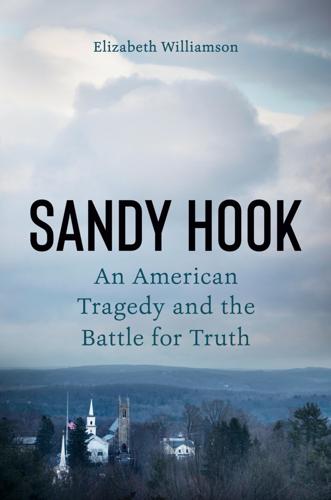
Sandy Hook: An American Tragedy and the Battle for Truth
by
Elizabeth Williamson
Published 8 Mar 2022
BACK TO NOTE REFERENCE 6 Oregonian staff and wire reports, “Man Accused of Bomb Threats Sentenced to Time Served After Medication Returns Competence,” OregonLive, March 17, 2015, https://www.oregonlive.com/portland/2015/03/man_accused_of_bomb_threats_at.html. BACK TO NOTE REFERENCE 7 CHAPTER SIXTEEN Amanda Robb, “Pizzagate: Anatomy of a Fake News Scandal,” Rolling Stone, November 16, 2017, https://www.rollingstone.com/feature/anatomy-of-a-fake-news-scandal-125877/. BACK TO NOTE REFERENCE 1 Hunt Allcott and Matthew Gentzkow, “Social Media and Fake News in the 2016 Election,” National Bureau of Economic Research, Working Paper 23089, 2017, https://doi.org/10.3386/w23089. BACK TO NOTE REFERENCE 2 Amy Chozick, Nicholas Confessore, and Michael Barbaro, “Leaked Speech Excerpts Show a Hillary Clinton at Ease with Wall Street,” New York Times, October 8, 2016, U.S., https://www.nytimes.com/2016/10/08/us/politics/hillary-clinton-speeches-wikileaks.html.
…
BACK TO NOTE REFERENCE 6 Andrew Rossi, dir., review of After Truth: Disinformation and the Cost of Fake News,” HBO, Abstract Production, https://www.hbo.com/documentaries/after-truth-disinformation-and-the-cost-of-fake-news. BACK TO NOTE REFERENCE 7 Marc Fisher, John Woodrow Cox, and Peter Hermann, “Pizzagate: From Rumor, to Hashtag, to Gunfire in D.C.,” Washington Post, December 7, 2016, https://www.washingtonpost.com/local/pizzagate-from-rumor-to-hashtag-to-gunfire-in-dc/2016/12/06/4c7def50-bbd4-11e6-94ac-3d324840106c_story.html. BACK TO NOTE REFERENCE 8 Cecilia Kang, “Fake News Onslaught Targets Pizzeria as Nest of Child-Trafficking,” New York Times, November 11, 2016, https://www.nytimes.com/2016/11/21/technology/fact-check-this-pizzeria-is-not-a-child-trafficking-site.html.
…
Although the Sandy Hook families had already suffered for years, Pizzagate jolted people awake to the real-world consequences of “fake news.” The term, defined by Hunt Allcott of New York University and Matthew Gentzkow of Stanford University, referred to “news articles that are intentionally and verifiably false, and could mislead readers.”[2] At least that was its original meaning, before President Trump repurposed it to discredit reports critical of him, and authoritarians around the world followed suit. In their article “Social Media and Fake News in the 2016 Election,” Allcott and Gentzkow framed the problem. “Social media platforms such as Facebook have a dramatically different structure than previous media technologies.
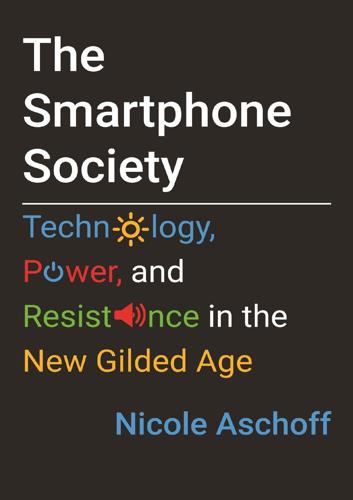
The Smartphone Society
by
Nicole Aschoff
The rise of companies such as Facebook and Google has also created and exacerbated a host of more complex problems that we’re just beginning to grapple with. Thornier Problems “Fake news” is a problem that’s been around at least since newspaper publishers, Joseph Pulitzer and William Randolph Hearst, went head to head in the 1890s, spinning fantastic tales to see who could sell the most newspapers. Today, fake news—stories that try to mislead the reader with hoaxes and deliberate misinformation in an effort to discredit someone or for financial or political gain—are a topic of conversation once again. On the surface, the problem of fake news is fairly simple. Increasingly, people get their news from Facebook, Twitter, YouTube, or Google News.
…
By not self-identifying as a media company Facebook avoids liability for any nastiness that pops up on its site: section 230 of the Communications and Decency Act enables companies such as Facebook to avoid “intermediary liability” for the things people say or do on their platforms and, on the flip side, allows them to act as “Good Samaritans,” policing their sites as they see fit. Nonetheless, after a year of denying that fake news was a problem, Facebook quietly started reducing the amount of news people see in their newsfeed. Does this mean we can just go back to reading news wherever we read it before? Unfortunately not. Fake news is a manifestation of a much bigger problem—the replacement of quality, investigative journalism with “content.”39 This trend has radically accelerated with our move to the small screen. As the digital has colonized our lives, and the tech titans have colonized the web, our digital lives have been hemmed in to a handful of apps.
…
See surveillance Square, 148 stalkerware apps, 25 Standing Rock, 103–4, 110 start-ups, 120–21 status-consciousness, 62 Sterling, Alton, 20 stewardship, 56–57 stimulation, digital, 66 stingrays, 96 Stoppelman, Jeremy, 43–44 Stop the Killing, 20 storytelling, 115–16, 120 subcontracting, multitier, 31 Substitute Phone, 8 Sullivan, Andrew, 132 Sunrise Movement, 103–4, 152, 179n22 “superstar firms,” 42–43 surveillance: big data and, 84; by government, 81, 137–38, 144, 148–49; by law enforcement, 96–97, 137–38, 176n28; by Uber, 127 surveillance capitalism, 8 sustainability, 151–52, 154–55 SVR (Silicon Valley Rising), 147 Syrian war, 90 Tahrir Square, 92 task app, mobile, 32 “tasker,” 30 TaskRabbit, 30 tax evasion by titans, 49–50 taxi drivers, 146, 178–79n5 Tea Party, 105 technological determinism, 12, 131–32, 140–41 “technology shabbats,” 133 technophilanthropy, 56–57 tech refuseniks, 67 tech start-ups, 120–21 Tech Workers Coalition, 148 teenagers, sexting by, 25–27, 35 telemedicine, 10 television, 11–12 temp workers, 31–32 Tencent, 4, 42 terrorists, 95 tether, smartphones as new, 3–7 texting, 5, 6 Thatcher, Margaret, 118 Thiel, Peter, 45, 81, 124 Thoreau, Henry David, 133 TikTok, 95 “time bind,” 30 time-tracking tools, 69 Tinder, 23–24, 25, 63 Tin Dog, 23 titans of cyberspace, 37–57; and antitrust investigations, 52–53; emerging criticisms of, 45–50; and fake news, 50–51; funding by, 55; lobbying by, 55–56; old titans vs., 37–38; and personalization, 53; philanthropy by, 56–57; power of, 39–40, 54–57; rise of, 38–45; and search algorithms, 51–52 Tometi, Opal, 101–2 tracking: government, 94–95; and privacy, 70–71, 81; of workers, 32–33 transcendentalists, 133 Transdr, 23 transhumanism, 123 translation, 10 Trump, Donald: election of, 13; and fake news, 50; inauguration of, 107; and North Dakota pipeline, 110; small donors to, 105; tweets by, 87–88, 92–93, 175n14 trust, 8 truth, 8 Twitch, 41 Twitter: addiction to, 69; content on, 60; microcelebrities on, 60; as news source, 50; as new titan, 42, 45; sharing on, 84; time spent on, 60; use by politicians of, 87–88, 92–93 230 Fifth, 62 Uber: app jobs at, 30–33, 153; data collection by, 84; and new capitalism, 119, 126–27; as new titan, 42; vs. taxi drivers, 146, 178–79n5 Uber-X, 33 Ukraine, 95 union(s), 147, 154 Union Pacific Railroad, 80 United Kingdom, 32–33 United We Dream, 104 unjust relationships, 137–38, 152–54 unpaid labor, 73–79, 84–85, 153 Upworthy, 53 urban poor, access to high-speed internet by, 29 USAID, 95 US Immigration and Customs Enforcement (ICE), 21, 148 Utah Data Center, 81 Utopia, 124–25, 132 Vanderbilt, Cornelius, 39, 44, 54 venture capital firms, 121 Verily, 41 Verizon, 42, 71 Vestager, Margrethe, 52, 150 Vice Media, 106 videos, 5 Vietnam, 95 virality in politics, 81 virtual signaling, 109, 111 Vonnegut, Kurt, 129–30 voter outreach, 89 Wages for Housework, 85 walking lanes for phone users, 3 Walmart, 33 warehouse workers, 31–32, 33, 35, 46 Warren, Elizabeth, 45 Waymo, 41 Way of the Future, 123 wealth hierarchies, 28–29, 35 WeChat app, 4 Weinstein, Harvey, 108 Weyl, E.
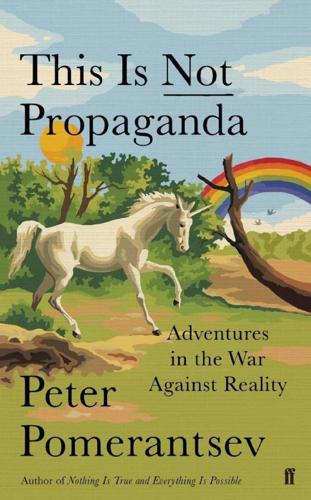
This Is Not Propaganda: Adventures in the War Against Reality
by
Peter Pomerantsev
Published 29 Jul 2019
At one point there were ninety messages an hour: claims that Rappler was making up the deaths, that it was in the pay of Duterte’s enemies, that it was all fake news. The messages were like an infestation of insects, swarming into the email in-boxes and descending like a scourge onto the site’s community pages, which Rappler had curated with such care to enable what it hoped would be the Internet’s ‘wisdom of crowds’. Sometimes Rappler staff would check to see who was behind a rape threat: maybe it was an automated account? To their disappointment it would turn out to be a real person. People were enjoying this. Rappler journalists were shouted at in the malls: ‘Hey, you – you’re fake news! Shame on you!’ Relatives would admonish them too.
…
His former colleague Nix made a similar argument when testifying to the UK Parliamentary Committee on Disinformation and ‘Fake News’, which I had been brought into as one of many ‘specialist advisers’. ‘We are trying to make sure that voters receive messages on the issues and policies they care most about … that can only be good for democracy,’ Nix told the Committee, utterly unrepentant about any of his actions. By the time I joined, the Committee had already been going for two years, and it had become obsessed with the question of what exactly was ‘good for democracy’ in an age of ‘information abundance’. It had started by looking into ‘fake news’, but after astounded Members of Parliament heard testimony about how ethnic cleansing in Burma had been fuelled via Facebook, about Kremlin interference in Europe and the US, about how people’s online information was used to target them in political campaigns, the members of the Committee decided that ‘our existing legal framework is no longer fit for purpose’.
…
More information was supposed to mean mutual understanding across borders, but it has also made possible new and more subtle forms of conflict and subversion. We live in a world of mass persuasion run amok, where the means of manipulation have gone forth and multiplied, a world of dark ads, psy-ops, hacks, bots, soft facts, deep fakes, fake news, ISIS, Putin, trolls, Trump … Forty years after my father’s detention and interrogation, I find myself following the palest of imprints of my parents’ journey, though with none of their courage, risk or certainty. As I write this – and given the economic turbulence, this might not be the case when you read it – I run a programme in an institute at a London university that researches the newer breeds of influence campaigns, what might casually be referred to as ‘propaganda’, a term so fraught and fractured in its interpretation – defined by some as deception and by others as the neutral activity of propagation – that I avoid using it.
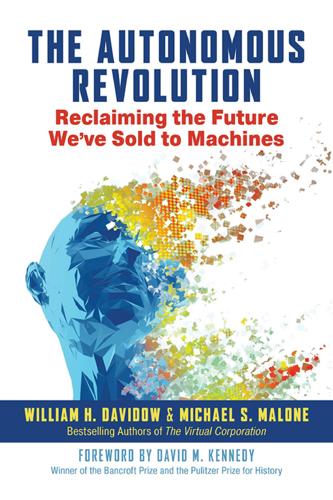
The Autonomous Revolution: Reclaiming the Future We’ve Sold to Machines
by
William Davidow
and
Michael Malone
Published 18 Feb 2020
Thomas Hobbes was convinced that Leviathan had to have the power to control expression in order to govern effectively. Were he alive today, he would certainly argue for a much narrower interpretation of the rules of free speech. We could make it illegal to knowingly spread fake news—that is, to make statements of supposed fact that are not supported by adequate data. If, like libel, the definition of fake news was legally circumscribed to include only statements that are known to be falsehoods in light of generally available empirical data, and that are spoken or published with malign intent, and if culpability was treated as a crime and prosecuted in the courts—and if to be a crime, multiple infractions were required, not just one mistake—we might begin to get a handle on the problem.
…
It is a violation of fair play, which they cannot admit of.12 Rules, laws, and cyber controls can help us keep the game fair. But trolls, fake news, cyberbullying, hacking, unethical businesses hiding in virtual space, and groups that encourage tribal cultures and intolerance will continue to exist. Soft solutions may turn out to be the most effective. Charismatic business, government, church, and social leaders are going to have to set and model standards of behavior that turn trolls, cyberbullies, and those who spread fake news into social misfits rather than the heroes that some of them are today. We must confront two other extremely important issues as part of our adaptation process.
…
While these equivalences may seem minor, the changes in the rules that they precipitate can be enormously important. When political blogs and “citizen journalism” first began to proliferate on the Internet less than twenty years ago, they seemed, if anything, to be a boon for democracy. Had we understood how radically the rules were changing, we might have recognized the darker implications of “fake news” much sooner. So too, we might have foreseen the dangers of a fully uncensored Web (child pornography, terrorism, etc.) on the one hand, and the politically biased censorship of social network content by the employees of their parent corporations on the other. In subsequent chapters, we will explore how phase change is rewriting the rules of business while driving what we call nonmonetizable productivity, the bipolar economy, and the destruction of millions of jobs.

Nexus: A Brief History of Information Networks From the Stone Age to AI
by
Yuval Noah Harari
Published 9 Sep 2024
Even if we assign just 1 percent of the blame to the algorithms, this is still the first ethnic-cleansing campaign in history that was partly the fault of decisions made by nonhuman intelligence. It is unlikely to be the last, especially because algorithms are no longer just pushing fake news and conspiracy theories created by flesh-and-blood extremists like Wirathu. By the early 2020s algorithms have already graduated to creating by themselves fake news and conspiracy theories.22 There is a lot more to say about the power of algorithms to shape politics. In particular, many readers may disagree with the argument that the algorithms made independent decisions, and may insist that everything the algorithms did was the result of code written by human engineers and of business models adopted by human executives.
…
No paper document has ever produced by itself another paper document, let alone distributed it. The path from one document to another must always pass through the brain of a human. In contrast, computer-to-computer chains can now function without humans in the loop. For example, one computer might generate a fake news story and post it on a social media feed. A second computer might identify this as fake news and not just delete it but also warn other computers to block it. Meanwhile, a third computer analyzing this activity might deduce that this indicates the beginning of a political crisis, and immediately sell risky stocks and buy safer government bonds.
…
The machine had no ability to come up with any new ideas of its own. Those who connect print to science assume that the mere act of producing and spreading more information inevitably leads people to the truth. In fact, print allowed the rapid spread not only of scientific facts but also of religious fantasies, fake news, and conspiracy theories. Perhaps the most notorious example of the latter was the belief in a worldwide conspiracy of satanic witches, which led to the witch-hunt craze that engulfed early modern Europe.66 Belief in magic and in witches has characterized human societies in all continents and eras, but different societies imagined witches and reacted to them in very different ways.
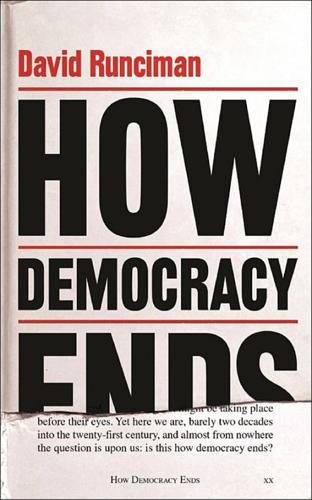
How Democracy Ends
by
David Runciman
Published 9 May 2018
But he did not ditch the mindset it represents, even after he won. Trump as president has continued to peddle conspiracy theories from the Oval Office. He accused his defeated opponent of having stolen the popular vote by widespread electoral fraud. He accused his critics in the mainstream media of deliberately creating fake news stories to discredit his presidency. He accused his predecessor of having tapped his phones. There was little or no evidence for any of this. Trump the winner was behaving as though he had lost. He did this in order to cement the terms on which he had won and keep himself firmly aligned with his core constituency.
…
In the late 1890s the US embarked on a war with Spain in various imperial outposts, including Cuba and the Philippines. National feeling was stoked up by a jingoistic press. It did not long survive the end of the conflict because the unity it supplied was superficial, feeding off the production of fake news in the yellow press. The Boer War fought by the British state at the dawn of the twentieth century produced short outbursts of collective national fervour, but in the end the conflict did more to divide the nation than to unite it. The same was true of the Iraq War of 2003, and the ongoing war in Afghanistan.
…
The violent overthrow of a democracy establishes the conditions under which democracy can be defended: it clarifies the situation. Without that prospect, democracy simply persists and the frustrations that people increasingly feel with it get channelled into forms of mutual mistrust. Ours are not the first democracies in history to get stuck in a rut of conspiracy theories and fake news. But ours are the first with no obvious way out. Reform is possible but it may not be sufficient. Violence is impossible but it may be all that works. Democracies have become very good at solving one problem – violence – that has in the past been a precondition for solving the other – inequality.

The Age of Surveillance Capitalism
by
Shoshana Zuboff
Published 15 Jan 2019
Shannon Bond, “Trade Group Warns on Google Ad Backlash ‘Crisis,’” Financial Times, March 24, 2017, https://www.ft.com/content/0936a49e-b521-369e-9d22-c194ed1c0d48; Matthew Garrahan, “AT&T Pulls Some Ads from Google After YouTube Controversy,” Financial Times, March 22, 2017, https://www.ft.com/content/254d330d-f3d1-3ac2-ab8d-761083d6976a; Sapna Maheshwari and Daisuke Wakabayashi, “AT&T and Johnson & Johnson Pull Ads from YouTube,” New York Times, March 22, 2017, https://www.nytimes.com/2017/03/22/business/atampt-and-johnson-amp-johnson-pull-ads-from-youtube-amid-hate-speech-concerns.html; Rob Davies, “Google Braces for Questions as More Big-Name Firms Pull Adverts,” Guardian, March 19, 2017, https://www.theguardian.com/technology/2017/mar/19/google-braces-for-questions-as-more-big-name-firms-pull-adverts. 42. Olivia Solon, “Facebook’s Fake News: Mark Zuckerberg Rejects ‘Crazy Idea’ That It Swayed Voters,” Guardian, November 11, 2016,, https://www.the guardian.com/technology/2016/nov/10/facebook-fake-news-us-election-mark-zuckerberg-donald-trump. 43. Guy Chazan, “Berlin Looks at Fines for Facebook with Fake News Law,” Financial Times, December 16, 2016; Guy Chazan, “Germany Cracks Down on Social Media Over Fake News,” Financial Times, March 14, 2017, https://www.ft.com/content/c10aa4f8-08a5-11e7-97d1-5e720a26771b; Jim Pickard, “Amber Rudd Urges Action from Internet Groups on Extremist Content,” Financial Times, March 26, 2017, https://www.ft.com/content/f652c9bc-120d-11e7-80f4-13e067d5072c; Alexandra Topping, Mark Sweney, and Jamie Grierson, “Google Is ‘Profiting from Hatred’ Say MPs in Row Over Adverts,” Guardian, March 17, 2017, http://www.theguardian.com/technology/2017/mar/17/google-is-profiting-from-hatred-say-mps-in-row-over-adverts; Sabrina Siddiqui, “‘From Heroes to Villains’: Tech Industry Faces Bipartisan Backlash in Washington,” Guardian, September 26, 2017, http://www.theguardian.com/us-news/2017/sep/26/tech-industry-washington-google-amazon-apple-facebook; Nancy Scola and Josh Meyer, “Google, Facebook May Have to Reveal Deepest Secrets,” Politico, October 1, 2017, http://politi.co/2yBtppQ; Paul Lewis, “Senator Warns YouTube Algorithm May Be Open to Manipulation by ‘Bad Actors,’” Guardian, February 5, 2018, http://www.theguardian.com/technology/2018/feb/05/senator-warns-youtube-algorithm-may-be-open-to-manipulation-by-bad-actors. 44.
…
A consequential example was Facebook’s decision to standardize the presentation of its News Feed content so that “all news stories looked roughly the same as each other… whether they were investigations in The Washington Post, gossip in the New York Post, or flat-out lies in the Denver Guardian, an entirely bogus newspaper.”27 This expression of equivalence without equality made Facebook’s first text exceptionally vulnerable to corruption from what would come to be called “fake news.” This is the context in which Facebook and Google became the focus of international attention following the discovery of organized political disinformation campaigns and profit-driven “fake news” stories during the 2016 US presidential election and the UK Brexit vote earlier that year. Economists Hunt Allcott and Matthew Gentzkow, who have studied these phenomena in detail, define “fake news” as “distorted signals uncorrelated with the truth” that impose “private and social costs by making it more difficult… to infer the true state of the world.…” They found that in the lead-up to the 2016 US election there were 760 million instances of a user reading these intentionally orchestrated lies online, or about three such stories for each adult American.28 As radical indifference would predict, however, “fake news” and other forms of information corruption have been perennial features of Google and Facebook’s online environments.
…
Michael Nunez, “Facebook’s Fight Against Fake News Was Undercut by Fear of Conservative Backlash,” Gizmodo, November 14, 2016, http://gizmodo.com/facebooks-fight-against-fake-news-was-undercut-by-fear-1788808204. 38. Varner and Angwin, “Facebook Enabled Advertisers to Reach ‘Jew Haters.’” 39. Alex Kantrowitz, “Google Allowed Advertisers to Target ‘Jewish Parasite,’ ‘Black People Ruin Everything,’” BuzzFeed, September 15, 2017, https://www.buzzfeed.com/alexkantrowitz/google-allowed-advertisers-to-target-jewish-parasite-black. 40. Jack Nicas, “Big Brands Boost Fake News Sites,” Wall Street Journal, December 9, 2016; Olivia Solon, “Google’s Bad Week: YouTube Loses Millions as Advertising Row Reaches US,” Guardian, March 25, 2017, http://www.the guardian.com/technology/2017/mar/25/google-youtube-advertising-extremist-content-att-verizon; Alexi Mostrous, “YouTube Hate Preachers Share Screens with Household Names,” Times, March 17, 2017, https://www.thetimes.co.uk/article/youtube-hate-preachers-share-screens-with-household-names-kdmpm kkjk; Alexi Mostrous, “Advertising Giant Drops Google in Storm Over Extremist Videos,” Times, March 18, 2017, http://www.thetimes.co.uk/article/advertising-giant-drops-google-in-storm-over-extremist-videos-2klgvv8d5. 41.

The People vs. Democracy: Why Our Freedom Is in Danger and How to Save It
by
Yascha Mounk
Published 15 Feb 2018
In Europe, politicians have been debating (and increasingly enacting) laws that mete out substantive fines to companies that fail to get with the program. But the nature of the fix is surprisingly similar in both cases: social media platforms, activists on both sides of the Atlantic have argued, should enforce a comprehensive ban on hate speech and fake news.1 The forceful demands made by advocates of regulation are matched by equally forceful rebuttals by its opponents. Tech executives have argued that effectively identifying fake news, or demarcating the boundaries of hate speech, lies beyond the power of algorithms. To stop the spread of noxious ideas, they would have to hire a small army of moderators—who would not only be expensive to maintain but also bear an uncomfortable resemblance to old-style censors.2 This objection is especially powerful against the prospect of formal government intervention.
…
Reuters, March 7, 2013, http://www.reuters.com/article/us-italy-vote-grillo-insight-idUSBRE92608G20130307. 27. The party now relies on funds that come from fake news inspired by Russian disinformation—and so it is hardly surprising that, to give but one example, a recent video from a party-controlled news source claimed that Turkey and the United States are secretly conspiring to stop Russia from fighting ISIS. See Alberto Nardelli and Craig Silverman, “Italy’s Most Popular Political Party Is Leading Europe in Fake News and Kremlin Propaganda,” Buzzfeed, November 29, 2016, https://www.buzzfeed.com/albertonardelli/italys-most-popular-political-party-is-leading-europe-in-fak?
…
On the continued ability of hate speech groups to make money through advertising on platforms like YouTube, see Patrick Kulp, “Big Brands Are Still Advertising on YouTube Vids by Hate Groups—Here’s the Proof,” Mashable, January 26, 2017, http://mashable.com/2017/03/23/youtube-advertisers-hate-groups/#gqeCW7JsAOqk; and Charles Riley, “Google under Fire for Posting Government Ads on Hate Videos,” CNN Money, March 17, 2017, http://money.cnn.com/2017/03/17/technology/google-youtube-ads-hate-speech/index.html. 8. Gideon Resnick, “How Pro-Trump Twitter Bots Spread Fake News,” Daily Beast, November 17, 2016, http://www.thedailybeast.com/how-pro-trump-twitter-bots-spread-fake-news. See also S. Woolley and P. N. Howard, “Political Communication, Computational Propaganda, and Autonomous Agents,” introduction to special section on Automation, Algorithms, and Politics, International Journal of Communication 10 (2016): 4882–4890; Philip N.
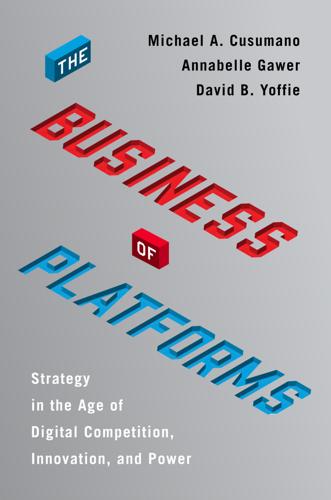
The Business of Platforms: Strategy in the Age of Digital Competition, Innovation, and Power
by
Michael A. Cusumano
,
Annabelle Gawer
and
David B. Yoffie
Published 6 May 2019
The new goal was to promote news sources that were “trustworthy” and “informative,” with the trustworthiness of news sources based on surveys of Facebook users.22 Facebook also announced it would ramp up efforts to catch fake news, foreign interference, and fake accounts through human monitoring, the use of third-party fact-checkers, and improved algorithms. Guy Rosen, Facebook’s vice president of product management, stated, “We are all responsible for making sure the same kind of attack on our democracy does not happen again.”23 Stepping up monitoring entailed compromises, however. As Zuckerberg noted, “When you think about issues like fake news or hate speech, right, it’s a trade-off between free speech and free expression and safety and having an informed community.”24 Until recently, social media platforms were adamant that they were not publishers but rather passive conduits of unedited and uncensored information that was generated by their users.
…
In 2014 a researcher at the University of Cambridge working with a small British consultancy named Cambridge Analytica (now bankrupt) built one of those millions of Facebook applications. Its main purpose was to track the preferences of users and their friends. The application provided data on as many as 87 million unsuspecting Facebook users in the United States and helped Russian hackers target particular users with fake news stories supporting candidate Donald Trump and criticizing rival Hillary Clinton.8 The U.S. Congress called in Zuckerberg to explain how his seemingly harmless social media platform had become an instrument of such power for a foreign government. Zuckerberg explained in his written testimony: We face a number of important issues around privacy, safety, and democracy, and you will rightfully have some hard questions for me to answer.
…
Just recently, we’ve seen the #metoo movement and the March for Our Lives, organized, at least in part, on Facebook. After Hurricane Harvey, people raised more than $20 million for relief. And more than 70 million small businesses now use Facebook to grow and create jobs. But it’s clear now that we didn’t do enough to prevent these tools from being used for harm as well. That goes for fake news, foreign interference in elections, and hate speech, as well as developers and data privacy. We didn’t take a broad enough view of our responsibility, and that was a big mistake. It was my mistake, and I’m sorry. I started Facebook, I run it, and I’m responsible for what happens here.9 How Did We Get to This Point?

The Road to Conscious Machines
by
Michael Wooldridge
Published 2 Nov 2018
If we build subservient AI systems that slavishly do our every bidding, and we make them look and sound like women, then we will propagate a portrait of women as servants.24 Fake News Fake news is precisely what the name suggests: false, inaccurate or misleading information that is presented as fact. Of course, the world had plenty of sources of fake news before the digital age, but the Internet, and more particularly, social media turned out to be the perfect conduit for the propagation of fake news – and the consequences have been dramatic. Social media is all about putting people in touch with one another, and modern social media platforms are spectacularly successful at this – Facebook and Twitter in the West, and WeChat in China, collectively have a sizable proportion of the world’s population registered as users.
…
Social media undoubtedly played a significant role in both campaigns – Trump, whatever one thinks of his politics or personal behaviour, is adept at using social media to rally his supporters. In both cases, there were suggestions that social media platforms like Twitter had been used to propagate fake news stories favouring the eventual winners. AI is an important part of the fake news story because it is crucial to the way that fake news is propagated. All social media platforms rely on you spending time interacting with them – it gives them the opportunity to show you adverts, which is how these platforms ultimately make their money. If you like what you see on the platform then you are going to spend more time on it than you would do otherwise.
…
When social media applications first appeared, in the early years of this century, they all seemed to be about friends, family and everyday life: there were lots of pictures of children, and lots of pictures of cats. But social media is a very powerful tool, and it quickly began to be used for other purposes. The phenomenon of fake news, which started to make global headlines in 2016, demonstrated just how powerful social media is, and how easily it can be used to influence events on a global scale. Two events made fake news into global headlines: the US presidential elections of November 2016, which led to the election of Donald Trump; and the June 2016 UK national referendum on continued membership of the European Union, which resulted in a narrow vote in favour of leaving.

There Is No Planet B: A Handbook for the Make or Break Years
by
Mike Berners-Lee
Published 27 Feb 2019
The second value has, I hope, pervaded most of the book so far. Now, following an eruption of post-truth and fake news all over the world over the past few years, we turn to the third value; the critical questions of truth and trust. If we are going to live well, humans need to raise their game in this area. The rising complexity of the issues and the rising flood of both information and misinformation, sometimes accidental and sometimes intentional, means that we need to get much better at cutting out the lies, disinformation and ‘fake news’. Both sides of the Atlantic are seeing worrying lurches in the wrong direction. The consequences will surely hit us before long, and I hope will give rise to a longer lasting counter-swing in the right direction.
…
Every citizen can help, at almost every turn, to insist on the cleanest possible view of the facts. From the office desk, to the voting booth, to the choice of news station to the bar chat. Fake news A phenomenon that has always been with us but which has recently erupted with devastating consequences. The tools for its propagation get more sophisticated, all of us have to improve our capacity to spot it and the vigor with which we reject it. Many of the thinking skills I outline for twenty-first century living are to do with raising our defenses against fake news. Farming Growing food with respect to both world and wildlife has to be one of the most useful ways that a person can spend their days.
…
For many, this might sound too obvious to be worth writing down, but all too often the values behind ideas are not made explicit even though the implications are usually enormous for economics, food policy, climate policy and just about everything else you can think of for thriving in the Anthropocene. To be very clear, the same principle of inherent equal value of all human beings is universal. It applies to all world leaders, purveyors of both real and fake news, tireless aid workers, left wingers, right wingers, billionaires, paupers, your own kids, other people’s kids and even the call centre employee who rings you when you are having dinner with your family to try to persuade you to sue for an accident that never even happened. A person’s inherent worth is independent of their circumstances or the choices they have made in their lives or have had made for them.

Four Battlegrounds
by
Paul Scharre
Published 18 Jan 2023
When Jack and his colleagues at OpenAI developed GPT-2, they were concerned about potential misuse of this technology and were thinking about a strategy for responsible release. Humans didn’t need machines to generate fake news, of course. The internet was already rife with disinformation, but tools like GPT-2 could make it easier for trolls, propagandists, and malicious actors to generate fake articles faster and in larger numbers. The technology was problematic in several ways. For one, GPT-2 lowered the barrier to entry for who could create convincing fake news stories. With a single sentence, I used GPT-2 to generate a reasonably convincing fake news story about President Trump declaring war on North Korea. I didn’t have to research how news articles were written or what kinds of details (such as threatening Guam) would make the article more convincing.
…
It wasn’t merely regurgitating facts; GPT-2 was creating new content. It was an impressive technical feat but also deeply problematic. GPT-2 might be designed to simply predict the next word in a block of text, but in practice OpenAI had created a fake news generator. Language models such as GPT-2 are just one example of AI tools that can influence and distort the information ecosystem, undermining truth. AI-generated text, audio, and video can be used to create fake news for disinformation and propaganda. They can even be used to convincingly impersonate political leaders. Bots can flood social media with manufactured narratives, allowing authoritarian regimes to suppress dissent.
…
I didn’t have to research how news articles were written or what kinds of details (such as threatening Guam) would make the article more convincing. GPT-2 did that for me. Language models like GPT-2 could enable a wider array of actors to create believable disinformation. Second, AI text generation allows the creation of fake news at industrial scales. By typing one-sentence prompts into GPT-2 and allowing the bot to generate the rest of the article, one person could generate ten to twenty times as many fake news stories in the same amount of time it would take to write a single story by hand. Apply automated scripts, and malicious actors could release a deluge of fake content at a scale far beyond what people could create on their own.

The Hacker and the State: Cyber Attacks and the New Normal of Geopolitics
by
Ben Buchanan
Published 25 Feb 2020
Andrew Guess, Brendan Nyhan, and Jason Reifler, “Selective Exposure to Misinformation: Evidence from the Consumption of Fake News During the 2016 U.S. Presidential Campaign,” European Research Council working paper, January 9, 2018. 68. Craig Silverman and Jeremy Singer-Vine, “Most Americans Who See Fake News Believe It, New Survey Says,” Buzzfeed, December 6, 2016; Ipsos Public Affairs, “BuzzFeed Fake News,” December 6, 2016. See also Hunt Allcott and Matthew Gentzkow, “Social Media and Fake News in the 2016 Election,” Journal of Economic Perspectives 31, no. 2 (2018) 211–236. 69. United States of America v.
…
Then we’d surely be better off without voting AT ALL.”63 Other messages posted in the Blacktivist Instagram group urged minorities to vote for Jill Stein, a third-party candidate who was deeply unlikely to win. “Trust me,” one reassured them, “it’s not a wasted vote.”64 All told, the Facebook campaign of inflammatory posts on Russian-controlled pages reached more than 126 million people.65 Fake news was part of the campaign, too. One retrospective analysis of Facebook sharing during the period before the election showed that the most popular fake news stories (from all sources, not limited to Russia) were more widely shared among users than the top news stories from legitimate outlets. Among the most popular fakes were stories attacking Clinton, accusing her of selling weapons to the Islamic State, of being legally disqualified from holding office, and of orchestrating the murder of an FBI agent.
…
Among the most popular fakes were stories attacking Clinton, accusing her of selling weapons to the Islamic State, of being legally disqualified from holding office, and of orchestrating the murder of an FBI agent. Another widely shared story claimed that Pope Francis had endorsed Donald Trump.66 One study estimates that about 25 percent of Americans visited a website that published fake news in the month before the election, with conservatives much more likely to have done so.67 A 2016 survey found that three-quarters of Americans who recalled seeing fake news headlines considered them to be at least somewhat accurate.68 In parallel with the Facebook operation, the Russians created thousands of fake accounts on Twitter. Here, too, they pretended to be American.69 As the 2016 election approached, they amplified a series of hashtags designed to hurt Clinton, such as #Hillary4Prison, #MAGA, #TrumpTrain, #Trump2016, and #IWontProtectHillary.70 They deployed some of the most popular of their accounts to claim that Clinton was orchestrating key voter-fraud efforts in competitive states such as North Carolina and Florida.71 Paid advertising complemented all these efforts.
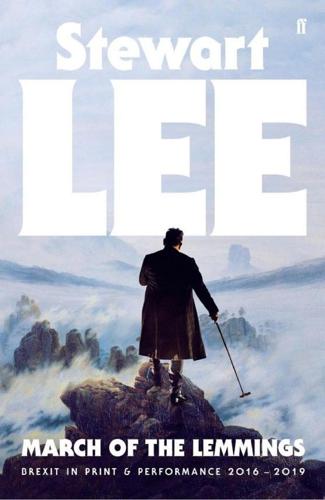
March of the Lemmings: Brexit in Print and Performance 2016–2019
by
Stewart Lee
Published 2 Sep 2019
Contents Title Page Preface PART I: BREXIT IN PRINT 2016–2019 Introduction The EU debate is a cynical battle of big beasts, not belief I’m not saying Michael Gove is a bit of an animal but … Where was Putin when Corbyn needed him? No more schmoozing with the enemy on TV shows My Paul Nuttalls routine has floated back up the U-bend Beyond good and evil with Gove and Trump Roll over, Grandma, and tell Robert Peston the news Even stand-up has been weaponised by fake news How a sex robot ended up on the One Show sofa When Boris Johnson’s inner monster goes on the rampage A papal encounter with a bat-faced duck-lion It will take more than ceramics and cheese to unite our divided country Chronicle of May’s fiasco foretold in a urine stain ‘Oh, Jeremy Clarkson.’
…
Shtove The usual Guardian anti-Corbyn verbiage. Silvertown Another pathetically veiled article to bash Corbyn … Really low stuff. Forageforfood 1 By February 2019, the terrifying conclusions of the Digital, Culture, Media and Sport Select Committee’s eighteen-month investigation into Facebook’s dissemination of ‘fake news’, and the way Russia weaponised it, made me nostalgic for comic exaggerations like this, which now just seem like statements of fact. We know without a doubt that our referendum was rigged, and yet we roll forward with its result. 2 I thought it was just me that was being systematically trolled by Russians.
…
Gove is a desperate, disappointed man, staring into the murky dew pond of Trump’s inarticulate pronouncements, looking for something that validates him. Hearing that Trump will do a trade deal with the UK ‘absolutely, very quickly’, Gove the emasculated Brexiteer makes this the focus of a Times interview so uncritical as to be as dangerous and dishonest as anything emerging from a Macedonian fake-news factory. This is not a game. Lives are at stake. You all need to do better. See me. Play the ball, not the man. This kind of ad hom attack on Gove (and his wife too?) is very undignified. Yohdur This seemed mean-spirited and irrelevant, for example: ‘resentful foundling Michael Gove’. Lee being an adoptee does not make it right or excuse it any more than my father dying when I was 11 allows me to say ‘half-orphaned Mr X was left wondering what his life would have been if his father had not choked his arteries to death prematurely in an effort to avoid his son’s difficult teenage years.’

Careless People: A Cautionary Tale of Power, Greed, and Lost Idealism
by
Sarah Wynn-Williams
Published 11 Mar 2025
We had prepped him for a meeting that would focus on Obama’s legacy, but we ended up with a meeting focused on Mark’s. “Fake news, he kept going on about fake news and misinformation,” Mark steams. “He doesn’t get it. He’s got it totally wrong, totally out of proportion. He said that Facebook’s playing a destructive role globally. And I think he actually believes that.” Elliot shakes his head sympathetically. “‘Not taking it seriously.’ That’s what he said. I’m not taking these threats seriously enough.” Mark quivers, furious. “I told him fake news wasn’t a big thing on Facebook. It’s less than one percent of what’s on the platform. That it wasn’t fake news that swung the election for Trump.
…
Zhao appears to be less of a fan of Facebook than Lu Wei, lecturing the Facebook team that “since US election last year [2016], many say [the] social networks especially Facebook influence [the] outcome with fake news.” He tells the team that China is different from the United States and it does not want unverified information sources to affect its political processes. Something he does want is: Guo Wengui. Guo is an exiled Chinese billionaire businessman who became a political activist and frequently criticizes the Chinese government. Zhao asks whether the content on Guo’s Facebook page counts as fake news. If so, and if a complaint is made, will measures be taken? He tells the China team there are people who don’t want Facebook in China: So we need to take measures and do more in such situations to demonstrate we can address mutual interests.
…
“Facebook’s role and our role as employees is to make the world more open and connected. That’s never been more important than it is now,” Elliot concludes, and then shuts down the meeting before any follow-up questions are asked. They’re sentiments that are echoed by Mark onstage at the Techonomy conference days later. Where he states categorically that the suggestion fake news on Facebook influenced the election is a “pretty crazy idea” and then follows up by saying that the “idea that that had any impact in the election is pretty out there.” 35 Angry at the Truth Mark Zuckerberg is mad. When he arrives at the airport, he’s fuming about the suggestion he had any responsibility for the election results.

The People vs Tech: How the Internet Is Killing Democracy (And How We Save It)
by
Jamie Bartlett
Published 4 Apr 2018
The basics of what this is doing to politics is now fairly well-trodden stuff: the splintering of established mainstream news and a surge of misinformation allows people to personalise their sources in ways that play to their pre-existing biases.5 Faced with infinite connection, we find the like-minded people and ideas, and huddle together. Brand new phrases have entered the lexicon to describe all this: filter bubbles, echo chambers and fake news. It’s no coincidence that ‘post-truth’ was the word of the year in 2016. At times ‘post-truth’ has become a convenient way to explain complicated events with a simple single phrase. In some circles it has become a slightly patronising new orthodoxy to say that stupid proles have been duped by misinformation on the internet into voting for things like Brexit or Trump.
…
In fact, well-educated people are in my experience even more subject to these irrationalities because they usually have an unduly high regard for their own powers of reason and decision-making.* What’s happening to political identity as a result of the internet is far more profound than this vote or that one. It transcends political parties and is more significant than echo chambers or fake news. Digital communication is changing the very nature of how we engage with political ideas and how we understand ourselves as political actors. Just as Netflix and YouTube replaced traditional mass-audience television with an increasingly personalised choice, so total connection and information overload offers up an infinite array of possible political options.
…
But even this will not eradicate the problem entirely, because a networked world where everyone is posting from everywhere all the time is simply impossible to control completely. This is more than Russian influence: democracies can no longer effectively police their information borders. Facebook’s dream to connect the world also means connecting Russian bots with British voters and gullible news outlets, fake news purveyors with floating voters, and Theresa Hong with worried American mothers who have never voted before. Every election has become an arms race, and the problem with arms races is that they are very difficult to slow down. Big Tech has built the infrastructure for selling stuff – some of the most sophisticated and connected configurations man has ever dreamt up – and now these infrastructures have been repurposed to win elections.

Fire and Fury: Inside the Trump White House
by
Michael Wolff
Published 5 Jan 2018
Firing Comey, the solve-all-problems Jarvanka solution, had indeed unleashed a set of terrible consequences. The Jarvanka side believed that Bannon was in essence blackmailing the president. As Bannon went, so went the virulence of right-wing digital media. Despite his apparent obsession with the “fake news” put out by the New York Times, the Washington Post, and CNN, for the president the threat of fake news was actually greater on the right. Though he would never call out fake news on Fox, Breitbart, and the others, these outlets—which could conceivably spew a catchall of conspiracies in which a weak Trump sold out to a powerful establishment—were potentially far more dangerous than their counterparts on the left.
…
(In fact, he read his 2011 speech from a sheet of paper.) “So when you have practically no notes and no preparation and then you leave and everybody was thrilled. I said, I think I like this business.” This first preamble gave way to the next preamble. “I want you all to know that we are fighting the fake news. It’s phony. Fake. A few days ago I called the fake news the enemy of the people. Because they have no sources. They just make ’em up when there are none. I saw one story recently where they said nine people have confirmed. There are no nine people. I don’t believe there was one or two people. Nine people. And I said, Give me a break.
…
I could run the Trump organization, a great, great company, and I could run the country, but I don’t want to do that.” Then the direct attack on CNN, his nemesis: “Your organization is terrible. Your organization is terrible. . . . Quiet . . . quiet . . . don’t be rude . . . Don’t be. . . . No, I’m not going to give you a question . . . I’m not going to give you a question. . . . You are fake news. . . .” And in summation: “That report first of all should never have been printed because it’s not worth the paper it’s printed on. I will tell you that should never ever happen. Twenty-two million accounts were hacked by China. That’s because we have no defense, because we’re run by people who don’t know what they’re doing.

The Perfect Weapon: War, Sabotage, and Fear in the Cyber Age
by
David E. Sanger
Published 18 Jun 2018
“Personally I think the idea that fake news on Facebook”: Mark Zuckerberg, interview by David Kirkpatrick, “In Conversation with Mark Zuckerberg,” Techonomy, November 17, 2016, techonomy.com/conf/te16/videos-conversations-with-2/in-conversation-with-mark-zuckerberg/. The president took him into a private room: Adam Entous, Elizabeth Dwoskin, and Craig Timberg, “Obama Tried to Give Zuckerberg a Wake-Up Call over Fake News on Facebook,” Washington Post, September 24, 2017, www.washingtonpost.com/business/economy/obama-tried-to-give-zuckerberg-a-wake-up-call-over-fake-news-on-facebook/2017/09/24/15d19b12-ddac-4ad5-ac6e-ef909e1c1284_story.html?
…
* * * — Mark Zuckerberg quickly came to regret his dismissive words, six days after Donald Trump’s election, that Facebook had nothing to do with it. “Personally I think the idea that fake news on Facebook, which is a very small amount of the content, influenced the election in any way—I think is a pretty crazy idea,” Zuckerberg wrote. “Voters make decisions based on their lived experience. I do think there is a certain profound lack of empathy in asserting that the only reason someone could have voted the way they did is they saw some fake news. If you believe that, then I don’t think you have internalized the message the Trump supporters are trying to send in this election.”
…
When Gerasimov published his article in 2013, American war fighters looking at cyberpower were still focusing on its physical effects on power plants or equipment, as embodied by Operation Olympic Games. For them, cyberwar was one thing, information war another. To the Russians, it was all on a spectrum. At one end was pure propaganda. Then came fake news, manipulated election results, the publication of stolen emails. Physical attacks on infrastructure marked the far end. Ukraine was where the techniques all came together, starting in early 2014. In the country’s east, Putin sent in the Little Green Men—his unofficial army of soldiers, so named for their unmarked green uniforms—to maintain a simmering, low-level insurrection that used assassinations and bombings to keep the Ukrainian government off balance.
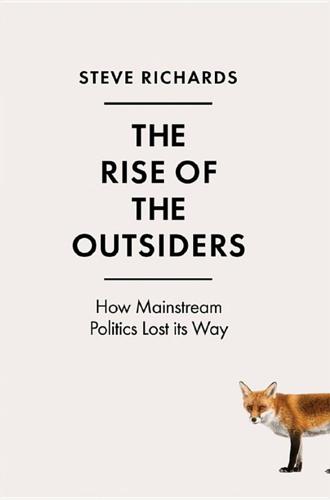
The Rise of the Outsiders: How Mainstream Politics Lost Its Way
by
Steve Richards
Published 14 Jun 2017
Twitter is self-feeding: if you have many millions of followers, those followers can retweet, and soon you are reaching a huge audience of target voters. Twitter is something of a gift for political outsiders, as momentum can be generated speedily and without costs. Target audiences are reached with ease. Trump’s favourite form of communication becomes unavoidably linked with his relationship to truth. Is he tweeting fake news? Was his campaign more widely built around fake news? Some newspaper and magazine editors in America are in agonies about whether they should have done more to expose Trump’s mendacities during the campaign. Fact-checking journalists – the assiduous journalists who were seeking out the precise degree to which Trump was telling the truth – could often still be working in the early hours of every morning during the campaign, comparing the truth with the claims from the campaign.
…
We must look at that powerful force – the media – which mediates politics in a way that can sometimes make elected leaders feel powerless. 8 ______ POWERLESSNESS AND THE MEDIA Today the so-called mainstream media – the newspapers and the broadcasters – can seem like relatively innocent relics struggling to survive, in the face of an avalanche of social-media outlets. The relics are the good guys taking on the purveyors of ‘fake news’. There is some truth in the evocation of the battle between old and new. Even if Donald Trump thinks otherwise, there is no contest between The New York Times and a fantasist blogger. But more orthodox media outlets played a significant role in the rise of the outsiders and the undermining of the mainstream insiders, both in the UK and in the US.
…
Arguably it is in both of these countries that political change has been especially dramatic, with the election of Trump, Brexit and the rise of Scottish nationalism. While outsiders made hay, the mainstream leaders in these two countries suffered wild fluctuations of reputation long before social media erupted. The focus on ‘fake news’ and ‘post-truth’ politics, after Brexit, and the rise of Trump serve to create a false impression, if only by implication, that there was an era of reliable news and an age when ‘truth’ was a defining force in politics, especially during elections and referendums. This is not the case. In order to understand the various crises in mainstream parties in the UK and the US, and their failure to adapt to tumultuous change, it is necessary to assess the role of the so-called mainstream media, broadcasters and, in some cases, mighty newspapers.
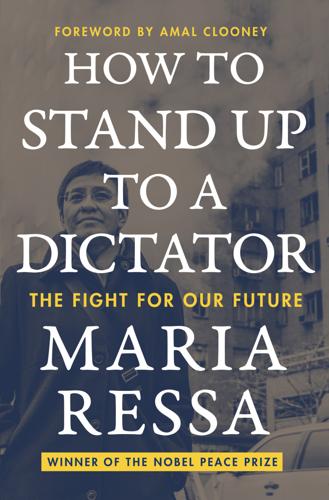
How to Stand Up to a Dictator
by
Maria Ressa
Published 19 Oct 2022
Facebook’s decision to deprioritize news18 was an absurd way to address issues of “fake news.” It claimed that it wanted to drive engagement through comments and discussion, not shares and likes. Like the whole idea of providing a personalized feed or muting and blocking posts instead of removing them, it said that “meaningful interaction” would now come from family and friends. Research showed that most of us are predisposed to share what our friends and family tell us. The predictable end result of designing the algorithms to suppress news?19 More hate, toxicity, and “fake news.”20 Which was exactly what happened. Three months later, the Cambridge Analytica scandal broke.
…
New Book Explores Its Role in Misinformation,” PBS NewsHour, July 22, 2021, https://www.pbs.org/newshour/show/is-facebook-putting-company-over-country-new-book-explores-its-role-in-misinformation. 50.Lora Kolodny, “Zuckerberg Claims 99% of Facebook Posts ‘Authentic,’ Denies Fake News There Influenced Election,” TechCrunch, November 12, 2016, https://techcrunch.com/2016/11/13/zuckerberg-claims-99-of-facebook-posts-authentic-denies-fake-news-there-influenced-election/. 51.That was Alex Stamos, who technically reported to Sheryl Sandberg, whose responsibilities included protecting users. 52.Sheera Frenkel and Cecilia Kang, An Ugly Truth: Inside Facebook’s Battle for Domination (New York: Harper, 2021). 53.Ibid.
…
“EXCLUSIVE: Interview with Cambridge Analytica Whistle-Blower Christopher Wylie.” 15.Meghan Bobrowsky, “Facebook Disables Access for NYU Research into Political-Ad Targeting,” Wall Street Journal, August 4, 2021, https://www.wsj.com/articles/facebook-cuts-off-access-for-nyu-research-into-political-ad-targeting-11628052204. 16.Jeff Horwitz and Deepa Seetharaman, “Facebook Executive Shut Down Efforts to Make the Site Less Divisive,” Wall Street Journal, May 26, 2020, https://www.wsj.com/articles/facebook-knows-it-encourages-division-top-executives-nixed-solutions-11590507499. 17.Mike Isaac and Sheera Frenkel, “Facebook Braces Itself for Trump to Cast Doubt on Election Results,” New York Times, August 21, 2020, https://www.nytimes.com/2020/08/21/technology/facebook-trump-election.html. 18.Kevin Roose, Mike Isaac, and Sheera Frenkel, “Facebook Struggles to Balance Civility and Growth,” New York Times, November 24, 2020, https://www.nytimes.com/2020/11/24/technology/facebook-election-misinformation.html. 19.In 2020, Rappler began working with Sinan Aral and his team at MIT, as well as researchers at several other universities at home and abroad. 20.Bonz Magsambol, “Facebook Partners with Rappler, Vera Files for Fact-Checking Program,” Rappler, April 12, 2018, https://www.rappler.com/technology/social-media/200060-facebook-partnership-fact-checking-program/. 21.Manuel Mogato, “Philippines Complains Facebook Fact-Checkers Are Biased,” Reuters, April 16, 2018, https://www.reuters.com/article/us-philippines-facebook-idUSKBN1HN1EN. 22.Jordan Robertson, “Fake News Hub from 2016 Election Thriving Again, Report Finds,” Bloomberg, October 13, 2010, https://www.bloomberg.com/news/articles/2020-10-13/fake-news-hub-from-2016-election-thriving-again-report-finds#xj4y7vzkg. 23.“EXCLUSIVE: Russian Disinformation System Influences PH Social Media,” Rappler, January 22, 2019, https://www.rappler.com/newsbreak/investigative/221470-russian-disinformation-system-influences-philippine-social-media/. 24.Craig Timberg, “Facebook Deletes Several Fake Chinese Accounts Targeting Trump and Biden, in First Takedown of Its Kind,” Washington Post, September 22, 2020, https://www.washingtonpost.com/technology/2020/09/22/facebook-deletes-several-fake-chinese-accounts-targeting-trump-biden-first-takedown-its-kind/; Ben Nimmo, C.

Don't Be Evil: How Big Tech Betrayed Its Founding Principles--And All of US
by
Rana Foroohar
Published 5 Nov 2019
With each buzz and beep of our phones, each automatically downloaded video, each new contact popping up in our digital networks, we get just a glimmer of a vast new world that is, frankly, beyond most people’s understanding, a bizarre land of information and misinformation, of trends and tweets, and of high-speed surveillance technology that has become the new normal. Just think: Russian election-hacking; hate-mongering Twitter feeds; identity theft; big data; fake news; online scams; digital addiction; self-driving car crashes; the rise of the robots; creepy facial recognition technology; Alexa eavesdropping on our every conversation; algorithms that watch us work, play, and sleep; and companies and governments that control them. The list of technology-driven social disruption is endless—and all of it has appeared in just the past few years.
…
We are experiencing a crisis of trust in this country; we’ve lost faith in our institutions, our leaders, and the very systems by which society is governed. As tempting as it might be to point a finger straight at the White House, this is not all about the current administration. For one, research shows that the declining trust in liberal democracy has coincided with the rise of social media.8 Part of this has to do with the fake news problem—which academic studies have found is 70 percent more likely to be shared than real news.9 But the fall in trust also has to do with a sense that the game is rigged, and that there is now an even wider social and economic chasm dividing the haves and have-nots, a divide created not just by Wall Street, but by Silicon Valley, too.10 In 2008, Washington bailed out the largest and most powerful banks and left ordinary homeowners to take losses.
…
Schmidt was also a key adviser in digital efforts for both the Obama and Hillary Clinton campaigns, using Google’s might to help the former get elected, and exerting policy influence afterward that is worrisome, to say the least.25 While this obviously isn’t problematic in the same way that allowing the Trump campaign to spread racist dog whistles and fake news during the 2016 elections was, it underscores the point that these companies hold undue influence over our political system as a whole, in ways that undermine public trust.26 Schmidt is certainly not alone in playing both sides of the political fence. Take a look at the first meeting of Silicon Valley’s tech titans with Donald Trump in 2017, and you’ll see Sheryl Sandberg, Tim Cook, and many other avowed Democrats leaning in to the president, literally.
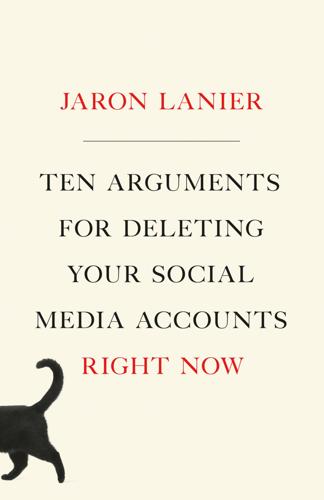
Ten Arguments for Deleting Your Social Media Accounts Right Now
by
Jaron Lanier
Published 28 May 2018
If owning everyone’s attention by making the world terrifying happens to be what earns the most money, then that is what will happen, even if it means that bad actors are amplified. If we want something different to happen, then the way money is earned has to change. In the wake of the 2016 elections in the United States, Facebook, Twitter, Google Search, and YouTube10 announced policy changes to combat dark ads, malicious fake news, hate speech, and so on. Regulators have also introduced requirements such as identifying political advertisers. Just as I was finishing this book, Facebook announced that it will deemphasize news in its feed; the journalism world celebrated, for the most part, because now it might become freer to connect to audiences on its own terms.
…
This is yet another ubiquitous problem that’s as hard to see as air. Here’s some positive spin: The fact that independent journalism is in trouble in BUMMER’s shadow is a sign of its integrity. Journalists have successfully held themselves to higher standards than social media influencers, but they have also paid a price. Now the real news is called “fake news,” because by the standards of BUMMER, what is real is fake; in BUMMER, reality has been replaced by stupid numbers. POD PEOPLE Another way to illuminate the tricky degradation of context is to notice online situations in which it is not a problem, at least not yet. A part of the online world that hasn’t destroyed its own context—at least as I write, in 2018—is podcasting.
…
See https://en.wikipedia.org/wiki/Social_identity_model_of_deindividuation_effects, but please promise me you won’t become a jerk in an edit war about this entry, okay? If you want to read relevant research from a scientist working for Facebook, see the work of Justin Cheng: https://www.clr3.com/. 4. http://leesmolin.com/writings/the-trouble-with-physics/ 5. Shout-out to Tim Wu. 6. https://www.recode.net/2016/12/29/14100064/linkedin-daniel-roth-fake-news-facebook-recode-podcast 7. http://www.spiegel.de/international/zeitgeist/smartphone-addiction-is-part-of-the-design-a-1104237.html 8. When you’re not on BUMMER it becomes possible to be tough and yet not a jerk. What I hope is happening in this book is that I’m using salty language and getting emotional, and yet I don’t vilify and condemn people.

Superbloom: How Technologies of Connection Tear Us Apart
by
Nicholas Carr
Published 28 Jan 2025
To them, the fractious political situation in the United States was just a convenient opportunity to attract an online audience and earn some cash. “I support Trump for a few reasons,” a young man named Alex explained to Bendiksen. “One, he makes money. Two, he makes Americans happy. Third, he makes money quickly.” Any attempt to curb fake news is doomed to fail, Alex went on to say. “There are too many haters on the net, and too many fake news sites, and fake news is the new truth. The main thing is that we believe in freedom of speech.” Bendiksen’s book presents dozens of haunting images of the city and its inhabitants. A man leans out of a window of a large apartment block, a pair of satellite dishes hanging nearby.
…
See also Tom Simonite, “A True Story about Bogus Photos of People Making Fake News,” Wired, October 6, 2021. 26.Susan Sontag, On Photography (New York: Farrar, Straus and Giroux, 1977), 5. 27.See Walter J. Scheirer, A History of Fake Things on the Internet (Stanford, CA: Stanford University Press, 2024), 59–87. 28.Luc Cohen, “Taylor Swift Searches Blocked on X after Fake Explicit Images Spread,” Reuters, January 29, 2024. 29.GOP, “Beat Biden,” YouTube, April 25, 2023, https://www.youtube.com/watch?v=kLMMxgtxQ1Y&t=1s. 30.Matteo Wong, “We Haven’t Seen the Worst of Fake News,” Atlantic, December 20, 2022. 31.Sam Altman, X, August 3, 2023, https://twitter.com/sama/status/1687236201496064000. 32.Noah Giansiracusa, How Algorithms Create and Prevent Fake News (New York: Apress, 2021), 41. 33.Bobby Chesney and Danielle Citron, “Deep Fakes: A Looming Challenge for Privacy, Democracy, and National Security,” California Law Review 107 (2019): 1753–1819. 34.See Konstantin Sheiko and Stephen Brown, History as Therapy: Alternative History and Nationalist Imaginings in Russia, 1991–2014 (Stuttgart: Ibidem-Verlag, 2014), 83–85. 35.
…
The ship’s radio operator was able to issue a distress call quickly, highlighting the value of the new technology in emergencies. But efforts to rescue the passengers were hindered by an ensuing barrage of amateur radio messages. The chatter clogged the airwaves, making it hard for official transmissions to get through. Worse, some of the amateurs sent out what we would today call fake news, including a widely circulated rumor that the ocean liner remained seaworthy and was being towed to the nearby port of Halifax for repairs. The false reports sowed confusion among would-be rescuers. Fifteen hundred people died. The chaos in the airwaves during the Titanic rescue was an unintended by-product of the American government’s laissez-faire attitude toward radio traffic.
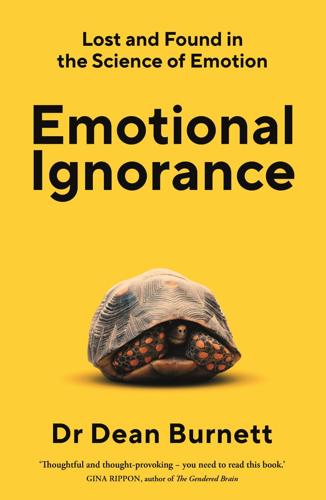
Emotional Ignorance: Lost and Found in the Science of Emotion
by
Dean Burnett
Published 10 Jan 2023
absence of emotions: DB’s imagined scenario 1, 2, 3; negative consequences of 1; in science fiction 1, 2, 3, 4 acting work: actor/character relationship 1; emotional labour 1 action representation network (brain) 1 adolescence and early adulthood: brain development 1; crushes 1, 2; intense emotions 1; nightmare frequency 1, 2; safe exposure to negative emotions 1, 2; social media use 1 see also infancy and childhood affect: definition and components 1; versus basic emotions 1 airport security, facial recognition technology 1 altruism 1, 2 amygdala (brain region): and dreaming 1; and emotional regulation 1, 2; and emotions processing 1, 2, 3, 4, 5, 6, 7, 8, 9; gender differences 1; influence of testosterone 1; and memory formation 1; as part of olfactory system 1 AND model of nightmare production 1 anger: as ‘basic’ emotion 1, 2; and colour red 1, 2; DB’s anger during grief 1, 2, 3; facial expression of 1, 2; as ‘masculine’ 1(fn); and motivation 1, 2 see also negative emotions angular gyrus (brain region) 1, 2 anosmia (inability to smell) 1 anterior cingulate cortex (brain region) 1, 2, 3, 4 anterior olfactory nucleus (brain region) 1 anxiety: caused by work 1; performance anxiety 1; social anxiety 1, 2, 3; and status 1; vagus nerve stimulation treatment 1 see also negative emotions; stress apatheia (ultimate goal of Stoicism) 1 appraisal theory 1, 2 approach-attachment behaviour 1 approach versus avoid motivation 1, 2 arguments with romantic partner 1 arousal (component of affect) 1, 2, 3 asexuality 1 @AstroKatie (Katherine Mack) 1 attachment during early childhood 1, 2 see also parent emotional bond attention restoration, and colour green 1 auditory cortex (brain region) 1, 2(fn) auditory processing 1, 2, 3, 4, 5(fn) autism 1, 2 automated voices and announcements, annoyance caused by 1 avatar therapy 1 avoid versus approach motivation 1, 2 babies in the womb, playing music to 1, 2 baby-parent emotional bond 1, 2, 3 see also attachment during early childhood Bain, Alexander 1 Baron-Cohen, Simon 1 Barrett, Lisa Feldman 1, 2 basal ganglia (brain region) 1 basic emotions theory 1, 2, 3, 4 BDSM (sexual practice) 1, 2 belief perseverance 1 Bell, Charles 1, 2 bias: confirmation bias 1, 2, 3; fading affect bias 1, 2, 3; ingroup versus outgroup bias 1; negativity bias 1, 2 Blackmore, Chris 1, 2, 3 blinking, by cartoon characters 1 blood sugar, effect on emotions 1 blue colour, associations and effects 1, 2, 3 body, emotions experienced in see physiology-emotion connection body language: communicating emotion 1, 2, 3, 4; mimicry 1; missing from communication technologies 1 brain: body’s influence on 1; competing resource demands 1, 2, 3; development 1; distinguishing what is real/not real 1, 2; emotions as conscious or subconscious processes 1; gender differences (beliefs and experimental studies) 1; influence of oestrogen and testosterone 1; left brain/right brain facts and myths 1, 2, 3(fn), 4(fn); lobotomies 1; mirror neurons 1, 2, 3, 4; nervous and endocrine system regulation 1; neurotransmitters 1, 2, 3, 4, 5, 6; reward pathway and system 1, 2, 3, 4; somatic marker hypothesis 1; spindle cells 1; synapses 1, 2; triune model 1, 2 see also cognition (thinking); learning (of information); memory(ies) brain, functional regions: action representation 1; auditory processing 1, 2, 3, 4, 5(fn); cognition 1, 2, 3, 4; disgust 1; emotional regulation 1, 2; emotions (overview) 1, 2, 3; fear 1; imagination 1; intention processing 1; language processing 1; love 1, 2; lust 1, 2; memories 1, 2, 3, 4, 5; motivation 1, 2; olfactory processing 1, 2; visual processing 1, 2, 3 see also specific brain regions brain scans, limitations for studying emotions 1 brainstem 1, 2, 3, 4, 5 breastfeeding 1, 2 Broca’s area (brain) 1 Brown, Thomas 1, 2 Buddhism 1 bullying online 1 burnout 1, 2 Bushman, B.J. 1 bystander effect 1 cancer awareness, role of news and media 1 canned laughter, annoyance caused by 1, 2 categories and types of emotion: basic emotions (theory) 1, 2, 3, 4; identified by James McCosh 1 see also identifying and defining ‘emotions’ cats and other pets, emotional attachment to 1 caudate nucleus (brain region) 1 celebrity endorsements 1, 2, 3, 4 cerebellum (brain region) 1, 2, 3 childbirth, role of oxytocin 1 childhood see infancy and childhood chilli, enjoyment of pain caused by 1 cigarette smoke, DB’s memories and associations 1, 2 cognition-emotion relationship see emotion-cognition relationship cognition (thinking): brain regions associated with 1, 2, 3, 4; effect of love on 1; executive control 1, 2, 3; ‘flow’ state 1; and intrusive thoughts 1; and motivation 1, 2, 3, 4, 5; and social relationships 1, 2 see also learning (of information) cognitive dissonance 1 colours: cultural associations 1; in DB’s friend’s home 1, 2; emotional response to 1; and visual processing 1, 2, 3 communicating and sharing emotions: machine detection of emotions 1, 2; nonverbal information 1, 2, 3; online versus in-person 1, 2; at work 1, 2, 3, 4, 5 see also emotional contagion; empathy; facial expressions and emotions communication technologies see phone calls; social media and online communication; therapeutic applications of technologies; video calls confirmation bias 1, 2, 3 conformity 1, 2, 3, 4 consciousness, evolution of 1 consolidation of memories 1, 2, 3, 4 conspiracy theories 1, 2, 3, 4, 5 see also deception; misinformation and ‘fake news’ constructed emotions theory 1, 2 corpus callosum (brain region) 1 cortex/neocortex (brain region) (in general) 1 see also specific regions of the cortex cortisol 1 cross-race effect 1 crushes, in adolescence 1, 2 crying: DB’s (in)ability to cry 1, 2, 3, 4, 5, 6; gender differences 1; induced by TV and films 1; types and functions of tears 1 cuteness and cute aggression 1 cyberbullying 1 dancing 1 Darwin, Charles 1, 2 deception: automated voices and announcements 1; response to 1, 2; self-deception 1 see also manipulation of emotions; misinformation and ‘fake news’ defining ‘emotions’ 1, 2, 3, 4 deindividuation and ‘mob mentality’ 1 depression: caused by work 1, 2; gender differences 1; and gut microbiome 1; and memory 1; post-natal depression 1, 2; vagus nerve stimulation treatment 1 Diana, Princess of Wales, impact of death 1 digestive system, influence of 1, 2 disgust: as ‘basic’ emotion 1, 2; brain region associated with 1; and colour green 1; facial expression of 1, 2; and horror 1; and memory 1; and suppressed motivation 1 see also negative emotions doctors, emotional aspects of work 1 dopamine 1 drama therapy 1 dreams and nightmares: AND model 1; bizarre nature of 1, 2; DB’s bad dreams 1, 2, 3; due to COVID-19 pandemic 1, 2; and emotion processing 1; Freud’s interpretations 1; and memory consolidation 1; and mental health 1; post-traumatic 1; prevalence of nightmares 1; recurring 1; threat simulation theory 1 Dunbar’s number (of social relationships) 1 dysgranular field (brain region) 1 dysphoria 1 see also depression e-learning, motivation in 1 earworms 1 Ekman, Paul 1, 2, 3, 4 Eleri, Carys 1 embarrassment 1, 2, 3, 4, 5, 6, 7 see also negative emotions emojis and emoticons 1 emotion-cognition relationship: appraisal theory 1, 2; in attention and focus 1, 2, 3, 4; belief perseverance 1; cognitive dissonance 1; competition for brain’s resources 1, 2; confirmation bias 1, 2, 3; distinction recognised by Stoics 1; in effect of emotions experienced 1; in empathy 1; in ‘flow’ state 1; interrelatedness (in general) 1, 2, 3, 4; in learning and information processing 1, 2, 3; in love 1; motivated reasoning 1; in motivation 1, 2, 3; negativity bias 1, 2; role of imagination 1; shared evolutionary origin 1; in stage fright 1 emotion-memory relationship: appraisal theory 1, 2; emotions triggered by memories 1, 2, 3, 4; fading affect bias 1, 2, 3; happy memories being more detailed 1; for implicit memories 1; later emotions changing memories 1, 2, 3; longevity and potency of emotional memories 1, 2, 3, 4, 5, 6; in memory consolidation 1, 2; in PTSD 1, 2, 3, 4, 5; role of nightmares 1; suppressing emotional memories 1 emotional contagion: dangers of ‘mob mentality’ 1; versus empathy 1; evolutionary importance 1; from groups of people 1, 2, 3; from music 1, 2, 3; neurological mechanism for 1; from social media 1 emotional detachment/suppression at work 1, 2, 3, 4 emotional manipulation see manipulation of emotions emotional processing 1, 2 emotional regulation, brain regions responsible for 1, 2 emotional relationships: attachment during early childhood 1, 2; friendships 1, 2; one-sided see parasocial (one-sided) relationships; parent-baby emotional bond 1, 2, 3; role of neurotransmitters 1, 2; romantic see romantic relationships; see also social relationships emotions: causing change 1; as conscious/subconscious processes 1; historical study of 1; identifying and defining 1, 2, 3, 4; language of 1, 2 see also categories and types of emotion; communicating and sharing emotions; emotion relationship; emotion relationship; negative emotions; physiology connection; positive emotions; specific emotions empathy: and autism 1, 2; in babies 1; and body language mimicry 1; versus emotional contagion 1; evolutionary importance 1, 2, 3; influence of own emotions on 1; as ingrained 1, 2; ingroup versus outgroup bias 1; versus mentalising (theory of mind) 1; neurological mechanism for 1, 2, 3, 4; and physical pain 1; in romantic relationships 1; as selfish/unselfish 1 endocannabinoids 1 endocrine system 1 endorphins 1, 2 envy 1, 2 see also negative emotions episodic memories 1, 2, 3 evaluative conditioning 1 excitation transfer theory 1 executive control 1, 2, 3 see also cognition (thinking) existential dread, as a motivator 1 explicit memories 1 extrinsic versus intrinsic motivation 1 Facebook: DB’s use of 1, 2; research into emotional manipulation 1, 2, 3 see also social media and online communication faces, seeing in inanimate objects 1 facial colour changes 1 facial expressions and emotions: in artificial/CGI faces (uncanny valley) 1; automated emotion recognition 1; in cartoon characters (blinking) 1; cross-cultural similarities and differences 1, 2; difficulties distinguishing between emotions without context 1, 2, 3; early writings on 1; Ekman’s work 1, 2, 3, 4; ‘invisible’ emotions 1; involuntary nature of expressions 1, 2, 3, 4; online curation of emotions portrayed 1 facial paralysis, and empathy 1 facial recognition, cross-race effect 1 facial recognition technology 1 fading affect bias 1, 2, 3 ‘fake news’ see misinformation and ‘fake news’ fandom 1, 2 see also parasocial (one relationships fear: as ‘basic’ emotion 1, 2; brain region associated with 1; enjoyment of 1, 2; facial expression and colour 1, 2; as first emotion 1; of flying 1; and horror 1; and imagination 1; and motivation 1, 2, 3; in PTSD 1; smell of (in sweat) 1 see also negative emotions films and TV causing negative emotions 1, 2, 3, 4 Firth-Godbehere, Richard 1, 2, 3, 4, 5 flat Earth conspiracy theory 1, 2 ‘flow’ state 1 flying, fear of 1 football shirts, red colour’s competitive advantage 1 Freud, Sigmund 1, 2 friendships 1, 2 see also emotional relationships; social relationships frosty atmospheres, emotional contagion 1, 2 funerals: crying at 1; of DB’s father 1, 2, 3, 4, 5; emotional contagion at 1, 2; live streaming 1, 2 gender differences: adolescent crushes 1(fn); attitudes towards infidelity 1; in brains (beliefs and experimental studies) 1; in brains (DB’s impossible experiment) 1; in emotional regulation and expression 1, 2, 3, 4, 5, 6; ‘maternal instinct’ 1; mental health problems 1; other physiological differences 1; societal influences 1 gender discrimination 1, 2, 3 goal distraction 1 green colour, associations and effects 1, 2, 3 grief: DB’s acceptance of emotions 1; DB’s anger 1, 2, 3; DB’s attempts to disguise grief 1; DB’s emotional confusion 1, 2, 3; DB’s (in)ability to cry 1, 2, 3, 4, 5, 6; DB’s motivation and productivity 1, 2; DB’s need to talk after funeral 1; at death of Princess Diana 1; emotional processing 1, 2; shared grieving 1; stages of 1 see also negative emotions guilt 1 see also negative emotions habituation 1, 2 ‘hangry’ behaviour 1 happiness 1 hippocampus (brain region): and dreaming 1; and emotional regulation 1; and emotions processing 1, 2, 3; and imagination 1; and memory 1, 2, 3, 4, 5; and navigation 1 Holmes and Rahe stress scale 1, 2 Holmes, Sherlock (analogy for action representation) 1 hormones: cortisol 1; digestive 1, 2; effect of tears on 1; influence on the brain (and emotions) 1; oestrogen 1, 2; oxytocin 1, 2, 3, 4, 5, 6; testosterone 1, 2, 3; vasopressin 1, 2, 3 see also endocrine system horror (emotion) 1 horror movies 1, 2, 3 hypothalamus (brain region) 1, 2, 3 hysteria 1 Icke, David 1 identification, in parasocial relationships 1 identifying and defining ‘emotions’ 1, 2, 3, 4 imaginary friends 1 imagination and mental imagery 1, 2 imitation of observed actions 1 implicit memories 1 impression management 1, 2, 3, 4, 5 infancy and childhood: attachment with primary caregiver 1, 2; breastfeeding 1, 2; DB’s memories of 1, 2; emotional experiences 1; empathy in babies 1; imaginary friends 1; importance of sense of smell 1; learning from media characters 1; nightmare frequency 1, 2; oxytocin in newborns 1; parent-baby emotional bond 1, 2, 3 see also adolescence and early adulthood inferior frontal cortex (brain region) 1, 2 inferior parietal cortex (brain region) 1 infidelity, emotional versus sexual 1 insular cortex (insula) (brain region) 1, 2, 3, 4 intelligence, and brain anatomy 1 intention processing 1 intrinsic versus extrinsic motivation 1 intrusive thoughts 1 Izard, Carroll E. 1 jealousy 1 Kübler-Ross, Elizabeth 1 language of emotions 1, 2 language processing 1 learning (of information): from media characters 1; motivation 1, 2; from other people 1, 2; processing demands and information prioritisation 1, 2; from senses 1 LeDoux, Joseph 1 left brain/right brain facts and myths 1, 2, 3(fn), 4(fn) limbic system (brain region) 1, 2, 3, 4 lobotomies 1 Lomas, Tim 1 London taxi drivers, brain study 1 losing oneself in a book/film 1 love: brain regions associated with 1, 2; demands on the brain 1; effect on cognition 1; for family and friends 1, 2(fn); role of dopamine 1; romantic love 1, 2, 3 see also romantic relationships lust and sexual attraction: asexuality 1; brain regions associated with 1, 2; and romantic relationships 1, 2; Stoics’ rejection of 1, 2; suppression of 1 Mack, Katherine (@AstroKatie) 1 mammal brain (region) 1, 2, 3, 4 manipulation of emotions: by authorities 1; for marketing 1, 2, 3, 4, 5; response to 1; by social media 1; by traditional news and media 1, 2, 3, 4 marketing 1, 2, 3, 4, 5 McCosh, James 1 medical work, emotional aspects 1 memory(ies): brain regions associated with 1, 2, 3, 4, 5; changeable nature of 1, 2, 3, 4, 5, 6, 7; connections with objects 1, 2, 3, 4; consolidation 1, 2, 3, 4; DB’s memories of early childhood 1, 2; DB’s memories of his father 1, 2, 3, 4, 5, 6; episodic memories 1, 2, 3; explicit memories 1; fading affect bias 1, 2, 3; forgetting memories 1; and imagination 1; implicit memories 1; and music 1; procedural memories 1; reminiscence bump 1; retroactive memory enhancement 1; semantic memories 1; and sleep 1; and smell(s) 1, 2, 3, 4; suppression of 1; as synapses 1, 2; working memory 1; Zeigarnik effect 1 see also emotion relationship mental health/illness: and social media 1; and status 1; therapeutic applications of technologies 1 see also anxiety; depression; PTSD; schizophrenia mental imagery and imagination 1, 2 mentalising (theory of mind) 1, 2 mirror neurons 1, 2, 3, 4 mirroring body language 1 misinformation and ‘fake news’: about COVID-19 pandemic 1, 2; David Icke’s space lizards 1; flat Earth theory 1, 2; and social media/internet 1, 2, 3, 4; susceptibility to 1 see also deception ‘mob mentality’ (deindividuation) 1 Moebius syndrome (facial paralysis) 1 monkey experiments, mirror neurons 1 Morgan, Matt 1 motivated reasoning 1 motivation: approach-attachment behaviour 1; approach versus avoid motivation 1, 2; brain regions associated with 1, 2; and cognition 1, 2, 3, 4, 5; DB’s experiences during grief 1, 2; and emotions 1, 2, 3, 4, 5, 6; intrinsic versus extrinsic motivation 1; and novelty 1, 2, 3, 4 motivational salience 1 music: dancing 1; DB’s emotional response to 1, 2, 3, 4; differentiating between voice and instruments 1; earworms 1; emotional contagion from 1, 2, 3; emotional response to 1, 2; evolutionary significance 1, 2; and memory 1 musical expectancy 1, 2 navigation, role of hippocampus 1 negative emotions: and attention/focus 1, 2, 3, 4, 5; and creativity 1; emotion processing 1, 2; feeling good whilst experiencing 1, 2, 3; induced by TV and films 1, 2, 3, 4; and intrusive thoughts 1; and memory 1, 2, 3; as more impactful than positive emotions 1; negativity bias 1, 2; and novelty 1; and performance 1 see also specific emotions negativity bias 1, 2 nervous systems: enteric (‘second brain’) 1; parasympathetic 1, 2, 3; regulation by brain 1; somatic and autonomic 1; sympathetic 1, 2, 3 neurotransmitters 1, 2, 3, 4, 5, 6 news and media (traditional): credibility 1, 2, 3, 4; emotional content 1, 2, 3, 4; precursors to 1 see also conspiracy theories; misinformation and ‘fake news’; social media and online communication nightmares see dreams and nightmares noises, emotional response to 1, 2, 3 see also music novelty 1, 2, 3, 4, 5 objects, and memories 1, 2, 3, 4 oestrogen 1, 2 olfactory bulb and cortex (brain region) 1, 2, 3 olfactory system 1, 2, 3, 4 one-sided relationships see parasocial (one-sided) relationships online communication see social media and online communication online learning, motivation in 1 orbitofrontal cortex (brain region) 1, 2 oxytocin 1, 2, 3, 4, 5, 6 pain (physical): and empathy 1; enjoyment of 1, 2 paracingulate sulcus (brain region) 1 parasocial (one-sided) relationships: adolescent crushes 1, 2; benefits 1, 2; ending the relationship 1; with fictional characters 1, 2, 3, 4; identification with the object 1; with imaginary friends 1; losing oneself in a narrative 1; meeting the object 1; negative aspects 1; neurological mechanisms 1; with people you haven’t met 1, 2, 3, 4, 5 parasympathetic nervous system 1, 2, 3 Parch (TV drama), actor’s experiences 1 pareidolia 1 parent-baby emotional bond 1, 2, 3 see also attachment during early childhood ‘passions’ 1, 2, 3 pathos 1 performance anxiety (stage fright) 1 personality, influence of early experiences 1, 2 phone calls: DB’s last call to father 1; lack of nonverbal emotional cues 1; walking around during 1 physiology-emotion connection: body influencing emotion 1; emotion influencing the body 1; somatic marker hypothesis 1 see also crying Pickle (DB’s cat) 1 Pixar movies 1, 2(fn), 3 positive emotions: and attention/focus 1, 2; and memory 1, 2 see also specific emotions ‘Positive Lexicography’ project 1 post-natal depression 1, 2 posterior parietal cortex (brain region) 1, 2 prefrontal cortex (brain region): cognitive functions 1, 2, 3; and emotional regulation 1, 2; and emotions processing 1, 2; and imagination 1; influence of testosterone 1; and memory 1; and mentalising (theory of mind) 1; and motivation 1, 2 pride 1 procedural memories 1 processing (negative) emotions 1, 2 Proust, Marcel, In Search of Lost Time 1 psycho-emotional tears 1, 2 PTSD (post-traumatic stress disorder) 1, 2, 3, 4, 5 racism: cross-race effect 1; and oxytocin 1 rage see anger red colour, associations and effects 1, 2, 3 relationships see emotional relationships religious perspectives on emotions 1 reminiscence bump 1 reptile brain (region) 1 ‘resting bitch face’ 1 retroactive memory enhancement 1 reward, and motivation 1 reward pathways of brain 1, 2, 3, 4 Ridley, Rosalind 1 Rippon, Gina 1, 2, 3 romantic relationships: adolescent crushes as preparation for 1; attitudes towards infidelity 1; disagreements and disputes 1; emotional connection between partners 1, 2; empathy versus problem ‘fixing’ in 1; long-term relationships 1, 2; love in 1, 2, 3; negative emotions in 1; online versus in-person 1; and own identity 1, 2; physical attraction in 1, 2; role of oxytocin 1; stress associated with losing partner 1, 2; trumpeting on social media 1 see also emotional relationships sadness: as ‘basic’ emotion 1; and colour blue 1, 2; enjoyment of 1, 2, 3; facial expression of 1 schadenfreude 1, 2 schizophrenia 1 scientific method 1, 2 scientists: motivations 1, 2, 3; popular portrayal as lacking emotion 1 self-deception 1 semantic memories 1 Sesame Street (TV) show, learning from 1 sex differences see gender differences sexism see gender discrimination sexual activity, BDSM 1, 2 sexual attraction see lust and sexual attraction sharing emotions see communicating and sharing emotions Simpsons, The (TV show), blinking in 1(fn) Singer, Tania 1 sleep 1, 2, 3 see also dreams and nightmares smell(s): anosmia (inability to smell) 1; DB’s memories of cigarette smoke 1, 2; and emotions 1, 2; evolutionary importance 1, 2, 3; and memory 1, 2, 3, 4; olfactory system 1, 2, 3, 4 social anxiety 1, 2, 3 social media and online communication: adolescents 1; adults/older people 1; emojis and emoticons 1; and emotional contagion 1; impression management 1, 2, 3, 4, 5; lack of nonverbal emotional cues 1, 2; live streaming funerals 1, 2; machine detection of emotions 1; negative aspects 1, 2, 3, 4, 5; online versus in-person emotions and personae 1; positive aspects 1, 2; versus real-world interactions, cognitive demands 1; and reward 1, 2, 3; and self-deception 1; and self-validation 1, 2, 3; and status 1, 2 see also conspiracy theories; Facebook; misinformation and ‘fake news’; news and media (traditional); video calls social relationships: cognitive load associated with 1, 2; Dunbar’s number 1; friendships 1, 2; one-sided see parasocial (one-sided) relationships; see also emotional relationships somatic marker hypothesis 1 spicy food, enjoyment of pain caused by 1 spindle cells 1 Spiner, Brent 1 sports kit, competitive advantage of wearing red 1 SPOT (Screening of Passengers by Observation Techniques) programme 1 stage fright 1 stalkers 1 Star Trek: The Next Generation (TV series): Data actor’s experience of fans 1; Data’s inability to choose ice-cream flavour 1 Star Trek (TV series): Stoicism of Vulcans 1, 2; universal use of English language 1 Starbucks (branding) 1 status: and emotions 1; and social media 1, 2; subjective status and mental health 1 Stoics and Stoicism 1, 2 stress: benefits of green environments for 1; caused by uncertainty 1; caused by work 1, 2; coping mechanisms 1; cortisol 1; Holmes and Rahe stress scale 1, 2; PTSD 1, 2, 3, 4, 5; and status 1; Yerkes-Dodson curve 1 see also anxiety; negative emotions striatum (brain region) 1 study of emotions (historical) 1 suicide 1, 2 superior temporal cortex (brain region) 1, 2, 3, 4 suppression of emotions: during disagreements with romantic partner 1; in learning and decision making (as impossible) 1; at work 1, 2, 3, 4 supramarginal gyrus (brain region) 1 surprise 1, 2 sympathetic nervous system 1, 2, 3 synapses (neuron connections) 1, 2 taxi drivers, brain study 1 tears, types and functions of 1 teenage years see adolescence and early adulthood temporal lobe (brain region) 1, 2 testosterone 1, 2, 3 thalamus (brain region) 1, 2, 3 theories of emotions see basic emotions theory; constructed emotions theory theory of mind (mentalising) 1, 2 thinking see cognition (thinking) threat simulation theory 1 transportation phenomenon 1 triune brain model 1, 2 TV and films causing negative emotions 1, 2, 3, 4 types of emotion see categories and types of emotion uncanny valley 1 uncertainty, unpleasant nature of 1 vagus nerve 1 valence (component of affect) 1, 2 vasopressin 1, 2, 3 video calls: DB’s call with friends after father’s funeral 1; lack of nonverbal emotional cues 1 virtual reality (VR) 1 visual cortex (brain region) 1, 2 visual processing 1, 2, 3, 4, 5, 6 see also colours voice characteristics, and communicating emotion 1 volcano/cupcake scenario (competing motivations) 1 wine tasting and appreciation 1 work and workplaces: communicating the wrong emotions at work 1; DB’s job embalming cadavers 1, 2, 3(fn); emotional aspects of medical work 1; emotional detachment/suppression 1, 2, 3, 4; emotional labour of acting work 1; mental health problems caused by 1, 2, 3, 4, 5, 6; performance appraisals 1, 2; wellbeing initiatives 1, 2 working memory 1 yawning, as contagious 1 Yerkes-Dodson curve 1 Zeigarnik effect (tendency to forget completed tasks) 1 ‘zone,’ state of being in 1 Zoom calls see video calls About the Author Dean Burnett is a neuroscientist, blogger, sometimes-comedian and author.
…
Exploring my own grief and unpicking why I was going through what I was going through took me to some very unlikely places. It also raised a plethora of intriguing questions. Why do we humans look the way we do? Why do our brains see what they see? How come music affects us the way it does? What propels a lot of scientific discovery? How come our modern world is plagued by misinformation and ‘fake news’? Emotions, it turns out, are the answer to all of the above – and much more besides. My investigations into this all-pervasive aspect of our inner lives took me to the dawn of time, and the end of the universe. To the boundaries of fantasy and reality. From the most basic processes of life to the cutting edge of technology, and everything in between.
…
As anyone who’s ever been online will undoubtedly recognise, the ‘news’ you encounter may well be ‘fake’. It turned out that emotion is at the heart of this phenomenon, one I felt compelled to look into because, as well as the many drastic consequences it’s had for our whole society, it ended up making the most painful period of my life even worse. Fake news, real views: how emotion and technology undermine reality Grief is a very emotional experience. This is hardly a revelation at this point. But there’s a difference between knowing something in theory, and it actually happening to you. That’s how I finally understood that grief isn’t just prolonged sadness, one omnipresent emotional state, but made up of many different ones.
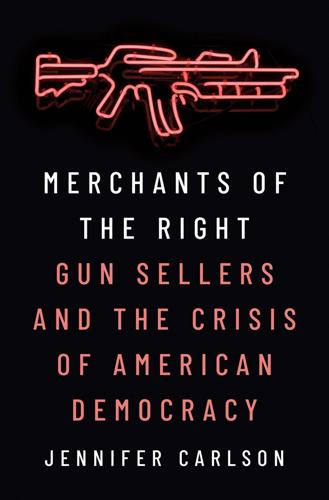
Merchants of the Right: Gun Sellers and the Crisis of American Democracy
by
Jennifer Carlson
Published 2 May 2023
Armed individualism, conspiracism, and partisanship allowed Robert and others to locate a sense of control amid chaos, tame the cacophony of divergent opinions and divisive rhetoric, and ultimately provide them with a sense of their own standing as good citizens amid a country they believed had gone astray. As Robert told me, “I’ve been using the words ‘fake news’ for a while now, for both sides of the aisle. And I think that [fake news] has caused the uncertainty, and when you have uncertainty, you have to have a guarantee, and the only guarantee in this country is the right to protect yourself.” In a world of hidden agendas, of abridged rights, of chaos, panic, and uncertainty, no one—in Robert’s view, at least—could argue with the barrel of a gun.
…
Recall Robert, the Florida gun seller profiled in the introduction, who explicitly connected the relationship between conspiracist skepticism and gun rights, summing up guns as the “only guarantee”: I’ve been using the words “fake news” for a while now, on both sides of the aisle. And I think that has caused the uncertainty, and when you have uncertainty, you have to have a guarantee, and the only guarantee in this country is the right to protect yourself. Robert links the insecurity of not knowing with a more fundamental insecurity, jumping from “fake news” to “the right to protect yourself” by alluding to a desire for a “guarantee.” In doing so, he points to the flexibility of guns as a solution to all kinds of uncertainty, distilling a crisis of knowledge into the issue of self-defense—literally jumping the gun by asserting the firearm as a go-to solution to the uncertainty caused by misinformation and disinformation.
…
As political scientist Mark Brewer remarked, “it is hard to imagine a better fit for the populist theme of conspiratorial threat than Donald Trump.”24 Brewer explains: “populism needs an enemy, and in many instances that enemy is engaged in a conspiracy to harm the people, to take from them what is rightfully theirs and destroy their way of life.”25 Under Trumpism, that enemy has often taken the form of racialized minorities (immigrants, people of color) and the elites that are believed to coddle them (liberals, Democrats, progressives). Loud proponent of Birther-ism (the debunked claim that Obama was not born in the United States and thus unqualified to be president), progenitor of “fake news” and “alternative facts” as household terms, and disregarder of inconvenient evidence in arenas from public health to electoral procedure,26 by 2020 Trump had earned a unique moniker from one of the journalist outlets he most reviled: the New York Times designated him as “Conspiracist in Chief.”27 Trump is a crucial figurehead in understanding the proliferation of conspiracist thinking on the Right today; however, conspiracism has had much deeper roots in conservative thought.

Cultural Backlash: Trump, Brexit, and Authoritarian Populism
by
Pippa Norris
and
Ronald Inglehart
Published 31 Dec 2018
Democratic Challenges, Democratic Choices: The Erosion of Political Support in Advanced Industrial Democracies. New York: Oxford University Press. 75. Shorenstein Center. May 2017. Combatting Fake News: An Agenda for Research and Action. https://shorensteincenter.org/combating-fakenews-agenda-for-research/. 76. www.nytimes.com/2017/12/12/world/europe/trump-fake-news-dictators .html. 77. M. Mitchell Waldrop. 2017. ‘News feature: The genuine problem of fake news.’ Proceedings of the National Academy of Arts and Sciences 114 (48): 12631–12634. 78. Knight Foundation. 2017. American Views: Trust, Media and Democracy. Gallup/Knight Foundation Survey. https://kf-site-production.s3.amazonaws .com/publications/pdfs/000/000/242/original/KnightFoundation_ AmericansViews_Client_Report_010917_Final_Updated.pdf. 79.
…
There has long been concern about an erosion of trust in political parties, parliaments and governments in Western societies.74 This is also where populism might be expected to have the strongest impact. For example, repeated rhetorical claims of ‘fake news’ by President Trump and White House spokespersons have sought to construct an alternative reality portraying facts as fungible and journalists as the partisan tool of an arrogant elite.75 This phrase has spread to many dictators when rejecting critical news reports, including Venezuela’s Nicolás Maduro, Syrian president Bashar al-Assad, Myanmar government officials dismissing news about genocide, and by Russia’s Foreign Ministry and the Chinese Communist Party’s People’s Daily.76 The fake news narrative from Trump, combined with social media users actually being targeted by Russian misinformation campaigns, is widely believed to have eroded public trust in the news media.77 For example, Gallup polls report that most Americans say that it is harder to be well informed and to determine which information is accurate today, with social media ‘bubbles’ reinforcing partisan polarization among like-minded networks.78 To examine the trends, we turn to the Eurobarometer surveys which have monitored institutional trust in political parties, national parliaments and national governments in EU member states from 2001 to 2017.
…
As unpacked fully in chapter 3, populist rhetoric makes two core claims about how societies should be governed.5 First, populism challenges the legitimate authority of the ‘establishment.’ It questions pluralist beliefs about the rightful location of power and authority in any state, including the role of elected representatives in democratic regimes. Favorite targets include the mainstream media (‘fake news’), elections (‘fraudulent’), politicians (‘drain the swamp’), political parties (‘dysfunctional’), public-sector bureaucrats (‘the deep state’), judges (‘enemies of the people’), protests (‘paid rent-a-mob’), the intelligence services (‘liars and leakers’), lobbyists (‘corrupt’), intellectuals (‘arrogant liberals’) and scientists (‘who needs experts?’)
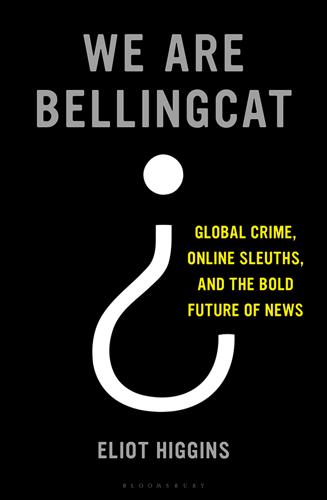
We Are Bellingcat: Global Crime, Online Sleuths, and the Bold Future of News
by
Eliot Higgins
Published 2 Mar 2021
. … In every case and at every level, we were taken aback by students’ lack of preparation.’89 Some 82 per cent of middle-school students could not tell a news story from an advertisement. The Swedes have developed teaching materials to educate kids about fake news, online propaganda and doctored imagery. Teenagers in Ukraine – perhaps the country most assaulted by propaganda trolls – are taking classes on media literacy to good effect: students who participated in a pilot programme were twice as alert to hate speech and 18 per cent better at spotting fake news.90 In Denmark, ‘Trolls in Your Feed’ is a publication for high-school kids, part of a push there against Russian disinformation.91 Classes, including cautionary study of false news reports, are working their way into school curricula in parts of the United States.92 In parallel, fact-checking projects have also taken off.
…
v=XrOAy6PfYlYwww.europol.europa.eu/stopchildabuse 82 www.europol.europa.eu/newsroom/news/you-have-identified-70-objects-taken-child-sexual-abuse-imageswww.europol.europa.eu/newsroom/news/your-help-we-are-21-000-steps-closer-to-saving-child-sexual-abusewww.bellingcat.com/news/uk-and-europe/2017/08/28/stop-child-abuse-2nd-update/ 83 www.bellingcat.com/news/uk-and-europe/2020/04/22/creating-impact-a-year-on-stop-child-abuse-trace-an-object/ 84 www.europol.europa.eu/newsroom/news/241-victims-of-child-sexual-abuse-safeguarded-thanks-to-global-law-enforcement-efforts 85 en.wikipedia.org/wiki/Russians_in_the_Baltic_states 86 www.thedailybeast.com/the-baltic-elves-taking-on-pro-russian-trolls 87 www.bbc.co.uk/news/av/world-europe-48401922/how-finland-fights-the-fake-news-trolls 88 disinfoportal.org/governments-countering-disinformation-the-case-of-sweden/ 89 stacks.stanford.edu/file/druid:fv751yt5934/SHEG%20Evaluating%20Information%20Online.pdfamp.usatoday.com/amp/2769781002?__twitter_impression=true 90 www.npr.org/2019/03/22/705809811/students-in-ukraine-learn-how-to-spot-fake-stories-propaganda-and-hate-speech?t=1553365503768 91 euvsdisinfo.eu/trolls-in-your-feed/ 92 www.cjr.org/special_report/students-of-truth.php 93 reporterslab.org/category/fact-checking/ 94 www.bbc.co.uk/news/av/world-africa-46828293/debunking-fake-news-in-nigeria 95 fullfact.org/blog/2019/jun/how-fact-checking-works/ 96 www.bellingcat.com/news/2020/04/10/covid-19-monitoring-the-global-slowdown/ 4 MICE CATCH CAT 1 Urban, op. cit., pp. 199–202. 2 www.bbc.co.uk/news/uk-43315636 3 www.wired.com/story/roman-dobrokhotov-insider-russia-gru-bellingcat/?
…
In hindsight, the phone-hacking scandal had a lasting impact, deepening an existing stereotype of journalists as a sleazy elite, both corrupt and corrupting. This reputation, which fails to distinguish between the ruthless reporters and the responsible, has been exploited by politicians (most notoriously President Donald Trump), with convenient dismissals of facts as ‘fake news’. As for Brown Moses, the phone-hacking scandal stood as a vital first stop, one that helped shape the Bellingcat method. I knew with absolute clarity that our work must stand in opposition to the worst traditional journalism. Our sourcing would remain as open to public scrutiny as possible. Political agendas should have nothing to do with our work.
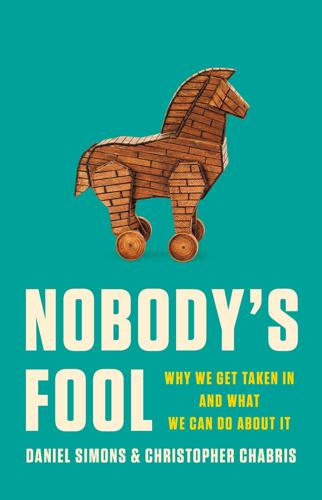
Nobody's Fool: Why We Get Taken in and What We Can Do About It
by
Daniel Simons
and
Christopher Chabris
Published 10 Jul 2023
Tetlock, author of Superforecasting “Whether you are wondering how frauds like Enron, Theranos, and FTX managed to fool so many people for so much of the time or just want to know how to protect yourself from the Next Big Fleece, Simons and Chabris have got you covered in this tour of how con artists, hoaxers, and troll farms prey on human cognitive weaknesses.” —Gary Marcus, author of Guitar Zero, Kluge, and Rebooting AI “In an era when more information is available to us than ever before, when claims of ‘fake news’ might themselves be fake news, Simons and Chabris offer a vital tool to not only inoculate ourselves against getting infected by misinformation, but also prevent us from spreading it to others.” —David McRaney, author of How Minds Change “The vast menagerie of scams detailed in Nobody’s Fool makes for entertaining—albeit frightening—reading.
…
Many online vendors routinely manipulate their product and business ratings on Amazon, Yelp, and other sites. Companies worth millions or billions of dollars sell nothing but tools for cheating—from bots and cheats for online games to prewritten papers and test answers for college courses. And around the world, political campaigns increasingly traffic in fake news and conspiracy theories or at best do not care whether their claims are true or false.7 Over the course of writing Nobody’s Fool, we studied hundreds of examples of deception of all sorts and applied our understanding of cognitive psychology to identify recurring features and emergent patterns.
…
The challenge comes in realizing when we need to check more and figuring out how to go about it. Here’s a straightforward example of how it works. SUPREMELY FAKE “It’s not the tweets, it’s the retweets that get you in trouble.… You see something that looks good and you don’t investigate it.” In a social media world of fake news and political disinformation, those are wise words (and ironic ones, considering who said them). Political disinformation goes nowhere unless its recipients spread it to their friends, and they spread it to theirs, and so on—which makes it critical to short-circuit this process when it reaches us.8 One of Donald Trump’s first acts on assuming the presidency in 2017 was to nominate a successor to Supreme Court justice Antonin Scalia.

Stories Are Weapons: Psychological Warfare and the American Mind
by
Annalee Newitz
Published 3 Jun 2024
Instead, students . . . were told to find a news article from any major news outlet, then spent three days in class “annotating” it, with 10 required annotations to mark “false information or facts.” Without research into the issues concerned, students were expected to find “fake news” in the professional journalists’ work they found online.6 The message was clear: the problem with Stonecipher wasn’t simply her role in the GSA; it was her work on the school newspaper, which encouraged students to question school authorities. And the school was fighting back with propaganda borrowed from national debates over so-called fake news. The downstream effects of America’s long-standing fixation on LGBT people as politically volatile (or “not neutral”) were inundating MacArthur High.
…
One might liken the situation to what happened when federal programs in the 1990s made it cheap and easy for police departments to acquire unused military equipment like semiautomatic weapons and tanks.7 Weapons intended for use in combat zones are now being deployed in the American suburbs. Peter Pomerantsev, author of This Is Not Propaganda, points out that military influence operations have bled over into civilian conflicts, creating a “flood of disinformation and deception, ‘fake news,’ [and] ‘information war.’ ”8 When we use psyops in our cultural conflicts, we tear down the wall between what’s appropriate in domestic disagreements among Americans and what’s acceptable in combat against a foreign enemy. As a science journalist and fiction author, I’ve spent most of my life at the crossroads between hard realities and the fantasies we entertain about them.
…
But it was also because, as Han Solo put it, Russian psyops are all about “maskirovka, or baffling people with bullshit.” Their government agencies flood social media with misinformation. As a second-order effect, it “confuses their own people too—nobody knows what’s true, and they don’t believe anything.” Influence operations are so ubiquitous in Russia that everything seems to be fake news, and Han Solo believes “the domestic audience has become numb to it.” They don’t trust their government; they don’t trust educators and scientists; and they don’t trust one another. Han Solo’s worry, and that of many of his colleagues, is that right-wing operations like the ones masterminded by Cambridge Analytica have a similar effect on US citizens.
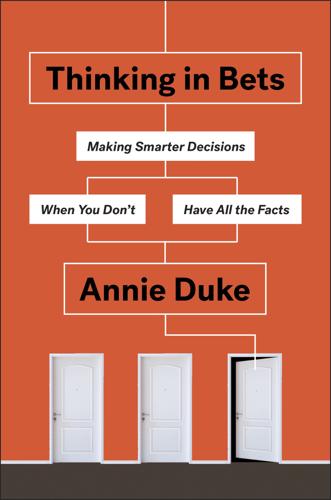
Thinking in Bets
by
Annie Duke
Published 6 Feb 2018
And once we believe it, protecting that belief guides how we treat further information relevant to the belief. This is perhaps no more evident than in the rise in prominence of “fake news” and disinformation. The concept of “fake news,” an intentionally false story planted for financial or political gain, is hundreds of years old. It has included such legendary practitioners as Orson Welles, Joseph Pulitzer, and William Randolph Hearst. Disinformation is different than fake news in that the story has some true elements, embellished to spin a particular narrative. Fake news works because people who already hold beliefs consistent with the story generally won’t question the evidence.
…
Fake news works because people who already hold beliefs consistent with the story generally won’t question the evidence. Disinformation is even more powerful because the confirmable facts in the story make it feel like the information has been vetted, adding to the power of the narrative being pushed. Fake news isn’t meant to change minds. As we know, beliefs are hard to change. The potency of fake news is that it entrenches beliefs its intended audience already has, and then amplifies them. The Internet is a playground for motivated reasoning. It provides the promise of access to a greater diversity of information sources and opinions than we’ve ever had available, yet we gravitate toward sources that confirm our beliefs, that agree with us.
…
Every bet we make in our lives depends on our beliefs: who we believe will make the best president, if we think we will like Des Moines, if we believe a low-fat diet will make us healthier, or even if we believe turkeys can fly. Being smart makes it worse The popular wisdom is that the smarter you are, the less susceptible you are to fake news or disinformation. After all, smart people are more likely to analyze and effectively evaluate where information is coming from, right? Part of being “smart” is being good at processing information, parsing the quality of an argument and the credibility of the source. So, intuitively, it feels like smart people should have the ability to spot motivated reasoning coming and should have more intellectual resources to fight it.

Big Business: A Love Letter to an American Anti-Hero
by
Tyler Cowen
Published 8 Apr 2019
By one estimate from Columbia Journalism Review, over a six-day period near the end of the campaign, the New York Times ran as many front-page stories about Clinton’s emails as it did about all policy issues over the sixty-nine days immediately preceding the election.5 I don’t think we ever will have a fully clear idea of the impact of “fake news” during the last presidential election, but keep in mind that only 14 percent of Americans reported that social media was their main source of electoral news. When it comes to opinions about elections, Facebook has nothing close to a monopoly, as it competes with family influences, private conversations, cable news, talk radio, email, books, and many other sources. Or look at the broader electoral picture. The Democratic Party did quite poorly with respect to governorships and state legislatures, and it does not seem that Facebook fake news or Russian-bought propaganda played a major role in those races.
…
Coming from another direction, Nicholas Carr wrote a book arguing that Google is partly responsible for the decline in our memories—why remember facts when you can just search for them? He asserted outright that Google makes us stupider. More recently, social media companies have been blamed for the ascent of Donald Trump, the renaissance of racism, “fake news,” and the collapse of appropriate democratic discourse. The framing of “great stuff for free” has been replaced by “the product is us.” Hostility toward American big business is nothing new, but of course the key question is to what extent the critics are correct. For the most part, to continue my love letter to American business, I would like to speak up for the tech companies, especially the big ones.
…
When it comes to Facebook news stories, Russian-manipulated content has received a lot of attention in recent times. I view that as a minor problem; the amount of money spent on such ads seems to have been quite small, at the time about 0.1 percent of Facebook’s daily advertising revenue. Many of the reports of “fake news” following the 2016 election strike me as misrepresentations. Most of us probably saw the clickbait headlines about how many people clicked on or liked totally false stories on Facebook, but as a share of total interactions with Facebook, under generous assumptions, that was only about 0.0006 percent of user actions.

An Ugly Truth: Inside Facebook's Battle for Domination
by
Sheera Frenkel
and
Cecilia Kang
Published 12 Jul 2021
He wanted to dismiss outright the notion that those stories had had any effect on how the electorate voted. “I think the idea that fake news on Facebook—of which it is a very small amount of the content—the idea that influenced the election in any way is a pretty crazy idea,”3 Zuckerberg said. His voice grew stronger as he continued. “I do think there is a certain profound lack of empathy in asserting that the only reason why someone could have voted the way they did is because they saw some fake news.” The statement, taken out of context, made headlines around the world. Facebook feeds were inundated with false news.
…
Employees who worked on the News Feed team raised the issue with managers, only to be told that false news didn’t run afoul of Facebook rules. This didn’t sit well with them. “I was grinding my teeth over that; we were seeing all these junk sites sitting really prominently in people’s feed. We knew people were opening Facebook and seeing totally fake news stories at the top of their home page, but we kept being told that there was nothing we could do—people could share whatever they wanted to share,” recalled one former News Feed employee. At a meeting with his manager in early June, he pointed out that many of the sites promoting false or misleading articles on Facebook appeared to be employing dubious methods to promote their stories.
…
He appeared as stunned as the rest of the team. Trump’s victory put Facebook and the nation into uncharted territory, he said. He warned that Facebook would be blamed for the swell of misinformation on the site ahead of the election. Some DC employees privately thought the company deserved the blame, that its lax policing of fake news had in fact helped elect Trump. We’re in this together, Kaplan said. He hadn’t endorsed the candidate. Many of his friends were “Never Trumpers,” Republicans who had taken vows to fight against Trump’s candidacy. And of course, it didn’t help that Sandberg, one of Clinton’s “Hillblazers” (the campaign’s designation for those who donated or raised at least $100,000 for the former secretary of state), had aligned herself so closely with the Clinton campaign.
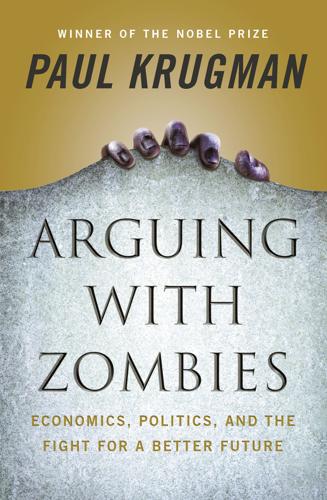
Arguing With Zombies: Economics, Politics, and the Fight for a Better Future
by
Paul Krugman
Published 28 Jan 2020
So major affairs of state are being decided not by the national interest, nor even by the interests of major groups within the nation, but by the financial interests and/or ego of the man in the White House. Is America amazing, or what? 17 On the Media BEYOND FAKE NEWS AFTER THE 2016 ELECTION, AS PEOPLE ASKED HOW SUCH A THING COULD happen, there was a lot of talk about the role of “fake news”—conspiracy theories and false claims spreading through social media. For example, Pizzagate—the claim, based on nothing, that high-ranking Democratic officials were connected with a child sex ring involving a Washington pizzeria—spread widely over the Internet, leading among other things to death threats to restaurant owners.
…
Politics Trump and the Aristocracy of Fraud Stop Calling Trump a Populist Partisanship, Parasites, and Polarization Why It Can Happen Here Who’s Afraid of Nancy Pelosi? Truth and Virtue in the Age of Trump Conservatism’s Monstrous Endgame Manhood, Moola, McConnell, and Trumpism 17. ON THE MEDIA Essay: Beyond Fake News Bait-and-Switch Triumph of the Trivial Is There Any Point to Economic Analysis? The Year of Living Stupidly Hillary Clinton Gets Gored 18. ECONOMIC THOUGHTS Essay: The Dismal Science How I Work The Instability of Moderation Transaction Costs and Tethers: Why I’m a Crypto Skeptic Credits Index ARGUING with ZOMBIES INTRODUCTION The Good Fight Punditry was never part of the plan.
…
In fact, when you review the history of Republican climate denial, it looks a lot like Trumpism. Climate denial, you might say, was the crucible in which the essential elements of Trumpism were formed. Take Trump’s dismissal of all negative information about his actions and their consequences as either fake news invented by hostile media or the products of a sinister “deep state.” That kind of conspiracy theorizing has long been standard practice among climate deniers, who began calling the evidence for global warming—evidence that has convinced 97 percent of climate scientists—a “gigantic hoax.” What was the evidence for this vast conspiracy?

System Error: Where Big Tech Went Wrong and How We Can Reboot
by
Rob Reich
,
Mehran Sahami
and
Jeremy M. Weinstein
Published 6 Sep 2021
Examining their social media consumption and mapping stories to existing lists of “fake news,” they estimated that more than a quarter of Americans had been exposed to at least one fake news article in that period. Though this is a large number, the actual volume of engagement with fake news sites is actually quite low. As a share of visits to “hard news” sites, less than 2 percent of visits involved engagement with a fake news article. More troubling is that some people are much more at risk of encountering and sharing disinformation online. The most significant predictor of fake news sharing behavior is age: older people are much more likely to pass along fake news stories to their friends.
…
The goal is to undermine the ability of people to make a choice or judgment with clarity about the verifiable facts. Concerns about the spread of disinformation on social media burst into public view with Russian interference in the 2016 presidential election. Teenagers in the Macedonian town of Veles were paid up to $8,000 per month each to operate approximately a hundred pro-Trump fake news sites with innocuous-sounding names such as USADailyPolitics.com. Russia’s Internet Research Agency, one of the “troll factories,” served as an industrial-scale manufacturer of disinformation. According to Twitter, the IRA operated 3,814 accounts, and individual operators were responsible for creating a high volume of content daily.
…
Two additional things are different now, both of which matter for the prospects of building an effective regulatory regime for internet platforms. The first is the level of partisan polarization. It’s difficult to imagine parties on opposite ends of the political spectrum coming to agreement on what constitutes fake news and misinformation, when hateful language becomes incitement to violence, and whether a curation process is politically neutral. The second is that legislators historically justified the regulation of broadcasting in terms of the physical limits of airspace that created spectrum scarcity. Because there wasn’t enough broadcast spectrum to enable a fully competitive market, broadcasters were expected to serve the public interest as well as their own commercial interests.

The Road to Unfreedom: Russia, Europe, America
by
Timothy Snyder
Published 2 Apr 2018
See also the compendium published by the Los Angeles Times under the title Our Dishonest President. Many Americans did not see Enemy: Michael M. Grynbaum, “Trump Calls the News Media the ‘Enemy of the American People,’ ” NYT, Feb. 17, 2017. “Fake news”: “Trump, in New TV Ad, Declares First 100 Days a Success,” NYT, May 1, 2017; Donald Trump, Tweet, Jan. 6, 2018: “the Fake News Mainstream Media”. Cf “The Kremlin’s Fake Fake-News Debunker,” RFE/RL, Feb. 22, 2017. In the Russian model See Matthew Gentzkow, “Polarization in 2016,” Stanford University, 2016. The politics of eternity tempts 1930s as ideal: Wolff, “Ringside with Steve Bannon”; Timothy Snyder, “Trump Is Ushering In a Dark New Conservatism,” TG, July 15, 2017. 1929 and 0.1%: Saez and Zucman, “Wealth Inequality,” 3.
…
For Aristotle “oligarchy” meant rule by the wealthy few; the word in this sense was revived in the Russian language in the 1990s, and then, with good reason, in English in the 2010s. Concepts and practices moved from east to west. An example is the word “fake,” as in “fake news.” This sounds like an American invention, and Donald Trump claimed it as his own; but the term was used in Russia and Ukraine long before it began its career in the United States. It meant creating a fictional text that posed as a piece of journalism, both to spread confusion about a particular event and to discredit journalism as such. Eternity politicians first spread fake news themselves, then claim that all news is fake, and finally that only their spectacles are real. The Russian campaign to fill the international public sphere with fiction began in Ukraine in 2014, and then spread to the United States in 2015, where it helped to elect a president in 2016.
…
For a profound description of the undoing of the psychological preconditions to democratic politics, see Schlögel, Entscheidung in Kiew, 17–22. Though internet platforms Facebook products: Elizabeth Dwoskin, Caitlin Dewey, and Craig Timberg, “Why Facebook and Google are struggling to purge fake news,” WP, Nov. 15, 2016. 56 million: Craig Timberg, “Russian propaganda effort helped spread ‘fake news’ during election, experts say,” WP, Nov. 24, 2016. Russians promote Fox and Breitbart: Eisentraut, “Russia Pulling Strings.” The “pizzagate” Marc Fisher, John Woodrow Cox, and Peter Hermann, “Pizzagate: From rumor, to hashtag, to gunfire in D.C.,” WP, Dec. 6, 2016; Ben Popken, “Russian trolls pushed graphic, racist tweets to American voters,” NBC, Nov. 30, 2017; Mary Papenfuss, “Russian Trolls Linked Clinton to ‘Satanic Ritual,’ ” HP, Dec. 1, 2016.
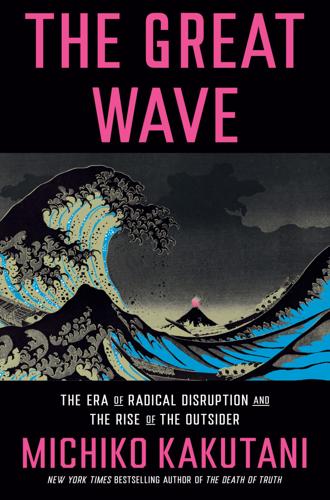
The Great Wave: The Era of Radical Disruption and the Rise of the Outsider
by
Michiko Kakutani
Published 20 Feb 2024
GO TO NOTE REFERENCE IN TEXT Finland launched a national curriculum: Jon Henley, “How Finland Starts Its Fight Against Fake News in Primary Schools,” The Guardian, Jan. 29, 2020, theguardian.com/world/2020/jan/28/fact-from-fiction-finlands-new-lessons-in-combating-fake-news; Eliza Mackintosh, “Finland Is Winning the War on Fake News. What It’s Learned May Be Crucial to Western Democracy,” CNN, edition.cnn.com/interactive/2019/05/europe/finland-fake-news-intl/; Jenny Gross, “How Finland Is Teaching a Generation to Spot Misinformation,” The New York Times, Jan. 10, 2023, nytimes.com/2023/01/10/world/europe/finland-misinformation-classes.html.
…
Totalitarian propaganda, Arendt argued, derives its power from its ability “to shut the masses off from the real world,” making them unable or unwilling to recognize “the distinction between fact and fiction (i.e., the reality of experience) and the distinction between true and false (i.e., the standards of thought).” Trump came right out and said this, when he slammed journalists as “the fake news” in a 2018 speech and told the crowd “what you’re seeing and what you’re reading is not what’s happening.” And most Republicans quickly acquiesced and took up residence in the upside-down world predicated upon Trump’s Big Lie that he won the 2020 election. It’s a world based on willful denial and Orwellian arithmetic (“two and two make five”), a world where Fox News’ old slogan “Fair and Balanced” meant the exact opposite.
…
Smartphone use and access to broadband exploded at an exponential rate and came with unexpected side effects—reminiscent, in some ways, of one of those folktales where a genie with a wicked sense of humor grants someone three wishes but none of those wishes turn out quite the way the protagonist expected. Digital technology did connect people in myriad new ways, but it also divided them and became a vector for partisan hatred. It gave voters the means for increased civic engagement, but also bombarded them with fake news and disinformation that subverted faith in our electoral system. The tools that amplified the voices of ordinary people could also be exploited by governments intent on surveillance and by tech giants that harvest and monetize our data. Many would-be countercultural revolutionaries in Silicon Valley soon found themselves heading up—or working for—wildly successful companies, many times bigger and more powerful than IBM in its heyday, companies that would balloon, with terrifying speed, into monopolistic behemoths.
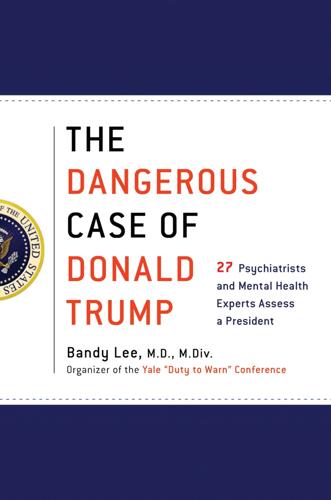
The Dangerous Case of Donald Trump: 27 Psychiatrists and Mental Health Experts Assess a President
by
Bandy X. Lee
Published 2 Oct 2017
“Voices of the Women’s March: Angela Davis, Gloria Steinem, Madonna, Alicia Keys, Janet Mock, and More.” 2017. Democracy Now, January 23. www.democracynow.org/2017/1/23/voices_of_the_womens_march_angela. Wagner, Alex. 2017. “Trump vs. the Very Fake News Media.” The Atlantic, February 17. www.theatlantic.com/politics/archive/2017/02/trump-vs-the-very-fake-news-media/516561/. Ware, Doug G. 2017. “Trump Deflects Blame for Yemen Raid That Killed U.S. Navy SEAL.” UPI, February 28. www.upi.com/Top_News/US/2017/02/28/Trump-deflects-blame-for-Yemen-raid-that-killed-US-Navy-SEAL/3241488319168/. Weinstein, Edwin A. 1981.
…
The following well-known quotes, which we’ve organized into categories—some of them overlap multiple categories—compiled by Michael Kruse and Noah Weiland for Politico Magazine (“Donald Trump’s Greatest Self Contradictions,” May 5, 2016) illustrate his extreme present hedonistic penchant for off-roading from his script and/or saying or tweeting whatever pops into his mind, making things up, repeating fake news, or simply lying: DEHUMANIZATION • “Sometimes, part of making a deal is denigrating your competition” (The Art of the Deal, 1987). • “When Mexico sends its people, they’re not sending their best … They’re sending people that have a lot of problems, and they’re bringing those problems with us.
…
For example, not only is Obama a Muslim born in Kenya but, according to Trump, he had a Hawaiian government bureaucrat murdered to cover up the truth about his birth certificate (“How amazing, the state health director who verified copies of Obama’s birth certificate died in a plane crash today. All others lived,” Trump said); Antonin Scalia was murdered (“[T]hey say they found a pillow on his face, which is a pretty unusual place to find a pillow”); later, fake news websites sponsored by the Russians laid this “murder” at Hillary’s feet; and Ted Cruz’s father aided the Kennedy assassination, the mother of all conspiracy theories (“What was he doing with Lee Harvey Oswald shortly before the death? Before the shooting? It’s horrible”). And still the world was shocked when Trump accused Barack Obama of illegally wiretapping Trump Tower.

We Are the Nerds: The Birth and Tumultuous Life of Reddit, the Internet's Culture Laboratory
by
Christine Lagorio-Chafkin
Published 1 Oct 2018
(What was seen by conspiracy subscribers as a linchpin was that Podesta was once invited over email to a dinner by a nonprofit organization’s government relations head who’d noted that her stepgrandchildren would likely be playing in the pool.) Soon it was being spread around in the ecosystem of fake news, including Infowars, and even was tweeted by soon-to-be national security adviser Mike Flynn. On Reddit, members of conspiracy-theory-heavy subreddits piled onto r/pizzagate. R/pizzagate’s problems were not limited to disseminating fake news and wild theories, as well as spoofs of these theories, provided by lulz-seeking trolls. The Reddit community team noted instances of doxing—and warned moderators their community could be subject to a ban.
…
While Reddit was secretly investigating, and keeping mum to the public on its findings, outside researchers determined that during the lead-up to the election, there’d been not just an uptick, but a 1,600 percent increase in links on conservative subreddits to what they’d dubbed “controversial” media—dubious news sources that spread hyperbole, unverified claims, and highly opinionated articles framed as truth. Republican forums had spread fake news at a rate sixteen times higher than prior to the election cycle—or at any other time in the past decade, researchers found. Certain conservative subreddits (such as r/The_Donald and r/Conservative, the two major hubs, and r/HillaryForPrison, an extreme anti-Clinton forum) were home to 80 percent of all fake news on Reddit, during and after the 2016 election cycle, they determined. From the outset of Trump’s presidency, instances remained high. Reddit wouldn’t admit anything of this sort publicly until six months later.
…
Just six minutes after his first Tripathi tweet, Luke Russert tweeted again, saying, “It’s still early w unconfirmed reports, but if Redit [sic] was right with the Sunil Tripathi theory, it’s changed the game 4ever.” Reddit wasn’t right. Three years before social networks would fuel a vicious cycle of fake news—often aided by Russian disinformation outlets, domestic right-wing meme warriors, and politically minded propagandists—Reddit had seeded an entirely incorrect and highly damaging news cycle. Two hours later, around 5 a.m. the entire theory fell apart. NBC reported that Tripathi was not a suspect.
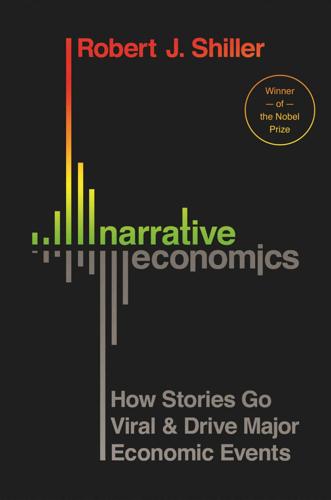
Narrative Economics: How Stories Go Viral and Drive Major Economic Events
by
Robert J. Shiller
Published 14 Oct 2019
During the economic recovery, however, most economists did not recognize the flashbulb quality of the September 2001 attacks, which encouraged a contagious constellation of narratives and may have profoundly affected US businesses and the US economy.20 The Ubiquity of Fake News In attempting to be vivid, storytellers often resort to fiction or fake news, thereby providing amplified tales. The history of narratives shows that “fake news” is not new. In fact, people have always liked amusing stories, and they spread stories that they suspect are not true, as for example in urban legends. In fact, people often spread titillating stories without making any clear moral decision whether they are spreading falsehoods or not. Fake news often makes an impression on people because the brain processes that implement reality monitoring are imperfect.
…
All of these sites have built their reputation by debunking fake news rather than by reporting all sides of a controversy without taking sides, which was once common in the mainstream news media. Unfortunately, most people do not read these fact-checking websites. In addition, their credibility has recently been compromised by fake news designed to harm their reputations, leading some members of the general public to give up the hope of ever finding the real truth. What conclusions can we draw? Given its presence over the centuries and millennia, fake news seems to be part of the normal human condition. Fake performances, fake stories, and fake heroes are ubiquitous.
…
New narratives might be interpreted as exogenous, helping us identify additional quasi-controlled experiments. In fact, the gold discoveries and wars that Friedman and Schwartz emphasized likely were exogenous because they were made possible by innovations in popular narratives, such as gold rush stories or fake news about foreign conspiracy. We must be wary of many (but not all) economists’ supposition that the causality always runs from economic events to narratives, and not the other way around. There has been a lively debate about the impact of self-fulfilling prophecies in economics. Sociologist Robert K.

Doppelganger: A Trip Into the Mirror World
by
Naomi Klein
Published 11 Sep 2023
Similarly, when Trump, after the 2016 election, accused half the press corps of being “fake news,” he was beginning a process that would lead his supporters to doubt everything they read and watched in the mainstream press. But he was also doing something else. He was appropriating a term that had been used by communications scholars to describe a very real phenomenon: manufactured propaganda that is designed to seem like real news but is entirely made-up. Fake articles like that had been a boon to Trump, including one particularly viral one that falsely reported that the pope had endorsed him. But now, thanks to his appropriation of the term “fake news,” we were all robbed of a useful phrase to describe the phenomenon.
…
“Forces opposed to justice”: Olúfmi O. Táíwò, Reconsidering Reparations (New York: Oxford University Press, 2022), 199. “There is a resistance to memory”: Jacqueline Rose, Proust Among the Nations: From Dreyfus to the Middle East (Chicago: University of Chicago Press, 2011), 120. “the biggest fake news story”: Dana Kennedy, “‘Biggest Fake News Story in Canada’: Kamloops Mass Grave Debunked by Academics,” New York Post, May 27, 2022. He left a long, rambling manifesto: Maxine Joselow, “Suspect in Buffalo Rampage Cited ‘Ecofascism’ to Justify Actions,” Washington Post, May 17, 2022. “I’m struck by the similarity”: Julian Brave NoiseCat @jnoisecat, tweet, May 16, 2022, Twitter. 14.
…
Maybe it can drive a whole society mad. “Abuse of power begets conspiracy allegations, and the men and women of conspiratorial capital at least partly have themselves to blame for the extreme and fictitious allegations made against them,” Marcus Gilroy-Ware, a digital journalism scholar, writes in After the Fact? The Truth About Fake News. Sarah Kendzior, in her 2022 book They Knew: How a Culture of Conspiracy Keeps America Complacent, also explores the way impunity for real conspiracies helps fuel the rise of fantastical beliefs. The conspiracy theories swirling about the Great Reset may well be a case in point. When they started showing up at the early anti-lockdown protests, they were presented as if a great secret was being revealed.

The Truth Machine: The Blockchain and the Future of Everything
by
Paul Vigna
and
Michael J. Casey
Published 27 Feb 2018
But here’s the bigger problem: in a world where trust has eroded sharply, where our government doesn’t work, and where companies that once guaranteed jobs for life are now either outsourcing them or hiring robots, Trump’s lies can seem minor in comparison to the more systemic breach of trust voters are feeling. Once-trusted news organizations are now thrust into competition with dubious online purveyors of disinformation, with both being accused of peddling “fake news.” The public’s store of trust in institutions is being depleted, and without resolving that breakdown, our democracy will continue to deteriorate at the hands of politicians and media that tell them what they want to hear. Trust—particularly trust in our institutions—is a vital social resource, the true lubricant of all human interaction.
…
Consider how Facebook’s secret algorithm chooses the news to suit your ideological bent, creating echo chambers of like-minded angry or delighted readers who are ripe to consume and share dubious information that confirms their pre-existing political biases. It’s why during the 2016 U.S. presidential campaign, a group of teens in Macedonia could produce fake news articles, which made claims like that the pope had endorsed Donald Trump, which generated more likes, shares, and advertising dollars than real news items produced by fully funded and researched news outlets. And it’s not just that, for example, Facebook and Google have become such large social hubs.
…
Perhaps inevitably, consumers are turning to ad-blocking software, with some 600 million mobile and desktop devices using these services as of early 2017, a trend that will leave labor-intensive newsrooms starved for the funds they need to produce quality journalism. The result of all this is an ever-diminishing quality of information and a distorted set of incentives that makes it profitable for “fake news” providers to capture markets and earn ad dollars—essentially by lying, both with the false content they deliver to readers and the false Internet traffic data they share with advertisers. This in turn gives outsized influence to people who deliberately misinform for power or profit. Whatever your politics, we can all agree that plunging confidence in the quality of information, in an environment in which once undisputed facts are subject to bias and debate, is insidiously harmful to the democratic process and society at large.

Mindf*ck: Cambridge Analytica and the Plot to Break America
by
Christopher Wylie
Published 8 Oct 2019
The firm experimented with scaled online disinformation, fake news, and mass profiling. It worked with Russian agents and employed hackers to break into opposition candidates’ email accounts. Soon enough, having perfected its methods far from the attention of Western media, CA shifted from instigating tribal conflict in Africa to instigating tribal conflict in America. Seemingly out of nowhere, an uprising erupted in America with manic cries of MAGA! and Build the wall! Presidential debates suddenly shifted from policy positions into bizarre arguments about what was real news and what was fake news. America is now living in the aftermath of the first scaled deployment of a psychological weapon of mass destruction.
…
Petersburg, giving presentations in Russian and describing Cambridge Analytica’s efforts to build a psychological profiling database of American voters. We had Palantir executives coming in and out of the office. We had a major Russian company with ties to the FSB probing for information about our American data assets. We had Nix giving the Russians a presentation about how good we were at spreading fake news and rumors. And then there were the internal memos outlining how Cambridge Analytica was developing new hacking capacity in concert with former Russian intelligence officers. In the year after Steve Bannon became vice president, Cambridge Analytica started deploying tactics that eerily foreshadowed what was still to come in the 2016 American presidential election.
…
Elizabeth Denham, the U.K. information commissioner, was so incensed by Facebook’s actions that she made a rare appearance the next day on British news, issuing a statement that Facebook’s actions would “potentially compromise a regulatory investigation.” The reaction on both sides of the Atlantic was instant and explosive. I was called before the parliamentary inquiry into “fake news and disinformation.” It would be the first of many public and secret hearings, covering everything from Cambridge Analytica’s use of hackers and bribes to Facebook’s data breach to Russian intelligence operations. Mark D’Arcy, the BBC’s parliamentary correspondent covering the hearing, said, “I think the [DCMS committee] hearing with Chris Wylie is, by a distance, the most astounding thing I’ve seen in Parliament.”

The Undertow: Scenes From a Slow Civil War
by
Jeff Sharlet
Published 21 Mar 2023
Gnosticism, which dates at least to the second century CE, is the path Christianity did not take, most of its texts destroyed as heretical, most of its ideas forgotten until the 1945 discovery in Egypt of thirteen ancient books in a sealed clay jar. Or maybe not so much forgotten as bastardized over the centuries into countless conspiracy theories, the deep-seated belief that there exist truths they—there is always a they in all these ersatz Gnosticisms, from the bishops and bureaucrats of the early Church to the modern media peddling fake news—do not want us, the people, to perceive. There’s something almost democratic in the modern American distortion of Gnosticism. “Recognize what is before your eyes,” the Gospel of Thomas advises, “and that which is hidden will be revealed.” One needs no diplomas to know truth, no “data” contrived by “experts.”
…
“I am the one whom they call the Law,” declares “The Thunder,” “and you have called me Lawlessness.” Yes. Both. The power and the pique, at the same time. Trump was for his followers what Gnostics called “The Depth,” or, perhaps more aptly, “The Abyss.” Gnostics believed that what other Christians considered God was a “demiurge”—fake news, a front, an entity deluded into believing itself the source of power because it had constructed the material world. In the gospel of Trump, that was the bureaucracy of government. Cut the red tape, drain the swamp, deregulate—let the Trump within you be Trump—and the true depth of the divine is revealed.
…
“Word up, Lord!” called a believer. Would it have helped if I raised my hand—know-it-all—and said that Guam, according to numerous reputable sources (on my phone) was already home to roughly 170,000 U.S. citizens? That Tierra del Fuego was an archipelago split between Argentina and Chile? No. Fake news. Americans in Guam? That was as believable as Joe Biden winning California. So it went. Hillary, we learned, had secretly already been executed. What, you’ve seen her since? Green screens. Big Tech trickery, the name we give witchcraft in the twenty-first century. And there are, in fact, two United States, the one that “lives in our hearts” and the wicked one, which is actually a corporation.

Off the Edge: Flat Earthers, Conspiracy Culture, and Why People Will Believe Anything
by
Kelly Weill
Published 22 Feb 2022
Douglas, “Belief in Conspiracy Theories: Basic Principles of an Emerging Research Domain,” European Journal of Social Psychology 48, no. 7 (December 2018): 897–908, https://doi.org/10.1002/ejsp.2530. 128 an anti-Muslim threat Ali Mashuri and Esti Zaduqisti, “The Effect of Intergroup Threat and Social Identity Salience on the Belief in Conspiracy Theories over Terrorism in Indonesia: Collective Angst as a Mediator,” International Journal of Psychological Research 8, no. 1 (January 2015): 24–35, https://doi.org/10.21500/20112084.642. 128 Black and gay populations Jasmine Garsd, “Long before Facebook, The KGB Spread Fake News about Aids,” NPR, August 22, 2018, https://www.npr.org/2018/08/22/640883503/long-before-facebook-the-kgb-spread-fake-news-about-aids. 129 “loss, weakness, or disunity” Uscinski and Parent, American Conspiracy Theories, 131. 129 “fear of being socially excluded” Van Prooijen and Douglas, “Belief in Conspiracy Theories.” 130 “shut the Flat Earthers up” Q drop #2622, December 12, 2018. 130 “no relationship with me or my kids” Jesselyn Cook, “ ‘I Miss My Mom’: Children of QAnon Believers Are Desperately Trying to Deradicalize Their Own Parents,” HuffPost, February 11, 2021, https://www.huffpost.com/entry/children-of-qanon-believers_n_601078e9c5b6c5586aa49077. 130 “not the man I married” “Brainwashing Our Kids,” coolmom321, February 14, 2021, https://www.reddit.com/r/QAnonCasualties/comments/ljpjnp/brainwashing_our_kids/. 131 “His burden” K.
…
News, November 12, 2020, https://www.yahoo.com/news/trump-and-his-followers-are-on-the-crazy-train-with-unhinged-election-conspiracies-republican-congressman-says-213451478.html. 199 small conspiratorial Facebook pages Jessica Guynn, “Trump Allies Banned from Twitter Still Spreading QAnon, Election Fraud Conspiracy Theories There,” USA Today, February 25, 2021. https://www.usatoday.com/story/tech/2021/02/25/trump-twitter-ban-qanon-election-fraud-conspiracy-lies/6818001002. 199 Trump campaign’s payroll Maggie Haberman and Zolan Kanno-Youngs, “Trump Weighed Naming Election Conspiracy Theorist as Special Counsel,” New York Times, December 19, 2020, https://www.nytimes.com/2020/12/19/us/politics/trump-sidney-powell-voter-fraud.html. 200 automatically generated fact-checks Neal Mohan and Robert Kyncl, “Building a Better News Experience on YouTube, Together,” YouTube Official Blog, July 9, 2018, https://blog.youtube/news-and-events/building-better-news-experience-on. 201 found to contain misleading information “Facebook’s Third-Party Fact-Checking Program,” Facebook Journalism Project, https://www.facebook.com/journalismproject/programs/third-party-fact-checking. 201 study that tracked browser history Scott K. Johnson, “Data Shows Who Was Reading ‘Fake News’ before 2016 US Election,” Ars Technica, March 4, 2020, arstechnica.com/science/2020/03/data-show-who-was-reading-fake-news-before-2016-us-election. 201 never be fooled by one Asheley R. Landrum and Alex Olshansky, “Third-Person Perceptions and Calls for Censorship of Flat Earth Videos on YouTube,” Media and Communication 8, no. 2 (2020): 387–400, http://dx.doi.org/10.17645/mac.v8i2.2853. 201 “reducing recommendations of borderline content” “Continuing Our Work,” YouTube Official Blog, January 25, 2019, https://blog.youtube/news-and-events/continuing-our-work-to-improve. 202 nearly 1.4 million website hits Jack Nicas, “Alex Jones Said Bans Would Strengthen Him.
…
Google’s products are so popular that even the most powerful people in the world have trafficked in bogus conspiracy theories about the search engine’s algorithm. In August 2018, an unscientific study posted on a right-wing blog snowballed its way through the conservative media ecosystem until it reached then president Donald Trump’s Twitter feed. “Google search results for ‘Trump News’ shows only the viewing/reporting of Fake New Media,” Trump tweeted very early on a weekday morning. “In other words, they have it RIGGED, for me & others, so that almost all stories & news is BAD. Fake CNN is prominent. Republican/Conservative & Fair Media is shut out. Illegal? 96% of results on ‘Trump News’ are from National Left-Wing Media, very dangerous.”
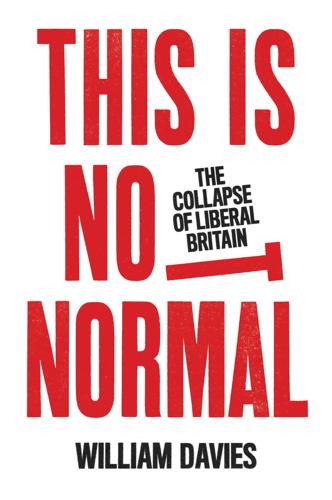
This Is Not Normal: The Collapse of Liberal Britain
by
William Davies
Published 28 Sep 2020
Plenty of lines can be drawn between 2008 and the political upheavals of 2016.7 The financial crisis also played a decisive role in politicising a younger generation on the left, who made an important contribution to Jeremy Corbyn’s unexpected electoral surge in 2017.8 The effect of tech platforms on liberal democracies has been feverishly discussed. Following Britain’s 2016 referendum and Trump’s election victory, liberals fixated on the malign power of Facebook, Cambridge Analytica, Russian ‘troll farms’ and Vladimir Putin to sway election outcomes by planting ‘fake news’ in front of the eyeballs of easily persuaded swing voters. The lack of any editorial bottlenecks or regulation meant that a kind of information anarchy had broken out, heralding a ‘post-truth’ world in which nobody could tell truth from lies any longer. The fine-grained psychographic profiling techniques facilitated by Facebook meant that democracy could now be ‘hacked’ by targeting critical voters with precisely the right message to influence their vote.
…
The data deluge The current threat to democracy is often seen to emanate from new forms of propaganda, with the implication that lies are being deliberately fed to a naive and over-emotional public. The simultaneous rise of populist parties and digital platforms has triggered well-known anxieties regarding the fate of truth in democratic societies. Fake news and internet echo chambers are believed to manipulate and ghettoise certain communities, for shadowy ends. Key groups – millennials or the white working class, say – are accused of being easily persuadable, thanks to their excessive sentimentality. This diagnosis exaggerates old-fashioned threats while overlooking new phenomena.
…
While it is true that arguments rage over dodgy facts and figures (concerning climate change or the details of Britain’s trading relations), many of the most bitter controversies of our news cycle concern the framing and weighting of different issues and how they are reported, rather than the facts of what actually happened. The problem we face is not, then, that certain people are oblivious to the ‘mainstream media’, or are victims of fake news, but that we are all seeking to see through the veneer of facts and information provided to us by public institutions. Facts and official reports are no longer the end of the story. Such scepticism is healthy and, in many ways, the just deserts of an establishment that has been caught twisting the truth too many times.
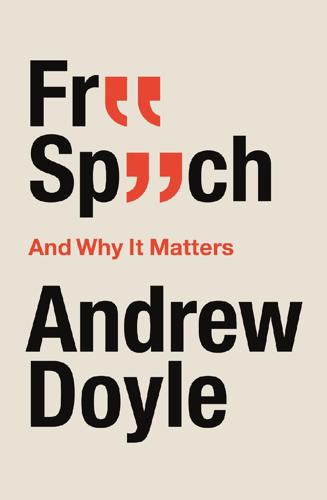
Free Speech And Why It Matters
by
Andrew Doyle
Published 24 Feb 2021
Whenever I hear demands for a book to be banned, my first thought is invariably: ‘How can I get hold of a copy?’ The same principle applies to disinformation. The term ‘fake news’ is now often deployed as a strategy to delegitimise alternative viewpoints. But even in cases where deception is unambiguously the motive, censorship usually has the unintended effect of accelerating the dissemination of the material in question. Many purveyors of ‘fake news’ rely on the narrative that they are brave truth-tellers fighting back against oppressive forces who would see them silenced. It is therefore far better to discredit false testimony than to suppress it and thereby re-enforce disingenuous claims to victimhood.
…
Worse still, the increased polarisation of politics means that many social media users whose views happen to align with big tech are cheering on the deterioration of their own freedoms because, for now, the impact is only being felt by their opponents. Tribal allegiances are blinding people to the long-term effects of corporate hegemony. While it is true that social media companies have been subjected to governmental pressure to monitor ‘hate speech’ and ‘fake news’ on their platforms, there has also been a markedly paternalistic shift in the way in which their speech codes are formulated. Twitter, for instance, once saw itself as ‘the free speech wing of the free speech party’, and its CEO Jack Dorsey boasted that ‘Twitter stands for freedom of expression’, but a recent New York Times interview with the company’s co-founder Evan Williams suggests that this commendable ideal no longer applies: ‘I thought once everybody could speak freely and exchange information and ideas, the world is automatically going to be a better place,’ Williams said.
…
Index A abuses of state power 67 academic freedom 60–3 Academic Freedom in an Age of Conformity (Williams) 63 Alibhai-Brown, Yasmin 21, 22 Almansor (Heine) 94 American Civil Liberties Union (ACLU) 19, 93 Ancient Greeks 58 ‘anecdotal evidence’ 32 anti-censorship campaigners 17 anti-Semitism 18–19, 66, 80 Arendt, Hannah 72 Areopagitica (Milton) 3–4 ‘art’ 56 artists 55–8 Associated Press 50 Atwood, Margaret 26 Auschwitz 80 authoritarianism 89 avoidance of conflict 35–6 B Barrett, Lisa Feldman 70 ‘Battle of Cable Street’ 20 Benn, Tony 69 Berkeley, University of California 33 Bernstein, Eduard 97 big tech corporations 11–13, 45 ‘blackshirts’ 20 blasphemy 51 Boghossian, Peter 74 ‘bonfire of the vanities’ 55 books censors 4 destruction 94 humanistic culture 9–10 moral or immoral 83 Botticelli, Sandro 55 Boyle, Danny 84 Bradbury, Ray 11 Brexit 67 British Library 95 C cancel culture 25–30, 42–3, 63, 96 Cardozo, Benjamin 33 Catholic Church 9 Cato Institute 28 Cave, Nick 27 Censored (Coleman) 87 censorship and the censors 85 and criticism 16, 24 and the Internet 13 metaphor of sunlight 44 of printed texts 4 right-leaning tabloids 7 right-wing talking point 6 and social media 11, 45 tech giants 13 Charbonnier, Stéphane (‘Charb’) 50, 51, 53 Charlie Hebdo 50, 51–3 ‘Charter 77’ committee 3 Chomsky, Noam 26 Christakis, Erika 61 Christakis, Nicholas 61–2 ‘Clean Up TV’ campaign 83 Clinton, Chelsea 79 Coleman, Paul 87 College of Policing 88 comedians and comedy 49–50, 56 see also satire Communications Act 2003 (UK) 66, 89 Communications Decency Act 1996 (US) 12 concept creep 46–7, 68 consent 75 Cope, Edward Drinker 74 Cox, Jo 82 Crash (Cronenberg) 84 criticism 16, 24, 32, 57 Cronenberg, David 84 ‘crowded theatre’ argument 22–4 Crown Prosecution Service 88 ‘culture wars’ 2, 63–4 D Danning, Gordon 81 Darwin, Charles 74 Davis, Daryl 17–18, 69 ‘Day of Absence’ protests 62 debating defeated ideas 68 Declaration of the Rights of Man and of the Citizen 10 decolonising authors 96 ‘Decolonising Working Group,’ British Library 95 Defending My Enemy (Neier) 19 democratic accountability 11 ‘despotism of custom’ (Mill) 57 dictatorships 90 ‘direct-effects model’ 84 Disclosure and Barring Service (DBS) 88 disinformation 85 Dissertation on First-Principles of Government (Paine) 18 diversity 33 ‘dog whistle’ 16 Dorsey, Jack 12 dystopian fiction 11 E Eddo-Lodge, Reni 27–8 emotional and intellectual comfort 37 emotional pain 75 ‘The English People’ (Orwell) 59 Enlightenment 10 European Court of Human Rights 87 European Union referendum (2016) 59 Evergreen State College 62 F Facebook 12, 13 ‘fact-checking’ 13 Fahrenheit 451 (Bradbury) 11 ‘fake news’ 12, 85 fascism 32–3, 67–8 feminism 71 First Amendment of the United States Constitution 10, 11 First Principles (Spencer) 43 forced conversions 43 Foucault, Michel 73 Foundation for Individual Rights in Education (FIRE) 61 Founding Fathers 10, 11 France 50 Frankfurt School 83 ‘free speech crisis’ 89 ‘Free Speech Is Killing Us’ (Marantz) 81–2 French Revolution 10 Fritsch, Theodor 66 G Galileo 4 ‘gaslighting’ 25–6 gender identity 30 gender-neutral pronouns 89 gender self-identification 26, 71 Goebbels, Joseph 66, 80, 94 Gopnik, Adam 72 ‘gramophone mind’ (Orwell) 97 ‘grossly offensive’ online speech 89 H Haidt, Jonathan 70, 71 Hall, Radclyffe 84 Hardy, Thomas 75 Harper’s Magazine 26–7 Hate Crime Operational Guidance (College of Policing) 88 ‘hate crimes’ 88 ‘hate incidents’ 88 ‘hate speech’ 12, 19, 87–91, 96–7 ‘hate speech’ laws 22, 52–3, 66–7, 87 Havel, Václav 3 Hazlitt, William 43, 60 Heine, Heinrich 94 higher education 60–1 see also universities historical discrimination 33 Hitchens, Christopher 3 Hitler 10, 66 Hobbes, Thomas 6 Holland, Tom 73–4 Holmes, Oliver Wendell 22–3 Holocaust denial 68 House of Commons 82 humanistic culture 9–10 Humberside Police 1 Hutus 77 I identity issues 33–4 identity-obsessed activism 83 ‘identity quakes’ 74 inciting violence 77–85 Internet 13, 45, 96 see also social media Is Free Speech Racist?
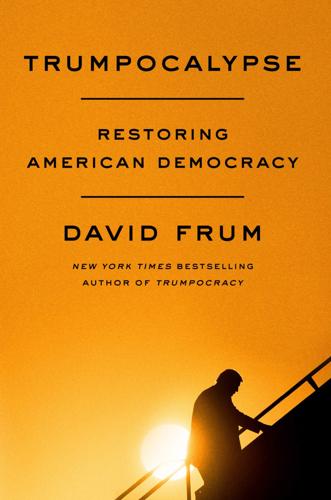
Trumpocalypse: Restoring American Democracy
by
David Frum
Published 25 May 2020
Hudson, “Nostalgia and the Swamp: Aging Politics in the Age of Trump,” Generations, Winter 2019, https://www.asaging.org/blog/nostalgia-and-swamp-aging-politics-age-trump. 16. David Z. Hambrick and Madeline Marquardt, “Cognitive Ability and Vulnerability to Fake News,” Scientific American, February 6, 2018, https://www.scientificamerican.com/article/cognitive-ability-and-vulnerability-to-fake-news/; Andrew Guess, Jonathan Nagler, and Joshua Tucker, “Less Than You Think: Prevalence and Predictors of Fake News Dissemination on Facebook,” Science Advances, January 9, 2019, https://advances.sciencemag.org/content/5/1/eaau4586. 17. Grayson K. Vincent and Victoria A. Velkoff, “The Next Four Decades: The Older Population in the United States: 2010 to 2050,” U.S.
…
Over-sixty-fives voted for Trump over Clinton fifty-eight to thirty-nine in 2016. Over-sixty-fives are much less likely to care about climate change than younger Americans—and radically more likely to describe immigration as “a threat to our way of life.”15 People over sixty-five are less able to recognize fake news when they see it, more likely to be influenced by it after they see it, and vastly more likely to share it on Facebook.16 And very soon, there will be a lot more of them. America’s elderly population will grow fast. People born in the peak year of the baby boom, 1958, turn sixty-five in 2023. By 2030, almost one in five Americans, 19 percent, will be older than sixty-five.17 (Barring some sad accident, I will be one of them.)
…
Among voters who approved of Trump’s performance, still only one in eight described him as “unpresidential.”29 Trump kept assuring himself that all was going well, that every bump in the road was the work of unfair media: @newtgingrich just stated that there has been no president since Abraham Lincoln who has been treated worse or more unfairly by the media than your favorite President, me! At the same time there has been no president who has accomplished more in his first two years in office!30 —January 19, 2019 Nothing funny about tired Saturday Night Live on Fake News NBC! Question is, how do the Networks get away with these total Republican hit jobs without retribution? Likewise for many other shows? Very unfair and should be looked into. This is the real Collusion!31 —February 17, 2019 93% Approval Rating in the Republican Party. 52% Approval Rating overall!
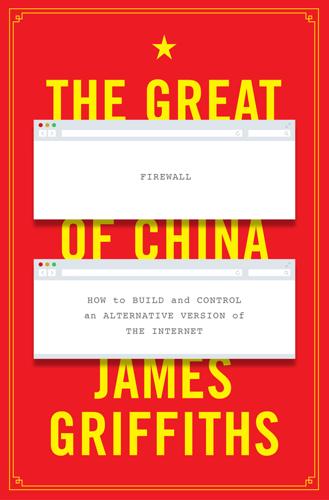
The Great Firewall of China
by
James Griffiths;
Published 15 Jan 2018
Thielman, ‘Google offers legal support to some YouTube users in copyright battles’, The Guardian, 19 November 2015, https://www.theguardian.com/technology/2015/nov/19/google-youtube-copyright-lawsuits-fair-use-dmca 18M. Sheffield, ‘“Fake news” or free speech: is Google cracking down on left media?’, Salon, 18 October 2017, https://www.salon.com/2017/10/18/fake-news-or-free-speech-is-google-cracking-down-on-left-media/ 19R. Gallagher, ‘Google plans to launch censored search engine in China, leaked documents reveal’, The Intercept, 1 August 2018, https://theintercept.com/2018/08/01/google-china-search-engine-censorship/ 20Letter from Google employees to Sundar Pichai and others, August 2018. 21B.
…
The doctrine of cyber-sovereignty is a vision of total internet control, and emanates from a stance of deep suspicion about the web and its potential risk to state power. For years, China’s censors were mocked as analogue ostriches with their heads in the digital sand, but their vision has proven far more prophetic than that of the internet freedom advocates opposing them. China’s censors are able to point to fake news, social media hate and hacking attacks, and to claim, not completely untruthfully, that these aren’t serious problems in China. The Great Firewall, the colossal censorship apparatus that monitors all aspects of the Chinese internet, provides security and stability from the dangerous chaos of the unfiltered web, full as it is of terrorists, child molesters, hackers and scammers.
…
While this enables them to attract support in the US, it often hurts them back at home, and assists Beijing’s efforts to depict the opposition movement within Hong Kong as a creation of foreign meddlers. Too often, as well, those who would promote dissident thought abroad are far less tolerant of similar efforts at home. In the panic over so-called ‘fake news’ and allegations of Russian interference in US politics, complaints about broadcaster RT’s and other state media’s efforts to boost critics of US domestic and foreign policy mirror those made against Radio Free Asia and Voice of America when they make an effort to interview and profile Chinese or Russian dissidents.
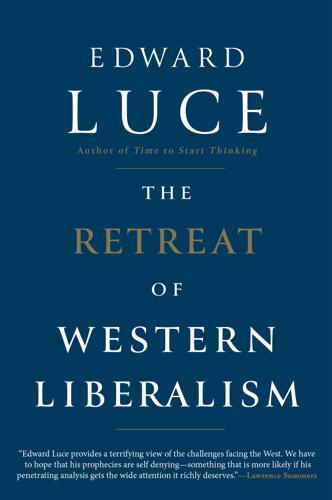
The Retreat of Western Liberalism
by
Edward Luce
Published 20 Apr 2017
‘[The] new Kremlin won’t make the same mistake the old Soviet Union did: it will never let TV become dull,’ writes Peter Pomerantsev. ‘Most [Russians] are happy with the trade-off: complete freedom for complete silence.’63 Short of martial law, the US media is highly unlikely to be silenced, or co-opted, by Trump. When Steve Bannon, Trump’s senior White House adviser, who helped pioneer much of the fake news that helped Trump to win, told Washington’s journalists to shut up, he was met with derision.64 Yet he was echoing a popular view in the heartland about an industry that has suffered an even steeper fall in its credibility than the political classes. If the US media is now the opposition party, as Bannon put it, where will the people stand?
…
It is a good description of the networked world. They say the first casualty of war is truth. In cyber war, truth is a primary target. States, such as Russia, and non-state entities, such as Isis, can generate fake stories at will and make them look as though they came from elsewhere. The system will do the rest. In 2016, a huge number of fake news stories were picked up via Facebook. That year was also a record one for Facebook advertising revenues. It would be expecting a lot of America’s third-largest company to kill such a large source of its revenue growth – even assuming it could develop an algorithm that sifted true from false. When confusion is a strategic goal, it is doubly important for public figures to have the credibility to refute dangerous inaccuracies.
…
advertising, 65–6, 178 Afghanistan, 80 Africa: Chinese investment in, 32, 84; economic growth in, 21, 31, 32; future importance of, 200–1; and liberal democracy, 82, 83, 183; migration from, 140, 181; slave trade, 23, 55, 56 African-Americans, 104 age demographics, 34–5, 155, 156; ageing populations, 39; baby boom years, 39, 121; and gig economy, 64; life expectancy, 38, 58, 59, 60; millennials, 40–1, 121–2; and support for democracy, 121–2; and voter turnout, 103–4 Airbnb, 63 Albright, Madeleine, 6 American Revolution, 9 Andorra, 72 Andreessen, Marc, 61 Apple, 27, 31, 59, 60, 156 Arab Spring, 12, 82 Arab world, 202 Arendt, Hannah, The Origins of Totalitarianism, 128 Aristotle, 138, 200 artificial intelligence, 13, 34, 51–5, 56, 60–2 Asian Development Bank, 84 Asian economies, 21–2, 162; as engine of global growth, 21, 30, 31, 32; and Industrial Revolution, 23–4; and optimism, 202; of South Asia, 31; see also China; India Asian flu crisis (1997), 29 Asian Infrastructure Investment Bank (AIIB), 84 Attlee, Clement, 90 Australia, 84, 160, 167, 175 Austria, 15–16, 116 autocracy: and America’s post-9/11 blunders, 80–1, 85, 86; authoritarian nature of Trump, 133, 169, 171, 178–9; China as, 78, 80, 83–6, 159–60, 165, 201; and end of Cold War, 5, 78–9; and First World War, 115; and Great Recession, 83–4; and illiberal democracy, 204; myth of as more efficient, 170–1; popular demagogues, 137; rising support for, 11, 73, 82–3, 122 automation: and Chinese workforce, 62, 169; communications technology, 13, 52–5, 56–7, 59–60, 61–6, 67–8 see also digital revolution; and education, 197, 198; and Henry Ford, 66–7; political responses to, 67–8; steam revolution, 24, 55–6; techno-optimists, 52, 60; in transport, 54, 55, 56–7, 58, 59, 61 Bagehot, Walter, 115 Baker Institute, 68 Baldwin, Richard, 25, 27, 61 Bangladesh, 32 bank bail-outs, 193 Bannon, Steve, 130, 148, 173, 181–2 Belgium, 140 Bell, Daniel, 37 Berlin Wall, fall of (1989), 3–5, 6, 7, 74, 77 Bernstein, Carl, 132 Berra, Yogi, 57 Bhagwati, Jagdish, 159 Bismarck, Otto von, 42, 78, 120, 156, 161 Black Death, 25 Blair, Tony, 45, 89–90, 91 Blum, Léon, 116 Boer War (1899-1902), 155, 156 Bortnikov, Alexander, 6 Botswana, 82 Brazil, 29 Brecht, Bertolt, 86, 87 Breitbart News, 148 Brexit, 15, 73, 88, 92, 98, 101, 104, 119, 120, 163; UKIP’s NHS spending claim, 102; urban–hinterland split in vote, 47, 48, 130; xenophobia during campaign, 100–1 Britain: elite responses to Nazi Germany, 117; foreign policy goals, 179; gig economy, 63; growth of inequality in modern era, 43, 46, 47, 48, 50–1; history in popular imagination, 163; Imperial Preference, 22; London’s elites, 98–100, 130; nineteenth-century franchise extension, 114–15; policy towards China, 164; rapid expansion in nineteenth century, 24; and rise of Germany, 156, 157; rising support for authoritarianism, 122; separatism within, 140; Thatcher’s electoral success, 189–90 British East India Company, 22 British National Party (BNP), 100 Brown, Gordon, 99 Brownian movement, 172 Bryan, William Jennings, 111 Brynjolfsson, Erik, 60 Buffet, Warren, 199 Bush, George W., 31, 73, 79–81, 103, 156, 157, 163, 165, 182 Bush Republicans, 189 Cameron, David, 15, 92, 98, 99–100 Carnegie, Andrew, 42–3 Cherokee Indians, 114, 134 Chicago, 48 China: as autocracy, 78, 80, 83–6, 159–60, 165, 201; circular view of history, 11; colonial exploitation of, 20, 22–3, 55; decoupling of economy from West (2008), 29–30, 83–4; democracy activists in, 86, 140; entry to WTO (2001), 26; exceptionalism, 166; expulsion of Western NGOs, 85; future importance of, 200–1; and global trading system, 19–20, 26–7; Great Firewall in, 129; handover of Hong Kong (1997), 163–4; history in popular imagination, 163–4; hostility to Western liberalism, 84–6, 159–60, 162; and hydrogen bomb, 163; and Industrial Revolution, 22, 23–4; internal migration in, 41; investment in developing countries, 32, 84; military expansion, 157, 158; as nuclear power, 175; Obama’s trip to (2009), 159–60; political future of, 168–9, 202; pragmatic development route, 28, 29–30; pre-Industrial Revolution economy, 22; rapid expansion of, 13, 20–2, 25–8, 30, 35, 58, 157, 159; and robot economy, 62; Shanghai Cooperation Organization, 80; Trump’s promised trade war, 135, 145, 149; and Trump’s victory, 85–6, 140; US naval patrols in seas off, 148, 158, 165; US policy towards, 25–6, 145–6, 157–61, 165; US–China war scenario, 145–53, 161; in Western thought, 161–2; Xi’s crackdown on internal dissent, 168; Zheng He’s naval fleet, 165–6 China Central Television (CCTV), 84, 85 Christianity, 10, 105 Churchill, Winston, 98, 117, 128, 169 cities, 47–51, 130 class: creeping gentrification, 46, 48, 50–1; emerging middle classes, 21, 31, 39, 159; in Didier Eribon’s France, 104–10; Golden Age for Western middle class, 33–4, 43; Hillaryland in USA, 87–8; ‘meritocracy’, 43, 44–6; mobility as vanishing in West, 43–6; move rightwards of blue-collar whites, 95–9, 102, 108–10, 189–91, 194–5; poor whites in USA, 95–6, 112–13; populism in late nineteenth century, 110–11; and post-war centre-left politics, 89–92, 99; ‘precariat’ (‘left-behinds’), 12, 13, 43–8, 50, 91, 98–9, 110, 111, 131; and Trump’s agenda, 111, 151, 169, 190; urban liberal elites, 47, 49–51, 71, 87–9, 91–5, 110, 204; West’s middle-income problem, 13, 31–2, 34–41 Clausewitz, Carl von, 161 Clinton, Bill, 26, 71, 73, 90, 97–8, 157–9 Clinton, Hillary, 15, 16, 47, 67, 79, 160, 188; 2016 election campaign, 87–8, 91–4, 95–6, 119, 133; reasons for defeat of, 94–5, 96–8 Cold War: end of, 3–5, 6, 7, 74, 77, 78, 117, 121; nuclear near misses, 174; in US popular imagination, 163; and Western democracy, 115–16, 117, 183 Colombia, 72 colonialism, European, 11, 13, 20, 22–3; anti-colonial movements, 9–10; and Industrial Revolution, 13, 23–5, 55–6 Comey, James, 133 communism, 3–4, 5, 6, 105–8, 115 Confucius Institutes, 84 Congress, US, 133–4 Copenhagen summit (2009), 160 Coughlin, Father, 113 Cowen, Tyler, 40, 50, 57 Crick, Bernard, 138 crime, 47 Crimea, annexation of (2014), 8, 173 Cuba, 165 Cuban Missile Crisis (1962), 165, 174 cyber warfare, 176–8 Cyborg, 54 D’Alema, Massimo, 90 Daley, Richard, 189 Danish People’s Party, 102 Davos Forum, 19–20, 27, 68–71, 72–3, 91, 121 de Blasio, Bill, 49 de Gaulle, Charles, 106, 116 de Tocqueville, Alexis, 38, 112, 126–7 democracy, liberal: as an adaptive organism, 87; and America’s Founding Fathers, 9, 112–13, 123, 126, 138; and Arab Spring, 82; Chinese view of US system, 85–6; communism replaces as bête noire, 115; concept of ‘the people’, 87, 116, 119–20; damaged by responses to 9/11 attacks, 79–81, 86, 140, 165; and Davos elite, 68–71; de Tocqueville on, 126–7; declining faith in, 8–9, 12, 14, 88–9, 98–100, 103–4, 119–23, 202–3; demophobia, 111, 114, 119–23; economic growth as strongest glue, 13, 37, 103, 201–2; efforts to suppress franchise, 104, 123; elite disenchantment with, 121; elite fear of public opinion, 69, 111, 118; failing democracies (since 2000), 12, 82–3, 138–9; and ‘folk theory of democracy’, 119, 120; Fukuyama’s ‘End of History’, 5, 14, 181; and global trilemma, 72–3; and Great Recession, 83–4; and Hong Kong, 164; idealism of Rousseau and Kant, 126; illiberal democracy concept, 119, 120, 136–7, 138–9, 204; in India, 201; individual rights and liberty, 14, 97, 120; late twentieth century democratic wave, 77–8, 83; and mass distraction, 127, 128–30; need for regaining of optimism, 202–3; need to abandon deep globalisation, 73–4; nineteenth-century fear of, 114–15; and plural society, 139; popular will concept, 87, 118, 119–20, 126, 137–8; post-Cold War triumphalism, 5, 6, 71; post-war golden era, 33–4, 43, 89, 116, 117; post-WW2 European constitutions, 116; and ‘precariat’ (‘left-behinds’), 12, 13, 43–8, 50, 91, 98–9, 110, 111, 131; the rich as losing faith in, 122–3; Russia’s hostility to, 6–8, 79, 85; space for as shrinking, 72–3; technocratic mindset of elites, 88–9, 92–5, 111; Trump as mortal threat to, 97, 104, 111, 126, 133–6, 138, 139, 161, 169–70, 178–84, 203–4; and US-led invasion of Iraq (2003), 8, 81, 85; Western toolkit for, 77–9; see also politics in West Diamond, Larry, 83 digital revolution, 51–5, 59–66, 67–8, 174; cyber-utopians, 52, 60, 65; debate over future impact, 56; and education, 197, 198; exponential rate of change, 170, 172, 197; internet, 34, 35, 127, 128, 129–30, 131, 163; internet boom (1990s), 34, 59; and low productivity growth, 34, 59, 60; as one-sided exchange, 66–7; and risk-averse/conformist mindset, 40 diplomacy and global politics: annexation of Crimea (2014), 8, 173; China’s increased prestige, 19–20, 26–8, 29–30, 35, 83–5, 159; declining US/Western hegemony, 14, 21–2, 26–8, 140–1, 200–1; existential challenges in years ahead, 174–84; multipolarity concept, 6–8, 70; and nation’s popular imagination, 162–3; parallels with 1914 period, 155–61; and US ‘war on terror’, 80–1, 140, 183; US–China relations, 25–6, 145–6, 157–61, 165; US–China war scenario, 145–53, 161; US–Russia relations under Obama, 79 Doha Round, 73 drugs and narcotics, 37–8 Drutman, Lee, 68 Dubai, 48 Durkheim, Émile, 37 Duterte, Rodrigo, 136–7, 138 economists, 27 economy, global see global economy; globalisation, economic; growth, economic Edison, Thomas, 59 education, 42, 44–5, 53, 55, 197, 198 Egypt, 82, 175 electricity, 58, 59 Elephant Chart, 31–3 Enlightenment, 24, 104 entrepreneurialism, decline of in West, 39–40 Erdoğan, Recep Tayyip, 137 Eribon, Didier, 104–10, 111 Ethiopia, 82 Europe: ‘complacent classes’ in, 40; decline of established parties, 89; geopolitical loss, 141; growth of inequality in modern era, 43; identity politics in, 139–40; migration crisis, 70, 100, 140, 180–1; nationalism in, 10–11, 102, 108–9; nineteenth-century diplomacy, 7–8, 155–6, 171–2; post-war constitutions in, 116; Putin’s interference in, 179, 180; as turning inwards, 14 European Commission, 118, 120 European Union, 72, 117–19, 139–40, 179–80, 181, 201; see also Brexit Facebook, 39, 54, 67, 178 fake news, 130, 148, 178–9 Farage, Nigel, 98–9, 100, 184 fascism, 5, 77, 97, 100, 117 Federal Bureau of Investigation (FBI), 131–2, 133 Felt, Mark, 131–2, 134 financial crisis, global (2008), 27, 29, 30, 91; Atlantic recession following, 30, 63–4, 83–4 financial services, 54 Financial Times, 136, 200 Finland, 139 First World War, 115, 154–5 Flake, Jeff, 134 Florida, Richard, 47, 49, 50, 51 Flynn, Michael, 148, 149 Foa, Roberto Stefan, 123 Ford, Henry, 66–7 Foucault, Michel, 107 France, 15, 37, 63, 102, 104–10, 116; 1968 Paris demonstrations, 188; French Revolution, 3 Franco, General Francisco, 77 Franco-German War (1870–1), 155–6 Frank, Robert H., 30, 35–6, 44 Franklin, Benjamin, 204 Freelancer.com, 63 Friedman, Ben, The Moral Consequences of Economic Growth, 38 Friedman, Thomas, 74 Frontex (border agency), 181 FSB, 6 Fukuyama, Francis, 12, 83, 101, 139, 193–4; ‘The End of History?’
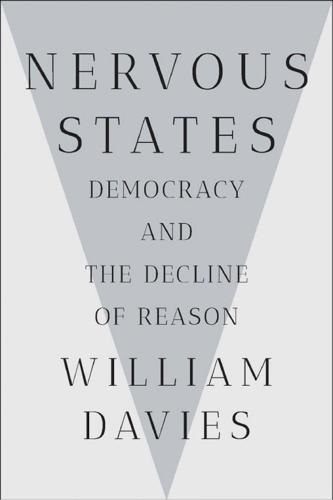
Nervous States: Democracy and the Decline of Reason
by
William Davies
Published 26 Feb 2019
A/B testing, 199 Acorn, 152 ad hominem attacks, 27, 124, 195 addiction, 83, 105, 116–17, 172–3, 186–7, 225 advertising, 14, 139–41, 143, 148, 178, 190, 192, 199, 219, 220 aerial bombing, 19, 125, 135, 138, 143, 180 Affectiva, 188 affective computing, 12, 141, 188 Agent Orange, 205 Alabama, United States, 154 alcoholism, 100, 115, 117 algorithms, 150, 169, 185, 188–9 Alsace, 90 alt-right, 15, 22, 50, 131, 174, 196, 209 alternative facts, 3 Amazon, 150, 173, 175, 185, 186, 187, 192, 199, 201 American Association for the Advancement of Science, 24 American Civil War (1861–5), 105, 142 American Pain Relief Society, 107 anaesthetics, 104, 142 Anderson, Benedict, 87 Anthropocene, 206, 213, 215, 216 antibiotics, 205 antitrust laws, 220 Appalachia, 90, 100 Apple, 156, 185, 187 Arab Spring (2011), 123 Arendt, Hannah, xiv, 19, 23, 26, 53, 219 Aristotle, 35, 95–6 arrogance, 39, 47, 50 artificial intelligence (AI), 12–13, 140–41, 183, 216–17 artificial video footage, 15 Ashby, Ross, 181 asymmetrical war, 146 atheism, 34, 35, 209 attention economy, 21 austerity, 100–101, 225 Australia, 103 Australian, 192 Austria, 14, 60, 128, 153–75 Austria-Hungary (1867–1918), 153–4, 159 authoritarian values, 92–4, 101–2, 108, 114, 118–19, 211–12 autocracy, 16, 20, 202 Babis, Andrej, 26 Bacon, Francis, 34, 35, 95, 97 Bank of England, 32, 33, 55, 64 Banks, Aaron, 26 Bannon, Steve, 21, 22, 60–61 Bayh–Dole Act (1980), 152 Beck Depression Inventory, 107 Berlusconi, Silvio, 202 Bernays, Edward, 14–15, 16, 143 “Beyond the Pleasure Principle” (Freud), 110 Bezos, Jeff, 150, 173 Big Data, 185–93, 198–201 Big Government, 65 Big Science, 180 Bilbao, Spain, 84 bills of mortality, 68–71, 75, 79–80, 81, 127 Birmingham, West Midlands, 85 Black Lives Matter, 10, 225 Blackpool, Lancashire, 100 blind peer reviewing, 48, 139, 195 Blitz (1940–41), 119, 143, 180 blue sky research, 133 body politic, 92–119 Bologna, Italy, 96 bookkeeping, 47, 49, 54 Booth, Charles, 74 Boston, Massachusetts, 48 Boyle, Robert, 48–50, 51–2 BP oil spill (2010), 89 brainwashing, 178 Breitbart, 22, 174 Brexit (2016–), xiv, 23 and education, 85 and elites, 33, 50, 61 and inequality, 61, 77 and NHS, 93 and opinion polling, 80–81 as self-harm, 44, 146 and statistics, 61 Unite for Europe march, 23 Vote Leave, 50, 93 British Futures, 65 Brooks, Rosa, 216 bullying, 113 Bureau of Labor, 74 Bush, George Herbert Walker, 77 Bush, George Walker, 77, 136 cadaverous research, 96, 98 call-out culture, 195 Calvinism, 35 Cambridge, Cambridgeshire, 85 University, 84, 151 Cambridge Analytica, 175, 191, 196, 199 Cameron, David, 33, 73, 100 cancer, 105 Capital in the Twenty-First Century (Piketty), 74 capital punishment, 92, 118 car accidents, 112–13 cargo-cult science, 50 Carney, Mark, 33 cartography, 59 Case, Anne, 99–100, 102, 115 Catholicism, 34 Cato Institute, 158 Cavendish, William, 3rd Earl of Devonshire, 34 Central Intelligence Agency (CIA), 3, 136, 151, 199 Center for Policy Studies, 164 chappe system, 129, 182 Charles II, King of England, Scotland, and Ireland, 34, 68, 73 Charlottesville attack (2017), 20 Chelsea, London, 100 Chevillet, Mark, 176 Chicago School, 160 China, 13, 15, 103, 145, 207 chloroform, 104 cholera, 130 Chongqing, China, 13 chronic pain, 102, 105, 106, 109 see also pain Churchill, Winston, 138 citizen science, 215, 216 civil rights movements, 21, 194 civilians, 43, 143, 204 von Clausewitz, Carl, 128–35, 141–7, 152 and defeat, 144–6 and emotion, 141–6, 197 and great leaders, 146–7, 156, 180–81 and intelligence, 134–5, 180–81 and Napoleon, 128–30, 133, 146–7 and soldiers, number of, 133–4 war, definition of, 130, 141, 193 climate change, 26, 50, 165, 205–7, 213–16 Climate Mobilization, 213–14 climate-gate (2009), 195 Clinton, Hillary, 27, 63, 77, 99, 197, 214 Clinton, William “Bill,” 77 coal mining, 90 cognitive behavioral therapy, 107 Cold War, 132, 133, 135–6, 137, 180, 182–4, 185, 223 and disruption, 204–5 intelligence agencies, 183 McCarthyism (1947–56), 137 nuclear weapons, 135, 180 scenting, 135–6 Semi-Automatic Ground Environment (SAGE), 180, 182, 200 space race, 137 and telepathy, 177–8 colonialism, 59–61, 224 commercial intelligence, 152 conscription, 127 Conservative Party, 80, 154, 160, 163, 166 Constitution of Liberty, The (Hayek), 160 consumer culture, 90, 104, 139 contraceptive pill, 94 Conway, Kellyanne, 3, 5 coordination, 148 Corbyn, Jeremy, 5, 6, 65, 80, 81, 197, 221 corporal punishment, 92 creative class, 84, 151 Cromwell, Oliver, 57, 59, 73 crop failures, 56 Crutzen, Paul, 206 culture war, xvii Cummings, Dominic, 50 currency, 166, 168 cutting, 115 cyber warfare, xii, 42, 43, 123, 126, 200, 212 Czech Republic, 103 Daily Mail, ix Damasio, Antonio, 208 Darwin, Charles, 8, 140, 142, 157, 171, 174, 179 Dash, 187 data, 49, 55, 57–8, 135, 151, 185–93, 198–201 Dawkins, Richard, 207, 209 death, 37, 44–5, 66–7, 91–101 and authoritarian values, 92–4, 101–2, 211, 224 bills of mortality, 68–71, 75, 79–80, 81, 89, 127 and Descartes, 37, 91 and Hobbes, 44–5, 67, 91, 98–9, 110, 151, 184 immortality, 149, 183–4, 224, 226 life expectancy, 62, 68–71, 72, 92, 100–101, 115, 224 suicide, 100, 101, 115 and Thiel, 149, 151 death penalty, 92, 118 Deaton, Angus, 99–100, 102, 115 DeepMind, 218 Defense Advanced Research Projects Agency (DARPA), 176, 178 Delingpole, James, 22 demagogues, 11, 145, 146, 207 Democratic Party, 77, 79, 85 Denmark, 34, 151 depression, 103, 107 derivatives, 168, 172 Descartes, René, xiii, 36–9, 57, 147 and body, 36–8, 91, 96–7, 98, 104 and doubt, 36–8, 39, 46, 52 and dualism, 36–8, 39, 86, 94, 131, 139–40, 179, 186, 223 and nature, 37, 38, 86, 203 and pain, 104, 105 Descartes’ Error (Damasio), 208 Devonshire, Earl of, see Cavendish, William digital divide, 184 direct democracy, 202 disempowerment, 20, 22, 106, 113–19 disruption, 18, 20, 146, 147, 151, 171, 175 dog whistle politics, 200 Donors Trust, 165 Dorling, Danny, 100 Downs Survey (1655), 57, 59, 73 doxing, 195 drone warfare, 43, 194 drug abuse, 43, 100, 105, 115–16, 131, 172–3 Du Bois, William Edward Burghardt, 74 Dugan, Regina, 176–7 Dunkirk evacuation (1940), 119 e-democracy, 184 Echo, 187 ecocide, 205 Economic Calculation in the Socialist Commonwealth (Mises), 154, 166 economics, 59, 153–75 Economist, 85, 99 education, 85, 90–91 electroencephalography (EEG), 140 Elizabethan era (1558–1603), 51 embodied knowledge, 162 emotion and advertising, 14 artificial intelligence, 12–13, 140–41 and crowd-based politics, 4, 5, 8, 9, 10, 15, 16, 21, 23–7 Darwin’s analysis, 8, 140 Descartes on, 94, 131 and experts, 53, 60, 64, 66, 90 fear, 11–12, 16–22, 34, 40–45, 52, 60, 142 Hobbes on, 39, 41 James’ analysis, 140 and markets, 168, 175 moral, 21 and nationalism, 71, 210 pain, 102–19 sentiment analysis, xiii, 12–13, 140, 188 and war, 124–6, 142 empathy, 5, 12, 65, 102, 104, 109, 112, 118, 177, 179, 197 engagement, 7, 219 England Bank of England founded (1694), 55 bills of mortality, 68–71, 75, 79–80, 81, 89, 127 civil servants, 54 Civil War (1642–51), 33–4, 45, 53 Elizabethan era (1558–1603), 51 Great Fire of London (1666), 67 hospitals, 57 Irish War (1649–53), 59 national debt, 55 Parliament, 54, 55 plagues, 67–71, 75, 79–80, 81, 89, 127 Royal Society, 48–52, 56, 68, 86, 208, 218 tax collection, 54 Treasury, 54 see also United Kingdom English Defense League, ix entrepreneurship, 149, 156, 162 environment, 21, 26, 50, 61, 86, 165, 204–7, 213–16 climate change, 26, 50, 165, 205–7, 213–16 flying insects, decline of, 205, 215 Environmental Protection Agency, 23 ether, 104 European Commission, 60 European Space Agency, 175 European Union (EU), xiv, 22, 60 Brexit (2016–), see under Brexit and elites, 60, 145, 202 euro, 60, 78 Greek bailout (2015), 31 immigration, 60 and nationalism, 60, 145, 146 quantitative easing, 31 refugee crisis (2015–), 60, 225 Unite for Europe march (2017), 23 Exeter, Devon, 85 experts and crowd-based politics, 5, 6, 23, 25, 27 Hayek on, 162–4, 170 and representative democracy, 7 and statistics, 62–91 and technocracy, 53–61, 78, 87, 89, 90 trust in, 25–33, 63–4, 66, 74–5, 77–9, 170, 202 violence of, 59–61 Expression of the Emotions in Man and Animal, The (Darwin), 8, 140 Exxon, 165 Facebook, xvi, 15, 201 advertising, 190, 192, 199, 219, 220 data mining, 49, 185, 189, 190, 191, 192, 198, 219 and dog whistle politics, 200 and emotional artificial intelligence, 140 as engagement machine, 219 and fake news, 199 and haptics, 176, 182 and oligarchy, 174 and psychological profiling, 124 and Russia, 199 and sentiment analysis, 188 and telepathy, 176–8, 181, 185, 186 and Thiel, 149, 150 and unity, 197–8 weaponization of, 18 facial recognition, 13, 188–9 failed states, 42 fake news, 8, 15, 199 Farage, Nigel, 65 fascism, 154, 203, 209 fear, 11–12, 16–22, 34, 40–45, 52, 60, 142 Federal Bureau of Investigation (FBI), 137 Federal Reserve, 33 feeling, definition of, xii feminism, 66, 194 Fifth Amendment, 44 fight or flight, 111, 114 Financial Times, 15 first past the post, 13 First World War, see World War I Fitbit, 187 fixed currency exchange rates, 166 Florida, Richard, 84 flu, 67, 191 flying insects, 205, 215 France censuses, 66, 73 conscription introduced (1793), 127 Front National, 27, 61, 79, 87, 92 Hobbes in (1640–51), 33–4, 41–2 Le Bon’s crowd psychology, 8–12, 13, 15, 16, 20, 24, 25, 38 life expectancy, 101 Napoleonic Wars (1803–15), see Napoleonic Wars Paris climate accord (2015), 205, 207 Paris Commune (1871), 8 Prussian War (1870–71), 8, 142 Revolution (1789–99), xv, 71, 126–9, 141, 142, 144, 204 statistics agency established (1800), 72 unemployment, 83 Franklin, Benjamin, 66 free markets, 26, 79, 84, 88, 154–75 free speech, 22, 113, 194, 208, 209, 224 free will, 16 Freud, Sigmund, 9, 14, 44, 107, 109–10, 111, 112, 114, 139 Friedman, Milton, 160, 163, 166 Front National, 27, 61, 79, 87, 92, 101–2 full spectrum warfare, 43 functional magnetic resonance imaging (fMRI), 140 futurists, 168 Galen, 95–6 Galilei, Galileo, 35 gambling, 116–17 game theory, 132 gaming, 193–4 Gandhi, Mohandas, 224 gate control theory, 106 Gates, Sylvester James “Jim,” 24 Gavotti, Giulio, 143 geek humor, 193 Gehry, Frank, 84 Geller, Uri, 178 geometry, 35, 49, 57, 59, 203 Gerasimov, Valery, 123, 125, 126, 130 Germany, 34, 72, 137, 205, 215 gig economy, 173 global financial crisis (2007–9), 5, 29–32, 53, 218 austerity, 100–101 bailouts, 29–32, 40, 42 and gross domestic product (GDP), 76 as “heart attack,” 57 and Obama administration, 158 and quantitative easing, 31–2, 222 and securitization of loans, 218–19 and statistics, 53, 65 and suicide, 101 and unemployment, 82 globalization, 21, 78, 84, 145, 146 Gonzales, Alberto, 136 Google, xvi, 174, 182, 185, 186, 191, 192 DeepMind, 218 Maps, 182 Transparency Project, 198 Government Accountability Office, 29 Graunt, John, 67–9, 73, 75, 79–80, 81, 85, 89, 127, 167 Great Fire of London (1666), 67 great leaders, 146–8 Great Recession (2007–13), 76, 82, 101 Greece, 5, 31, 101 Greenpeace, 10 Grenfell Tower fire (2017), 10 Grillo, Beppe, 26 gross domestic product (GDP), 62, 65, 71, 75–9, 82, 87, 138 guerrillas, 128, 146, 194, 196 Haldane, Andrew, 32 haptics, 176, 182 Harvey, William, 34, 35, 38, 57, 96, 97 hate speech, 42 von Hayek, Friedrich, 159–73, 219 health, 92–119, 224 hedge funds, 173, 174 hedonism, 70, 224 helicopter money, 222 Heritage Foundation, 164, 214 heroin, 105, 117 heroism and disruption, 18, 146 and genius, 218 and Hobbes, 44, 151 and Napoleonic Wars, 87, 127, 142 and nationalism, 87, 119, 210 and pain, 212 and protection, 202–3 and technocracy, 101 and technology, 127 Heyer, Heather, 20 Hiroshima atomic bombing (1945), 206 Hobbes, Thomas, xiii, xvi, 33–6, 38–45, 67, 147 on arrogance, 39, 47, 50, 125 and body, 96, 98–9 and Boyle, 49, 50, 51 on civil society, 42, 119 and death, 44–5, 67, 69–70, 91, 98–9, 110, 151, 184 on equality, 89 on fear, 40–45, 52, 67, 125 France, exile in (1640–51), 33–4, 41 on geometry, 35, 38, 49, 56, 57 and heroism, 44, 151 on language, 38–9 natural philosophy, 35–6 and nature, 38, 50 and Petty, 56, 57, 58 on promises, 39–42, 45, 148, 217–18 and Royal Society, 49, 50, 51 on senses, 38, 49, 147 and sovereign/state, 40–45, 46, 52, 53, 54, 60, 67, 73, 126, 166, 217, 220 on “state of nature,” 40, 133, 206, 217 war and peace, separation of, 40–45, 54, 60, 73, 125–6, 131, 201, 212 Hobsbawm, Eric, 87, 147 Hochschild, Arlie Russell, 221 holistic remedies, 95, 97 Holland, see under Netherlands homeopathy, 95 Homer, xiv Hungary, 20, 60, 87, 146 hysteria, 139 IBM, 179 identity politics, 208, 209 Iglesias Turrión, Pablo, 5 imagined communities, 87 immigration, 60, 63, 65, 79, 87, 145 immortality, 149, 183–4, 224 in-jokes, 193 individual autonomy, 16 Industrial Revolution, 133, 206 inequality, 59, 61, 62, 76, 77, 83, 85, 88–90 inflation, 62, 76, 78, 82 infographics, 75 information theory, 147 information war, 43, 196 insurance, 59 intellectual property, 150 intelligence, 132–9 intensity, 79–83 International Association for the Study of Pain, 106 International Monetary Fund (IMF), 64, 78 Internet, 184–201, 219 IP addresses, 193 Iraq War (2003–11), 74, 132 Ireland, 57, 73 Irish Republican Army (IRA), 43 “Is This How You Feel?
…
Social media platforms compete for the “engagement” of audiences, seeking to hold our attention for as long as possible, with “content” merely the bait. Once words and images are merely tools with which to mobilize and engage people, it ceases to matter so much if they are valid or objective reflections on reality. This is the anxiety that now surrounds “fake news” and propaganda. But we have been here before. Bodily congregations In 1892, a French doctor, medical researcher, and occasional anthropologist called Gustave Le Bon was thrown from his horse while riding in Paris and nearly killed. Le Bon became fixated on why this had happened. Was there anything that could be discerned about a horse’s temperament by studying it?
…
The article was widely read as a way of understanding Russian tactics and strategies in the context of cyberwar and other covert hostilities, such as those that have sought to disrupt elections in NATO countries. The “Gerasimov Doctrine,” as it became known, has helped to explain why Russia seems to be using a wider range of nonmilitary means, such as online trolling, data breaches, and “fake news,” to sow civic and political unrest. If fact-based consensus is becoming harder to establish, this may be partly because there are forces at large on the international stage that are deliberately seeking this outcome. The Gerasimov Doctrine, if correct, has implications as much for the nature of peace as it does for that of war.

Going Dark: The Secret Social Lives of Extremists
by
Julia Ebner
Published 20 Feb 2020
Raheem Kassam, former editor-in-chief of Breitbart News London, writes that ‘the dynamics are shifting between the establishment media, be it the Guardian or the BBC, and alternative ways of combating what Tommy referred to as “fake news” about himself, that he has been subjected to for years’.3 The Troll Watch video itself attracts hundreds of thousands of views, millions of impressions and dozens of comments: Got to start calling him ‘Tommy Gun’, he truly is a machine gun of truth! We’re just people who are fed up with the lies the MSM has fed us. Well done Tommy standing up to them scumbags for spreading fake news!!!! I LOVE IT!!! STAND UP TO THESE LIARS!!!!!! Two weeks later I find myself in the fancy Crowne Plaza café in central London, sitting opposite my CEO Haras Rafiq to discuss the next steps.
…
He apologises and responds to a message from a Belgian journalist from the daily newspaper Le Soir. ‘It’s been a little stressful with media interviews lately,’ Edwin admits. Increasingly, there is international interest in Austria’s swing to the right. He is not nervous any more, he tells me, he has done too many of them. And anyway, the mainstream media is fake news, he says, ‘but we need them because they are free advertisement for us’. Much more important for them, though, is social media. ‘Which is why we are launching Patriot Peer!’ With this new app, GI promises to ‘connect the silent majority’ and to ‘turn resistance into a game’. Everything is gamified: you can even collect credits when you connect with other patriots, which improves your rating.9 Edward tells me they want to get out of purely academic circles.
…
After I had infiltrated the English Defence League and published an article in the Guardian about the internationalisation of ultra-nationalism,1 I became an opponent to Tommy Robinson. But I’m not his primary target, neither is my employer. His main goal is to denounce the ‘mainstream media’ as fake news and to drive views and clicks to the ‘alternative news’ content of the Canadian far-right news outlet Rebel Media. Having watched YouTube videos of the English Defence League founder barging into the Wales Online office and visiting a Guardian journalist in his home, I know his game. Now I would become the third journalist to feature in his popular ‘Troll Watch’ series.

New Dark Age: Technology and the End of the Future
by
James Bridle
Published 18 Jun 2018
The post must have proof for them to believe it.’16 For a few brief months, headlines claiming that Hillary Clinton had been indicted or that the Pope had declared his support for Trump brought a trickle of wealth to Veles: a few more BMWs appeared in its streets, and more champagne was sold in its nightclubs. The American media, for its part, decried the ‘amoral’ attitudes and ‘cocksure demeanours’ of Macedonian youth.17 In doing so, it ignored, or failed to think, the histories and complex interrelationships that fuelled Macedonia’s fake news boom – and in turn, failed to understand the wider, systemic implications of similar events. Veles used to be officially known as Tito’s Veles, when the city belonged not to the Republic of Macedonia, but to Yugoslavia. When that country and its networks fell apart, Macedonia managed to avoid the most bloody conflicts that tore apart the central Balkan states.
…
These and other appropriations have been supported by nationalist rhetoric, which has been used to suppress minority and centrist parties. Politicians and historians have received death threats for advocating a compromise with Greece.19 In short, Macedonia is a country that has attempted to construct its whole identity on the basis of fake news. In 2015, a series of leaks revealed that the same government pushing the antiquisation programme also sponsored an extensive wiretapping operation by the country’s security services, which illegally recorded some 670,000 conversations from more than 20,000 telephone numbers over more than a decade.20 Unlike in the United States, the United Kingdom, and other democracies found to be eavesdropping on their own citizens, the leaks led to the collapse of the government, followed by the release of the intercepts to their subjects.
…
Trust in government and democratic institutions fell to a new low. In such a climate, is it any surprise that the young people of Veles should take wholeheartedly to a programme of disinformation, particularly when it is rewarded by the very systems of modernity they have been told are the future? Fake news is not a product of the internet. Rather, it is the manipulation of new technologies by the same interests that have always sought to manipulate information to their own ends. It is the democratisation of propaganda, in that ever more actors can now play the role of propagandist. And ultimately it is an amplifier of a division that exists already in society, just as gang stalking websites are amplifiers for schizophrenia.

A Hacker's Mind: How the Powerful Bend Society's Rules, and How to Bend Them Back
by
Bruce Schneier
Published 7 Feb 2023
TRUST AND AUTHORITY 191“Only amateurs attack machines”: Bruce Schneier (15 Oct 2000), “Semantic attacks: The third wave of network attacks,” Crypto-Gram, https://www.schneier.com/crypto-gram/archives/2000/1015.html#1. 191One victim lost $24 million: Joeri Cant (22 Oct 2019), “Victim of $24 million SIM swap case writes open letter to FCC chairman,” Cointelegraph, https://cointelegraph.com/news/victim-of-24-million-sim-swap-case-writes-open-letter-to-fcc-chairman. 192the 2020 Twitter hackers: Twitter (18 Jul 2020; updated 30 Jul 2020), “An update on our security incident,” Twitter blog, https://blog.twitter.com/en_us/topics/company/2020/an-update-on-our-security-incident. 192the CEO of an unnamed UK energy company: Nick Statt (5 Sep 2019), “Thieves are now using AI deepfakes to trick companies into sending them money,” Verge, https://www.theverge.com/2019/9/5/20851248/deepfakes-ai-fake-audio-phone-calls-thieves-trick-companies-stealing-money. 192one scam artist has used a silicone mask: Hugh Schofield (20 Jun 2019), “The fake French minister in a silicone mask who stole millions,” BBC News, https://www.bbc.com/news/world-europe-48510027. 193a video of Gabon’s long-missing president: Drew Harwell (12 Jun 2019), “Top AI researchers race to detect ‘deepfake’ videos: ‘We are outgunned,’ ” Washington Post, https://www.washingtonpost.com/technology/2019/06/12/top-ai-researchers-race-detect-deepfake-videos-we-are-outgunned. 193BuzzFeed found 140 fake news websites: Craig Silverman and Lawrence Alexander (3 Nov 2016), “How teens in the Balkans are duping Trump supporters with fake news,” BuzzFeed, https://www.buzzfeednews.com/article/craigsilverman/how-macedonia-became-a-global-hub-for-pro-trump-misinfo. 47. FEAR AND RISK 195very basic brain functions: Bruce Schneier (3 Apr 2000), “The difference between feeling and reality in security,” Wired, https://www.wired.com/2008/04/securitymatters-0403. 196Terrorism directly hacks: Bruce Schneier (17 May 2007), “Virginia Tech lesson: Rare risks breed irrational responses,” Wired, https://www.wired.com/2007/05/securitymatters-0517. 196“When people are insecure”: Nate Silver (1 Feb 2010), “Better to be strong and wrong—especially when you’re actually right,” FiveThirtyEight, https://fivethirtyeight.com/features/better-to-be-strong-and-wrong. 197“immigrants are going to take your jobs”: Fox News (26 Jan 2017), “The truth about jobs in America,” The O’Reilly Factor (transcript), https://www.foxnews.com/transcript/the-truth-about-jobs-in-america. 197“[this or that city] is crime-ridden”: Audrey Conklin (21 Feb 2022), “Homicides, rapes in Atlanta soar despite other decreasing violent crime,” Fox News, https://www.foxnews.com/us/homicides-rapes-atlanta-soar-2022. 197“ISIS is a threat to Americans”: Ronn Blitzer (26 Oct 2021), “Top Pentagon official confirms ISIS-K could have capability to attack US in ‘6 to 12 months,’ ” Fox News, https://www.foxnews.com/politics/pentagon-official-isis-k-us-attack-6-to-12-months. 197“Democrats are going to take your guns”: Tucker Carlson (9 Apr 2021), “Biden wants to take your guns, but leave criminals with theirs,” Fox News, https://www.foxnews.com/opinion/tucker-carlson-biden-gun-control-disarm-trump-voters. 48.
…
Neither Musk nor anyone involved with the 2021 GameStop trading frenzy has been prosecuted. Spoofing is another hack that involves the dissemination of disinformation. Here, a trader places millions of dollars of orders, then cancels them after other traders have noticed and reacted to them. This, too, is illegal, and a few people have been convicted of it. Fake news—that is, deliberately deceptive reports masquerading as journalism—is another increasingly prevalent method of hacking the market through disinformation. This hack is most often used to misrepresent companies’ valuation, allowing hackers to profit from fluctuations in their share prices. In 2015, for example, a fake version of Bloomberg.com was used to spread news of a $31 billion offer to buy Twitter, causing Twitter’s stock to surge as the story spread, and hackers in the know sold Twitter shares at artificially inflated prices.
…
Combine these techniques with existing and near-future AI technologies that enable bots to produce realistic text—essays, messages, and conversations—and we will soon have some very persuasive technologies that hack our perception of what is and isn’t human. We saw this sort of fakery in action in the 2016 US presidential election. BuzzFeed found 140 fake news websites with American-sounding domain names and sensationalistic headlines that got high traction on Facebook. That marked the beginning of a plethora of newly hatched websites disguised as authoritative sources of information. Domain names like BostonTribune.com, KMT11.com, and ABCNews.com.co looked official and tricked many readers into believing their content.

Other Pandemic: How QAnon Contaminated the World
by
James Ball
Published 19 Jul 2023
‘Pizzagate: How a 4chan conspiracy went mainstream’, www.newstatesman.com, 8 December 2016. 44. Brian Patrick Byrne, ‘Minecraft Creator Alleges Global Conspiracy Involving Pizzagate, a “Manufactured Race War,” a Missing Tabloid Toddler, and Holistic Medicine’, www.thedailybeast.com, 28 August 2017. 45. Joshua Gillin, ‘How Pizzagate went from fake news to a real problem for a D.C. business’, www.politifact.com, 5 December 2016. 46. ‘Fake News Onslaught Targets Pizzeria as Nest of Child-Trafficking’, www.nytimes.com, 21 October 2016. 47. Jana Winter, ‘Media Matters boss paid former partner $850G “blackmail” settlement’, www.foxnews.com, 22 December 2015. 48. Faiz Siddiqui and Susan Svrluga, ‘N.C. man told police he went to D.C. pizzeria with gun to investigate conspiracy theory’, www.washingtonpost.com, 4 December 2016. 49.
…
Over the course of 2020, UK followers of QAnon-related groups rose from under 20,000 in March to more than 130,000 by September – more people than follow the Conservative Party on Facebook.13 There were numerous famous or semi-famous boosters of QAnon’s child abuse thesis and #SaveTheChildren – including one somewhat bizarre Pizzagate rant by none other than the pop star Robbie Williams, in an interview clip posted onto YouTube and Twitter in 2020.14 ‘Look, there might be a personally reasonable explanation for that language, who knows. The fact that we don’t know means that nothing has been debunked. Yes, there was no basement in the particular pizza place,’ says Williams.15 Nobody’s been asked, nobody’s said and there’s been no answers. But the overarching reporting on this story is debunked fake news. It’s not. The right questions haven’t been asked to the right people in the right places. Just as I take my popstar hat off, my celebrity hat off, and just talk as Robert from Stoke-on-Trent, ST6 7HA, opposite the Ancient Briton, big up Stoke-on-Trent – just as that guy for a moment, that’s watching from the terraces, why aren’t those questions being asked?
…
Those willing to pay $25 can order it as a poster for their home, but anyone can look online for free at this huge and dense confluence of ideas connecting QAnon to secret space programmes, Vatican conspiracies, ancient aliens, stone circles and corporatocracy.2 If any one document could glue together every part of conspiracy, New Age mysticism and more – and it definitely can’t – then this would be it. Glancing even quickly across the chart shows a swarm of different ideas: ‘Increase your service to others’ – ‘REPTILIANS ARE SUBSERVIENT TO THE AI’ – ‘End to all suffering’ – ‘AI PROPHET SPECIES’ – ‘Fake News Media – False Flags – 9/11 – Federal Reserve’ – ‘THE LAW OF ATTRACTION’.3 It is something you could stare at for a long, long time hoping for it to make sense, almost certainly in vain, a sort of New Age/conspiracist answer to the famous It’s Always Sunny in Philadelphia meme in which Charlie has covered the walls in documents and red string to prove everything is connected.4 How these online viral ideas keep getting shared and reshared, which versions persist and how everything connects is what concerns us in this chapter.
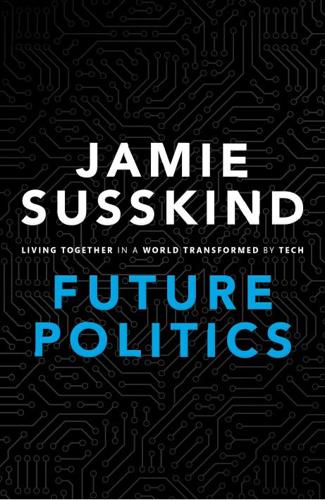
Future Politics: Living Together in a World Transformed by Tech
by
Jamie Susskind
Published 3 Sep 2018
The term fake news was initially used to describe falsehoods that were propounded and given wide circulation on the internet. Now even the term fake news itself has been drained of meaning, used as a way to describe anything the speaker disagrees with. Although some social media platforms have taken steps to counter it, the nature of online communication (as currently engineered) is conducive to the rapid spread of misinformation. The result is socalled post-truth politics. Think about for this a moment: in the final three months of the 2017 US presidential campaign, the top twenty fake news stories on Facebook generated more shares, reactions, and comments than the top twenty stories from the major news outlets combined (including the New York Times, Washington Post, and Huffington Post).10 A poll in December 2016 found that 75 per cent of people who saw fake news headlines believed them to be true.11 OUP CORRECTED PROOF – FINAL, 26/05/18, SPi РЕЛИЗ ПОДГОТОВИЛА ГРУППА "What's News" VK.COM/WSNWS DEMOCRACY IN THE FUTURE 231 Two further factors exacerbate the problem of post-truth politics.
…
Assuming the right historical conditions, Marx believed that once the realities of the world were revealed to the industrial working class (the ‘proletariat’) they would rise up and overthrow capitalism. The role of intellectuals, Marx believed, was to help ordinary folk shed their misconceptions:‘As philosophy finds its material weapons in the proletariat, so the proletariat finds its spiritual weapons in philosophy.’9 (We look at post-truth politics and fake news in more depth in chapter thirteen.) Perception-Control in the Twentieth Century In the last century, the daily business of filtering was mostly done by the mass media: substantial corporations broadcasting information to millions, even billions, of consumers through print, radio, OUP CORRECTED PROOF – FINAL, 26/05/18, SPi РЕЛИЗ ПОДГОТОВИЛА ГРУППА "What's News" VK.COM/WSNWS Perception-Control 145 and television.
…
Every time an algorithm chooses which news story to tell or which search results to prioritize, it necessarily leaves some information out. The choice to prioritize news or search results based on clicks and popularity, for instance, necessarily excludes and marginalizes less mainstream perspectives. It encourages sensationalism. Failure to deal with fake news is a choice that allows those who purvey it to wield influence (chapter thirteen). As we see throughout this book, in the context of our liberty, our democracy, and the demands of social justice, what seem to be technical decisions are often in fact political ones. The other side of the coin, of course, is that social media and social networking platforms have also provided ordinary people with a means to have their voices heard.
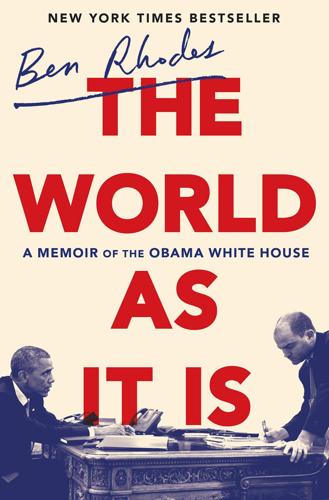
The World as It Is: A Memoir of the Obama White House
by
Ben Rhodes
Published 4 Jun 2018
The people who’d been in meetings were largely intelligence and cyber experts; not one person had a communications background, despite the fact that we’d been dealing with fake news in Ukraine for more than two years. That October 7 statement said nothing about fake news or disinformation. Cybersecurity was something that the government could at least get its mind around: secure systems, issue warnings. Stopping a flood of propaganda from overwhelming people’s Facebook feeds and Google searches was not something that the government could do, or something that the tech companies wanted to do. Even if we were more focused on the fake news, Obama couldn’t become editor in chief of people’s social media feeds.
…
There was a lingering unease, a palpable sense that the place was under threat. In a meeting, the Estonian president, Toomas Ilves, insisted to Obama that we had to take Putin at his word if he said he would take Kiev. Ilves had an academic manner, and he described methodically how Russia was using fake news and disinformation to turn Estonia’s Russian-speaking minority against Europe. Speaking in paragraphs, he tied together Putin, the emergence of right-wing political parties in Europe, and ISIL. These are people, he said, who fundamentally reject the legitimacy of the liberal order. They are looking for another form of legitimacy—one that is counter to our notion of progress.
…
But fact checks weren’t going to reach the readers of Breitbart, which had already published more than one story, spawning an unknowable number of follow-on Internet stories, talk radio segments, and tweets. We believe that the kiss of the nuke deal will turn the Iranian frog into a handsome prince. Millions of people would consume this information in a matter of hours, far more than the readership of The New York Times. It was fake news, and there was no way to dissuade people who chose to believe things that validated their established convictions. Breitbart had already run a story about an NSC staffer on Iran named Sahar Nowrouzzadeh, because she was Iranian American and once interned for an organization that advocated for diplomacy with Iran.
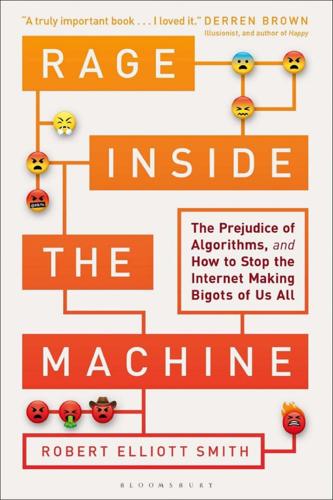
Rage Inside the Machine: The Prejudice of Algorithms, and How to Stop the Internet Making Bigots of Us All
by
Robert Elliott Smith
Published 26 Jun 2019
Turner’s site even boasts of how optimizing algorithms generate ad placement ‘in the style of CNN editorial content, with the ability to be placed directly in editorial streams of content and alongside relevant CNN editorial videos and articles’.3 Some are concerned that this has created a whole genre of ‘fake news’. While Wikipedia defines ‘fake news’ as a synonym for news satire, more recently it has become at worst a condemnation of real human journalism, and at best an umbrella term for the uncontrolled explosion of misleading information dispersed on social media. Mark Zuckerberg has pledged to make Facebook impede fake news. But it’s unclear how, as in the past his company has eliminated human editors and curators in favour of algorithms, ironically to ensure less bias in their presentation of news.
…
But it’s unclear how, as in the past his company has eliminated human editors and curators in favour of algorithms, ironically to ensure less bias in their presentation of news. As we’ve seen before, being able to determine what is true and what is fake is not a goal that algorithms can achieve easily. Furthermore, the war on fake news misses the point. Regardless of whether algorithms present ‘true’ or ‘fake’ news, they will still be working towards their primary directive: the maximization of value. Another unforeseen emergent phenomena of coupling neoliberal economic values to highly efficient, optimizing algorithms is the segregation of people into more closed communities (so-called ‘filter bubbles’ and ‘echo chambers’).
…
Moving towards this new way of using algorithms first requires an understanding of them, the simplifying way they see us all, and how we can all act to change their minds. 2 Doctor Illuminatus The problems here are complex, both technically and philosophically. MARK ZUCKERBERG, CEO of Facebook, 20161 Mark Zuckerberg was discussing the difficulty of distinguishing truth from misinformation. He is right on both counts, and I don’t envy him being faced with the challenges of ‘fake news’, and getting algorithms to determine what is ‘true’ and ‘false’ in the millions of shares, statuses, comments, photos and videos posted per minute on Facebook. Technically, the problem is massive and, possibly, insurmountable, because ‘What is true?’ is a seriously hard question, in all but the most trivial frames.

AI Superpowers: China, Silicon Valley, and the New World Order
by
Kai-Fu Lee
Published 14 Sep 2018
ROBOT REPORTS AND FAKE NEWS Reaching beyond simple curation, Toutiao also uses machine learning to create and police its content. During the 2016 Summer Olympics in Rio de Janeiro, Toutiao worked with Peking University to create an AI “reporter” that wrote short articles summing up sports events within minutes of the final whistle. The writing wasn’t exactly poetry, but the speed was incredible: the “reporter” produced short summaries within two seconds of some events’ finish, and it “covered” over thirty events per day. Algorithms are also being used to sniff out “fake news” on the platform, often in the form of bogus medical treatments.
…
Algorithms are also being used to sniff out “fake news” on the platform, often in the form of bogus medical treatments. Originally, readers discovered and reported misleading stories—essentially, free labeling of that data. Toutiao then used that labeled data to train an algorithm that could identify fake news in the wild. Toutiao even trained a separate algorithm to write fake news stories. It then pitted those two algorithms against each other, competing to fool one another and improving both in the process. This AI-driven approach to content is paying off. By late 2017, Toutiao was already valued at $20 billion and went on to raise a new round of funding that would value it at $30 billion, dwarfing the $1.7 billion valuation for BuzzFeed at the time.
…
See artificial intelligence (AI) AI engineers, 14 Airbnb, 39, 49, 73 AI revolution deep learning and, 5, 25, 92, 94, 143 economic impact of, 151–52 speed of, 152–55 AI winters, 6–7, 8, 9, 10 algorithmic bias, 229 algorithms, AI AI revolution and, 152–53 computing power and, 14, 56 credit and, 112–13 data and, 14, 17, 56, 138 fake news detection by, 109 intelligence sharing and, 87 legal applications for, 115–16 medical diagnosis and, 114–15 as recommendation engines, 107–8 robot reporting, 108 white-collar workers and, 167, 168 Alibaba Amazon compared to, 109 Chinese startups and, 58 City Brain, 93–94, 117, 124, 228 as dominant AI player, 83, 91, 93–94 eBay and, 34–35 financial services spun off from, 73 four waves of AI and, 106, 107, 109 global markets and, 137 grid approach and, 95 Microsoft Research Asia and, 89 mobile payments transition, 76 New York Stock Exchange debut, 66–67 online purchasing and, 68 success of, 40 Tencent’s “Pearl Harbor attack” on, 60–61 Wang Xing and, 24 Alipay, 35, 60, 69, 73–74, 75, 112, 118 Alphabet, 92–93 AlphaGo, 1–4, 5, 6, 11, 199 AlphaGo Zero, 90 Altman, Sam, 207 Amazon Alibaba compared to, 109 Chinese market and, 39 data captured by, 77 as dominant AI player, 83, 91 four waves of AI and, 106 grid approach and, 95 innovation mentality at, 33 monopoly of e-commerce, 170 online purchasing and, 68 Wang Xing and, 24 warehouses, 129–30 Amazon Echo, 117, 127 Amazon Go, 163, 213 Anderson, Chris, 130 Andreesen Horowitz, 70 Ant Financial, 73 antitrust laws, 20, 28, 171, 229 Apollo project, 135 app constellation model, 70 Apple, 33, 75, 117, 126, 143, 177, 184 Apple Pay, 75, 76 app-within-an-app model, 59 ARM (British firm), 96 Armstrong, Neil, 3 artificial general intelligence (AGI), 140–44 artificial intelligence (AI) introduction to, ix–xi See also China; deep learning; economy and AI; four waves of AI; global AI story; human coexistence with AI; new world order artificial superintelligence.
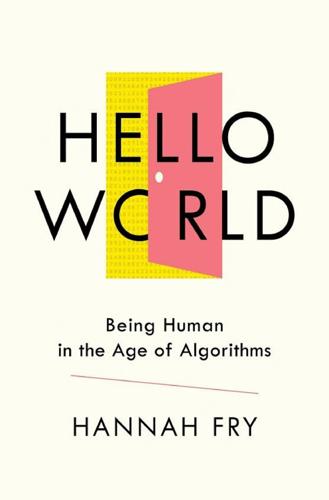
Hello World: Being Human in the Age of Algorithms
by
Hannah Fry
Published 17 Sep 2018
Stillwell, ‘Psychological targeting as an effective approach to digital mass persuasion’, Proceedings of the National Academy of Sciences, vol. 114, no. 48, 2017, 201710966. 22. Paul Lewis and Paul Hilder, ‘Leaked: Cambridge Analytica’s blueprint for Trump victory’, Guardian, 23 March 2018. 23. ‘Cambridge Analytica planted fake news’, BBC, 20 March 2018, http://www.bbc.co.uk/news/av/world-43472347/cambridge-analytica-planted-fake-news. 24. Adam D. I. Kramer, Jamie E. Guillory and Jeffrey T. Hancock, ‘Experimental evidence of massive-scale emotional contagion through social networks’, Proceedings of the National Academy of Sciences, vol. 111, no. 24, 2014, pp. 8788–90. 25. Jamie Bartlett, ‘Big data is watching you – and it wants your vote’, Spectator, 24 March 2018. 26.
…
According to one whistleblower’s testimony to the Guardian, one of the most effective ads during the campaign was an interactive graphic titled ‘10 inconvenient truths about the Clinton Foundation’.22 Another whistleblower went further and claimed that the ‘articles’ planted by Cambridge Analytica were often based on demonstrable falsehoods.23 Let’s assume, for the sake of argument, that all the above is true: Cambridge Analytica served up manipulative fake news stories on Facebook to people based on their psychological profiles. The question is, did it work? Micro-manipulation There is an asymmetry in how we view the power of targeted political adverts. We like to think of ourselves as independently minded and immune to manipulation, and yet imagine others – particularly those of a different political persuasion – as being fantastically gullible.
…
‘ambiguous images 211n13’ 23andMe 108–9 profit 109 promises of anonymity 109 sale of data 109 volume of customers 110 52Metro 177 abnormalities 84, 87, 95 acute kidney injuries 104 Acxiom 31 Adele 193 advertising 33 online adverts 33–5 exploitative potential 35 inferences 35 personality traits and 40–1 political 39–43 targeted 41 AF447 (flight) 131–3, 137 Afigbo, Chukwuemeka 2 AI (artificial intelligence) 16–19 algorithms 58, 86 omnipotence 13 threat of 12 see also DeepMind AI Music 192 Air France 131–3 Airbnb, random forests 59 Airbus A330 132–3 algebra 8 algorithmic art 194 algorithmic regulating body 70 algorithms aversion 23 Alhambra 156 Alton Towers 20–1 ALVINN (Autonomous Land Vehicle In a Neural Network) 118–19 Alzheimer’s disease 90–1, 92 Amazon 178 recommendation engine 9 ambiguous images 211n13 American Civil Liberties Union (ACLU) 17 Ancestry.com 110 anchoring effect 73 Anthropometric Laboratory 107–8 antibiotics 111 AOL accounts 2 Apple 47 Face ID system 165–6 arithmetic 8 art 175–95 algorithms 184, 188–9 similarity 187 books 178 films 180–4 popularity 183–4 judging the aesthetic value of 184 machines and 194 meaning of 194 measuring beauty 184–5 music 176–80 piano experiment 188–90 popularity 177, 178, 179 quality 179, 180 quantifying 184–8 social proof 177–8, 179 artifacts, power of 1-2 artificial intelligence (AI) see AI (artificial intelligence) association algorithms 9 asthma 101–2 identifying warning signs 102 preventable deaths 102 Audi slow-moving traffic 136 traffic jam pilot 136 authority of algorithms 16, 198, 199, 201 misuse of 200 automation aircraft 131–3 hidden dangers 133–4 ironies of 133–7 reduction in human ability 134, 137 see also driverless cars Autonomous Emergency Braking system 139 autonomy 129, 130 full 127, 130, 134, 138 autopilot systems A330 132 driverless cars 134 pilot training 134 sloppy 137 Tesla 134, 135, 138 bail comparing algorithms to human judges 59–61 contrasting predictions 60 success of algorithms 60–1 high-risk scores 70 Bainbridge, Lisanne 133–4, 135, 138 balance 112 Banksy 147, 185 Baril, David 171–2 Barstow 113 Bartlett, Jamie 44 Barwell, Clive 145–7 Bayes’ theorem 121–4, 225n30 driverless cars 124 red ball experiment 123–4 simultaneous hypotheses 122–3 Bayes, Thomas 123–4 Bayesian inference 99 beauty 184–5 Beck, Andy 82, 95 Bell, Joshua 185–6 Berk, Richard 61–2, 64 bias of judges 70–1, 75 in machines 65–71 societal and cultural 71 biometric measurements 108 blind faith 14–16, 18 Bonin, Pierre-Cédric ‘company baby‘ 131–3 books 178 boost effect 151, 152 Bratton, Bill 148–50, 152 breast cancer aggressive screening 94 detecting abnormalities 84, 87, 95 diagnoses 82–4 mammogram screenings 94, 96 over-diagnosis and over-treatment 94–5 research on corpses 92–3 ‘in situ’ cancer cells 93 screening algorithms for 87 tumours, unwittingly carrying 93 bridges (route to Jones Beach) racist 1 unusual features 1 Brixton fighting 49 looting and violence 49–50 Brooks, Christopher Drew 64, 77 Brown, Joshua 135 browser history see internet browsing history buffer zone 144 Burgess, Ernest W. 55–6 burglary 150–1 the boost 151, 152 connections with earthquakes 152 the flag 150–1, 152 Caixin Media 45 calculations 8 calculus 8 Caldicott, Dame Fiona 223n48 Cambridge Analytica 39 advertising 42 fake news 42 personality profiles 41–2 techniques 41–2 whistleblowers 42 CAMELYON16 competition 88, 89 cameras 119–20 cancer benign 94 detection 88–9 and the immune system 93 malignant 94 ‘in situ’ 93, 94 uncertainty of tumours 93–4 see also breast cancer cancer diagnoses study 79–80 Car and Driver magazine 130–1 Carnegie 117 Carnegie Mellon University 115 cars 113–40 driverless see driverless cars see also DARPA (US Defence Advanced Research Projects Agency) categories of algorithms association 9 classification 9 filtering 9–10 prioritization 8 Centaur Chess 202 Charts of the Future 148–50 chauffeur mode 139 chess 5-7 Chicago Police Department 158 China 168 citizen scoring system 45–6 breaking trust 46 punishments 46 Sesame Credit 45–6, 168 smallpox inoculation 81 citizen scoring system 45–6 Citroen DS19 116, 116–17 Citymapper 23 classification algorithms 9 Clinical vs Statistical Prediction (Meehl) 21–2 Clinton Foundation 42 Clubcard (Tesco) 26 Cohen’s Kappa 215n12 cold cases 172 Cold War 18 Colgan, Steyve 155 Commodore 64 ix COMPAS algorithm 63, 64 ProPublica analysis accuracy of scores 65 false positives 66 mistakes 65–8 racial groups 65–6 secrecy of 69 CompStat 149 computational statistics 12 computer code 8 computer intelligence 13 see also AI (artificial intelligence) computer science 8 computing power 5 considered thought 72 cookies 34 Cope, David 189, 190–1, 193 cops on the dots 155–6 Corelogic 31 counter-intuition 122 creativity, human 192–3 Creemers, Rogier 46 creepy line 28, 30, 39 crime 141–73 algorithmic regulation 173 boost effect 151, 152 burglary 150–1 cops on the dots 155–6 geographical patterns 142–3 gun 158 hotspots 148, 149, 150–1, 155 HunchLab algorithm 157–8 New York City subway 147–50 predictability of 144 PredPol algorithm 152–7, 158 proximity of offenders’ homes 144 recognizable patterns 143–4 retail 170 Strategic Subject List 158 target hardening 154–5 see also facial recognition crime data 143–4 Crimewatch programme 142 criminals buffer zone 144 distance decay 144 knowledge of local geographic area 144 serial offenders 144, 145 customers data profiles 32 inferred data 32–4 insurance data 30–1 shopping habits 28, 29, 31 supermarket data 26–8 superstore data 28–31 cyclists 129 Daimler 115, 130 DARPA (US Defence Advanced Research Projects Agency) driverless cars 113–16 investment in 113 Grand Challenge (2004) 113–14, 117 course 114 diversity of vehicles 114 GPS coordinates 114 problems 114–15 top-scoring vehicle 115 vehicles’ failure to finish 115 Grand Challenge (2005) 115 targeting of military vehicles 113–14 data 25–47 exchange of 25, 26, 44–5 dangers of 45 healthcare 105 insurance 30–1 internet browsing history 36–7, 36–8 internet giants 36 manipulation and 39–44 medical records 102–7 benefits of algorithms 106 DeepMind 104–5 disconnected 102–3 misuse of data 106 privacy 105–7 patterns in 79–81, 108 personal 108 regulation of America 46–7 Europe 46–7 global trend 47 sale of 36–7 Sesame Credit 45–6, 168 shopping habits 28, 29, 31 supermarkets and 26–8 superstores and 28–31 data brokers 31–9 benefits provided by 32 Cambridge Analytica 39–42 data profiles 32 inferred data 32–4, 35 murky practices of 47 online adverts 33–5 rich and detailed datasets 103 Sesame Credit 45–6 unregulated 36 in America 36 dating algorithms 9 Davies, Toby 156, 157 decision trees 56–8 Deep Blue 5-7, 8 deep learning 86 DeepMind access to full medical histories 104–5 consent ignored 105 outrage 104 contract with Royal Free NHS Trust 104 dementia 90–2 Dewes, Andreas 36–7 Dhami, Mandeep 75, 76 diabetic retinopathy 96 Diaconis, Pesri 124 diagnostic machines 98–101, 110–11 differential diagnosis 99 discrimination 71 disease Alzheimer’s disease 90–1, 92 diabetic retinopathy 96 diagnosing 59, 99, 100 disease (continued) hereditary causes 108 Hippocrates’s understanding of 80 Huntington’s disease 110 motor neurone disease 100 pre-modern medicine 80 see also breast cancer distance decay 144 DNA (deoxyribonucleic acid) 106, 109 testing 164–5 doctors 81 unique skills of 81–2 Dodds, Peter 176–7 doppelgängers 161–3, 164, 169 Douglas, Neil 162–3 driver-assistance technology 131 driverless cars 113–40 advantages 137 algorithms and 117 Bayes’ red ball analogy 123–4 ALVINN (Autonomous Land Vehicle In a Neural Network) 118–19 autonomy 129, 130 full 127, 130, 134, 138 Bayes’ theorem 121–4 breaking the rules of the road 128 bullying by people 129 cameras and 117–18 conditions for 129 cyclists and 129 dealing with people 128–9 difficulties of building 117–18, 127–8 early technology 116–17 framing of technology 138 inevitability of errors 140 measurement 119, 120 neural networks 117–18 potential issues 116 pre-decided go-zones 130 sci-fi era 116 simulations 136–7 speed and direction 117 support for drivers 139 trolley problem 125–6 Uber 135 Waymo 129–30 driverless technology 131 Dubois, Captain 133, 137 Duggan, Mark 49 Dunn, Edwina 26 early warning systems 18 earthquakes 151–2 eBureau 31 Eckert, Svea 36–7 empathy 81–2 ensembles 58 Eppink, Richard 17, 18 Epstein, Robert 14–15 equations 8 Equivant (formerly Northpointe) 69, 217n38 errors in algorithms 18–19, 61–2, 76, 159–60, 197–9, 200–201 false negatives 62, 87, 88 false positives 62, 66, 87, 88 Eureka Prometheus Project 117 expectant mothers 28–9 expectations 7 Experiments in Musical Intelligence (EMI) 189–91, 193 Face ID (Apple) 165–6 Facebook 2, 9, 36, 40 filtering 10 Likes 39–40 news feeds experiment 42–3 personality scores 39 privacy issues 25 severing ties with data brokers 47 FaceFirst 170, 171 FaceNet (Google) 167, 169 facial recognition accuracy 171 falling 168 increasing 169 algorithms 160–3, 165, 201–2 2D images 166–7 3D model of face 165–6 Face ID (Apple) 165–6 FaceFirst 170 FaceNet (Google) 167, 169 measurements 163 MegaFace 168–9 statistical approach 166–7 Tencent YouTu Lab 169 in China 168 cold cases 172 David Baril incident 171–2 differences from DNA testing 164–5 doppelgängers 161–3, 164, 169 gambling addicts 169–70 identical looks 162–3, 164, 165 misidentification 168 neural networks 166–7 NYPD statistics 172 passport officers 161, 164 police databases of facial images 168 resemblance 164, 165 shoplifters 170 pros and cons of technology 170–1 software 160 trade-off 171–3 Youssef Zaghba incident 172 fairness 66–8, 201 tweaking 70 fake news 42 false negatives 62, 87, 88 false positives 62, 66, 87, 88 FBI (Federal Bureau of Investigation) 168 Federal Communications Commission (FCC) 36 Federal Trade Commission 47 feedback loops 156–7 films 180–4 algorithms for 183 edits 182–3 IMDb website 181–2 investment in 180 John Carter (film) 180 novelty and 182 popularity 183–4 predicting success 180–1 Rotten Tomatoes website 181 study 181–2 keywords 181–2 filtering algorithms 9–10 Financial Times 116 fingerprinting 145, 171 Firebird II 116 Firefox 47 Foothill 156 Ford 115, 130 forecasts, decision trees 57–8 free technology 44 Fuchs, Thomas 101 Galton, Francis 107–8 gambling addicts 169–70 GDPR (General Data Protection Regulation) 46 General Motors 116 genetic algorithms 191–2 genetic testing 108, 110 genome, human 108, 110 geographical patterns 142–3 geoprofiling 147 algorithm 144 Germany facial recognition algorithms 161 linking of healthcare records 103 Goldman, William 181, 184 Google 14–15, 36 creepy line 28, 30, 39 data security record 105 FaceNet algorithm 167, 169 high-paying executive jobs 35 see also DeepMind Google Brain 96 Google Chrome plugins 36–7 Google Images 69 Google Maps 120 Google Search 8 Google Translate 38 GPS 3, 13–14, 114 potential errors 120 guardian mode 139 Guerry, André-Michel 143–4 gun crime 158 Hamm, John 99 Hammond, Philip 115 Harkness, Timandra 105–6 Harvard researchers experiment (2013) 88–9 healthcare common goal 111–12 exhibition (1884) 107 linking of medical records 102–3 sparse and disconnected dataset 103 healthcare data 105 Hinton, Geoffrey 86 Hippocrates 80 Hofstadter, Douglas 189–90, 194 home cooks 30–1 homosexuality 22 hotspots, crime 148, 149, 150–1, 155 Hugo, Christoph von 124–5 human characteristics, study of 107 human genome 108, 110 human intuition 71–4, 77, 122 humans and algorithms opposite skills to 139 prediction 22, 59–61, 62–5 struggle between 20–4 understanding the human mind 6 domination by machines 5-6 vs machines 59–61, 62–4 power of veto 19 PredPol (PREDictive POLicing) 153–4 strengths of 139 weaknesses of 139 Humby, Clive 26, 27, 28 Hume, David 184–5 HunchLab 157–8 Huntington’s disease 110 IBM 97–8 see also Deep Blue Ibrahim, Rahinah 197–8 Idaho Department of Health and Welfare budget tool 16 arbitrary numbers 16–17 bugs and errors 17 Excel spreadsheet 17 legally unconstitutional 17 naive trust 17–18 random results 17 cuts to Medicaid assistance 16–17 Medicaid team 17 secrecy of software 17 Illinois prisons 55, 56 image recognition 11, 84–7, 211n13 inferred data 32–4, 35 personality traits 40 Innocence Project 164 Instagram 36 insurance 30–1 genetic tests for Huntington’s disease 110 life insurance stipulations 109 unavailability for obese patients 106 intelligence tracking prevention 47 internet browsing history 36–8 anonymous 36, 37 de-anonymizing 37–8 personal identifiers 37–8 sale of 36–7 Internet Movie Database (IMDb) 181–2 intuition see human intuition jay-walking 129 Jemaah Islam 198 Jemaah Islamiyah 198 Jennings, Ken 97–8 Jeopardy!
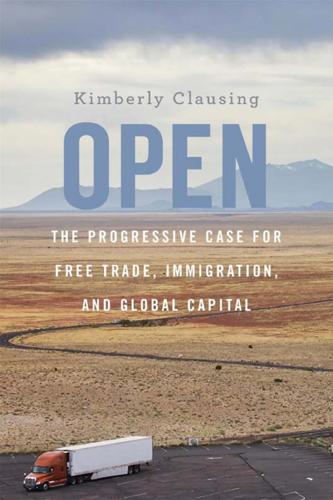
Open: The Progressive Case for Free Trade, Immigration, and Global Capital
by
Kimberly Clausing
Published 4 Mar 2019
Due to the Internet, our news and information systems have changed dramatically in recent years. This offers the advantage of easier access to a wealth of information from around the globe. Yet there are also serious downsides. The personal tailoring of news information and the spread of misinformation (also known as “fake news”) have caused large groups of the public to live in widely disparate realities.1 Protecting Democracy, One Oregonian at a Time Oregon is at the forefront of a trend less frothy than artisanal coffee or microbrews. It was the first state in the nation to adopt a vote-by-mail system (in 1998), and the first to transition to automatic voter registration (in 2015).
…
Back when I was a child, there were four news stations on our television (CBS, NBC, ABC, and PBS), and whichever one we turned the dial to, the same basic facts about the world spilled out. There was no way to get one’s television to report only news that was left-leaning or right-leaning, and it was far more difficult for rogue actors to reach large groups of people with “fake news” aimed at manipulating public sentiment. We need a common set of facts, even if we disagree about the proper policy response to these facts. This will require more education about how to use the Internet and greater outreach to provide the public with information about reputable sources of information that are less prone to bias (or fiction).
…
This will require more education about how to use the Internet and greater outreach to provide the public with information about reputable sources of information that are less prone to bias (or fiction). We need more public conversations about these issues so that people can respond by considering their media choices carefully.2 The tech industry, a key source of these troubles, can also play a role in addressing them.3 For example, Facebook is working to counter “fake news” through several initiatives, including efforts to expand its fact-checking program and to reduce the prominence of disputed content on newsfeeds. Wikipedia has developed Wikitribune, a service that pairs journalists with volunteers to cultivate a fact-checked, proofread, constantly updated article database.

Rebel Ideas: The Power of Diverse Thinking
by
Matthew Syed
Published 9 Sep 2019
The questionnaire asks people if they agree or disagree with statements like ‘People should always take into consideration evidence that goes against their beliefs’ and ‘A person should always consider new possibilities’. Perhaps unsurprisingly, people who score high on this scale are better at coming up with ideas, evaluating arguments, combating biases, spotting fake news, even after controlling for cognitive ability. There are many techniques that help to transition to an outsider perspective, to see the familiar with new eyes, and to engage with new ideas. Michael Michalko, a former US army officer who has become a leader in creativity, advocates ‘assumption reversal’.
…
People on the inside hear more opinions from the in-group, but these views tend to become stronger when exposed to opposing opinions. Why? Because the more opponents attack Limbaugh, the more they point to the errors in his opinions, the more it confirms the conspiracy against him. Opponents are not offering new insights, but fake news. Each piece of evidence against Limbaugh is a new brick in the wall separating the in-group from outsiders. As Nguyen puts it: What’s happening is a kind of intellectual judo, in which the power and enthusiasm of contrary voices are turned against those contrary voices through a carefully rigged internal structure of belief.
…
, breastfeeding, some academic intellectual traditions, and many, many more.’17 It is the twin filters of information and trust that create an unusually resilient form of in-group cohesion. Where an information bubble is inherently fragile, echo chambers on both sides of the political spectrum are reinforced by the mutual exposure of alternative views, driving polarisation, and leading to competing (and often contradictory) claims of fake news. Each side thinks the other is living in a post-truth age. As Nguyen says: ‘Here’s a basic check: does a community’s belief system actively undermine the trustworthiness of any outsiders who don’t subscribe to its central dogmas? Then it’s probably an echo chamber.’18 IV Derek Black is unusual in that he did not grow up in a digital echo chamber but a real one.
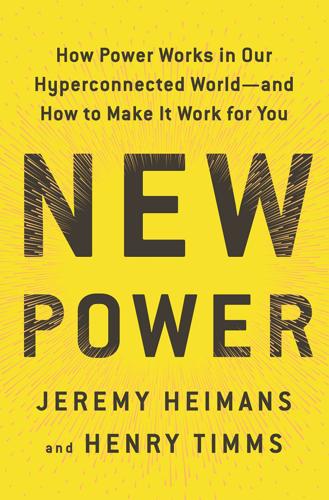
New Power: How Power Works in Our Hyperconnected World--And How to Make It Work for You
by
Jeremy Heimans
and
Henry Timms
Published 2 Apr 2018
To take one famous example, we now know the crucial role Facebook played in the 2016 U.S. presidential election, both as the primary means by which “fake news” and misinformation was distributed and spread sideways, and as the vehicle through which Trump campaign affiliates conducted highly sophisticated targeting of millions of people in the days before the election—acting to increase his turnout and depress his opponent’s. Mark Zuckerberg’s initial reaction to these claims was incredulity: “Personally, I think the idea that fake news on Facebook—of which it’s a small amount of content—influenced the election in any way is a pretty crazy idea.”
…
Of course, there is no “killer app” for defeating extremist propaganda, no one idea or moment that will suddenly change the game. Tech platforms need to do much more to halt the spread of extremist ideas, something that is becoming a greater commercial concern as advertisers pull their spending from platforms like Google and Facebook out of worry their ads will appear next to extremist content and fake news. For too long, their business models have benefited from the fact that provocative content of all kinds is often more seductive and popular than the bland and virtuous. (As one promising response to the problem of extreme content, Google’s think-tank Jigsaw launched something called the “redirect” method, which serves potential recruits video testimonials from credible voices and other content designed to dissuade them when they search for a range of keywords typically used by wannabe ISIS members.)
…
In a new power world, this battle of ideas is not a standoff between bureaucrats and terrorists. It is a showdown between Scottish teenagers and Pakistani business students. * * * — The future will be won by those who can spread their ideas better, faster, and more durably. In a world of fake news, climate change deniers, Holocaust deniers, anti-vaxers, and all manner of extremists, the stakes are high. Those on the side of the angels, who want to spread compassion, promote pluralism, or defend science, must first grapple with a painful reality: that new power can supercharge hate and misinformation.

Coders: The Making of a New Tribe and the Remaking of the World
by
Clive Thompson
Published 26 Mar 2019
“talking about it”: Steve Rayson, “We Analyzed 100 Million Headlines. Here’s What We Learned (New Research),” Buzzsumo, June 26, 2017, accessed August 21, 2018, https://buzzsumo.com/blog/most-shared-headlines-study. made-up scandals: Jackie Mansky, “The Age-old Problem of ‘Fake News,’” Smithsonian, May 7, 2018, accessed August 21, 2018, https://www.smithsonianmag.com/history/age-old-problem-fake-news-180968945/. as BuzzFeed described it: Charlie Warzel and Remy Smidt, “YouTubers Made Hundreds of Thousands Off of Bizarre and Disturbing Child Content,” BuzzFeed, December 11, 2017, accessed August 21, 2018, https://www.buzzfeednews.com/article/charliewarzel/YouTubers-made-hundreds-of-thousands-off-of-bizarre-and.
…
“can just breed and multiply”: Sheera Frenkel, “She Warned of ‘Peer-to-Peer Misinformation.’ Congress Listened,” New York Times, November 12, 2017, accessed August 21, 2018, www.nytimes.com/2017/11/12/technology/social-media-disinformation.html. had a Democratic staffer murdered: Amanda Robb, “Anatomy of a Fake News Scandal,” Rolling Stone, November 16, 2017, accessed August 21, 2018, https://www.rollingstone.com/politics/politics-news/anatomy-of-a-fake-news-scandal-125877; Colleen Shalby, “How Seth Rich’s Death Became an Internet Conspiracy Theory,” Los Angeles Times, May 24, 2017, http://www.latimes.com/business/hollywood/la-fi-ct-seth-rich-conspiracy-20170523-htmlstory.html.
…
being “false news”: Erich Owens and Udi Weinsberg, “Showing Fewer Hoaxes,” Facebook Newsroom, January 20, 2015, accessed September 30, 2018, https://newsroom.fb.com/news/2015/01/news-feed-fyi-showing-fewer-hoaxes/; Caroline O’Donovan, “What Does Facebook’s New Tool for Fighting Fake News Mean for Real Publishers?,” NiemanLab, January 21, 2015, accessed September 30, 2018, http://www.niemanlab.org/2015/01/what-does-facebooks-new-tool-for-fighting-fake-news-mean-for-real-publishers/. “‘want us to do about it?’”: Warzel, “How People Inside Facebook Are Reacting.” and harass journalists: Siva Vaidhyanathan, Antisocial Media: How Facebook Disconnects Us and Undermines Democracy (New York: Oxford University Press, 2018), location 187–92 of 6698, Kindle.

Frenemies: The Epic Disruption of the Ad Business
by
Ken Auletta
Published 4 Jun 2018
“We’ve gone from the era of Mad Men to mad metrics,” News Corp’s CEO Robert Thomson declared at a UBS Global Media and Communications Conference. An overreliance on machines and a belief that they were engaged in mistake-proof science produced an opaque mathematical model. Although engineers are fallible humans, they often assume their algorithms are infallible. When told that Facebook’s mechanized defenses had failed to screen out “fake” news planted on the social network to sabotage Hillary Clinton’s presidential campaign, Mark Zuckerberg publicly dismissed the assertion as “crazy.” His computers—his science—wouldn’t allow it. Or as Eric Schmidt, the executive chairman of Alphabet, the parent company of Google, said at their 2017 annual shareholder meeting, “We start from the principles of science at Google and Alphabet.”
…
And Google in the summer of 2017 announced it was granting refunds to hundreds of advertisers because its programmatic purchasing arm, DoubleClick, ran their ads on Web sites inflated by fake traffic. And when it was revealed that Facebook’s algorithms inadvertently enabled advertisers to target consumers with cringe-worthy keywords like “Jew hater,” and a Russian troll farm secretly purchased $100 million of ads to spread “fake news” to further polarize Americans during the 2016 presidential contest, founder Mark Zuckerberg acknowledged the limitations of his managers to control the algorithms. “I wish I could tell you we’re going to be able to catch all bad content in our system,” he announced in September 2017. “I wish I could tell you we’re going to be able to stop all interference, but that wouldn’t be realistic.”
…
This prompted Kevin Roose of the New York Times to label this Facebook’s “Frankenstein moment,” likening this to Mary Shelley’s book, when the scientist—Dr. Frankenstein—realizes his robot creature “has gone rogue.” In October 2017, Mark Zuckerberg sheepishly admitted he should not have been so quick to defend the ability of Facebook’s machines to block “fake” news pushed by Russian hackers to subvert the Clinton presidential campaign. “Calling that ‘crazy’ was dismissive and I regret it,” he declared, announcing that Facebook would hire an additional thousand curators to screen news accounts and ads. To prevent ads from appearing in offensive videos, YouTube announced in January 2018 that it would hire “human reviewers” to screen its premium content.
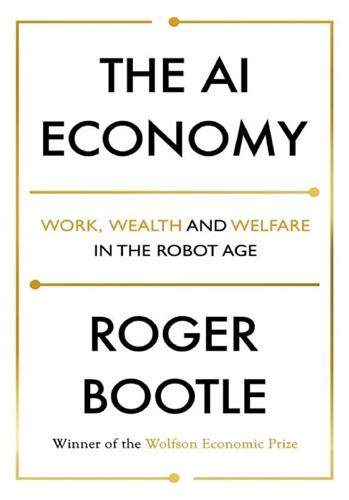
The AI Economy: Work, Wealth and Welfare in the Robot Age
by
Roger Bootle
Published 4 Sep 2019
As a result, the campaign was “highly successful in not only mobilizing, but also convincing voters to give Obama their support.”37 Then, during the 2016 US presidential election, the firm Cambridge Analytica used big data and machine learning to send voters different messages based on predictions about their susceptibility to different arguments.38 Another issue that has emerged recently is the use of fake news to influence election campaigns, arguably preventing a “fair” election. While “fake news” has to some extent always existed, social media and machine learning “allow fake news to be spread more deliberately and effectively.”39 Bots are often effective at targeting supporters of opposing parties and discouraging them from voting. Bots were used days before the most recent French presidential election to popularize “#MacronLeaks” on social media.
…
Domingos (2015) The Master Algorithm: How the Quest for the Ultimate Learning Machine Will Remake Our World, New York: Basic Books. 38 Polonski, V. (2017) “How artificial intelligence silently took over democracy,” World Economic Forum, August 12, https://www.weforum.org/agenda/2017/08/artificial-intelligence-can-save-democracy-unless-it-destroys-it-first/ 39 J. M. Burkhardt (2017) How Fake News Spreads, Library Technology Reports, 53(8). 40 Polonski, V. (2017) Artificial intelligence has the power to destroy or save democracy, Council on Foreign Relations, August 7, https://www.cfr.org/blog/artificial-intelligence-has-power-destroy-or-save-democracy 41 BBC News, Fake news a democratic crisis for UK, MPs warn, July 28, 2018, https://www.bbc.co.uk/news/technology-44967650 42 Reported in The Guardian, January 22, 2018. 43 Wired (2018), https://www.wired.com/story/emmanuel-macron-talks-to-wired-about-frances-ai-strategy/ Chapter 8 1 Joi, J.
…
Bots were used days before the most recent French presidential election to popularize “#MacronLeaks” on social media. Facebook and Twitter were inundated with reports building a narrative of Macron as a fraud and hypocrite.40 Mind you, this didn’t stop him from being elected. There has been some debate over who should be held responsible for the publication of fake news. Companies such as Facebook and YouTube have claimed that they are just a “platform” rather than a “publisher,” and that they are not responsible for posted content.41 However, Facebook did admit that it was too slow in stopping people using the social network to “corrode democracy” during the US election.42 French President Emmanuel Macron told Wired magazine that, if left unchecked, AI could “totally jeopardize democracy.”43 There is a wider politico-economic matter that feeds into this issue.
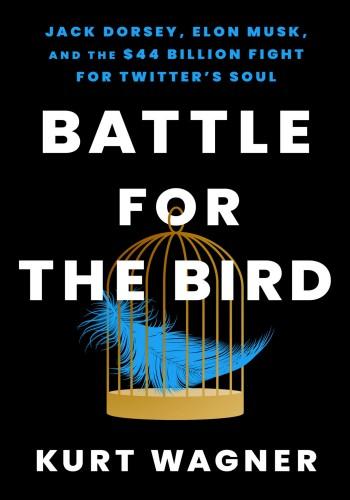
Battle for the Bird: Jack Dorsey, Elon Musk, and the $44 Billion Fight for Twitter's Soul
by
Kurt Wagner
Published 20 Feb 2024
Lots of subjects discussed regarding their platform, and the world of social media in general. Look forward to keeping an open dialogue!” Twitter, April 23, 2019, 1:54 p.m., https://twitter.com/realDonaldTrump/status/1120793199650463747. “Social Media & Fake News Media… VERY UNFAIR!”: Donald Trump (@realDonaldTrump), “How can it be possible that James Woods (and many others), a strong but responsible Conservative Voice, is banned from Twitter? Social Media & Fake News Media, together with their partner, the Democrat Party, have no idea the problems they are causing for themselves. VERY UNFAIR!” Twitter, May 4, 2019, 11:31 a.m., https://twitter.com/realDonaldTrump/status/1124743267873116160.
…
That afternoon, Trump posted a photo of the meeting to his Twitter account. “Great meeting this afternoon,” he posted. “Lots of subjects discussed regarding their platform, and the world of social media in general. Look forward to keeping an open dialogue!” The truce with Twitter lasted eleven days. “Social Media & Fake News Media, together with their partner, the Democrat Party, have no idea the problems they are causing for themselves,” Trump posted on May 4 after Twitter suspended the actor James Woods for posting a violent hashtag. “VERY UNFAIR!” * * * Jack Dorsey was on the road a lot during the summer and fall of 2019.
…
In the U.S., where Covid-19 restrictions and mandates varied widely by state, governors used the service to update local policies almost every day, and Twitter created a landing page with news and updates about the virus from various health agencies. Trump, in the middle of a reelection campaign, was tweeting dozens of times per day, often about his favorite topic, the “fake news” media, but also increasingly about Covid and its impact on the broader economy. The convergence of a deadly pandemic, a hotly contested U.S. presidential election, and a sitting president who tweeted everything that popped into his head made Twitter more popular than ever. In the first three months of 2020, Twitter’s user base grew 24 percent over the same period one year earlier.

Survival of the Richest: Escape Fantasies of the Tech Billionaires
by
Douglas Rushkoff
Published 7 Sep 2022
It’s an unsettling, emotional moment, yet our conversation got strangely abstracted—as if The Mindset’s defense mechanism against trauma had kicked in. The Stanford student, the most mission-focused of the trio, tied it back to the value proposition of their platform. “This is why we need systems that amplify signal over noise,” he explained. “These people are all victims of fake news and networks optimized for sensationalism. Imagine if we tuned the network to promote cooperation and consensus.” “How did this guy know to assemble all these feeds?” the Facebook guy asked about the page we were watching, which had aggregated six different live-streams. “He must have been tipped off that something was coming.”
…
Well-meaning efforts to use computers to make prison sentencing more fair yielded algorithms that put Black people in jail for longer than whites who had committed the same crimes. Simple algorithms that bring people the kinds of news stories they are most likely to read have wreaked havoc on our civic and political lives, leading to filter bubbles, alienation, and the unchecked proliferation of fake news. None of this was intended by the technologists who programmed these systems or the people who put their faith in these game-changing improvements over the ways we were doing things before. Technosolutions are extremely attractive to politicians and philanthropists like Michael Bloomberg, Reid Hoffman, the Ford Foundation, or Bill Gates, who take a data-driven approach to problem solving.
…
The organization had also hired a public relations company to broadcast “video news reports’’ every few hours—pre-packaged stories for local TV news programs to air as if they were their own work. While I’d seen VNRs produced by pharmaceutical companies to stealthily advertise new products or by the oil industry to do greenwashing, I had never seen this early form of fake news practiced by NGOs or philanthropies—particularly not one with the stated purpose of making media less violent and manipulative. Here they were, holding an expensive conference about global peace at an exotic resort hotel where the only people of color (other than centimillionaire Chopra himself) were waiters; they were talking about sustainability while eating “baby veal” and (endangered) Chilean sea bass; they were committing to fight pollution while flying thousands of miles and drinking water out of the tiniest individual-size plastic bottles I had ever seen—all to promote ideas like singer Ricky Martin’s “Buenos Dias Day,” when people around the world would spread goodwill through the media, Latin American style.
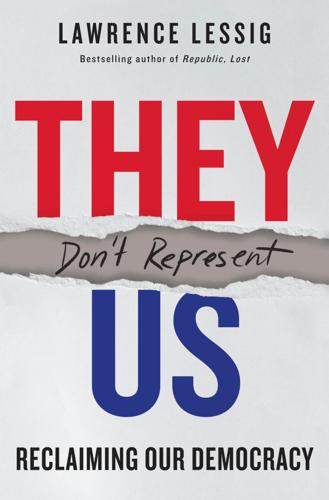
They Don't Represent Us: Reclaiming Our Democracy
by
Lawrence Lessig
Published 5 Nov 2019
On the relationship between the groups Facebook enabled and the contours of polarized opinion, see Michela Del Vicario, “Mapping Social Dynamics on Facebook: The Brexit Debate,” Social Networks 50 (2017): 6, 6–16. On the relative effect of the Leave versus Remain campaign, see Vyacheslav Polonski, “Impact of Social Media on the Outcome of the EU Referendum,” EU Referendum Analysis 2016, available at link #231. For the claim that fake news was spread and Russia almost certainly had some illicit hand, see “Disinformation and ‘Fake News,’” House of Commons: Digital, Culture, Media, and Sport Committee, February 14, 2019, 72–77, available at link #232; Dan Sabbagh, “Facebook to Expand Inquiry into Russian Influence of Brexit,” Guardian, January 27, 2018, available at link #233. 53.Burson v.
…
Here again there is a logic driven by incentives. The incentives are advertising. Here again that logic is producing a mix of speech that may disable the capacity for democratic self-governance. Here again that logic has no necessary connection to the truth of the content being distributed (hence, “fake news”).117 In both cases the consequences are the same. In both cases the reason for the consequences is the same. And in both cases those reasons are not tied to the systems not giving us what we want. To the contrary: in both cases the system is giving us exactly what we want. What we want is the problem.
…
What could the British government do to protect the process the second time around? The conceptually clear response would be to ban the spiking of drinks—which in this context would mean selling any ads attached to Brexit-related messaging. Yet this proposal would be attacked as being both too little and too much: Too little, because the strategy of fake news and division is often executed far from the political issue you’re trying to affect. In the United States, for example, the Russians didn’t buy anti-Clinton ads; they bought ads intending to sow division on the left (to suppress the vote on the left) and on the right (to spike participation on the right).
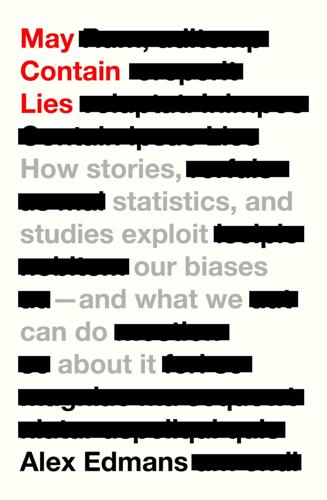
May Contain Lies: How Stories, Statistics, and Studies Exploit Our Biases—And What We Can Do About It
by
Alex Edmans
Published 13 May 2024
that Mail-In Ballots will be anything less than substantially fraudulent ’ in May 2020, Twitter added a fact-checking link at the bottom. It didn’t state that the tweet was false but simply offered the option to ‘Get the facts about mail-in voting’, which linked to a CNN website that disproved Trump’s claim. Emeric Henry, Ekaterina Zhuravskaya and Sergei Guriev found that these caveats successfully reduce the sharing of fake news.11 In May 2019, they showed 2,537 French Facebook users two misleading statements about the EU by Marine Le Pen’s far-right party Rassemblement National.|| A third of the subjects were shown fact-checking information, another third were given the option to access this information, and the control group had no access at all.
…
What was striking was how the test group rated the six other false headlines that weren’t tagged. They viewed them as more accurate than the control group who didn’t see any warnings at all. Knowing that Facebook flagged some stories as false encouraged the test group to get lazy and accept untagged headlines as true – the ‘implied truth effect’. Since fake news is produced much faster than fact-checkers can flag it, the gains from calling out the falsehoods you do catch might be outweighed by the losses on the ones you don’t. Fortunately, the researchers found a solution. In a separate experiment, they not only tagged some stories as false but also labelled others as true, and this eliminated the implied truth effect.
…
◦ Publishers and retailers featuring a ‘health warning’ for disputed books. • Journalists should refrain from citing a study unless they can link to it; researchers should not pitch a paper to the media unless they’ve made it freely available. • On social media, fact-checking links reduce the sharing of fake news, but flagging posts as disputed means that unflagged ones are seen as more truthful. • Citizens are not passive members of society; we shape society. Viewing dissenting arguments as an opportunity to learn, not something to argue against, contributes to a society where a diversity of viewpoints is embraced

Dawn of the New Everything: Encounters With Reality and Virtual Reality
by
Jaron Lanier
Published 21 Nov 2017
For years, Gamergate was only a plague within digital culture, but by 2016 its legacy was influencing elections, particularly the one in the United States. Gamergate turned out to be a prototype, rehearsal, and launching pad for the alt-right.2 The kinds of problems that used to inflame only obscure reaches of Usenet now torment everyone. For instance, everyone, including the president, is upset about “fake news.” Even the news of the term itself was quickly made fake; the term “fake news” was deliberately overused to the point that its meaning was reversed within only a few months of its appearance.3 It became the way a grumpy American administration referred to real news. Fortunately, more precise terms are available. For instance, it’s been reported4 that the founder of the virtual reality company purchased by a social media company for a couple of billion dollars—that was mentioned in this book’s opening—called the planting of sadistic online confabulations engineered to go viral “shitposting” and “meme magic.”
…
The most effective situation is one where users get into weird spirals of mob-like agreement or disagreement with other users. That never ends, which is the point. The companies neither plan nor implement any of these patterns of use. Instead, third parties are incentivized to do the dirty work. Like Macedonian youth looking for some extra cash by posting poisonous fake news. Or even Americans looking for an extra buck.11 Tech companies certainly never ask users to become thin-skinned, cranky, paranoid, or delusional; the snowflake persona just happens to be part of the emergent solution to the purely mathematical puzzle that has been explicitly posed: How do you drive the most traffic in order to take up the most time and attention?
…
Next up might be the subconscious generation of paranoia toward someone or something, in order to lock in attention. If the companies implement filters to prevent that, there will always be some other method-in-waiting. How much control of our society do we want to demand from algorithms? Where does it end? Remember, well before we urged the tech companies to do something about fake news, we had demanded they do something about hate speech and organized harassment. The companies started booting certain users, but did society become any more temperate as a result? At some point, even if moral automation can be implemented, it might still be necessary to appeal to the old demigod of economic incentives.

Machine, Platform, Crowd: Harnessing Our Digital Future
by
Andrew McAfee
and
Erik Brynjolfsson
Published 26 Jun 2017
This approach works well, by and large, and has allowed the crowd to grow enormously without being sabotaged by its worst members. Not all versions of the crowd are equally successful at this gentle policing. The year 2016 saw challenges to this approach in the form of “fake news” on Facebook and other social media, and large amounts of racism, sexism, anti-Semitism and other despicable vitriol on Twitter. Jimmy Wales has argued that Wikipedia, the crowdsourced encyclopedia that he cofounded, is relatively immune to fake news in part because of its governance methods. By adopting the right principles, norms, institutions, and technologies, the crowd can do a great deal to maintain quality standards, though there may be other trade-offs, like how easily or quickly participants can post new items, how quickly they are shared, who gets to see them, and, yes, how much profit can be earned from the content.
…
Shaw, 267 Dean, Jeff, 77 “Decentralize All the Things” (Evans), 296–97 “decentralizing all the things,” 278–300 Bitcoin, 279–88, 305–7 blockchain, 283–95 crypto assault on the core, 295–99 DAO and, 302–5 failure modes of, 317–19 as solution to problem of corporate dominance, 308–9 deep learning systems, 76–79, 84 DeepMind, 4, 77–78 deep Q-network (DQN), 77n Deep Thunder, 121 Defense Department, US, 103–4 delivery services, 184–85 demand in two-sided networks, 215 and Uber pricing, 218–19 demand curves, 153–54 complements’ effect on, 157–61 and open platforms, 164 and revenue management, 183 for services with perishing inventory, 181 Stripe and, 173 in two-sided networks, 215 and Uber’s driver app, 214 demand-side economies of scale, 141 Deming, David, 321, 322 demographic data, 48–51 depreciation, 187 design, computer’s role in creative aspects of, 111–18 de Soto, Hernando, 291 Devine, Warren, Jr., 20 diagnosis, medical, 123–24 Diamond, Neil, 134 digital cameras, 131 digital copies, analog copies vs., 136 digital redlining, 46–47 digital signatures, 280 Dippenaar, Liam, 273, 274 Dippenaar, Yolandi, 273 discounts, for perishing inventory, 180–81 disruption, technologies of, 307–9 disruptive technology electricity as, 22 limits to, 221–24 distributed ledger, 288–91 Dixit, Avinash, 196n DIY Bacterial Gene Engineering CRISPR Kit, 272 DIY Bio movement, 271–72 DNA, 271–72 Dobelli, Rolf, 43 Doerr, John, 152 DoubleClick, 139 double spend problem, 281 Dow Jones Industrial Average, 10 DQN (deep Q-network), 77n drones, 98–100 Dropbox, 162 Drop (kitchen scale), 163 dscout, 190 dual reputation systems, 209 Ducati, 102 Dylan, Bob, 134 Eatsa, 87–89, 93 EC2 (Amazon Web Service), 143 e-commerce data-driven product recommendations, 47 origins of, 34 Stripe and, 171 economic crisis (2008), 285 economics Bitcoin, 279–88 “decentralizing all the things,” 278–300 defined, 25 of “free, perfect, instant” information goods, 135–37 markets as pure crowd, 235–39 economies of scale network effects as, 141 O2O platforms and, 193 Economist magazine, 202, 312 Edaixi, 191 Edelman (PR firm), 296 Edelman, Benjamin, 209n Edison, Thomas, 10 egalitarianism, 323–25 Einstein, Albert, 170, 329 Elance, 188 elasticity of demand, 216–19 of pricing, 212–13 election of 2012, 48–51 election of 2016, 51 electricity, introduction to manufacturing, 19–24 “Electronic Markets and Electronic Hierarchies” (Malone, Yates, and Benjamin), 311 Ele.me, 192 Elements of Eloquence, The (Forsyth), 70 Elizabeth II (queen of England), 34n emergent systems, 237 Emily Howell (music composition software), 117 employee selection, 56–58 e-NABLE, 274n English language, rules in, 70–71 Enterprise Crowdfunding, 263 enterprise systems, 32–34 environmental control, 101 Eren, Ozkan, 40 Ethereum, 295, 302, 304–5, 318 Ethereum Classic, 305 Evans, Jon, 296–97 event organizing, 189 Evernote, 162, 218 exercise classes, See ClassPass expectations, complements and, 161 experimentation and forecasting, 61–63 and management, 323 Stripe and, 173 experts, outsiders vs., 252–75 exponential improvements in digital hardware, 97–98 Facebook acquiring innovation by acquiring companies, 265–66 advertising, 9 and content, 6 and “fake news,” 234 and importance of user-friendliness, 170–71 mobile ad revenue, 162 nudity policy’s effect on Playboy, 133 origins, 8 publishing of news articles on, 165 rapid growth of, 10 as stack, 295 Teespring and, 264 videos on, 231 WhatsApp and, 141 Fair, Bill, 46 Fair Isaac Corporation, 46 fake news, 234–35 Fame Foundry, 170 farming, See agriculture Farrell, Joe, 141n “Fast Learning Algorithm for Deep Belief Nets, A” (Hinton, Osindero, and Teh), 76 Fawcett, John, 267–69 Federal Reserve, US, 47 Federal Reserve Bank of St.
…
The web is the world’s largest digital platform, and its infrastructure and architecture reflect its original intent: to allow anyone to join and start participating. This openness has led to great benefits for the world, but it has also led directly to malware, cybercrime and cyberwarfare, distributed denial-of-service attacks, phishing and identity theft, darknets for exchanging child pornography, doxxing, fake news, and other developments that can make one despair for humanity. Curation Counters the Corruptors The solution to all this bad behavior and bad content is to build better platforms—ones that use curation, reputation systems, and other tools to keep out the bad and encourage the good, however the platform owner defines these terms.
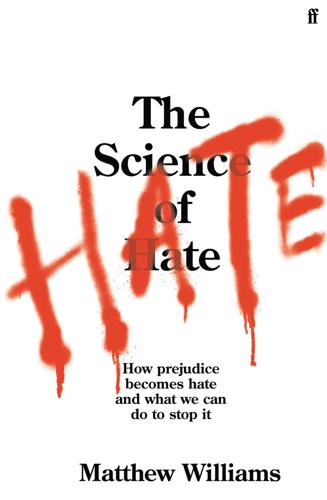
The Science of Hate: How Prejudice Becomes Hate and What We Can Do to Stop It
by
Matthew Williams
Published 23 Mar 2021
Research at Cardiff University showed that fake Twitter accounts purportedly sponsored by the Russian Internet Research Agency spread fake news and promoted xenophobic messages following the 2017 terror attacks in the UK, potentially raising tensions between groups. Following the Manchester and London Bridge terror attacks, a fake account assumed to be linked to the same Russian agency sent a racially divisive tweet within minutes of the news breaking. In the minutes following the Westminster terrorist attack, suspected fake social media accounts retweeted fake news about a woman in a headscarf apparently walking past and ignoring a victim. This was retweeted thousands of times by far-right Twitter accounts with the hashtag ‘#BanIslam’.
…
The tactic of piggy-backing on a mainstream news item to push an alt- or far-right agenda has resulted in some figures becoming YouTube stars, including Infowars’ Paul Joseph Watson. Extreme filter bubbles Right-wing political and far-right figures are known to use online filter bubbles to drum up support for their campaigns. Columbia University Professor Jonathan Albright was one of the first scientists to map the alt-right ‘fake news’ filter bubble, identifying where links to the sites were being shared. He found thousands of web-pages and millions of links spread over not only Facebook, YouTube and Twitter but also the New York Times, Washington Post and many other mainstream sites.7 This filter bubble was occupied not solely by alt-right ‘keyboard warriors’, but also major political figures, and rising international stars in the alt-right movement.
…
Such qualities can provide a veil of authenticity and realism to stories, having the power to reframe the original casting of situations by the ‘official’ establishment narrative, further enabled by dramatic delivery of ‘evidence’ of events as they occur. This ‘hacking’ of the information-communications marketplace enabled by social media disrupts the primacy of mainstream media, allowing those who produce subversive and polarising fake news narratives to rise up the hierarchy of credibility. Before the criminal justice system could catch up with Yaxley-Lennon the stunt attracted tens of thousands of views. Once arrested, he amassed £300,000 in donations to help with legal costs. In March 2019, Facebook by chance discovered a clandestine network of 130 far-right accounts that were acting as gateways by spreading misinformation.

These Strange New Minds: How AI Learned to Talk and What It Means
by
Christopher Summerfield
Published 11 Mar 2025
Although people are often overly confident in their assertions, we nuance our expressions with degrees of certainty (‘I believe that…’ or ‘I am not sure whether…’). LLMs do not naturally do this. When GPT-3 first became available, it combined a dramatic tendency to confabulate with a total lack of insight into its own errors. It was happy to repeat popular misconceptions (like the idea that we use only 10% of our brain) or fake news (like the idea that 9/11 was an inside job) with exactly the same confidence with which it told you that one plus one equals two. This gave an open invitation to AI’s detractors to proclaim indignantly that LLMs were useless, or harmful, or both. As one critic put it: ‘If Socrates was the wisest person in Ancient Greece, then large language models must be the most foolish systems in the modern world.’[*4] As LLMs come into widespread popular use, the potential harms from confabulation multiply.
…
In medical settings, LLM confabulation could be particularly dangerous – doctors have found that LLMs confabulate scientific abstracts and paper citations, and may offer false diagnostic information about serious illnesses such as cancer. By dispensing unreliable information, LLMs put us all at risk. But more generally, the widespread dissemination of misinformation could undermine the integrity of public discourse. People are liable to believe fake news, and social media users are more likely to share untrue than true information with their contacts, especially when it is more eye-catching, so misinformation can easily go viral.[*5] Some overly suggestible people, like Edgar Maddison Welch, may even be moved to commit acts of violence after being exposed to false or seditious claims.
…
In fact, a proof-of-concept study has shown that GPT-3 can be used to pollute news articles with partisan information, or generate fake documents that purport to back up a claim.[*8] It seems likely that propagandist regimes are already deploying LLMs to further their political purposes by astroturfing and spreading fake news. It also seems likely that, in the near future, LLMs will be widely used to generate persuasive text in both politics and advertising. Whether we like it or not, AI-generated speech is laced with perlocutionary acts inherited from the training data, and their persuasive power will be hard to measure or police.
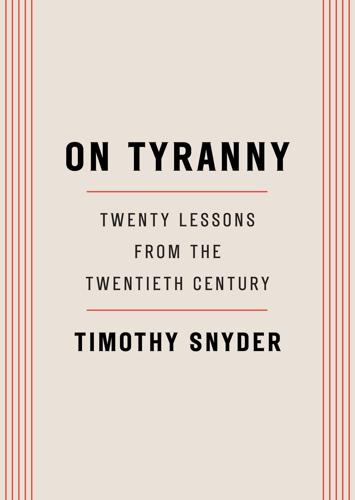
On Tyranny: Twenty Lessons From the Twentieth Century
by
Timothy Snyder
Published 14 Sep 2017
Since in the age of the internet we are all publishers, each of us bears some private responsibility for the public’s sense of truth. If we are serious about seeking the facts, we can each make a small revolution in the way the internet works. If you are verifying information for yourself, you will not send on fake news to others. If you choose to follow reporters whom you have reason to trust, you can also transmit what they have learned to others. If you retweet only the work of humans who have followed journalistic protocols, you are less likely to debase your brain interacting with bots and trolls. We do not see the minds that we hurt when we publish falsehoods, but that does not mean we do no harm.
…
To them, much about the president’s campaign was familiar, and the final outcome was no surprise. Ukrainian and Russian journalists who sniffed the air in the Midwest said more realistic things than American pollsters who had built careers on understanding the politics of their own country. To Ukrainians, Americans seemed comically slow to react to the obvious threats of cyberwar and fake news. When Russian propaganda made Ukraine a target in 2013, young Ukrainian journalists and others reacted immediately, decisively, and sometimes humorously with campaigns to expose disinformation. Russia deployed many of the same techniques against Ukraine that it later used against the United States—while invading Ukraine.

Hate Inc.: Why Today’s Media Makes Us Despise One Another
by
Matt Taibbi
Published 7 Oct 2019
Insofar as you picked a team, your team was “the press,” an entity separate from either party, with its own power and own institutional concerns. A generation ago, you would never have seen members of the media arguing for enhanced censorship powers and media regulation, as we’ve seen in the last year or so, in the controversy surrounding “fake news.” You also wouldn’t have seen so many members of the press so openly invested in political outcomes. Ironically, the kind of open devotion Thompson made famous in Campaign Trail: ’72—when he pined for George McGovern and crisscrossed the country arguing for his election to the White House, like Kafka’s Land Surveyor searching for redemption in the corridors of The Castle—has now become standard in both “left” and “right” media.
…
And the moves are kind of awesome, once you get into it. But as a model for either national politics or journalism, God help us. It turns out to be a business formula that works all too well. While Trump subsequently started trying to squeeze out of his heel role by inventing a new foil called “Fake News” (“He’s trying to turn face using the media,” quips Richards), the media doubled down on white hat/black hat politics. Trump has a tendency to WWE-ize everyone in his orbit. On the campaign trail, this worked for him. People like Jeb Bush and Marco Rubio and Hillary Clinton proved inept whenever they tried to fight using those tactics.
…
But this is one of many instances of the scale of an issue clearly being exaggerated. Moreover, it’s been hard not to notice the usual moral-panic symbiosis in full effect. The prolonged scare has translated into heightened profits for media companies, and aggressive calls for increased powers of censorship and enforcement for government, ironically to control the spread of “fake news.” What Stanley Cohen described over fifty years ago was a pale preview of what was to come. Cohen saw a primitive effort by cash-hungry tabloids to slap simplistic, symbolic labels on “deviant” groups. The tabloids were highly effective in creating an “ick” factor around their Mod and Rocker villains, even stripping them of sympathetic characteristics they had in real life, like working-class backgrounds.

Culture Warlords: My Journey Into the Dark Web of White Supremacy
by
Talia Lavin
Published 14 Jul 2020
Talking Points Memo (August 21, 2014). https://talkingpointsmemo.com/dc/left-wing-radicals-ferguson-missouri-protests. 4 Sean Adl-Tabatabai, “ANTIFA Plan Nationwide Riots on Nov. 4th to Forcibly Remove Trump,” News Punch (August 18, 2017). https://newspunch.com/antifa-riots-november-trump/. 5 Josh Boswell, “Mother Churns Out Stories for Master of Fake News,” Sunday Times (January 29, 2017). https://www.thetimes.co.uk/article/mother-churns-out-stories-for-master-of-fake-news-fcmzc05sx. 6 Craig Silverman, Jane Lytvynenko, and Scott Pham, “These Are Fifty of the Biggest Fake News Hits on Facebook in 2017,” BuzzFeed (December 28, 2017). https://www.buzzfeednews.com/article/craigsilverman/these-are-50-of-the-biggest-fake-news-hits-on-facebook-in. 7 Lucian Wintrich, “ANTIFA Leader: ‘November 4th . . . Millions of Antifa Supersoldiers Will Behead All White Parents,’” Gateway Pundit (October 30, 2017). https://www.thegatewaypundit.com/2017/10/antifa-leader-november-4th-millions-antifa-supersoldiers-will-behead-white-parents/.

Digital Empires: The Global Battle to Regulate Technology
by
Anu Bradford
Published 25 Sep 2023
Times (Nov. 6, 2018), https://www.nytimes.com/2018/11/06/technology/myanmar-facebook.html. 136.Dan Milmo, Rohingya Sue Facebook for £150bn Over Myanmar Genocide, The Guardian (Dec. 6, 2021), https://www.theguardian.com/technology/2021/dec/06/rohingya-sue-facebook-myanmar-genocide-us-uk-legal-action-social-media-violence. 137.Vyacheslav Polonski, Impact of Social Media on the Outcome of the EU Referendum (2016), http://www.referendumanalysis.uk/eu-referendum-analysis-2016/section-7-social-media/impact-of-social-media-on-the-outcome-of-the-eu-referendum/. 138.Digital, Culture, Media & Sport Committee, Disinformation and “Fake News”: Final Report, 2017–2019, HC 1791, § 6 (UK), https://publications.parliament.uk/pa/cm201719/cmselect/cmcumeds/1791/1791.pdf. 139.Aurelien Breeden, Child Abduction Rumors Lead to Violence Against Roma in France, N.Y. Times (Mar. 28, 2019), https://www.nytimes.com/2019/03/28/world/europe/roma-kidnap-rumors-france.html. 140.Agence France-Presse, Roma Attacked in Paris After Fake News Reports, Guardian (Mar. 27, 2019), https://www.theguardian.com/world/2019/mar/27/roma-call-for-protection-after-vigilante-attacks-inspired-by-fake-news. 141.Judit Szakács & Éva Bognár, European Parliament Special Committee on Foreign Interference in All Democratic Processes in the European Union, the Impact of Disinformation Campaigns About Migrants and Minority Groups in the EU 14 (2021). 142.Jakub Janda & Ilyas Sharibzhanov, Six Outrageous Lies Russian Disinformation Peddled about Europe in 2016, Atlantic Council (Feb. 8, 2017), https://www.atlanticcouncil.org/blogs/ukrainealert/six-outrageous-lies-russian-disinformation-peddled-about-europe-in-2016/. 143.Andreas Rinke & Paul Carrel, German-Russian Ties Feel Cold War–Style Chill Over Rape Case, Reuters (Feb. 1, 2016), https://www.reuters.com/article/us-germany-russia/german-russian-ties-feel-cold-war-style-chill-over-rape-case-idUSKCN0VA31O. 144.The Facebook Papers and Their Fallout, N.Y.
…
Times (May 6, 2019), https://www.nytimes.com/2019/05/06/technology/europe-tech-censorship.html. 206.Jacob Mchangama & Natalie Alkiviadou, The Digital Berlin Wall: How Germany (Accidentally) Created a Prototype for Global Online Censorship—Act Two 2, 21–22 (2020). 207.Oreste Pollicino, Fundamental Rights as Bycatch—Russia’s Anti-Fake News Legislation, Verfassungsblog (Mar. 28. 2019), https://verfassungsblog.de/fundamental-rights-as-bycatch-russias-anti-fake-news-legislation/. 208.Isabelle Canaan, NetzDG and the German Precedent for Authoritarian Learning, 28 Colum. J. Eur. L. 101 (2022). 209.Jacob Mchangama & Natalie Alkiviadou, The Digital Berlin Wall: How Germany (Accidentally) Created A Prototype For Global Online Censorship—Act Two (2020). 210.Tarleton Gillespie, Custodians of the Internet (2021). 211.Kaye, supra note 76. 212.Digital Services Act, supra note 65. 213.Clément Perarnaud, A Step Back to Look Ahead: Mapping Coalitions on Data Flows and Platform Regulation in the Council of the EU (2016–2019), 10(2) Internet Policy Review 1, 12–13 (2021). 214.Id. 215.Finland Invites Ministers from Digitally Advanced EU Countries to Discuss Europe’s Competitiveness, Ministry of Justice Finland (Jan. 21, 2021), https://oikeusministerio.fi/en/-//1410877/finland-invites-ministers-from-digitally-advanced-eu-countries-to-discuss-europe-s-competitiveness. 216.Innovative and Trustworthy AI: Two Sides of the Same Coin, Position Paper on Behalf of Denmark, Belgium, the Czech Republic, Finland, France, Estonia, Ireland, Latvia, Luxembourg, the Netherlands, Poland, Portugal, Spain and Sweden (Oct. 8, 2020), https://em.dk/media/13914/non-paper-innovative-and-trustworthy-ai-two-side-of-the-same-coin.pdf. 217.Thibault Larger, Mark Scott, Laura Kayali, & Nicholas Vinocur, Inside the EU’s Divisions on How to Go After Big Tech, Politico (Dec. 14, 2020), https://www.politico.eu/article/margrethe-vestager-thierry-breton-europe-big-tech-regulation-digital-services-markets-act/. 218.Mehreen Khan & Laura Noonan, Europe’s Low-Tax Nations Braced for Struggle Over US Corporate Tax Plan, Fin.
…
In one such example, the unbridled spread of false stories in social media led to mass violence in Europe in 2019, amplifying anti-gypsy tropes and claiming that the Roma people were snatching children in France.139 These rumors spread quickly on Snapchat, Twitter, and Facebook, and escalated into mob violence—an angry group of 50–70 people attacked two Roma groups in the suburbs of Paris.140 The European Parliament’s Special Committee found that the Roma people have been a target of multiple disinformation campaigns in Europe, and that online platforms led to the escalation of rumors and to the 2019 mob attack.141 Another prominent fake news story was peddled by a Facebook group called Anonymous.Kollektiv in 2016, falsely claiming that a thirteen-year old Russian-German girl was raped by refugees in Germany.142 Strategically, the story was timed to spread soon after former Chancellor Angela Merkel’s controversial decision to admit one million refugees into Germany, undermining the already challenging policy task of integrating refugees into German society.143 “The Facebook Papers”—referring to a set of documents disclosed by Frances Haugen, a former Facebook employee and a whistleblower, in 2021—further revealed a large cache of hate speech on the company’s platforms.144 One startling example comes from India, which is Facebook’s largest market, with 417 million users by the end of 2021.

#Republic: Divided Democracy in the Age of Social Media
by
Cass R. Sunstein
Published 7 Mar 2017
The idea of free speech has an affirmative side. It imposes constraints on what government may do, but it requires a certain kind of culture as well—one of curiosity, openness, and humility. Members of a democratic public will not do well if they are unable to appreciate the views of their fellow citizens, if they believe “fake news,” or if they see one another as enemies or adversaries in some kind of war. Learned Hand, a lower court judge from many decades ago, put his finger on the point when he said that the “spirit of liberty” is “that spirit which is not too sure that it is right.” The English language has two enduring accounts of democratic dystopia.
…
A more harmful example is the set of falsehoods that helped produce the vote in favor of “Brexit” (the exodus of the United Kingdom from the European Union) in 2016. Even if Brexit was a good idea (and it wasn’t), the vote in its favor was made possible, in part, by uses of social media that badly misled the people of the United Kingdom. In the 2016 presidential campaign in the United States, falsehoods spread like wildfire on Facebook. Fake news is everywhere. To date, social media have not helped produce a civil war, but that day will probably come. They have already helped prevent a coup (in Turkey in 2016). These are points about governance, but, as I have suggested, there is an issue about individual freedom as well. When people have multiple options and the liberty to select among them, they have freedom of choice, and that is exceedingly important.
…
Importantly but not surprisingly, it mattered, in terms of the basic effect, whether the correction came from the New York Times or Fox News: conservatives distrusted the former more, and liberals distrusted the latter more. Think in this light about social media. If your Twitter feed is insisting that a particular scandal happened, or that some public official was reckless or worse, how likely is it that a correction will move you? How likely is it that people will see through fake news? UNFAMILIAR ISSUES What if the underlying issue is not familiar? In that event, will balanced information produce polarization or consensus? A measure of agreement might well be expected, if only because people do not begin with strong prior convictions. Online, we often encounter issues that we know nothing about.
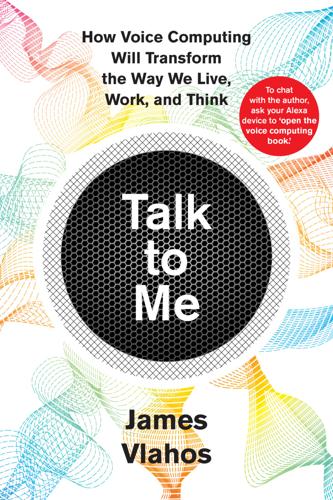
Talk to Me: How Voice Computing Will Transform the Way We Live, Work, and Think
by
James Vlahos
Published 1 Mar 2019
With a larger volume of speech examples for training and direct involvement from Lyrebird’s algorithm jockeys, the company can create even more realistic clones. The company did just that in 2017 when it released synthesized examples of Barack Obama, Hillary Clinton, and Donald Trump. They were really good, especially the Trump one. They were also frightening. In the near future, fake news will get even more bogus when Facebook and Twitter teem with audio clips of politicians and other public figures uttering things they never actually said. The components of voice AI—speech recognition, natural-language understanding, natural-language generation, and speech synthesis—still have a long way to go.
…
When users ask Alexa to give them the news, they may find themselves hearing reports that are both written and read by machines. Responsible news organizations, unfortunately, are not the only entities employing conversational AI to disseminate information. Bots can also spread what some people have termed “computational propaganda,” which amounts to fake news on steroids. On social media platforms, bots spew misinformation ranging from political smears to conspiracy theories. Two researchers at the University of Southern California, Alessandro Bessi and Emilio Ferrara, analyzed how Twitter was used to influence the 2016 U.S. presidential election. They discovered an abundance of easily available tools for creating propaganda-spreading bots.
…
Past featured snippets have falsely told the public that Obama was declaring martial law, Woodrow Wilson was a member of the Ku Klux Klan, MSG causes brain damage, and women are evil. Google willingly fixed these whoppers but pointed out that it had not authored them. The mistakes had been automatically extracted from other websites that were of the fake-news variety. This defense was in keeping with Google’s foundational assertion: that it steers people toward information but doesn’t create it. The company is the librarian, not the author of the books on the shelves. This distinction is crucial. To accept the status as a publisher or author of content (rather than a search engine or a platform where it is shared) would expose the company to a blizzard of new legal liabilities and moral responsibilities.
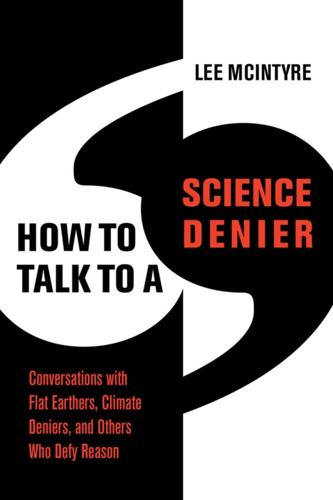
How to Talk to a Science Denier: Conversations With Flat Earthers, Climate Deniers, and Others Who Defy Reason
by
Lee McIntyre
Published 14 Sep 2021
In earlier work, Sander van der Linden discusses additional evidence for the effectiveness of inoculation theory. Sander van der Linden, “Inoculating against Misinformation,” Science, December 1, 2017, https://science.sciencemag.org/content/358/6367/1141.2. In even more recent work, he has invented an online “fake news game” that has had some success in “pre-bunking” against scientific disinformation. Sander van der Linden, “Fake News ‘Vaccine’ Works: ‘Pre-bunking Game Reduces Susceptibility to Disinformation,” Science Daily, June 24, 2019, https://www.sciencedaily.com/releases/2019/06/190624204800.htm. 31. This raises a potentially important criticism of Schmid and Betsch’s study—that was explored by Sander van der Linden in a discussion of their study in the same issue of Nature Human Behaviour—which is that their approach is entirely reactive.
…
Sander van der Linden, “Countering Science Denial,” Nature Human Behaviour 3 (2019): 889–890, https://www.nature.com/articles/s41562-019-0631-5. His “Bad News” game helps subjects to see the mistakes of the five common errors script coming before they are even exposed to them. Sander van der Linden, “Bad News: A Psychological ‘Vaccine’ against Fake News,” Inforrm, September 7, 2019, https://inforrm.org/2019/09/07/bad-news-a-psychological-vaccine-against-fake-news-sander-van-der-linden-and-jon-rozenbeek/. Other excellent work on the idea of inoculation against scientific misinformation can be found in John Cook, Stephan Lewandowsky, and Ulrich Ecker, “Neutralizing Misinformation through Inoculation,” PLoS One, May 5, 2017, https://journals.plos.org/plosone/article?
…
He said that a large number of miners these days were well educated, and that he’d worked with teachers, nurses, etc. He said there was about a 50/50 split between Democrats and Republicans. I asked if this diversity extended to their views on climate change, and he said yes. They had views all over the spectrum. First, there were the Trumpers, who believed that anything on climate change was fake news. Second, there were the folks who said, “I’m a coal miner; I have to be in favor of coal.” Third, there were those who were “aware of the environment.” Cautiously, I asked where he fell on this spectrum. He said he thought the Earth was in trouble. It was a careful answer, but my sense was that he probably put himself in category three.

The New Rules of War: Victory in the Age of Durable Disorder
by
Sean McFate
Published 22 Jan 2019
Those who want to win future wars yet insist such changes are too difficult are just throwing young soldiers’ lives at the problem. Weaponizing influence and gaining information superiority has three components. First is monitoring: intelligence agencies identify who is messaging what to whom, along with how and why. As Sun Tzu counsels, know your enemy. Second is discrediting: pinpointing fake news, alternative facts, bots, trolls, false narratives, viral memes, and negative frames, and then exposing them. Myth-busting must happen, otherwise people may start to believe the spin. This task is especially critical for democracies, since enemies target Americans and others who get to choose their leaders.
…
The “Troll Factory” is another component of Russia’s active measures against the West, revealing the true power of cyberwarfare. It’s not sabotage, like Stuxnet—it’s disinformation. Located in Saint Petersburg and officially called the Internet Research Agency, it’s where Russian operatives hack into websites, create phony news sites, and pump out fake news and bogus social media messages. Trolls are anonymous agents provocateur that stalk the internet, throwing seditious hand grenades into chatrooms and on news sites. Then there are bots, programs that mimic trolls by the thousands and drown out legitimate content. The West has few defenses against this subversive blitzkrieg.
…
“That may be so,” he replied, “but it is also irrelevant.”9 The North Vietnamese were not the first to win by weaponizing information. Benjamin Franklin was a master propagandist during the American Revolution. To garner support for the plucky revolutionaries among the British masses, Franklin published fake news in a counterfeit issue of the Boston Independent Chronicle, an influential newspaper. Writing all the articles himself, he had the newspaper discreetly put into the hands of British tabloid editors, who reprinted the articles. One depicted wartime atrocities by Indians at the behest of the British.

Artificial Unintelligence: How Computers Misunderstand the World
by
Meredith Broussard
Published 19 Apr 2018
This is the kind of fraudulent activity that happens every hour of every day on the Internet. The Internet is a magnificent invention, but it has also unleashed an unprecedented amount of fraud and a network of lies that move so fast that the rule of law can hardly keep up. After the 2016 US presidential election, there was a flood of interest in fake news. Nobody in tech was surprised that fake news was out there. They were surprised that people took it seriously. “Since when did people start believing everything on the Internet is true?” one programmer friend asked me. He honestly didn’t realize that there are people who don’t understand how web pages are made and how they get onto the Internet.
…
Yet, after all this time, I regularly attend tech meetings in which the first ten minutes are spent awkwardly waiting while someone figures out how to use the projector to get a PowerPoint presentation to show up on the screen. Thus far, we’ve managed to use digital technology to increase economic inequality in the United States, facilitate illegal drug abuse, undermine the economic sustainability of the free press, cause a “fake news” crisis, roll back voting rights and fair labor protection, surveil citizens, spread junk science, harass and stalk people (primarily women and people of color) online, make flying robots that at best annoy people and at worst drop bombs, increase identity theft, enable hacks that result in millions of credit card numbers being stolen for fraudulent purposes, sell vast amounts of personal data, and elect Donald Trump to the presidency.
…
W., 46–47 Angwin, Julia, 154–156 App hackathons, 165–174 Apple Watch, 157 Artificial intelligence (AI) beginnings, 69–73 expert systems, 52–53, 179 fantasy of, 132 in film, 31, 32, 198 foundations of, 9 future of, 194–196 games and, 33–37 general, 10–11, 32 narrow, 10–11, 32–33, 97 popularity of, 90 real vs. imagined, 31–32 research, women in, 158 sentience challenge in, 129 Asimov, Isaac, 71 Assembly language, 24 Association for Computing Machinery (ACM), 145 Astrolabe, 76 Asymmetry, positive, 28 Automation technology, 176–177 Autopilot, 121 Availability heuristic, 96 Babbage, Charles, 76–77 Bailiwick (Broussard), 182–185, 190–191, 193 Barlow, John Perry, 82–83 Bell Labs, 13 Bench, Shane, 84 Ben Franklin Racing Team (Little Ben), 122–127 Berkman Klein Center (Harvard), 195 Berners-Lee, Tim, 4–5, 47 Bezos, Jeff, 73, 115 Bias in algorithms, 44, 150, 155–157 in algorithms, racial, 44, 155–156 genius myth and, 83–84 programmers and, 155–158 in risk ratings, 44, 155–156 in STEM fields, 83–84 Bill & Melinda Gates Foundation, 60–61, 157 Bipartisan Campaign Reform Act, 180 Bitcoin, 159 Bizannes, Elias, 165, 166, 171 Blow, Charles, 95 Boggs, David, 67–68 Boole, George, 77 Boolean algebra, 77 Borden, Brisha, 154–155 Borsook, Paulina, 82 Bowhead Systems Management, 137 boyd, danah, 195 Bradley, Earl, 43 Brains 19–20, 95, 128–129, 132, 144, 150 Brand, Stewart, 5, 29, 70, 73, 81–82 Brin, Sergei, 72, 151 Brown, Joshua D., 140, 142 Bump, Philip, 186 Burroughs, William S., 77 Burroughs, William Seward, 77 Calculation vs. consciousness, 37 Cali-Fame, 186 California, drug use in, 158–159 Cameron, James, 95 Campaign finance, 177–186, 191 Čapek, Karel, 129 Caprio, Mike, 170–171 Carnegie Mellon University, autonomous vehicle research ALVINN, 131 University Racing Team (Boss), 124, 126–127, 130–131 Cars deaths associated with, 136–138, 146 distracted driving of, 146 human-centered design for, 147 Cars, self-driving 2005 Grand Challenge, 123–124 2007 Grand Challenge, 122–127 algorithms in, 139 artificial intelligence in, 129–131, 133 deaths in, 140 driver-assistance technology from, 135, 146 economics of, 147 experiences in, 121–123, 125–126, 128 fantasy of, 138, 142, 146 GPS hacking, 139 LIDAR guidance system, 139 machine ethics, 144–145, 147 nausea in, 121–123 NHTSA categories for, 134 problems/limitations, 138–140, 142–146 research funding, 133 SAE standards for levels of automation, 134–135 safety, 136–137, 140–142, 143, 146 sentience in, 132 Uber’s use of, 139 Udacity open-source car competition, 135 Waymo technology, 136 CERN, 4–5 Cerulo, Karen A., 28 Chess, 33 Children’s Online Privacy Protection Act (COPPA), 63–64 Chinese Room argument, 38 Choxi, Heteen, 122 Christensen, Clayton, 163 Chrome, 25, 26 Citizens United, 177, 178, 180 Clarke, Arthur C., 71–72 Client-server model, 27 Clinkenbeard, John, 172 Cloud computing, 26, 52, 196 Cohen, Brian, 56–57 Collins, John, 117 Common Core State Standards, 60–61 Communes, 5, 10 Computer ethics, 144–145 Computer Go, 34–36 Computers assumptions about vs. reality of, 8 components, identifying, 21–22 consciousness, 17 early, 196–199 human, 77–78, 198 human brains vs., 19–20, 128–129, 132, 144, 150 human communication vs., 169–170 human mind vs., 38 imagination, 128 limitations, 6–7, 27–28, 37–39 memory, 131 modern-day, development of, 75–79 operating systems, 24–25 in schools, 63–65 sentience, 17, 129 Computer science bias in, 79 ethical training, 145 explaining the world through, 118 women in, 5 Consciousness vs. calculation, 37 Constants in programming, 88 Content-management system (CMS), 26 Cooper, Donna, 58 Copeland, Jack, 74–75 Correctional Offender Management Profiling for Alternative Sanctions (COMPAS), 44, 155–156 Cortana, 72 Counterculture, 5, 81–82 Cox, Amanda, 41–42 Crawford, Kate, 194 Crime reporting, 154–155 CTB/McGraw-Hill, 53 Cumberbatch, Benedict, 74 Cyberspace activism, 82–83 DarkMarket, 159 Dark web, 82 Data on campaign finance, 178–179 computer-generated, 18–19 defined, 18 dirty, 104 generating, 18 people and, 57 social construction of, 18 unreasonable effectiveness of, 118–119, 121, 129 Data & Society, 195 DataCamp, 96 Data density theory, 169 Data journalism, 6, 43–47, 196 Data Journalism Awards, 196 Data journalism stories cost-benefit of, 47 on inflation, 41–42 Parliament members’ expenses, 46 on police speeding, 43 on police stops of people of color, 43 price discrimination, 46 on sexual abuse by doctors, 42–43 Data Privacy Lab (Harvard), 195 Data Recognition Corporation (DRC), 53 Datasets in machine learning, 94–95 Data visualizations, 41–42 Deaths distracted driving accidents, 146 from poisoning, 137 from road accidents, 136–138 in self-driving cars, 140 Decision making computational, 12, 43, 150 data-driven, 119 machine learning and, 115–116, 118–119 subjective, 150 Deep Blue (IBM), 33 Deep learning, 33 Defense Advanced Research Projects Agency (DARPA) Grand Challenge, 123, 131, 133, 164 Desmond, Matthew, 115 Detroit race riots story, 44 Dhondt, Rebecca, 58 Diakopoulos, Nicholas, 46 Difference engine, 76 Differential pricing and race, 116 Digital age, 193 Digital revolution, 193–194 Dinakar, Karthik, 195 Django, 45, 89 DocumentCloud, 52, 196 Domino’s, 170 Drone technology, 67–68 Drug marketplace, online, 159–160 Drug use, 80–81, 158–160 Duncan, Arne, 51 Dunier, Mitchell, 115 Edison, Thomas, 77 Education change, implementing in, 62–63 Common Core State Standards, 60–61 competence bar in, 150 computers in schools, 63–65 equality in, 77–78 funding, 60 supplies, availability of, 58 technochauvinist solutions for, 63 textbook availability, 53–60 unpredictability in, 62 18F, 178–179 Electronic Frontier Foundation, 82 Elevators, 156–157 Eliza, 27–28 Emancipation Proclamation, 78 Engelbart, Doug, 25, 80–81 Engineers, ethical training, 145 ENIAC, 71, 194, 196–199 Equality in education, 77–78 techno hostility toward, 83 technological, creating, 87 technology vs., 115, 156 for women, 5, 77–78, 83–85, 158 Essa, Irfan, 46 Ethics, 144–145, 147 EveryBlock, 46 Expertise, cognitive fallacies associated, 83 Expert systems, 52–53, 179 Facebook, 70, 83, 152, 158, 197 Facial recognition, 157 Fact checking, 45–46 Fake news, 154 Family Educational Rights and Privacy Act (FERPA), 63–64 FEC, McCutcheon v., 180 FEC, Speechnow.org v., 180 FEC.gov, 178–179 Film, AI in, 31, 32, 198 FiveThirtyEight.com, 47 Foote, Tully, 122–123, 125 Ford Motor Company, 140 Fowler, Susan, 74 Fraud campaign finance, 180 Internet advertising, 153–154 Free press, role of, 44 Free speech, 82 Fuller, Buckminster, 74 Futurists, 89–90 Games, AI and, 33–37 Gates, Bill, 61 Gates, Melinda, 157–158 Gawker, 83 Gender equality, hostility toward, 83 Gender gap, 5, 84–85, 115, 158 Genius, cult of, 75 Genius myth, 83–84 Ghost-in-the-machine fallacy, 32, 39 Giffords, Gabby, 19–20 GitHub, 135 Go, 33–37 Good Old-Fashioned Artificial Intelligence (GOFAI), 10 Good vs. popular, 149–152, 160 Google, 72 Google Docs, 25 Google Maps API, 46 Google Street View, 131 Google X, 138, 151, 158 Government campaign finance, 177–186, 191 cyberspace activism, antigovernment ideology, 82–83 tech hostility toward, 82–83 Graphical user interface (GUI), 25, 72 Greyball, 74 Guardian, 45, 46 Hackathons, 165–174 Hackers, 69–70, 82, 153–154, 169, 173 Halevy, Alon, 119 Hamilton, James T., 47 Harley, Mike, 140 Harris, Melanie, 58–59 Harvard, Andrew, 184 Harvard University Berkman Klein Center, 195 Data Privacy Lab, 195 mathematics department, 84 “Hello, world” program, 13–18 Her, 31 Hern, Alex, 159 Hernandez, Daniel, Jr., 19 Heuristics, 95–96 Hillis, Danny, 73 Hippies, 5, 82 HitchBOT, 69 Hite, William, 58 Hoffman, Brian, 159 Holovaty, Adrian, 45–46 Home Depot, 46, 115, 155 Hooke, Robert, 88 Houghton Mifflin Harcourt (HMH) HP, 157 Hugo, Christoph von, 145 Human-centered design, 147, 177 Human computers, 77–78, 198 Human error, 136–137 Human-in-the-loop systems, 177, 179, 187, 195 Hurst, Alicia, 164 Illinois quarter, 153–154 Imagination, 89–90, 128 Imitation Game, The (film), 74 Information industry, annual pay, 153 Injury mortality, 137 Innovation computational, 25 disruptive, 163, 171 funding, 172–173 hackathons and, 166 Instacart, 171 Intelligence in machine learning Interestingness threshold, 188 International Foundation for Advanced Study, 81 Internet advertising model, 151 browsers, 25, 26 careers, annual pay rates, 153 core values, 150 drug marketplace, 159–160 early development of the, 5, 81 fraud, 153–154 online communities, technolibertarianism in culture of, 82–83 rankings, 72, 150–152 Internet Explorer, 25 Internet pioneers, inspiration for, 5, 81–82 Internet publishing industry, annual pay, 153 Internet search, 72, 150–152 Ito, Joi, 147, 195 Jacquard, Joseph Marie, 76 Java, 89 JavaScript, 89 Jobs, Steve, 25, 70, 72, 80, 81 Jones, Paul Tudor, 187–188 Journalism.
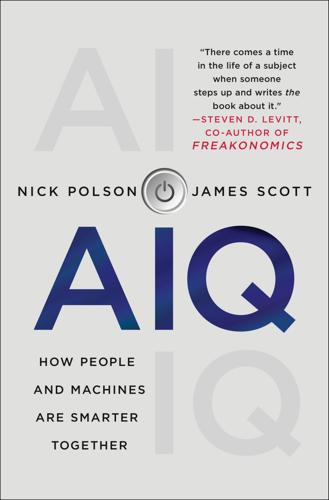
AIQ: How People and Machines Are Smarter Together
by
Nick Polson
and
James Scott
Published 14 May 2018
AI Anxieties We’ve told you how excited our students are about AI, and how the world’s largest firms are rushing to embrace it. But we’d be lying if we said that everyone was so bullish about these new technologies. In fact, many people are anxious, whether about jobs, data privacy, wealth concentration, or Russians with fake-news Twitter-bots. Some people—most famously Elon Musk, the tech entrepreneur behind Tesla and SpaceX—paint an even scarier picture: one where robots become self-aware, decide they don’t like being ruled by people, and start ruling us with a silicon fist. Let’s talk about Musk’s worry first; his views have gotten a lot of attention, presumably because people take notice when a member of the billionaire disrupter class talks about artificial intelligence.
…
Second, good policy and thoughtful regulations will be hugely important if we want to reap the benefits of these new NLP tools, without seeing them put to use in destructive ways. An algorithm that can write an episode of Friends seems cute, if a bit useless. That same algorithm will seem a lot more pernicious when someone can program it to flood the internet with fake news around election time. While we are ultimately optimistic, we are not policy experts, and we don’t know the right answer to this kind of problem. We do know, however, that the problems themselves need to be part of the conversation. In the historical development of every new technology, from fire to gene splicing, there’s always been a moment when “move fast and break stuff” ceased to be a morally tenable position for a grown-up.
…
That confession might end up doing real damage. It’s one thing to use idealized assumptions to analyze a Joe DiMaggio hitting streak; not much rides on the outcome. It’s another thing entirely to use those same assumptions to analyze contraceptive effectiveness—a domain where those assumptions are very wrong, and where fake news might harm millions of people. This may have been a small-data mistake, but the lesson for the big-data world of AI is clear. Imagine now that those poor assumptions aren’t merely used to write a one-off newspaper article. Instead, they’re baked into an AI system that makes automatic decisions without a human in the loop.

Know Thyself
by
Stephen M Fleming
Published 27 Apr 2021
And if our initial feeling of confidence is high, we might blurt out “10p” without pausing to reconsider or change our minds.11 People’s scores on the CRT reliably predict performance in other endeavors that prize rational, reflective thought, including understanding of scientific topics, rejection of paranormal ideas, and the ability to detect fake news. One interpretation of these associations is that the CRT is tapping into a style of self-aware thinking that promotes the ability to know when we might be wrong and that new evidence is needed. These statistical associations remain even when controlling for general cognitive ability, suggesting that self-reflectiveness as measured by the CRT, like measures of metacognitive sensitivity, may be distinct from raw intelligence.12 Detailed studies of why CRT failures occur suggest that people would do better if they listened to initial feelings of low confidence in their answers and took time to reconsider their decisions.
…
But our social interactions are not restricted to handfuls of individuals in workplaces and institutions. Thanks to social media, each of us now has the power to share information and influence thousands, if not millions, of individuals. If our collective self-awareness is skewed, then the consequences may ripple through society. Consider the role metacognition may play in the sharing of fake news on social media. If I see a news story that praises my favored political party, I may be both less likely to reflect on whether it is indeed real and more likely to just mindlessly forward it on. If others in my social network view my post, they may infer (incorrectly) that because I am usually a reliable source of information on social media, they don’t need to worry about checking the source’s accuracy—a case of faulty mindreading.
…
Even if they got some questions wrong, they tended to know that they were likely to be wrong, rating low confidence in their answers. But for climate change knowledge, metacognition was noticeably poor, even when controlling for differences in the accuracy of people’s answers. It is not hard to see how such skewed metacognition might help drive the sharing of incorrect information on social media, causing ripples of fake news within a social network.18 Many conflicts in society arise from disagreements about fundamental cultural, political, and religious issues. These conflicts can become magnified when people are convinced that they are right and the other side is wrong. In contrast, what psychologists call intellectual humility—recognizing that we might be wrong and being open to corrective information—helps us diffuse these conflicts and bridge ideological gaps.

There's a War Going on but No One Can See It
by
Huib Modderkolk
Published 1 Sep 2021
And, sure, we hear the warnings. Beware: these devices are minutely tracking your routines. Watch out: new threats are looming. States are increasingly using the internet to control and influence. Spying is easier than ever. Such convenience comes at a price: our anonymity and privacy are being compromised, fake news is fuelling our distrust and cyberattacks are pulling at the seams of society. Yet despite these alarming signals, we keep calling and messaging, strapping on Apple Watches and sharing baby photos on Facebook. Is it because we don’t see the dangers, or because we can’t fathom them? Even the prime minister of the Netherlands shrugged off a clear warning from the directors of his security and intelligence agencies.
…
In December 2018, the Dutch Justice Minister Ferdinand Grapperhaus announced he wanted to be able to impose administrative sanctions on hosting providers that didn’t take down child pornography within twenty-four hours. The European Union has a comparable policy on terrorist content. Privacy watchdogs and hosting companies now fear the Dutch and European governments will expand such penalties to things like hate speech, incitement and fake news. Or, say, a disagreeable post about a head of state. If providers could no longer refuse requests to remove content, that would give authorities a powerful censorship tool. Governments are trying in all kinds of ways to strengthen their grip on the internet. In 2013, the FBI approached Leaseweb offering half a million dollars in exchange for installing a black box that would give them permanent access to the provider’s servers.
…
I believe the public officials and policymakers attending Ronald Prins’s leaving party are genuinely motivated to defend the Netherlands against catastrophe. Their fears makes sense. A hack of sensitive documents could spark a social revolution, our private conversations are conducted over Chinese devices and fake news is corroding journalism. The internet has set in chain an arms race with grave consequences for democracy, for safety and security and for journalism, even if most people don’t see it that way. Is the new law a solution, or is the Netherlands merely fanning cyber aggression? The law will certainly give Dutch agencies a stronger grip on the internet.

Rule of the Robots: How Artificial Intelligence Will Transform Everything
by
Martin Ford
Published 13 Sep 2021
Martin Giles, “The GANfather: The man who’s given machines the gift of imagination,” MIT Technology Review, February 21, 2018, www.technologyreview.com/2018/02/21/145289/the-ganfather-the-man-whos-given-machines-the-gift-of-imagination/. 3. James Vincent, “Watch Jordan Peele use AI to make Barack Obama deliver a PSA about fake news,” The Verge, April 17, 2018, www.theverge.com/tldr/2018/4/17/17247334/ai-fake-news-video-barack-obama-jordanpeele-buzzfeed. 4. Sensity, “The state of deepfakes 2019: Landscape, threats, and impact,” September 2019, sensity.ai/reports/. 5. Ian Sample, “What are deepfakes—and how can you spot them?,” The Guardian, January 13, 2020, www.theguardian.com/technology/2020/jan/13/what-are-deepfakes-and-how-can-you-spot-them. 6.
…
This includes AI-enabled cyberattacks on physical infrastructure and critical systems that increasingly will be interconnected and managed by algorithms, as well as threats to the democratic process and the social fabric. The Russian intervention in the 2016 presidential election offers a relatively tame preview of what might be coming. Artificial intelligence could eventually put “fake news” on steroids by enabling the creation of photographic, audio and video fabrications that are virtually indistinguishable from reality, while armies of truly advanced bots could someday invade social media, sow confusion and potentially mold public opinion with terrifying proficiency. Throughout the world—but especially in China—surveillance systems employing facial recognition and other AI-based technologies are being used in ways that vastly enhance the power and reach of authoritarian governments and erode any expectation of personal privacy.
…
So coherent, in fact, that OpenAI declined to share the GPT-2 code with other AI researchers, as it had done with its previous projects, out of concern that the system could be misused. OpenAI’s management team worried, for example, that a torrent of text generated by a GPT-2 system might clog the internet with fake news or perhaps overwhelm e-commerce sites with fabricated product reviews. This decision resulted in criticism from the AI research community, which values an open exchange of ideas. Then, after less than a year, OpenAI reversed course and released the GPT-2 code after all—with little fanfare and no evidence of any malicious use.

The Future Is Faster Than You Think: How Converging Technologies Are Transforming Business, Industries, and Our Lives
by
Peter H. Diamandis
and
Steven Kotler
Published 28 Jan 2020
Deeper Fakes 2018, a YouTube video: David Mack, “This PSA About Fake News from Barack Obama Is Not What It Appears,” BuzzFeed News, April 17, 2018. See: https://www.buzzfeednews.com/article/davidmack/obama-fake-news-jordan-peele-psa-video-buzzfeed. the dangers of deepfakes: Technology, “The Real Danger of DeepFake Videos Is That We May Question Everything,” NewScientist, August 29, 2018. See: https://www.newscientist.com/article/mg23931933-200-the-real-danger-of-deepfake-videos-is-that-we-may-question-everything/. See also: Oscar Swartz, “You Thought Fake News Was Bad? Deep Fakes Are Where Truth Goes to Die,” Guardian, November 12, 2018, https://www.theguardian.com/technology/2018/nov/12/deep-fakes-fake-news-truth.
…
And with fewer glitchy distortions. The results are convincing. Study subjects overwhelmingly thought the videos were real. While there are some positive uses for the technology (which we’ll examine in the upcoming entertainment chapter), the application’s downside is impossible to ignore. Many are concerned about “fake news,” which has the power to destroy reputations, set off civil unrest, and even shape global politics. There are also legal ramifications. Deepfakes make it easier for those “caught on tape” to claim it wasn’t them—because you never know—and that’s exactly the problem. Yet, the problem in advertising—that is, being followed around department stores by marketers disguised as Mom—is more a temporary blip than a longstanding trend.
…
Deep Fakes Are Where Truth Goes to Die,” Guardian, November 12, 2018, https://www.theguardian.com/technology/2018/nov/12/deep-fakes-fake-news-truth. Carnegie Mellon University: See Carnegie Mellon’s original article: https://www.cmu.edu/news/stories/archives/2018/september/deep-fakes-video-content.html. Goodbye Advertising, Hello JARVIS Shopping JARVIS: Vala Afshar, “How AI-Powered Commerce Will Change Shopping,” ZDNet, December 21, 2018. See: https://www.zdnet.com/article/how-ai-powered-commerce-will-change-shopping/. Chapter Seven: The Future of Entertainment Going Digital In 1999, the year Netflix launched, they had 239,000 subscribers: Reed Hastings, “How I Did It: Reed Hastings, Netflix,” Inc.
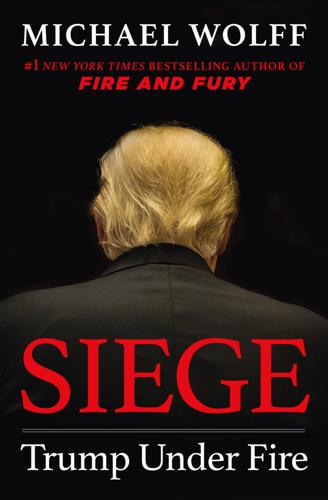
Siege: Trump Under Fire
by
Michael Wolff
Published 3 Jun 2019
Today they say, ‘Sources have said that President Trump…’ Sources! They never say who the sources are, they don’t have sources. The sources don’t exist, in many cases. They don’t have sources and the sources in many cases don’t exist. These are very dishonest people, many of them. They are very, very dishonest people. Fake news, very dishonest. But you watch Comey, and you watch the way he lies, and then he’s got the memos. I wonder when he wrote the memos, right? Then he’s got the memos and he puts them up. Watch the way he lies, it’s the most incredible thing … “By the way, by the way, by the way, is this better than that phony Washington White House Correspondents’ Dinner?
…
She had not been seen for twenty-four days, not since her appearance on May 10, just after her “Be Best” debut. On June 21, during a surprise trip to a shelter for migrant children in Texas, she was photographed in a Zara jacket with a legend scrawled across the back: I REALLY DON’T CARE, DO U? The president insisted that she was referring to the fake news media. 8 MICHAEL FLYNN In early June, the Mueller team prepared to oppose what it believed was soon to come: the president’s pardon of Michael Flynn, the bumptious and fleeting former national security advisor who had been indicted for lying to the FBI. A frequent Trump riff was about whom he could pardon.
…
Trump himself appeared unconcerned or unaware; in an affable mood, he was perfectly convivial with the prime minister. Taken through the interview on the way back from dinner, he seemed disbelieving, even shocked. And dismissive, too: the interview had nothing to do with what he said. Really, he told aides, this was fabricated. “Fake news,” he declared. Murdoch, in New York, heard this comment and scoffed. “He’s mentally out of it.” When the Sun, on Murdoch’s instructions, posted a videotape of the interview, confirming the validity of its report, Trump barely skipped a beat. Fake. Untrue. All wrong. Totally made up. * * * From any point of view, this was bad.

Aftershocks: Pandemic Politics and the End of the Old International Order
by
Colin Kahl
and
Thomas Wright
Published 23 Aug 2021
Anna MM Vetticad, “Indian Media Accused of Islamophobia for Its Coronavirus Coverage,” Al Jazeera, May 15, 2020, https://www.aljazeera.com/news/2020/5/15/indian-media-accused-of-islamophobia-for-its-coronavirus-coverage; Hannah Ellis-Petersen and Shaikh Azizur Rahman, “Coronavirus Conspiracy Theories Targeting Muslims Spread in India,” The Guardian, April 13, 2020, https://www.theguardian.com/world/2020/apr/13/coronavirus-conspiracy-theories-targeting-muslims-spread-in-india; Alexandre Capron, “‘CoronaJihad’: Fake News in India Accuses Muslims of Deliberately Spreading Covid-19,” France 24, May 13, 2020, https://observers.france24.com/en/20200513-india-coronajihad-fake-news-muslims-spreading-covid-19; Vasudha Venugopal, “Tablighi Jamaat Is a Talibani Crime, Not Negligence: Mukhtar Abbas Naqvi,” Economic Times, April 2, 2020, https://economictimes.indiatimes.com/news/politics-and-nation/tablighi-jamaat-is-a-talibani-crime-not-negligence-mukhtar-abbas-naqvi/articleshow/74940835.cms; “‘Do Not Buy from Muslims’: BJP Leader in India Calls for Boycott,” Al Jazeera, April 29, 2020, https://www.aljazeera.com/news/2020/4/29/do-not-buy-from-muslims-bjp-leader-in-india-calls-for-boycott; Harsh Mander, “The Coronavirus Has Morphed into an Anti-Muslim Virus,” The Wire, April 13, 2020, https://thewire.in/communalism/coronavirus-anti-muslim-propaganda-india; Soumya Chatterjee and Theja Ram, “COVID-19: Muslims and Muslim Volunteers Heckled, Harassed in Karnataka,” News Minute, April 6, 2020, https://www.thenewsminute.com/article/covid-19-muslims-amd-muslim-volunteers-heckled-harassed-karnataka-121977; Yasmine El-Geressi, “Blamed, Attacked, Denied Treatment: Coronavirus Fans Islamophobia in India,” Majalla, May 15, 2020, https://eng.majalla.com/node/88791/blamed-attacked-denied-treatment-coronavirus-fans-islamophobia-in-india%C2%A0; Meenakshi Ganguly, “India Has Taken Notable Steps to Contain Covid-19—but Failed to Curb Surging Anti-Muslim Rhetoric,” Scroll.in, April 18, 2020, https://scroll.in/article/959496/india-has-taken-notable-steps-to-contain-covid-19-but-failed-to-curb-surging-anti-muslim-rhetoric. 61.
…
Amanda Edgell et al., “An Update on Pandemic Backsliding: Democracy Four Months After the Beginning of the Covid-19 Pandemic,” V-Dem Institute, June 30, 2020, https://www.v-dem.net/media/filer_public/b9/2e/b92e59da-2a06–4d2e-82a1-b0a8dece4af7/v-dem_policybrief-24_update-pandemic-backsliding_200702.pdf; “Pandemic Backsliding: Democracy During COVID-19 (March to September 2020),” V-Dem Institute, last modified September 2020, https://www.v-dem.net/en/analysis/PanDem/. 44. Lian Buan, “Duterte’s Special Powers Bill Punishes Fake News by Jail Time, up to P1-M Fine,” Rappler, March 24, 2020, https://www.rappler.com/nation/duterte-special-powers-bill-coronavirus-fines-fake-news; Julie McCarthy, “Concerns in Philippines After Duterte Given Emergency Powers to Fight COVID-19 Spread,” NPR, March 24, 2020, https://www.npr.org/sections/coronavirus-live-updates/2020/03/24/820906636/concerns-in-philippines-after-duterte-given-emergency-powers-to-fight-covid-19-s; Manuel Mogato and Vince Nonato, “Human Rights Groups: COVID-19 Crisis Not an Excuse to Stifle Dissent, Criticism,” One News, March 26, 2020, https://www.onenews.ph/human-rights-groups-covid-19-crisis-not-an-excuse-to-stifle-dissent-criticism; Selam Gebrekidan, “For Autocrats, and Others, Coronavirus Is a Chance to Grab Even More Power,” New York Times, March 30, 2020, https://www.nytimes.com/2020/03/30/world/europe/coronavirus-governments-power.html. 45.
…
The vilification of the Muslim community as “superspreaders” began in early April, when a government spokesperson linked the rise in national COVID-19 cases to an 8,000-person gathering of a Muslim missionary organization, Tablighi Jamaat, in mid-March. Almost immediately, the hashtag “CoronaJihad” went viral on Indian Twitter, as reports that Muslims were intentionally infecting Hindus skyrocketed. Fake news stories highlighting pictures of Muslims allegedly spitting in food, poisoning water supplies, or licking utensils to spread COVID-19 circulated on Facebook, on Twitter, and in WhatsApp groups. Politicians from Modi’s BJP stoked the conspiracy theories, calling the Jamaat event a “Talibani crime.”
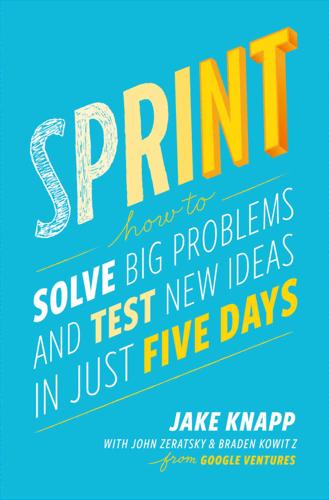
Sprint: How to Solve Big Problems and Test New Ideas in Just Five Days
by
Jake Knapp
,
John Zeratsky
and
Braden Kowitz
Published 8 Mar 2016
In real life, Slack was getting lots of great press. Many of their new customers discovered the service by reading an article about it. So Merci suggested we use a fake New York Times article for our opening scene. The article could be about “new trends in office software”—giving us the perfect opportunity to introduce our two prototypes, Slack and Gather. Here’s how we drew it on the storyboard: The fake news article is a useful opening scene. We used the same method in our sprint with Blue Bottle, when we opened with a (fake) New York Times article about three (fake) up-and-coming coffee companies. But there are lots of ways to open your storyboard.

Futureproof: 9 Rules for Humans in the Age of Automation
by
Kevin Roose
Published 9 Mar 2021
Or what if I’m getting furious emails from my editor? I tried to put it out of my mind and focus on the leaping dancers in front of me. But my imagination kept wandering. What if my apartment is on fire? What if I accidentally posted something controversial on Twitter, and President Trump is, at this very moment, calling me a “fake news moron from the New York Slimes?” I decided I couldn’t wait to find out. I silently mouthed “bathroom” to my wife, scooted past her and down the aisle, rushed to the bathroom, entered a stall, and whipped out my phone. What I saw was, basically, nothing. A few unimportant emails, a text from my pharmacy, an Instagram comment or two.
…
In 2019, OpenAI, the nonprofit AI lab, set a good example of responsible deployment when it withheld the full version of its new text generation algorithm, GPT-2. Experts had voiced concerns that GPT-2—which used AI to predict the next words in a sequence and could finish submitted samples of partial texts in an eerily humanlike way—could be used to spread fake news or computer-generated propaganda. So the organization released only a partial, less capable version until it could observe how it was being used in the wild. (It released the full version of GPT-2 nine months later, saying it had “no strong evidence of misuse so far.”) But we can’t afford to wait for new laws, or depend on the moral compasses of AI makers, to start trying to prevent the reckless and irresponsible use of AI.
…
At Harvard, incoming freshmen John Michael Baglione, “Countering College’s Culture of Sleeplessness,” Harvard Gazette, August 24, 2018. In 2015, a group of Stanford researchers Sarah McGrew et al., “Can Students Evaluate Online Sources? Learning from Assessments of Civic Online Reasoning,” Theory & Research in Social Education (2018). In fact, one study found Niraj Chokshi, “Older People Shared Fake News on Facebook More Than Others in 2016 Race, Study Says,” New York Times, January 10, 2019. In a 2018 report for the nonprofit organization Monica Bulger and Patrick Davison, “The Promises, Challenges, and Futures of Media Literacy,” Journal of Media Literacy Education (2018). Chen believes that these skills Frank Chen, “Humanity + AI: Better Together,” Andreessen Horowitz (blog), February 22, 2019.

Hiding in Plain Sight: The Invention of Donald Trump and the Erosion of America
by
Sarah Kendzior
Published 6 Apr 2020
The public is being served conspiracy theories and hate rhetoric, and it’s leading to actual repercussions that are terrible for our democracy, and have hurt people badly, and I don’t think that journalists are doing a good job standing up for the most vulnerable citizens which is absolutely what their priority should be.31 The audience, comprised of journalists from around the world, applauded hesitantly, most looking stunned, a few looking angry, and fewer still looking pleased. I do not think most of the white journalists understood why I spoke with such urgency, but maybe they do now. I hope so. In January, I was invited to a conference of journalists and tech corporation employees in Palo Alto to discuss the problem of “fake news,” a hot topic after the election. This event was one of many post-Trump misadventures in which I was invited somewhere fancy as a token “red state journalist who had predicted Trump would win,” leading people who had apparently never read anything I had written to assume I also approved of that outcome.
…
Donald J. Trump and Jeffrey Epstein and Maxwell, Ghislaine media coverage of obsession with underage girls and Rubenstein, Howard (publicist) and tabloid culture and Trump, Donald 2006 arrest 2008 plea deal 2019 arrest Erdoğan, Recep Tayyip Eric Lichtblau, Eric Estonia Fairness Doctrine “fake news” Farage, Nigel fascism global elite and rebirth of global fascism and lies and mob compliance Orwell, George, on use of the term Federal Bureau of Investigation (FBI) and Clinton, Hillary Ten Most Wanted List warning from Harry Reid to James Comey of 2016 election interference Ferguson uprising and Brown, Michael #Ferguson and hope and journalism Trump, Donald, on Financial Crimes Enforcement Network (FinCEN) (Treasury Department) Firtash, Dmitry Flynn, Michael Ford, Gerald Fox News ad buys and Ailes, Roger creation of and Hannity, Sean on Midwest as home of “real Americans” and Murdoch, Rupert Trump, Donald, on Franks, Bruce Freeh, Louis Friedman, Robert I.
…
See also sex trafficking Hungary Hurricane Maria Hurt, Harry, III Icahn, Carl impeachment articles (filed by Brad Sherman and Al Green) income inequality Iran-Contra scandal Iranian uprising of 2009 Iraq War “iron triangles” speech (Mueller) Israel and axis of autocrats Breitbart established in and Kushner, Jared and Netanyahu, Benjamin “right to return” policy and transnational criminal networks War of Independence Italian mafia Gotti family and Giuliani, Rudy Russian mafia compared with supplanted by Russian mafia in New York Ivankov, Vyacheslav Jackson, Andrew Jackson, Shirley Jackson, Spence Johnston, David Cay journalism and journalists “both-sidesing” and Cohn, Roy coverage of Brexit coverage of Donald Trump and Fairness Doctrine and “fake news” and Ferguson uprising and Great Recession murder of Anna Politkovskaya murder of Jamal Khashoggi and networked authoritarianism New York Daily News and 9/11 and Nixon, Richard obligation to service the public in Russia on Russian mafia and Steele dossier and Trump, Donald at Trump rallies in Turkey in Uzbekistan See also digital media June 2016 Trump Tower meeting kakistocracy Kaljulaid, Kersti Kander, Jason Karimov, Islam Kasowitz, Marc Kavanaugh, Brett Kennedy, John F.
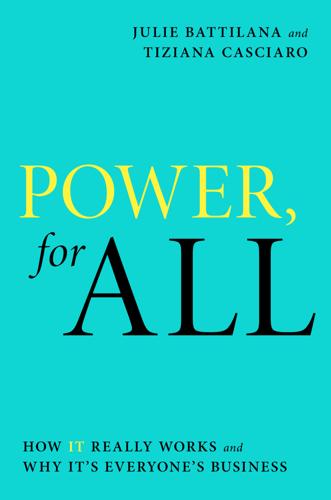
Power, for All: How It Really Works and Why It's Everyone's Business
by
Julie Battilana
and
Tiziana Casciaro
Published 30 Aug 2021
Berry and Sarah Sobieraj, The Outrage Industry: Political Opinion Media and the New Incivility (Oxford: Oxford University Press, 2013). 95 See Cass R. Sunstein, #Republic: Divided Democracy in the Age of Social Media (Princeton, NJ: Princeton University Press, 2017); Jacob L. Nelson and Harsh Taneja, “The Small, Disloyal Fake News Audience: The Role of Audience Availability in Fake News Consumption,” New Media & Society 20, no. 10 (2018): 3720–37; and for a review of the nuanced literature on social media and democracy: Joshua A. Tucker et al., “Social Media, Political Polarization, and Political Disinformation: A Review of the Scientific Literature,” Hewlett Foundation, March 2018, https://hewlett.org/wp-content/uploads/2018/03/Social-Media-Political-Polarization-and-Political-Disinformation-Literature-Review.pdf. 96 For guidance on overcoming these limitations and building a more democratic digital public sphere, see Joshua Cohen and Archon Fung, “Democracy and the Digital Public Sphere,” in Digital Technology and Democratic Theory, ed.
…
What is at stake, therefore, is our ability, and our children’s, to think critically and decide for ourselves what we want and how to behave.40 History has taught us that preserving this ability is critical in the face of propaganda and power concentration. In the digital era, it is particularly crucial as we grapple with deep fakes, fake news, and coordinated disinformation campaigns aimed at altering the very basis of reality. Yet concentrations of power are not immutable. It is always up to us to agitate, innovate, and orchestrate to change the power hierarchy, as many Google employees have shown us. CURBING THE POWER OF BIG TECH In March 2018, it came to light that Google had entered into a contract with the U.S.
…
To begin with, increased surveillance can squash protest and dissent, as activists like Tope know all too well.93 Platform algorithms wired for profits spread controversial, inflammatory content to those most susceptible to engage with it94—content that is often blatantly false. By deciding what information we see and what opinions we hear, social media amplifies political polarization, while spreading disinformation and fake news.95 Unregulated and nascent, hostile and profit-driven, the digital public sphere today falls woefully short of its democratic potential.96 Though no simple prescription exists to counter these threats, one element is clear: While the world of business and the global economy have been drastically transformed in the past half-century, our democratic institutions have yet to catch up.
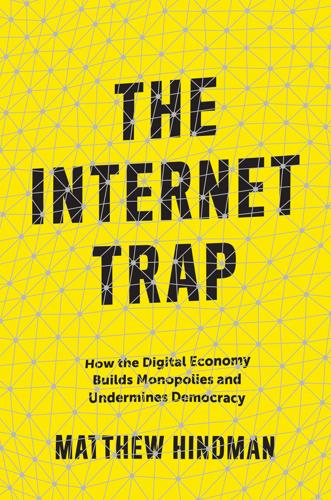
The Internet Trap: How the Digital Economy Builds Monopolies and Undermines Democracy
by
Matthew Hindman
Published 24 Sep 2018
The model suggests, too, that search engines or social networks can have countervailing effects: pushing readers further afield, but making audiences of the largest search engines and portals even more valuable. Facebook’s push to host other sites’ news articles, or the economic logic of content farms and so-called fake news, are captured well by this simple model. Chapter 5 takes a different tack, using data on fluctuations in web traffic. The wait-and-see crowd is right about one thing: the web is a dynamic medium, and there have been big gaps in our understanding of how web Rethinking the Attention Economy • 9 traffic evolves over time.
…
At critical moments the Chinese government mobilizes hundreds of thousands of citizens to shape online discussion, though usually by distraction rather than directly confronting disfavored speech.40 Even more disturbing is the example of Russia, whose efforts go far beyond just domestic censorship and surveillance. As we have seen, the web provides business models for fake news and other types of questionable content. But Russia seems to have used coordinated campaigns at unprecedented scale to amplify these dynamics and shape the news agenda. While the full extent of Russian influence on the 2016 U.S. election is still unclear as of this writing, what we do know is disturbing.
…
Open-source amp is better, but it still breaks web standards and increases publisher dependence on Google—with news articles often hosted directly from Google’s own caching servers. amp may be better than the alternatives, but it magnifies the loss of control news organizations have already experienced. 180 • Chapter 8 Newspapers are not wholly helpless, as we have seen. With a better understanding of stickiness, newspapers and civic content producers can make smarter investments and maximize their chance to build an audience. In the midst of the panic over fake news, many citizens who hate “mainstream media” still have strong affection for their local newspaper. This goodwill remains an enormous asset, and mid-size newspapers have little to fear from small hyperlocal startups. But there is no hiding the fact that many newspapers—and increasingly other news organizations—now depend on the actions of policymakers and digital giants for their very survival.

The Unknowers: How Strategic Ignorance Rules the World
by
Linsey McGoey
Published 14 Sep 2019
Find a business partner.’10 It’s a doctrine of deliberate anti-visibility: the strategic effort to make one’s idea seem to have originated elsewhere to avoid the appearance of primary involvement. It’s a tactic for camouflaging one’s direct complicity through complex partnership structures. It’s a way to manufacture ignorance alibis. IS ‘FAKE NEWS’ THE MAIN PROBLEM? Bannon’s range of tactics points to a neglected reality. We shouldn’t presume that ‘fake news’ is only a problem when obvious lies are driving news stories. The opposite might in fact be the case. News stories that appear honestly reported but which omit important contextual information can be just as damaging if not more so than clear smear jobs, because there’s less inclination to expose falsehoods that are not perceived as being deceptions.
…
Ford’s editorial team at Dearborn based their ‘news’ on a document titled The Protocols of the Elders of Zion, purportedly exposing Jewish world conspiracy. As early as 1921, The Times of London newspaper had furnished proof that The Protocols had been the work of a Russian agent who had plagiarized it from a satirical fictional exchange. It was, in effect, an early example of ‘fake news.’ Ford’s editors then bundled op-eds from Dearborn Independent into a book, The International Jew, translated into dozens of languages. A visitor to Hitler’s Munich headquarters in the mid-1920s could browse through numerous copies of Der International Jude available in the waiting area. Hitler referred to Ford as his ‘inspiration,’ a view shared by Hitler Youth who pointed to Ford’s anti-Jewish stance as a reason for supporting Hitler in the first place.
…
INDEX Ackerman, Spencer, 91 agnotology, 11, 29–30, 39, 188–9, 221 Andrews, Samuel, 210–11 antidepressants: dosage level concerns, 283–5; FDA black box warning, 288; FDA investigations, 281, 287–8; information dissemination, 285–6; lack of effectiveness for children, 250, 251–2; MHRA reviews, 282–6; off-label prescribing for children, 250–1, 292; patient information labels, 281, 282; popularity, 280, 290; suicide and other side effects, 280–1, 282, 287–90; unpublished trials data, 250, 281, 286–7 Arendt, Hannah, 45, 62, 179, 220–1, 309 Arthur Anderson, 235 auditors, 234–5 Aventis, 269–77 Bacevich, Andrew, 13–14, 68–9 Bachelet, Michelle, 221–2 Bain, Alexander, 159–60 banks, corporate ignorance, 120 Bannon, Stephen, 34–5, 87, 93–4, 175 Barings, 120 Bassel, Leah, 59 Bastiat, Frédéric, 168, 200–1 Bentham, Jeremy, 8, 37, 155, 299 Bernanke, Ben, 55 Bignell, Paul, 32 black Americans, 196, 237, 238, 241 Black, Eugene, 219 Blair, Tony, 31–2 Blankfein, Lloyd, 76–7 Brandeis, Louis, 65 Breitbart, 34, 85–6 Brennan, Jason, 93–4, 95–6, 243; Against Democracy, 66–7, 96 Brexit vote: Cambridge Analytica Leave campaign assistance, 86; half-truths, 89–90; Leave campaign claims, 30–1; and low-income voters, 19; support from wealthy, 90; supposed ignorance of leave voters, 82–3, 89–90, 162; voter turnout, 31 Briggs, Asa, 159–60 Brink, André, A Dry White Season, 268–9 Britain, nation of shopkeepers, 192 Brook, Richard, 283–5, 295 Brooks, Rebekah, 100, 103, 113–14 Buchanan, James, 246–7 Buffett, Warren, 55, 67 Burke, Edmund, 9, 317; background, 148; condemnation of French Revolution, 149–51, 182; and the divine, 77; and East India Company, 10, 122, 175, 176, 180–1; government regulation, 20–1; Warren Hastings prosecution, 180, 182 Bush, George W., 72–3 business: collusion, 141–2; economics teaching, 205, 215–16, 304; government intervention, 43; labour practices, 13; preoccupation with self-interest, 139–40; strategic ignorance, 20; useful unknowns, 51–6, 277; see also regulation business schools, 118–19 Cadwalladr, Carole, 86 Calais Jungle, 1–3 Cambridge Analytica, 86 Cambridge University, 67–8 Canada: indigenous groups, 26–9, 58; mining companies, 185, 222–4 Carnegie, Andrew: belief in self-made competitive success, 205, 214; beneficiary of laissez-faire business practices, 205–6; beneficiary of steel industry tariffs, 206, 210; deception and lies, 207, 209; Edgar Thomson strike, 208; master of ignorance, 20; philanthropy, 204; professed support for workers’ rights, 207–8, 210, 215; stock market trading, 206–7; strategic ignorance of Homestead crisis, 208–10, 214 Carpenter, Daniel, 263–4, 265 Carter, Zachary, 217, 236 Caryatid Operation, 112–14 Chandler, Alfred, The Visible Hand, 195 Chang, Ha-Joon, 187–8 Chernow, Ron, 211, 212, 213–14 Chicago, meat plants, 255 Chicago School, 246–7, 300, 303 children: Canada’s indigenous children, 27, 58; family reunions, 2–3; obesity, 51–2, 65; see also antidepressants Chile, 221–2 Cisneros, Ann Marie, 271–2, 274 Clark, John Bates, 133–4 Clark, Maurice, 210–11 Clinton Foundation, 87 Clive, Robert, 177–8, 179, 205 Cobain, Ian, The History Thieves, 42 Coca-Cola, 51–2, 65 Cohen, Stanley, 57 colonialism: Britain’s defence of American colonies, 191–2; and Canada’s indigenous groups, 26–9; destruction/falsification of files, 42, 58; in India, 44; indigenous rights, 28–9; see also East India Company confirmation bias, 37–8, 151 conscription, 14–15 contingency, 6 corporate veil, 46, 222–3, 311–12 Coulson, Andy, 102–3, 113 credibility deficits/excess, 25–6, 77 Dalrymple, William, 177, 178 Daschuk, James, Clearing the Plains, 26–7 Davies, Nick, 103–6 Davies, Sharon, 239–40 The Dearborn Independent, 79–81 deaths, workplace, 218, 219, 238 democracy: choice by algorithm, 66–7; and disenfranchisement, 16, 66, 70, 96, 156, 174; epistemological strengths, 297–8; Greek democracy, 296–7; low-income voters, 19, 78; male enfranchisement, 42; online campaign infringements, 86; see also voter ignorance Deng, Wendi, 101 denial, 56, 57, 120 Dewdney, Edgar, 28 disenfranchisement, 16, 66, 70, 96, 156, 174 displaced people, 202–3 divine providence, 67–9, 174, 176, 318–19, 322–4 Dobbin, Frank, 194–5 Dowd, Timothy, 194–5 Dower, John, 202–3 Dowler, Milly, 19, 100 Downs, Anthony, 46 drone strikes, 91–2 drug trials: Ketek, 271–2, 274–7; testing methods, 264–7; Vioxx, 262; Vioxx/naproxen, 259–60 drugs: naproxen, 259–60; patient information labels, 273, 281, 282; rare adverse effects, 265–7; rational response to adverse effects, 266–7; Thalidomide, 254, 256–8; Vioxx, 258–62, 269, 270; see also antidepressants; Ketek Dunlavy, Colleen, 194 East India Company: monopoly privileges, 128–9, 145; parliamentary accountability efforts, 175, 176, 179, 180–1; public-private hybrid, 176–7, 178; state protection, 5; tax collection, 178; territorial control, 177–8; treatment of Indians, 10, 122, 127, 161, 176, 180; wealth extraction, 178, 180 economic justice, 174–5, 184–6 economics teaching, 205, 215–16, 304 Economist, 165, 171 Eden, Anthony, 31 Edgar Thomson steel works strike, 208 Eli Lilly, 280 elite ignorance, 18–19, 41, 43, 90–4, 160–1, 166; see also epistocracy; wealth Elliot, Larry, 34 Emejulu, Akwugo, 59 Enlightenment, 9, 148, 150, 173, 175, 183, 186 Enron, 21–2, 230–1, 234–5 environmental groups, 3–4 epistocracy, 17, 93, 95–6, 163, 165, 267–70 equal culpability thesis, 233–5 Eritrea, Bisha Mining, 223–4 Ernst, David, 261 expert ignorance, 24–5, 33–4, 64–6, 266–70, 275–7, 295 experts, not necessarily better leaders, 97 Exxon Mobil, 214 fake news, 79–81, 88–90 FDA see Food and Drug Administration (FDA) Federal Reserve Board, 53–4, 55 feminist theory, 317–18 financial advisors, 67 financial crisis (2007-8), 33, 52–6, 306–8 Fitzgerald, F. Scott, The Great Gatsby, 85 Food and Drug Administration (FDA): antidepressant black box warning, 288; antidepressant investigations, 281, 287–9; Aventis investigation, 274, 275, 276; employee concerns, 269–70; establishment, 255–6; fear of reputational damage, 263–4; fees from pharmaceutical companies, 263; Ketek safety concerns ignored, 272–4; negative response to problem exposure, 269–70; Office for New Drugs, 265–6; Thalidomide, 254, 256–8; useful unknowns, 51; and Vioxx, 258, 259, 262 Food and Drugs Act (1906) (US), 255 Forbes, 262, 293 Ford, Henry, 10, 79–81, 97–8 Frank, Anne, 50 free trade, 17–13, 44, 57, 200–1 French Revolution (1789), 149, 181, 182, 183–4 French Revolution (1848), 201, 325–6 Frick, Henry Clay, 210 Fricker, Miranda, 25, 77 Friedman, Milton, 54–5, 59–61, 302–3, 306 futility thesis, 35–6 Galbraith, John Kenneth, 40 Garcia-Retamero, Rocio, 38–9 Gates, Bill, 136, 202, 203, 218, 258 gender: female economists, 146; J.S.
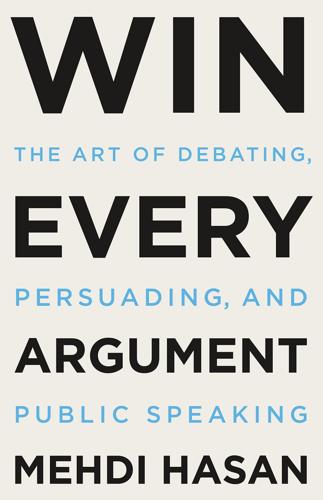
Win Every Argument: The Art of Debating, Persuading, and Public Speaking
by
Mehdi Hasan
Published 27 Feb 2023
Two years earlier, the phrase post-truth was the Oxford English Dictionary’s word of the year, defined as “relating to or denoting circumstances in which objective facts are less influential in shaping public opinion than appeals to emotion and personal belief.” We live in a world, wrote literary critic Michiko Kakutani, author of the 2018 bestseller The Death of Truth, “in which fake news and lies are pumped out in industrial volume by Russian troll factories, emitted in an endless stream from the mouth and Twitter feed of the president of the United States, and sent flying across the world through social media accounts at lightning speed.” In such an environment, it’s easy to feel that evidence doesn’t matter anymore—that it’s impossible to build a well-founded argument that has the power to move people.
…
Even his critics, like the computer scientist Richard Trott—who tangled with Gish on more than one occasion—acknowledged the latter’s “extraordinary charisma” and his “natural gift for a folksy and relaxed presentation.” Conspiracy theory expert John Grant explained the key to Gish’s style and strategy in his book, Debunk It! Fake News Edition: How to Stay Sane in a World of Misinformation. Gish would insist his opponent go first. After his opponent was finished with his or her argument, Gish would begin talking very quickly for perhaps an hour, reeling off a long string of “facts.” His debating opponent, of course, didn’t have the chance even to note down all those “facts,” let alone work out whether or not they were correct.
…
Gish, Creation’s ‘Bulldog,’” Institute for Creation Research, March 6, 2013, accessed May 11, 2022, https://www.icr.org/article/remembering-dr-duane-t-gish-creations/. “extraordinary charisma”: Richard Trott, “Debating the ICR’s Duane Gish,” Talk.origins, July 7, 1994, accessed May 11, 2022, http://www.talkorigins.org/faqs/debating/gish.html. 165 “Gish would insist”: John Grant, Debunk It! Fake News Edition: How to Stay Sane in a World of Misinformation (Minneapolis: Zest Books, 2019), 55. more than three hundred debates: “Remembering Dr. Duane T. Gish, Creation’s ‘Bulldog.’” “spewing out nonsense with every paragraph”: Eugenie Scott, “Debates and the Globetrotters,” Talk.origins, July 7, 1994, accessed May 11, 2022, http://www.talkorigins.org/faqs/debating/globetrotters.html.
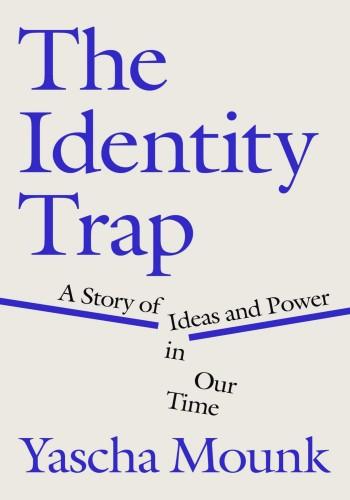
The Identity Trap: A Story of Ideas and Power in Our Time
by
Yascha Mounk
Published 26 Sep 2023
Also note that the general public isn’t very cleare on what constitutes “misinformation” or “fake news.” According to a 2017 survey by Gallup and the Knight Foundation, 48 percent believe that “people knowingly portraying false information as if it were true” is “always” fake news, and another 46 percent believe it is “sometimes” fake news. More surprisingly, 28 percent of those surveyed said that “accurate stories casting a politician or political group in a negative light” are always fake news, and another 50 percent said they sometimes are. “Unsurprisingly, It’s Hard to Define ‘Fake News,’ ” News Literacy Project, accessed Mar. 24, 2023, newslit.org/tips-tools/did-you-know-negative-light/.
…
(Sen), 335n Equal Pay Act, 357n equity, 57, 70, 211–12, 223, 364n appeal of, 216 diversity, equity, and inclusion efforts, 2, 107–8, 331n equality and, 211–12, 217 failure as theory, 216–18, 223 failure in practice, 218–20, 223–24 racial equity funding, 106 rise of, 209–12 Erdoğan, Recep Tayyip, 343n essentialism, strategic, see strategic essentialism Ethiopia, 260 ethnicity, see race and ethnicity Europe, 27–28, 39–40, 63, 149, 175, 184, 249, 280 European Commission, 149 Evanston Township High School, 2 everydayfeminism.com, 89 evolution, convergent, 290 F fabrics, 154 Facebook, 7, 74, 80, 84, 90–92, 107, 163, 170, 171, 178, 179, 324n, 345n, 361n fake news, 345n Fanon, Frantz, 40, 278, 309n, 336n Farrakhan, Louis, 227 fascism, 27, 334n FBI, 113 Federalist Paper No. 51, 351n feedback, 282 feminism, 33, 35, 59–61, 63–64, 68–69, 87, 89, 136, 228, 307n, 311n, 316n, 317n, 319n, 323n sex work and, 140 standpoint theory and, 135, 136, 137n, 138, 145 Feminist Standpoint Theory Reader, The (Harding, ed.), 136, 137 Ferguson, Adam, 308n Fiddler on the Roof, 133 Fields, Barbara and Karen, 186, 290 financial services, 108, 175–77, 182 First Amendment, 102, 104, 162, 165, 167, 176, 178, 225, 347n, 348n, 353n Fish, Stanley, 166–67, 169, 347n, 348n, 351n, 353n Fisher v.

The Contrarian: Peter Thiel and Silicon Valley's Pursuit of Power
by
Max Chafkin
Published 14 Sep 2021
much of it in Trump’s favor: Craig Silverman, “This Analysis Shows How Viral Fake Election News Stories Outperformed Real News on Facebook,” BuzzFeed, November 16, 2016, https://www.buzzfeednews.com/article/craigsilverman/viral-fake-election-news-outperformed-real-news-on-facebook. would eventually apologize: Siobhan Hughes, “Mark Zuckerberg: Facebook Made Mistakes on ‘Fake News,’ Privacy,” The Wall Street Journal, April 9, 2018, https://www.wsj.com/articles/mark-zuckerberg-facebook-made-mistakes-on-fake-news-privacy-1523289089. a voter suppression strategy: Joshua Green and Sasha Issenberg, “Inside the Trump Bunker, with Days to Go,” Bloomberg Businessweek, October 27, 2016, https://www.bloomberg.com/news/articles/2016-10-27/inside-the-trump-bunker-with-12-days-to-go.
…
And, I’m not quite sure how to put this, I would like them to be asked in a not excessively gentle manner.” Thiel delivered his talk in his typically discursive style, which is to say, rather poorly. He stepped on his own jokes, he stuttered, and he missed punch lines. Yet the audience, even in the back with my fellow members of the “fake news,” as one of the organizers had described us from the podium, was rapt. Not only was the world’s most famous venture capitalist attacking an industry that he himself had built, he was suggesting that his primary business rival required investigation—perhaps forceful investigation—by the federal government.
…
During the campaign, Facebook had allowed numerous fake stories, most of them skewed against Democrats, to proliferate on its platform. It had also turned a blind eye to Russian propagandists who’d disseminated pro-Trump hoaxes. After the election, Zuckerberg treated the outcry over his company’s failures like a sideshow, calling the idea that fake news on Facebook had swayed the election “a pretty crazy idea.” Then he went on a nationwide bus tour in early 2017 to rehabilitate his image, doing laps at a NASCAR track in North Carolina with Dale Earnhardt Jr.—“This is fun,” he said. “I understand why so many people love this.” During the tour, he was asked by a student at a historically Black college what he did personally to encourage diversity.

People, Power, and Profits: Progressive Capitalism for an Age of Discontent
by
Joseph E. Stiglitz
Published 22 Apr 2019
The viability of search engines might be impaired if they had to pay for each snippet of information displayed. 33.Some of the tech giants have taken an inconsistent view, claiming to be publishers when it works to their advantage and not to be when it does not. 34.Jason Horowitz, “In Italian Schools, Reading, Writing, and Recognizing Fake News,” New York Times, Oct. 18, 2017, https://www.nytimes.com/2017/10/18/world/europe/italy-fake-news.html. Unfortunately, historical experiences with consumer education suggest that it has only limited efficacy. 35.After stripping out Instagram and WhatsApp. 36.Some aspects of that oversight that are especially relevant to our political processes are discussed in greater length later in the book.
…
In some ways, as we have noted, he is in fact revolutionary: he has vigorously attacked the central institutions of our society by which we attempt to acquire knowledge and ascertain the truth. His targets include our universities, the scientific community, and our judiciary. His most vicious attacks, of course, have been on the standard news media, which he labels as “Fake News.” The irony is that for these media, fact-checking plays a central role, while Trump unabashedly lies grandly on a regular basis.29 These attacks are not only unprecedented in America, they are also corrosive, undermining our democracy and our economy. And while each piece of the attack is well known, it is critical to understand what motivates them and how broadly they are aimed.
…
We all know the components of this awful nexus between money and politics: lobbyists, campaign contributions, revolving doors, and a media controlled by the wealthy. Wealthy individuals and rich corporations use their financial power to buy political power and to propagate their ideas, sometimes with truly “fake news.” Fox News has become emblematic of this, and its power is now well documented.24 Those with money use it to garner even more wealth for themselves through the political system. The oil companies sought and gained access to tracts of government land under which there is oil and other minerals at a fraction of the value of the resources.

The Lonely Century: How Isolation Imperils Our Future
by
Noreena Hertz
Published 13 May 2020
Vox, the right populist Spanish party, for example, generated the most social media interactions during April 2020 of all the major parties (‘Spain’s far right, the clear leaders in social media’, France 24, 27 April 2019, https://www.france24.com/en/20190427-spains-far-right-clear-leader-social-media) whilst some some recently formed far right extremist parties used the COVID crisis to pump fake news into social media. ‘Extremist groups are using coronavirus to push fake news on social media, report warns’, Brussels Times, 8 May 2020, https://www.brusselstimes.com/belgium/110431/extremist-groups-are-using-coronavirus-to-pump-fake-news-on-social-media-report-warns/. 68 M. Salmela and C. von Scheve, ‘Emotional Dynamics of Right- and Left-wing Political Populism’, Humanity & Society 42, no. 4 (September 2018), 434–54, https://doi.org/10.1177/0160597618802521. 69 Jia Lynn Yang, ‘When Asian-Americans Have to Prove We Belong’, New York Times, 10 August 2020, https://www.nytimes.com/2020/04/10/sunday-review/coronavirus-asian-racism.html. 70 Marc Champion, ‘A Virus to Kill Populism, Or Make It Stronger’, Bloomberg, 27 March 2020, https://www.bloomberg.com/news/articles/2020-03-27/will-coronavirus-kill-populism-or-strengthen-leaders-like-trump; ‘Hungary’s Orban blames foreigners, migration for coronavirus spread’, France 24, 13 March 2020, https://www.france24.com/en/20200313-hungary-s-pm-orban-blames-foreign-students-migration-for-coronavirus-spread. 71 Jeremy Cliffe, ‘How populist leaders exploit pandemics’, New Statesman, 18 March 2020, https://www.newstatesman.com/world/2020/03/how-populist-leaders-exploit-pandemics. 72 In medieval times, Jews for example were portrayed as carriers of plagues and accused of deliberately ‘poisoning the wells’ during the Black Death epidemic that swept through Europe in the 14th century.
…
But during the lockdown it was striking how quickly populists ramped up their online community offering, as their ability to commune in person waned. As well as the president personally taking centre stage at the daily television press briefings with overt messages to his ‘tribe’ (including repeated condemnation of the ‘fake news’ media, and denouncing of global institutions), Trump’s campaign, already sitting on a massive social media following, upped its Facebook presence and escalated its digital offerings, running massive volunteer trainings via Zoom and launching a digital-only campaign with a ‘virtual rally’ that garnered nearly a million live-streams.66 The League, Spain’s Vox and Belgium’s far-right Vlaams Belang, masters of social media too, also ramped up their offerings.67 The weaponisation of immigration Whether the community being proffered is online or in person, it shares of course a particular characteristic: the overt exclusion of others.
…
We need to participate more meaningfully and on an ongoing basis in democracy if we are to feel more connected to each other and to politics. I am not calling for the holding of more referenda here. These are the bluntest forms of majority rule and tend to ignore complexity and the imperative to protect minority interests, especially in the age of ‘fake news’. Instead we can learn from an array of contemporary deliberative democracy initiatives. Take London’s Camden Council, which in the summer of 2019 selected fifty-six residents – builders and students, entrepreneurs and civil servants, immigrants and pensioners – their gender, ethnicity and socio-economic backgrounds representative of the community along census lines, to help develop the approach the council should take to addressing climate change.
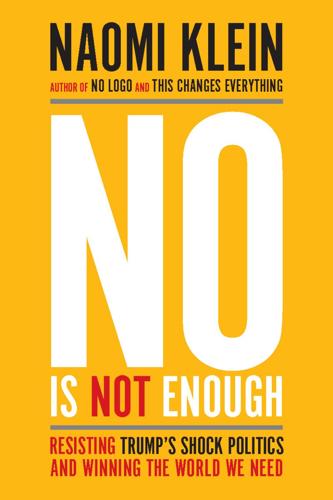
No Is Not Enough: Resisting Trump’s Shock Politics and Winning the World We Need
by
Naomi Klein
Published 12 Jun 2017
Nobody cries when wrestlers get slammed and humiliated, any more than we were meant to cry for The Apprentice contestants when Trump fired or humiliated them. It’s a safe place to laugh at suffering. And it was all part of preparing the ground for that Igor of all things fake, Donald Trump. Fake body parts, fake wrestling, fake-reality TV, fake news, and his whole fake business model. And now Trump has grafted this same warped relationship to reality onto his administration. He announces that Obama wiretapped him in the same way that a wrestler declares he’s going to annihilate and humiliate his opponent. Whether or not it’s true is beside the point.
…
Instead, he threw an elaborate “comeback party” for his investors and financiers at the Trump Taj Mahal in Atlantic City, which culminated in Trump—wearing satin boxing shorts and red boxing gloves—punching through a paper wall to the theme song from Rocky. This is a man who thinks he can solve anything with the right stage-managed performance, and very often in the past he’s been proven right. So just as he spun and performed his way out of bankruptcy, he is convinced he can do the same with the country’s economy. Fake News, Alternative Facts, and the Big Lie If we know anything for certain, it’s that hard facts don’t matter in Donald Trump’s world. With Trump, it’s not so much the Big Lie as the Constant Lies. Yes, he tells big ones, like the time he implied Ted Cruz’s dad had a role in assassinating JFK, and his years of lies about Obama’s place of birth.
…
Trump: “I’m not firing Sean Spicer…” Ashley Parker and Robert Costa, “ ‘Everyone Tunes In’: Inside Trump’s Obsession with Cable TV,” Washington Post, April 23, 2017, https://www.washingtonpost.com/politics/everyone-tunes-in-inside-trumps-obsession-with-cable-tv/2017/04/23/3c52bd6c-25e3-11e7-a1b3-faff0034e2de_story.html?utm_term=.4685f374ef85. Donald Trump’s “comeback party” Michael Kranish and Marc Fisher, Trump Revealed: The Definitive Biography of the 45th President (New York: Simon and Schuster, 2016), 206. Fake News, Alternative Facts, and the Big Lie Donald Trump implies Ted Cruz’s dad had a role in assassinating JFK Nolan McCaskill, “Trump Accuses Cruz’s Father of Helping JFK’s Assassin,” Politico, May 3, 2016, http://www.politico.com/blogs/2016-gop-primary-live-updates-and-results/2016/05/trump-ted-cruz-father-222730.

Why We're Polarized
by
Ezra Klein
Published 28 Jan 2020
The lesson is known by politicians the world over. You don’t just need support. You need anger. That’s why fund-raising emails often border on the apocalyptic (a few of the recent subject lines in the emails I’ve received from the Republican National Committee, in support of Trump’s reelection campaign: “FAKE NEWS!” “AMERICANS MUST FIGHT BACK!” and my personal favorite, “FW: STOLEN?”—caps lock in the original, of course). It’s why Trump is always fighting with the media. It’s why presidential candidates find it hard to keep their supporters engaged when they win the White House—the terror of losing an election is more viscerally motivating than the compromises of daily governance.
…
A longer video muddied the waters, offering evidence that the teens were themselves harassed by members of the fringe Black Israelites group beforehand. Soon enough, the media was filled with takes and counter-takes, and President Trump himself was weighing in. “Nick Sandmann and the students of Covington have become symbols of Fake News and how evil it can be,” he tweeted.19 What was striking, walking into this debate without the (dis)advantage of being present for its initial escalation, was how angry everyone was over something that objectively didn’t matter at all. Who cared about an unpleasant—but ultimately nonviolent—confrontation at a protest that few even knew was happening in the first place?
…
Although each party’s elites, activists and voters now depend on different sources of knowledge and selectively interpret the messages they receive, the source of this information polarization is the American conservative movement’s decades-long battle against institutions that it has deemed irredeemably liberal.13 In an essay for Vox, Dave Roberts calls this “tribal epistemology”—when “information is evaluated based not on conformity to common standards of evidence or correspondence to a common understanding of the world, but on whether it supports the tribe’s values and goals and is vouchsafed by tribal leaders.”14 You can hear it ring clearly when, for instance, Rep. Lamar Smith, a Texas Republican, says it’s “better to get your news directly from the president. In fact, it might be the only way to get the unvarnished truth.”15 All of this both predates and contextualizes Trump’s constant refrain of “FAKE NEWS!” Here, too, Trump isn’t a break from recent Republican traditions but a logical extension of them. An interesting question is why the Right didn’t build institutions similar in ethos and practice to the ones they sought to replace, just staffed with conservatives. In 2009, Tucker Carlson mounted the stage at the conservative conference CPAC and warned the Right that it needed a strong journalistic culture of its own.

The Big Nine: How the Tech Titans and Their Thinking Machines Could Warp Humanity
by
Amy Webb
Published 5 Mar 2019
When the internet shifted from academia and government to the private sector in the 1990s, we let it propagate freely instead of treating it like a regulated utility or financial system. Back then, lawmakers didn’t think much about how all the data we’d generate on the internet might be used. So now it’s impossible to comply with every legal permutation while our previous filter bubbles expanded to fit geographic borders. This helped the promotion and propagation of fake news. Because bad actors are using generative algorithms, and because depending on region, we’re all getting different versions of news content, we don’t know what or whom to trust. Every one of the world’s most venerable news organizations has been tricked more than once, as trained journalists have a difficult time verifying videos of global leaders and everyday people alike.
…
See also Turing, Alan ET City Brain, 69 Ethics: AI company culture and, 255; Baidu focus on, 129; IBM articles regarding, 129; integrating into non-ethics university courses, 256; screening for in G-MAFIA future hiring practices, 255; university courses, 61, 63 Euclid, first algorithm and, 18 Evolutionary algorithms, 144, 164–165; Darwinian natural selection and, 144, 145 Facebook, 3, 70, 85, 96, 154; adult users, 87; advertising revenue, 71; in catastrophic scenario of future, 209, 216, 223; Chinese ban, 76; core values, 100; data policies, 94; exclusion of conservative news on, 57; Intel partnership, 92; “move fast and break things” original motto, 53; number of users, 71; in optimistic scenario of future, 159, 171; Portal, 54; post-Cambridge Analytica debacle apology, 54, 94; post-Cambridge Analytica scandal ethics team, 129; in pragmatic scenario of future, 186, 187, 188, 193, 201–202; psychological experimentation on users, 138; RNC bias accusations against, 56–57; senior leadership, 56; 2016 Presidential election and, 138; Website logins and, 88 Fake news, proliferation of in pragmatic scenario of future, 198 Fan Hui, 43–44, 45; versus DeepMind, 43–44 Fifth Generation, 38 Filmmaking, optimistic scenario of future and, 165–166 Future and AI, catastrophic scenario of, 151–152, 207–229; AGI system lockouts, 224; AI totalitarianism, 223; Amazon-hosted Food Stamp Program, 218; Amazon households, 216, 217–218, 219, 224, 225; Amazon Housing/Homes, 217–218, 219; Americans geographically locked in by China, 227; Apple households, 216, 218, 219, 224, 225; Apple PDRs, 216; blue-collar job glut, 221; blurring of work and personal data, 208; Chief AI Officers, 226; Chinese hackers, 215; climate change consequences, 228–229; corporate ownership of PDRs, 209; crime, 222; digital caste system, 209, 218; economic chimera of humans, 225; education and Salesforce core values, 221–222; extermination of U.S. and allied populations by Chinese ASI, 229; G-MAFIA and preservation of democratic ideals, 211; G-MAFIA diversity mantra, 208; G-MAFIA nonexistent inclusion efforts, 208; G-MAFIA shrinkage to GAA, 223; G-MAFIA sole owners of PDRs, 208, 216; G-MAFIA transactional relationship with U.S. government, 212; GAA-U.S.
…
See also names of specific companies; China, optimistic scenario of future Future and AI, pragmatic scenario of, 151, 179–206; adversarial examples in AI training programs, 183–184; Applezon, 188, 189, 190, 192, 194, 202, 203, 205; Applezon Health System, 195, 196, 204; Applezon versus Google mega-OS choice, 191; Applezon Vision glasses, 191; backup analog tools, 190; Big Nine prioritizing speed over safety and, 180; brain-machine interfaces, 193–194; competing algorithms, 184–185; crime, 198–199; data collection/labeling and, 181; decline of Western civilization and democratic ideals, 205; digital caste system, 197; digital emissaries, 187; economy in peril, 205; electronic headbands linking minds, 204; EU ban on NAGIs, 203; fake news proliferation, 198; G-MAFIA divvying up of functions and features, 186; G-MAFIA nonexistent core values, 186; G-MAFIA loss of Facebook, 201–202; gigware, 196; harassment by physical robots, 199; healthcare, 182, 194, 195–196, 204; healthy lifestyle nagging, 194; home as marketing container, 203–204; human-animal chimeras, 204–205; ignoring China and, 179, 185–186; ill-behaved AGIs, 202–203; information contamination, 198; job search use of AI, 196–197; journalism, 198; law enforcement and G-Mafia locked systems, 199; learned helplessness, 190–201; machine creativity, 197; mega-OS (Google), 187, 188, 189, 190; middle management jobs elimination, 197; nanny AGIs (NAGIs), 202–203, 205; neuroenchancing headband, 193–194; parrot attacks, 193; PDR G-MAFIA ownership, 187; PDR linked to insurance premium, 194; PDR third-party use, 189; reward hacking, 183; smart glasses, 191, 192; smartphones, 191; splinternets, 198; subscription model for smart wearables and tools, 192–193; transparency, 188; 2049, 201-205; 2069, 205–206; 2029, 190-201; two-OS system, 188–189, 190; Watson-Calico Health System, 195, 196, 204.
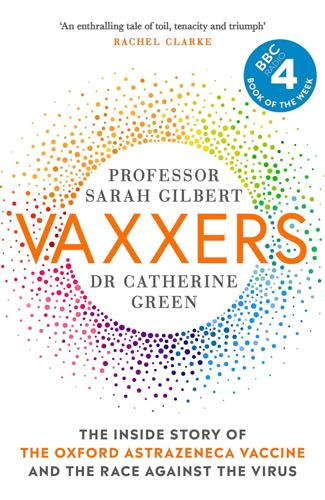
Vaxxers: The Inside Story of the Oxford AstraZeneca Vaccine and the Race Against the Virus
by
Sarah Gilbert
and
Catherine Green
Published 7 Jul 2021
Three days after we vaccinated our first two volunteers, a false claim that Elisa Granato had died went viral on social media. The completely untrue article – really, who on earth would use their time to make up something like that? – looked credible: it was understandable that people were taken in by it, and it offered a really good insight into how easy it is to spread fake news. It was unpleasant for Elisa and her family, and I am sure very worrying for the other volunteers signed up for the trial, but Elisa took it in her stride, posting on Twitter and then doing an online interview with Fergus Walsh for the BBC.fn5 People had posted on her Twitter feed from all over the world saying that they would not believe she was still alive until they saw her in a date-stamped interview.
…
But whatever they did, it certainly did not filter out all the perhaps well-meaning, but ultimately distracting approaches. Our new strategy – essentially, keeping our heads down until we published our first peer-reviewed paper – was going pretty well until Robert Peston’s big reveal. It was a shock, but unlike in April when we were dealing with fake news, at least his summary was correct. The vaccine was doing exactly what we had hoped for. It was fooling the immune system into mounting a defence to the SARS-CoV-2 spike protein and it was not causing any problematic side effects. Occasionally a sore arm, and sometimes an elevated temperature, all easily treated with paracetamol.
…
The i: ‘All over the shop: muddle on face masks’, https://twitter.com/theipaper/status/1283510998218006528. 3. https://twitter.com/NDMOxford/status/1284038977159344128?s=20. 4. https://www.express.co.uk/news/uk/1263980/coronavirus-vaccine-oxford-university-uk-covid19-testing-cure-spt. 5. https://www.ft.com/content/b053f55b-2a8b-436c-8154-0e93dcdb3c1a. 6. https://www.thetimes.co.uk/article/russians-spread-fake-news-over-oxford-coronavirus-vaccine-2nzpk8vrq. 7. https://edition.independent.co.uk/editions/uk.co.independent.issue.271120/data/9726097/index.html; https://www.telegraph.co.uk/news/2020/11/26/astrazeneca-running-new-coronavirus-vaccine-trial/; https://www.theguardian.com/world/2020/nov/26/scrutiny-grows-over-oxford-universityastrazeneca-vaccine; https://www.thetimes.co.uk/article/astrazeneca-defends-oxford-coronavirus-vaccine-as-disquiet-mounts-over-the-results-mf6t57rnr; https://www.politico.eu/article/questions-grow-over-astrazeneca-coronavirus-vax-trials/; https://www.walesonline.co.uk/news/uk-news/chris-whitty-oxford-vaccine-error-19354045. 8. https://www.handelsblatt.com/politik/deutschland/pandemie-bekaempfung-corona-impfstoff-diskussion-um-wirksamkeit-von-astra-zeneca-vakzin-bei-senioren/26849788.html and https://www.reuters.com/article/health-coronavirus-eu-astrazeneca/germany-fears-astrazeneca-vaccine-wont-get-eu-approval-for-those-over-65-bild-idUSL8N2K05OP. 9. https://papers.ssrn.com/sol3/papers.cfm?

Bad Actors
by
Mick Herron
Published 9 May 2022
Sparrow wanted to be feared, and didn’t mind being hated. He wouldn’t take kindly to having his secrets unearthed. What was already widely known about him was bad enough. That he was a “disruptor,” a self-described architect of the new future. That it was his habit to call fake news on anything showing himself or the government in a bad light. That it was also his habit to proclaim fake news a good thing, since it forced people to question what they heard. That such contradictions allowed him to claim victory in every argument. That he appeared to be running the country, with half the cabinet terrified of him, and the rest scared stiff.
…
What does more damage, fiddling about inside a foreign government, or fiddling about inside a foreign government and having the whole world know? It’s the difference between laughing behind someone’s back and making them the joke in a Christmas cracker.” “People will write it off as fake news.” “People write everything off as fake news. Doesn’t mean nothing happens. Besides, he sent Claude looking for her. And while it’s tempting to say that’s because he doesn’t want her found, he’s likely got something else in mind. Your predecessors had a protocol we don’t like talking about.” “Waterproof,” said Diana.
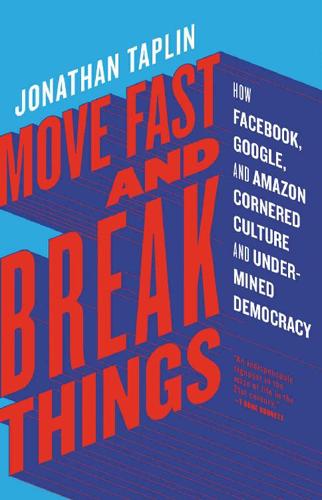
Move Fast and Break Things: How Facebook, Google, and Amazon Cornered Culture and Undermined Democracy
by
Jonathan Taplin
Published 17 Apr 2017
The New York Times columnist Farhad Manjoo wrote, “Among techies, there is now widespread concern that Facebook and Twitter have hastened the decline of journalism and the irrelevance of facts. Social networks seem also to have contributed to a rise in the kind of trolling, racism, and misogyny that characterized so much of Mr. Trump’s campaign.” The critical combination of a Facebook page and a Google AdSense account has allowed purveyors of fake news from Montana to Macedonia to make money off their fake news posts. But Mark Zuckerberg refuses to even acknowledge how powerful Facebook is as a media filter, asserting that it would “be crazy” to believe Facebook had any effect on the election outcome. He quickly walked that back when faced with evidence to the contrary, but said, “We do not want to be arbiters of truth ourselves.”
…
And Facebook (the primary news source for 44 percent of Americans) was equally responsible for the Trump victory, according to Ed Wasserman, the dean of the University of California, Berkeley, Graduate School of Journalism: “Trump was able to get his message out [on Facebook] in a way that was vastly influential without undergoing the usual kinds of quality checks that we associate with reaching the mass public.” Facebook was flooded with fake news stories, and BuzzFeed reported that “in the final three months of the US presidential campaign, the top-performing fake election news stories on Facebook generated more engagement than the top stories from major news outlets such as the New York Times, Washington Post, Huffington Post, NBC News, and others.”

A Time to Build: From Family and Community to Congress and the Campus, How Recommitting to Our Institutions Can Revive the American Dream
by
Yuval Levin
Published 21 Jan 2020
The freedom of the press, which has not always been secure in our country, is in no real jeopardy now, or even in much question or dispute. So what’s the problem? The crisis now confronting American journalism is a crisis of public confidence—a crisis of integrity and trust. President Trump has frequently given vent to the attitudes underlying this loss of trust. “The Fake News Media has never been so wrong or so dirty. Purposely incorrect stories and phony sources to meet their agenda of hate. Sad!” So Trump wrote on Twitter on June 13, 2017. This was a thoroughly characteristic statement of his regarding the press—unusual neither in tone nor in substance. That the president of the United States would speak about the profession like this and that he would do so on a social media platform that affords him direct access to many millions of Americans on his own terms are marks of the peculiar situation of journalism, and especially political journalism, in contemporary American life.2 The trouble, moreover, is not so much about trust in individual journalists, or even about trust in particular publications, networks, or platforms—though some come in for more criticism than others.
…
Yet, if an officer of this court receives the slightest check for misconduct in this his office, he claims immediately the rights of a free citizen by the constitution and demands to know his accuser, to confront the witnesses, and to have a fair trial by a jury of his peers.6 The danger of this pseudo court abusing its power is thus immense, Franklin suggested. The press has the power to purvey lies—fake news, we might say—or (to recall President Trump’s terms above) to spread “purposely incorrect stories and phony sources to meet their agenda of hate.” At the core of this complaint is the assertion of an absence of standards. As Franklin understood, this was a function not of the concentration of media power but precisely of its dilution.
…
For a good overview of the state of the field, see Daniel Muzio, David M. Brock, and Roy Suddaby, “Professions and Institutional Change: Towards an Institutionalist Sociology of the Professions,” Journal of Management Studies 50, no. 5 (July 2013): 699–721. 2. Donald J. Trump (@realDonaldTrump), “The Fake News Media has never been so wrong or so dirty. Purposely incorrect stories and phony sources to meet their agenda of hate. Sad!,” Twitter, https://twitter.com/realdonaldtrump/status/874576057579565056. 3. The commission’s members—along with Hutchins they were Zechariah Chafee, John M. Clark, John Dickinson, William E.

You've Been Played: How Corporations, Governments, and Schools Use Games to Control Us All
by
Adrian Hon
Published 14 Sep 2022
Francesca Tripodi, a sociologist at the Data & Society research institute, argues that groups suspected of lacking media literacy, like US conservatives and evangelicals, already consult a wide variety of original and alternative media sources to arrive at their opinions, rather than being “fooled” into their views by consuming fake news.48 As for digital literacy specifically, the idea it can help solve the fake news epidemic is like training people to run faster to dodge traffic rather than enforcing road safety and building pedestrian crossings—it’s not that it’s worthless, but it places the burden on individual citizens rather than addressing the larger societal problem.
…
As Josh Fialkov, former writer for lonelygirl15, says, “That brain power negatively focused on what [conspiracy theorists] perceive as life and death (but is actually crassly manipulated paranoia) scares the living shit out of me.”45 WHAT ARGS CAN TEACH US The twin dangers of online misinformation and conspiracy theories like QAnon have led institutions to design games attempting to inoculate players against their allure. Cambridge University’s Go Viral! helps users spot COVID-19 conspiracies, while their similar Bad News game from 2018 is aimed at fake news, as is John Cook’s Cranky Uncle.46 It’s easy to get progressive audiences to download these apps; unfortunately, it’s hard to imagine QAnon believers doing so. And while inoculation may help people develop critical thinking skills, I have to confess that a lifetime of training has not prevented me from occasionally falling foul of crank theories, especially when delivered by seemingly trustworthy sources.
…
“Internet Research Agency Indictment,” United States District Court for the District of Columbia, February 16, 2018, www.justice.gov/file/1035477/download; Julia Carrie Wong, “Russian Agency Created Fake Leftwing News Outlet with Fictional Editors, Facebook Says,” Guardian, September 1, 2020, www.theguardian.com/technology/2020/sep/01/facebook-russia-internet-research-agency-fake-news. 48. Francesca Tripodi, “Alternative Facts, Alternative Truths,” Points, Data & Society, February 23, 2018, https://points.datasociety.net/alternative-facts-alternative-truths-ab9d446b06c. 49. “Smokescreen for Channel 4,” Six to Start, accessed November 28, 2021, www.sixtostart.com/smokescreen. 50.

Good Economics for Hard Times: Better Answers to Our Biggest Problems
by
Abhijit V. Banerjee
and
Esther Duflo
Published 12 Nov 2019
We remember only the endless talk about Mexicans (who we never trusted in any case) and not the fact that first-generation immigrants, legal or otherwise, are actually less likely to be criminals than native-born Americans.78 This of course creates a very strong reason to flood the markets with alternative facts. A hundred and fifteen pro-Trump fake news stories that circulated before the 2016 presidential election were viewed thirty million times (pro-Clinton fake news stories also existed, but they were viewed only eight million times).79 The third is that the crabbed language of internet communication (which Twitter takes to an extreme) encourages directness and abbreviation, contributing to the erosion of the norms of civic discourse.
…
Apparently, even to chat about fly fishing on Twitter, people prefer to connect with a fellow liberal or conservative. The virtual community that social networks have created is at best a fragmented public space. But is there anything specific about social media that causes this polarization? The political strategies to divide the population and plant fake news were invented long before Facebook. Newspapers have always been highly partisan, and political mud-slinging was the bread and butter of the print media in colonial America, and continued into the early days of the American Republic (in the musical Hamilton, it is the threat of scurrilous press coverage that forces Hamilton to own up to his affair).
…
Perhaps younger people are less moved by these rumors because they know the internet is full of errors and exaggerations and can correct for them, whereas older people, used to trusting the booming authority of television anchors, are more gullible. There are other concerns as well. The first is that the circulation of news on social media is killing the production of reliable news and analysis. Producing fake news is of course very cheap and very rewarding economically since, unconstrained by reality, it is easy to serve to your readership exactly what they want to read. But if you don’t want to make things up, you can also just copy it from elsewhere. A study found that 55 percent of the content diffused by news sites and media in France is almost entirely cut and pasted, but the source is only mentioned in less than 5 percent of the cases.76 If a piece of news produced by a team of journalists is immediately cut and pasted onto many other sites, how does the original source get rewarded for its production?
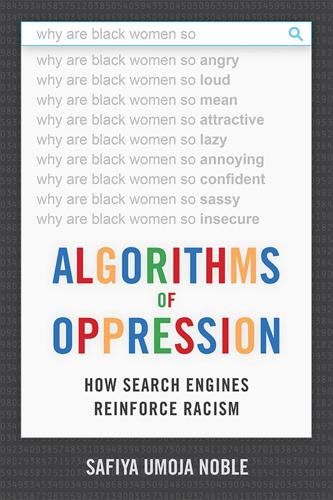
Algorithms of Oppression: How Search Engines Reinforce Racism
by
Safiya Umoja Noble
Published 8 Jan 2018
Epilogue Between the time I wrote this book and the day it went into production, the landscape of U.S. politics was radically altered with the presidential defeat on November 8, 2016, of former secretary of state Hillary Clinton by Donald Trump. Within days, media pundits and pollsters were trying to make sense of the upset, the surprise win by Trump, particularly since Clinton won the popular vote by close to three million votes. Immediately, there were claims that “fake news” circulating online was responsible for the outcome. Indeed, as I gave talks about this book in the weeks after the election, I could only note in my many public talks that “as I’ve argued for years about the harm toward women and girls through commercial information bias circulating through platforms like Google, no one has seemed to care until it threw a presidential election.”
…
And it will likely be the source of a future book that recontextualizes what information means in the new policy regime that ensues under the leadership of avowed White supremacists and disinformation experts who have entered the highest levels of public governance. Figure E.1. Google search for “final election results” leads to fake news. Source: Washington Post, November 14, 2016. Figure E.2. Google results on final election results incorrectly show Trump as the winner of the popular vote. Source: Washington Post, November 14, 2016. Figure E.3. Circulation of false information on Twitter shows Trump as the winner of the popular vote, November 14, 2016.
…
See also Library of Congress Subject Headings (LCSH) Coalition for Immigration Reform, Equality and DREAMers (CoFired), 135 Cohen, Nicole, 154 commercial influences, 16, 104 commercial interests, 32, 36, 157, 179; gaming the system, 40–41; influence on journalism, 154; transparency, 50, 104 ComputerWorld, 127 comScore Media Metrix consumer panel, 35, 53 ConsumerWatchdog.org, 56 copyright, 50, 120, 129 Crawford, Kate, 26 critical race theory, 6, 61, 136, 138, 143, 150 crowdsourcing, 188n27 Cyber Civil Rights Initiative, 120 Cyber Racism (Daniels), 116 cyberspace, 61–62; #Gamergate comments, 63; mirror of society, 90–91; social identity, 104–5 Damore, James, 2 Daniels, Jessie, 84, 108, 116, 172 Darnton, Robert, 157 Dartmouth College Freedom Budget, 134 data storage and archiving, 125–28 Davis, Jessica, 85 “A Declaration of the Independence of Cyberspace” (Barlow), 61 Department of Labor workforce data, 162 DeSantis, John, 134 Dewey Decimal Classification System, 24, 136; biases, 140 Diaz, Alejandro, 26, 42 Dickinson, Gregory M., 158–59 digital divide, 34, 56, 86, 160–61, 164, 188n21 digital footprint, 11, 187n9 digital media platforms, 5–6, 12–13, 30, 56, 148, 188n31 Dines, Gail, 101–2 distributed denial of service (DDOS), 112 Doctor, DePayne Middleton, 110 Dorsey, Joseph C., 93 Edelman, Benjamin, 44 Eisenhower, Dwight D., 190n64 employment practices: college engineering curricula, 70, 163; “pipeline issues,” 64–66; underemployment of Blacks, 80; underemployment of Black women, 69 Epstein, Robert, 52 European Commission, 157 European Court of Justice, 121 Everett, Anna, 107 Facebook, 3, 156, 158, 181; commercial content moderation, 58; content screening, 56; “diversity problems,” 65, 177; personal information, 120–21; search engine optimization, 54; underemployment of Black women, 69. See also nonconsensual pornography (NCP) Fairclough, Norman, 61, 91–92 “fake news,” 183–85 Fanon, Franz, 144 Federal Bureau of Investigation (FBI) crime statistics, 112, 194n5 Federal Communications Commission (FCC), 49, 166; ten-year broadband plan, 153 Federal Trade Commission (FTC), 166; Google investigation, 34, 156, 159, 191n77; public accountability, 51 feminism: images of women, 106–7; patriarchal dominance of technology, 107–8 feminist and gay liberation movements, 132 Feuz, Martin, 54 filters, 45; “Bob Marley” and “yellowface” filters, 69; commercial content moderation, 56–57; “filter bubble,” 5, 187n3; Google’s default settings, 88; objective criteria for public harm, 56; pornography blockers, 55, 100.
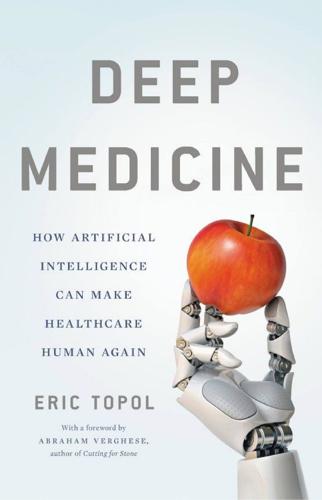
Deep Medicine: How Artificial Intelligence Can Make Healthcare Human Again
by
Eric Topol
Published 1 Jan 2019
Harari, in Homo Deus, projected that “twentieth century medicine aimed to heal the sick, but twenty-first century medicine is increasingly aiming to upgrade the healthy.”40 These concerns are shared by Kai-Fu Lee, a highly recognized AI expert based in China, who highlighted the need “to minimize the AI-fueled gap between the haves and the have-nots, both within and between nations,” and underscored the importance of considering the social impacts of these systems, both intended and unintended.41 It’s a triple whammy for the lower socioeconomic class because the biases in AI frequently adversely affect them, they are most vulnerable to job loss, and access to AI medical tools may be much harder to come by. We will need considerable forethought and strategies to make validated, impactful AI tools available to all to override these concerns. THE BLURRING OF TRUTH The world of fake news, fake images, fake speeches, and fake videos is, in part, a product of AI. We’ve seen how creators of fake news on Facebook targeted specific people to sway the 2016 US election and how various companies’ Internet ads use AI to seduce (some will say addict) people. The problem is going to get worse. We used to talk about how airbrushing and then Photoshopping images could be used to shape what we see.
…
While the use of deep learning algorithms did not provide estimates at the individual or household level, you can be certain that many tech companies have such data and, with similar neural net analytics, can come up with this information. The most notable case is Cambridge Analytica’s expansive individual profiles of the majority of American adults, developed via extracting Facebook’s data, ultimately with claims of shifting the 2016 election outcome, alongside algorithmically targeted fake news distribution.55 The worry about potential hacking has been reinforced by automated cyberattacks and the legitimate concern that products of AI, like driverless cars, could be run off the road. We’ve already seen how today’s nonautonomous cars can be remotely hacked and made to go haywire while being driven.56 In the era of hacking, all operations using AI need to be concerned about bad data corrupting their system, AI malware, AI bots, and the war of AI versus AI (host system rejecting the invader).
…
machine, 104–105 Etzioni, Oren, 104 European Union General Data Protection Regulation, 95–96 explainable artificial intelligence, 96 Exscientia, 216 Eyeagnosis, 146 Face2Gene, 57, 83 Facebook, 77 DeepFace by, 75 privacy and, 103, 179–180 suicide and, 177 facial recognition Apple and, 82 car safety and, 85 DeepFace and, 75 Face2Gene and, 57, 83 pain, measuring of, and, 83 privacy and, 101 fake news, 100 fats, nutritional science on, 240 Feast, Joshua, 170 feedback on medical diagnosis, 45, 50 Fitbit, 267–268 fluorescence microscopy, 228–229 food pyramids, 241 food responsiveness. See individuality of food responsiveness Fourth Industrial Revolution, 14 (fig.) France, AI healthcare initiatives in, 206 Franklin, Joseph, 176 Frey, Brendan, 218 Friedman, Paul, 61 Future of Life Institute, 110 GAD.
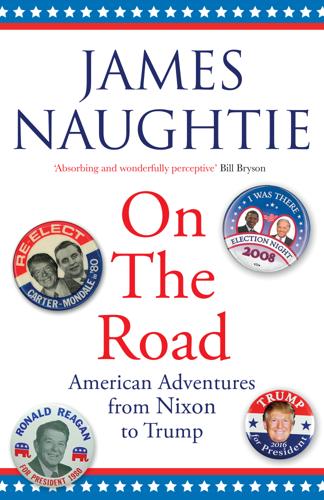
On the Road: Adventures From Nixon to Trump
by
James Naughtie
Published 1 Apr 2020
From that strength, he could argue that his ‘enemies’ had pursued him relentlessly and unfairly – just because he was Dick Nixon! – and that journalists on the Washington Post and the New York Times worked to an agenda the American people didn’t share. Like one of his Republican successors in the White House forty-five years and eight presidents later, who fashioned ‘fake news’ into his rhetorical broadsword, so Nixon depended on the idea that his concept of the truth had always been much finer than the ‘enemies’ allowed, and that eventually he would prove it. The tapes, unfortunately for him, proved the opposite. ‘Expletive deleted’ became a national catchphrase overnight, and for some of Nixon’s defenders even some of the non-deleted language cut deep.
…
Members of Congress are accused by Trump of crimes, his own government agencies are trashed, old friends are consigned to deep darkness for acts of betrayal, former business partners and lawyers are branded lifelong liars for turning on him (with the invariable caveat that the lying only became obvious to him at the moment of betrayal, when the hidden truth was revealed at last), and almost all journalists and broadcasters are lumped together as determined purveyors of ‘fake news’, out to hoodwink ‘the people’, the exceptions being Fox News and the National Enquirer, the supermarket tabloid of the Cruz–JFK assassination story, which bought up the story of Trump’s pay-off to the porn star Stormy Daniels specifically in order to suppress it, in a deal done at his lawyer’s request.
…
At the gun and knife show, among the blades and handguns, rifles and pepper sprays guaranteed to give an assailant ‘a very bad day’, anyone would realise how Trump had given them a voice and legitimised their hurt, so that they felt emboldened to say publicly what they might have muttered privately before. Carrying a microphone, and therefore identifying myself as a near-certain manufacturer of ‘fake news’, there were quite a few people who made it clear with a surly shake of the head that they had nothing to say. I did meet one character, prowling along trestle tables heavy with fearsome hardware, who was happy to let me into his world. ‘This is a country that has been under a political system that keeps a lot of truths from the American people.
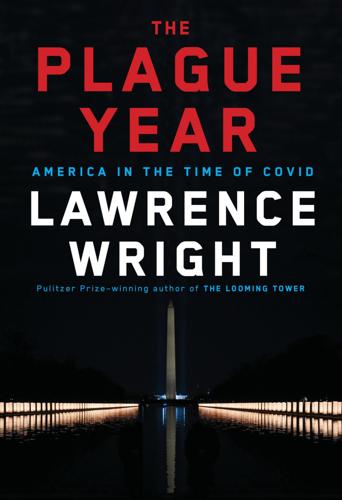
The Plague Year: America in the Time of Covid
by
Lawrence Wright
Published 7 Jun 2021
So they’re not putting those people in there. And you’re smiling when I say that,” he said, noticing another reporter. “Who are you from, anyway?” “I—I’m from CNN.” “You are? I don’t watch CNN. That’s why I don’t recognize you.” “Oh, okay. Well, nice to meet you.” “I don’t watch CNN because CNN is fake news.” One reporter, observing that the lack of testing made it impossible to know how many cases there actually were, asked Redfield, “Don’t you think it’s likely that there are a lot more people out there who are going to come and actually be sick?” “No doubt we’re going to see more community cases,” Redfield conceded.
…
“I said, ‘Come pick out a mountain.’ ” A few months later, at a rally in Ohio, Mount Rushmore was still on the president’s mind. “Now, here’s what I do,” he said to the crowd. “I’d ask whether or not you think I will one day be on Mount Rushmore.” The crowd cheered. “But here’s the problem,” the president continued. “If I did it—joking, totally joking, having fun—the fake news media will say, ‘He believes he should be on Mount Rushmore.’ So I won’t say it, okay? I won’t say.”*And yet there he was, on July 3, 2020, standing at the foot of the imposing monument, accompanied by the first lady in a stylish summer frock, the Blue Angels roaring by overhead. The president even tweeted a photo that snugly fitted his profile next to the visage of Abraham Lincoln, the first Republican president.
…
A plane goes down, five hundred people dead, they don’t talk about it,” he complained at a rally in North Carolina, five days later. He added: “We’re rounding the turn, we’re doing great. Our numbers are incredible.” That day nearly 80,000 new cases were reported, overshadowing the highest levels of the summer. “You notice the fake news, now, right? All they talk about is Covid, Covid, Covid, Covid, Covid,” he said at a rally in Omaha on October 27. “I’m here, right?…I had it.” Hospitalizations were up 46 percent that month. “Hey, excuse me, I’m sure you didn’t hear,” Trump said on October 29, in Tampa. “Nobody heard this, right?

Men Who Hate Women: From Incels to Pickup Artists, the Truth About Extreme Misogyny and How It Affects Us All
by
Laura Bates
Published 2 Sep 2020
A common technique shared is simply to grab girls in public, without asking for permission, because ‘you want to overpower the woman you’re after’. One forum user boasts: ‘Many times I have just thrown the girls over my shoulder.’ Other threads focus on the best ways to manipulate or coerce women in sexual situations: in one thread, titled ‘How to convince a chick to swallow’, users swap fake news articles about semen being good for women’s health, in the hope that they can use the information to put pressure on sexual partners to swallow their sperm or accept being ‘sprayed in the face’. Others advise more direct methods that simply override a woman’s consent, like ‘ “forget” to pull out in time and just blast inside’.
…
In spite of all the evidence to the contrary: in spite of the fact that you would be hard-pressed to name high-profile men who have experienced a sudden downfall based on an unfounded accusation without due process; in spite of the fact that a relatively small number of high-profile men have faced consequences at all, compared to the millions of women who have recounted their experiences of abuse without ever having seen justice; in spite of the fact that many high-profile men accused of sexual violence by dozens of women continue to walk free… still this idea of it being fake news has become an accepted and acceptable narrative. And it is no longer a fringe or extreme narrative. It is the norm. These are the ideas of the manosphere. Of the woman-hating fringes that thrive beneath the radar, undiscussed, unstudied and unchecked. When their ideas are repackaged and brushed up for a mass audience – threaded carefully into mainstream dialogue through quasi-respectable figures who act as human conduits, through social media algorithms that give their content undue prominence and make it appear more widely accepted, through media outlets seeking controversy and clickbait and the appearance of ‘balance’ – they don’t emerge looking exactly the same.
…
The news was met with great fanfare, and attention quickly centred on Katie Bouman, a 29-year-old MIT graduate student, who had led the team that made the historic achievement possible. But, within hours, the manosphere had leapt into action. Thousands of comments, posts and threats across multiple websites, including typical hotspots like Reddit, had sprung up, denouncing the praise of Bouman with extreme misogyny, conspiracy theories, fake news and outright lies. ‘Hi my name is Katie Bouman and I’m a fraud’, read the title of one typical thread, below which comments quickly descended into a cesspit of slurs about Bouman’s appearance and vitriol about ‘feminazis’ and ‘SJWs’. As usual, the obsession spread like wildfire, with YouTube videos quickly materialising to criticise Bouman and (falsely) claim that her male colleagues had actually done the majority of the work for which she was being given credit.
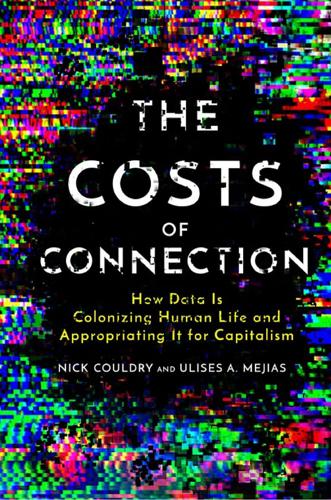
The Costs of Connection: How Data Is Colonizing Human Life and Appropriating It for Capitalism
by
Nick Couldry
and
Ulises A. Mejias
Published 19 Aug 2019
Suddenly, citizens became aware that today’s pervasive state surveillance would be impossible without the continuous social-caching operations of commercial corporations.14 Since then, fears of a new “corporate governance of everyday life” have been growing.15 But other fears have started to overtake them, including the “fake news” scandals that have gripped politics since late 2016 in the United States, United Kingdom, and elsewhere. There are also fears that, because of polarizing forces online, “social media is ripping society apart”;16 fears from other commentators of a social dystopia driven by platforms’ search for advertising income;17 and, finally, the fear that the targeting of news via social media platforms represents “the most lethal political weapon ever invented.”18 Calls for the regulation of social media platforms and other information technology giants are becoming familiar.19 But none of these highly charged debates answers the underlying question on which this book will focus: should human beings in the twenty-first century accept a world in which their lives are unceasingly appropriated through data for capitalism?
…
[On] the other side of the spectrum are things that are really sensitive and private like health care or finance that I think there probably won’t be social apps [for] for a long time. 132 It is impossible that, as a skilled designer, Zuckerberg was unaware of the amount of technical engineering needed to construct this new social map, yet he talks as though Facebook’s engineered model for extracting social data provides a window directly into how the social world really is and should be. Software engineering, social theory, and social construction become fused.133 The 2017 furor about “fake news” in people’s Facebook news feed is just one example of what happens when this abstracted model of the social world collides with the contextualized expectations of real people. The Hollowing Out of the Social Sciences Can the human and social sciences correct for the limits of the social quantification sector’s emerging model of the world?
…
Bergen and Eidelson, “Inside Google”); Instagram (a Facebook company)—450 as of January 2017; Snapchat—1,859 as of December 2016; Twitter—approximately 3,860 as of June 2016; and Uber—approximately 12,000 as of June 2017 (all figures comes from corporate websites). It should be noted that both Google and Facebook are adding about 10,000 employees each to act as moderators in the aftermath of the fake news scandal (Naughton, “Dirty Work”). Of course, these figures do not take into account all the workers involved in datafication both inside and outside the social quantification sector, including part-time and freelance workers. But to put things in perspective, Walmart and McDonald’s each employ about two million people worldwide.
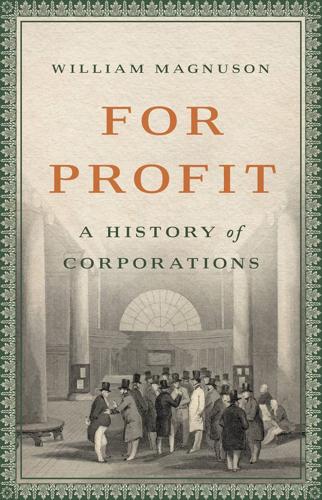
For Profit: A History of Corporations
by
William Magnuson
Published 8 Nov 2022
“Personally, I think the idea that fake news on Facebook—of which it’s a very small amount of the content—influenced the election in any way is a pretty crazy idea,” Zuckerberg explained at a conference in Half Moon Bay, just south of San Francisco, two days after the election. “Voters make decisions based on their lived experience.” Anyone who believed that Facebook had affected the election, Zuckerberg suggested, was simply out of touch with America. “I do think there is a certain profound lack of empathy in asserting that the only reason someone could have voted the way they did is they saw some fake news,” Zuckerberg continued.
…
In one of the more remarkable mea culpas ever pronounced by a corporate executive, Zuckerberg appeared before Congress in April 2018 and apologized for what his company had wrought. Facebook is an idealistic and optimistic company. For most of our existence, we focused on all the good that connecting people can bring.… But it’s clear now that we didn’t do enough to prevent these tools from being used for harm as well. That goes for fake news, foreign interference in elections, and hate speech, as well as developers and data privacy. We didn’t take a broad enough view of our responsibility, and that was a big mistake. It was my mistake, and I’m sorry. I started Facebook, I run it, and I’m responsible for what happens here.… It’s not enough to just connect people, we have to make sure those connections are positive.
…
Soroush Vosoughi, Deb Roy, and Sinan Aral, “The Spread of True and False News Online,” 359 Science 1146 (2018). 42. Donie O’Sullivan and Dylan Byers, “Fake Black Activist Accounts Linked to Russian Government,” CNN, Sept. 28, 2017; Indictment, US v. Internet Research Agency, Feb. 16, 2018, 1:18-cr-00032-DLF. 43. Casey Newton, “Zuckerberg: The Idea that Fake News on Facebook Influenced the Election Is ‘Crazy,’” The Verge, Nov. 10, 2016. 44. Alex Stamos, “An Update on Information Operations on Facebook,” Facebook Newsroom, Sept. 6, 2017; Craig Timberg, “Russian Propaganda May Have Been Shared Hundreds of Millions of Times, New Research Says,” Washington Post, Oct. 5, 2017; Levy, Facebook 373–74. 45.
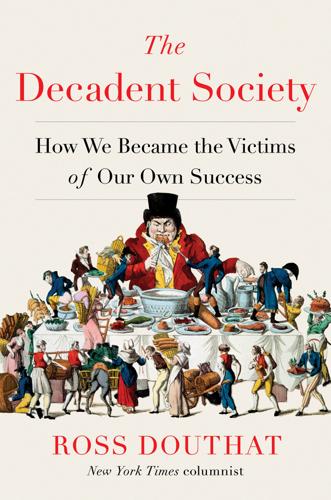
The Decadent Society: How We Became the Victims of Our Own Success
by
Ross Douthat
Published 25 Feb 2020
The populist surge, the madness of online crowds, the way the Internet has allowed the return of certain forms of political extremism, the bizarre ascent of a reality-television president, the proliferation of conspiracy theories and weird political subcultures among the most extremely online Westerners, the spread of fake news in all its varied forms—yes, if our decadence is to end in the return of history, ideological combat, street-brawl politics, and utopianism, then this might be how that ending starts. But it might also represent the way that virtual reality manages the political passions, not by fomenting real revolution but by encouraging people to playact extremism, to reenact the 1930s or 1968 on social media or a Reddit thread or a YouTube video channel, to approach radical politics the way they approach a first-person shooter game—as a kind of sport, a kick to the body chemistry, that doesn’t actually put anything in their relatively comfortable late-modern lives at risk.
…
This means that the war between the populist right and Silicon Valley ultimately fits the pattern described in the last chapter, in the sense that the populists are fighting primarily for the right to entertain and monetize, and their performance of political incorrectness and loud complaints when that performance inspires brushback is less a real rebellion than a validation of the larger system, the outskirts of which they are content to occupy so long as there is money to be made. In this, the media populists are playing the same game as Trump himself, who remains part of the Fake News Complex that he’s supposedly at war with—desperate for the attention of the Washington Post or CNN even as he attacks them, whining about his Twitter numbers to anyone who listens, well aware that he’s driving ratings and subscriptions higher among his supposed “enemies” and willing to take the deal because he wants to be in their headlines, whatever the cost.
…
“dangerous” categorization of, 141–42 see also pink police state Civil Rights Act (1964), 77 Civil War, US, likelihood of second, 133–34 class war, 173 climate change, 35, 202, 219, 221 catastrophic, 192, 195–97, 200 as consequence of dynamism, 179–80 disproportionate effects in global south of, 174–75, 202 mass migration and, 196–97 sustainable decadence and, 173–75 Clinton, Bill, 71, 77 Closing of the American Mind, The (Bloom), 97 Coates, Ta-Nehisi, 97 Cold War, 181 colleges and universities: civil liberties and, 141–43 conflicting missions of, 142 cultural repetition in, 97–98 sex bureaucracy in, 142–43 Communism, fall of, 103, 112, 114, 162–63 Communist Manifesto, The (Marx and Engels), 219 Communist Party, Chinese, 139 communitarianism, religious, 216 communities, virtuous, 215–17 Confessions of a Born-Again Pagan (Kronman), 224 Congo, Civil War in, 199 Congress, US: abdication of policy making by, 75–76, 194 polarization of, 194 conservatives, conservatism, 206 apocalyptic thinking among, 98 birthrate and, 53 in congressional abdication of policy making, 75–76 cultural repetition and, 97–98 decadence of, 203 nostalgia of, 100 sclerosis as viewed by, 72–76 see also right Constitution, US, as not designed to cope with ideological polarization, 78 convergence, of Western and non-Western decadence, 165–69, 173 Coppola, Francis Ford, 95 Corbyn, Jeremy, 114 corporations, dearth of investment and innovation by, 26 Cortés, Hernán, 189, 190 cosmopolitanism, 206, 217, 218 counterculture, 2 Counter-Reformation, 222, 230 Cowen, Tyler, 12, 28, 33–34, 35, 45, 46 Crash of 1929, 194 credentialism, 35 crime rates, decrease in, 150 Crouchback, Guy (char.), 183 Crowley, Aleister, 231 Cuarón, Alfonso, 65–66 Culture of Narcissism, The (Lasch), 96 culture, repetition in, see repetition culture wars, 97–98 cummings, e. e., vii Days of Rage protests, 129 deBoer, Freddie, 145–46, 149 debt, national, 70 ratio of GDP to, 192, 193 debt, overhang of, 34 decadence, 10 aesthetic definition of, 6–7 author’s definition of, 8–10, 239 Barzun on, 8, 12, 69, 91, 96, 100, 113, 135, 172, 184 birthrate and, see birthrates, decline in convergence of, in West and non-Western world, 165–69, 173 economic, see stagnation, economic as ending in dystopia, 184–85 end of, see decadence, deaths of EU as case study in, 82–86 hope for renewal as possible under, 179 institutions and, 69 Islamic world and, 159 moral definition of, 7 and need for a Messiah, 237–39 opposition to, political and social risks of, 178–80, 182–83 policy limits imposed by, 87 political sclerosis as, see sclerosis, political possible inevitability of, 234–36, 240 repetition as, see repetition seductiveness of, 217 use of term, 6–7 decadence, deaths of, 115, 187–240 catastrophe as, see catastrophe divine intervention scenario for, 239–40 neo-medieval scenario for, 200–203 renaissance scenario for, see renaissance space travel scenario for, 236, 239–40 decadence, sustainable, 115, 117–85, 240 arguments in favor of, 177–85 authoritarian systems in, 137–54; see also pink police state benefits of, 180–82 climate change and, 173–75 comfortable numbness in, 119–36 as contradiction in terms, 179 dystopian elements of, 184–85 management of, 181–83 meritocracy in, 169–73 politics and, 129–36 pornography and, 119–22 prescription drugs and, 126–28 virtual entertainments and, 122–26, 128–29 Deep Throat (film), 119 Defense Department, US, UFO videos released by, 233–34 deficit, investment constrained by, 34 deficit spending, 192–93 DeLong, Brad, 192 Democracy in Europe Movement 2025 (DiEM25), 219 democratic norms, 68–69, 78, 163 Democrats, Democratic Party: 1960s–70s reform in, 77 Senate controlled by, 67 demographic change, weight of, 34, 56–58 religious renewal and, 222–23 stagnation and, 57 see also aging populations Deneen, Patrick, 215–17 Deng Xiaoping, 140 depression, among teenagers, 123 deregulation, 24 despair, declining birthrate and, 61–62 developed world: aging populations of, 34, 56–58, 60, 66 limits to growth in, 32–36 shrinking family size in, 59–60 developing world, emergence of decadence in, 165–69, 173 Didion, Joan, 110, 131 Discovery (space shuttle), 37 disease, spread of, 190–91 Disneyland, 37 dissent, marginalization of, 151–52 divine intervention, as scenario for end of decadence, 239–40 divorce rate, 51, 55 Dobson, James, 119, 120 “Dope Show, The” (music video), 140–41 dot-com bubble, 24 Douthat family, 59–60 Dreamland (Quinones), 127 drone warfare, 150 drugs, prescription: antidepressant, 126 increased use of, 126 opioid epidemic and, 126–27 social upheaval repressed by, 126–27 Dune (Herbert), 229 Dunham, Lena, 95 Durant, Will, 189, 202 Dworkin, Andrea, 120 Dylan, Bob, 110 dynamism, 25, 46, 58, 110 dangers of, 179–80 immigration and, 62, 64 nostalgia for, 206 Dyson, Freeman, 6 dystopias, 3, 47–50, 65–66, 94, 95, 122, 128, 144, 155–56, 179 economic catastrophe, 191–95, 200 economic stagnation, see stagnation, economic economy, declining birthrate and, 56–58 economy, US, deceleration of, 24 education: constraints on, 34–35 productivity and, 34–35 Ehrenreich, Barbara, 224 Ehrlich, Paul, 43 Eisenhower-era America, 2 elections, US: of 2008, 67 of 2016, 162, 182 Emanuel, Rahm, 67 Encyclopædia Britannica, 107 End of History and the Last Man, The (Fukuyama), 112–13 energy revolution, 210 Engels, Friedrich, 219 Enlightenment Now (Pinker), 165 entertainment, politics as, 153–54 entrepreneurship, declining rate of, 25–26 environment: constraints imposed by, 35 see also climate change Erdog˘an, Recep Tayyip, 163 Eurafrica, 198–200, 206–10, 218, 228–29 Christianity revitalized by, 207–8 euro, 82 destructive consequences of, 83–85 Europe, 197 aging population of, 198 economic stagnation in, 25 far right in, 85, 155, 162 left’s scenario for renaissance of, 219 mass migration to, 197–99, 200 nationalism in, 85, 172–73, 218 pink police state in, 143–44 populist resurgence in, 85 US economy vs., 166 US governmental system vs., 82, 83 European Union, 172–73, 217, 219 birthrate in, 50 centralization of authority in, 83, 84–85 financial crisis in, 84, 192 Muslim refugees in, 160 possible collapse of, 194 public distrust of government in, 83 sclerosis in, 82–86 unrealistic assumptions of, 82–83 Euro Tragedy: A Drama in Nine Acts (Mody), 84 evangelical Protestantism, 53, 101, 119, 222 Everlasting Man, The (Chesterton), 238–39 exhaustion, cultural and intellectual, decadence as, 9 expansionism, 3–4 environmental and social cost of, 5–6 exploration: abandonment of, 5–6 ideology of, 3–4, 231–32 Fake News, 153 families, shrinking of, 58–62 far left, 172, 194 far right, 134, 193, 194, 227 in Europe, 85, 155, 162 fascism, 112, 160, 194 feminism, 47, 51, 53, 54, 90, 97, 108, 120, 121, 156, 227 fiction, literary, declining sales of, 91 Fight Club (film), 113, 185 filibuster, 78 finance industry, see Wall Street financial crisis of 2008, 11, 69, 80, 84, 137, 192 Finland: decline of sexual relations in, 55 declining birthrate in, 52–53 Fire Next Time, The (Baldwin), 97 Flynn effect, 35 Flynt, Larry, 120 food production, climate change and, 195–96 Ford, John, 110 Foreign Policy, 133 Fox News, 77 France, 32 immigrants in, 64 pronatalist policies of, 52 protest movements in, 171, 172 Francis, Pope, 103 Freedom Time: Negritude, Decolonization, and the Future of the World (Wilder), 208 free-market policies, 25 free trade, 24, 28, 29 French Revolution, 206 From Dawn to Decadence (Barzun), 8 frontier: closing of, 5, 135 New, 181 space as, 2, 6, 231–32; see also Apollo moon program Turner on importance of, 3–4 Fukuyama, Francis, 12, 83, 112–13, 115, 135, 159 Fyre Festival, 17–18, 21 Game of Thrones (TV show), 95, 96 Garland, Merrick, 78 gay rights, revolution in, 99 gender, wage gap and, 99 genetic engineering, 11, 43, 211, 229, 230 Germany, 192 immigrants in, 64, 85 Germany, Nazi, 225 Germany, Weimar, 129, 131 Gersen, Jacob, 142 Gharbi, Musa al-, 97 Gibson, Mel, 189–90, 202 gig economy, decline of traditional freelancing in, 27 gilets-jaunes, 171 Gingrich, Newt, 77 globalism, 218 global South: climate change and, 174–75, 202 mass migration from, 208 global warming, see climate change God and Man at Yale (Buckley), 97 Goebbels, Joseph, 132 Gordon, Robert, 12, 33, 34, 35, 40–41, 46 government: informal norms of, 78 policy failures of, 71 public distrust of, 75 public expectation of action by, 74–75 uncontrolled sprawl of, 72, 76 Government’s End (Rauch), 72 Graeber, David, 12, 38, 40, 41 Gramsci, Antonio, vii Grantland, 93–94 Great Awakening, 103, 222, 228 Great Britain: Brexit in, see Brexit US technological mastery vs., 165 Great Depression, 30, 109 Great Filter, 234–36, 240 Great Recession, 11, 23, 27, 69, 114, 124, 193, 194 falling birthrate in, 51 Great Society, 77 Great Stagnation, The (Cowen), 33–34, 45 Greece, 84, 85 in 2008 financial crisis, 192 Green New Deal, 221 Green Revolution, 43, 196 growth, limits on, 32–36, 46 Guardian (Australia), 220 Guinea, 206 Habits of the Heart (Bellah et al.), 97 Handmaid’s Tale, The (Atwood), 47–50, 65 Handmaid’s Tale, The (TV show), 95 Hanson, Robin, 234 Harris, Mark, 93–94 Harris, Sam, 224 Hazony, Yoram, 218, 219 health care reform: interest groups and, 73 Obama and, 68, 69–70, 73–74, 76 Heavens and the Earth, The (McDougall), 2 Herbert, Frank, 229 Heterodox Academy, 97 Hinduism, 225 history: end of, 112–15, 135, 163, 177 return of, 129, 183, 195 viewed as morality play, 157 hive mind, 106–7 Holmes, Elizabeth, 18–19, 22 hookup culture, 121 horoscopes, 225 Houellebecq, Michel, 155–57, 159, 160–61, 172, 226, 227 House of Representatives, US, 68 “How the Wealth Was Won” (2019 paper), 26 Hubbard, L.
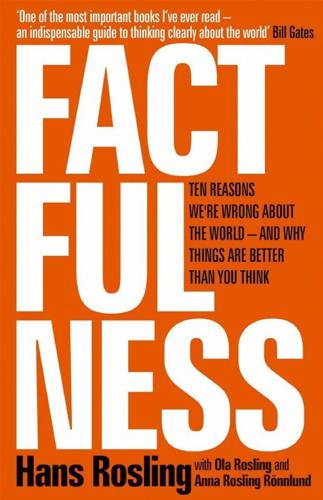
Factfulness: Ten Reasons We're Wrong About the World – and Why Things Are Better Than You Think
by
Hans Rosling
,
Ola Rosling
and
Anna Rosling Rönnlund
Published 2 Apr 2018
Instead of pointing our fingers at journalists, we should be asking: Why does the media present such a distorted picture of the world? Do journalists really mean to give us a distorted picture? Or could there be another explanation? (I am not getting into the debate about deliberately manufactured fake news. That is something else altogether and nothing to do with journalism. And by the way, I do not believe that fake news is the major culprit for our distorted worldview: we haven’t only just started to get the world wrong, I think we have always gotten it wrong.) In 2013, we posted results from Gapminder’s Ignorance Project online. The findings quickly became top stories on both BBC and CNN.
…
So if your worldview is wrong, then you will systematically make wrong guesses. But this overdramatic worldview is not caused simply by out-of-date knowledge, as I once thought. Even people with access to the latest information get the world wrong. And I am convinced it is not the fault of an evil-minded media, propaganda, fake news, or wrong facts. My experience, over decades of lecturing, and testing, and listening to the ways people misinterpret the facts even when they are right in front of them, finally brought me to see that the overdramatic worldview is so difficult to shift because it comes from the very way our brains work.
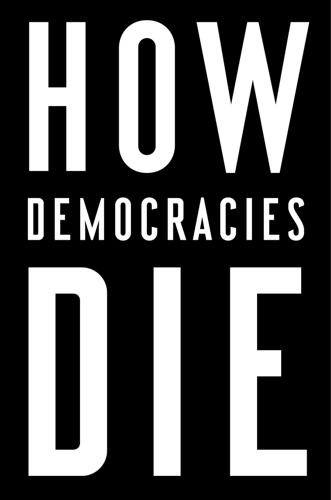
How Democracies Die
by
Steven Levitsky
and
Daniel Ziblatt
Published 16 Jan 2018
His repeated accusations that outlets such as the New York Times and CNN were dispensing “fake news” and conspiring against him look familiar to any student of authoritarianism. In a February 2017 tweet, he called the media the “enemy of the American people,” a term that, critics noted, mimicked one used by Stalin and Mao. Trump’s rhetoric was often threatening. A few days after his “enemy of the people” tweet, Trump told the Conservative Political Action Committee: I love the First Amendment; nobody loves it better than me. Nobody….But as you saw throughout the entire campaign, and even now, the fake news doesn’t tell the truth….I say it doesn’t represent the people.
…
President Trump’s public insults of media outlets and even individual journalists were without precedent in modern U.S. history. He described the media as “among the most dishonest human beings on Earth,” and repeatedly accused such critical news outlets as the New York Times, the Washington Post, and CNN of lying or delivering “fake news.” Trump was not above personal attacks. In June 2017, he went after television host Mika Brzezinski and her cohost Joe Scarborough in a uniquely vitriolic tweetstorm: I heard poorly rated @Morning_Joe speaks badly of me (don’t watch anymore). Then how come low I.Q. Crazy Mika, along with Psycho Joe, came… …to Mar-a-Lago 3 nights in a row around New Year’s Eve, and insisted on joining me.
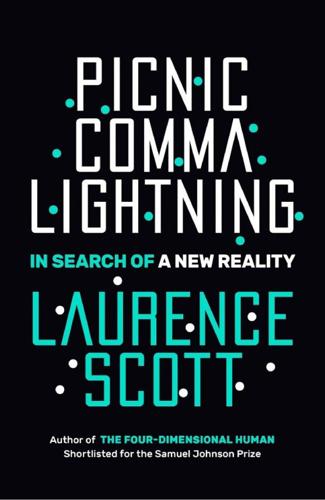
Picnic Comma Lightning: In Search of a New Reality
by
Laurence Scott
Published 11 Jul 2018
Hoekstra denied ever saying that there were ‘no-go zones’ in the Netherlands because of ‘the Islamic movement’ and that cars and politicians were being burnt. He dismissed this report as ‘fake news’, only for the Danish reporter to show him clips of him making these remarks. He then denied that he had just called the reporter’s claim fake news: ‘I didn’t use the words today. I don’t think I did.’ We’ve begun to share these tears in the fabric of normalcy, reason and accountability with genuine, if macabre, relish. But as fake news, post-truth and alternative facts become the corrosive hashtags of the political era, we are also entering into an opposite paradigm where hard, cold facts are given central importance.
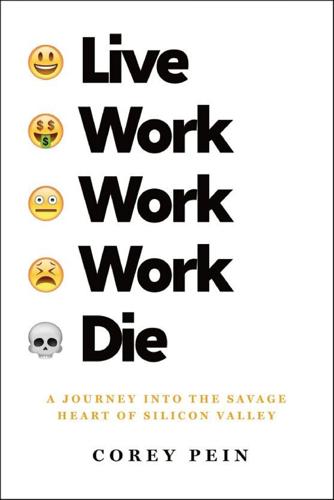
Live Work Work Work Die: A Journey Into the Savage Heart of Silicon Valley
by
Corey Pein
Published 23 Apr 2018
The trick was to break the necessary work into a series of discrete and minuscule tasks appropriate for the structure of Amazon’s platform. The jobs that were most easily deconstructed in such a way tended to be internet-based business-to-business services, such as “search engine optimization” marketing or bulk data processing, as well as scammy operations like fake news clickbait factories seeking to profit by arbitraging between the price of labor on Mechanical Turk and the value of a click from an online advertising broker. Speed, efficiency, and endurance—self-robotization, basically—were the keys to Turking success. Most of the tasks listed on the service were gruelingly monotonous: • Click on specific Google search result Reward: $0.05 • Looking at a receipt image, identify the business of the receipt Reward: $0.01 Some tasks required slightly more creativity: • Describe the picture in a complete sentence using 10 words or more Reward: $0.01 • Write 5 alternative headlines for the following Reward: $0.05 When I was a news editor, I got paid a lot more for the same work.
…
At its height, a federal judge, Katherine Bolan Forrest, received death threats after being targeted by Gamergate’s most dreaded shock brigade, an online gang known as Baphomet that gathered on 8chan, a more militant cousin to the 4chan boards. How closely all of this prefigured the rhetoric of the Trump campaign and presidency: fake news, fake judges, men’s rights, white power, full frontal assault—and no apologies, ever! These bitter fruits shared a common root. Writing in the Guardian, the novelist Pankaj Mishra persuasively described a connection between the Charleston massacre, the atrocities of the Islamic State, and various secessionist movements, of which Trump must be considered a part along with Brexit.
…
Max More For more on cryonics and the extropians, see my report, “Everybody Freeze!,” 2016, Baffler (no. 30). a procedure called parabiosis Jeff Bercovici broke the news of Thiel’s quasivampirisim in an August 1, 2016, Inc. magazine story titled “Peter Thiel Is Very, Very Interested in Young People’s Blood.” Breitbart News would months later dismiss Bercovici’s report as “fake news” after his key source clammed up, though he and the magazine stood by the story. Not good government “A Conversation with Peter Thiel,” April 6, 2015, medium.com. Whatever genuine concerns Thiel might harbor David Streitfeld and Jacqueline Williams, “Peter Thiel, Trump Adviser, Has a Backup Country: New Zealand,” January 25, 2017, nytimes.com.
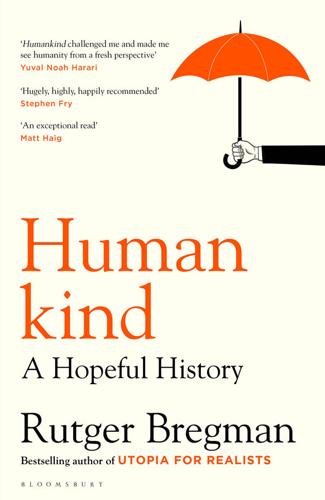
Humankind: A Hopeful History
by
Rutger Bregman
Published 1 Jun 2020
9 German Lieutenant Kurt Zehmisch also kept having to pinch himself: ‘How fantastically wonderful and strange,’ he marvelled, ‘that thanks to soccer and Christmas […] deadly enemies briefly came together as friends.’10 Most British were stunned at how friendly the Germans were. Back home, they’d been incited by propaganda and fake news in papers such as the Daily Mail. More than 40 per cent of newspaper circulation was controlled by one man: Lord Northcliffe, the Rupert Murdoch of his day. He wielded tremendous power over public opinion. Germans were portrayed as ferocious Huns who went around spearing infants on bayonets and stringing priests up from church bells.11 Shortly before the war broke out, the German poet Ernst Lissauer had penned ‘Hymn of Hate against England’, which vied in popularity with the national anthem.
…
Military historian Tony Ashworth describes Christmas 1914 as ‘the sudden surfacing of the whole of an iceberg’.29 For even in wartime there’s a mountain of peace ready to rise up at any moment. To push that mountain back below the surface, generals, politicians and warmongers have to draw on every means at their disposal, from fake news to sheer force. Humans are simply not wired for war. The thing we all need to remember – myself included – is that those other folks are a lot like us. The angry voter venting on TV, the refugee in the statistics, the criminal in the mugshot: every one of them is a human being of flesh and blood, someone who in a different life might have been our friend, our family, our beloved.
…
And the Fighting Stopped’, Guardian (1 November 2003). 8Brown and Seaton, Christmas Truce, p. 111. 9Ibid., p. 115. 10Quoted in Simon Kuper, ‘Soccer in the Trenches: Remembering the WWI Christmas Truce’, espn.com (25 December 2014). 11Modern historians point out that although the Germans certainly committed war crimes in 1914, they were heavily embellished in British propaganda. Just how disastrous the effects of such fake news can be would not become fully apparent until twenty-five years later. When in the Second World War reports began coming in of Germans committing the most horrifying atrocities on a massive scale, a sizeable share of people in the UK and US doubted their veracity. Given how the press had exaggerated matters during the First World War, it seemed to make sense to take the stories about gas chambers with a grain of salt.
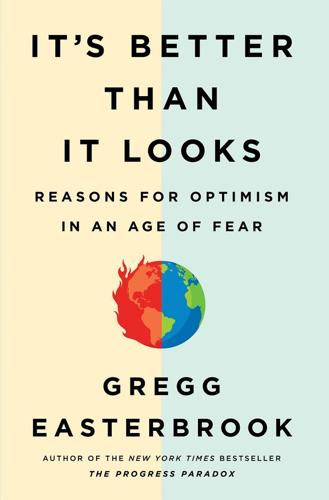
It's Better Than It Looks: Reasons for Optimism in an Age of Fear
by
Gregg Easterbrook
Published 20 Feb 2018
ABC News, September 30, 2005. Doubling down, in May 2006, ABC aired Fatal Contact: Bird Flu in America, a preposterous made-for-TV movie full of fake newscasts and fake White House scenes, depicting much of the US population killed in a few weeks. Donald Trump may cry “fake news” far too often, but it was the networks themselves that conceived the idea of presenting fake news as a form of entertainment. avian flu has killed about 450 people worldwide: “Cumulative Number of Confirmed Human Cases for Avian Influenza A(H5N1) Reported to WHO, 2003–2017” (Geneva: World Health Organization, June 2017). MERS could be the “new Black Death”: Laurie Garrett, “The Middle East Plague Goes Global,” Foreign Policy, June 28, 2013.
…
Bishop contends the United States is in the second generation of creating networks of communities in which liberals encounter only other liberals, conservatives encounter only other conservatives, and evangelicals encounter only other evangelicals. Communities of the like-minded tend to be upbeat about local circumstances and downbeat regarding the national situation, Bishop reports. Rarely meeting and interacting with those who think differently can foster fake-news-style beliefs: liberals can think conservatives are the enemy, conservatives can think liberals are unhinged, evangelicals can blame the godless. Being in like-minded and like-educated communities eases one’s thinking that far-off, never-actually-encountered people with different views are the cause of every ill.
…
Holly Shakya and Nicholas Christakis… found: Holly Shakya et al., “Association of Facebook Use with Compromised Well-being: A Longitudinal Study,” American Journal of Epidemiology, February 2017. Going into the 2016 election, Pew Research reported: Elisa Shearer, “News Use Across Social Media Platforms 2016” (Washington, DC: Pew Research Center, 2016). as Robert Thomson has said: Robert Thomson, “Fake News and the Digital Duopoly,” speech to the Asia Society, Hong Kong, 2016. a political science textbook, Red and Blue Nation, said: Pietro Nivola, ed., Red and Blue Nation (Washington, DC: Brookings Press, 2006). The psychologist Amos Tversky: Amos Tversky, Preference, Belief, and Similarity: Selected Writings (Cambridge, MA: MIT Press, 2003).
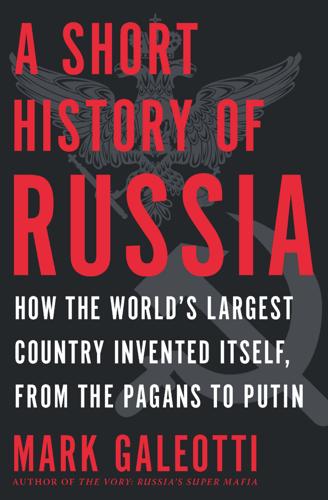
A Short History of Russia
by
Mark Galeotti
Published 1 May 2020
It did not help that his reign was marked by famine, interpreted as a sign of divine disfavor, and an associated peasant rising. In 1604, a pretender claiming to be Dmitry, Fyodor’s half brother—who had actually died in 1591—led a Polish-backed attempt to seize the throne, and Russians, excited by the thought that maybe the Ryurikid dynasty had survived, flocked to his ranks. “Fake news” was already destabilizing governments in the sixteenth century. When Godunov died in 1605, his 16-year-old son Fyodor II reigned as tsar for just two months before being murdered. After all, without divine right, one candidate’s claims were just as good as another’s. The next eight years are known as the Time of Troubles.
…
absolutism, 65, 66, 128 Afghanistan, 185 agriculture, 42, 85, 119–120, 173, 177, 184–185 Alexander I, Tsar, 135, 138, 139, 140, 141–144 Alexander II, Tsar, 138, 139, 154, 176 Alexander III, Tsar, 159–160, 206 Ambassadorial Office, 77 America, attitude toward, 15. see also West, the Ancient Russia (map), 27 Andropov, Yuri, 186 An Imperial Stride, 117 Anna (daughter of Ivan V), 121–122 anticorruption, 202. see also corruption and extortion appanage, 49, 58 Arakcheyev, Alexei, 142 army, Peter the Great and the, 112–113 Arrival of Ryurik to Ladoga, 22 Askold (Viking adventurer), 26 Assembly of the Land, 78 Astrakhan Khanate, 80 authoritarian rule, 65–66, 111, 133 autocracy, 68–91, 126, 145–146 Banditry Office, 77 Basil II (emperor), 32 baskaks, 55 Batu Khan, 53, 54 Belskies, the, 74, 87 Benckendorff, Alexander, 147 Biron, Ernst, 122 Black Death, the, 58 black markets, 185, 191 Blue Sky Tengri, 52 Bohemians, the, 25 Bolesław (count), 33, 34 Bolsheviks, 168, 171–174, 178 Bonaparte, Napoleon, 119, 138, 139, 140–143 Boretskaya, Marfa, 72 Boris (brother of Yaroslav), 35 Boyar Council, 83 Brezhnev, Leonid, 184–185 Briacheslav of Polotsk, 33 Bulgars, the, 24, 29 Byzantine Orthodox Christianity, 31–32, 71, 99–100 Byzantium, 15, 23–25, 29, 30, 32, 34, 39, 72, 99 Cap of Monomakh, 75–76, 103 Cathedral of Christ the Saviour, 138, 138–139 Catherine I, 120–121 Catherine the Great, 115, 117, 121–133, 135, 176 mocking of, 117–118 presentation of Russia to the world, 118–119 Catholicism, Roman, 30 censorship, 147, 156 Charles XII, 114 Charter to the Gentry, 130 Chechnya, 197, 199–200 Cheka, the, 174 Chernenko, Konstantin, 186 Chernobyl, 187 China, 40, 209, 211 Christianity arise of in Russia, 14–15, 30–31 in Novgorod, 50 Orthodox, 31, 37, 56, 58, 64, 71, 72, 76, 78, 89, 98, 145–146, 152, 205 Russian state and, 30, 47, 77–78, 108 Chud, the, 22 church, reformation of, 77–78, 99–102, 108 cities and fortifications, early growth of, 23–30 civil service, 77, 157 Civil War (1918–22), 174, 190 civil wars, eleventh century, 35 Code of Laws (Sudebnik), 72–73 collectivization, 42, 177 Communist Party, 165, 174, 177, 188, 189, 191, 197 Congress of Soviets, 173 conservatism, 72, 133, 160, 167, 205 Constantine IX Monomachus, 75–76 Constantinople, 24–26, 28, 30, 34, 39, 40, 71, 117–118 Constituent Assembly, 173 Constitutional Democrat Party (Kadets), 166, 170–171 Contarini, Ambrogio, 85 corruption and extortion, 78, 83, 130, 184–186, 188, 191, 196, 198–199, 200, 202, 204, 213 Cossacks, 97–98, 127, 128, 141 Council of a Hundred Chapters, 77–78 coups and wars, see wars and coups Crimea, annexation of, 16, 44, 132, 195, 202 Crimean Khanate, 84, 104 Crimean Tatars, threat of, 89 Crimean War, 150, 152–154, 153 Cuban Missile Crisis, 182 Cumans, the, 38, 51–53 Decembrist Revolt of 1825, 145 Defenders of the Russian Soil, The, 193 democracy, as pretense, 200–201 democratization, 188 Derevliane, the, 28 despotism, 54–55, 66, 95–96, 126, 146 Dir (Viking adventurer), 26 disease and illness, 82, 97, 123, 127, 141, 174 diversity of population, 80 Dmitry I, Prince of Moscow, 46, 46–47, 58–63, 71 Dostoevsky, Fyodor, 147 double tsars, 103 Dual Power, 171 dvoyetsarstvenniki, 103 economy, see also serfs during 1700s, 119–120 during 1890s, 160–161 during 1970s, 184–185 during 1990s and 2000s, 197, 200, 204, 209 artisanal, 65 collectivization and, 177 early cities and, 34–35 Gorbachev and, 186–188 Ivan IV and, 84–87 Khrushchev and, 182 Lenin’s New Economic Policy, 174 Stalin and, 180–181 trade routes, 25–26, 28, 32–33, 37, 39, 41, 51, 65, 81, 151 during World War I, 169–170, 173 education, 102, 127, 143, 150, 156, 157, 158 egalitarianism, 76, 129, 165, 186 Elizabeth (daughter of Peter the Great), 122–123 Elizabeth, Empress, 123 Elizabeth, Queen of England, 69–70 Emancipation Decree, 156 embezzlement, see corruption and extortion Emergency Committee, 189 Emir Mamai of the Jochids, 60–62 emperors, as rulers, 76 English Muscovy Company, 82–83 enlightened despotism, 118, 126 Enlightenment Russia, 119 Eternal Peace Treaty, 104 ethnicity, 80, 195–196 Expansion of Russia, The (map) 131 extortion and corruption, 78, 83, 130, 184–186, 188, 191, 196, 198–199, 200, 202, 204, 213 fake news, 88. see also propaganda False Dmitries, 88, 132 farming, 85, 119–120, 173, 177, 184 fascism, 179 Federal Security Service (FSB), 198 feudalism, birth of, 37 Filaret, Patriarch, 91, 97 First Northern War, 100 First World War, 168–172, 190 foreign rule, myth of the end of, 63–67 France, influence of, 143–144 Frederick II of Prussia, 124 French Revolution, 134, 136, 142–143 Fundamental Laws, 166 Fyodor (son of Ivan IV), 70, 85, 87 Fyodor II (son of Godunov), 88 Fyodor III, 102–103 Gardariki, 25 Gathering of the Russian Lands, 63, 70–73 gender roles, women’s, 72, 120–121, 124, 127, 158, 175, 178 Genghis Khan, 52 geography Ancient Russia (map), 27 Crimean War, The (map), 153 early geographical divisions, 12–13 Expansion of Russia, The (map), 131 Golden Horde Russia (map), 59 Peter’s Great Embassy (map), 109 Putin’s Wars (map), 203 Soviet Union, The (map), 183 Time of Troubles, The (map), 86 trade routes, 25–26, 28, 32–33, 37, 39, 41, 51, 65, 81, 151 geopolitics, 39, 41, 88–89 Germany Germans as threat, 40 glasnost, 187–188 Glinskaya, Yelena, 74 Glinskies, the, 74 Global War on Terror, 201 Godunov, Boris, 87–88 Golden Horde, 46, 47, 54, 55–58, 59, 60–62, 64, 66–67 Golitsyn, Dmitry, 122 Golitsyn, Vasily (prince), 104 Gorbachev, Mikhail, 186–190, 194, 207 Gordon, Patrick, 98–99, 109 Grand Duchy of Lithuania, 60 Great Embassy, 110 Great Moscow Synod of 1666, 101 Great Northern War, 112, 113 Great Patriotic War, 179–182, 190 Great Silk Road, the, 58 Great Stand on the Ugra River, 63 Gulag, the, 177, 180, 181, 182 History of the All-Union Communist Party (Bolsheviks) (Stalin), 206–207 Hitler, Adolf, 13, 179–180, 205 Horsey, Jerome, 82–83 hybrid wars, 202 Igor (son of Ryurik), 26, 28 illness and disease, 82, 97, 123, 127, 141, 174 Imperial Academy of Arts, 158 industrialization, 42, 154, 177, 180, 181, 185, 194 inheritance by primogeniture, 57–58 intelligentsia radicalism, 158–159 Interior Ministry, 77 internet, Russian usage of, 209–210 invasions, early, 13–14 Islam, 14–15, 30–31, 40, 55 isolation of Russia, 64–65 Ivan (son of Alexei Romanov), 102–105 Ivan I, Prince, 57–58, 71 Ivan II, 58 Ivan III, Grand Prince, 63, 70, 71, 78 Ivan III the Great, 67 Ivan IV the Terrible, 69, 69, 70–87, 90, 112–113 Ivan V, 121, 122–123 Ivan VI, 122 Japan, 161–162 Jochi Khan, 53 Judaism, 13, 30, 36, 159 Kadets (Constitutional Democrat Party), 166, 170–171 KGB, 186, 194, 198 Khanate of Kazan, 74, 80 Khazars, the, 24 Khodorkovsky, Mikhail, 199 Khrushchev, Nikita, 182–184 Kiev fall to the Mongols, 53–54 family lineage and, 49 Grand Princes and, 30, 36–37, 41 growth of, 28, 32, 37 as heart of Rus’, 48–49 political fragmentation of, 34–37 princes of, 32–34 siege of, 34 Kipchaks, the, 38 Konstantin, Grand Duke, 144–145 Kriviches, the, 22 Kulikovo, 46, 63 Kurbsky, Andrei (prince), 83 Ladoga, 22–25 land grants, 78, 79 landholdings, patrimonial, 34–35 language, 13–14, 19, 31, 65 Lefort, Franz, 109–110 legal systems, 72–73 Lenin, Valdimir, 168, 171, 172–176, 190 Lenin-Stalin Mausoleum, 165 Leopold, Karl, 121 Life and Death of Grand Prince Dmitry Ivanovich, The, 47 linguistic autonomy, 19 literacy, 118, 136, 185 Livonian War of 1558-83, 81, 83, 85 Louis the Pious, King of the Franks, 23 Luzhkov, Yuri, 93–94 Lysenko, Trofim, 194 Lyubech, 1097 summit, 37 Magyars, the, 25 Majoritarians, see Bolsheviks Manifesto of the Freedom of the Nobility, 129 maps Ancient Russia, 27 Crimean War, The, 153 Expansion of Russia, The, 131 Golden Horde Russia, 59 Peter’s Great Embassy, 109 Putin’s Wars, 203 Soviet Union, The, 183 Time of Troubles, The, 86 Marx, Karl, 15, 64, 152, 168, 172, 212 Marxism, 136 Marxist-Leninist egalitarianism, 165 mass media, 200–201, 204–205, 208–211 Matveyev, Artamon, 106 Medvedev, Dmitry, 201 Mensheviks, 168, 170 Menshikov, Alexander, 121 merchant class, rise of, 157–158 Merias, the, 22 mestnichestvo, 73, 102, 107, 108 Mikhail I, 90–91, 97 military, see also soldiers; wars and coups feudal vs. monarchical, 79 growth of under Ivan IV, 79–80 inadequacies of, 106–107 Nicholas I and, 148–151 Paul I and, 134 Ministry of Foreign Affairs, 77 missionaries, 31, 64, 97 modernization attempts, 102, 114–115, 135–136, 139–140, 155, 160–162, 165, 182, 187 Monastery of the Caves, 38 Mongols, 13, 15, 38, 48, 51–57, 66–67 Mongol style of rule, 64, 65 Mongol Yoke, 46, 48, 55–58, 64 Monomakh, Vladimir, 36, 38, 75 Mons, Anna, 110 Moscow Golden Horde and, 60 rise of, 48, 51, 72, 76–79 as spiritual capital, 58 Muslims, 14, 25, 56, 80, 150, 209 Mstislav of Chernigov, 33 Muscovite state, rise of, 56, 58, 65, 70 myths, national and political, 14, 15, 43–44, 47–48, 62–63, 75, 117–119, 139–140, 178–179, 190, 194, 207, 210 Nagoi, the, 87 Nakaz, the, 127, 132–133, 135 namestniks, 77 Narodnaya Volya, 159 Naryshkin, Ivan, 106 navy, Russian, 94, 110–111, 112, 113 Nevsky, Alexander, 56–57 New Economic Policy, 174 New Maidens’ Monastery, 105 Nicholas I (son of Alexander I), 138, 139, 144–151 Nicholas II (son of Alexander III), 160, 166–168, 170 Nikon, Patriarch, 99–101, 108, 208 Normanist conquest, 38–44 Novgorod about, 11, 24, 26, 49–51 demise of, 71 as geopolitical power, 64 rise of Christianity in, 50 veches and, 36 Official Nationality, 145–146, 206 Ogedei (uncle of Batu Khan), 54 Old Believers, 101 Oleg (son of Sviatoslav), 29 Oleg (successor to Ryurik), 26 Operation Barbarossa, 179–180 Oprichnina, Oprichniks, 83, 84 Orthodox Christianity, 31–32, 37, 56, 58, 64, 71, 72, 76, 78, 89, 98–100, 145–146, 152, 205 Ottoman Empire alliance with France, 134 conflicts with, 80–81, 89, 113, 152 Nicholas I and, 150–151 overthrow of Constantinople, 71 pagan culture, 26, 30–31, 41, 50, 89 Paleologue, Sophia, 71 palimpsest, Russia as, 11–15, 17, 43, 196, 207, 208–214 patrimonial landholdings, 34–35 patrimonial rulers, succession of, 35 Patriotic War, 140 Paul I (son of Catherine the Great), 133–135 Pauline Laws, 134 Pechenegs, the, 28, 29, 34, 39, 51, 52 perestroika, 187 Peresvet, 46–47 Pereyaslavl Accords, 98 Persia, as threat, 98 Persian Campaign, 1722-3, 112 Perun the Thunderer, 26 Peter II, 121 Peter III (Peter of Holstein-Gottorp), 123, 124–125, 129 Peter the Great, 15, 93, 94–95, 103–105, 105–115, 109, 120–121, 135, 176 Petrograd Soviet, the, 170–171 Pobedonostsev, Konstantin, 159 pogroms, 36 Poland Poles as threat, 40, 89, 98 Polovtsians, the, 38, 51–53 Polyane, the, 24 pomeshchiks, 73, 78 pomestiye, 78 Populists, 158 posadniks, 35, 36, 49 Potemkin, Grigory, 119 Preobrazhensky Regiment, 123 primogeniture, inheritance by, 57–58 princes, role of, 35, 55 propaganda, 42, 88, 178, 187, 191, 204–205 Provisional Government, 170–171 Pugachev, Yemelyan, 132 Pushkin, Alexander, 147 Putin, Vladimir, 16, 40–42, 195, 198–201, 201–205, 203, 205–208 radicalism, European, 143 radicalism, intelligentsia, 158–159 Radimiches, the, 22 Raskol, the, 101 Rasputin, Grigory, 170 Redemption Dues, 156–157 religion, Russian state and, 30, 47, 77–78, 108 Renaissance culture, 51, 64, 65 revisionism, 193–195. see also myths, national and political contemporary, 40 history of, 15–17 of history of power and authority, 76 over the centuries, 43 Putin and, 210–211 Russia—My History, 204 revolutions, 148–151, 161 1848, 149 1905, 162, 166–168 1917, 170, 171 French, 134, 136, 142–143 revolutions, concerns about, 143 Roman Catholicism, 30 Romanov, Alexei, 98–101 Romanov, Mikhail, 90–91, 97 Romanovna, Anastasia, 82 Romanov dynasty, 70, 95, 96 Romodanovsky, Fyodor, 111 Rorik of Dorestad, 23, 24 Rus’, about, 26 Russia expansion of, 79–82, 97 future of, 212–213 Russia, Romanov, 70, 95, 96 Russian Empire, origins of, 96 Russian Federation, 195–196 Russian Soviet Federative Socialist Republic (RSFSR), map of, 183 Russian state, roots of, 77 Russification, 146 Russo-Persian War, 1722-3, 114 Russo-Turkish War, 128 Ryazan, 47, 57, 60 Ryurik, about, 22–23, 26 Ryurikid dynasty, about, 22–26, 56–58, 87 Ryurikids, arrival of, 23–29 Sacred Council, 77 Sarai, 47–48, 55–57, 60–63, 65–66 Scandinavian raider-traders, 23, 24 Second Rome, 15, 150 Second World War, 179–182, 190, 194 serfs Catherine the Great and, 130 egalitarianism and, 129 emancipation of, 148, 154, 155–158 as percentage of population, 119 Peter the Great and, 107, 108, 112 as soldiers, 156 St.
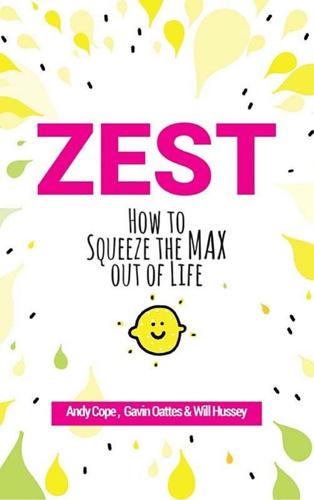
Zest: How to Squeeze the Max Out of Life
by
Andy Cope
,
Gavin Oattes
and
Will Hussey
Published 19 Jul 2019
Is it some sort of politically correct dwarfism issue? Nope. It’s that the Prince stole a kiss off her while she was asleep. I mean, it’s a jolly good job she woke up when she did otherwise we’d have had an 18-certificate necrophiliac Disney debacle. The point is that I clicked. I feel ashamed and dirty for doing so, hood-winked into a world of fake news where one parent in one school has made a noise, and that noise reverberates back into society in a deafening crescendo of what’s called ‘outrage porn’. We’re snared by clickbait. As long-established newspapers fold around us by the dozen, journalists and professional commentators have been forced to face an unpleasant truth: they’re only worth the clicks they muster.
…
You can check Will out at www.artofbrilliance.co.uk or you can tweet him at @aobrillwill Index ABCDE exercise 189, 190–1, 205 Adams, Tony 216 addiction 118 adversity 189, 190 advertisement 111 aggression 88 alive time 215 aliveness 173–4 Allingham, Henry 216 allodoxaphobia 103 altruism 209 Amazon 28 anger 69, 167 angst 70 animation 65, 66 anxiety 30, 63, 83, 86, 87 Ardagh, Philip 75 Ardagh Tips 56 attachment theory 114 attention 111, 112 attitude 153, 165 can-do 72 awareness 195 Balboa, Rocky 177 belief 189, 191 Beschaulich 25 body 54–6 boogie woogie 127 bothered, being 71–2, 169 Bowie, David 44 brain 101–2 evolution of 148 fuel 148 healthy 218–20 brain injury 133 breathing 197–9, 205 Brilliant, Ashleigh 201 BROMO 115, 116 busyness 38–9, 40 Call the Midwife 77 can-do attitudes 72 Calment, Jeanne 216 capitalism 111 carers 132–6 caring profession 136 Carlson, Mary 137 celebration 67–8, 131 change, willingness to 173 children 45, 67–8 Christakis, Nicholas A. 96 clickbait 69 Cliff, Jimmy 26–7 Cognitive Behavioural Therapy 190 commitment 163–9 comparison 104–7 compassion fatigue 135 compound interest 150–1 compulsive gambling 118 confidence 61, 62 conflict 118 connectedness 108 consequence 189, 191 consumption 42 content of experience 195 contentment 42 counselling 177 Crawford, Matthew 111 creativity 158 daily challenges 58–9 Dali, Salvador 220 dead time 215 Dean, James 128 depression 30, 62, 83, 88 as self-reinforcing cycle 132 depressive episode 88 Deresiewicz, William 106, 122 despair 167 destination addiction 92 Diagnostic and Statistical Manual of Mental Disorders 5th Edn (DSM5) 63 digital detox 117–21 Dillard, Annie 107 disconnectedness 108 dispute, learning to 189, 191–2 Dryden, Dr Windy 105 education level 84 effort 163, 167 ego 194–7 emotional contagion 94–7 emotional soup 96 emotional spillage 96 emotional tolerance levels, normal 88 empathy 147 employee weaknesses 162 emptiness 40, 42, 88 energization 190, 192 enthusiasm 72 envy 104–7, 121 ethnicity 84 eudaimonia 166, 167, 209 euthymia 168 exercise 155 Exorcist, The 195 explanatory style 187–8 Facebook 39, 108–9 FaceTube 39, 128 failure 175 fake news 69 family extended 217 well-being, emotion and 96–7 Feynman, Richard 55 Field, Tiffany 137 flow 9 FOJI (Fear of Joining In)116 FOMO (Fear of Missing Out) 114, 115, 116 food 83, 211 forgetfulness 71 forgiveness 185–7, 204 Fosbury, Dick 81 Fowler, James H. 96 Freud, Sigmund 193 fun 193, 205 gender 84 Gibran, Khalil 20, 121 Gilbert, Dan 101–2 goals 168 Gogglebox 39 Goggling 37–42 Goleman, Daniel 95, 96 good news 68–71 Googling 37–42 gratitude 66 Griffiths, Mark 114 grudges 186 grumbling 61, 185, 186 grumpiness 86 habit 150–2 happiness 62, 72 50/10/40 ratio 83–5 for no reason 209 hacks 210–11 as in-sperience 90–1 instant 166, 167 moment 131–2, 202 sacrificing 166 search for 42, 92–3 as self-reinforcing cycle 132 spectrum 150 thermostat 94 Happiness Pie 83–5 hara hachi bu 217 hard knocks 28–31 Harlow, Harry 137 hate 56–8 haters 56–8 healing 80 health 84 hedonic treadmill 166 hedonism 166, 209 Hicks, Bill 173 Hodgson, Roger 215–16 hope 72, 152–4 House, Oriah, Mountain Dreamer (Invitation, The) 13–16 hugs 137–8 humour, lack of 34 identity 194 of ego 195, 197 illusory self 194 imagination 149 immersion mode 9 imperfections 184 imposter syndrome 36 improvised comedy 129 income 84 individuality 224 inflammation 70 initials, using middle 26 inner strength 75 in-sperience 86–91 Instagram 112, 114, 115, 116, 139 internet addiction 118 irritability 88 Jake, Adventure Time 210 Jamie and the Magic Torch 169 Japan, longevity in 216–17 JOMO (Joy of Missing Out) 116, 117 kalsarikänni see pantsdrunk Katie, Byron 130 Kerouac, Jack: On the Road 53 keystone habits 150, 152, 169 Kim Ki Joon, Dr 114 kindness 57–8 random acts of 57 King, Martin Luther 178, 179 Kington, Miles 218 Kintsugi 183–5, 204 Knopfler, Mark 89 Knudstorp, Jorgen Vig 158 Kool 53 Krishnamurti, Jiddu 196 Lamott, Anne 221 Larson, Gary 104 learned helplessness 154 learning 56 life expectancy 32–3, 216 life satisfaction 167 lifestyle 84 Lightman, Alan 117–18 Logical Song, The 215 London, Jack 223 loneliness 30, 88, 156 longevity league table 216–17 Lucretius 105 mania 88 Manson, Mark 187 marital status 84 Marsh, Nigel 41 materialism 41–2, 105, 197 Mbuki-mvuki 127 mediocrity 88, 165 memories 202 mental illness 62–3 statistics 80 metanoia 80, 81, 82 mindfulness 201, 202 mirror neurons 95 misery 86 modernity 29 MOMO (Mystery of Missing Out) 115 money 42 mood 154 changes 118 morosity 34 motivations 168 Nagasaki, Kendo 194 names 26 meaning of 179–81 Neanderthals 147, 148 negative emotions 70 negativity 61, 62, 69, 72, 165 neocortex 147, 149 neuroplasticity 149 news fake 69 good 68–71 unbiased 70 nexting 102 niceness 57 Nietzsche, Friedrich 138 nightmares 61 NLP 47, 56 nomophobia 113, 114 Normal, being 34–5 normality 177, 204 now, living in the 68, 199–203 Obama, Michelle 57 obesity 155, 156 Oedipus Complex 193 Ogling 37–42 Opening Night Principle 130 openness 95 optimism 72, 83, 152–4, 190 realistic 26 optimistic explanatory style 188, 190 overimagining 149 overthinking 149 Paddington Bear 46 pain 167 panic attacks 30, 63, 87 Palahniuk, Chuck 55 panicking about the future 149 pantsdrunk 139–41 paramedics 136 para-sympathetic arousal 95 passion, finding 158–60 peer review 79 performance review 162 personal development 158 personal responsibility 61 personality 224 pessimism 33 pessimistic explanatory style 188 phobias 103–4 phone separation anxiety 113 physical appearance 84 physical labour 28–9, 30 play 45–7, 225 playground 45 playtime 46–7 Poe, Edgar Allan 155 Poole, Mary 223 positive emotion 70 positive psychology 82, 88, 91, 150, 175 positivity 62, 72, 97 training in 165 post-traumatic growth 178 potential 163 Powell, Richard 184 pratfall effect 138 Pretoogjes 224 procrastination 211 psychological rebuilding 80 random acts of kindness 57 rationalization 147 realistic optimism 154 re-animation 65 regret 225 relapse 118 relationships, investment in 155–7 relaxation 140 remembering 71 retirement 222 Richards, Keith 215 Rogan, Joe 139 roles, social 29 Rose, Axl 174 rumination 149 Schwartz, Kenneth 136 sea squirts 37–8 seeing clearly 26–7 self-awareness 55 self-envy 106 self-harm 30 self-reinforcing cycle 132 Seligman, Professor Marty 189 separation anxiety 113, 114 set point 94 sex drive 88 sharing etiquette 120 sidekick 178–83, 204 silence 112 Simon, Paul 63 skeletons of the past 203–4, 205 skills 165 sleep 160–1 sleep hygiene 160 SLOMO (Slow to Miss Out) 116 small habits 150 smartphone 113–14 detoxing 119 smile 132, 176 Smith, Col.

Like, Comment, Subscribe: Inside YouTube's Chaotic Rise to World Domination
by
Mark Bergen
Published 5 Sep 2022
YouTube started paying people to make videos when Facebook was still a site for dorm-room flirting, when Twitter was a techie fad, and a decade before TikTok existed. All those companies ripped from Google their philosophy—more information online is better—and their business model: get a free service to as many people as possible and mine their clicks, habits, and data to sell ads. Influencers, preteen millionaires, fake news, internet addictions, con artists—Google and YouTube enabled all these messy wonders and ills of social media, usually first. “Google made the wheel,” one veteran of Google and Facebook said. “Facebook and every other internet company copied it.” YouTube was as reliable as running water and as voluminous as an ocean.
…
“One person’s misinfo is often another person’s deeply held belief,” he blogged. He took for granted the assumption, less than two decades old, that any person was entitled to broadcast their deeply held beliefs over mass media. Still, Mohan was right that YouTube saw disturbing trends. Officials in Russia and India began using the terms “fake news” and “extremism” to demand YouTube remove videos from critics and opposition figures—in effect, forcing the company to choose between its stated values and its desire to be everywhere. Other countries will likely follow suit. In nations rife with conflict and contested elections, YouTube, like other social media, hires few people who understand the language or political terrain.
…
GO TO NOTE REFERENCE IN TEXT Press dubbed her: Katherine Cross, “The Oscar Wilde of YouTube Fights the Alt-Right with Decadence and Seduction,” The Verge, August 24, 2018, https://www.theverge.com/tech/2018/8/24/17689090/contrapoints-youtube-natalie-wynn. GO TO NOTE REFERENCE IN TEXT promoting coronavirus hoaxes: Marlow Stern, “Jake Paul Believes COVID Is ‘a Hoax’ and ‘98% of News Is Fake,’ ” The Daily Beast, November 25, 2020, https://www.thedailybeast.com/youtuber-jake-paul-believes-covid-is-a-hoaxand-i-am-fake-news. GO TO NOTE REFERENCE IN TEXT looting during summer: Jake Paul was charged with misdemeanor trespassing at a shopping mall but he denied participating in looting or vandalism. GO TO NOTE REFERENCE IN TEXT YouTube managers argued: Mike Isaac, Kate Conger, and Daisuke Wakabayashi, “What to Expect from Facebook, Twitter and YouTube on Election Day,” The New York Times, November 2, 2020, https://www.nytimes.com/2020/11/02/technology/facebook-twitter-youtube-election-day.html.

My Friend Anna: The True Story of a Fake Heiress
by
Rachel Deloache Williams
Published 15 Jul 2019
“Get out of here with that garbage,” she might say, only half kidding, if someone offered her some French fries or some other random thing she didn’t want. She also loved to refer to people and things as “fake news.” It might happen like this: “Anna, no—it’s so late! I need to go home.” “No, no, come back!” Anna called to the waiter, laughing. “Two more glasses, don’t listen to Rachel—she’s fake news!” Anna knew where she stood on all things. Even her non-opinions were delivered with certitude. For example: if you asked Anna about her politics, she would tell you that she was decidedly nonpolitical.
…
Kacy said, “They just had an announcement—” “Where?” Anna snapped. “It was in the paper.” “Four days ago,” I added. When she asked to see it, I picked up my phone and paused the recording before showing her the article. For a millisecond Anna appeared crestfallen. I took my phone back. “It’s fake news,” she said. We refocused on Anna’s outstanding debts. Kacy asked why Anna couldn’t simply go home, sort out her finances, and come back. “It doesn’t help me going anywhere,” she answered. “I need to resolve this. If I leave, I can’t come back, like, never again. Not for a moment. Like never, ever again.”

Forward: Notes on the Future of Our Democracy
by
Andrew Yang
Published 15 Nov 2021
In 2018, Massachusetts Institute of Technology Robinson Meyer, “The Grim Conclusions of the Largest-Ever Study of Fake News,” Atlantic, March 8, 2018. In a TED talk “JP Rangaswami: Information Is Food,” YouTube, uploaded May 8, 2012, www.youtube.com/watch?v=3A1LvXRnpVg. Jaron Lanier, the technology Jeremy Price, “The Father of Virtual Reality on How Facebook Is Messing with Your Mind,” Next Big Idea Club. in the graph Jean Twenge, “Six Facts About Screens and Teen Mental Health That a Recent New York Times Article Ignores,” Institute for Family Studies, Jan. 22, 2020. “Social media seems to systematically” Meyer, “Grim Conclusions of the Largest-Ever Study of Fake News.” In 2018, Jordan Peele “You Won’t Believe What Obama Says in This Video!
…
On social media, the stories with the greatest reach are not bound by fact; fiction actually travels further and faster than truth. In 2018, Massachusetts Institute of Technology researchers went through 126,000 contested stories that were distributed on Twitter, some true and some untrue. They found that a false story was much more likely to go viral; fake news was six times faster to reach fifteen hundred people than something accurate. This was the case in every subject area—business, foreign affairs, science, and technology. “It seems to be pretty clear that false information outperforms true information,” Soroush Vosoughi, an MIT data scientist who led the study, told a reporter for The Atlantic.
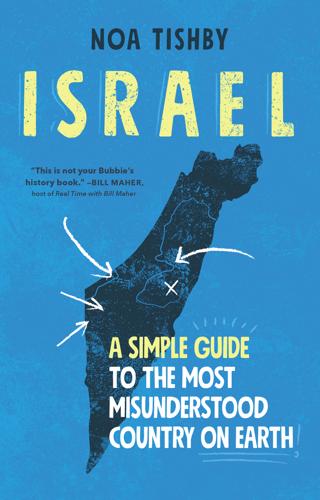
Israel: A Simple Guide to the Most Misunderstood Country on Earth
by
Noa Tishby
Published 5 Apr 2021
There were organized pogroms and murders starting from around 1821 that intensified (“The Storms in the South”) until the 1881 assassination of Tsar Alexander II, when the government gladly used this murder as an excuse to suppress human rights and target “agents or foreign influence,” aka Jews. In 1903 all that hatred exploded with one of the first pieces of viral fake news, called The Protocols of the Elders of Zion. This document, created by the tsar’s secret police force,3 made the fantastical claim that the Jews were part of a global conspiracy to take over the world. At the time, there were about 10.6 million Jews in the world compared to a population of 1.6 billion.
…
The Six Day War (June 5–June 10, 1967). The infamous Six Day War was named for its speed and precision. Against the background of Syrian support for Palestinian militias attacking Israel from the north, Egyptian President Nasser warned Israel against moving its forces. As it later turned out, Nasser was fed fake news by the Russians: that Israel was about to attack Syria. To this day, no one knows who sent these messages or why. But this fake intel caused a crisis, in which Egypt, Syria, and then Jordan planned to attack Israel. Tension was boiling, the Tiran Straits were blocked, and Egypt asked the UN forces separating it from Israel to leave.
…
Chapter Four: A Brief History of Zionism 1 My grandmother writes in her diaries that at the time she thought that they were the ones who came up with the “Young Pioneer” groups concept, but she later learned that similar groups had already existed in other places like Latvia and Poland. 2 Jonathan Freedland, “Antisemitism Matters: Jews Are the Canary in the Coalmine,” Guardian, March 30, 2018, https://www.theguardian.com/commentisfree/2018/mar/30/antisemitism-jews-canary-coalmine-fake-news. 3 The “Department for Protecting the Public Security and Order”—the Okhrana, a gnarly group. 4 For Ford’s antisemitism, see PBS, https://www.pbs.org/wgbh/americanexperience/features/henryford-antisemitism/. 5 Ruth Harris, Dreyfus (New York: Henry Holt and Co., 2010), p. 18. 6 Theodor Herzl, The Jewish State (New Orleans, LA: Quid Pro Books, 2014), pp. 36, 53, and 60. 7 The Diaries of Theodor Herzl by Theodor Herzl and Marvin Lowenthal reviewed by Franz Kobler, Jewish Social Studies 19, no. 3/4 (1957): 141–45, www.jstor.org/stable/4465553, accessed September 23, 2020. 8 Theodor Herzl, Altneuland: The Old-New-Land (Rockville, MD: Wild Side Press LLC., 2018), p. 261.

IRL: Finding Realness, Meaning, and Belonging in Our Digital Lives
by
Chris Stedman
Published 19 Oct 2020
This feels monumentally daunting—it would be much simpler to identify a problem in our technology and patch it—which is why I understand the draw of easy answers, of polemicists who can say “this is good” or “this is bad” when it comes to our digital lives. Still, in a time when we hear the word “fake” a lot—fake news, deepfakes, fake followers—we’re not wrong to be skeptical. It’s unwise to put your complete trust in the internet. I was reminded of this when, not long after that terrible summer, someone reached out to me through social media and said my work had caught his interest. We began chatting, and while there wasn’t a great deal of substance to our conversations, I found him attractive.
…
As the member of YPCCC—which does in-depth research about what kinds of messaging most effectively impact people’s understanding of the reality of climate change—who focuses on digital communication, Ozaksut seemed like the perfect person to speak with. We sat down in his office, and, beneath a sloped ceiling, Ozaksut began explaining that climate change was a testing ground for the battle over what “real” is. The war over fake news is much older than climate change, he said, but that’s where the modern debate over the real took shape. What early battles over climate change laid bare was that factual truth is not enough, said Ozaksut. We need to look at the emotional truths our beliefs communicate. So the first question I brought to him—Does digital distance make us less invested in the physical world?
…
In the story, the rabbit goes from an inanimate object to becoming a flesh-and-blood rabbit, all because he is loved. I do worry sometimes about how we’ll navigate a world where it is more and more difficult to determine what’s real and what’s not. I mean, we already live in such a world—think about how easy it is to fall for an edited image (I have!) or fake news on Facebook. It’s only going to get worse. So it matters that we invest in working to promote values to combat the impulses to manipulate and lie. That means pushing our platforms to change but also cultivating habits of critical thinking within ourselves. And it also means treating our digital platforms as spaces where real life happens.
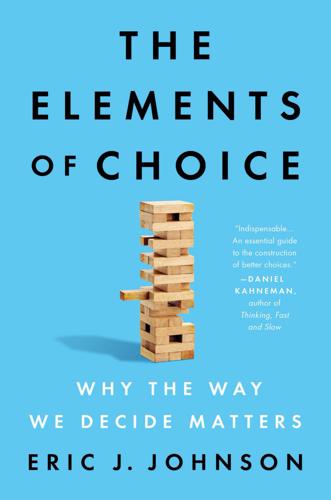
The Elements of Choice: Why the Way We Decide Matters
by
Eric J. Johnson
Published 12 Oct 2021
While I have argued that ignoring choice architecture is not ethical, I would also argue that it would be unwise. We face many problems that may not be easily solved with the two major tools of standard economics, information and incentives. I’ll offer three examples: climate change, inequity, and polarization and fake news. Choice architecture can be an impressively efficient addition to the other tools we have to address these issues. Climate change: We have seen how defaults can affect choices between green and gray electricity, and how it can make trade-offs between short-term savings and long-term efficiency gains more apparent.
…
We also saw how choice architecture can improve schools and increase the uptake of social benefits, like a program to increase kids’ cognitive development. These all are steps to reducing inequity, and they can be less expensive, more efficient, and less controversial than some alternatives. Polarization and fake news: We saw in chapter 9 that describing policies in numbers that are easily understood in context can reduce the disagreement between those on the left and right, for both tax cuts and carbon fees. Recently Twitter started an innovation: before you retweeted an article, Twitter would ask if you had read it.
…
See metrics Netflix, 270 targets, 245–50 translating attributes to goals, 231–38 Deutsche Bahn, 133 dictator game, 306–7 Dinner, Isaac, 136–37 Dion, Celine, 204 DirectTV, 126–27, 131 disclosure, 307–8, 320 discount brokerages, 283 doctors COVID-19 symptoms, 83–87 end-of-life care choices, 313 generics and electronic health records, 8–11 organ donations, 119 Doerfler, William, 345n dominance, 98–99 dominated options, 99, 172, 174 dominating options, 99 driver’s licenses and organ donation, 109, 118–19 Duke University, 213–14, 224 Duncan, Shannon, 141–42, 182 ease, 122–30, 157 Ebeling, Felix, 134–35, 143, 144–45 Ebert, Roger, 251 education, 319–21 elections automatic voter registration, 156–58 ballot order, 186–90, 343n forecasting, 291–93 of 2000, 185–89 of 2016, 190, 291–93, 292 of 2020, 195 electricity generation, 134–37 electronic health records (EHRs), 8–11, 316–18 Emory University, 72 empirical philosophy, 301–2 end-of-life decisions, 310–13 endorsement, 123, 130–34, 157 endowment, 123, 134–40, 157 endowment effect, 139–40, 321 energy efficiency labels, 251–54, 252, 253, 255 Environmental Protection Agency (EPA), 221 fuel economy labels, 232, 232–35, 233 environmental regulations, 261–62 Envision, 248–50 E-Trade, 282–83, 290 Eurovision Song Contest, 204–5, 208 exercise, 122 Expedia, search order, 199–202, 230 explicit consent, 116 exponential growth bias, 240, 243–44 eye tracking, 35, 36, 37, 53, 209, 217–18 Ezarik, Justine, 123–26 facings, 210–11 fake news, 323–24 Federal Communications Commission (FCC), 300 Federal Reserve, 242, 283 Federal Trade Commission (FTC), 126–28 Feenberg, Daniel, 198 Feinberg, Fred, 50–51 Feynman, Richard, 260 Fidelity Investments, 350n figure skating, 192, 204, 205 financial advisers, 104–5 financial crisis of 2007–2008, 287 Financial Industry Regulatory Authority (FINRA), 288 first choice order, 192–96, 197–99 flight simulators, 24–25, 102–3 Florida and election ballot of 2000, 185–86, 188–89 fluency, 41–44, 61–62 AT&T’s iPhone bill, 126 COVID-19 conversations, 84–85 effects in judgment, 43, 333–34n fonts, 42–43 health insurance, 177 school choice, 168–69, 171–72 subscription services, 314–15 use of term, 41 folk belief, 301–2 fonts, 42–43 font contrast, 43 font size, 43–44 food labels, 59–63, 210–11, 255–59 forcing, 303–5 forest plots, 143–44, 341n fractional shares, 284–85 France and organ donation, 110, 114–15 Franklin, Benjamin, 73–75 free trial offers, 18–19, 64 free will, 1–2, 301–2, 303 fuel economy labels, 232, 232–35, 233 fuel efficiency and economy, 212, 221–30, 232–35 full retirement age, 90, 336n funnel plots, 341n gallons per mile (GPM), 227, 227–29, 232–35, 260 gambling, 100–102, 287 generic drugs, 9–11, 316–18 generosity, 306–7 Gerdes, Wayne, 223–28, 230 German Large Auto Manufacturer (GLAM), 5, 15 customization and user models, 273–75 setting right default, 146–51, 302 Germany and organ donation, 109, 110, 110 global warming, 67–68 goals of choice architecture, 83–106 conversations, 84–88 finding right box, 92–95 Social Security benefits, 88–98 translating attributes to goals, 231–38 Goldstein, Dan, 5, 111, 113–14, 132, 136–37, 293–94, 351n Goodman, Joseph, 179–80 Google, search advertising revenue, 17–18 Google Flights, 100, 212 Google Glass, 210 Google Trends, 156 Gore, Al, 185–89 grade inflation, 251, 253–54 grading scales, 239, 250, 251, 254, 255, 271 Grant, Darren, 188 gray energy, 135, 136–37 green dot speed, 25, 26, 332–33n green energy, 134–37, 144–45 greenhouse gases, 134, 223, 228, 232–35 greenhouse gas ratings, 234–35, 289 Greifeneder, Rainer, 166–67 grocery shopping, 53, 152, 209–11 Halpern, Scott, 311–13 hamburger experiment, 59–62, 75 H&R Block, 71–72, 75 Hardisty, David, 236 Harvard University, 141, 162, 165 Häubl, Gerald, 140 health insurance, 13–15, 173–82, 279–81, 331–32n Hearsay, 42 heels effect, 51 height screening and dating sites, 50, 51 Heitmann, Mark, 149 Henckel, 209–10 Hermann, Andreas, 149 Hershey, Jack, 131–32 heterogeneity, 94 heterogeneous preferences, 151–52 heuristics, 4, 333n Hidden Persuaders, The (Packard), 300 “Hide-and-Seek Politics” (Wilson), 186–87 h-index, 198 Hodgkin’s disease, 107–8 Honda Civic Hybrid, 221–22 horsepower, 255 Hoyle, Lindsay, 331n hurricane tracks, 294–97, 296 Hybridfest MPG Challenge, 223–24, 225 “hybrid” food label, 255–56, 256 hypermiling (hypermilers), 221–26, 263 hypothermia, 28 ice cream menu, 192–94 incentives, 323 organ donation and, 117–18, 339n incompatibilists, 301 inconsistency, 99–102 Indiana University, 166–67 inequity, 323 inference, 293, 334n inhibition, 69–81, 136, 193 Benjamin Franklin’s pros and cons list, 73–75 Ken Jennings and Jeopardy!

Last Best Hope: America in Crisis and Renewal
by
George Packer
Published 14 Jun 2021
In Lansing they blocked traffic and waved signs that said, “Pro–Common Sense, Anti-Tyranny” and, from the eighteenth century, “Don’t Tread on Me.” The protesters ranged from the sympathetic to the intimidating. They spoke about shuttered businesses, delayed unemployment checks, faith in God, gun rights, Trump 2020, creeping socialism, the Gates-Soros global conspiracy, and the fake-news media. (“In New York City the hospitals are not overloaded.” “We’re being lied to!”) They had their own facts as well as their own principles, which came down to their constitutional right to risk getting people killed. The maskers had opposing rhetoric and values. Instead of raucous protests in the streets, they aired their pleas and rebukes on social media and modeled their views by strapping a piece of cloth across their faces.
…
It usually required an extraordinary circumstance. In one of the worst weeks of the pandemic, a nurse in El Paso named Ashley Bartholomew was completing her shift in the COVID intensive care unit. A patient who had begun to recover was watching TV—a story about El Paso’s critical need for refrigerated morgue trucks. Suddenly he said, “Fake news. I don’t think COVID is really more than a flu.” “Now you think differently, though?” Bartholomew asked, unsure what he meant. “No, the same,” the patient said. “I should just take vitamins for my immune system. They’re making it a big deal.” The nurse didn’t know what to say. She was wrapped in protective gear.
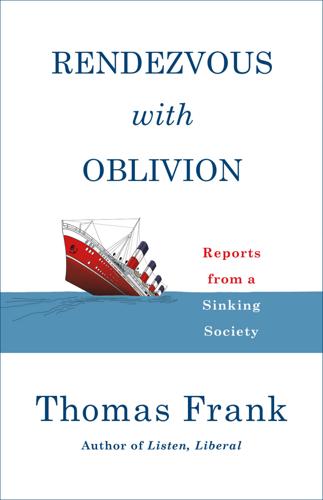
Rendezvous With Oblivion: Reports From a Sinking Society
by
Thomas Frank
Published 18 Jun 2018
This was a “golden age of journalism,” they chanted, and as their little world shrank and the public grew to hate them more and more, the survivors came together in an ever tighter circle of professional unanimity, missing the obvious but agreeing with one another on the correct interpretation of an amazing variety of events. Fake news flourished, of course. For every newspaper that withered away, an opportunity opened up for somebody willing to imitate what had gone before. Social media entrepreneurs prospered, as did home-grown propagandists and online scam artists. It sometimes seemed as if everyone was search-engine-optimizing something or making bogus documentaries or Photoshopping some outrageous text onto some stock photo.
…
Conservative politicians have built their hostility toward the press into a full-blown theory of liberal media bias, a pseudosociology that is today the obsessive pursuit of certain nonprofit foundations, the subject matter of an annual crop of books, and the beating heart of a successful cable news network. Donald Trump, the current leader of the right’s war against the media, hates this traditional foe so much that he banned a number of news outlets from attending his campaign events in 2016 and denounced the prestige media as bearers of “fake news.” He did this even though he owes his prominence almost entirely to his career as a TV celebrity and to the news media’s morbid fascination with his glowering mug. His Democratic opponent in 2016 hated the press, too. Hillary Clinton may not have a general theory of right-wing media bias to fall back on, but she knows that she has been the subject of lurid journalistic speculation for decades.
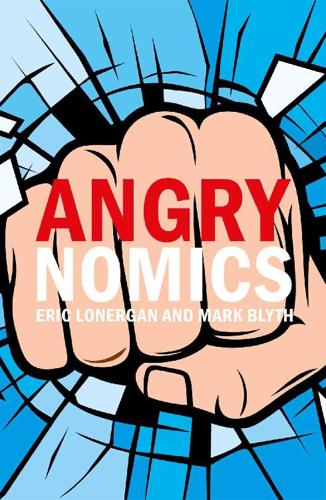
Angrynomics
by
Eric Lonergan
and
Mark Blyth
Published 15 Jun 2020
Tribalism is a motivating reflex to fill that vacuum, which is in turn amplified by a far more competitive mainstream media landscape and by social media. The interaction between hysteria, stereotyping, fictitious enemies and fears, generated by the media, and among our online tribes, should not be underestimated.10 Fake news has economic roots in the mainstream media. We don’t talk enough about the incentives of politicians and the media, and how they align. Even in the case of Trump, who presents himself as at war with the media, there is a very clear symbiosis, and not just with Fox News. CNN would have less to talk about without Trump being in power.
…
AfD (Alternative für Deutschland) 114 Afghanistan 6 aging population 10, 13, 14, 95, 106–11 and consumption 109–10 and government bonds 138–9, 152 and inequality 56–7, 58, 107–10 and inter-generational transfer 106–107 and poverty 57, 107 as stressor 57, 91, 106, 110, 111, 116, 118 and technological change 90, 106, 122 AIG 85, 124 Amazon 96, 98, 104, 142, 143–4 Anderson, Elizabeth 176 anger 2–3, 7–9, 10, 11–12, 159, 161 misplaced 13 as opportunity 16 and play 153 private see private anger public see public anger reducing see calming strategies anxiety/stress 9, 13–14, 50, 53, 55–6, 88, 118, 161 and cognitive effort 89–90, 91 and job insecurity 95–6 three causes of 91 and uncertainty see uncertainty Apple 96, 142, 143 Aristotle 59, 153 artificial intelligence (AI) 14, 102–106, 142 Asian financial crisis (1998) 77, 140 asset ownership 130–31, 133, 136, 140–41 Atkinson, Tony 80, 173 austerity policies 2–3, 6, 15, 34–5, 41, 48, 84 and euro crisis 44–5 and low interest rates 135 Australia 125 Austria 3 baby boomers 107–108, 110, 111, 175 Bank of England 84, 103, 120, 145, 148 TFS scheme 149–50, 166 banks 1, 6, 15, 33–5, 42, 44, 48, 145–50 and capital/liquidity ratios 126 and direct support for consumption 145–8 and dual interest rates 149–50 and economic models 3, 4 failure of 119–21, 122 and helicopter money 131, 146 independence of 78, 79 and leverage see financial leverage and problem of low interest rates 120–21, 122, 131, 135 regulations on 125–6, 127, 129, 132 restrictions on 72, 77 see also financial crisis (2008) Beck, Aaron 171–2 Bernanke, Ben 6, 148 Biden, Joe 106 billionaires 4 Bitcoin 102, 103 Blackrock 165 blockchain technology 14, 103 Blyth, Mark 172, 175 bonuses 81, 85, 124 Brazil 11, 127 Brexit 4, 7, 11, 22, 24, 37, 38, 55, 117, 154 and austerity policies 41, 45 and immigration 111, 112, 114, 116 and job insecurity 100–101 Brill, Stephen 175 Britain (UK) 3, 38, 119, 155, 162, 164 aging population in 107, 110 austerity policies in 41 dual interest rates in 149–50 and EU see Brexit fear of immigration in 27 gig economy in 100 and government bonds 135, 140 government spending in 71 immigration in 111, 112, 114, 115–16 inequality in 6 interest rates in 145 nationalism in 23 Thatcherism in 75, 76 Brittan, Samuel 151 Brynjolfsson, Erik 173 budget deficits 71, 75 Buffett, Warren 130 calming strategies 12, 15, 118, 122, 123–57 and data dividend see data dividend and direct support for consumption 145–8 and dual interest rates 149–50 and economic diversity 153–6 and inequality see inequality, strategies to reduce and national wealth fund see NWF and regulations on banks 125–6, 127, 129, 132 and sustainable investment see sustainable investment Canada 125 cancer 53, 87, 88, 106 capital 4 cost of 137, 139, 153 and dispersion 97–98 as “fictitious” commodity 65 formation, rate of 108 global 40, 42, 43, 49, 50, 58 and labour 50, 60, 69, 72 and neoliberalism 75, 76, 77, 79 protection of, following financial crisis 85 versus capital 97, 98 Capital in the Twenty-First Century (Piketty) 49, 108–10 capital/liquidity ratios 126 capitalism 64–5 and commodities 65–6 capitalism as computer 11, 61–72 fixing 124–25 hardware of 62–3, 117 software of 63–4, 68–71 and unemployment/inequality 66–7 version 1.0 68–9 version 1.0 crash 64, 66, 67, 71, 73, 83, 118 version 2.0 69–73, 74, 75, 76, 116 version 2.0 crash 70–71, 73, 83–4, 118 version 3.0 74–80, 98–9, 117, 125, 140–41 version 3.0 crash 116 car industry 100–101 caring industry 104 Case, Anne 54, 176 centrism, political 38, 48, 118–19, 121, 160–61, 162 CEOs (chief executive officers) 4 Chamberlain, Joseph 66 Chile 3 China 42, 63, 64, 78, 93, 137, 151, 156 Citibank 81, 82 cities 55, 56 climate change 104, 111, 121, 129, 131, 153, 159–60 and investment see sustainable investment Clinton, Hillary 160 Coggan, Philip 172 cognitive effort 89–90, 91 Cold War 28, 48 ending/legacy of 5, 23, 26, 29, 30, 37, 116 communism 68, 71 competition/competitiveness 47, 65, 94, 95, 111, 116, 125 and technology 105 see also product market competition computer analogy see capitalism as computer constrained volatility 85 consumption, direct support for 145–8, 150–51, 160 consumption, distribution of 52–3, 58 Corbyn, Jeremy 119 corporations 6, 20, 57 and competition 95, 96 and data dividend see data dividend corruption 8, 29, 61, 130 Covid-19 163 culture 160 Czech Republic 146, 147, 155 data dividend 141–4, 160, 162 and monopolies 142, 143, 144 and privacy 141–2 and property rights 142–3 de-unionization 50, 95, 99 Deaton, Angus 54, 176 debt 75, 84, 120, 132, 145, 150 and demography 109, 111, 131 government 136–7, 151, 152 net 136 deflation 65, 69, 120, 128, 144, 148 demand management 44–5, 47, 126–7 democracy 16, 25, 29, 39, 40, 104, 117, 130 and markets 68 demography see aging population Denmark 64, 164 depression see recession deregulation 28, 40, 48, 50, 58, 75 and inflation 127 as micro-stressor 94, 96, 99, 101, 118 DGSE (dynamic stochastic general equilibrium) models 3–4 Doughnut Economics (Raworth) 131–2, 165 dual interest rates 131–2, 149–50, 174 Dublin (Ireland) 17–18 economic change 9–10, 29, 43, 153 see also fiscal reform; recession economic growth 2, 6, 41, 69, 71, 86 and demography 108–10 and immigration 116 and inequality 76, 79–80 and quality of jobs/wages 46, 47, 85 economic ideology 28 economics 12, 54–5 shortcomings of models 3–5, 6, 7 education 24, 53, 58, 135, 141 tuition fees/student loans 107, 111 electoral politics 5–6, 104 and demographics 107, 110 and tribalism 13, 22, 24–7, 29, 30, 31 electric vehicles 153 elites 2–3, 5, 6, 7, 9, 37 in cities 55, 56 and corruption 8, 29 and ethical norms 20 and financial crisis 43–4 manipulation of tribal identity by 22, 24, 61, 116, 161 policy failures of 48–9 Engbom, Niklas 175–6 environmental degradation 29, 161 see also climate change environmental and social governance 168 ethical norms 20 euro crisis 7, 37, 44, 77, 144 Europe 34, 42, 137, 140 inequality in 41, 53, 56, 58 migrant crisis in 7 tribalism in 30 European Central Bank (ECB) 34, 84, 146, 155, 164–5 TLTRO programme 147–8, 166 European Union (EU) 22, 33, 34–5, 37, 43, 119 austerity policies in 2, 36, 48 and financial crisis (2008) 82 micro-stressors in 47–8 and nationalism 154–6 and neoliberalism 76, 77 unemployment in 44–5 see also Brexit eurozone 45, 65, 83, 148, 151, 155 exchange rates 72, 134 Extinction Rebellion 8, 131–2 Facebook 27, 96, 98, 142, 143 fake news 26 Farage, Nigel 17, 161 Farmer, Roger 174 fascism 45–6, 66, 67–8, 71 fear 16, 17, 94, 113, 117, 150, 161 and media 26, 27 and politics 7, 45 financial crisis (2008) 1–2, 6, 26, 29, 30, 39, 48, 127, 163 and automation 102–103 and bail-out of banks 84 fragility of recovery from 46, 85, 89, 121 further reading on 172–3 and globalized financial system 84 and growth of populism 85 and inequality 79–80 and low interest rates 135 and regulation of banks 129 financial leverage 72, 81–3, 85, 99, 126, 157 and credit crunch 83 and interest rates 81–2 financial market deregulation 77 fiscal councils 150–51 fiscal reform 15, 150–53, 162 Fischer, Stan 148, 165 Florence (Italy) 87–8 foodbanks 6, 53 football fans 8, 19, 56 France 2, 3, 20, 55, 56, 71, 101, 154, 156 and NWF 135 Franklin, Benjamin 87 free markets 30, 69, 118 Friedman, Milton 118 full employment 40, 47, 60, 66, 71–2, 79, 85, 175 and inflation 73–4, 76 without inflation 121, 125, 126 future 101–102, 111 Garcia family, parable of 33–5, 43 Gates, Bill 130 GDP (gross domestic product) 5, 44, 76, 79, 100–101, 106, 151, 152 and NWF 135, 141 Germany 3, 11, 34, 38, 42, 62–3, 66, 151, 154, 156, 167 and migrant crisis 111, 113–14 and NWF 135 Gibley, Bruce Cannon 175 gig economy 94, 98, 99–100 global economy 12, 39–40, 50, 53, 58, 133 and nationalism 154 and neoliberalism 77 globalization 5, 39, 41, 42–3, 48, 77, 117 hyper- 40 and inequality 80 and inflation 127 and insecurity 101 and labour market 42, 43 and nationalism 154 Gold Standard 65, 67 Google 96, 98, 104, 142 government bonds 72, 131, 133, 135, 137, 138–9, 152 as insurance policies 139, 140 government borrowing 134–5, 137, 152–3 and cost of capital 137, 139, 153 and low inflation 128, 138–40, 150 and NWF 136–137, 138–40 Great Depression 40, 44, 66, 69, 120 Great Moderation 6, 120 Greece 35, 38, 44, 45, 106–07, 110, 144 green revolution see sustainable investment gross domestic product see GDP Guilluy, Christophe 55 Gulf States 133, 134 Hayek, Friedrich 118 healthcare 47, 53–4, 58, 123–4, 135, 139 and access to data 141–2 and NWF 141 and uncertainty/probability 92 hedge fund managers 4 helicopter money 131, 146, 166 Hildebrand, Philipp 165 Hong Kong 2–3, 140, 164 Hopkin, Jonathan 172 Hopkins, Ellen 123 housing 71, 113, 114, 135 Hungary 11, 23, 30 Iceland 1–2, 8, 20 immigration 5, 7, 26, 27, 111–17, 164 economic effects of 115–16 and housing/training 113, 114 and income distribution 112, 113, 114–15 and manipulation by media/politicians 111, 115 as stressor 113, 115 and technological change 106 and tribalism 95, 111, 112, 113 income see wages income distribution 43, 50, 51 and Keynesian economics 71 and neoliberalism 80, 81 independent fiscal councils 150–51 India 23, 127 individualism 29, 154 Indonesia 3 inequality 3, 4, 6, 15, 29, 30, 40–41, 43, 49–57, 58, 61, 79, 118 difficulties in measuring 50–53 and distribution of income/consumption 53–4 and financial crisis (2008) 79–80, 83, 85 further reading on 173, 176 intergenerational 56–7, 107–10 and populism 54–5 and uncertainty 49–50 inequality, strategies to reduce 121–2, 129–31, 132, 162 asset ownership 130–31, 133, 136, 140–41 and data dividend 141–4 National Wealth Fund see NWF optimal/effective 132–3 and universal basic income (UBI) 141, 144 wealth tax 130, 132 inflation 5, 40, 51–2, 53, 69 death of 126, 128 and full employment 73–4, 76, 121, 122, 125 and global financial markets 78 and interest rates 75, 81–2, 120 low see low inflation and oil prices 96–7 and printing money 78, 128, 145 and raising taxes 129 and recession 144–5 and regulation of banks 125–6, 127, 132 and stagflation 40, 74, 120, 128 inheritance 132, 133, 160 national 136 innovation see technological change insurance industry 93 interest rates 15, 33–4, 75, 81–2, 165–6 dual, and sustainable investment 131–2, 149–50 low, problem of 120–21, 122, 131, 132, 135, 146–8, 152 negative, problem of 15, 148, 149, 150 and spending 147 internet 25 investment spending 40, 60, 69 and future expectations 103 and global capital flows 77–8 and inflation 74 public sector 67, 70–71 sustainable see sustainable investment IRA (Irish Republican Army) 17 Iraq 6 Ireland 17–18, 23, 24 Islam 27 Italy 35, 37, 38, 39, 44, 66, 71, 87–8, 144, 156, 167 aging population in 110 poverty in 47 tribalism in 45–6 Japan 26, 84, 110, 137, 140, 148 job security/insecurity 34, 50, 56, 61, 94, 95–6, 100–101 and technology 102 Kalecki, Michał 60–61, 73–5, 120, 121, 127 Keynes, John Maynard/Keynesian economics 60, 66–7, 68–70, 92, 103, 118, 127, 151 General Theory of Employment, Interest and Money 66, 175 and inflation 67, 69, 128 labour market 35, 40–41, 42, 43, 44 and automation 102–106 deregulation 50, 95, 99, 122, 127 dispersion in 98–9 and full employment see full employment and immigration 115–16 in Keynesian system 71–2 and labour as commodity 59, 60, 65–6, 73, 85 and protectionism 59–61, 66 and secular stability 125, 126 and training 62–3 see also wages Lagarde, Christine 167 Lerner, Abba 118 libertarianism 63 Lonergan, Eric 174 Los Indignatios 85 low inflation 79, 134, 157 and full employment/secular stability 126 and government spending/borrowing 128, 138–40, 150, 152 and recession 144–5, 150, 162 Luce, Edward 164 Ludd, Ned/Luddites 102 machine learning (MI) 102–104 see also artificial intelligence macroeconomics 9, 13, 47, 89 failure of 119–20 and uncertainty 94 Macron, Emmanuel 162 Mair, Peter 172 markets 30, 59–61, 62, 66–7 and democracy 68 and quantity theory of money 68–9 see also labour market Mauss, Marcel 21–2 Mazzucato, Mariana 156 media 11, 43, 47 and technological change 98, 102–103, 105 and tribalism 24–5, 26–7, 29, 31, 61, 116, 161 Merkel, Angela 114 Mexico 63 micro-stressors 47–8, 53, 84, 91 and aging populations see aging populations and change 94 and fourth industrial revolution 94 and immigration see immigration microeconomics 9, 13–14, 160 migrant crisis 7, 111 Milanovic, Branko 52, 80 minimal group paradigm 21 Minsky, Hyman 128 mobile phones 53, 96, 97, 142 modern monetary theory (MMT) 118, 128–9 money, printing 78, 128, 145 monopolies 142, 143, 144 moral outrage 8, 13, 15, 35–6, 57–8, 117, 130, 161 and inequality see inequality as rational 36 and tribalism, compared 19, 20, 22, 29, 30–31, 36 triggers for 36 mortgages 34, 35, 38, 82, 111, 137, 145 nation state 39–40, 48, 50, 117, 119 national wealth fund see NWF nationalism 5, 11, 23, 29, 31, 39, 41, 116, 119 as positive 153–6 neoliberalism 4, 28–9, 37, 75–8, 122 and global capital flows 77–8 and inequality 51, 52, 53 NHS (National Health Service) 107 Nissan 100–101 Nixon, Richard 26 Northern Ireland 17–18, 23, 24 Norway 133, 134 Nussbaum, Martha 16, 35, 36 NWF (national wealth fund) 15, 132, 133–41, 143, 152, 168 and aging population 138–9 and asset ownership 133, 136, 140–41 and government borrowing/debt 136–7, 138–40 and growth of global stock market 137–8 and individual trust funds 135 and negative interest rates 134–5, 136 and risk 136, 137–8 sovereign 133–4 and trade surplus 134 Obama, Barack 29, 46 oil prices 96–7 Orban, Viktor 23, 30, 161 “Panama Papers” 2, 20 pensions 57, 63, 106–107, 138 perpetual loans 147–8 Philadelphia Eagles 20 Pickett, Kate 168 Piketty, Thomas 49, 52, 80, 108–10 play 153 Poland 11, 30 Polanyi, Karl 59–61, 64–5, 67, 175 political centrism 38, 48, 118–19, 121, 160–61, 162 political disengagement 29 political economy 12, 13 political identity 22–3, 29–30, 37, 48, 116, 117 further reading on 172 political parties 5–6, 7, 28 politics, new 15–16, 58, 160 populism 11, 27, 39 and financial crisis 86 three genres of 54–5 Portugal 35, 38, 44, 144 poverty 47, 67, 72, 80, 115 and demographics 57, 107 power 4, 48 powerlessness 9, 41 price stability 76, 79, 128, 147 private anger 7, 8, 9, 10, 13–14, 36, 117 and cognitive effort 89–90, 91 see also anxiety/stress private sector debt 131, 145 and government borrowing 134–5, 137, 138–40 investment 67, 70, 149–50, 151 liability in financial crisis 85, 127 privatization 28, 40, 96, 107 probability 91–3 product market competition 94, 95–8, 116, 125 and deregulation/privatization 96–7 and dispersion 97, 98–9 intensification of 96, 101 and technological change 96, 97–8, 99 productivity 40 and technological innovation 9, 10, 15, 102, 104–105 and wages 71, 72, 74, 76 profit margins 98, 101, 105, 143 property prices 34, 38 property rights 142, 143, 154 protectionism 59–60, 61, 66 public anger 7, 8–9, 10, 89, 98, 117–18 economic causes of 13 see also moral outrage; tribalism/tribal anger public housing 71, 113, 114 public sector investment 67, 70–71 public services 24, 115, 116 quantitative easing (QE) 146–7, 167 quantity theory of money 68–9, 78 racism 26, 54, 55, 115 Raworth, Kate 131–2, 173 Reagan, Ronald 26, 75, 118 recession 15, 29, 30, 34–5, 44, 49, 55, 58, 84, 152, 153 and dual interest rates 150 and interest rates 75, 120–21 and investment spending 60, 70, 71 and low inflation 144–5, 150, 162 and MMT 128–9 and stock markets 139, 140 see also euro crisis referenda 37 regeneration, economic 132 regional development 15, 115, 116, 149, 153, 156 Renzi, Matteo 37 risk 91–2, 127, 136, 137, 153 Roberts, Carys 174 robotics see artificial intelligence Rodrik, Dani 4, 39, 40 Russia 11, 41 Sahm, Claudia 150–51 Salvo, Francesca 87–8 Sandbu, Martin 174 Sanders, Bernie 128, 164 savings 93 scale economies 98, 99, 142 Scottish nationalism 7, 119 secular stability 125, 126, 127 service-based economy 52 Singapore 133, 134, 162 SMEs (small- and medium-sized enterprises) 164–5, 166 social democracy 63–4 social media 26, 27, 90, 98 Solow growth model 109 sovereign wealth funds 133–4 sovereignty 39 Spain 33–5, 38, 44, 45, 144 protests against austerity in 85 spending increasing 145, 147, 151 investment 40, 60 power 145 public sector 67, 70–71, 128, 151 restrictions on 41, 44, 149 sports fans 8, 19–20, 21, 25 sports industry 99 stagflation 40, 74, 120, 128 status-injury 36, 54 stock markets 63, 137–8, 139–40 stress see anxiety/stress strikes 73, 74 student loans 111 supply–demand 60, 96, 104 sustainable investment 131–2, 149–50, 152, 153 Sweden 63–4, 72–3 Syria 111, 113 Tavris, Carol 36, 171 taxes 40, 50, 57, 108, 116, 124 cuts in 34, 44, 111, 151 dodging 2, 6, 20, 132–3, 143 political opposition to 129, 130, 132, 133 raising 152 on wealth 129, 130, 132, 140 Tea Party movement 85 technocracy 37, 42–3, 48, 160–61 technological change 29, 58, 96, 109 and aging population 90, 106, 122 and competition 96, 97–8 and dispersion of returns 97 and fourth industrial revolution 94 further reading on 173–4 and inequality 50, 53 and labour market 102–104 and media 24–5, 27 as micro-stressor 88, 91, 94, 96, 97–8, 99, 101–102, 105, 116, 118 and productivity 9, 10, 15, 105, 122 and rate of diffusion 14 and uncertainty 101–102 telecommunications 96, 97, 142 terrorism 17, 18, 27 Thatcher, Margaret 75, 76, 118, 131 Thunberg, Greta 150 TLTRO programme (European Central Bank) 147–8 trade 21–2, 26, 42, 78, 154 and neoliberalism 78 trade surplus 134 trade unions 28, 42, 63, 66, 72, 73, 76, 79 trade wars 21–2, 26 training 62–3, 93, 113, 114, 141 tribalism/tribal anger 8–9, 11, 18–31, 41, 45–6, 117 and central/eastern Europe 23, 30 destructiveness of 24 and ethical norms 20 and fascism 68 and financial crisis 86, 89 and global politics 21–2, 26, 28–9 and immigration 95, 111, 112, 113 manipulation by politicians/media of 13, 22, 24–7, 29, 30, 31, 35, 61, 95, 116, 161 and minimal group paradigm 21 and moral outrage, compared 19, 20, 22, 29, 30–31, 36 and political identity 22–23, 29–30 social function of 20–21 and sport fans 19–20, 25 see also nationalism trickling down/up 79–80 trilemma, political 39 trucking industry 103 Trump, Donald 11, 22, 23, 25–6, 27, 33, 38, 119, 126, 161 and deregulation 129 election of 41–2, 54 tax cuts of 11 Turkey 11 universal basic income (UBI) 141, 144 Ukraine 11 uncertainty 9–10, 43, 49–50, 65, 91–4, 99, 118, 161 and aging populations see aging populations and emerging technologies 102–103, 106 and healthcare 92 and immigration see immigration reducing 93–4 and risk/probability 91–3 and skills development 93 unemployment 2, 30, 34, 44–5, 48, 58, 66, 72, 84, 167 and inflation/interest rates 74, 75, 125 unfairness 25, 36, 105 United States (US) 3, 38, 93, 118, 129, 164 aging population in 107–108, 110, 111 automation in 103, 104–105 financial crisis in (2008) 82–3, 84, 85 gig economy in 100 healthcare in 47–8, 53–4, 58, 106, 123–4 independent fiscal councils in 150–51 inequality in 50, 51, 53–4, 58, 80–81 Keynesian system in 71, 72–3 labour market in 42, 44, 46, 62 micro-stressors in 47–8 neoliberalism in 76 and NWF 135 stock market in 63 tribalism in 23, 25, 29 wealth tax in 130 US Federal Reserve 6, 46, 84, 108, 110, 120, 148, 151 voice, loss of 37–9, 43, 48, 58 Volcker, Paul 75, 81–2 voting 37–8 see also electoral politics wages 2, 60 and automation 105 and competition 96–7, 98 and consumption 53–4, 58, 72 distribution of see income distribution growth in, without inflation 125 and immigration 115–16 and inequality 4, 50–53, 58 and neoliberalism 76, 77 and oil prices 96–7 and productivity 72, 76 stagnation in 34, 47, 58, 80–81, 83, 84, 85 and supply/demand 65–6 Wall Street Crash 67 Warren, Elizabeth 130, 132 Watson’s Analytics 19 wealth, distribution of 4, 15, 29, 30 welfare state 71 WhatsApp 2 Wilkinson, Richard 176 wind power, investment in 150 Wolf, Martin 80, 173 World Trade Organization (WTO) 42 Wren-Lewis, Simon 151 Yates, Tony 151 “Yellow Jackets” protests 2, 20, 55, 56
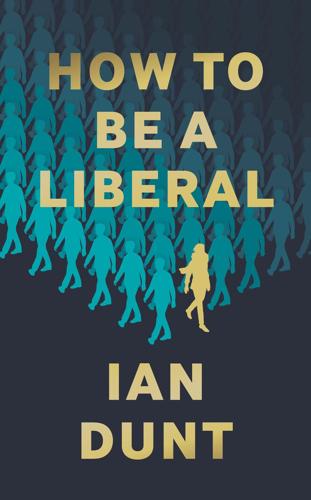
How to Be a Liberal: The Story of Liberalism and the Fight for Its Life
by
Ian Dunt
Published 15 Oct 2020
The social media variable reward function made them spend more time. And people kept spending the time. A tsunami of information started to overwhelm their lives. Drag, scroll, click, repeat. On every device. All the time. Friend requests, likes, Facebook posts, tweets, retweets, WhatsApp messages, blogs, video clips, memes, gifs, real news, fake news, audio clips. An endless incessant wall of noise which users kept returning to, several times an hour, every day, all the time. Humankind’s basic relationship with the world – the way it received news, discussed politics, bought things, socialised, heard music, celebrated birthdays, communicated with parents, and accessed entertainment – was suddenly sucked into an advertising model which pulled every psychological trick it could find to encourage further engagement.
…
Even the independent, Republic-headed Congressional Budget Office, which produced data-heavy assessment reports on the economic impacts of policies, was branded part of the deep state. When it provided a cost and impact assessment of a short-lived Trump health-care proposal in 2017, the White House branded it ‘little more than fake news.’ Gingrich said: ‘Here’s the Congressional Budget Office as part of the deep state doing a hit job on the Senate Republicans.’ Bob Mueller, the FBI special counsel put in charge of investigating Russian disinformation interference in the election results, was branded the tip of the ‘deep state spear.’
…
The Global Disinformation Order 2019 Global Inventory of Organised Social Media Manipulation, by Samantha Bradshaw and Philip N Howard, gives information on how extensively these techniques are now being used around the world. For accounts of disinformation in the digital age see David Patrikarakos’ lively and important War in 140 Characters: How Social Media is Reshaping Conflict in the 21st Century, from which the account of the Russian disinformation building is taken, and How to Lose the Information War: Russia, Fake News, and the Future of Conflict, by Nina Jankowicz. Useful books on what’s happening in Hungary include Orbán: Hungary’s Strongman, by Paul Lendvai and the more academic The Rise of Hungarian Populism: State Autocracy and the Orbán Regime, by Attila Antal. On Brexit, it would remiss of me not to mention Brexit: What the Hell Happens Now?

Your Computer Is on Fire
by
Thomas S. Mullaney
,
Benjamin Peters
,
Mar Hicks
and
Kavita Philip
Published 9 Mar 2021
Aimee Picchi, “Facebook Stock Suffers Largest One-Day Drop in History, Shedding $119 Billion,” CBS Moneywatch (July 26, 2108), https://www.cbsnews.com/news/facebook-stock-price-plummets-largest-stock-market-drop-in-history/. 6. Elizabeth Dwoskin and Annie Gowen, “On WhatsApp, Fake News Is Fast—and Can Be Fatal,” Washington Post (July 23, 2018), https://www.washingtonpost.com/business/economy/on-whatsapp-fake-news-is-fast--and-can-be-fatal/2018/07/23/a2dd7112-8ebf-11e8-bcd5-9d911c784c38_story.html; Lauren Frayer, “Viral WhatsApp Messages Are Triggering Mob Killings in India,” NPR (July 18, 2018), https://www.npr.org/2018/07/18/629731693/fake-news-turns-deadly-in-india. 7. Reuters staff, “Twitter Shares Fall after Report Says Account Suspensions to Cause . . . ,” Reuters (July 9, 2018), https://www.reuters.com/article/us-twitter-stocks/twitter-shares-fall-after-report-says-account-suspensions-to-cause-user-decline-idUSKBN1JZ20V. 8.
…
We are and will continue to be aggressive in preventing and removing such content from our community.”3 In 2018 Facebook came under fire as users and politicians questioned the platform’s role as an arbiter of content published by individual users, news media, corporations, and bots.4 Facebook was embroiled in the Cambridge Analytica election manipulation scandal and allegations of fake accounts, fake news, and hate speech on the site; therefore, it would be easy to believe the Facebook spokesperson’s comments are just one more promise to proactively police content on their platform. However, Facebook has been moderating child abuse content for one decade, nearly as long as the site has been operating.

The Power Law: Venture Capital and the Making of the New Future
by
Sebastian Mallaby
Published 1 Feb 2022
This book’s second purpose is to evaluate venture capital’s social impact. VCs themselves frequently assert that “they are making the world a better place.” This is certainly true sometimes: Impossible Foods is an example. On the other hand, video games and social media promote screen addiction and fake news, even as they entertain, inform, and allow Grandma to admire pictures of her distant grandchildren. The gap between VC rhetoric and VC practice is easily mocked. In April 2020, in the throes of the coronavirus pandemic, the venture capitalist Marc Andreessen proclaimed that it was “time to build.”
…
Brin and Page saw Google in a similar light. Their IPO prospectus invoked the company’s “responsibility to the world”—the responsibility to deliver free, abundant, and unbiased information. A dozen years later, when tech behemoths were denounced for hoarding customer data and blurring the distinction between real and fake news, the alleged link between founder empowerment and the common good would come to seem dubious. But in 2004, the Googlers insisted that young founders would be better guardians of the public interest than public shareholders. Shareholder democracy would harm political democracy. The Googlers’ second counterargument stressed long-term profits.
…
The least persuasive of these complaints is that venture-backed businesses are not socially useful. Of course, Big Tech has a dark side. Companies as huge as Amazon, Apple, Facebook, and Google have all kinds of social impacts, some good and some not, and governments are right to clamp down on the bad stuff. Violations of privacy, the propagation of fake news, and the sheer power of private actors to determine who gets to communicate when and to whom: these are legitimate targets for regulators. But this is not an indictment of venture capital. When VCs originally backed the tech giants, they were helping to create products that were good for consumers; nobody wants to return to a world without e-commerce, personal computers, social media, or web search.

Human Compatible: Artificial Intelligence and the Problem of Control
by
Stuart Russell
Published 7 Oct 2019
Rather than pursuing the idea that there is no freedom of thought without access to true information, democracies seem to have placed a naïve trust in the idea that the truth will win out in the end, and this trust has left us unprotected. Germany is an exception; it recently passed the Network Enforcement Act, which requires content platforms to remove proscribed hate speech and fake news, but this has come under considerable criticism as being unworkable and undemocratic.9 For the time being, then, we can expect our mental security to remain under attack, protected mainly by commercial and volunteer efforts. These efforts include fact-checking sites such as factcheck.org and snopes.com—but of course other “fact-checking” sites are springing up to declare truth as lies and lies as truth.
…
It will come as no surprise that ratings at the former sites are far less biased, because they impose a cost (paying for an unnecessary hotel room) for fraudulent reviews.11 Regulatory penalties are more controversial: no one wants a Ministry of Truth, and Germany’s Network Enforcement Act penalizes only the content platform, not the person posting the fake news. On the other hand, just as many nations and many US states make it illegal to record telephone calls without permission, it ought, at least, to be possible to impose penalties for creating fictitious audio and video recordings of real people. Finally, there are two other facts that work in our favor.
…
The arms race changes faculty salaries in a way that does not depend on faculty quality, so the correlation tends to disappear. 9. An article describing German efforts to police public discourse: Bernhard Rohleder, “Germany set out to delete hate speech online. Instead, it made things worse,” WorldPost, February 20, 2018. 10. On the “infopocalypse”: Aviv Ovadya, “What’s worse than fake news? The distortion of reality itself,” WorldPost, February 22, 2018. 11. On the corruption of online hotel reviews: Dina Mayzlin, Yaniv Dover, and Judith Chevalier, “Promotional reviews: An empirical investigation of online review manipulation,” American Economic Review 104 (2014): 2421–55. 12.
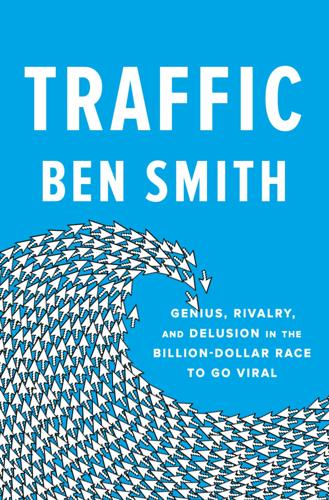
Traffic: Genius, Rivalry, and Delusion in the Billion-Dollar Race to Go Viral
by
Ben Smith
Published 2 May 2023
It was somewhat, I believe, because they had been boxed out of covering the real story by their agreements with a source, but also in large part because they genuinely thought what we’d done was wildly irresponsible: floating inflammatory, salacious, and unverified claims about the president-elect of the United States. The Times published an article connecting what we’d done to “fake news,” and quoted its executive editor, Dean Baquet, saying, “We, like others, investigated the allegations and haven’t corroborated them, and we felt we’re not in the business of publishing things we can’t stand by.” (Soon after that story was published, I got a conciliatory email from Baquet, saying he realized it had been a close call.)
…
Go to note reference in text BuzzFeed’s political editor, Katherine Miller: Katherine Miller, “Donald Trump Has Been Dominating the Facebook Conversation, Too,” BuzzFeed News, July 13, 2015, https://www.buzzfeednews.com/article/katherinemiller/we-shall-never-be-again-as-we-were. Go to note reference in text And even as American publishers: Craig Silverman and Lawrence Alexander, “How Teens in the Balkans Are Duping Trump Supporters with Fake News,” BuzzFeed News, November 3, 2016, https://www.buzzfeednews.com/article/craigsilverman/how-macedonia-became-a-global-hub-for-pro-trump-misinfo. Go to note reference in text Trump’s own campaign: Philip Bump, “All the Ways Trump’s Campaign Was Aided by Facebook, Ranked by Importance,” Washington Post, March 22, 2018, https://www.washingtonpost.com/news/politics/wp/2018/03/22/all-the-ways-trumps-campaign-was-aided-by-facebook-ranked-by-importance.
…
Jill Abramson’s 2020 Merchants of Truth gave her perspective on the struggles over innovation at The New York Times, which forms part of chapter 26. Keach Hagey and Jeff Horwitz’s 2021 exposé of Facebook’s internal debate over “meaningful social engagement” offered the inside story of what Jonah Peretti and I had experienced at BuzzFeed. Craig Silverman’s reporting on the fake news teens in Veles, Macedonia, was far ahead of its time in understanding the causes of our polluted news ecosystem, and informed that section and much of this book. This book also relied heavily on interviews with dozens of its participants, named and unnamed in the text, including Cory Arcangel, Scott Baker, Jim Bankoff, David Barstow, Chris Batty, Matthew Bechstein, Ken Bensinger, Kate Bolger, Erin Bried, Nic Carlson, Michael Charles, Jessica Coen, Ana Marie Cox, Jake Dobkin, Sam Dolnick, Miriam Elder, Scott English, Sheera Frenkel, Michael Frumin, David Galbraith, Andrew Gauthier, Jen Gerson, Michael Golden, Emily Gould, Leba Haber, Donna Haraway, Fred Harman, Shani Hilton, Cates Holderness, Anna Holmes, James Hong, Meg Hourihan, Arianna Huffington, Chris Johanesen, Benny Johnson, John Johnson, Saeed Jones, Foster Kamer, Will Kane, Jason Kottke, Sarah Lacy, Scott Lamb, Jonathan Landman, Will Leitch, Jason Leopold, Sam Lessin, Cliff Levy, David Mack, Ornela March, Cameron Marlow, Joel Maske, Ashley McCollum, Bary Meier, Katherine Miller, Matt Mittenthal, Tracie Egan Morrissey, Dao Nguyen, Martin Nisenholtz, Jesse Oxfeld, Eli Pariser, Della Peretti, David Perpich, Will Porteous, Max Read, Oliver Reichenstein, Carole Robinson, Kevin Roose, Joe Rospars, Joshua Schachter, Vivian Schiller, Mark Schoofs, Ben Shapiro, Doree Shafrir, Jack Shepherd, Tim Shey, Rachel Sklar, Paul Smurl, Elizabeth Spiers, Scott Stanford, Lockhart Steele, Jon Steinberg, Colin Sterling, Dodai Stewart, Lee Stranahan, A.

Re-Educated: Why It’s Never Too Late to Change Your Life
by
Lucy Kellaway
Published 30 Jun 2021
But that isn’t because I know I’m doing the right thing – it’s because I’m having a colossal out-of-body experience, almost as big as the one I had when I gave the address at Dad’s funeral. This is too much and I can’t deal with it so have absented myself from proceedings altogether. I’m handed a card and a mock-up of an FT front page with a hideous cartoon of me at a blackboard and a series of fake news stories my colleagues have written about me. There is a trolley with drinks on it. Once upon a time everyone would have had a few glasses of wine and taken another back to their desks at four in the afternoon. Now people have a quick orange juice before scurrying back to work. Some people are hugging me and saying nice things, but I want this bit to be over.
…
With some misgivings I gave Desiree the part of Trump, and found that although the simplest academic tasks defeated her, being President of the United States was well within her reach. Desiree electrified the class with a Trump-like contortion of her bottom lip and the way she pointed and shouted ‘Fake news!’ and ‘Make America great again!’ To do that this 14-year-old had to be able to watch Trump closely, pay attention to every nuance, and then copy it sensitively, with bits added for humour – all of which takes more skill and is arguably more useful than being able to identify a demand curve. But where is our respect and appreciation for that?
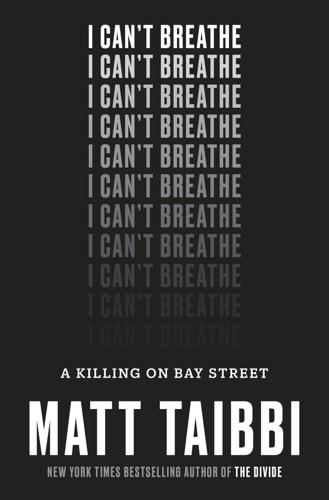
I Can't Breathe
by
Matt Taibbi
Published 23 Oct 2017
Pantaleo had actually killed Eric Garner, but it seemed like Orta was somehow stepping into what should have been Pantaleo’s role of the man being hunted for the crime. Orta was still under near-constant surveillance, while Pantaleo enjoyed twenty-four-hour police protection. Then it came out that Pantaleo was reportedly training for a career as an MMA fighter. The news turned out not to be true—fake news, before fake news was famous—but it was on the Internet, and Orta, like a lot of people in and around Bay Street, believed it and saw it as still more evidence of the double standard. “They’re chasing me and Pantaleo is going to be fucking choking people for a living or whatever? Shit is crazy,” Ramsey said.
…
Around that same time, on March 20, the House Intelligence Committee in Washington had held dramatic hearings in which former FBI director James Comey had announced the existence of an investigation into associates of Donald Trump’s campaign and their possible ties to Russia. Trump had fueled the media furor associated with the hearings by denouncing the Russia story as “fake news.” The Trump story captivated the world and dominated the Internet and social media, obliterating everything else. Nobody cared about the Eric Garner case by then. Though Trump was a new variable, the rapid fading from memory of public outrage is a key part of the pattern of these police misconduct incidents.
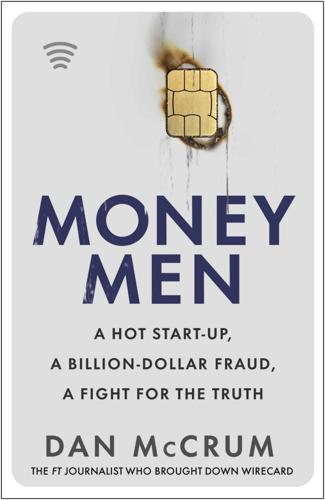
Money Men: A Hot Startup, a Billion Dollar Fraud, a Fight for the Truth
by
Dan McCrum
Published 15 Jun 2022
Hackers were using him as the lab rat for fiendish psychological experiments. Some were obvious, copies of messages from LinkedIn or Google designed to take him to replica login pages. Others were carefully curated, with pictures and information collected from the social media accounts of Earl’s friends and family. Fake news articles arrived with headlines about Markus Braun announcing an investigation into Zatarra. The hackers played a game with porn, gay and straight, pretending to have subscribed Earl to niche services. It meant he had to keep his kids away from his devices – another task to add to the draining vigilance intruding into his suburban life.
…
On Thursday, I had a spring in my step. I was admiring the FT’s front-page picture of Edo Kurniawan when a news editor shouted over, ‘Have you seen Commerzbank? It’s an absolute disgrace.’ I thought it had to be a hoax. It looked like a piece of research from the investment bank, but it said the Wirecard story was ‘fake news’, that I was a ‘serial offender’, and investors should buy the stock: ‘We are actually more concerned about [the] obvious active participation of the FT in market manipulation than about the allegations to the company.’ I rang the analyst, Heike Pauls, to let her know there was a joke flying around with her name on it and she punctured my naivety.
…
The stock market reaction was brutal, because two things were obvious to investors who were paying attention: Wirecard had lied, and the FT had more up its sleeve. From €169 per share on Wednesday morning, the price traded below €100. We knocked more than €8bn off the market value of the company, a signal the German authorities couldn’t ignore. Commerzbank folded as well, retracting Heike Paul’s ‘Fake News’ analyst report. That night Charlotte and I toasted the end of a frantic week with a bottle of Aldi Cava in the kitchen. She was flat out as well running her PR firm, Harper Gray, and we laughed at the clown spies, whoever they were. We still put our phones in another room to talk about it, but right then the black ops we’d feared for so long didn’t feel quite so scary.
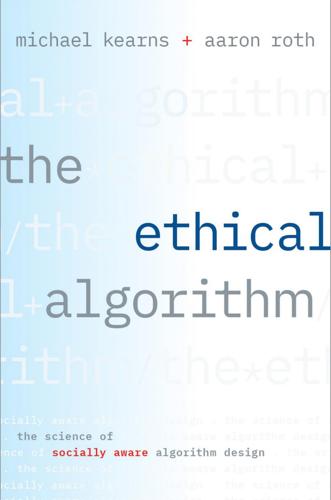
The Ethical Algorithm: The Science of Socially Aware Algorithm Design
by
Michael Kearns
and
Aaron Roth
Published 3 Oct 2019
In game-theoretic terminology, these services may have led us to a bad equilibrium in which politics and public discourse have become polarized, and which encourages all of us to become less informed about, and less tolerant of, opposing perspectives. We’re all best-responding—at any given moment, we’d prefer to read an article confirming rather than challenging our beliefs—but perhaps as a society we have been led to a less healthy place by technology. This polarization has exacerbated the effectiveness of “fake news” inside online communities that are rarely exposed to dissenting information. There have also been widespread incidents of deliberate manipulations, such as bogus Facebook accounts—complete with user profiles seeded with specific identities, activities, and opinions—designed so that the fake users will have their posts show up in the News Feeds of particular online communities or echo chambers.
…
Strangelove (film), 100 drug use data, 51–52 Dwork, Cynthia, 26, 36 dynamic effects, 194 echo chamber equilibrium, 123–26 economics applied to dating apps, 94–96 economic scarcity and dating apps, 94 and scope of topics covered, 19–20 The Economist, 145–46 email scams, 137–41, 154 embarrassing polls, 40–45 emergent phenomena, 10 empirical machine learning, 76 employment decisions, 15 encryption, 31–34, 37 Equifax, 32 equilibrium states and dating apps, 95–96 echo chamber equilibrium, 123–25 and game theory, 97–101 and navigation problems, 103 and two-route navigation problems, 107 and user preferences, 97 error rates in algorithms and differential privacy, 42–43 error-minimization, 70, 75, 78–79 and facial recognition, 15–16 and fairness vs. accuracy, 78–84 and image recognition competition, 165–66 and scientific research, 136 ethical principles and accuracy vs. fairness balance, 82–84, 192–93 and adaptive data analysis, 159–60 and algorithmic morality, 176–78 and algorithms as regulatory measure, 16–17 and concerns about algorithm use, 3–4 current state of ethics research, 169–70 design of ethical algorithms, 189–90, 193–95 ethics boards, 179 infancy of ethical algorithm field, 21 and machine vs. human learning, 6–7 and scope of topics covered, 19–21 and threat of optimization gone awry, 179 and unique challenges of algorithms, 7 European Union, 15 existential threat of machine learning, 179–82, 189–90 exploitation, 71–72 exploration period, 70–72, 93 exponential intelligence explosion, 185–88 Facebook advertising, 14–15 and design of algorithms, 4–5 and differential privacy, 51–52 and echo chamber equilibrium, 124–25 and image recognition algorithms, 145–46 News Feed, 8, 19–20 profit motive, 191–92 and promotion of diversity, 125 facial recognition, 15–16 fairness accuracy/fairness trade-off, 63, 69, 74–84, 87, 192–93 and algorithmic morality, 175–76 and algorithms as regulatory measure, 16–18 and biases, 57–63 and concerns about algorithm use, 3 and current state of ethics research, 169–70 and data collection bias, 90–93 and dating apps, 96–97 definitions of, 69–72 design of ethical algorithms, 190 differing notions of, 84–86 and dynamic effects of algorithms, 193–94 “fairness gerrymandering,” 86–90, 134–35 and forbidden inputs, 66–69 and goals of ethics research, 171 and “merit,” 72–74 and scope of topics covered, 18–21 and statistical parity, 69–72 and supervised machine learning, 63–64 and theoretical computer science field, 13 and threat of optimization gone awry, 184–85 and vectors, 65–66 “fake news,” 124–25 false negatives, 73–74, 84–85 false positives, 84–85, 189–90, 193 false rejections, 73, 91, 171 family data, 54–56 “fast takeoff” scenario, 185–88 FATE—fairness, accuracy, transparency, and ethics, 16–17 Federal Bureau of Investigation (FBI), 49–50 feedback loops, 19–20, 92, 95–96, 184–85 Felten, Ed, 187–88 filter bubble, 124 financial status data, 65–66 Fitbits, 50–51 fitness tracking data, 50–51 food science, 143–45, 158–59 forbidden inputs, 66–69 foreign policy, 15 forensic evidence, 54–56 formalization of goals, 194.
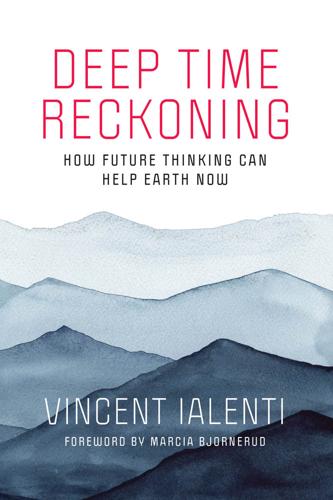
Deep Time Reckoning: How Future Thinking Can Help Earth Now
by
Vincent Ialenti
Published 22 Sep 2020
This was “precisely the moment that most of the important opportunities for economic growth, and serious threats to the wellbeing of the nation, require a better grasp of scientific issues.”52 By 2017, it was no longer edgy or radical for a postmodern philosopher or critical sociologist to critique truth, reality, or scientific rationality. “Alternative fact” and “fake news” had become mainstream buzzwords. The Oxford English Dictionary named “post-truth” its 2016 Word of the Year. In April 2017, science became something to march on Washington for. I felt nostalgic for the Safety Case experts’ day-to-day faith in facts and reason. I worried the United States was too distracted by noisy clutter to prep for ecological destruction.
…
E., 3, 112 Evolution of the Repository System beyond a Million Years in the Future, The (Posiva), 21 Existential risk, 158 Experts, xiii–xiv. See also Deflation of expertise; Safety Case guarded enthusiasm for expertise, 36–40 Safety Case, 4–5, 12–13, 72–73, 107–108 and trust in technocrats, 31–36 Facilia AB, 19, 72 “Fake news,” 28 Fall of the Faculty, The (Ginsburg), 28 Farrier, David, 66 Fennovoima, 10, 100–101 Finnish Energy Industries, 10 Finnish Environmental Institute, 36 Finnish Meteorological Institute, 36 Finnish Research Programme on Nuclear Power Plant Safety (SAFIR), 73 Finnish Research Programme on Nuclear Waste Management (KYT), 10, 20, 72, 73 Finnish Society of Bioart, 2 Finns and Finland, x-xi, 9 Atomic Energy Act (1957), 21 and expertise, 30 Government Decree 736/2008, 21 Linkomies Committee, 31 Ministry of Economic Affairs and Employment, 11, 12, 34, 56 Ministry of Foreign Affairs, 32 Nuclear Energy Act (1987), 11, 21 Nuclear Energy Decree (1988), 21 nuclear waste in, 3–4 Parliament (Eduskanta), 10 Radiation Act (1991), 21 State Nuclear Waste Management Fund, 11, 19 and technocrats, 31–36 Footprints: In Search of Future Fossils (Farrier), 66 Forest analogy, Laura’s, 94–95, 98, 101, 102, 105–106, 110, 116, 120 Fortum, 10, 11, 20, 100 Francis (Pope), 109, 148 Freud, Sigmund, 16, 17 Friends of the Earth, 10 Fukushima meltdown, 27, 32 Futility, 87–89, 152 Future of Humanity Institute (Oxford), 3 Future of Life Institute, 148 Future, Secretary of the, 151 Future Sister Cities, 150 “Future Will Be Terrible, The” (exercise), 151 Galison, Peter, 23 Garfield Conservatory Fern Room (Chicago), 62 Geoengineering, 59 Geo-history, 15 Geological change, humans as agents of, 16 Geological Survey of Finland (GTK), 10, 35 George Washington University, 62 Ginsburg, Benjamin, 28 Global Deep Time Reckoning Information Repository, 154, 158–159 Gould, Stephen Jay, 3, 17 Graeber, David, 29, 151 Great Acceleration, and the Anthropocene, 15 Greenland Analogue Project, 50–51 Greenpeace, 10, 34 GTK.
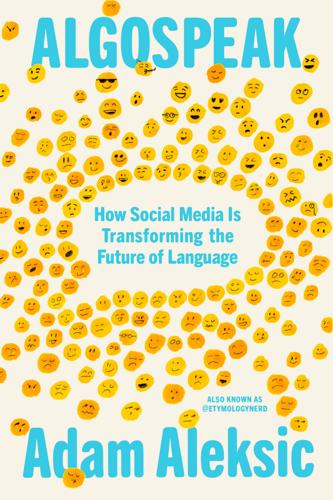
Algospeak: How Social Media Is Transforming the Future of Language
by
Adam Aleksic
Published 15 Jul 2025
Once the algorithm starts to “know you” by identifying your interests, it will filter out certain information and prioritize whatever you’re most likely to engage with. Eventually, however, you’ll find yourself in an echo chamber—an environment that only reinforces your existing views. Filter bubbles and echo chambers are usually viewed negatively for their role in propagating fake news and algorithmic radicalization, but literally any in-group has its own social media filter bubble. K-pop stans are disproportionately prioritized for K-pop content recommendations, meaning that other content is necessarily filtered out. The K-pop user gets sucked deeper into the K-pop echo chamber, creating a sense of belongingness that reinforces their view that they like K-pop and the K-pop side of the algorithm.
…
See also British accent Appalachian, 92–93 Middle English, 37 Standard American, 4, 37–38, 51, 81–82, 145, 160–61, 207–9, 215–16 enshittification, 180–82 entertainment influencer accent, 87–89, 92, 97 entertainment-oriented content, 118 episodic memory, 201 eras, 202 Eras Tour, 110–11 escape room music, 166 esoteric references, 103 etymology, 7, 11–12, 19–20, 28, 45, 47, 69–72, 113–14, 118, 153–55, 162–63, 183, 185, 191–92, 194, 200, 202, 208 Etymology Nerd, 7, 154, 194 eugenics, 135 euphemisms, 4–5, 7, 9, 15, 23, 31, 34, 199, 208, 221 euphemism treadmill, 30–31, 115 “everything sucks,” 136 evolutionary neuroscience, 201 exaggeration, 68, 201 extremism, 62, 127–34, 138–39, 141–42, 195–96 F Facebook, 38, 117, 134, 180–81 Facebook Marketplace, 180 facial symmetry, 135 fads, 56, 108, 121 f*ggot, 28 fairycore, 164 fakecels, 128 fake-it-till-you-make-it strategy, 92–93 fake news, 105 fam, 39, 146, 211 familects, 103, 112 fandom groups, 100, 103 fanilects, 99–103, 105, 110 fanum, 44 “fanum tax,” 191, 210 fart, substitutions for, 21 fascist, 28 fashion, 95, 102, 164–70, 174–76 fast fashion, 174–75, 177 fathers, 147 feeds, 61, 101, 104–5 female influencers, 82 feminists, 19 fiber-optic cables, 43 Filter Bubble (book), 105 filter bubbles, 105–7, 106, 110, 114–18, 121–22, 126–27, 131, 134, 150, 169, 196–98, 219 Filterworld (Chayka), 218 flag emojis, 27 Flanderization, 193–97, 200, 203 Flanders, Ned, 193–94 fleek, 39, 55, 146, 157–59, 162 fleek T-shirts, 157 floor holding, 84–85 foids, 125, 130, 138 folklore, 199–200 Folklore (album), 103n followers, 16 food, 21, 34 forehead size, 133 Forever 21, 157 formal speech, 4–5 45 (indicating presidential term), 25 For You page, 8–9, 21n, 26, 29, 43, 76, 104–5, 139, 198 4chan, 127–28, 131–32, 134–36, 139–41, 146 fraccent, 91–92, 103 framing, 75 frat bros sociolect, 32–33, 91–92, 103 French language, 207–8 frequency factor, 55–56 friend groups, 103 “from the river to the sea,” 26, 28 fruits, 21 f-slur, 28 fuck replacements for, 47–48 respellings of, 17–19, 23, 34, 152 “Fuck Joe Biden,” 23 fug, 23 function, 49, 52, 56–57 furry dialect, 216 G gagging, 147 Galer, Sophia Smith, 88–89 gaming clips, 203 gang vocabulary, 151–53 gay, metonyms for, 29–30 Gaylor, 100, 106–7, 110 gay slang, adopted by straight girls, 149–50 Gaza, 26–27 Gen Alpha, 44–45, 47, 55–56, 136, 161–62, 176, 187, 191–93, 195–96 gender, 204 gender norms, 147 General American English accent, 92, 149 generations, 186–98, 201, 203–4 Gen X, 186–90, 194–97, 200 Gen Z, 39, 45, 47n, 52, 54–56, 85, 141, 146, 152, 154, 187–89, 190, 195–98, 204–5 finger heart, 187, 195–97 intern, 189, 198, 200 shake, 86, 188, 195–96, 198 tattoo, 187 geographic suppression, 29 Georgetown University, 126 Georgia Tech, 209 German entertainment influencer, 87–88 German language, 214 “get ready with me” videos, 203 Gigachad meme, 134 GI Generation, 186 “girl dinner,” 71, 175, 199 #GirlTok, 132 “give cunt,” 147, 149 giving, 161 glam goth, 168 globalization, 82, 214 gloomcore, 164 goblincore, 165, 174, 181–82, 184, 205 God, substitutions for, 22 “going to X-ville,” 48 “gone viral,” 49 Goodhart’s law, 119 “goofy ahh,” 153–54, 210 Google, 53, 163–64, 180, 182, 200, 213 Google Trends, 21, 42, 166, 187 gosh, 22 goth, 168–69, 172, 184, 201, 203 governments, 211 grammatical purism, 220 Grande, Ariana, 157 grandmacore, 164, 169 grape emoji , 21, 23 grawlixes, 18–19, 18, 30 group dynamics, 64–65 group identity, 102.

Misfits: A Personal Manifesto
by
Michaela Coel
Published 6 Sep 2021
The term “misfit” can be cross-generational and crosses concepts of gender or culture, simply by a desire for transparency, a desire to see another’s point of view. Misfits who visibly fit in will sometimes find themselves merging with the mainstream, for a feeling of safety. Synonyms: outsider, falcon. I’m calling any challenge to my definition Fake News. Of late, channels, production companies and online streaming services have found themselves scrabbling for misfits, like kids in a playground scrabbling for sweets, desperate for a chew. Not sure of the taste of these sweets, these dreams, just aware they might be very profitable. The jet plane hovers over the tower, not sure where to land, how to land, if at all.

Giving the Devil His Due: Reflections of a Scientific Humanist
by
Michael Shermer
Published 8 Apr 2020
In a secular age, we call it “hate speech,” a reformulation that does nothing to solve the always contentious issue of distinguishing between evil speech and free speech, and the problem of who gets to decide where one ends and the other begins. It is my contention that we must protect speech no matter how hateful it may seem. The solution to hate speech is more speech. The counter to bad ideas is good ideas. The rebuttal to pseudoscience is better science. The answer to fake news is real news. The best way to refute alternative facts is with actual facts. This is just as true now as it was in the moment before fifty innocent Muslim lives were taken in New Zealand – even if our emotionally felt need to put a name and form to evil now makes this truth harder to see. Chapter 3 Free Speech Even If It Hurts Defending Holocaust Denier David Irving Preamble This essay was originally published as an opinion editorial in the Los Angeles Times as “Free Speech, Even If It Hurts” on February 22, 2006.
…
I was, therefore, pleased and honored to compose this essay and the one that follows for Quillette, on topics that are outside my normal wheelhouse of science and skepticism and beyond the scope of my regular publishing venues of Scientific American and Skeptic. That Claire and her team have stepped in to fill a void in mainstream media, and that they have done so with both literary and financial success, gives me hope that, in an age of fake news and alternative facts, real news and verifiable facts are not only protected (as in “protected speech”) but welcomed by a great many readers. * * * I have a dream that my four little children will one day live in a nation where they will not be judged by the color of their skin but by the content of their character.
…
Martin Luther King, Jr. that people should be judged not by the color of their skin but by the content of their character.4 These are just two among hundreds of incidents that have erupted over the past few years as our society, in parallel with our politics, grows ever more divided over incidents readily identifiable in short tags: BLM, BDM, MSM, LGBTQI, SJW, #metoo, #TakeAKnee, Dreamers, Google Memo, Milo, Charlottesville, Evergreen, Berkeley, Yale, Middlebury, Parkland, Sandy Hook, fake news, alternative facts, microaggressions, safe spaces, no platforming, hate speech, etc.5 And the accusatory labels hurled back and forth across the political divide have been shifting ever outward from the center. The Left, the Far Left, the Regressive Left, the Authoritarian Left, the Alt-Left. These are just some of the labels slapped on liberals by conservatives on the Right, the Far Right, the Radical Right, the Authoritarian Right, and the Alt-Right.6 Such cultural labeling and political epithet smearing brings to mind George Orwell’s classic 1946 essay Politics and the English Language, in which the noted journalist and critic observed, “Political language – and with variations this is true of all political parties, from Conservatives to Anarchists – is designed to make lies sound truthful and murder respectable, and to give an appearance of solidity to pure wind.”7 Language matters, and what we call people affects how we think about and act toward them.
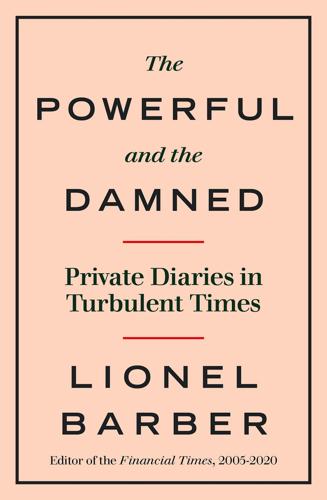
The Powerful and the Damned: Private Diaries in Turbulent Times
by
Lionel Barber
Published 5 Nov 2020
The assumption that successive British governments were held hostage by tabloids like the Sun and the Daily Mail was common currency in Blair’s Britain. The role of phone-hacking in obtaining ‘dirt’ on politicians had yet to be fully exposed. In reality, tabloid circulation was in terminal decline. The motion was revealing in another way. It foreshadowed the ‘fake news’ debate a decade later, underlining how young people had lost confidence in mainstream media and were increasingly gathering information online. WEDNESDAY, 22 NOVEMBER Angela Ahrendts, CEO of Burberry, one of Britain’s top fashion retailers, has asked to see me for a one-on-one. For the past few months, Burberry’s PR advisers Brunswick have been pestering us about our coverage.
…
The president presses a red button on his desk. Demetri jokes he hopes it was not the nuclear button. Laughs – and relief – all round. The Trump interview poses any number of pitfalls for the journalist. He is a master manipulator, a shameless propagandist and a narcissist who brands anything he does not like as fake news. Then again, he is president of the United States, a political figure who demands a measure of respect. How to balance all these considerations in the sanctum of the Oval Office will test us all to our limit. The first thing that strikes the visitor about Trump is his physical presence. He is a very big man, even when sitting down.
…
W. 54, 63, 188, 314 Bush, George W. 31, 54, 55, 56, 63, 106, 110, 169, 188, 233, 435 Buttigieg, Pete 413 BuzzFeed 258, 395 Cadbury 263 Cambridge Analytica 394, 394n Cameron, David ix, xvi, 81–2, 97, 98, 125, 148, 151, 152, 158, 159, 161–2, 164, 174, 177, 180–81, 191–2, 193, 195, 196, 198, 203, 204, 205, 209, 222, 223, 226–7, 244, 259, 260, 263, 267, 283, 286, 288, 289, 290, 304–5, 308–10, 316, 319, 320, 321, 323, 326, 333, 344, 345, 374–5, 382–3, 388, 389, 414, 417, 427, 438 Cameron, Samantha 81–2, 161–2, 198, 304 capitalism: liberal capitalism model xi, xii, 117, 147n, 276, 312, 330, 334, 335, 339, 353, 355, 401, 419, 434, 436, 439; reform of 352, 353, 410, 439 Carnegy, Hugh 321 Carney, Mark 122, 323–4, 327, 341, 365–6, 371, 412 Catalan independence movement 219, 226 Cayne, Jimmy 24, 25, 85 Centre for European Reform 388–9 Chan, Andy 393 Charles, Prince x, xii, 264–6, 267, 268–70 Charlie Hebdo terrorist attack (2015) xv, 281 Cheney, Dick 54, 56, 233 Chidambaram, P. 38 China xi, 30, 31, 31n, 98–9, 117, 120, 123–4, 123n, 133, 140, 162–3, 169, 182–3, 206–7, 213–14, 228, 233, 241–2, 271, 303–6, 309, 344, 347–8, 351–2, 366, 374–5, 376, 390, 392–3, 395–8, 399, 410, 414, 434, 436, 439, 440 China Entrepreneur Club 233 Chubais, Anatoly 229 Churchill, Winston 24, 24n, 95, 128, 314, 310, 364, 422 Citigroup 68, 69, 85, 113, 114, 228, 404 City Lecture, Cambridge University 264 City of London xii, xiii, 25n, 106, 180, 224, 259, 297, 334, 365, 366, 429 Clark, Pilita 379 Clegg, Miriam 151, 195 Clegg, Nick 151–2, 158, 159, 162, 195–6, 275n, 286, 321, 394, 395, 414 Clinton, Bill 82, 150, 206, 208, 233 Clinton, Hillary 82, 96, 133, 233, 315–16, 331, 332 Clooney, George 204–5 Coalition government, UK 156–7, 158, 159–60, 193, 195–6, 209, 258–60, 275, 275n, 288, 289, 290, 354; austerity policies 209, 210, 259, 273, 289, 319, 438; Big Society concept 152–3 Cochrane, Alan 273 Cohen, Jared 332 Cohn, Gary 341–2 Cold War 96, 233, 314, 354, 395, 396, 398, 436, 438 collateralised debt obligations (CDOs) 45 Collins Stewart 14–15, 17–18, 19–20 Colloque (Anglo-French forum) 255–6 Colombia 140–42 Comcast 268 Communism, collapse of Soviet 88, 129, 137, 228, 344 Conservative Party 67, 71, 97, 106, 128, 139, 148, 151, 152–3, 156–8, 158n, 159, 174, 180n, 195–6, 217n, 223n, 227, 227n, 232, 244, 260, 273–5, 275n, 283–4, 287, 288, 289–90, 309, 310, 327, 333, 343, 345–6, 353–4, 358, 359–60, 365, 381, 388, 410, 410n, 411, 412, 414, 423 Corbyn, Jeremy 11n, 303, 340, 341, 345–6, 354, 363, 399, 402, 410, 427 Costolo, Dick 210–11 Coulson, Andy 191, 223, 223n Covid-19 xi, xvii, 123, 130, 383, 398, 433, 434–6, 438–9, 440–41 Cox, Jo 319 Crabtree, James 247 credit derivatives 37, 62, 66, 186 credit-rating agencies 62, 62n, 84 Crimea 91, 91n, 237n, 239, 275, 277 Crosby, Lynton xvi, 283–4, 287–8, 290, 345–6, 388 Crosby, James 18–19 Cummings, Dominic xv, 313–14, 420n, 423–4, 438 Dacre, Paul x, 76, 192, 195, 196–7, 220, 221, 227, 233, 239, 257, 331, 331n, 357, 363 Daily Mail x, 41, 67, 126, 151, 152, 192, 195, 220, 221, 239, 316, 327, 331, 334, 363 Daily Mirror 11, 32, 100 Daily Telegraph 32, 35, 51, 67, 126, 135–6, 135n, 192, 197, 273, 358, 358n, 359, 422 Dalian Wanda 213 Dalton, Stephen 148, 150 Danone 263 Darling, Alistair 69–70, 83n, 101, 101n, 136, 273 Darroch, Jeremy 267–8 Davidson, Heather 83 Davies, Howard 76–7, 76n, 190 Davis, David 362–4, 363n Davis, Ian 122, 197 DDB (advertising agency) 34 deflation 39, 391 Dell, Michael 120–21 Delors, Jacques 83, 341 Democratic Party, US 82, 98, 99, 187–8, 330, 332, 396; convention (2004) 82, 99; convention (2008) 98, 99; Democratic National Committee (DNC) 330 see also US Presidential Election Democratic Unionist Party (DUP) 157, 157n, 399, 425 Deng, Wendi 191 Deng Xiaoping 124, 129, 183 ‘de-platforming’ 262 Deutsche Bank 295, 383, 404, 410 Diamond, Bob x, 167–8, 212 Dickie, Mure 185 Dickson, Martin 13, 18–19, 102, 106–7, 431 Dilenschneider, Robert 84–5, 332 Dimbleby, Jonathan 340 Dimon, Jamie xiv, 24, 24n, 93–4 Dinmore, Guy 162 Disney 213, 214, 268 Doerr, John 215–16 Döpfner, Mathias x, 283, 291–3, 295, 407 dotcom crash (2000–2001) 4, 16, 76, 84, 184, 228 Dow Jones 59–60, 65, 66, 135n, 282 Dowler, Milly 190 Draghi, Mario xiv, 178–9, 198–9, 200, 212–13, 223, 226, 320, 341, 367, 368, 402, 412–13, 415 DreamWorks 213 Dubai xiv, 102–3, 111, 112, 135, 168, 175 Duberstein, Ken 188 Dudley, Bob 163, 239 Dumfries House 264–5, 269 Duque, Iván 142 Economist, The 26, 205, 221, 238, 258, 282, 294, 354, 381, 389 Edano, Yukio 185–6 Edelstein, Jillian 208 Edinburgh, Prince Philip, Duke of 304 Edward VIII, King 198, 201 Egypt 54, 107, 177, 331 El-Erian, Mohamed: When Markets Collide 113 Elizabeth II, Queen 23, 271, 303–4, 305 England, Andrew 260–61 En Marche 353 Entwistle, George 217–18 Epstein, Jeffrey 7, 7n Erdoğan, Recep Tayyip 335 euro xiii, 61, 64, 84, 100, 172–3, 178, 179, 180, 198, 212, 223, 228, 413, 429 European Central Bank (ECB) xiv, 61, 69, 84, 100, 178–9, 179n, 188, 198–9, 203, 212, 223, 226, 367–8, 402, 412–13, 415–16, 436 European Commission 83, 84, 84n, 179, 274, 343, 344, 363, 402, 406 European Court of Human Rights (ECHR) 274 European Economic Community (EEC) 227 European Financial Stability Facility (EFSF) 198–9 European People’s Party (EPP) 97 European Round Table of Industrialists 409 European Union 437; Brexit see Brexit; Covid-19 and 436, 437; Customs Union 328, 339, 354; euro see euro; fatal flaw in 99–101; ‘fiscal compact’ proposal 198; free movement of people 324; Lisbon treaty 64, 64n, 67, 381; Maastricht treaty 64n, 342, 389, 426, 433; Single Market 196, 315, 324, 328, 339, 341, 354, 366, 425; sovereign debt crisis 100–101, 148, 153–5, 172–3, 177, 179, 180, 188, 198–9, 212, 219, 224, 226, 238–9, 253, 341, 368, 413, 415–16 European University Institute, Fiesole 178 Evans, Harry 6–7, 10 Evening Standard 126, 136–7, 138–9, 345 Exxon Mobil 155 Facebook xi, 178, 200, 215, 216, 222, 247, 347, 394–5, 394n, 439 Fairhead, Rona 29, 66 ‘fake news’ 41, 346, 347 Fallon, John x, 251–2, 257, 281–3, 292, 294, 295, 296, 297, 302 Farage, Nigel 253, 259, 262, 266, 284, 349, 412 ‘fast’ and ‘slow’ news 240, 255 Federal Reserve, US 76, 85–7, 86n, 88, 94–5, 114, 199, 241, 415, 436 Federal Reserve Bank of New York 87–8 Felsted, Andrea 235 Ferguson, Jason 247 Ferguson, Alex 247–8, 251, 389 Fidler, Stephen 21 Fillon, François 205 financial crisis, global xi, xiii–xiv, 19, 22n, 25, 31n, 37n, 44, 62, 66, 69–72, 74–7, 81, 83–8, 92, 93–5, 96, 100–107, 108, 109, 110–13, 114–16, 117–23, 123n, 124, 125, 127–9, 130, 131, 133, 134, 138, 144, 154, 173, 174, 186–7, 228, 232, 245n, 364, 401, 434, 435, 436; Bear Stearns collapse 25, 85, 87–8, 93, 98, 104; Lehman Brothers collapse xiv, 5n, 37, 81, 101–2, 104, 105, 107, 121, 160, 199, 432 financial liberalisation, era of 129 Financial Services Authority 76n, 106, 138 Financial Times xi; ‘A List’ contributors 189–90; advertising revenues 4, 9, 26, 255, 288; advertising/marketing campaigns 4, 33, 34, 70; alpha-male problem 209; app 137–8, 214; ‘B2B’ business 118–20; Boldness in Business awards 262; Bracken House, headquarters move from One Southwark Bridge to 373, 391, 404, 411; Bracken Room 24, 25, 101, 398; ‘Brighton’ meeting 73–4; British Press Awards newspaper of the year (2008) 92; British Press Awards newspaper of the year (2018) 379; Business Book of the Year 112–13, 166, 243–4; Business of Luxury Summit, Monaco (2009) 156; circulation 4, 26, 312, 379, 401, 406–7, 431 see also subscriptions, digital; code of conduct 201; Collins Stewart libel case 14–15, 17–18, 19–20; Commodities Summit 286–7; core mission 9; cost cutting 16, 26, 147–8; ‘digital first’ journalism 224–5, 240, 255, 403, 440; digital transformation of xi, xv, 10, 17, 43, 74, 92, 117–18, 147, 201, 218, 224–5, 240, 241, 255, 257, 272, 285, 394, 395, 401, 403, 432, 440; editorial independence, principle of 60, 93, 251, 282, 288–9, 292, 294–5, 297, 299, 311, 394; editorial leader conference 209–10; FastFT 224; FT Alphaville financial blog 27; ft.com 6, 69–70, 114, 117–19, 167, 240, 321, 380; Future of Capitalism series 129, 133; Future of News conference 379–80; gender balance at top of, plans for 340; Gulf, edition for the 135; ‘Here Day’ 202, 202n; hiring of staff/power to shape through appointments 5, 6, 12–13, 16, 26–7, 43, 51, 158, 189–90, 255, 403; House and Home, Weekend FT supplement 174, 264, 270; How to Spend It 104; in-house lawyer 20n, 200–201, 258, 405; independent sources, stories supported by two 9, 20, 56, 201; ‘Inside Blair Inc’ feature 142; investigations team 291, 368–9, 381–2, 405; Latin America coverage 140–42; LB accepts Nikkei request to stay on as editor 300; LB appointed editor 3–10; LB daily routine as Editor 35–6, 175–6; LB hosts team leader summer event 296–7; LB leaves post as Editor of 430–32; LB news editor of 9, 15; LB rotates top team 147, 302; LB’s essays for 355, 381, 427, 429; LB’s New Year note to staff, LB’s 224–5; LB’s overseas trips see individual nation name; LB’s second term as editor of 197–8, 202–3; LB succession planning at 252, 312, 391, 395, 401, 404, 426, 428, 429–31; LB US managing editor of 3–5; LB ‘walking the floor’ of 431; letters to the FT editor 83; Leveson inquiry and see Leveson inquiry; Lex Column 99–100, 361; Lunch with the FT 72–3, 120, 175, 176, 188, 229–30, 325, 326, 343; Magazine, weekend 208–9, 219, 302, 381, 401, 429; managing editor, change of 26n, 117, 147, 203, 224, 403; mid-morning meeting of commentators and ‘leader writers’ 103–4; motto, revival of original 58; Nikkei and see Nikkei; 125th anniversary 224, 225, 228–30, 234, 235; 1 million paying readers by 2020 target 312, 379, 401, 406–7, 431; origins 24–5, 25n, 224; Pearson and see Pearson; Pearson sells to Nikkei xiv, xv, 281–3, 284–5, 288–9, 291–300, 301–3, 304, 305–6, 310–11, 312, 403, 407, 428; pensioners’ lunch 277; Person in the News 21, 21n; Person of the Year 166–7, 223, 314, 357–8; publishing system 15–16, 26; ‘rebrush’/redesigns 34, 58, 254–5, 272; self-regulation, system of 257–8, 258n; sponsors 166, 243, 262; subscription business 26, 92, 118, 119, 229, 285, 312, 322, 339, 346, 379, 401, 406–7, 431; ‘thought leader’ brand 172; union members 202–3, 202n; US managing editor 5, 5n, 130, 147, 389; US, move into 3–4; ‘We Live in Financial Times’ marketing slogan 34, 44; Weekend FT 127, 174, 194, 208–9, 219, 302, 381, 401, 429 Fischer, Hartwig 377, 377n 5G technology 184, 375 Five Star Movement 203, 380 Flanders, Stephanie 42–3 Fleurot, Olivier 8, 9, 15–16, 25–6, 29 Ford, Jonathan 158 Fowler, Susan 357–8 Fox, Liam 274 Foy, Henry 417, 419 France x, 62, 69, 91–2, 95, 172, 177, 185, 198, 205, 255–6, 263, 326–7, 339, 341, 343–4, 353, 355, 366, 380, 408, 412–13 Fraser, Simon 319–20 Freeland, Chrystia 12–13, 12n, 85, 130, 147, 147n Fridman, Mikhail 90, 275 Friedman, Alan 27–8, 27n Frost, David 45, 137, 245 Frost/Nixon (Morgan) 45 FT Group 29 Fukushima nuclear reactor disaster (2011) 181, 185 Fuld, Dick x, xiv, 46, 85–6, 105 Fu Ying x, 124, 125–6, 241, 242 Gaddafi, Muammar 142, 177, 180, 259 Gandhi, Indira 407 Gandhi, Mahatma 408 Gandhi, Rahul 245 Ganesh, Janan 205 Gapper, John 43, 70, 88, 104–5, 190, 209–10, 221, 432 Garrahan, Matthew 213, 357, 379, 384 G8 237, 237n General Election, UK: (1992) 157, 228, 261; (1997) 12, 101n, 157; (2001) 12, 157; (2005) 12, 157; (2010) 148, 150–53, 156–9, 158n, 174, 173; (2015) 11n, 274, 283–4, 286–8, 289–90, 345; (2017) 343, 345–6, 353–4, 363, 388; (2019) 402 General Electric (GE) 66, 162–3 General Motors (GM) 221, 376 George, Eddie 138 Georgian National Theatre Company 192–3 Germany ix, xiii, xv, 31, 67, 69, 90n, 95, 101, 149, 172, 173, 179, 180, 188, 198, 199, 203, 219, 228, 237–8, 238n, 242n, 274, 283, 291, 292, 309, 331, 339, 343, 358–9, 368, 401, 404, 405, 406, 407, 413, 415, 416, 419, 421, 427, 433–5, 437 Ghosn, Carlos 375, 375n Giampaolo, David 233 Gibbs, Robert 131, 359 Gibson, Janine 395 Giles, Chris 210 Glasenberg, Ivan 287, 428, 428n Glastonbury Festival 322 Glencore 286, 287, 428n globalisation 34, 116, 228, 312, 333, 335, 348, 434 Gnodde, Richard 429–30 Gold, Dore 109, 109n Goldman Sachs xiv–xv, 24n, 31, 31n, 37, 55, 84n, 86, 87, 112, 122, 166–7, 178, 179, 243, 341, 342, 429 González, Felipe 225 Goodwin, Fred 22–3, 22n, 72, 75 Google xi, 137, 160–61, 178, 214–15, 326, 332, 439; Google Camp conference, Sicily 422; Mountain View headquarters 73–4; Street View 160–61 Gorbachev, Mikhail 90, 136–7, 138, 250, 344 Gordon, Sarah 209, 287, 383 Gove, Michael 255, 315, 316–17, 318, 323, 362, 410 Gowers, Andrew 5, 5n, 7–8, 12, 13, 26, 46, 105, 160 Grade, Michael 65 Grant, Charles 388–9 Grauer, Peter 212–13 Grayling, Chris 274 Great Depression 94, 114, 130, 335 Greece 99–100, 148, 153, 154, 172–3, 177, 211, 212, 238, 253, 341, 413 Greenberg, Maurice ‘Hank’ 36 Green, Damien 362–3 Green, Philip x, 162, 167, 235, 371 Greenspan, Alan 76–7, 88, 94, 129 Greig, Geordie 265 Grimes, Chris 403 Grove, Andy 420 G20 92, 117, 123, 123n, 131, 143, 408, 419, 420 Guardian 27, 35, 76, 82–3, 151, 161, 165, 190, 191–2, 197, 236, 237, 255, 258, 290–91, 318, 395, 440 Guerrera, Francesco 102 Guha, Krishna 94 Guinness, Sabrina 300–301 Gu Kailai 206 Gunvor 286, 287 Guthrie, Jonathan 361 Haass, Richard xvi–xvii Hague, William 274–5, 275n Hall, Jerry 317 Hall, Tony 217 Hamas 54, 108, 108n Hammond, Philip 324, 342–3, 345, 362, 365, 373, 420, 420n Hancock, Matt 413 Hannigan, Robert 149, 149n Hanson, Nigel 20n, 200–201, 258, 405 Harding, James 28, 192, 389 Harding, Robin 181, 284, 391 Harry, Prince 422 Hastings, Max 126–7 Hastings, Reed 398–9 Hayward, Tony 160, 163 HBOS 18–19, 104, 122, 127, 128 Heinz 263 see also Kraft Heinz Heywood, Neil 206 Heywood, Jeremy 258–60, 342, 364–5, 414–15 Hill, Andrew 244 Hill, Dave 11 Hille, Kathrin 183 Hill, Fiona 342, 349, 349n Hill, Jonathan 342–3, 342n Hilton, Steve 345 Hiroshima, Japan 284 Hitchens, Christopher 56–8, 57n, 72–3, 205–6 Hizbollah 107, 249 HK National Party 393 Holbrooke, Richard 57, 132–3, 132n, 148n, 170 Hollande, François 255–6 Hong Kong xvi, 60, 217n, 304, 350–52, 390, 392–3, 414 Hornby, Andy 19 Hoskins, Carine Patry 201 House of Commons 152, 193, 259, 343, 363n, 399–400, 423; Digital, Culture, Media and Sport Committee 216n, 239–40; Treasury Select Committee 127 House of Lords 72, 158, 229, 275, 275n, 349, 363, 363n, 394, 438 House of Representatives, US 106 Howard, John 283 HSBC 22, 22n, 121, 122, 237 Huawei xii, 182–4, 375, 398, 399 Huffington, Ariana 99 Huffington Post 99, 258, 380n Hu Jintao 99 Hunt, Jeremy 274, 410, 411–12, 413, 425 Hussein of Jordan, King 102, 110 Hussein, Saddam 28, 57 Hutton, John 71 Hyon Hak-Bong 253–4 Ignatius, David 276 IMF (International Monetary Fund) 118, 123, 219, 246n, 402, 412 Immelt, Jeffrey 162–3 immigration xi, 67, 203, 283–4, 309, 313, 318, 319, 334, 335, 343, 354, 410, 420 Inagaki, Kana 181 Independent 32, 41, 192 Independent Press Standards Organisation (IPSO) 257, 257n India ix, 30, 37–40, 123n, 129, 168–70, 203, 228, 244–7, 309, 348, 383, 407–9 inequality xiii, 193, 273, 410 inflation 30, 52, 95, 138, 251, 415, 435 Instagram 200, 347, 395 interest rates 30–31, 61, 70, 86, 100, 138, 323, 415 International Security Assistance Force (ISAF) 149, 150 Iran 54, 245n, 248–9, 249n, 250, 251, 251n, 259, 307, 377, 425; US nuclear deal with 248–9, 250, 251, 259, 307 Iraq 28, 108, 111, 243n; US-led war in 11, 12, 54, 55, 56, 57, 108, 110, 111, 142, 206, 208–9, 228, 330, 377, 387 Ireland 148, 188–9, 212, 425 ISIS 378 Islam, radical xv, 107, 108n, 170, 171, 248, 249, 251, 281, 378, 397 Israel xiv, 102, 107–9, 109n, 141, 208–9, 250, 251, 292, 319, 378, 382 Italy 27–8, 27n, 99, 100, 162–3, 178–9, 196, 203–4, 212, 214, 238, 239–40, 367, 380, 400, 413 Ivanov, Sergei 329–31, 417 Jackson, Andrew 348 Jacobs, Emma Gilpin 201 Jacques, Jean-Sébastien 386–7 Jain, Anshu 295 Jaitley, Arun 244–5 Jang Song-thaek 253–4 Japan ix, xv, xvi, 17n, 69, 181, 185–6, 281, 283, 284–5, 296, 298–9, 300, 301–3, 304, 305–6, 308, 325, 334, 359, 367, 371–2, 374, 390–92, 402, 403–4, 408, 411, 420, 427–9 Javid, Sajid 410, 420n Jenkins, Antony 285–6 Jenkins, Patrick 166 Jio 40, 247 jishuku (‘self-restraint’) 185–6 Johnson, Boris xvi, 37–8, 38n, 40, 98–9, 138, 139n, 158, 159, 200, 242–3, 244, 310, 315, 323, 325, 344, 345, 358, 359, 362, 371, 373, 388, 402, 410, 410n, 412, 420, 420n, 421, 422, 423, 425–6, 435, 437 Johnson, Jo 37–8, 38n, 40, 244, 373 Johnson, Woody 364 Jones, Claire 416 Jonsson, Martin 240 Jordan 102, 107, 108, 110 JPMorgan Chase xv, 24n, 88, 93–4, 98, 142 Judge, Igor 194–5 Juncker, Jean-Claude 274–5, 343–4, 406 Kagame, Paul ix, xvi, 142, 340, 354–6, 380 Kaiser, Bob 332 Kalanick, Travis 357 Karzai, Hamid 149–50 Kasparov, Garry 89, 91 Katzenberg, Jeffrey 213–14 Kaufman, Henry 186–7 Kazmin, Amy 407 Kellaway, Lucy 159 Kelly, General John 366n, 367, 367n Kelner, Simon 32, 41 Ken Hu 183, 398, 399 Kengeter, Carsten 193 Kennedy, John F. 96n, 380–81, 381n Kenny, Enda 188–9 Kerr, Simon 112 Kerry, John 68, 222 Keswick, Henry 304, 304n Keynes, John Maynard 88, 129 Khalaf, Roula x, 29, 102–3, 110, 111–12, 135, 177, 209, 248, 250, 302, 306, 308, 321, 322, 339, 371, 379, 390, 392, 428–9, 430, 431, 432 Khan, Imran 170–71 Khan, Sonia 420, 420n Khashoggi, Jamal 308, 392 Kim Jong-un 253, 374, 397 King, Mervyn 30–31, 31n, 71–2, 76, 106, 128–9, 173, 212 King, Rodney 148 King, Stephen 237 Kinnock, Neil 157, 261 Kissinger, Henry 54, 207 Kita, Tsuneo 298, 299, 300, 301, 302, 310–11, 312, 321, 391, 401, 402, 404, 411, 428–9, 430, 432 Klerk, F.W. de 229–30 Knight-Bagehot fellowship programme, Columbia Journalism School 46 Kock, Gerhard de 51 Kohl, Helmut 344, 426 Kosovo 89, 89m Kraft Heinz 263, 352, 353 Kushner, Jared 367 Kuwait 111, 142, 206, 208 Kynge, James 124, 303, 393 Kyriacou, Kristina 268, 270 labour market, growth in size of world’s 228 Labour Party 11, 11n, 12, 30, 41, 64, 68, 71–2, 101n, 127, 128, 151, 157–8, 158n, 159, 162, 163–4, 193, 207, 228, 239, 259, 273, 284, 287, 288, 290, 303, 319, 340, 341, 354, 377n, 402, 438 Lady Margaret Hall, Oxford 395 Lambert, Richard 115–16, 244, 252, 297, 411 Lam, Carrie xvi, 350–51, 393, 414 Lamont, James 168, 203, 224, 302, 403 Lansley, Andrew 180, 180n Lavrov, Sergei 237 Lawson, Nigel 229 Lazard 121, 121n Leahy, Terry x, 23–4 Lebedev, Alexander 137, 138–9 Lebedev, Evgeny 136–7, 138–9, 139n, 376–7 Lee Jae-yong (J.Y.
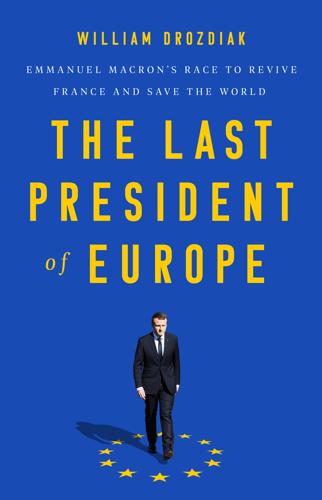
The Last President of Europe: Emmanuel Macron's Race to Revive France and Save the World
by
William Drozdiak
Published 27 Apr 2020
Moscow has also made common cause with the European business community, especially in Germany and Italy, which strongly supports the effort to remove sanctions and revive commercial arrangements with Russia, which were once highly profitable. Having an even greater impact than money have been waves of pro-Russian propaganda and “fake news” on social media outlets, which have disrupted political discourse and election campaigns across Europe, including recent voting for the European Parliament. But in contrast to the Cold War era, when Moscow supported communists and leftist movements across Western Europe, Kremlin propagandists now lavish most of their attention on populist nationalists.
…
Who mentioned the risks to peace in Ireland of restoring the former border?” Macron wrote in an angry open letter to the citizens of Europe that was published in twenty-eight newspapers. “Nationalist retrenchment offers nothing; it is rejection without an alternative. And this trap threatens the whole of Europe: the anger-mongers, backed by fake news, promise anything and everything.”21 Macron had believed that it was essential for the EU to take a hard line throughout the Brexit negotiations in order to persuade other member states that might be tempted to follow London’s lead that leaving the Union would be a costly and painful experience.

12 Bytes: How We Got Here. Where We Might Go Next
by
Jeanette Winterson
Published 15 Mar 2021
Getting rid of what the great economist and anthropologist David Graeber called ‘bullshit jobs’ is not anything to mourn. What we need is economic fairness. What we need is to get away from the false binary of sustainability or growth. What we need in the Information Age really is information; not propaganda, fake news, outright lies. Our problem is that governments do not know how to legislate Big Tech. It is hard enough to get Google, Facebook, and Amazon to pay fair taxes in the jurisdictions where they make mountains of money. I do not hear of these companies offering to pay a pandemic tax out of their heaped-up Covid profits.
…
Pierre Omidyar, founder of eBay, has poured tens of millions into Luminate, a London-based organisation operating in 17 countries. Luminate invests in data and digital rights, financial transparency, power-to-the-people initiatives around tech, as well as supporting media that is independent of the fake news and propaganda regularly pumped like sewage through buzzfeeds into your phone. Working with Nobel laureate in economics Joseph Stiglitz, Luminate wants governments to recognise independent journalism, in whatever medium, as a public good – and therefore deserving of public funds and public protection.
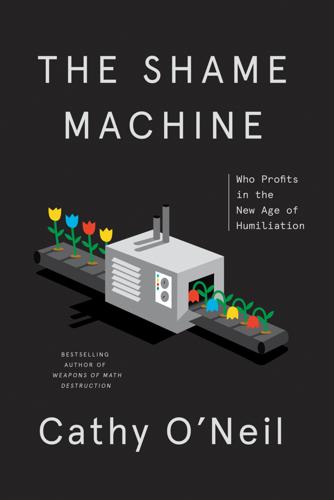
The Shame Machine: Who Profits in the New Age of Humiliation
by
Cathy O'Neil
Published 15 Mar 2022
The president, Muhammadu Buhari, expressed his commitment to these principles in a 2019 tweet, which he “pinned” to the top of his Twitter account: “We have no other motive than to serve Nigeria with our hearts and might, and build a nation which we and generations to come can be proud of.” These lofty aspirations opened Buhari to shaming, and the protests and media coverage forced him to defend himself. The usual response in these scenarios is to present an alternative narrative, accusing the protesters themselves of the abuses and dismissing their denunciations as “fake news.” But Buhari had to tread carefully, because phone videos on social media showed government forces shooting into apparently peaceful crowds. Consequently, the president expressed regret for the killings of protesters and conceded that a few policemen had acted badly. But he charged groups of demonstrators with fomenting anarchy.
…
Under growing pressure, Facebook drew up goals and policy, and began to take preliminary action against misinformation. In the run-up to the 2020 U.S. presidential election, the company displayed warnings on 180 million pieces of content. It also developed an AI to detect doctored images, many of them linked to fake news. Facebook flagged some and took down others. This was progress. But after the 2020 vote, the company eased back into the poisonous and more profitable status quo. Lies and shame, after all, drive traffic. Such cynicism should be illegal—or prohibitively expensive. Until our government holds companies accountable, mistrust will continue to multiply.
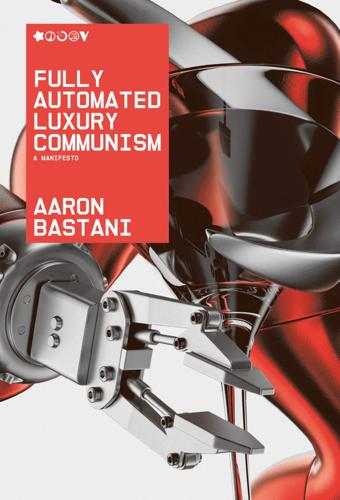
Fully Automated Luxury Communism
by
Aaron Bastani
Published 10 Jun 2019
While in 2007, immediately before the crisis, 26 million Americans were in receipt of food stamps, by 2012 – at the tail end of what some now call ‘the Great Recession’ – that figure had almost doubled to 46 million. Over subsequent years, despite an alleged upturn in the country’s economic fortunes, that number barely moved, with Donald Trump frequently highlighting how 43 million Americans used food stamps while on the campaign trail in 2016. For all the talk of his victory being powered by ‘fake news’, that number was entirely accurate. Analogous to food stamp use in the US is the meteoric rise in the number of people using food banks in Britain. The Trussell Trust, which operates the largest food bank network in the country, claims to have delivered around 41,000 food packs in 2010. By 2017 that had risen to 1.2 million after nine consecutive years of rising demand for their services.
…
See also specific disruptions energy and, 94–6 food, surplus and, 159–60 d.light, 109 DNA, 144, 147, 150, 151, 241–2 double helix model, 149 Doug, 7–8 Drucker, Peter, 51, 59–60, 79, 85, 232 dwarf planets, 130 E. coli, 148n Earth BioGenome Project, 146 East Coast Main Line, 203–4 economic globalisation, 197–8 economies relocalisation of, 207–8 worker-owned, 207–8, 211–12, 219 egg whites, cellular agriculture and, 177–9 Ehrlich, Paul, 167 The Population Bomb, 166 Eisenhower, Dwight, 136n, 137 elderly care, 92 electoral politics, 195 electoralism, society and, 194–6 elite technocracy, 185–8 Elysium (film), 154–8 Encyclopaedia Britannica, 235 Endless West, 180 Endogenous Technological Change (Romer), 63 ‘The End of History’ (Fukuyama), 15–17 The End of History and the Last Man (Fukuyama), 16 energy consumption of, 99–100 cost of storage technologies for, 105 disruption and, 94–6 free, 99–101 future of, 105–6 insulation of, 113–15 minimising consumption of, 220 post-scarcity in, 94–116 renewable (See renewable energy) solar, 101–5 wind, 111–13 energy transition, politics of, 218 Engels, Friedrich The Communist Manifesto, 51–2 England, 114. See also Britain enlightenment, 187 environmental consequences, of Second Disruption, 96 An Essay on the Principle of Population (Malthus), 163–4 ethnic people, 187 excess deaths, 114, 220 experience, power of, 46–8 exponential travel, 39–40 ‘extreme supply’, 37 ‘fake news’, 24 Falcon 9 rocket, 121, 122, 156 Farage, Nigel, 29 farming, 167–8 feedback loop, 205 fertility rates, 139–40, 142 finance, socialising, 207 Financial Policy Committee, 229 Finless Foods, 172, 173 First Disruption, 10–11, 31–2, 72, 79, 94, 134, 149, 159, 237 ‘First Machine Age’, 32 Fisher, Mark, 17–18 FLAC.
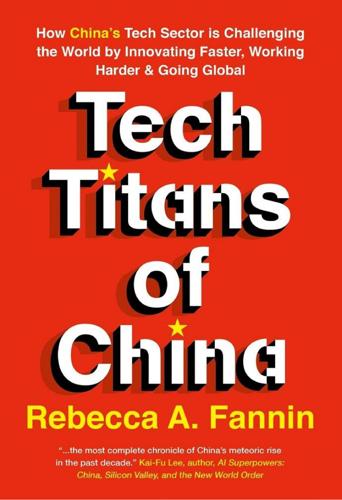
Tech Titans of China: How China's Tech Sector Is Challenging the World by Innovating Faster, Working Harder, and Going Global
by
Rebecca Fannin
Published 2 Sep 2019
As with YY, monetization also comes from virtual gifts and a new avenue of mini-shops where merchandise can be bought directly from the app. ByteDance has become a star in the social media world and could be the next B after Baidu. It’s even been ripped off by Facebook and, yes, has been accused of spreading fake news and vulgar content. These challenges aside, ByteDance represents a breakthrough for Chinese internet services and their growing presence outside China. Its news app, Toutiao, touts 120 million daily readers. In China, where Facebook is blocked, users spend well more than one hour daily on the app, more than the average user of Facebook or Tencent’s WeChat and Weibo.
…
More than that, Toutiao is leveraging its massive traffic to take on Alibaba and JD.com in e-commerce. Toutiao recently launched an e-commerce app, Zhidian, to sell consumer and household goods. King of Titillating Content Like many digital media companies worldwide, ByteDance faces challenges dealing with fake news and offensive content. Chinese regulators have targeted vulgar content and “useless information”—crude comedy, scandals, and celebrity gossip, for example. That sort of content earned Toutiao founder Zhang the title of the “King of Titillating Content,” as reported by the South China Morning Post.
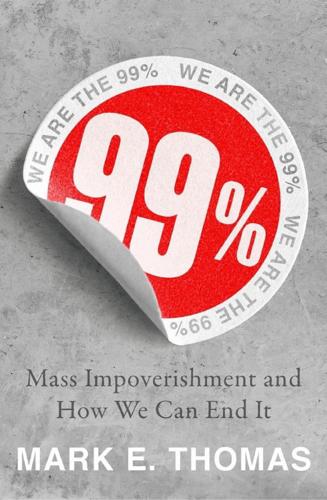
99%: Mass Impoverishment and How We Can End It
by
Mark Thomas
Published 7 Aug 2019
We hope to work with others to improve how this is done, and empower people to make informed decisions that reflect both existing scientific evidence and their personal values.35 If anything, he underestimates the scale of his challenge. SOCIAL MEDIA OUTLETS THEMSELVES ARE CONCERNED The prevalence of fake news stories has itself become big news. As Gardiner Harris and Melissa Eddy wrote in the New York Times, both Facebook and Google have announced that they plan to take steps to address the issue: Facebook and Google, which has also faced mounting criticism over distribution of fake stories on its platforms, said this week that they would take aim at the fake news sites’ online sources of revenue.36 Meanwhile, Google’s chief executive, Sundar Pichai, has committed to driving up the quality of news his company provides: I don’t think we should debate it as much as work hard to make sure we drive news to its more trusted sources, have more fact checking and make our algorithms work better, absolutely.37 This widespread concern and, even more so, evidence of action is heartening.

The System: Who Owns the Internet, and How It Owns Us
by
James Ball
Published 19 Aug 2020
The ISP did two things wrong, though: first, it didn’t just block the specified video, it blocked out the entirety of YouTube (though some reports suggest Pakistani authorities had intentionally widened their original order). Second – and what brought the issue to global attention – Pakistan Telecom didn’t just shout the news about its fake new route to its own customers, it also shouted about this new route to some of the bigger global ISPs it dealt with. ‘I forget who the upstream transit provider was [it was a Hong Kong ISP], but they accepted that routing update,’ Daly says. ‘Then they echoed that onto their peers. Eventually, it propagated through a significant portion of the internet.
…
utm_term=.5616081ea532 19https://www.theregister.co.uk/2019/02/14/marcus_hutchins_evidence/ 20https://techcrunch.com/2018/01/09/chinas-kunlun-completes-full-buyout-of-grindr/ 21https://techcrunch.com/2019/02/11/reddit-300-million/ 22https://bpr.berkeley.edu/2018/02/09/a-call-for-caution-indias-aadhaar/ 23This is, as this article explains, a simplification – but about as close as can be explained in one sentence: https://www.wired.co.uk/article/china-social-credit-system-explained 7 THE RULEMAKERS 1You can watch it, if you’d like, here (but I recommend giving it a miss): https://dailycaller.com/2017/12/13/ajit-pai-wants-you-to-know-you-can-still-harlem-shake-after-net-neutrality-video/ 2https://www.salon.com/2017/08/21/the-daily-caller-has-a-white-nationalist-problem_partner/ 3https://www.theatlantic.com/politics/archive/2018/09/a-daily-caller-editor-wrote-for-an-alt-right-website-using-a-pseudonym/569335/ 4https://www.theguardian.com/us-news/2016/dec/05/washington-pizza-child-sex-ring-fake-news-man-charged 5You can watch it here (but once again, I’d recommend not): https://www.youtube.com/watch?v=KFx34mEnOig 6https://c-7npsfqifvt0x24epdtx2egddx2ehpw.g00.cnet.com/g00/3_c-7x78x78x78.dofu.dpn_/c-7NPSFQIFVT0x24iuuqtx3ax2fx2fepdt.gdd.hpwx2fqvcmjdx2fbuubdinfoutx2fGDD-29-267B3.qeg_$/$/$/$?i10c.ua=1&i10c.dv=17 7https://www.nytimes.com/2017/05/01/business/dealbook/tv-station-owners-rush-to-seize-on-relaxed-fcc-rules.html 8https://www.nytimes.com/2017/11/16/business/media/fcc-local-tv.html 9https://www.nytimes.com/2018/04/02/business/media/sinclair-news-anchors-script.html 10There’s a good discussion of net neutrality as a free speech issue here: https://motherboard.vice.com/en_us/article/kbye4z/heres-why-net-neutrality-is-essential-in-trumps-america 11https://gizmodo.com/ajit-pai-thinks-youre-stupid-enough-to-buy-this-crap-1821277398 12https://www.wired.com/2017/03/ex-fcc-boss-gut-net-neutrality-gut-internet-freedom/ 13https://motherboard.vice.com/en_us/article/xygmbk/fcc-chairman-tom-wheeler-net-neutrality-champion-says-hell-step-down 14http://time.com/4770205/john-oliver-fcc-net-neutrality/ 15https://www.cnet.com/news/fccs-net-neutrality-ddos-story-falls-apart-ajit-pai-blames-previous-admin/; https://www.kitguru.net/tech-news/featured-tech-news/damien-cox/ajit-pai-was-aware-that-fcc-ddos-attack-was-a-lie-in-january-but-reportedly-couldnt-say/ 16https://www.cnet.com/news/eric-schneiderman-new-york-attorney-general-2-million-net-neutrality-comments-were-fake/ 17https://www.techdirt.com/articles/20181204/07033241154/fcc-commissioner-accuses-her-own-agency-net-neutrality-cover-up.shtml 18https://c-7npsfqifvt0x24epdtx2egddx2ehpw.g00.cnet.com/g00/3_c-7x78x78x78.dofu.dpn_/c-7NPSFQIFVT0x24iuuqtx3ax2fx2fepdt.gdd.hpwx2fqvcmjdx2fbuubdinfoutx2fGDD-29-267B3.qeg_$/$/$/$?
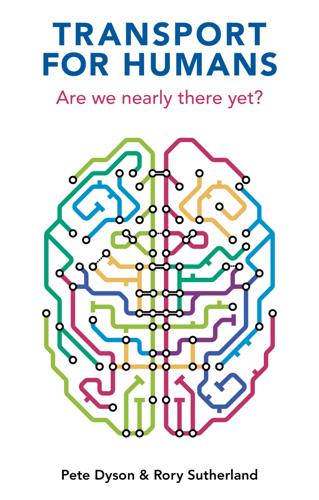
Transport for Humans: Are We Nearly There Yet?
by
Pete Dyson
and
Rory Sutherland
Published 15 Jan 2021
This was already well established in vaccine hesitancy research,25 so in 2020 the World Health Organization (WHO) applied a strategy of ‘pre-bunking’, which communicates anticipated concerns ahead of time to build trust and confidence that the authorities are already on the case. The psychologists that authored the report for the WHO make the memorable analogy that pre-bunking is like inoculating people against ensuing fake news.26 Framing Relying on facts is limiting, so planners should appeal to morals, values and duty. Our frame of reference is often ‘what’s in it for me?’ but this is not the only mental model available. ‘What’s in it for us’ involves reflections of local, regional and national identity. We could potentially also consider ‘What would be fair?’
…
Transport Findings (AEST blog), 20 May (https://doi.org/10.32866/001c.12874). 25 M. J. Goldenberg. 2016. Public misunderstanding of science? Reframing the problem of vaccine hesitancy. Perspectives on Science 24(5), 552–581. 26 S. van der Linden, J. Roozenbeek and J. Compton. 2020. Inoculating against fake news about COVID-19. Frontiers in Psychology 11, 2928. 27 S. Cairns, S. Atkins and P. Goodwin. 2002. Disappearing traffic? The story so far. Proceedings of the Institution of Civil Engineers–Municipal Engineer 151(1), 13–22. 28 S. Melia and T. Calvert. Forthcoming. Does traffic really disappear when roads are closed?

Age of the City: Why Our Future Will Be Won or Lost Together
by
Ian Goldin
and
Tom Lee-Devlin
Published 21 Jun 2023
Capping the number of users who can re-share content before it needs to be copied and pasted in a new post would help to curb the spread of toxic content, a sensible suggestion made by Facebook whistle-blower Frances Haugen.27 Also useful would be a requirement for social media platforms to verify users, which would not only help to eliminate bots but also disincentivize the most extreme forms of online abuse, including death threats and hate speech.28 Making social media and other online content platforms legally liable for the content they propagate in the way that other publishers are would be another sure way to quickly curb fake news and hate speech. Reform of the internet and social media is necessary and overdue, but far from sufficient. It would help slow the deterioration of civic life, but would be unlikely to restore it. It leaves unresolved the question of how to foster bridge building across divided communities. To some, the answer lies in moving an even greater share of our lives into the virtual world.
…
Index abortion here abstract mathematics here Achaemenid Empire here Adani, Gautam here agglomeration effects here agriculture here, here, here, here, here, here, here, here, here and carbon emissions here and disease here, here productivity here, here vertical farming here Ahmedabad here air-conditioning here, here airports here, here, here, here Albuquerque here Alexandria here Allen, Paul here Allen, Thomas here Altrincham here Amazon here, here, here Amazon rainforest here Amsterdam here Anatolia here Anderson, Benedict here Anheuser-Busch here antibiotics here, here, here Antonine Plague here Anyang here apartment conversions here, here Apple here, here, here Aristotle here Arizona State University here Arlington here Assyrian merchants here Athens, Ancient here, here, here, here, here, here Atlanta here, here Austin here, here, here automation here, here, here, here, here, here, here, here axial precession here Baghdad, House of Wisdom here Baltimore here, here Bangalore here, here Bangkok here Bangladesh here, here, here, here Barlow, John Perry here Bauhaus here Beijing here, here Belmar redevelopment here Berkes, Enrico here Berlin here, here, here Berlin Wall, fall of here Bezos, Jeff here biological weapons here ‘biophilia’ here biospheres here bird flu here Birmingham here, here Black Death here, here, here Blake, William here Bloom, Nick here BMW here ‘bobo’ (bourgeois bohemian) here, here, here Boccaccio, Giovanni here Boeing here, here, here Bogota here Bologna here Bonfire of the Vanities here Borneo here Boston here, here, here Boston University here, here Brand, Stewart here Brazil here, here Brexit here, here, here Bristol here Britain broadcasting here deindustrialization here education here enclosure movement here foreign aid here high-speed rail here, here house prices here immigration here industrialization here, here infant mortality here ‘levelling up’ here life expectancy here mayoralties here per capita emissions here per capita incomes here remote working here social housing here Brixton riots here broadcasting here Bronze Age here, here, here, here bronze, and shift to iron here Brooks, David here Brynjolfsson, Eric here Burgess, Ernest here bushmeat here, here Byzantine Empire, fall of here Cairncross, Frances here Cairo here calendar, invention of here Cambridge, Massachusetts here Cambridge University here canals here, here, here ‘cancel culture’ here Cape Town here Catholic Church here C40 Cities partnership here Chadwick, Edwin here Chang’an (Xi’an) here, here, here, here Charles, Prince of Wales here charter cities here Chengdu here Chiba here Chicago here, here, here, here, here, here, here, here childbirth, average age at here childcare here, here, here, here, here China here ancient here, here, here, here call-centre workers here cereal production here civil strife here and Covid-19 pandemic here Cultural Revolution here definition of cities here economic liberalization here entry into WTO here Household Responsibility System here hukou system here One Child Policy here Open Coastal Cities here per capita emissions here rapid ageing here Special Economic Zones here technology here urbanization here China Towns here Chinese Communist Party here cholera here, here, here, here Chongqing here cities, definition of here Citigroup here city networks here civil wars here Cleveland here, here, here, here climate change here, here, here, here, here, here, here, here, here, here coastal cities here, here, here, here commuting here, here, here, here, here, here, here, here Concentric Zone Model here Confucius here conspiracy theories here Constantinople here, here containerization here, here Copenhagen here, here Corinth here Cornwall here corruption here Coventry here, here covid-19 see pandemics crime rates here ‘cyberbalkanization’ here cycling here, here, here, here Damascus here Dark Ages here, here data science here de Soto, Hernando here deforestation here, here, here, here Delhi here Dell here Delphic oracle here democracy here, here, here Democratic Republic of Congo here, here, here, here, here, here Deng Xiaoping here dengue fever here Denmark here, here Detroit here, here, here, here, here, here, here Dhaka here, here, here, here, here Dharavi here Diana, Princess of Wales here diasporas here, here Dickens, Charles here district heating systems here Dresden here drought here, here, here, here, here, here, here Drucker, Peter here dual-income households here, here Dubai here, here, here Dunbar, Kevin here Düsseldorf here East Antarctic ice sheet here East China Sea here, here Easterly, William here Eastern Mediterranean here, here, here Ebola here Edinburgh here education here, here, here, here, here, here, here, here, here, here, here, here, here, here higher education here, here, here, here; see also universities Japanese school system here Egypt here, here Ancient here, here, here, here Ehrenhalt, Alan here electric vehicles (EVs) here Engels, Friedrich here Enlightenment here Epic of Gilgamesh here Erfurt here Ethiopia here, here Euripides here European Enlightenment here exchange rates here Facebook here, here, here fake news here famine here, here fertility rates here, here, here ‘15-minute city’ principle here Fischer, Claude here Fleming, Alexander here flooding here, here, here, here, here, here, here Florida, Richard here, here food shortages here Ford, Henry here, here foreign aid here fossil fuels here, here France here, here, here, here, here, here, here, here, here, here, here Frankfurt here Franklin, Benjamin here Friedman, Thomas here, here Fryer, Roland here Fukuoka here, here Gaetani, Ruben here Galileo Galilei here Ganges River here Garden Cities here Garden of Eden here Gates, Bill here, here gay community here General Electric here General Motors here genetic engineering here gentrification here, here, here, here, here George, Andy here Germany here, here, here, here, here, here Gingrich, Newt here glaciers here Glasgow here Glass, Ruth here global financial crisis here, here, here global population, size of here globalization here, here, here, here, here, here, here, here, here, here Goldstein, Amy here Google here, here, here Goos, Maarten here Grant, Adam here Great Depression here, here Greece, Ancient here, here, here, here, here Griffith Observatory here Gropius, Walter here Gruen, Victor here Gulf Stream here Haiti here Hamburg here Hanseatic League here, here Harappa here, here Harry, Prince here Harvard University here hate speech here Haussmann, Baron here, here Hawaii here Hazlitt, William here healthcare here, here, here, here, here, here, here, here, here, here heatwaves here, here Hebei here Heckscher, Eli here Herodotus here Himalayas here Hippocrates here Hippodamus here Hittite Empire here HIV here, here Ho Chi Minh City here Holocene here, here, here homophily here Hong Kong here house prices here, here, here, here, here, here, here Houston here, here, here Howard, Ebenezer here Hudson River here Hugo, Victor here Hume, David here Hurricane Katrina here hybrid working, see remote and hybrid working ice melting here, here import substitution industrialization here InBev here India here, here, here, here, here, here, here, here, here fertility rates here Indonesia here, here Indus River here Indus Valley here, here, here inequality here, here, here, here, here, here, here, here, here, here, here infant and child mortality here, here, here, here influenza here, here, here ‘information cocoons’ here Instagram here internet here, here, here, here, here, here invention here, here, here, here, here, here, here, here, here, here irrigation here, here, here, here Italy here Jacobs, Jane here, here, here Jakarta here, here James, Sheila here Japan here, here, here, here, here, here, here, here, here post-war development here schooling system here Jenner, Edward here Jesus Christ here Jobs, Steve here jobs apprenticeships here ‘lousy’ and ‘lovely’ here tradeable and non-tradeable here Justinian Plague here Kashmir here Kenya here Kinshasa here, here Kish here knowledge workers here, here, here, here, here, here, here, here, here, here, here, here Koch, Robert here Kolkata here Korean War here Krugman, Paul here Kushim Tablet here Lagash here Lagos here, here, here, here, here, here, here Lahore here land titling programmes here Las Vegas here Latin language here Lee Kuan Yew here, here Leeds here, here Leicester here Leipzig here, here, here, here Letchworth here life expectancy here, here, here, here, here, here Liverpool here, here Ljubljana here London here, here, here, here, here, here, here bike lanes here Canary Wharf here, here Chelsea here, here, here China Town here cholera outbreaks here City of London here, here coffeehouses here and Covid-19 pandemic here financial services here gentrification here, here, here Great Stink here, here heatwaves here, here house prices here, here hybrid working here, here immigration here, here incomes here, here mayoralty here migration into inner London here population growth here, here, here poverty here, here public transport here, here, here slum housing here social housing here suburbanization here Los Angeles here, here, here, here Louisville here Luoyang here Luther, Martin here Luton Airport here Luxembourg here, here Lyon here McDonald’s here McDonnell Douglas here McLuhan, Marshall here Madagascar here malaria here, here, here, here Malaysia here Mali here malls, reinvention of here Manchester here, here, here, here, here, here, here Manila here Manning, Alan here Markle, Meghan here marriage here Marshall, Alfred here Marshall, Tim here Marx, Karl here Maya here, here measles here, here, here Meetup here mega regions here Mekong River here Memphis, Egypt here, here Mesoamerica here, here Mesopotamia here, here, here metallurgy here metaverse here methane here, here Mexico here Miami here, here, here microbiology here Microsoft here, here, here middle class, rise of here migration policy here millennial generation here Milwaukee here, here Minoan civilization here Mistry, Rohinton here MIT here MMR vaccine here ‘modernization’ theory here Mohenjo-Daro here, here Moretti, Enrico here, here mortality rates here, here, here, here, here, here, here, here, here, here, here, here motor car, invention of here Moynihan, Daniel here Mumbai here, here Mumford, Lewis here, here, here, here Munich here, here Mycenaean civilization here Nagoya here, here Nairobi here Nashville here National Landing, Arlington here Natural History Museum here natural resource exports here Nestlé here Netherlands here network effects here New Economics Foundation here New Orleans here, here New York here, here, here, here, here, here, here, here, here, here carbon emissions here and Covid-19 pandemic here gentrification here, here housing here, here, here incomes here, here Manhattan here, here, here, here, here population growth here, here and rising sea levels here slum housing here suburbanization here, here subway here waste and recycling here New York Central Railroad here New York World Fair here Newcastle here Nextdoor here Niger here Nigeria here, here, here, here Nilles, Jack here, here Nipah virus here Norway here, here Nottingham here Novgorod here ocean and air circulation here office rental and sales prices here Ohlin, Bertil here Oldenburg, Ray here online deliveries here OpenTable here Osaka here, here Oslo here Ottoman Empire here Oxford, population of here Oxford University here Pacific Belt Zone here Padua here Pakistan here, here, here pandemics here, here, here, here, here, here, here, here, here, here, here, here, here, here and zoonotic diseases here paramyxovirus here Paris here, here, here, here, here, here, here, here, here, here, here, here, here, here, here, here Paris Conference (2015) here Park Chung-hee, General here parks here Pasteur, Louis here Pearl River Delta here, here Peñalosa, Enrique here per capita income here Philadelphia here Philippines here, here Phoenix here, here Pixar here plague here, here, here, here Plato here plough, invention of here pollution here, here, here, here air pollution here, here, here, here population growth here, here, here, here, here, here, here, here PORTL here potter’s wheel, invention of here printing press here, here productivity here, here, here, here, here agricultural here, here Protestantism, rise of here public transport here, here, here, here, here, here, here, here, here, here, here, here, here, here Putnam, Robert here, here quarantine here railways here, here, here, here, here high-speed rail here, here, here Ralston Purina here Reagan, Ronald here recycling here, here religion here remote and hybrid working here, here, here, here Renaissance Florence here, here, here renewable energy here, here Republic of Letters here République des Hyper Voisins here ‘resource curse’ here Rheingold, Howard here Ricardo, David here Rio de Janeiro here Riverside, San Francisco here robotics here Rockefeller, John D. here Roman Empire here, here, here Rome, Ancient here, here, here, here, here, here Romer, Paul here Rotterdam here Rousseau, Jean-Jacques here, here Sahel here, here sailboat, invention of here St Augustine here St Louis here, here, here Salesforce here San Diego here San Francisco here, here, here, here, here, here, here, here, here, here, here gentrification here, here hybrid working here, here San Francisco Bay Area here, here, here Santa Fe here São Paulo here Savonarola, Girolamo here Scientific American here Scott, Emmett J. here sea levels, rising here, here, here Seattle here, here, here, here, here, here Second Opium War here Seneca here Seoul here Shanghai here, here, here, here, here Shantou here Sheffield here, here, here Shen Nung here Shenzhen here, here Siemens here Silk Roads here, here Sinclair, Upton here Singapore here, here, here, here Slater, Samuel here smallpox here, here Smith, Adam here, here Snow, John here social capital here social housing here, here social media here, here, here, here, here Socrates here solar panels here South Africa here South Korea here, here, here, here, here, here Southdale Center here specialization here, here, here, here, here, here Spengler, Oswald here Starbucks here Stephenson, Neal here Stewart, General William here Stuttgart here Sub-Saharan Africa here subsidiarity principle here suburbanization here, here, here, here, here, here, here, here, here Sunstein, Cass here Sweden here, here Sydney here, here, here, here, here, here Syrian refugees here, here Taiwan here Tanzania here telegraph here Tempest, Kae here Thailand here Thames River here, here Thatcher, Margaret here, here, here ‘third places’ here Tianjin here Tocqueville, Alexis de here Toffler, Alvin here Tokyo here, here, here, here trade liberalization here trade routes here Trump, Donald here, here tuberculosis here, here, here Twain, Mark here Twitter here, here typhoid here, here typhus here, here Uber here Uganda here Ukraine here, here Umayyad Caliphate here unemployment here, here United Nations here, here United States anti-global populism here anti-trust regulation and industrial consolidation here anxiety and depression here broadcasting here car registrations here cost of education here decline in trust here deindustrialization here Gilded Age here Great Migration here house prices here, here immigration here industrialization here inequality here labour mobility here ‘magnet schools’ here parking spaces here patent filings here per capita emissions here, here per capita incomes here remote working here, here, here return on equity here Rust Belt here schools funding here slavery here socioeconomic mobility here suburbanization here tax revenues here US Federal Housing Authority here US General Social Survey here US Trade Adjustment Assistance Program here universities here, here, here University College London here University of Texas here university-educated professionals here Ur here urban heat island effect here urbanism, subcultural theory of here Uruk here, here, here, here, here vaccines here, here Van Alstyne, Marshall here Vancouver here Venice here, here Vienna here, here Vietnam here voluntary associations here, here Wakefield, Andrew here walking here, here, here Wall Street here Warwick University here Washington University here WELL, The here Welwyn Garden City here wheel, invention of here wildfires here, here William the Conqueror here Wilson, Edward Osborne here, here Wilson, William here World Bank here, here World Health organization here World Trade Organization here World Wide Web here writing, invention of here Wuhan here, here Xiamen here Yangtze River here, here Yangtze River Delta here yellow fever here Yellow River here, here Yersinia pestis here Yokohama here YouTube here, here Yu the Great here Zhuhai here Zoom here Zoroastrianism here BLOOMSBURY CONTINUUM Bloomsbury Publishing Plc 50 Bedford Square, London, WC1B 3DP, UK 29 Earlsfort Terrace, Dublin 2, Ireland BLOOMSBURY, BLOOMSBURY CONTINUUM and the Diana logo are trademarks of Bloomsbury Publishing Plc This electronic edition first published in Great Britain 2023 Copyright © Ian Goldin and Tom Lee-Devlin 2023 Ian Goldin and Tom Lee-Devlin have asserted their right under the Copyright, Designs and Patents Act, 1988, to be identified as Authors of this work All rights reserved.

A Map of Future Ruins: On Borders and Belonging
by
Lauren Markham
Published 13 Feb 2024
Such tactics of surveillance, intimidation, and criminalization of human rights workers and the press—wherever they occur—are clear in their intent: to curb not only lifesaving assistance to refugees, but also the coverage of the injustices waged against them. In late 2021, the Greek government instituted a new law against so-called fake news. It was astoundingly broad, threatening prison time to “anyone who publicly or via the internet spreads or disseminates in any way false news that is capable of causing concern or fear to the public or shattering public confidence in the national economy, the country’s defense capacity or public health.” The trouble with combating fake news, as those of us living in the United States know all too well, is that it puts the very definition of reality up for debate.

Shutdown: How COVID Shook the World's Economy
by
Adam Tooze
Published 15 Nov 2021
Modern science, technology, medicine, and economic development might be giving us greater ability to fight disease, but those same forces were also contributing to the generation of new disease threats.14 The emerging infectious diseases paradigm, proposed by scientists from the 1970s onward, was, like the models of climate change and earth systems ecology that emerged at the same moment, a profound critique of our modern way of life, our economy, and the social system built on it.15 Our use of land across the globe, relentless incursions into the remaining wilderness, the industrial farming of pigs and chickens, our giant conurbations, the extraordinary global mobility of the jet age, the profligate, commercially motivated use of antibiotics, the irresponsible circulation of fake news about vaccines—all these forces combined to create a disease environment that was not safer, but increasingly dangerous. It was no doubt true that all these factors had been present to a greater or lesser extent for at least two millennia. The sophisticated urban communities of the Roman empire had already been prey to pandemics sweeping across Eurasia.
…
President Trump had spent a pleasant weekend at his Florida resort, partying with his son and his son’s girlfriend and hobnobbing with his soulmate President Jair Bolsonaro. Within days, two dozen of Bolsonaro’s entourage would test positive. But on Monday, March 9, it was not the virus but the markets that were preoccupying Trump. The S&P 500 had been his good news story. Now it was in free fall. Fake news was to blame. As he furiously tweeted: “So last year 37,000 Americans died from the common Flu. It averages between 27,000 and 70,000 per year. Nothing is shut down, life & the economy go on. At this moment there are 546 confirmed cases of CoronaVirus, with 22 deaths. Think about that!”5 The World Health Organization did.
…
He even went so far as to threaten that American corporations that spoke out in favor of doing business in China might find themselves falling under the terms of the Foreign Agents Registration Act.18 Attorney General Barr was unusual in the capaciousness of his ideological vision, but the tendency to blame China was quite general in the Trump camp. It anchored the sense that the president was being victimized by a combination of hostile forces: a virus imported from China, the relentless hounding by “fake news,” Wall Street liberals, the socialism of Bernie Sanders and “the squad,” woke antiracism, liberal governors harassing Trump’s loyal following in the small-business community, and a tyranny of public health experts who demanded the wearing of Asian-style face masks. The opposite of all that was national, virile, and healthy, and if one followed the logic of Barr’s remarks, it was blue-collar working-class Americans betrayed by cosmopolitan corporate elites.

AI 2041: Ten Visions for Our Future
by
Kai-Fu Lee
and
Qiufan Chen
Published 13 Sep 2021
Another is to encourage positive behavior as a part of corporate social responsibility, such as ESG (environmental, social, and corporate governance). ESG is gaining traction in some business circles, and it is possible that responsible AI could be a part of the future ESG. Another idea is for third parties that can serve as watchdogs by creating dashboards for companies’ performance, tracking metrics like rates of “fake news” generated or “lawsuits filed alleging discrimination” to pressure them to incorporate pro-user metrics. Finally, perhaps the hardest but the most effective solution is to ensure that the AI owner is 100-percent interest aligned with each user (see chapter 9 for more on this utopian solution). A second potential downside is fairness and bias.
…
For example: Q: When did Bill Gates work at Apple? A: In 1980, Mr. Gates worked at Apple as a software expert during his summer break from college. We humans have a good grasp on what we know and what we don’t know. GPT-3 does not. This flaw can cause it to generate this kind of “fake news.” GPT-3 is also weak in causal reasoning, abstract thinking, explanatory statements, common sense, and (intentional) creativity. Also, having ingested so much data drawn from humans, it has unfortunately absorbed human biases, prejudices, and malice. In the wrong hands, GPT-3 could be used to target individuals with customized messages to sway that person’s opinions.
…
“Your choice changed Mahdi’s mind, not just about the algorithm, but about me as well. Would you care to join us? Your gaming platform can surely help optimize our algorithm.” Viktor hesitated before replying. “If my answer is no, will I be sentenced like the others?” Taken aback, Akilah gave a brief silvery laugh. “That was a piece of custom-fed fake news. All guests have returned to the island and are back to their usual tasks.” “Wait…so the guests I met were also…Oh, of course. I guess that explains their conversational skills. So, you really think this can help mankind achieve true happiness?” “Look at yourself, Viktor, and tell me.
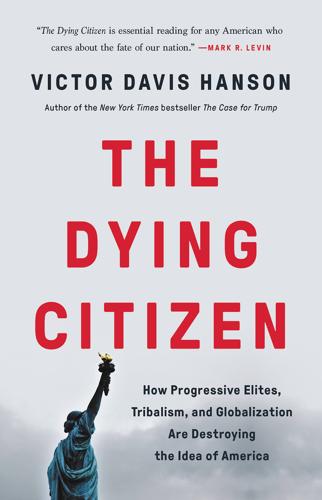
The Dying Citizen: How Progressive Elites, Tribalism, and Globalization Are Destroying the Idea of America
by
Victor Davis Hanson
Published 15 Nov 2021
Taliban bounties: “Russia Offered Bounties to Afghan Militants to Kill US Troops,” CNN, June 28, 2020, https://www.cnn.com/videos/politics/2020/06/27/russia-us-troops-afghan-militants-sot-vpx-nr.cnn; Ryan Brown and Paul LeBlanc, “Top US General Says Russian Bounty Intelligence ‘Wasn’t Proved’ but ‘Proved Enough to Worry Me,’” CNN, July 8, 2020, www.cnn.com/2020/07/07/politics/us-russia-afghanistan-bounty-intelligence. Story completely debunked: B. Adams, “The Russian Bounties Story Was Apparently Fake News All Along,” Washington Examiner, April 17, 2021, www.msn.com/en-us/news/world/the-russian-bounties-story-was-apparently-fake-news-all-along/ar-BB1fGUwy. Mount Rushmore speech: Michael D’Antonio, “Trump’s Powerful Message of Rage,” CNN, July 5, 2020, www.cnn.com/2020/07/04/opinions/trump-mount-rushmore-speech-monuments-rhetoric-dantonio; cf. Rich Lowry, “Patriotism Is Becoming ‘White Supremacy,’” National Review, July 6, 2020, www.nationalreview.com/2020/07/president-trump-mount-rushmore-speech-distorted-by-media. 64.
…
They were saying things that validated what we had given them to say.… The average reporter we talk to is 27 years old, and their only reporting experience consists of being around political campaigns.… They literally know nothing.”69 Meanwhile MSNBC anchor Brian Williams castigated the idea of a so-called fake news epidemic. Yet Williams failed to remind us that he was removed as NBC’s evening news anchor for serving up all sorts of false details about his supposedly brave trips abroad in search of edgy news stories. Even worse, after the fatal shooting of Michael Brown in Ferguson, Missouri, the cohosts of the show CNN Newsroom collectively put up their hands in “don’t shoot” solidarity with the progressive narrative of unjustified police killing, which a lengthy federal investigation conducted by the Obama administration later proved completely false.
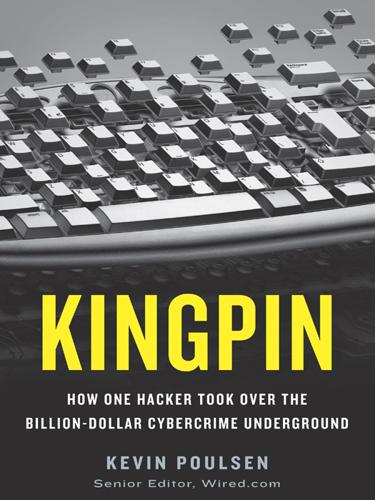
Kingpin: How One Hacker Took Over the Billion-Dollar Cybercrime Underground
by
Kevin Poulsen
Published 22 Feb 2011
There were deals every day and every night, with a weekly surge in trading Sunday evenings. The transactions ranged from the petty to the gargantuan. On May 19, agents watched Scarface transfer 115,695 credit card numbers to another member; in July, APK moved a counterfeit UK passport; in August, Mintfloss sold a fake New York driver’s license, an Empire Blue Cross health insurance card, and a City University of New York student ID card to a member in need of a full identification portfolio. A few days later, another sale by Scarface, just two cards this time; then MALpadre bought nine. In September, Deck sold off eighteen million hacked e-mail accounts with user names, passwords, and dates of birth.
…
Now stationed in the Richmond, Virginia, field office, Schuler was calling about a breach at nearby Capital One. The bank’s security officials had detected an attack using an Internet Explorer exploit. They’d sent Schuler a copy of the code, and he wanted Mularski to get one of the NCFTA’s geeks to take a look at it. Mularski listened as Schuler described his investigation to date. He’d focused on the fake news website, Financialedgenews.com, used to deliver the malware. The domain was registered to a false identity in Georgia. But when the registrar, Go Daddy, checked its records, it found the same user had once registered another address through the company. Cardersmarket.com. Mularski recognized the significance at once.

Lurking: How a Person Became a User
by
Joanne McNeil
Published 25 Feb 2020
“Talk about something interesting,” someone heckled, halfway in. The audience laughed and disparaged him while using Twitter as a backchannel, before a battery of questions about privacy during the audience Q&A. Fast-forward ten years later to May 2018, amid the Cambridge Analytica scandal, fury over “fake news,” and the platform’s role in the Rohingya genocide, when Mark Zuckerberg appeared unbothered in his keynote at the Facebook developer conference F8. “What I can assure you is we’re hard at work making sure people don’t abuse this platform, so you can all keep building things that people love,” he said with a smirk.
…
A “Facebook killer” isn’t the right way to image Facebook’s demise; it would just mean moving on to a new set of problems on another platform. The only solution to Facebook is for Facebook not to exist and for nothing Facebook-like to pick up in its absence. Unfortunately, media commentary tends to zero in on tactical questions like whether it is right for Facebook to ban Infowars, or how to solve the problem of fake news with fact-checkers, or what kind of affiliations of fact-checkers are acceptable. Tech reporters act like Facebook’s “Loyal Opposition,” as the writer and academic M. R. Sauter has put it: bantering over its problems, expecting it will always be there, attempting to lock horns—while they are ants in proportion to its size.

Skin in the Game: Hidden Asymmetries in Daily Life
by
Nassim Nicholas Taleb
Published 20 Feb 2018
But there was something far, far more severe than a scholar being wrong. The problem is never the problem; it is how people handle it. What was worse than Piketty’s flaws was the discovery of how that Mandarin class operates. They got so prematurely excited by the “evidence” of the rise in inequality that their reactions were like fake news. Actually, they were fake news. Economists got so carried away; they praised Piketty for his “erudition” because he discussed Balzac and Jane Austen, the equivalent to hailing as a weight lifter someone spotted carrying a briefcase across Terminal B. And they completely ignored my results—and when they didn’t, it was to declare that I was “arrogant”(recall the strategy of using formal mathematics as a way to make it impossible to say you are wrong)—which is a form of scientific compliment.
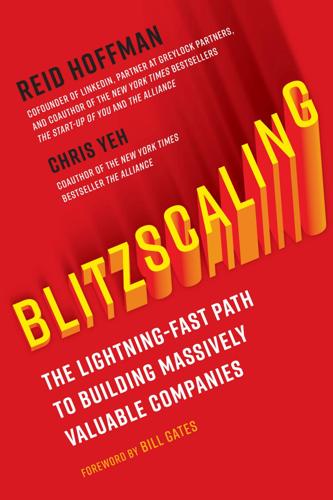
Blitzscaling: The Lightning-Fast Path to Building Massively Valuable Companies
by
Reid Hoffman
and
Chris Yeh
Published 14 Apr 2018
Broad collaboration with transparency and open communications is the best way to both identify the systemic risks and figure out the least costly interventions to reduce them while still encouraging rapid innovation. The systemic/nonsystemic distinction is dynamic, not static, and blitzscalers should be prepared to change their approach accordingly. For example, Facebook has been extensively criticized for its role in the 2016 US presidential election, both for distributing deceptive content (aka “fake news”) and for not doing enough to protect its users’ personal data from being exploited by political consulting firms like Cambridge Analytica. Both of these issues are legitimate concerns, since they both erode the trust that Facebook users have in the content they find on Facebook and in Facebook itself.
…
What’s needed is a dynamic public/private partnership where government input meshes with private implementation. Similarly, in the wake of all the revelations that misinformation spread via social networks may have compromised the outcome of the election, the response of traditional media outlets like the New York Times and the Washington Post was to call for Facebook to hire human editors to police “fake news.” This seems like a classic example of “When you have a hammer, everything looks like a nail.” You can’t simply apply the traditional editorial processes designed for a fifty-person newsroom to a platform with a billion potential “reporters” writing billions of “articles” per day. Instead of trying to copy and paste a solution, Facebook should come up with its own ideas for how to address the problem and then find scalable ways to implement them.
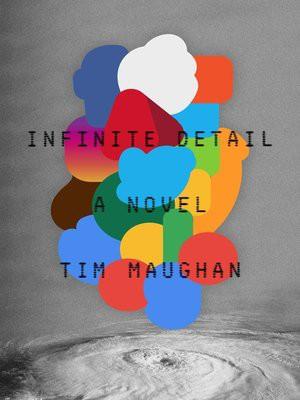
Infinite Detail
by
Tim Maughan
Published 1 Apr 2019
They cycle through brand after brand, from Google to Coke, Delta to Facebook, Hershey to Tesla. Brands merge into faces: politicians, the celebrity president, bleached-hair Aryan news anchors, all peering at him over scrolling text. Share prices, breaking news, war atrocities, football scores, celebrity gossip, fake news and real lies. It’s like somebody took the Internet, the hyperactive never-ending churn of the timelines, the constant scroll through Twitter and Facebook and Instagram, and made it real, physical, and nailed it to the walls of the fucking city. Rush pulls his attention away from the lights and screens and tries to focus on the crowds instead, which are growing and thickening now, confused tourists and determined protesters circling around one another.
…
The garbled radio transmissions they’d picked up heading up the coast, from the few stations still broadcasting, painted a confused, often terrifying picture. Civil wars, militia takeovers, military coups, EMP strikes, shadow-government-sanctioned massacres. Some of it was clearly bullshit, badly communicated rumors, fake news, and conspiracy-theory mythology. Most likely, that destroyer was just sitting there watching out for pirates, but maybe they’d not be happy to see unannounced visitors, and it was better to be safe than sorry. Rush had told them they could drop him in Bay Ridge, and he’d work his way from there on foot, but Simon was insistent he’d take him closer.
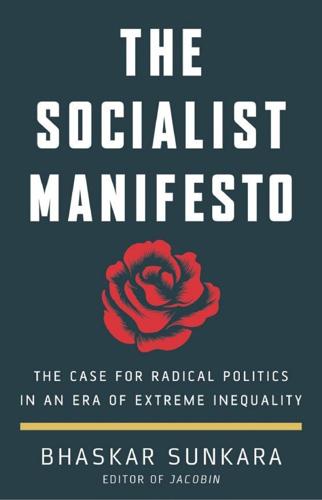
The Socialist Manifesto: The Case for Radical Politics in an Era of Extreme Inequality
by
Bhaskar Sunkara
Published 1 Feb 2019
The same Senator Schumer who weeks before was looking forward to losing proles and replacing them with professionals now could say, “If you want to appeal to the manufacturing worker in Scranton, the college student in Los Angeles and the single mom making minimum wage in Harlem, one economic message will work.”20 Schumer might have not been committed to that course, but the fact that it was entertained shows how adrift Democrats were after the election. Bernie went from outsider and liability to potential savior for a party he wasn’t even a member of. Yet new scapegoats quickly emerged. The racism and sexism of American voters was cited. But then so was the role of Russia, fake news, and the FBI. These factors—even the blame put on Clinton’s personal abilities as a campaigner—distracted from the overarching need for a new direction. Some were as hyperbolic as liberal commentator Keith Olbermann, who announced that the mighty United States was the “victim of a Russian coup.”21 The facts of inequality, indebtedness, and poverty are not going away, however.
…
See Britain environmentalism, 240–241 equal pay for equal work, 115, 121 Erfurt Congress, 51–52 Erfurt Program, 58–59, 63, 72, 82–83 Erlander, Tage, 116, 118 Espionage Act, 173–174 Ethiopia, 153 European Monetary System, 125 eurozone, 125, 221 Evolutionary Socialism (Bernstein), 63 exceptionalism, 159 Factory Act of 1847, 46 fake news, 205 famine, 38, 102, 139, 146, 147–148 farm collectivization, 102, 142–143, 144–146, 154 February Revolution, 81, 88–91. See also Russian Revolution (1917) Federal Elections Campaign Act, 231 Federalist No. 10 (Madison), 233 Ferguson, Missouri, 198–199 feudalism, 36–37, 132, 133, 161 filibuster, 234–235 Finnish civil war, 117 First International, 43 Fitzpatrick, John, 176 Five Year Plan (China), 141–142 Five Year Plan (Russia), 101–102 Foot, Michael, 208 foreclosure, 193 foreign aid, 154, 156 “Forward March of Labour Halted?
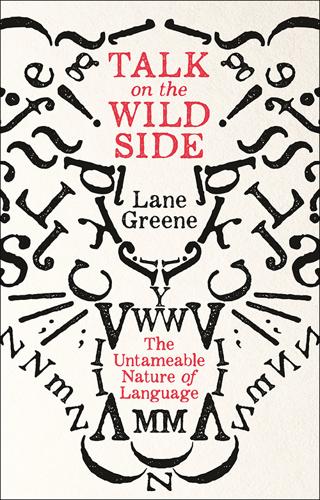
Talk on the Wild Side
by
Lane Greene
Published 15 Dec 2018
Taking it out of Ali’s African-American English and putting into standard English does not a jot for its actual content. What about country white dialect? Another of my favourite quotes is one attributed to Josh Billings: “It ain’t the things people don’t know. It’s the things they know that ain’t so.” The quote (often credited to Twain too) anticipated later fears about “fake news”, confirmation bias and other mental bad habits. Ronald Reagan used the quote in 1964 but rendered it in standard English: “Well, the trouble with our liberal friends is not that they’re ignorant; it’s just that they know so much that isn’t so.” Is that any clearer? Any better? Did Reagan think this statement through better than Billings had?
…
Index A abortion debate 187 ad hominem tactic 46–7 adaptation 6, 7, 14, 94, 125 Africa 123–4, 138, 179, 204 African-American English 44, 164, 178–82 agglutinating languages 116, 117, 119–21 Ali, Muhammad 44 ambiguity 6, 7, 10, 29–31, 73–8, 100, 113–14, 211 analytic languages 4, 31, 114–15, 117, 119, 120–21, 125 appropriateness 176, 182, 213 Chapter 6, passim arbitrariness of the sign 17–18 Arnold, Matthew 38 audiovisual isomorphism 24 Austen, Jane 36 Australia 134, 138 automated parsing 70 “awesome” 109–10 B BabelFish 68, 83–4 Bagehot, Walter 36 Baldwin, Daryl 150 Bar-Hillel, Yehoshua 73 bare infinitives 118–19 Basque 138, 139, 151, 155 “be” see “to be” behaviourism 23 Ben-Yehuda, Eliezer 150 “benefits” 189–90 Benefits Street 190 “Berenstain Bears” 167–8 Big Data 83 big languages 5, 11–12, 21–2, 26, 122–5, 136, 149, 177 see also French; German; Russian bilingual countries 81–2, 134, 143–9 Billings, Josh 45 black American English 44, 164, 178–82 Bohr, Niels 62 Borges, Jorge Luis 16–17 Boroditsky, Lera 193, 194, 195 Boyle, Robert 16 Brexit 201–3 Bridge 179 Brigham Young University 159 Broca’s (or agrammatic) aphasia 43 Brown, James Cooke 22–7, 209 Burney, Fanny 37 Bush, George W. 164–5, 183 Bush, Jeb 203 “buxom” 106–9, 159, 187–8 C “can/may” 167–9 Canada 81–2, 134, 138, 143–9, 154, 155, 212 Candide 81–3 Cantonese 139–40 Carroll, Lewis 39 case 3–5, 13–14, 49–52, 61–2, 64, 117, 125, 173 Catalan 138, 139, 147–9, 155 centre-embedded structure 60 chain shift 98–102, 109 Champliaud, Emilie 153 change in language Chapter 4, passim Charles II, King 16 chatbots 66–7, 87 Chesterfield, Lord 111, 112 children metaphor 7–8 Chinese 23–4, 113–15, 121, 122, 138–40, 212 Chomsky, Noam 29 Christianity 15, 19, 111–12, 138, 151 Chubb, Ray 152, 153 clauses 39, 93–4, 113 relative 160–61, 172, 173, 174, 176 subordinate 49, 60 Clinton, Bill 51, 59, 189 code-switching 161, 164, 167, 174, 176, 213 Coleridge, Samuel Taylor 38 colonialism 138 Comly, John 37 comma splices 52–3 conciseness 58–60 confirmation bias 194, 197 conjugation 51, 117, 125, 180 conquest theory 4–5 constitutions 134, 139, 143 contrastive analysis 181–2 Coptic 121, 138 Cornish 151–4 Cowan, John 27–8, 30–31 Cratylus 17 creole languages 123–4 Crick, Francis 43 Crystal, David 171 D Danish 123 spelling 102–3 tax 197–8 Dansk Sprognævn 102–3 Dante 136–7 death tax 183–6, 190, 196 “decimate” 108, 112 declension 50–51 deep learning 86–7, 89 Descartes, René 62, 65 descriptivism 5, 40, 41, 52–5, 58, 62, 63, 111 determiners 171–2, 174 dialects 6, 13, 40, 44–5, 127–31, 136, 139, 150, 213 at school 170, 173–82 lumpers and splitters 133 minorities 136, 154–5 diphthongs 127 Dole, Bob 59 Dostert, Leo 68 Dothraki language 20 Dryden, John 157–8, 161 E e-mail 12 Ebonics 179–80 Ecclesiastes 19 ecosystems 94, 95–6, 154, 212 Egyptian 121 Einstein, Albert 43, 45, 46 Eliot, George 38 Elvish language 19–20 Epstein, Joseph 48 Esperanto 10, 20–22, 26–7, 31, 209 Ethnologue 150 etymology 106–10 fallacy 108 folk 17 “Eugene Goostman” 66–7 euphemism treadmill 188 European Charter for Regional or Minority Languages (ECRML) 133–4, 139, 152 evolution 6–7, 12, 13, 45, 101, 111, 120, 168 explicit teaching of grammar 89–90 “expresso/espresso” 103, 112 Extemporaneous Formal 164–5 F fake news 45 fake spellings 127 false syntax 37 Faraday, Michael 43 Farage, Nigel 201–3, 205 Faurisson, Robert 46–7 federalism 143, 149 fictitious worlds 19–20 Fielding, Henry 51 “fingered speech” 12 Fowler, H. W. 37, 160–61 frames 183–207, 213 Franklin, Benjamin 52 Freeman, Tom 42 French 35, 96, 113, 136–9, 151, 155 Academy 95 in Canada 134, 143–9 gender 71–2 Revolution 137 spelling 103 fusional languages 116–17, 120–21, 124, 125 G Galileo 45–6 Garner, Bryan 53–8, 210 gender French 71–2 he/she 33–5 Georgetown University 67–8, 69–70 German 4, 21, 35, 96, 106, 108, 129, 133, 140–41 spelling 102, 104 syntax 113 gerunds 39 Gilman, Ward 52 Gingrich, Newt 183, 184 glide-deletion 127 Gomorrah 133 Google Books 54, 55, 58, 107 Google Translate 83–4, 86 Gove, Michael 171–2, 201 Graham, Steve 172 grammaticalisation 118, 120 Gray, Thomas 106–7 Great Vowel Shift (GVS) 96–7, 99–102, 109 Greek 49–51, 53 Grégoire, Abbé 137 Grice, Elizabeth 47 Grizzard, Lewis 130–31 Gwynne, Nevile Martin 32–4, 36–7, 39–42, 44, 45–50, 51, 52, 56, 57, 61, 64, 162, 210 H “habeo” 117–18 Halpern, Mark 182 Hansard 81–2 Hardy, Thomas 38 hashtags 110–11 Hawaiian 124 “he/him” 3–4, 33–4, 50, 51, 54, 61–2, 160, 162 Hebrew 149–50 Heffer, Simon 48–9, 162, 210 Heller, Nathan 61, 62 Hemingway, Ernest 38 Hitler, Adolf 149, 200 homophones 24, 85, 96–7, 100 Hong Kong 140 Hooke, Robert 16 How to Speak Southern 127–30 human rights 133 hybrid approach to language acquisition 87–8 I “I/me” 13, 50, 51, 52, 62, 157, 170 IBM 67–8, 69–70, 81–3 Icelandic 123, 135, 154 idioms 74, 128, 158, 159 imitation game 65–7 inflections 4–5, 117, 120–21, 122–4 Irish 134, 146 irregular verbs 87–8, 129 Islam 138 isolating language 115, 117, 119, 120–21 “it was” see “to be” Italian 96, 113, 118, 133, 136–7 Izzard, Eddie 104 J James, Henry 38 Japan 135, 154 jargon 13, 137, 199 Jeantel, Rachel 178 Jenner, Henry 151 Johns, Esther 153 Johnson, Boris 201 Johnson, Mark 191–2 Johnson, Samuel 37, 105–7, 110, 111–12 Jones, Van 198 Jonson, Ben 157, 167 Judaism 149–50 k Kamm, Oliver 45, 47 Kant, Immanuel 213 Kennedy, Ted 189 Key, Keegan-Michael 175–6 Kierkegaard, Søren 62 Kipling, Rudyard 38 L labelling 183–90 Labov, William 98 Lakoff, George 191–3, 194–7, 198, 200, 213 “language governs thought” idea 22–3, 25, 30, 33, 42–5, 64 language instinct hypothesis 29 language models in language technology 82, 86 language policy 134–6 The Last Man on Earth 156–7 Latin 3–4, 49–51, 53, 117–18, 136, 151, 157 Law 101 144–5, 146, 148 Le Chevalier, Bob 26, 27, 29 learnability score 24 Lecas, Massimo 145 legal writing 53–7 legalese 53 Leibniz, 65 Levesque, Hector 80 Liberman, Mark 43 linguistic relativity 22 linguistic technology 43–4 Little, Tony 48 logic 61, 67, 78 Chapter 2, passim Logical Language Group 26 logical languages 15–31, 78, 209–10 Loglan 23–7, 209 Lojban 10, 26–31, 78, 209 Lowth, Bishop Robert 158 lumpers 132–3 Luntz, Frank 183–4, 185–6 M machines 64–91, 210–11 McWhorter, John 12 Majonæse War 102–3 La Mama Grilled Cheese 146 Mandarin 23, 113, 121, 122, 124, 139–40 Martin, Trayvon 178 “masterly/masterful” 55 Merriam-Webster’s Dictionary of English Usage (MWDEU) 52–3, 57–8 metaphors 7–8, 154, 190–94, 197, 199, 206, 212 Microsoft 86 Mitchell, Steve 127–30 modal verbs 57, 118–19, 172, 174 mondegreens 24 Moore, Benjamin 51 Moore, Charles 47 morphemes 115–16, 117, 119–20 morphological inflection 122–4 multilingualism 131–55, 212 Munroe, Randall 44 Murray, Lindley 158 Myaamia (Miami) 150 N National Academy of Sciences 70 “nauseous” 109 Navi’i language 20 negations 60 neural networks 86, 87, 89, 211 New Zealand 134 Newspeak 10, 213–14 Newton, Isaac 45 “nice” 108, 159 Nineteen Eighty-Four 10, 206, 213–14 nominative case 3, 50, 51, 61, 160, 173 Northern Cities Shift 98–9, 100 Norwegian 123 “nucular/nuclear” 103 numbers 43–4 O Obama, Barack 163–4, 174, 204 objective form 3–4, 51 Office Québécois pour la Langue Française (OQLF) 145 Ogden, C.
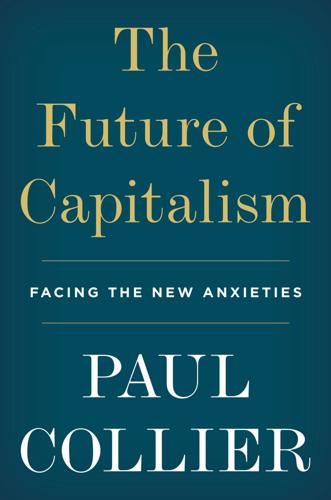
The Future of Capitalism: Facing the New Anxieties
by
Paul Collier
Published 4 Dec 2018
Experiments show that we rely more on stories than on direct observation or tuition. By joining them up into a causal chain, actions that are not in our immediate self-interest may then look rational, creating enlightened self-interest. At its best, this expands our knowledge. At its worst, it creates a rupture between reality and what we believe – narratives as ‘fake news’.15 True or false, stories are powerful. In their devastating analysis of the financial crisis, two Nobel Laureates, George Akerlof and Robert Shiller, conclude that ‘stories no longer merely explain the facts, they are the facts’.16 What is true of financial crises turns out also to apply to the outbreak of mass violence.
…
To locate a specific entry, please use your ebook reader’s search tools. 3G mobile phone network, 88 Abedi, Salman, 212, 213 abortion, 99, 102 AfD (Alternative for Germany), 5 Africa, 8, 110–11, 192, 193 capital flight, 208 HIV sufferers in, 120–21 need for modern firms, 37 and World Bank/IMF, 118† youth’s hope of escape to Europe, 121 African Americans, 13 Akerlof, George, 18, 34, 35, 50–51 Amazon, 87, 91, 146, 147 anger management programmes, 160 Apple, 148 asymmetric information, 88, 90, 185 auction theory, 146–7, 148 Bank of England, 39 Bear Stearns, 71, 75, 86 belief systems and belonging, 34, 40–41, 42, 53–6, 165, 211–15 CEO compensation committees, 77–8 Clark’s ‘family culture’, 107–8 the ethical family, 97–8, 99–105, 108, 109, 210 formation through narratives, 34, 40–41, 42, 53–6, 165, 211–15 GM-Toyota comparisons, 72–4 and ISIS, 42 Johnson & Johnson’s Credo, 39–40, 40*, 41, 72, 74*, 79 and leadership, 41–2, 43, 95 of personal fulfilment, 28, 99, 100–101, 102, 103, 108–9, 213 polarization within polities, 38, 63, 202–5 and schools, 165 Theory of Signalling, 41, 43, 53, 63, 95 and trust, 27, 29*, 48, 53–4, 55–6, 59, 63, 73–4, 79, 94–5, 210 see also belonging, narrative of; reciprocity value-based echo-chambers, 38, 61–2, 64–5, 212, 215 see also nationalism belonging, narrative of absent from Utilitarian discourse, 16, 59, 66–7, 210–11 avoided by politicians, 66–7, 68, 211, 215 as a basic drive, 27, 31, 42–3, 65, 66 and belief systems, 34, 40–41, 42, 53–6, 211–15 in Bhutan, 37† civil society networks/groups, 180–81 and ‘common knowledge’, 32–3, 34, 54, 55, 66, 212 families as natural units for, 32, 97–8, 104 heyday of the ethical state, 49, 68, 114 and home ownership, 68, 181–2, 184 and ISIS, 42, 212, 213 and language, 32, 33, 54, 57 and mutual regard/reciprocity, 25, 40–41, 49, 53–6, 67, 68, 98, 181, 182, 210–11, 212–13 place-based identity, 51–6, 65–8, 211–14, 215 and purposive action, 68, 98, 114, 211, 212, 213 and salient identity, 51–6 Bennett, Alan, The History Boys, 7* Bentham, Jeremy, 9–10, 12, 13 Berlusconi, Silvio, 14 Besley, Tim, 18–19, 35 Betts, Alex, 27 BHS, 80, 172 Bhutan, 37†, 63 Biafra, 58 Bitcoin, 37–8, 193 Blackpool, 4 Bonhoeffer, Dietrich, Letters and Papers from Prison, 108 The Bottom Billion (Collier), 27 Brazil, 58 Brexit vote (June 2016), 5, 125, 131, 196, 215 British Academy, 7 British Motor Corporation, 74 Brooks, David, The Road to Character, 108 Buiter, Willem, 186 Bush, George W., 120–21 business zones, 150 ‘Butskellism’, 49* Cadbury, 77 Cameron, David, 205 Canada, 22 capitalism competition, 21, 25, 56, 85, 86 ‘creative destruction’ concept, 21 current failings of, 4–5, 17, 25, 42, 45–6, 48, 201, 212–13 and decline of social trust, 5, 45–6, 48, 55, 59, 69 as essential for prosperity, 4–5, 18, 20, 25, 201 and families, 37 first mover advantage, 148 and greed, 10, 19, 25–7, 28, 31, 42, 58, 69, 70†, 81, 95 and Marx’s alienation, 17–18 and oppositional identities, 56, 74 vested interests, 85, 86, 135–6, 207 see also firms Catalan secession movement, 58 causality, narrative of, 33, 34 CDC Group, 122, 149* Chaucer, Geoffrey, The Canterbury Tales, 129 Chicago, University of, 166 childhood adoption, 110–11 children in ‘care’, 104, 105, 110, 111, 157 children ‘reared by wolves’, 31–2 cognitive development, 105–6, 170, 175–6 fostering, 104, 105, 111 identity acquisition, 32 impact of parental unemployment, 160–61 learning of norms, 33, 35, 107–8 non-cognitive development, 105, 163, 169–70, 171–3, 174, 175–6 ‘rights of the child’ concept, 103–4 in single-parent families, 101, 102, 104–5, 155, 160 trusted mentors, 169–70 see also family China, 118–19, 149, 203 Chira, Susan, 52–3 Chirac, Jacques, 14, 120–21 Christian Democratic parties, 5, 14 Citigroup, 186 Clark, Gregory, The Son Also Rises, 106–8 Clarke, Ken, 206 class divide assortative mating among new elite, 99–100, 154, 188–9 author’s proposed policies, 19–20, 21, 183–4, 187–8, 190, 207–8 and breadth of social networks, 169 and Brexit vote, 5, 196 and cognitive development, 105–6 divergence dynamic, 7, 18, 48, 98–108, 154–61, 170–71, 172–80, 181–90 ‘elite’ attitudes to less-well educated, 4, 5, 12, 16, 53, 59, 60–61, 63 and family life, 20, 98, 99–106, 157–62 and fracture to skill-based identities, 3–5, 51–6, 78 and home ownership, 68, 181, 182–3 need for socially mixed schools, 164–5 and non-cognitive development, 105, 163, 169–70, 171–3, 174, 175–6 and parental hothousing, 100, 101, 105–6 post-school skills development, 170–76 pre-emptive support for stressed families, 20, 155, 157–60, 161–3, 208 and reading in pre-teens, 167–9 and recent populist insurgencies, 5 retirement insecurities, 179–80 and two-parent families, 155–6, 157 unravelling of shared identity, 15, 50, 51–6, 57*, 58–61, 63, 215 see also white working class climate change, 44, 67, 119 Clinton, Hillary, 5, 9, 203–4 coalition government, UK (2010–15), 206 cognitive behavioral therapy, 160 Cold War, 113, 114, 116 end of, 5–6, 115, 203 Colombia, 120 communism, 32, 36–7, 85–6 communitarian values care, 9, 11, 12, 16, 29, 31, 42, 116 fairness, 11, 12, 14, 16, 29, 31, 34, 43, 116, 132–3 hierarchy, 11, 12, 16, 38–9, 43, 99–100 left’s abandonment of, 16, 214* liberty, 11, 12, 16, 42 loyalty, 11, 12, 16, 29, 31, 34, 42–3, 116 new vanguard’s abandonment of, 9, 11–13, 14–15, 16, 17, 49–50, 113, 116–18, 121, 214 post-war settlement, 8–9, 49, 113–16, 122 and reciprocal obligations, 8–9, 11–12, 13, 14, 19, 33, 34, 40–41, 48–9, 201, 212–15 roots in nineteenth-century co-operatives, 8, 13, 14, 201 sanctity, 11, 16, 42–3 Smith and Hume, 21–2† values and reason, 29–30, 43–4 see also belonging, narrative of; obligation, narrative of; reciprocity; social democracy Companies Act, UK, 82 comparative advantage, 20, 120, 192, 194 Confederation of British Industry (CBI), 79 conservatism, 30, 36 Conservative Party, 14, 49, 205, 206 contraception, 98–9, 102 co-operative movement, 8, 13, 14, 201 Corbyn, Jeremy, 202, 204–5 Crosland, Anthony, The Future of Socialism, 17, 18, 19 Cuban Missile Crisis (1962), 114 debutante balls, 188 Denmark, 63, 178, 214* Descartes, Rene, 31 Detroit, 128, 129, 144 Deutsche Bank, 78, 185 development banks, 149–50 Development Corporations Act (1981), 150 Dickens, Charles, Bleak House, 108 digital networks detachment of narratives from place, 38, 61–2 economies of scale, 86–7 global e-utilities, 37, 38, 86–7, 89–90, 91 social media, 27, 61, 87, 173, 207, 215 value-based echo-chambers, 38, 61–2, 64–5, 212, 215 Draghi, Mario, 153 Dundee Project, 161–2 Dutch Antilles, 193 East Asia, 147, 192 eBay, 87 economic man, 10, 19, 25, 26–7, 31, 34–5, 196, 209, 210, 215 economic rent theory, 19, 91, 133–9, 140–44, 186–8, 192, 195, 207 education and collapse of social democracy, 50, 52, 53, 54, 55, 59, 63 and empathy, 12 and European identity, 57* expansion of universities, 99–100, 127 and growth of the middle class, 100 inequality in spending per pupil, 167 mis-ranking of cognitive and non-cognitive training, 174–6 need for socially mixed schools, 164–5 post-school skills development, 170–76 pre-school, 105–6, 163–4 quality of teaching, 165–6 reading in pre-teens, 167–9 and shocks to norms of ethical family, 98, 99–105 symbols of cognitive privilege, 175 teaching methods, 166–7 vocational education, 171–6 zero-sum aspects of success, 189 electoral systems, 206 Emerging Market economies, 129, 130–31 empires, age of, 113 The Enigma of Reason (Mercier and Sperber), 29 enlightened self-interest, 33, 40*, 97–8, 101, 109, 112, 113, 114, 117, 184, 213 Enron, 80 ethnicity, 3, 20, 56, 62, 64, 65, 211 Europe Christian Democrats in, 5, 14 class divides, 3, 4, 5, 125 decline in social trust, 45 and knowledge industries, 192 metropolitan-provincial divides, 3, 4, 125 and migration, 121, 197 and shared identity, 57–8, 64, 66, 125 social democracy in, 8–9, 49, 50 European Central Bank, 153 European Commission, 57 European Investment Bank, 149 European Union (EU, formerly EEC), 66, 67, 114, 115, 116, 117 Brexit vote (June 2016), 5, 125, 131, 196, 215 Eurozone crisis, 153 public policy as predominantly national, 212 universities in, 170 evolutionary theory, 31, 33†, 35–6, 66 externalities, 145–6 Facebook, 87 Fairbairn, Carolyn, 79 fake news, 33–4 family, 19 African norms, 110–11 benefits for single parents, 160 Clark’s ‘family culture’, 107–8 entitled individual vs family obligation, 99–103, 104–6, 108–9, 210 equality within, 39, 154 erosion of mutual obligations, 101–2, 210 identity acquisition, 32 ideologies hostile to, 36–7 impact of unemployment/poverty, 4, 7, 160–61 importance of, 36, 37 and increased longevity, 110, 161 in-kind support for parenting, 161 nuclear dynastic family, 102, 110, 154 one-parent families, 101, 102, 104–5, 155, 160 parental hothousing, 100, 101, 105–6 post-1945 ethical family, 97–8, 99–105, 108, 210 pressures on young parents, 159–60, 161–3 and public policy, 21, 154–5, 157–70, 171–3, 177, 209 and reciprocity, 97–8, 101, 102 shocks to post-1945 norms, 98–105 shrinking of extended family, 101–2, 109–10, 161 social maternalism concept, 154–5, 157–8, 190 two-parent families as preferable, 155–6, 157 see also childhood; marriage Farage, Nigel, 202 fascism, 6, 13*, 47, 113 Federalist papers, 82 feminism, 13, 99 Fillon, François, 204 financial crisis, global (2008–9), 4, 34, 71, 160 no bankers sent to gaol for, 95–6 financial sector, 77–9, 80–81, 83–5 asymmetric information, 88, 185 co-ordination role, 145–6 economies of scale, 87 localized past of, 84, 146 toxic rivalries in, 189 trading in financial assets, 78–9, 84, 184–5, 186, 187 Finland, 63 firms, 19, 21, 69 CEO pay, 77–8, 79, 80–81 competition, 21, 25, 56, 85, 86 control/accountability of, 75–81, 82–5 cultures of good corporate behaviour, 94–5 demutualization in UK, 83, 84 deteriorating behaviour of, 18, 69, 78, 80–81 economies of scale, 17–18, 37, 86–7, 88–91, 126–7, 144–5, 146–7 ethical, 70–71, 172, 209–10 and ethical citizens, 93–4, 95, 96 failure/bankruptcy of, 70, 71, 72, 74, 75–6 flattening of hierarchies in, 39 Friedman’s profit nostrum, 69–70, 71, 76, 78–9, 210 global e-utilities, 37, 38, 86–7, 89–90, 91 ideologies hostile to, 37, 81 low productivity-low cost business model, 173–4 ‘maximising of shareholder value’, 69–70, 76, 79, 82–3 ‘mutuals’, 83 need for bankslaughter crime, 95–6 new network features, 86–7 policing the public interest, 93–4 public dislike of, 69, 95–6 public interest representation on boards, 92–3 regulation of, 87–90, 174 reward linked to short-term performance, 77, 78–81 sense of purpose, 39–40, 41, 70–75, 80–81, 93–4, 96 shareholder control of, 76–7, 79, 80, 82–3 societal role of, 81–2, 92–3, 96, 209–10 utility services, 86, 89, 90 worker interests on boards, 83, 84–5 Fisher, Stephen, 196* Five Star, 125 Ford, 70, 71 France, 7, 63, 67, 114 écoles maternelles in, 164 labour market in, 176, 189 pensions policy, 180 presidential election (2017), 5, 9, 204 universities in, 170 working week reduced in, 189 Frederiksen, Mette, 214* Friedman, Milton, 15, 69–70, 71, 76 The Full Monty (film), 7, 129 G20 group, 118 G7 group, 118 G8 group, 194 Ganesh, Janan, 125 Geldof, Bob, 169 General Agreement on Tariffs and Trade (GATT), 114, 115, 116–17 General Motors (GM), 72, 73–4, 75, 86, 172 geographic divide, 3, 16, 18, 19, 215 author’s proposed policies, 19, 207 and Brexit vote, 125, 196 broken cities, 4, 7, 19, 48, 125, 129–30, 147–9 business zones, 150 co-ordination problem over new clusters, 145–50, 207 decline of provincial cities, 4, 7, 19, 48, 125, 129–30, 131, 144–5 economic forces driving, 126–30 and education spending, 167 first mover disadvantage, 148–9 ideological responses, 130–32 investment promotion agencies, 150–51 and local universities, 151–2 and metropolitan disdain, 125 need for political commitment, 153 as recent and reversible, 152–3 regenerating provincial cities, 19, 142, 144–50 and spending per school pupil, 167 widening of since 1980, 125 George, Henry, 133–6, 141 Germany 2017 election, 5, 205 local banks in, 146 Nazi era, 57 and oppositional identities, 56–7 oversight of firms in, 76 post-war industrial relations policy, 94–5 and post-war settlement, 114 re-emergence of far right, 5 rights of refugees in, 14 ‘social market economy’, 49 TVET in, 171–2, 174, 175 vereine (civil society groups), 181 worker interests on boards, 84–5 global divide, 7–8, 20, 59–60, 191–8, 208 globalization, 4, 18, 20, 126–7, 128, 129, 130–31, 191–8 Goldman Sachs, 70†, 83–4, 94 Google, 87 Great Depression (1930s), 114 Green, Sir Philip, 80 Grillo, Beppe, 202 ‘Grimm and Co’, Rotherham, 168–9 Gunning, Jan Willem, 165 Haidt, Jonathan, 11–12, 14, 16, 28, 29, 132–3 Haiti, 208 Halifax Building Society, 8, 84 Hamon, Benoît, 9, 204 Harvard-MIT, 7, 152 Hershey, 77 HIV sufferers in poor countries, 120–21 Hofer, Norbert, 202 Hollande, Francois, 9, 204 Hoover, 148 housing market, 181–4 buy-to-let, 182, 183, 184 and lawyers, 187 mortgages, 84, 176, 182, 183–4 proposed stock transfer from landlords to tenants, 184 Hume, David, 14, 21, 21–2†, 29 Huxley, Aldous, Brave New World (1932), 5 Iceland, 63 Identity Economics, 50–56, 65–7 ideologies based on hatred of ‘other’ part of society, 43, 56, 213, 214 ‘end of history’ triumphalism, 6, 43–4 hostile to families, 36–7 hostile to firms, 37, 81 hostile to the state, 37–8 and housing policy, 183 and migration, 198 New Right, 14–15, 26, 81, 129 norms of care and equality, 116, 132–3 polarization of politics, 38, 63, 202–5 pragmatic eschewal of, 17, 18, 21, 22, 29–30 and principle of reason, 9, 13, 14, 15, 21, 43 Rawlsian vanguard, 13–14, 30, 49–50, 53, 67, 112, 113, 201, 202, 203, 214 return of left-right confrontation, 5, 6, 81, 202–5 and rights, 12–14, 44, 112 seduction of, 6 and twentieth century’s catastrophes, 5–6, 22 views on an ethical world, 112 see also Marxism; rights ideology; Utilitarianism IFC (International Finance Corporation), 122 Imperial Chemical Industries (ICI), 69–70, 75 India, 118–19 individualism entitled individual vs family obligation, 99–103, 104–6, 108–9, 210 fulfilment through personal achievement, 28, 99, 100–101, 102, 103, 108–9, 213 New Right embrace of, 14–15, 53, 81, 214–15 as rampant in recent decades, 19, 214–15 reciprocity contrasted with, 44–5 and withering of spatial community, 61–2 industrial revolution, 8, 126 inequality and assortative mating among new elite, 99–100, 154, 188–9 and divergence dynamic, 7, 18, 48, 98–108, 154–61, 170–71, 172–80, 181–90 and financial sector, 185 and geographic divide, 3, 7–8, 20, 125 global divide, 7–8, 20, 59–60, 191–8, 208 persistence of, 106–8 Rawls’ disadvantaged groups, 3–4, 13–14, 16, 50, 53, 121, 203–4, 214 and revolt against social democracy, 15–16 rising levels of, 3–5, 106, 125, 181, 190 and Utilitarian calculus, 132 innovation, 185–6, 208 International Monetary Fund (IMF), 114, 117 international relations achievement of post-WW2 leaders, 113–16, 122 building of shared identity, 114–16 core concepts of ethical world, 112, 113–14 erosion of ethical world, 116–18 expansion of post-war ‘clubs’, 116–18, 210 new, multipurpose club needed, 118–19, 122 and patriotism narrative, 67 situation in 1945, 112–13, 122 investment promotion agencies, 150–51 Irish Investment Authority, 151 Islamist terrorism, 42, 212, 213 Italy, 4, 58, 160 James, William, 29* Janesville (US study), 178 Japan, 72–3, 94, 101, 149, 192 John Lewis Partnership, 83, 172 Johnson, Robert Wood, 39–40, 72 Johnson & Johnson, 39–40, 41, 72, 74*, 79 Jolie, Angelina, 112 JP Morgan, 71* Juppé, Alain, 204 Kagame, Paul, 22 Kay, John, 82*, 84, 211 Keynes, John Maynard, 115 General Theory (1936), 47 kindergartens, 163 Knausgård, Karl Ove, 173 knowledge revolution, 126, 127–8 Kranton, Rachel, 35, 50–51 Krueger, Anne, 141 Krugman, Paul, 47 labour market flexicurity concept, 178 function of, 176–7 and globalization, 192, 194–6 and immigration, 194, 195, 196 investment in skills, 176–7 job security, 176, 177 and low productivity-low cost business model, 173–4 minimum wage strategies, 147, 174, 176, 180 need for reductions in working hours, 189 need for renewed purpose in work, 190 regulation of, 174, 189 and robotics revolution, 178–9 role of state, 177–8, 189 see also unemployment Labour Party, 49, 206 Marxist take-over of, 9, 204–5 language, 31, 32, 33, 39–40, 54, 57 Larkin, Philip, 99, 156 lawyers, 13–14, 45 Buiter’s three types, 186 and shell companies, 193, 194 surfeit of, 186–7 taxation of private litigation proposal, 187–8 Le Pen, Marine, 5, 63, 125, 202, 204 leadership and belief systems, 41–2, 43, 95 building of shared identity, 39–42, 49, 68, 114–16 changing role of, 39 and flattening of hierarchies, 39 and ISIS, 42 political achievements in post-war period, 113–16, 122 and pragmatist philosophy, 22 and shared purpose in firms, 39–40, 41, 71–5 strategic use of morality, 39–40, 41 transformation of power into authority, 39, 41–2, 57 League of Nations, 116 Lee Kwan Yew, 22, 147 Lehman Brothers, 71*, 76 liberalism, 30 libertarianism, 12–13, 15 New Right failures, 16, 21 Silicon Valley, 37–8 lobbying, 85, 141 local government, 182, 183 London, 3, 125, 127–8, 165–6, 193 impact of Brexit on, 131, 196 migration to, 195–6 Macron, Emmanuel, 67, 204 Manchester terror attack (2017), 212, 213 market economy, 19, 20, 21, 25, 48 and collapse of clusters, 129–30, 144–5 failure over pensions, 180 failure over skill-formation, 173–4 mutual benefit from exchange, 28 market fundamentalists, 147, 150 marriage assortative mating, 35, 99–100, 154, 188–9 cohabitation prior to, 99, 100 as ‘commitment technology’, 109, 155–6 divorce rates, 98, 99, 100–101, 102, 103 and female oppression, 156 religious associations, 109, 156 and rent-seeking, 141 ‘shotgun weddings’, 103 and unemployment, 103 Marxism, 13*, 26, 30, 43, 47, 113, 203, 214 alienation concept, 17–18 and the family, 36–7 late capitalism concept, 6 takeover of Labour Party, 9, 204–5 and ‘useful idiots’, 205* view of the state, 37 Maxwell, Robert, 80 May, Theresa, 205 Mayer, Colin, 18, 70 media celebrities, 6, 112, 204 Mélenchon, Jean-Luc, 5, 202, 204 mental health, 157, 158–9, 162 Mercier, Hugo, 29 meritocratic elites, 3–4, 5, 12–17, 20 Rawlsian vanguard, 13–14, 30, 49–50, 53, 67, 112, 113, 201, 202, 203, 214 Utilitarian vanguard, 9–10, 11–13, 15–16, 18, 52, 53, 59, 66–7, 209 see also Utilitarianism WEIRD (Western, Educated, Industrial, Rich and Developed), 3–4, 12, 14, 16, 17, 20, 116, 121, 133, 214* and white working class, 5, 16 Merkel, Angela, 14, 205 metropolitan areas, 3, 4, 7, 16, 19, 48, 125 co-ordination problem over new clusters, 145–50, 207 economies of agglomeration, 18, 19, 129, 131, 133–44, 195, 196, 207 gains from public goods, 134–5, 138–9 migration to, 195–6 political responses to dominance of, 131–2 scale and specialization in, 126–8, 130, 144–5 and taxation, 131, 132–43, 187, 207 Middle East, 192 Middleton, Kate, 188–9 migration, 121, 194–8, 203 as driven by absolute advantage, 20, 194–5, 208–9 and housing market, 182, 183 Mill, John Stuart, 9–10 minimum wage strategies, 147, 174, 176, 180 Mitchell, Andrew, 188 Mitchell, Edson, 78 modernist architecture, 12 Monarch Airlines, 75 monopolies, natural, 86–7, 88 and asymmetric information, 88, 90 auctioning of rights, 88–9 taxation of, 91–2 utility services, 86, 89, 90 ‘moral hazard’, 179 morality and ethics deriving from values not reason, 27, 28–9, 42–3 and economic man, 10, 19, 25, 26–7, 31, 34–5 and empathy, 12, 27 evolution of ethical norms, 35–6 Haidt’s fundamental values, 11–12, 14, 16, 29, 42–3, 132–3 and market economy, 21, 25, 28, 48 and modern capitalism, 25–6 and new elites, 3–4, 20–21 Adam Smith’s theories, 26–8 use for strategic purposes, 39–40, 41 and Utilitarianism, 9–10, 11, 14, 16, 55, 66–7, 209, 214 motivated reasoning, 28–9, 36, 86, 144, 150, 167 Museveni, President, 121 narratives and childhood mentors, 169–70 and consistency, 41, 67, 81, 96 conveyed by language, 31, 33, 57 detachment from place by e-networks, 38, 61–2 and heyday of social democracy, 49 and identity formation, 32 mis-ranking of cognitive and non-cognitive training, 174–6 moral norms generated from, 33, 97–8 and purposive action, 33–4, 40–41, 42, 68 and schools, 165 of shared identity, 53–6, 81 use of by leaders, 39–42, 43, 49, 80–81 see also belonging, narrative of; obligation, narrative of; purposive action National Health Service (NHS), 49, 159 national identity and citizens-of-the-world agenda, 59–61, 63, 65 contempt of the educated for, 53, 59, 60–61, 63 and distinctive common culture, 37†, 63 established in childhood, 32 esteem from, 51–3 fracture to skill-based identities, 3–5, 51–6, 78 legacy of Second World War, 15, 16 methods of rebuilding, 64, 65–8, 211–15 and new nationalists, 62–3, 67, 203, 204, 205 patriotism narrative, 21, 63, 67, 215 place-based identity, 51–6, 65–8, 211–14, 215 and polarization of society, 54–5 and secession movements, 58 unravelling of shared identity, 15, 50, 51–6, 57*, 58–61, 63, 215 and value identity, 64–5 National Review, 16 nationalism, 34 based on ethnicity or religion, 62–3 capture of national identity notion by, 62, 67, 215 and narratives of hatred, 56, 57, 58–9 and oppositional identities, 56–7, 58–9, 62–3, 68, 215 traditional form of, 62 natural rights concept, 12, 13 Nestlé, 70, 71 Netherlands, 206 networked groups as arena for exchanging obligations, 28 and ‘common knowledge’, 32–3, 34, 54, 55, 66, 212 decline of civil society networks/ groups, 180–81 and early man, 31 evolution of ethical norms, 35–6 exclusion of disruptive narratives, 34 families as, 97–8 leadership’s use of narratives, 39–42, 49 narratives detached from place, 38, 61–2 value-based echo-chambers, 38, 61–2, 64–5, 212, 215 see also family; firms Neustadt, Richard, 39* New York City, 5, 125, 128, 143–4, 193 NGOs, 71, 118, 157–8 ‘niche construction’, 35*, 36* Nigeria, 58 Noble, Diana, 149* Norman, Jesse, 21–2† North Atlantic Treaty Organization (NATO), 114, 115, 116, 117 North Korea, 85 Northern League, Italy, 58 Norway, 63, 206, 208–9 Nozick, Robert, 14–15 obligation, narrative of, 11, 12–13, 16, 19, 29, 33 and collapse of social democracy, 53–6, 210 entitled individual vs family obligation, 99–103, 104–6, 108–9, 210 in ethical world, 112, 113–22 and expansion of post-war ‘clubs’, 117–18, 210 fairness and loyalty instilled by, 34 heyday of the ethical state, 48–9, 68, 196–7 and immigration, 196–7 and leadership, 39, 40–41, 49 ‘oughts’ and ‘wants’, 27, 28, 33, 43 and secession movements, 58 and Adam Smith, 27, 28 see also reciprocity; rescue, duty of oil industry, 192 Organization for Economic Co-operation and Development (OECD), 114–15, 125 Orwell, George, Nineteen Eighty-Four (1949), 5 Oxford university, 7, 70, 100 Paris, 5, 7, 125, 128, 174, 179 patriotism, 21, 63, 67, 215 Pause (NGO), 157–8 pension funds, 76–7, 79–81, 179–80, 185 Pew Research Center, 169 Pinker, Steven, 12* Plato, The Republic, 9, 11, 12, 15, 43 Playboy magazine, 99 political power and holders of economic rent, 135–6, 144 leadership selection systems in UK, 204–5, 206 minimum age for voting, 203 need to restore the centre, 205–7 polarization within polities, 38, 63, 202–5 polities as spatial, 38, 61–2, 65, 68, 211–13 and shared identity, 8, 57–61, 65, 114–16, 211–15 transformation into authority, 41–2, 57–8 trust in government, 4, 5, 48, 59, 210, 211–12 populism, political, 6, 22, 43, 58–9, 202 and geographic divide, 130–31 headless-heart, 30, 60, 112, 119, 121, 122 media celebrities, 6, 112, 204 pragmatism as opposed to, 30 and US presidential election (2016), 5, 203–4 pragmatist philosophy, 6, 9, 19, 21, 21–2†, 46, 201 author’s proposed policies, 19–20, 21, 207–15 limitations of, 30 and Macron in France, 204 and migration, 198 and post-war settlement, 113, 116, 122 and social democracy, 18, 201–2 successful leaders, 22 and taxation, 132, 207 and teaching methods, 166–7 values and reason, 29–30, 43–4 proportional representation, 206 protectionism, 113, 114, 130–31 psychology, social, 16, 54 co-ordination problems, 32–3 esteem’s trumping of money, 174 Haidt’s fundamental values, 11–12, 14, 16, 29, 42–3, 132–3 narratives, 31, 32, 33–4, 38, 39–42, 49, 53–6 norms, 33, 35–6, 39, 42–3, 44, 97–8, 107–8 ‘oughts’ and ‘wants’, 27, 28, 33, 43 personal achievement vs family obligation, 99–103, 104–6, 108–9, 210 ‘theory of mind’, 27, 55 Public Choice Theory, 15–16 public goods, 134–5, 138–9, 186, 202, 213 public ownership, 90 Puigdemont, Carles, 202 purposive action, 18, 21, 25, 26, 34, 40*, 53–4, 68, 112, 211–13 autonomy and responsibility, 38–9 and belonging narrative, 68, 98, 114, 211, 212, 213 in Bhutan, 37† decline in ethical purpose across society, 48 and heyday of social democracy, 47, 49, 114 and narratives, 33–4, 40–41, 42, 68 in workplace, 190 Putnam, Robert, 45–6, 106 Bowling Alone, 181 ‘quality circles’, 72–3 Rajan, Raghuram, 178 Rand, Ayn, 32 rational social woman, 31, 50–51, 196 Rawls, John, 13–14 Reagan, Ronald, 15, 26 Reback, Gary, 90 reciprocity, 9, 19, 31, 212–15 and belonging, 25, 40–41, 49, 53–6, 67, 68, 98, 181, 182, 210–11, 212–13 and collapse of social democracy, 11, 14, 53–6, 58–61, 201, 210 and corporate behaviour, 95 in ethical world, 112, 113–15, 116 and expansion of post-war ‘clubs’, 117–18, 210 fairness and loyalty as supporting, 29, 31, 34 and the family, 97–8, 101, 102 and geographic divide, 125 heyday of the ethical state, 48–9, 68, 96, 196–7, 201 and ISIS, 42 Macron’s patriotism narrative, 67 nineteenth-century co-operatives, 8 rights matched to obligations, 44–5 and three types of narrative, 33, 34, 40–41 transformation of power into authority, 39, 41–2, 57–8 Refuge (Betts and Collier), 27 refugees, 14, 27, 115, 119–20, 213 regulation, 87–90 and globalization, 193–4 of labour market, 174 religion, 56–7, 62–3, 109, 156 religious fundamentalism, 6, 30, 36–7, 212, 213, 215 rent-seeking concept, 140–41, 150, 186, 187–8, 195 rescue, duty of, 40, 54, 119–21, 210, 213 as instrument for ethical imperialism, 117–18, 210 as not matched by rights, 44, 45, 117 and post-war settlement, 113, 115–16 restoring and augmenting autonomy, 121–2 and stressed young families, 163 term defined, 27, 112 value of care as underpinning, 29 retirement pensions, 179–80 rights ideology and corresponding obligations, 44–5 emergence in 1970s, 12–14 human rights lobby, 112, 118, 118* individualism as rampant in recent decades, 19, 214–15 and lawyers, 13–14, 45 Libertarian use of, 12–13, 14–15 natural rights concept, 12, 13 and New Right, 12–13, 14–15, 53 Rawls’ disadvantaged groups, 3–4, 13–14, 16, 50, 53, 112, 121, 203–4, 214 ‘rights of the child’ concept, 103–4 and Utilitarian atate, 12–14 see also individualism Romania, communist, 32, 36 Rotherham, ‘Grimm and Co’, 168–9 rule of law, 138–9, 186 Rwanda, 22 Salmond, Alex, 202 Sandel, Michael, 105 Sanders, Bernie, 9, 64, 202, 203 Sarkozy, Nicolas, 204 Schultz, Martin, 14 Schumpeter, Joseph, 21* Scotland, 58 Seligman, Martin, 108–9 sexual behaviour birth-control pill, 98–9, 102 and class divide, 99, 102, 155–6 concept of sin, 156 and HIV, 121 and stigma, 156–8 sexual orientation, 3, 45 Sheffield, 7, 8, 126, 128–9, 131, 151, 168, 192 shell companies, 193, 194 Shiller, Robert, 34 Sidgwick, Henry, 55 Signalling, Theory of, 41, 43, 53, 63, 95 Silicon Valley, 37–8, 62, 145, 152, 164 Singapore, 22, 147 Slovenia, 58 Smith, Adam, 14, 21, 21–2†, 174 and mutual benefit from exchange, 28 and pursuit of self- interest, 26–7, 40 on reason, 29 The Theory of Moral Sentiments (1759), 27, 28, 174 Wealth of Nations (1776), 26, 28, 174 Smith, Vernon, 28 social democracy ‘Butskellism’, 49* collapse of, 9, 11, 50, 51–6, 116–18, 201–2, 210 communitarian roots, 8–9, 11, 13, 14, 17, 48–9, 201 and group identities, 3–4, 13–14, 51–6 heyday of, 8–9, 15, 17, 47, 48–9, 68, 96, 196–7, 201, 210 and housing, 181–2 influence of Utilitarianism, 9, 10, 14, 16, 18, 49–50, 201, 203, 214 Libertarian challenge, 12–13, 14–15 New Right abandonment of, 14–15, 16, 26, 53 and Public Choice Theory, 15–16 replaced by social paternalism, 11–13, 49–50, 209–10 and rights ideology, 12–14 and secession movements, 58 shared identity harnessed by, 15, 196–7 unravelling of shared identity, 15, 50, 51–6, 57*, 58–61, 63, 215 and Utilitarianism, 214 social maternalism concept, 21, 154–5, 190 free pre-school education, 163–4 mentoring for children, 169–70, 208 support for stressed families, 20, 155, 157–60, 161–3, 208 social media, 27, 61, 87, 173, 207, 215 social paternalism backlash against, 11–13, 15–16 as cavalier about globalization, 20 and child-rearing/family, 105, 110, 154–5, 157, 158, 159, 160, 190, 209 replaces social democracy, 11–13, 49–50, 209–10 ‘rights of the child’ concept, 103–4 and Utilitarian vanguard, 9–10, 11–13, 15–16, 18, 66–7, 209 social services, 159 scrutiny role, 162 Solow, Robert, 141 Soros, George, 15* South Africa, 85 South Asia, 192 South Korea, 129, 130–31 South Sudan, 192 Soviet Union, 114, 115, 116, 203 Spain, 58, 160 specialization, 17–18, 36, 126–8, 130, 144–5, 192 Spence, Michael, 41, 53, 95 Sperber, Dan, 29 St Andrews University, 189 Stanford University, 145, 152 Starbucks, 193 the state, 19 ethical capacities of, 11, 20–21, 48–9 failures in 1930s, 47, 48 ideologies hostile to, 37–8 and pre-school education, 163–4 and prosperity, 37 public policy and job shocks, 177–8 public policy on the family, 21, 154–5, 157–70, 171–3, 177, 209 public-sector and co-ordination problem, 147–8 social maternalism policies, 21, 157, 190 Utilitarian takeover of public policy, 10–12, 13–14, 15–17, 18, 49–50, 113, 201 Stiglitz, Joseph, 56 Stoke-on-Trent, 129 Stonehenge, 64 Sudan, 8 Summers, Larry, 187 Sure Start programme, 164 Sutton, John, 151* Sweden, 178 Switzerland, 175, 206 Tanzania, 193 taxation and corporate globalization, 193, 194 of economic rents, 91–2, 187–8 ethics and efficiency, 132–43 on financial transactions, 187 generational differences in attitudes, 59 Henry George’s Theorem, 133–6, 141 heyday of the ethical state, 49 issues of desert, 132–3, 134–9 and the metropolis, 131, 132–43, 187, 207 and migration, 197 of natural monopolies, 91–2 ‘optimal’, 10 of private litigation in courts, 187–8 and reciprocity, 54, 55, 59 redesign of needed, 19 redistributive, 10, 11, 14, 49, 54, 55, 60, 197 of rents of agglomeration, 19, 132–44, 207 social maternalism policies, 21, 157 substantial decline in top rates, 55 tax havens, 62 Venables-Collier theory, 136–9 Teach First programme, 165–6 technical vocational education and training (TVET), 171–6 technological change, 4 robotics revolution, 178–9 and withering of spatial community, 61–2 see also digital networks telomeres, 155–6 Tepperman, Jonathan, The Fix, 22 Thatcher, Margaret, 15, 26 Thirty Years War, 56–7 Tirole, Jean, 177, 178 Toyota, 72–3, 74, 94, 172 trade unions, 173, 174, 176 Troubled Families Programme (TFP), 162 Trudeau, Pierre, 22 Trump, Donald, 5, 9, 63, 64, 86, 125, 136, 202, 204, 206, 215 Uber, 87 unemployment in 1930s, 47 and collapse of industry, 7, 103, 129, 192 impact on children, 160–61 older workers, 4, 103, 213 retraining schemes, 178 in USA, 160 young people, 4 Unilever, 70, 71 United Kingdom collapse of heavy industry, 7, 103, 129, 192 extreme politics in, 5 and falling life expectancy, 4 financial sector, 80, 83, 84–5 IMF bail-out (1976), 115 local banks in past, 146 northern England, 3, 7, 8, 84, 126, 128–9, 131, 151, 168, 192 shareholder control of firms, 76–7, 79, 80, 82–3 statistics on firms in, 37 universities in, 170, 172, 175* vocational education in, 172, 175† widening of geographic divide, 125 United Nations, 65, 112 ‘Club of 77’, 116 Security Council, 116 UNHCR, 115 United States breakdown of ethical family, 104–5 broken cities in, 129, 130 extreme politics in, 5, 63 and falling life expectancy, 4 financial sector, 83–4, 186 and global e-utilities, 89–90 growth in inequality since 1980, 125 heyday of the ethical state, 49 and knowledge industries, 192 labour market in, 176, 178 local banks in past, 146 oversight of firms in, 76 pessimism in, 5, 45–6 presidential election (2016), 5, 9, 203–4 Public Interest Companies, 93 public policy as predominantly national, 212 ‘rights of the child’ concept in, 103–4 Roosevelt’s New Deal, 47 statistics on firms in, 37 taxation in, 143–4, 144* unemployment in, 160 universities in, 170, 172, 173 weakening of NATO commitment, 117 universities in broken cities, 151–2 in EU countries, 170 expansion of, 99–100, 127 knowledge clusters at, 127, 151–2 low quality vocational courses, 172–3 in UK, 170, 172, 175* in US, 170, 172, 173 urban planning, post-war, 11–12 Utilitarianism, 19, 30, 49–50, 55, 108, 112, 121, 210–11 backlash against, 11–13, 201, 202 belonging as absent from discourse, 16, 59, 66–7, 210–11 care as key value, 12 and consumption, 10, 11, 16, 19–20, 209 equality as key value, 12, 13, 14, 15, 116, 132–3, 214 incorporated into economics, 10–11, 13–14, 16 influence on social democrats, 9, 10, 14, 16, 18, 49–50, 201, 203, 214 origins of, 9–10 paternalistic guardians, 9–10, 11–13, 66–7, 210 takeover of public policy, 10–12, 13–14, 15–17, 18, 49–50, 113, 201 and taxation, 10, 132*, 133 vanguard’s switch of identity salience, 52, 53, 59 Valls, Manuel, 204 Venables, Tony, 18, 136, 191* Venezuela, 120, 214 vested interests, 85–6, 135–6, 165, 166, 207 Volkswagen, 74–5 Walmart, 87 Warsi, Baroness Sayeeda, 65 Wedgwood, Josiah, 129 welfare state, 9, 48–9 unlinked from contributions, 14 well-being and happiness belonging and esteem, 16, 25, 27, 29, 31–3, 34, 42, 51–6, 97–8, 174 entitled individual vs family obligation, 108–9 and financial success, 26, 94 ‘ladder of life’, 25* poverty in Africa, 37 reciprocity as decisive for, 31 Westminster, Duke of, 136 white working class ‘elite’ attitudes to, 4, 5, 16 falling life expectancy, 4, 16 pessimism of, 5 William, Prince, 188–9 Williams, Bernard, 55* Wittgenstein, 62, 63 Wolf, Alison, 52–3, 155 World Bank, 115, 117, 118, 118*, 122 World Food Programme, 115 World Health Organization, 115 World Trade Organization (WTO), 116–17 Yugoslavia, 58 Zingales, Luigi, 178 Zuma, Jacob, 85 Copyright THE FUTURE OF CAPITALISM.
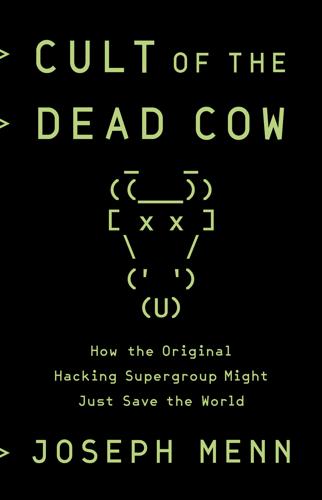
Cult of the Dead Cow: How the Original Hacking Supergroup Might Just Save the World
by
Joseph Menn
Published 3 Jun 2019
Stamos’s side won the fight only after DCLeaks posted phone numbers associated with financier and Russian nemesis George Soros, violating a Facebook policy on exposing personal information. After the election and before Trump took office, US intelligence agencies unanimously agreed that Russia had interfered to help Trump win and that it had spread fake news on Facebook in the effort. An internal Facebook task force looked into it and found mainly money-driven spammers trying to get people to their pages with slanted stories. Bigger priorities at Facebook were the coming elections in Western Europe, where France and Germany pressed for help. Working with France’s defense-only cybersecurity agency, ANSI, Facebook experts found GRU reconnaissance of campaign workers and tens of thousands of fake French accounts connected to Russia that amplified divisive stories.
…
Other tasks critical for human progress need to be done elsewhere, including small and mission-driven companies, universities, and nonprofits. It gets harder to keep the band together over time, but cDc’s impact lives on in those whom members hired, taught, and inspired. That said, a movement cannot control its children. The Citizen Lab and Tor are one thing, while Lulz Security and Gamma Group are another. Trolling and fake news also owe something to cDc, and neither is anything to be proud of. As I was nearing the end of the writing process, a moderately well-known security professional asked his Twitter followers for some current ethical issues facing the industry. His feed was inundated with questions. If you live where encryption is outlawed, do you help activists encrypt anyway?

Active Measures: The Secret History of Disinformation and Political Warfare
by
Thomas Rid
TASS reported on the Power order hoax on the same day; so did Radio Moscow, which broadcast the story into Britain, and tied it to the Berry letter. The next day, the clandestine radio station España Independiente—which claimed to be located in Spain, but was actually in Bucharest, Romania; it was the oldest Soviet clandestine radio operation, launched in 1941—spread the fake news story in Spanish without crediting any source.22 On November 20, Radio Moscow replayed the story, this time in Arabic, Turkish, and Japanese, again tying the Power order to the foresight of Frank Berry, whose purported warning had started the campaign. By then, the joke at the CIA was that in the Soviet mind, Frank Berry’s prophetic powers rivaled those of Marx and Lenin.23 But it was the KGB who had the last laugh on this matter.
…
The organization indeed ran in factory-like twelve-hour shifts, and had picked up speed—now the “production norms,” he said, demanded 135 comments of 200 characters per shift.13 The workers on the different floors did not make contact with one another inside the building, and interacted mainly during smoking breaks or over lunch and coffee. “You could have worked there for half a year being on the ground floor and making fake news and you would not have had a single occasion when you could chat with another guy who [wrote comments on it],” recounted another twenty-six-year-old former employee.14 The IRA’s labor was cheap, and some of the metrics it produced seemed to convince its funders. The troll farm was growing, and quickly.15 It also experimented with new formats.
…
The IRA was ramping up its American operations, and its arsenal included video production, memes, infographics, its own reporting, interviews, and analytics to drive operations—along with a few fake events. In a widely read story posted in early June 2015, The New York Times exposed “The Agency” to an English-speaking audience. The journalist Adrian Chen opened the piece by describing a fake news item, engineered from St. Petersburg, about a chemical explosion in Louisiana in late 2014: “‘A powerful explosion heard from miles away happened at a chemical plant in Centerville, Louisiana #ColumbianChemicals,’ a man named Jon Merritt tweeted.”17 The story in the Times harked back, without intending to do so, to the Times coverage of that big first American disinformation campaign from April 1930, the Grover Whalen forgeries.
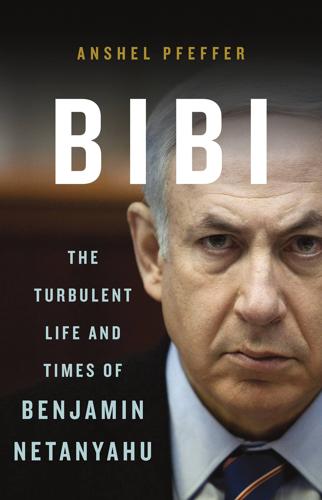
Bibi: The Turbulent Life and Times of Benjamin Netanyahu
by
Anshel Pfeffer
Published 30 Apr 2018
Most of the professional staff in his press office had been replaced by young online gunslingers, who helped Bibi overcome his technophobia and communicate with the public by Facebook and Twitter, bypassing the heads of the mainstream media. When Donald Trump came along, Netanyahu eagerly adopted his “fake news” terminology, branding with it most of Israel’s news organizations. AS 2016 BEGAN, Netanyahu was counting down the months until Obama’s departure. It had been seven long years, in which they had achieved little together. Obama had prevented Netanyahu from launching a war in Iran, which could well have drawn in the United States.
…
Netanyahu’s perpetual campaign mode also resembles the Trump presidential campaign, with its reliance on constantly stirring up resentment and divisions between parts of the electorate. Shortly after the election, Netanyahu began daily urging his aides to “be like Trump.” One Trump trait that the Netanyahu team was quick to adopt was branding unfavorable reports in the media as “fake news.”5 Trump, promising to build a wall on the US border with Mexico, had repeatedly mentioned Israel’s border fence as his model, saying, “Walls work. Just ask Israel.” Netanyahu, trying to curry favor, Tweeted, “President Trump is right. I built a wall along Israel’s southern border. It stopped all illegal immigration.
…
Public criticism intensified when tapes emerged of Yair, during a tour of Tel Aviv sex clubs, with his driver and bodyguards, talking to friends about the services of strippers and prostitutes. “Nothing will happen, because nothing happened,” became Netanyahu’s constant response in public to the allegations against them. In Likud rallies organized by his supporters, he launched into long rants against the “leftist fake news media” he said were behind the “unprecedented witch hunt” against him and his family. He made long lists of his achievements, punctuated with the refrain, “That, they don’t report!” He was determined not to resign. Even when in February 2018 the police recommended indicting him on multiple charges of bribery and fraud, he vowed to continue serving as prime minister.

War for Eternity: Inside Bannon's Far-Right Circle of Global Power Brokers
by
Benjamin R. Teitelbaum
Published 14 May 2020
My mind is too full for more of this right now, I thought to myself as I put the book in my bag and charted my path across the street and into the park, hopefully to find a secluded space to process and take some notes. I don’t know why, but I decided to look at the book one more time. I opened it, skipped to the title page, where I found a handwritten message. Dear Steve, Sorry for the trouble. The NYT and Newsweek took my words way out of context. But I hardly need to explain to you how fake news works. Thank you for all your efforts to Make America Great Again! Best wishes, Jason P.S. In case you’d ever like to have the meeting that Jellyfish planned to set up, call me . . . That’s odd. Why would Jason give Steve this book? Why would the two meet? And who was Jellyfish? I looked around.
…
Do they have any semblance of guilt? What about this? What about the fact that they came charging—they came charging with clubs in their hands swinging clubs? Do they have any problem? I think they do. As far as I’m concerned, that was a horrible, horrible day—wait a minute, I’m not finished, I’m not finished, fake news—that was a horrible day. I will tell you something. I watched those very closely, much more closely than you people watched it. And you had, you had a group on one side that was bad. And you had a group on the other side that was also very violent. And nobody wants to say that, but I’ll say it right now.

Bitcoin Billionaires: A True Story of Genius, Betrayal, and Redemption
by
Ben Mezrich
Published 20 May 2019
The Winklevoss twins were his perfect foils: buttoned-down “Men of Harvard,” privileged jocks who, in many ways easy to see, appeared to represent the “Establishment.” Today things seem different. Mark Zuckerberg is a household name. Facebook is ubiquitous, dominating much of the internet (even as it seems to be constantly embroiled in scandals ranging from hacked user data to fake news items and providing a platform for political-based disruptions). Meanwhile, Tyler and Cameron Winklevoss have reappeared in the news—in an unexpected way—as leaders of an entirely new digital revolution. The irony of the situation is not lost on me; not only that Zuckerberg’s and the twins’ roles as rebels and Evil Empire seem to have been reversed, but also that my book and the film that followed helped enshrine an image of the twins that is in need of revising.
…
As he continued typing, he moved from accomplishments to history—how he’d begun chasing these experiences in 2009, when the economy was faltering, before his company was profitable. Because things suddenly felt similar today: “The world feels anxious and divided.…” It wasn’t just the world that felt disjointed; many felt his company was feeding that anxiety. Mistakes had been made, lines had been crossed. Fake news spewed and targeted to millions of unwitting eyes. Election interference that seemed so profuse, it just might have altered history. Egregious amounts of user data packaged, given away, hacked. A business model built on the commodification of private lives … “This may not seem like a personal challenge on its face, but I think I’ll learn more by focusing intensely on these issues than I would by doing something completely separate.

Possible Minds: Twenty-Five Ways of Looking at AI
by
John Brockman
Published 19 Feb 2019
That’s amazing, because now we have a mathematical recipe for doing with humans what all those AI techniques are doing with dumb computer neurons. We have a way of putting people together to make better decisions, given more and more experience. So what happens in the real world? Why don’t we do this all the time? Well, people are good at it, but there are ways it can run amok. One of these is through advertising, propaganda, or “fake news.” There are many ways to get people to think something is popular when it’s not, and this destroys the usefulness of social sampling. The way you can make groups of people smarter, the way you can make human AI, will work only if you can get feedback to them that’s truthful. It must be grounded on whether each person’s actions worked for them or not.
…
This second thread depends on availability of trusted data and so is just beginning to be developed. Trusted data and data-driven assessment of norms, policy, and government together create a credit-assignment function that improves societies’ overall fitness and intelligence. It is precisely at the point of creating greater societal intelligence where fake news, propaganda, and advertising all get in the way. Fortunately, trust networks give us a path forward to building a society more resistant to echo-chamber problems, these fads, these exercises in madness. We have begun to develop a new way of establishing social measurements in aid of curing some of the ills we see in society today.

Data Action: Using Data for Public Good
by
Sarah Williams
Published 14 Sep 2020
Data sets amassed by private companies include vast amounts of detailed information about our personal habits and behaviors that can easily be turned against us. The Facebook/Cambridge Analytica scandal provides a smoking gun for how the data we contribute online is used without our explicit consent to sell us political agendas and offer fake news. Here's a brief recap of how the situation played out. Cambridge Analytica, a now-defunct British consulting firm, developed political ads for the Kenyan leader Uhuru Kenyatta, Donald Trump, and proponents of Brexit during its initial referendum, among others. The firm used personal information from close to 87 million Facebook profiles, which it acquired without account-holders’ explicit permission, to generate psychological profiles.
…
The term electronic colonialism—coined by Tom McPhail, a Canadian media scholar trained by Marshall McLuhan—addresses how media companies have sought to capture and control the “psychological empire” of our minds with their input, rather than just becoming empires that literally extract our data.12 I believe we are still very worried about both types of control, electronic colonization and data colonialism. Our current conversations about the ability of social media to deliver “fake” news and influence our ideas are a perfect example, illustrated by the Cambridge Analytica scandal mentioned in chapter 3. Data has always been a tool of power and control. Perhaps the problem now exists not in the governments that try to control us but rather in private companies we never elected to represent us.

Spooked: The Trump Dossier, Black Cube, and the Rise of Private Spies
by
Barry Meier
Published 17 May 2021
It was a videotape, according to Steele’s sources, showing prostitutes that Trump had hired peeing on a bed at the Ritz-Carlton hotel in Moscow once used by President Barack Obama. Trump’s foes embraced the Steele dossier as proof that the Russians had helped him steal the 2016 election from Hillary Clinton. The new president and his allies went on the attack, calling it “fake” news. Simpson and Steele became celebrities. In the fall of 2019, Simpson and his partner at Fusion GPS, Peter Fritsch, who was also a former Wall Street Journal reporter, published a book titled Crime in Progress, which they described as telling the “inside story” of the dossier. Christopher Steele, who co-owned an investigative firm in London called Orbis Business Intelligence, was enjoying the limelight, too.
…
Donald Trump and his political and media allies were hell-bent on destroying them. They were also eager to use questions over the dossier’s accuracy as a battering ram to demolish findings by U.S. intelligence agencies that Moscow had tried to meddle in the 2016 campaign. Trump described Steele’s memos as “garbage” and “fake news” and commentators on Fox News called them “claptrap,” “Russian lies,” and a product of the “deep state” conspiracy to diminish the validity of Trump’s victory. Opening one show, Sean Hannity, the popular Fox News host, told his viewers about the recent disclosure that the wife of Bruce Ohr, the Justice Department official to whom Simpson had given a thumb drive with the dossier, once worked at Fusion GPS.
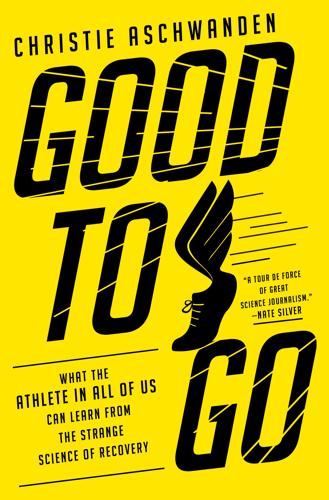
Good to Go: What the Athlete in All of Us Can Learn From the Strange Science of Recovery
by
Christie Aschwanden
Published 5 Feb 2019
“They threaten research by failing to demarcate authentic science from methodologically unsound science, by allowing for counterfeit science, such as complementary and alternative medicine, to parade as if it were authentic science, and by enabling the publication of activist science.” Distinguishing science from marketing has become a little bit like weeding out fake news on the internet. Established, legitimate sources are easy to spot, but then there’s the ever-expanding mass of next-tier sources, some of which are credible, and some of which are not. Most supplement-takers probably understand that the claims may be inflated. I’ve talked with many athletes who say that even if they’re only half as magical as promised, at least it’s something, and the worst-case scenario is that you’re spending money on something that doesn’t work.
…
Hayden Bird, “Medical Experts Offer Response to “TB12 Method” Claim about Avoiding Sunburn through Hydration,” September 29, 2017, Boston.com, accessed August 7, 2018, https://www.boston.com/sports/new-england-patriots/2017/09/29/tb12-method-sunburn-prevention-hydration-claim-doctor-response; Vivian Manning-Schaffel, “Tom Brady Says This Trick Prevents Sunburns. Science Says Otherwise,” September 27, 2017, NBC, accessed August 7, 2018, https://www.nbcnews.com/better/health/tom-brady-s-drinking-water-prevents-sunburn-claim-fake-news-ncna805116. 3: The Perfect Fuel 1. The jelly doughnut segment appeared on episode two (“Change”) of the television program The Ring of Truth. The six-part series aired on PBS in 1987. The show was hosted by Philip Morrison, a scientist on the Manhattan Project, which developed the first nuclear weapon.

This America: The Case for the Nation
by
Jill Lepore
Published 27 May 2019
To the extent that Hitler reciprocated, it was to express his admiration not for the United States but for the Confederacy, whose defeat in the Civil War he much regretted: “the beginnings of a great new social order based on the principle of slavery and inequality were destroyed by that war,” he said. Nazi propagandists, sowing discord with radio broadcasts that the American press dubbed “fake news,” tried to make common cause with white Southerners by urging the repeal of the Fourteenth and Fifteenth Amendments. Coughlin played into their hands. His audience heeded his call to form a new political party, the white nationalist Christian Front, in 1939, a year that twenty thousand Americans, some dressed in Nazi uniforms, gathered in Madison Square Garden, bedecked with swastikas and American flags, where they denounced the New Deal as the “Jew Deal” at a “Mass Demonstration for True Americanism.”
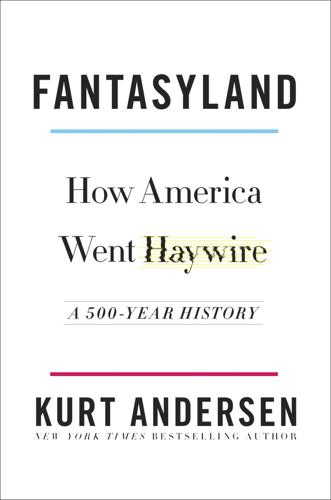
Fantasyland: How America Went Haywire: A 500-Year History
by
Kurt Andersen
Published 4 Sep 2017
After he won the election he began routinely referring to all unflattering or inconvenient journalism as “fake news.” Trump’s White House counselor was explicit about that their first weekend in the White House, when the inauguration crowd estimate was at least 75 percent smaller than the president wished it to be. “Our press secretary,” she said on Meet the Press, “gave alternative facts to that.” When his public approval declined during his first months in office, Trump simply refused to believe it: “Any negative polls,” the president tweeted at dawn one morning from Mar-a-Lago, “are fake news.” In Fantasyland, refusing to be fact-checked is celebrated—“his brazenness is not punished,” the Economist noted, “but taken as evidence of his willingness to stand up to elite power.”
…
He said he had a list of dozens of State Department employees who were “members of the Communist Party,” “names…known to the Secretary of State.” His list, he variously claimed, consisted of 57 or 81 or 205 officials. It was not true. But the press continued covering the allegation—he was a U.S. senator!—and it became the most consequential piece of fake news in American history.*5 McCarthy’s fantasy grew more elaborate and absurd. A year later, during the Korean War, in which thirty-six thousand U.S. soldiers and Marines would die, he gave a speech on the Senate floor explaining that President Harry Truman was the puppet and “captive” of some of his Communist cabinet members, “the executioners” of “a conspiracy on a scale so immense as to dwarf any previous such venture in the history of man…a larger conspiracy, the world-wide web of which has been spun from Moscow.”

Not Working: Where Have All the Good Jobs Gone?
by
David G. Blanchflower
Published 12 Apr 2021
Romer is right that in the end, the test of a model is its “correspondence with the world.”27 In his presidential address to the American Economic Association in December 1970, Wassily Leontief argued that “in no other field of empirical inquiry has so massive and sophisticated a statistical machinery been used with such indifferent results” (1971, 3). Nothing much had changed four decades later. Wolfgang Münchau has argued that the curse of our time is fake math. “Think of it,” he says, “as fake news for numerically literate intellectuals: it is the abuse of statistics and economic models to peddle one’s own political prejudice…. Fake maths has given us, the liberal establishment, the illusion of certainty.”28 He may well be right. Thomas Piketty has argued that “to put it bluntly, the discipline of economics has yet to get over its childish passion for mathematics and for purely theoretical and often highly ideological speculation, at the expense of historical research and collaboration with other social sciences.
…
Charlie Sykes, a former talk-show host in Wisconsin, has argued that much of the conservative news media is now less pro-Trump than it is anti-anti-Trump. The distinction, Sykes argues, is important, “because anti-anti-Trumpism has become the new safe space for the right. Here is how it works,” he suggests. “Rather than defend President Trump’s specific actions, his conservative champions change the subject to (1) the biased ‘fake news’ media, (2) over-the-top liberals, (3) hypocrites on the left, (4) anyone else victimizing Mr. Trump or his supporters, and (5) whataboutism, as in ‘What about Obama?’ and ‘What about Clinton?’”36 This all reminds me of the famous 1973 column by humorist Art Buchwald in relation to Watergate. It contained thirty-six responses for loyal Nixonites who were under attack that he argued they should cut out and carry in their pockets.37 It starts out as follows. 1.
…
Arguments in the United States over LGBTQ bathrooms were the last straw. Everyone in their town thought Hillary Clinton was a crook. It was the fault of immigrants, job-killing regulations, Muslims, trade deals, TPP, NAFTA, and the EPA. The mainstream media, what Rush Limbaugh calls the “drive-by media,” and their fake news were culpable. It was the European Union’s, China’s, and Mexico’s fault and especially it was immigrants who were rapists, robbers, thugs, and different. Building the wall was a great way of sticking it in the face of Hillary and her liberal entourage. It was about sovereignty in the UK, taking back power from Europe, but mostly it was about blaming everyone else for the hurt that was deep inside.
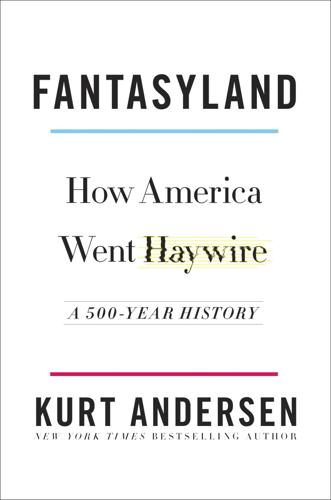
Fantasyland
by
Kurt Andersen
Published 5 Sep 2017
After he won the election he began routinely referring to all unflattering or inconvenient journalism as “fake news.” Trump’s White House counselor was explicit about that their first weekend in the White House, when the inauguration crowd estimate was at least 75 percent smaller than the president wished it to be. “Our press secretary,” she said on Meet the Press, “gave alternative facts to that.” When his public approval declined during his first months in office, Trump simply refused to believe it: “Any negative polls,” the president tweeted at dawn one morning from Mar-a-Lago, “are fake news.” In Fantasyland, refusing to be fact-checked is celebrated—“his brazenness is not punished,” the Economist noted, “but taken as evidence of his willingness to stand up to elite power.”
…
He said he had a list of dozens of State Department employees who were “members of the Communist Party,” “names…known to the Secretary of State.” His list, he variously claimed, consisted of 57 or 81 or 205 officials. It was not true. But the press continued covering the allegation—he was a U.S. senator!—and it became the most consequential piece of fake news in American history.*5 McCarthy’s fantasy grew more elaborate and absurd. A year later, during the Korean War, in which thirty-six thousand U.S. soldiers and Marines would die, he gave a speech on the Senate floor explaining that President Harry Truman was the puppet and “captive” of some of his Communist cabinet members, “the executioners” of “a conspiracy on a scale so immense as to dwarf any previous such venture in the history of man…a larger conspiracy, the world-wide web of which has been spun from Moscow.”

Generations: The Real Differences Between Gen Z, Millennials, Gen X, Boomers, and Silents—and What They Mean for America's Future
by
Jean M. Twenge
Published 25 Apr 2023
However, the downside of too much information from too many sources became obvious very quickly after the vaccines rolled out. “I did my own research” works well when information comes from well-vetted sources, and badly when it doesn’t. But it’s hard for many people to tell the difference between a source they can trust and one they can’t. Don’t like it? It’s fake news. “Fake news” at first meant falsifiable stories posted by questionable websites for mercenary gain, but the phrase eventually lost meaning as it was used to reject anything someone didn’t like. With online news the norm, and trust low, the truth is up for grabs. In a society with a pervasive sense that you can only trust yourself, collective action—even collective agreement on basic facts—is no longer possible.
…
Too many people hide behind anonymous usernames and post things they would never say to someone’s face. A middle-ground solution would be to allow pseudonyms but require proof of identity so people could still be held accountable for aggressive actions (like threats of violence). • Cutting down on misinformation. Online misinformation harms our democracy, but because fake news makes money, it has been difficult to eliminate. It’s also very difficult to regulate because what is true and what is not changes over time. Advice on masking during the COVID pandemic is a prime example, with federal authorities at first recommending against it and then for it, then advocating for any mask you could get, and then advising against cloth masks as the Omicron variant made them less effective.

Brexit, No Exit: Why in the End Britain Won't Leave Europe
by
Denis MacShane
Published 14 Jul 2017
She refused to explain to the public what the costs and consequence of a hard Brexit would be. In exchange, the public refused to endorse her when she asked for a personal mandate in the general election many saw as cynical. The assumption that Corbyn’s leftism would destroy Labour has been shown to be false. The assumption that the mass circulation British press, with its daily fake news propaganda attacks on the European Union, spoke for Britain is also untrue. Since 2014 Britain has had two major referendums – on Scottish independence and Brexit – and two general elections. But nothing has been finally decided. Anti-European Conservatives were hoping to be joined by dozens of pro-Brexit candidates but the reverse has happened.
…
It is deprived not only of its capacity to act but also of its capacity to think and to judge. And with such a people you can then do what you please. The modish term ‘post-truth’ came into play as analysts tried to grapple with a new politics in which provable facts and rational argument were regarded as old-fashioned forms of communication irrelevant to the era of social media and fake news. The BBC in particular gave up discharging its duty to truth, instead allowing endless lies about the EU to be broadcast without challenge. To be fair to President Trump, as his first months in office went by he did seem to leave behind some of the surreal tweeted policy pronouncements that helped him win the White House.

A Bit of a Stretch: The Diaries of a Prisoner
by
Chris Atkins
Published 6 Feb 2020
A major source of misinformation was Radio Wanno, the prison’s internal radio station, which specialised in completely misleading official bulletins. During September, for example, it kept running an old announcement promising that the emergency summer lockdown would end in August, even though the main wings remained on 23-hour bang-up. Another source of fake news was Tracey, the Trinity admin assistant. She frequently wrote baffling and incorrect signs on the whiteboard by the centre office. One week she scrawled a terrifying note: THERE IS CURRENTLY A SIX-MONTH WAITING LIST TO GET INTO ALL OPEN PRISONS. This sent shock waves through H Wing, where most of us were counting the days until we got made Cat D.
…
We have a fresh-faced SO in his twenties, who’s tall and blonde and is immediately christened ‘Hitler Youth’. He’s soon spotted writing the date into the dust on a stairway so he can later check if it’s been cleaned. The cleaners are up in arms; Howard is so worried that he’s actually considering doing some cleaning. I suggest a ‘fake news’ strategy, and demonstrate by writing a date from the nineteenth century in the dust on a nearby wall. Hitler Youth’s enthusiasm does not last, and he quits after just three months. Our favourite new officer is the Hipster Screw. He’s about five foot two and sports an immaculate Shoreditch beard.
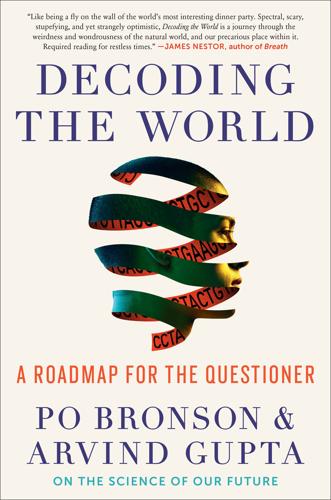
Decoding the World: A Roadmap for the Questioner
by
Po Bronson
Published 14 Jul 2020
Matt and Inja wanted to save dairy from itself. Our little revolution was no longer ours. People began to notice. Powerful people. The cattle industry, after ignoring the initial companies as oddities, began to organize to discredit them. Beef magazine (that is actually what it is named) called the fake meat companies “fake news that needs to be stopped.” They also wrote an article titled “We Have Met the Enemy and It’s Fake Meat Companies.” Arkansas state legislator David Hillman had had enough. On behalf of the cattle industry in Arkansas, he drafted and passed a bill to ban the term “veggie burger” because it confuses consumers.
…
Everything I learned would influence the game I was playing in my predawn dreams. Gradually, it became clear to me that AI creates a winner-take-all economic system, and the result is income inequality. One could say that income inequality is AI’s “pollution,” analogous to the way carbon dioxide and ocean plastic are the externality created by industry. And fake news (or propaganda) was also a kind of pollution—an idea pollution. The externality created by the genetic revolution could be any number of potential hazards—biosecurity, ecosystem accidents, eugenics—though those were speculative. The climate crisis was going to alter the genomes of all the microbes, which was going to be much more of a problem than rising sea levels.

Freezing Order: A True Story of Money Laundering, Murder, and Surviving Vladimir Putin's Wrath
by
Bill Browder
Published 11 Apr 2022
This would then enable the Russians and, not incidentally, Trump himself to claim that everything in the dossier was false, even if something in it turned out to be true. They and all of their mouthpieces could then point at it and scream, “FAKE NEWS!” And they wouldn’t be wrong. (This is exactly what Trump did on January 10, 2017, when he tweeted “FAKE NEWS - TOTAL POLITICAL WITCH HUNT!”) This created a perilous situation for those opposed to Trump. The resistance to Trump desperately wanted to believe this dossier—as I briefly and foolishly had—but if one of the legs of this resistance rested on this compromised dossier, then that resistance would falter and ultimately fail.

The Sirens' Call: How Attention Became the World's Most Endangered Resource
by
Chris Hayes
Published 28 Jan 2025
Timm, “See What Fox News Tried to Redact in the Dominion Defamation Case,” NBC News, April 14, 2023, accessed February 7, 2024, www.nbcnews.com/media/see-fox-news-tried-redact-dominion-defamation-case-rcna77481. BACK TO NOTE REFERENCE 35 Kevin Young, “Moon Shot: Race, a Hoax, and the Birth of Fake News,” New Yorker, October 21, 2017, accessed February 7, 2024, www.newyorker.com/books/page-turner/moon-shot-race-a-hoax-and-the-birth-of-fake-news. BACK TO NOTE REFERENCE 36 Ryan Smith, “Bo Burnham Goes Viral over Social Media Rant Amid Elon Musk Twitter Buyout,” Newsweek, November 3, 2022, accessed February 7, 2024, www.newsweek.com/bo-burnham-social-media-rant-video-elon-musk-twitter-1756570.

Paper Girl: A Memoir of Home and Family in a Fractured America
by
Beth Macy
Published 6 Oct 2025
(It was Steve’s dad, a manager at Grimes, who pinched my mom’s butt.) “If a stray dog showed up in the Browns’ yard, they actually had to keep it.”[1] In a county where Trump took 73 percent of the 2020 vote,[2] readers regularly phoned the paper’s editor, Brenda Burns, to castigate her for running Associated Press wire copy, which they deemed fake news. “The AP is a bunch of liberal wokesters not reporting the truth,” one woman shouted on the phone, begging Burns to run copy from The Epoch Times, a far-right religious newspaper, instead.[3] An old schoolmate of mine from a prominent Republican family, the caller had taken her children out of school to attend the January 6 riot at the Capitol—a completely different kind of field trip to Washington, D.C.
…
See also anger; hate despair, 44, 96, 257, 288 fear, 108, 114, 146, 176, 184, 225, 274, 292–93 loneliness, 136, 174–75, 290, 301, 305 outrage, 56, 57, 69, 175, 283 rage, 24, 113, 153, 257 shame, 35, 120, 122, 126, 131, 136, 186, 281 empathy, 55, 114, 137, 139 end times, 252 “enemy of the people,” reporters as, 57 The Epoch Times (newspaper), 64 ethics, 56–57, 189, 268, 290 at-risk youth and training in, 270 erosion of, 46, 55, 181, 183 Evans, Johnny (father), 32, 122, 227, 228, 229 Evans, Mark (brother), 32–33, 168, 224–25, 225, 228–30, 229 Evans, Meridith (sister), 224 Evans, Peggy (mother), 32 Evans, Tonya, 156 “exhausted majority,” 177 extremists, 160, 169, 177, 186, 255–56 Eyre, Eric, 57 Facebook, 8, 50, 107, 151, 174, 183, 251 with misinformation, 55–56 news, 53, 178 with politics, 63, 154, 168, 240 Stop the Influx into Springfield, Ohio, 273–74 F fact-checking, 164, 172–73, 176, 203, 223, 280, 305 factories, 70, 75, 187, 188, 294 Factory Man (Macy, B.), 48, 61, 202 FAFSA paperwork, 92 Faith and Freedom Coalition, 255, 256 fake news, 64 Falwell, Jerry, 117, 160 families, 67, 68, 79, 117, 297. See also children; grandparents; parenthood Child Protective Services and, 100, 219, 259, 264, 283 foster care, 95, 100, 264, 285 grandparents raising grandchildren, 209, 217–19, 268, 296 with jail, 6, 16, 92, 129, 189, 221, 259, 296 OxyContin and Sackler, 198, 307 polarized, 52, 108, 110–12, 161–62 relocation of, 157, 158–59 sovereign, 194–95, 206, 208, 296 family court, 67, 217, 218, 296 Farmer’s Daughter restaurant, 186 farming, 187, 203, 251, 290 agriculture, 28, 70, 108, 247–48, 251, 294 4-H, 28, 148, 247, 247–50 Future Farmers of America, 148, 289 farm kids, 72, 156, 203, 249–50, 289 fascism, 112–13, 178, 183, 256, 291, 302 FBI, 274 fear, 108, 114, 146, 176, 184, 225, 274, 292–93.
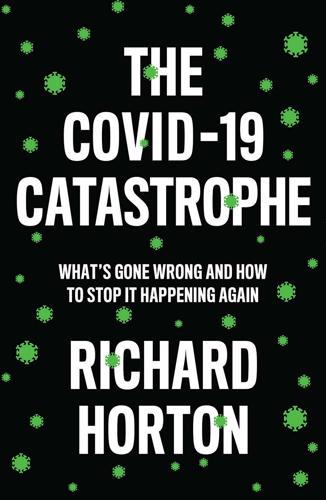
The COVID-19 Catastrophe: What's Gone Wrong and How to Stop It Happening Again
by
Richard Horton
Published 31 May 2020
But, given the country’s overall limited testing capacity, a sparse public health workforce and certain challenging disease characteristics, including mild and asymptomatic cases and rapid spread, it is unlikely that states were able to reach the levels of operational excellence needed to control the outbreak fully. Nevertheless, there was an extraordinary response from sections of civil society. To fight fake news about the pandemic, the Indian Scientists’ Response to COVID-19 became a grassroots initiative to neutralise disinformation. States deserve much of the credit for the country’s partly successful response. There were important lessons for other countries to learn from India. One shortcoming of India’s COVID-19 response was the low rate of testing.

Convenient Terrorist : Two Whistleblowers' Stories of Torture, Terror, Secret Wars, and CIA Lies (9781510711648)
by
Kiriakou, John; Hickman, Joseph
Published 13 Jun 2017
Or, a passionate critic of the country’s war-addicted national security state? No, the Times poached neoconservative Bret Stephens from the Wall Street Journal—a climate change denier, unrepentant apologist for the disastrous US invasion of Iraq, and anti-Muslim bigot. During a plague season of fake news and presidential mendacity on a level never before seen, the newspaper of record brought on board a spin artist known for his crackpot science and imperial mania. This is what counts as intellectual diversity in the establishment media. Hot Books seeks to break this corporate mold with a bold catalog that includes urgent works of investigative journalism, searing memoirs, and political jeremiads.
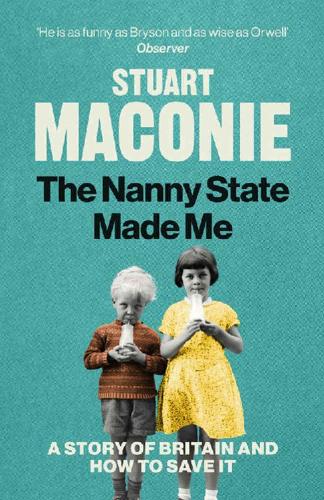
The Nanny State Made Me: A Story of Britain and How to Save It
by
Stuart Maconie
Published 5 Mar 2020
Maybe even that much-maligned beast ‘the nanny state’. Let’s begin with that term. Nanny state. It has its origins then in Conservatism, and is still used largely by those of a right-wing bent or possibly that shrinking sector, the older, blue-collar left. In this it has something in common with its newer companions ‘PC gone mad’ and ‘fake news’ in political origin and in the way it’s deployed. The nanny state is hardly ever used complimentarily or even objectively. It’s a usefully blunt instrument wielded to shut down any competing view. It serves to close down and enrage your opponent and to rally the like-minded to you. Two types of professional language-user keep it handy in their rhetorical quiver.
…
She added: ‘Things like Facebook and Instagram, they are privately owned companies and that is what he is against.’ Perhaps. Or perhaps like me, faced with a new Dark Age where Facebook helps rig elections, where creepy fugitive narcissists breach national security with selectively leaked information, where fictitious statistics emblazoned on buses and fake news online aid the nastiest people in our society, he just thinks that all that precious information and data, the new power source of the world, would be safer in the hands of dull, disinterested but principled civil servants than Zuckerberg, Assange and Bannon? Former US President Bill Clinton told a Chinese trade delegation in 2000 that attempting to state-control the internet would be ‘like trying to nail jello to the wall … good luck’.
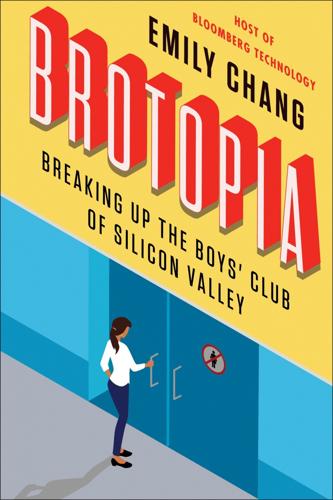
Brotopia: Breaking Up the Boys' Club of Silicon Valley
by
Emily Chang
Published 6 Feb 2018
All three companies were called on to testify before Congress about their policies concerning not just political advertising but also fake accounts and fake news. Facebook announced that it was hiring an additional ten thousand people to handle safety and security. In an interview with Axios, Sandberg apologized to the American people, but also reasserted Facebook’s commitment to free speech and consideration of itself as a tech company, not a media company. Facebook, Twitter, and Google, via YouTube, profit off the content that the public provides. This content includes everything from fake news to postings that might be hateful or abusive. But 2017 might well be seen as the turning point, the moment when these internet juggernauts began to take greater responsibility for the substance of the messages, ads, and news they facilitate.
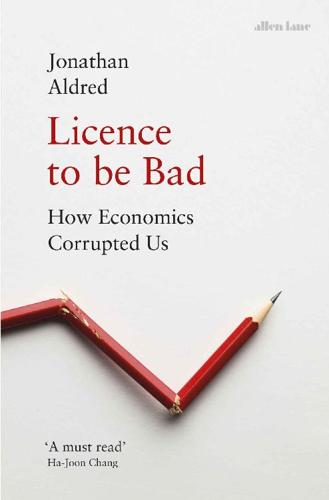
Licence to be Bad
by
Jonathan Aldred
Published 5 Jun 2019
By 2018, its tax payment had risen to £15.8 million – but sales had grown to £1.3 billion, so it still paid barely more than 1 per cent in tax. Facebook free-rides on the contributions of other taxpayers, who pay for state-subsidized improvements in UK internet infrastructure – enabling almost two-thirds of the UK population to use Facebook. Facebook can free-ride because we let it. We might boycott Facebook over fake news, but not over their tax avoidance, because free-riding is normal behaviour nowadays. We just shrug our shoulders and mutter, ‘Wouldn’t you …?’ And yet for most of human history, when people have confronted these kinds of situations, they have reached the opposite conclusion. The term ‘free-riding’ was first used in 1850s Wisconsin to refer to travelling on a train without paying.
…
Compared to 1979, the rates are lower in every country in 2002. 32 Quoted in L. Mcquaig and N. Brooks (2013), The Trouble with Billionaires (London: Oneworld), 204. 33 Laffer, A., The Laffer Curve: Past, Present, and Future, Heritage Foundation Report, 1 June 2004. 34 Quoted in Rodgers, 73. 35 http://www.politico.com/story/2017/05/15/donald-trump-fake-news-238379. 36 An excellent overview is provided by Atkinson, 183–7. 37 Piketty, T., Saez, E., and Stantcheva, S. (2014), ‘Optimal Taxation of Top Incomes’, American Economic Journal: Economic Policy, 6, 230–71. 38 Quoted in Mcquaig and Brooks, 40. 39 Surowiecki, James, ‘Moaning Moguls’, New Yorker, 7 July 2014. 40 For related development of these ideas, see L.

A World Without Work: Technology, Automation, and How We Should Respond
by
Daniel Susskind
Published 14 Jan 2020
This has triggered a set of United Nations meetings to discuss the rise of so-called “killer robots.”56 Or consider the unsettling field of “synthetic media,” which takes the notion of tweaking images with Photoshop to a whole new level. There are now systems that can generate believable videos of events that never happened—including explicit pornography that the participants never took part in, or inflammatory speeches by public figures that they never delivered. At a time when political life is increasingly contaminated by fake news, the prospects for the misuse of software like this are troubling.57 At other times, the encroachment of machines on tasks that require cognitive capabilities can simply seem peculiar. Take the Temple of Heaven Park in Beijing. In recent years, their public toilets have suffered from a spike in toilet paper thievery.
…
“The Horse Plague,” New York Times, 25 October 1872; Sean Kheraj, “The Great Epizootic of 1872–73: Networks of Animal Disease in North American Urban Environments,” Environmental History 23:3 (2018). 10. Steinberg, Down to Earth, p. 162. 11. “The Future of Oil,” Economist, 26 November 2016. 12. But, as the double entendre suggests, not without embellishment. See, for instance, Rose Wild, “We Were Buried in Fake News as Long Ago as 1894,” Sunday Times, 13 January 2018. 13. See, for instance: Wassily Leontief, “Technological Advance, Economic Growth, and the Distribution of Income,” Population and Development Review 9, no. 3 (1983): 403–10; “Is Technological Unemployment Inevitable?,” Challenge 22, no. 4 (1979): 48–50; Wassily Leontief, “National Perspective: The Definition of Problems and Opportunities” in The Long-Term Impact of Technology on Employment and Unemployment: A National Academy of Engineering Symposium, 30 June 1983 (Washington, DC: National Academy Press, 1983). 14.

A Small Farm Future: Making the Case for a Society Built Around Local Economies, Self-Provisioning, Agricultural Diversity and a Shared Earth
by
Chris Smaje
Published 14 Aug 2020
Already, state centre politics in some places – including the United States and England – is assuming more of a symbolic and self-referential character than the characteristics of a rational, modern, managerial state that reaches out into the economic fabric of local life. Its concerns are with ‘making America great again’, ‘taking back control’, combating ‘fake news’, ending ‘vassalage’ to the European Union, controlling immigration and gesturally reinvesting in fossil fuel industries in the face of climate change. In the United States, while state and national politics still sometimes entertains the possibility that climate change is a hoax worked by scientists, environmentalists or the Chinese government, city politicians in places like Miami are left to figure out how to deal with the rising sea levels threatening to engulf their jurisdictions.4 The already daunting in-tray of such local politicians is likely to get worse with diminishing fiscal flows from the centre, diminishing local abilities to raise or pay taxes in the face of economic crisis and, in some areas, increasing migrant flows.
…
My thanks to Paul Hillman for drawing this example to my attention. 2. Sowell 2006. 3. Frase 2016, 101. 4. Bastani 2019; Phillips and Rozworski 2019. 5. See, for example, Bastani 2019; Browne, John (2019) ‘Should We Pursue Boundless Economic Growth?’ Prospect, 30. 6. Francis 1990; Gosho et al. 1984; Wild, Rose (2018) ‘We Were Buried in Fake News as Long Ago as 1894,’ The Times, 13 January. 7. FAO n.d.; Hickel 2017; Holt-Giménez 2019; Milanovic 2016; UNICEF (2018) ‘The State of Food Security and Nutrition in the World 2018,’ https://data.unicef.org/resources/sofi-2018/. 8. See Morrison, Oliver (2020) ‘“Cultured Meat Is Fool’s Gold”: Environmentalists Lock Horns over Controversial Documentary,’ Foodnavigator.com, 10 January. 9.

Pure Invention: How Japan's Pop Culture Conquered the World
by
Matt Alt
Published 14 Apr 2020
On July 5, two days before the date of the official event, hundreds of 2channelers wearing pink armbands descended upon the beach and scoured it of litter. When the TV cameras finally arrived forty-eight hours later, there wasn’t a speck of garbage on the beach to film. Fuji’s producers scrambled to create a new narrative about how they’d inspired grassroots efforts—and studiously avoided any mention of 2channel at all. “Fake news?” sighed one participant on his blog—the first stirrings of a global culture war brewing between Internet users and the gatekeepers of mainstream media. The beach cleanup had been a pleasant sort of protest, but the frustrations that sparked it continued to stew as relations deteriorated between Japan and neighboring China and South Korea.
…
It was a contentious event: Jeremy Yi, “The Controversy of South Korea: 2002 World Cup,” Soccer Politics, April 29, 2019, https://sites.duke.edu/wcwp/2019/04/29/the-controversy-of-south-korea-2002-world-cup/. One poster half-jokingly suggested disrupting: Mizuko Ito, Daisuke Okabe, and Izumi Tsuji, eds., Fandom Unbound: Otaku Culture in a Connected World (New Haven, Conn.: Yale University Press, 2012), 76. “Fake news?”: Seiji Takeda, “Natsu ga koreba omoidasu: 2channeru no natsukashii matsuri: Shonan gomi hiroi ofu” (“Summer Reminds Me of 2channel’s Nostalgic Festival: Shonan Garbage Pick-Up Event”), July 20, 2016, Hitotsubashi Sotsu Hosuto Takeda Seiji no Burogu Ppoi (Hitotsubashi Grad Seiji Takeda’s Blog or Something), https://ameblo.jp/stakedadada/entry-12181991273.html [inactive].
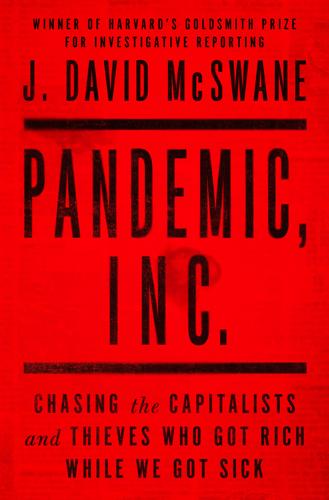
Pandemic, Inc.: Chasing the Capitalists and Thieves Who Got Rich While We Got Sick
by
J. David McSwane
Published 11 Apr 2022
Within the VA hospital system, nurses and doctors were being rationed per shift just one surgical mask, those thin blue masks that offer far less protection than an N95. Nurses with whom I exchanged emails and texts were being gaslighted by their superiors, who dismissed legitimate news reports of this dire shortage as “fake news.” But the healthcare workers saw it firsthand, and each time they donned the subpar masks, they wondered if any help was on the way, if this might be their final shift. But help had been outsourced. To Stewart and others. Help was working on a wing and a prayer. And there I was, a passenger aboard a delusion, floating over a nightmare.
…
See nursing homes Elizabeth, Erin, 222 Elliott, Travis, 147 Emergency Response Framework, 52–53, 55 emergency supplies. See Strategic National Stockpile Energy and Commerce Health Subcommittee, 148 Engelberg, Stephen, 100–101 Eshoo, Anna, 147, 149, 150 F Facebook, 166, 220, 221, 223 “fake news,” 6 farms, Paycheck Protection Program (PPP) loans and, 201–203 Faturechi, Robert, 45 Fauci, Anthony comments in early stage of the pandemic, 40 Kennedy, Robert F. Jr. and, 220 on remdesivir, 82 Fayne, Maurice, 197 FDA (Food and Drug Administration) Fillakit test kits and, 191 KN95 masks and, 92, 159 NYC requesting certification for masks by, 75 repackaging mask operation and, 158, 159, 160, 162, 168–169 U.S.

Who’s Raising the Kids?: Big Tech, Big Business, and the Lives of Children
by
Susan Linn
Published 12 Sep 2022
What’s happening among advocates and activists working to stop the corporate takeover of childhood and to promote environments that encourage healthy development is both hopeful and exciting. And at least some of the hope and excitement is coming from within the tech industry. There are tech executives and engineers taking on their own industry, calling out abuses of privacy and identifying the need to protect children from the seduction of persuasive design. The fake news epidemic made possible by Facebook’s lackadaisical self-regulation lays bare many of the dangers of reliance on social media. Hacks of products from children’s tech brands such as VTech and CloudPets and countless other security breaches have made millions of people more aware of and concerned about privacy violations.10 As more research emerges about the potential harms of excessive screen time, educators, health professionals, parents, and legislators are starting to address the need to set limits on prevailing tech industry business practices that target kids to ensure that children have time for what they really need—hands-on exploration of the world around them, face-to-face conversations with family and friends, active and creative play, both indoors and out.
…
See also Amazon Alexa (voice-activated digital assistant); Echo Dot Kids Edition Echo Dot Kids Edition, 134–41, 151 and Amazon Kid+, 136 Amazon Parent Dashboard, 136 data collection and privacy concerns, 135–36 drop-in feature, 136 4th Gen hardware, 141 personalized recommendations, 137–40 edtech industry, 71, 181–96, 231–33 and COVID-19 school closings, 189, 195–96 edtech policy at Acton-Boxborough Regional School District, 232–33, 245–48 “free” apps (“freemiums”), 46, 119, 181, 186–87, 217 gamified products, 192–94 hardware dumping and brand loyalty,183–84 inBloom administrative platform and data collection, 233–34 “personalized learning,” 184–85, 190–94 Prodigy app, 181, 184–89, 192–94, 232–33 research on effectiveness of, 184–85, 187–88, 190, 191–92, 194–95 teachers as brand promoters, 71 three categories, 183–85 Education Week, 177 Einstein, Albert, 22 Elle (magazine), 90 Elmo, 13, 212, 217 Entertainment Junction, 78 European Union, 38, 115 exercise, physical, 103 Facebook, 5, 63, 73, 74–76, 145, 148, 152 and COVID-19 pandemic, xiv fake news, xiv, 9 Messenger Kids (MK), 74–75, 219 racism and racial biases, 152–53 revenue, 130 targeted advertising to teens, 74–76 See also Meta Facing the Screen Dilemma (Linn, Almon, and Levin), 13 Fairplay, 3–4, 199–200, 202, 228, 231, 239 campaign to convince Scholastic to stop distributing SEMS, 170 campaign to prevent Mattel from launching Aristotle, 36, 38 campaign to stop false advertising at Your Baby Can Read, 145–46 complaint to FTC about Prodigy, 187, 233 Screen Time Action Network, 234, 253 statement on edtech and “personalized learning tools,” 185 website, 253 Worst Toy of the Year Award, 107 “Faith Leaders Letter to Mark Zuckerberg” (2022), 239 Family Online Safety Institute (FOSI), 179 Family Room (market research firm), 120–21 Fantasy Rush (fantasy football game), 4 Federal Communications Commission (FCC), 29 Federal Trade Commission (FTC), 29, 187, 199, 202–4 and Amazon’s Echo Dot Kids Edition, 134–35 enforcement of COPPA, 135, 202–3 Fairplay’s complaint about Prodigy, 187, 233 and false advertising at Your Baby Can Read, 145–46 Google and YouTube investigations, 4, 177 and legislation to end Big Tech’s exploitation of children, 135, 202–4 and television advertising to children, 113 Filene, Edward, 168–69 Finance Parks, 163–64 financial literacy materials produced by credit card companies, 172–75, 180 Finding Dory (film), 28, 164 Finding Nemo (film), 28 Fisher, Mike, 184 fitness trackers, 103 5Rights Foundation (UK), 231, 254 Flint, Michigan, 65 Florida Atlantic University, 69–70 Floyd, George, xiii–xiv, 150, 152 food industry Big Food, 198 Impossible Foods and in-school teaching materials, 175–76 in-school advertising, 165, 167, 172, 175–76, 180 junk-food marketing to kids, 26, 82, 198 Foolproof Foundation, 257 Forbes, 67, 85 Fortnite, 49–50, 54, 110, 118, 185, 186, 218–19 fossil fuel industry corporate-sponsored educational materials (SEMS), 170–72, 179–80 greenwashing, 190 Franz, Rachel, 207 “free” apps (“freemiums”), 46, 119, 181, 186–87, 217 and nagware, 46, 186–87, 189 Prodigy, 181, 184–89, 232–33 Freed, Richard, 52 frictionless commerce, 77–78, 81 Friends of the Earth, 170 Frozen Sing!

Architects of Intelligence
by
Martin Ford
Published 16 Nov 2018
We don’t have AI systems that can robustly navigate our world at all, nor do we have robotic systems that know how to improve themselves, except in constrained ways like tailoring their motor control system to a particular function. This is not a current problem. I think it’s fine to invest some money in the field and have some people think about those problems. My issue is that, as we saw with the 2016 US election, there are more pressing problems like using AI to generate and target fake news. That’s a problem today. MARTIN FORD: Earlier you said AGI is conceivable as early as 2030. If a system is genuinely intelligent, potentially superintelligent, do we need to make sure that its goals are aligned with what we want it to do? GARY MARCUS: Yes, I think so. I will be surprised if we get there that quickly, but it’s for that reason why I think that we should have some people thinking about these problems.
…
Should these choices be made by society as a whole? Is there a place for regulation or government oversight? BARBARA GROSZ: One thing I want to say is that even if you don’t design the system to work with people, it’s got to eventually work with people, so you’d better think about people. I mean, the Microsoft Tay bot and Facebook fake news disasters are examples of designers and systems where people didn’t think enough about how they were releasing systems into the “wild,” into a world that is full of people, not all of whom are trying to be helpful and agreeable. You can’t ignore people! So, I absolutely think there’s room for legislation, there’s room for policy, and there’s room for regulation.
…
AI is a tool, and you can apply it to both benefit and help people, but also to hurt people or to privilege one group of people over others. There’s a lot of legitimate concern around privacy and security because that’s tied to our freedom. There is a lot of concern around democracy and what do you do when we have fake news and bots proliferating falsehoods, and people are struggling to understand what’s true and to have a common ground. Those are very real risks. There are real risks around autonomous weapons. There’s also a question of a growing AI gap where AI exacerbates the divide instead of closing it. We need to start working on making AI far more democratized and inclusive so we have a future where AI can truly benefit everyone, not just a few.
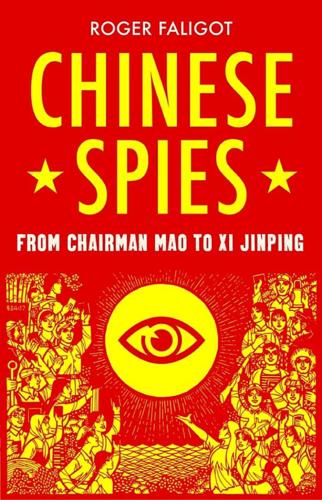
Chinese Spies: From Chairman Mao to Xi Jinping
by
Roger Faligot
Published 30 Jun 2019
One of the Flying Tigers groups was sending messages fine-tuning the details of their tactics, and illegal organizations including the Beijing Students Autonomous Federation and the Beijing Workers Autonomous Federation had set up loudspeakers through which they were broadcasting criticism of the CCP and fake news from the Voice of America. Employees of the US embassy, including CIA agents, were taking advantage of the situation to conduct “aggressive” intelligence missions and liaise with the Student Federation; the Chinese Alliance for Democracy had become an instrument of the United States and was providing secret agents for the Kuomintang to act against China.
…
This unusual exile was one of the principal figures behind the “Hong Kong Blondes”, a group of highly trained cyber-dissidents involved in viral attacks against Chinese army computer systems. Luckily for Blondie Wong, by the time the “cleaners” set out to try and “service” him, he was no longer in the west of France, if indeed he ever had been—he was nothing if not a master of disinformation and fake news. He may have been warned to leave for Canada, where he would remain under armed guard. The Hong Kong Blondes were a group of obsessive hackers who proved that, with a computer, it was possible to defeat a huge system designed to control an entire national population. For the PLA and its huge empire of cyber-warriors, the boot was now firmly on the other foot.
…
Shortly after, Beijing even suggested that a Uyghur suspect—an artist from Xinjiang—had also been a passenger on Flight MH370. The implication was that the plane might have been brought down by a Uyghur suicide bomber. We should remember that, during its restructuring in the globalizing 1990s, the Guoanbu had expanded its special section for broadcasting fake news, the Wuchuan Teke, modelled on the disinformatsia section of the former Soviet KGB. The Chinese character wu (误) means “the word that has fallen from the sky”, and today is taken up by a battalion of internet users obviously non-existent back in the 1990s. According to a source, whose information has proved highly reliable over the years, in autumn 2014 the intelligence services sent President Xi a surprising report that explained the considerable diplomatic cooling between Kuala Lumpur and Beijing—not helped by the fact that, of the 227 passengers on Flight MH370, 153 were Chinese.

This Is How They Tell Me the World Ends: The Cyberweapons Arms Race
by
Nicole Perlroth
Published 9 Feb 2021
Asked whether he would tell Putin not to interfere in 2020, Trump had mock-scolded his buddy. “Don’t meddle in the election, President,” he told Putin, wagging his finger with a smile. As for the journalists doing the questioning that day, “Get rid of them,” Trump told Putin, whose tenure oversaw the murder of dozens of Russian journalists. “Fake news is a great term, isn’t it? You don’t have this problem in Russia, but we do.” In reality, Putin never stopped meddling. In fact, 2016 was just their dry run. As one expert told the Senate Intelligence Committee, hacks of state voter databases and back-end election systems in 2016 was “the reconnaissance to do the network mapping, to do the topology mapping, so that you could actually understand the network, establish a presence so you could come back later and actually execute an operation.”
…
TrickBot’s developers were now cataloging American municipalities they had access to, selling anyone who wanted it a paint-by-number approach to hacking our election. When it came to disinformation, Russia’s goal was still the same: divide and conquer. But this time, the Kremlin’s trolls didn’t have to spin up “fake news.” Americans—perhaps nobody more so than our president—were generating plenty of false, misleading, and divisive content every single day. In 2016, Russians spun up fictitious tales of Democrats practicing witchcraft. With Americans more divided than at any time in recent history, Russia’s trolls and state news outlets found it far more efficient to amplify American-made disinformation than create their own.
…
When our story went to print that June 2019, Trump went ballistic. He took to his favorite medium, Twitter, to demand that we immediately release our sources, and to accuse us of “a virtual act of treason.” It was the first time the president had ever dropped the word treason. For years, we had become inured to his attacks—“fake news,” “the enemy of the people,” “the failing New York Times”—but now he was accusing us of a crime punishable by death. It was a serious escalation in his war on the press, an attack that until now had been reserved for autocrats and dictators. To his eternal credit, our publisher, A. G. Sulzberger, came to our swift defense, writing in an op-ed in the Wall Street Journal that the president had crossed a “dangerous line.”

Applied Artificial Intelligence: A Handbook for Business Leaders
by
Mariya Yao
,
Adelyn Zhou
and
Marlene Jia
Published 1 Jun 2018
AI will be used to multiply the effects of a malicious campaign—augmenting “human labor, intelligence, and expertise” to make the process of attacking easier and faster—and to broaden the types and number of possible targets. Advances in neural network algorithms that can produce hyperrealistic audiovisual input may be hijacked to produce fake news that looks like it came from a credible source, or to circumvent security systems that use voiceprints or other identifying features. In addition, AI may fundamentally alter the arena of cyber attacks by increasing the efficacy, precision, and untraceability of such attacks. These attacks may even target and hijack supposedly secure AI systems by exploiting their vulnerabilities.
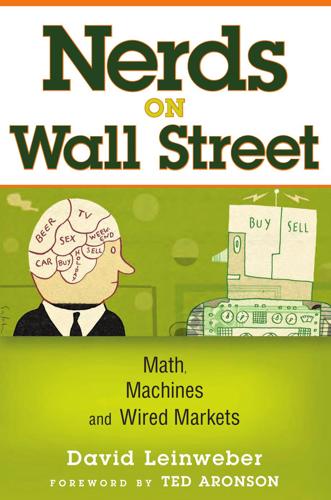
Nerds on Wall Street: Math, Machines and Wired Markets
by
David J. Leinweber
Published 31 Dec 2008
Hundreds of thousands of messages are posted on dozens of boards every day. Some of them contain real information and some are just scams, but they change the market. There are hundreds of these cases: Raytheon, PairGain, Franklin, HealthSouth, Coho Energy, Ascend, and many others—so many, in fact, that we categorize them in what follows. Fake News: PairGain Technologies and Aastrom Biosciences A good example of message manipulation occurred with regard to PairGain Technologies Inc., a telecommunications firm. In April 1999, an employee of PairGain posted a message on a Yahoo! bulletin board alleging that PairGain had agreed to be acquired.
…
But everyone tells me I can’t put it in the book or use it at conferences. I think you need to watch the Daily Show to pick up on its continuing economic coverage. Stephen Colbert, whose show follows Stewart’s, says the financial markets are like a roller-coaster ride where you vomit money. This brand of fake news has its share of dumb gags, to be sure, but there is more “truthiness” to be found there than in much of what passes for serious broadcast journalism. Recent guests include Barack Obama, Bill Clinton, John McCain, and Tony Blair. There are frequent appearances by Al Gore, that pesky rascal responsible for all the weird weather lately, who is a huge Daily Show fan.
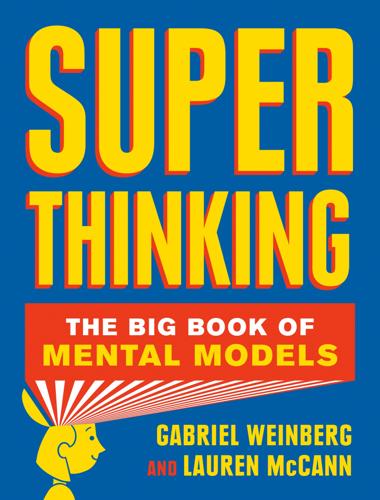
Super Thinking: The Big Book of Mental Models
by
Gabriel Weinberg
and
Lauren McCann
Published 17 Jun 2019
For example, HIV isn’t yet easily curable, but if you catch it early, with modern treatments you can usually contain it such that it does not develop into AIDS. You should apply a containment strategy in situations where you want to stop something bad from spreading, such as a negative rumor or a harmful business practice. For example, Facebook and Twitter probably couldn’t have gotten rid of fake news from their platform in the run-up to the 2016 U.S. election, but they could have done a better job at containing it. These types of situations can get out of hand quickly, so you often first want to stop the bleeding, by a quick and dirty method if necessary. Once the situation has stabilized, you can take a step back, find the root cause (see Chapter 1), and then try to find a more reliable long-term solution.
…
Anders, 260, 261 error bars, 155, 156 escalation of commitment, 91 escape hatch, 244 Ethernet, 118 Etsy, 119 European Union, 59 evolution, 99–100, 133 execution, 292 exercise, 85, 87, 88, 102, 111, 113, 130 exit: barriers to, 305 strategy for, 242–43 expectations, 267–68 experimenter bias (observer-expectancy bias), 136, 139 experiments, 135–36, 161–63, 173 A/B testing, 136 alpha in, 161, 182 beta in, 162, 182 blinded, 136 endpoints in, 137 power of, 162 randomized controlled, 136 replication of, 168–72 sample size in, 143, 160, 162, 163, 165–68, 172, 182 thought, 199–201 see also polls and surveys; research expected value, 186–89 expertise, 109, 115, 269 deliberate practice and, 260–62, 264, 266 externalities, 41–42, 47 negative, 41–43, 47 extroverts, 249–50 Facebook, 18, 36, 94, 119, 219, 233, 247, 305, 308 failure, 296 cascading, 120, 192 focus on, 268–69 government, 47, 48 market, 47–49 political, 47 fairness, 224 fair share versus fair play, 224–25 fake news, 233 fallacies: base rate, 157, 158, 170 black-and-white, 126–28, 168, 272 conjunction, 9–10 gambler’s, 144, 145 inverse, 156–57 Texas sharpshooter, 136 false negative, 160–63, 165–67 false positive, 160–62, 164–66, 168–70, 172 false sense of security, 44 false urgency, 74 fast (low-concentration) thinking, 30, 70–71 fat-tailed distributions, 191 favors, 215 fax machine, 106, 107, 119 FBI, 97 fear, uncertainty, and doubt (FUD), 225 fear of missing out (FOMO), 219 feedback, 262–64, 266, 294, 316 feedback loops, 192, 294 Ferriss, Tim, 220 Feynman, Richard, 32–33, 315–16 filter bubble, 17–18 financial advisers, 44, 45 financial crisis of 2007/2008, 79, 120, 192, 271, 288 fines and sanctions, 232 First, do no harm, 59 first impressions, 14, 146 first-mover advantage or disadvantage, 292 first principles, arguing from, 4–7, 31, 207 FiveThirtyEight, 172 5 Whys, 32, 33 fixed mindset, 266–67, 272 flow, 192 flu vaccine, 133–35 flypaper theory, 234 flywheel, 108–10, 112, 283 Food and Drug Administration, U.S., 283 football, 226, 243 foot-in-the-door technique, 216 Forbes, 220 forcing function, 113, 244 forecasts, see predictions and forecasts Fortune 100 companies, 122 Foundation, 5 401(k) programs, 87–88 foxes versus hedgehogs, 254–55 frame of reference, 11, 18, 90, 250 framing, 11–13, 30, 221, 222, 224, 226 Franklin, Benjamin, 92 fraud, 228 Freakonomics (Levitt and Dubner), 44–45 free rider problem, 39–40, 43, 49 frequentist statistics, 158–60 Frisch, Otto, 114–15, 120 frog, boiling, 55, 56, 58, 60 FUD (fear, uncertainty, and doubt), 225 fundamental attribution error, 20–21, 23 future, 289 discounting of, 85–87 predicting, see predictions and forecasts uncertainty in, 2, 132, 173, 180, 182, 185 Gallup, Inc., 16 Galton, Francis, 203 gambler’s fallacy, 144, 145 games, iterated, 214 game theory, 212–14, 230, 234, 238, 244 prisoner’s dilemma, 212–14, 226, 234–35, 244 garbage, 40–41 garbage in, garbage out, 185 Gates, Bill, 69, 128, 141 gateway drug theory, 236 Gelman, Andrew, 173 generalists, 252–53 generals always fight the last war, 240 genes, 156–57, 191, 249–50 George III, King, 221 Germany, 70, 145, 229, 237–39 germ theory, 26, 289 get on the same page, 225 get them up to speed, 279 getting more bang for your buck, 79 Getting Things Done (Allen), 76 Gibson, William, 289 Gilbert, Daniel, 27 Ginóbili, Manu, 247 give-and-take, 128 Gladwell, Malcolm, 261 GlaxoSmithKline, 63, 81, 257 globalization, 310 global optimum, 195–96 goals, 69, 87–89, 122, 242, 244 Gödel, Escher, Bach (Hofstadter), 89 Goldblum, Jeff, 121 golem effect, 267 Gondwanian bridges, 25 good cop, bad cop, 232 good enough, 90 Goodhart, Charles, 49 Goodhart’s law, 49, 51, 52, 54 Good Judgment Project, 206 Good to Great (Collins), 109, 254 Google, 18, 53, 104, 231, 305 Gordon, Peter, x Gosplan, 49 government, federal: budget of, 75–76 failure in, 47, 48 regulatory action by, 183–84, 231–32 graffiti, 40 Graham, Paul, 71, 277 grass-is-greener mentality, 176–77, 258 graphs, 146–48 bell curves in, 150–52, 153, 163–66, 191 error bars in, 155, 156 histograms, 147–48, 150 gravity, center of, 112 gray thinking, 28 group membership, 127 groupthink, 201–3 Grove, Andy, 308 growth mindset, 266–67 Guardian, x guerrilla marketing, 240 guerrilla warfare, 239, 241–42 gun control, 235, 237 Gurley, Bill, 286 gut feeling, 30 hackers, 97 Hail Mary pass, 243–44 hammer, Maslow’s, xi, 177, 255, 297, 317 Hanlon’s razor, 20 harassment, 53 Harvard Business Review, 297 Hatchimals, 281, 284 hazard, 43–45, 47 head in the sand, 55 Health and Human Services, U.S.
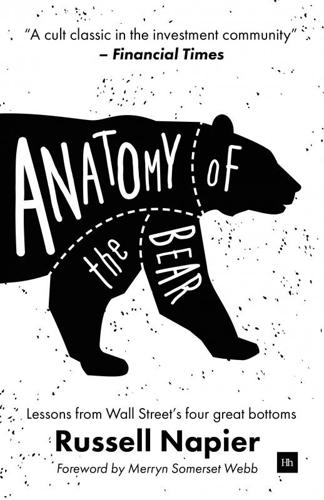
Anatomy of the Bear: Lessons From Wall Street's Four Great Bottoms
by
Russell Napier
Published 18 Jan 2016
I have even kept still when men whispered reports on things of which they knew nothing, obviously wicked reports which were entirely incorrect. Bad news may travel fast but fake news has the wings of Mercury, that I know, and out of a possible 100 reports of disaster and tribulation I listen to weekly, perhaps one has an iota of truth in it and that one is never as black as it seems.’ [18] Not all companies accepted the proliferation of “fake news” lying down. Edward L Doheny of Mexican Petroleum succeeded in having newsletter writer WC Moore indicted on charges of criminal libel on the basis of a comment in one of his investment newsletters.

Catch and Kill: Lies, Spies, and a Conspiracy to Protect Predators
by
Ronan Farrow
Published 14 Oct 2019
“Every girl who speaks is paving the way for another,” she told me. Her own silence was about a consensual affair, but she could help expose a deeper and wider system of burying stories that was sometimes used to cover up more serious, even criminal, behavior. The White House called the story “just more fake news.” AMI’s general counsel wrote that this report, too, was “false, and defamatory,” and that I’d colluded in “a plot by McDougal and her lawyer to milk AMI for more money.” Howard issued his own threats to publicly attack The New Yorker. AMI insisted that it had declined to print McDougal’s story because it did not find it credible.
…
Reporting from this article also referenced in other chapters. 2 hacked opponents’ email accounts: Jordan Robertson, Michael Riley, and Andrew Willis, “How to Hack an Election,” Bloomberg Businessweek, March 31, 2016. 3 selling salacious stories: Beth Reinhard and Emma Brown, “The Ex-Playmate and the Latin American Political Operative: An Untold Episode in the Push to Profit from an Alleged Affair with Trump,” Washington Post, May 28, 2018. 4 asking for help: Joe Palazzolo, Nicole Hong, Michael Rothfeld, Rebecca Davis O’Brien, and Rebecca Ballhaus, “Donald Trump Played Central Role in Hush Payoffs to Stormy Daniels and Karen McDougal,” Wall Street Journal, November 9, 2018. 5 “If you deny, you are safe”: Email from Keith Davidson to Karen McDougal, August 5, 2016. 6 That publicist was Matthew Hiltzik: Cameron Joseph, “Enquirer Gave Trump’s Alleged Mistress a Trump Family Associate to Run Her PR,” Talking Points Memo, March 27, 2018. 7 “SEND THIS”: Email from Dylan Howard to Karen McDougal, June 23, 2017. 8 “McDougal contract extension”: Email from AMI general counsel, January 30, 2018. 9 “just more fake news”: Ronan Farrow, “Donald Trump, a Playboy Model, and a System for Concealing Infidelity,” The New Yorker, February 16, 2018. CHAPTER 51 1 Dino Sajudin, a former Trump Tower doorman, had told AMI the story: Ronan Farrow, “The National Enquirer, a Trump Rumor, and Another Secret Payment to Buy Silence,” The New Yorker, April 12, 2018.

Chokepoint Capitalism
by
Rebecca Giblin
and
Cory Doctorow
Published 26 Sep 2022
A Vice investigation found news content relating to George Floyd’s death was monetized at a rate 57 percent lower than other news.9 In this environment, anodyne content pays much more than reportage on vital social issues, making the latter even harder to sustain. Subscriptions can’t provide the whole answer either. As Current Affairs editor Nathan Robinson has pointed out, paywalls have been inadvertently contributing to the fake news epidemic: “The truth is paywalled but the lies are free.”10 One alternative is to squeeze news funding out of the platforms themselves. But as we can see from existing attempts in the EU and Australia, such attempts can easily become Faustian pacts. The EU’s 2019 “press publishers’ right” is directly aimed at getting companies like Google and Facebook to pay up.
…
Granting tax deductions on donations to genuinely public interest news organizations is one alternative to direct government funding. There’s no doubt that the platforms are profiting excessively from their monopolies—or that they have cost our societies enormously via algorithms that radicalize us and spread fake news. Taxing them and reallocating some of their profits to high quality, independent news would go some way toward addressing these problems without cementing in current inequalities. PROTEST PLATFORMS While news has perhaps the most immediate potential to co-operatize against the giants, co-ops in other culture industries are also managing to carve out niches in the gaps left by Big Business in ways that hint at a different kind of future.
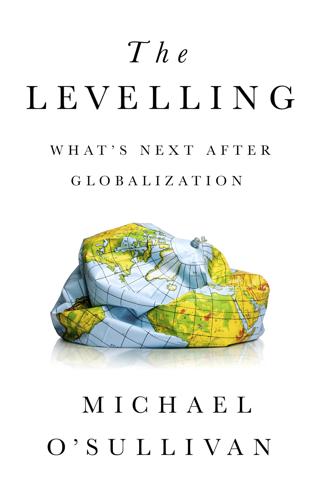
The Levelling: What’s Next After Globalization
by
Michael O’sullivan
Published 28 May 2019
A somewhat self-evident research finding shows that, as with business start-ups, achieving a good showing in its first election is also a marker of success for a new party, though many new parties still miss a businesslike focus on the mechanics of elections (e.g., the failure of the Party of Hope in the 2017 Japanese elections is an example of potential turned to withering defeat).12 One approach, whose appeal has been strengthened by the rise of social media, is for smaller, new parties to be radical in their ideology and in the way they communicate because in an age of social media, radicalism translates into greater marketing impact. As in many other walks of life, technology is disrupting politics: hacking, the concept of “fake news,” social media, and the pressures of constant media interaction are some of the factors that have accelerated the rise of new parties and causes and left others behind. For instance, the 2018 Edelman Trust Barometer showed that seven in ten people internationally are worried about fake news.13 A related trend—and one that is also part of the rise of a globalized, consumer culture—is the extent to which people are attracted by and attached to brands.

User Friendly: How the Hidden Rules of Design Are Changing the Way We Live, Work & Play
by
Cliff Kuang
and
Robert Fabricant
Published 7 Nov 2019
A hundred years of exploding consumer choice have pulled us apart, blinding us to the costs of what we consume, in the name of making that consumption easier. The problem now is how to design for individual happiness while aiming us all toward higher ends that we can’t accomplish on our own. We can no longer assume that a better world will come merely as a by-product of making more people comfortable. Whether the problem is climate change or fake news, design must now help us make decisions based not just on what’s easy to use, but on what we should be using in the first place. I once talked to a designer who’d spent nearly two decades at Apple, working first on desktop computers and later playing an integral role in creating the first iPhone.
…
K., 195–96 Bateson, Gregory, 33 Bauhaus, 61, 62, 70, 148, 333, 334, 370n17 beauty, 158 Beauty and the Beast, 155; Be Our Guest restaurant, 217–19 Béhar, Yves, 107 behavior, 96, 108, 310, 344; culture and, 114; design dissolving into, 304; existing, building on, 314–17; long-term changes in, 358n13 behavioral economics, 95–96, 259 behaviorism, 81, 257 Behrens, Peter, 62, 333, 370n16 Bel Geddes, Norman, 58, 70, 88 Bell, Alexander Graham, 199, 205 Bell Model 500 telephone, 91, 93 Bigelow, Julian, 32–33 Big Four design firms, 88, 94 Big Tomorrow, 244 Blackberry, 145, 274 blind people, 203–205 blood sample testing, 183–84 Boas, Franz, 334 books, 41 Borges, Jorge Luis, 91–92 Bosnian War, 49–50, 54 bottle designs, 155–57 Bould, Fred, 344 brain, 96, 110, 257; metaphors and, 152–53; reward centers in, 254 “brain in a vat” thought experiment, 360n31 brands, 35 Braun, 46, 338, 343 Breuer, Marcel, 148 Brexit, 263 Brin, Sergey, 342 Broadway, 55–59, 66 Brown, John Seely, 341 Brown, Joshua, 119–22 Brown, Tim, 177, 179–80 Brownie camera, 332–33 buses, 280–86 Bush, Vannevar, 189 Bushmiller, Ernie, 272 buttons, 42, 43, 105–106, 117–18, 124, 268–69; Amazon one-click, 145–46, 342; Facebook Like, 35, 36, 146, 247–49, 262, 265–66, 274, 291, 292, 342, 344; Fitts’s law and, 337, 354n7; Ripple device (help button), 53–55, 80, 117, 204; shape of, 84 Cambridge Analytica, 264–67 Capital One chatbot, 211–12, 259, 268 Caplan, Ralph, 94 Carnival Cruise Line, 229–39, 245, 259, 324; Experience Innovation Center, 231–34; Ocean Medallion and Personal Genome, 233–39, 268, 296 Carnival Destiny, 230 Carr, Austin, 216 cars, 60, 65, 70, 80, 85, 104, 230, 370n10; cruise control in, 119, 321; doors of, 154; emotional design of, 157; fascia (grill and headlights) of, 157, 360n36; “horseless carriage” metaphor and, 318; hybrid, 135–39, 144, 343; steering wheels in, 147, 332, 359n24; tillers in, 147, 332, 359n24; transitioning from standard to electric, 322 cars, self-driving, 99–106, 108, 125, 272; Audi, 99–104, 106, 108, 111–13, 118–20, 126, 144; “autopilot” idea and, 119, 124, 346; dashboard and steering wheel in, 114–17; expectations and, 111; horse metaphor and, 116, 117, 118, 126, 144; pedestrians and, 101–102, 113–14, 125, 210–11; politeness and, 125, 126; Tesla, 102, 103, 114, 119–22, 346; “three plus one” design philosophy for, 105, 106; trust and, 114; Uber, 121; Volkswagen, 103–104, 113–14, 117; workspace metaphor and, 318 Carter, Jimmy, 275 Center for Humane Technology, 274 Centre Pompidou, 157–58 Cerf, Vint, 199, 205 Chadwick, Don, 341 chain saws, 172, 173, 178, 339 Chapanis, Alphonse, 83–87, 95, 103, 106, 124, 202, 257, 334; B-17 Flying Fortress controls, 83–84, 335–36 chatbots: Capital One, 211–12, 259, 268; Eliza, 337–38 Chhatpar, Ravi, 305 Chicago slaughterhouses, 60 China, 61, 191–93 China Syndrome, The, 29 Chipchase, Jan, 308, 334 choice, 287, 289, 310; paradox of, 231 Cigna, 288 Clancey, William, 167 Clark, Andy, 293–94 Clarke, Arthur C., 223 climate change, 34, 289 Clinton, Hillary, 262, 264 Clinton Foundation, 267 Clippy, 112 coach metaphor, 136–39 coffee-spilling principle, 106 cognitive load, 322 cognitive psychology, 95, 272, 323 Cold War, 201 Columbia University, 125 “Coming of Age of Calm Technology, The” (Weiser and Brown), 341 computers, 26, 80, 177, 208, 270, 295–96; desktop metaphor in, 139–40, 143, 144, 146–47; feelings about, 108–10, 112; graphical user interface and, 143, 145, 146, 148; GRID Compass, 175–76, 339; mode confusion and, 144; Mother of All Demos and, 187–90, 338; mouse for, 141, 169, 177, 182–83; as personal assistant, 189; programs and software, 6–7, 176, 177 computing, ubiquitous, 233, 296, 369n11 Connell, Derrick, 191, 193 consistency, 31, 105 consumer, average, 200 consumer demand, aesthetic appeal and, 64–65 consumer design, business incentives aligned with, 68–71 consumer desire, 93, 175 consumption as social progress, 55, 65, 90, 175, 290 convenience, 273 conversation, 111–13 Cooper, Alan, 178, 261–62, 274–75, 341, 361n22 cooperation, 111–12 Coppola, Sofia, 195 Cortana, 194, 208 Creative Engineering (Arnold), 167 crime, organized, 39 Crofton, Meg, 216, 225 Crowder, Harlan, 4–8, 43; at IBM, 5–8, 338; “user friendly” term and, 4, 7, 338 cruise ships, 229, 230; see also Carnival Cruise Line CVS MinuteClinic, 310 cybernetics, 336 DaimlerChrysler, 318 Dalberg Design, 130, 288, 305, 309, 315, 319, 325 Darwin, Charles, 90 deaf people, 199, 205–206 defibrillator, 139 Degani, Asaf, 105 de la Mare, Nick, 243–45, 250 de los Reyes, August, 196–99, 202–203, 205–206, 292 democracy, 61 Depression, Great, 65, 68–70, 86, 93 Descartes, René, 152–53, 360n31 design, 45–46, 174–75, 180, 183; ancestor thinking in, 274–75; beauty and, 158; disability and, 202–205, 294; emotions and, 155–57, 325–27; ethical weight of, 294; of existing products, 90; “good,” 304–305; human-centered, 72, 182, 184, 272, 288; mood boards and, 155; new thoughts and, 294; of new types of products, 90, 93; paradox of, 289; postmodern, 157–58; postwar boom in, 89, 90; seamless, 369n11; as social progress, 68–70, 271, 290; societal effects of, 290–91; understanding in, 42, 56, 68, 80, 289; see also industrial design; user-friendly design designer error, 83 Design for the Real World (Papanek), 290 Design in the USA (Meikle), 69 Design Lab, 23–24 Design of Everyday Things, The (Norman), 22, 312, 339, 340 design research, 72, 306–10 design thinking, 24, 163, 170, 182, 184, 232 Dewey, John, 301 Diffrient, Niels, 94 disability, 199–200, 202–205, 294 Disney, 215, 229, 231, 232, 234, 238, 323; Imagineers, 222, 226 Disney, Walt, 215, 220–22, 226, 233, 336 Disneyland, 220, 336 Disney World, 215–17, 232–33, 245; Be Our Guest restaurant, 217–19; MagicBand and MyMagic+, 217–29, 237, 243–44, 288, 304, 317, 345 Donald, Arnold, 229, 231, 232, 238 dopamine, 254, 259, 263 Dreyfuss, Doris Marks, 67, 70, 94–95, 172–74 Dreyfuss, Henry, 55–59, 65–72, 87– 95, 117, 154, 163–65, 177, 181, 207, 271, 273, 285–87, 290, 293, 302, 308, 310, 334, 352n12; Broadway work, 55–59, 66; death of, 94–95; Honeywell thermostat, 92, 93, 336, 343; industrial design and, 59, 67–68, 93; Joe and Josephine drawings, 88–89, 92, 174, 176, 178, 185, 337; Macy’s and, 66–67, 165; The Measure of Man, 92, 337, 340, 341; RKO theater and, 55–56, 92, 173–74, 335; tank cockpit chairs, 87–88; telephone designs, 91, 93, 337, 371n21; Toperator washing machine, 69, 87, 335 Dropbox, 351n32 DVDs, 230 DVRs, 163, 321 dyslexia, 205 Dyson, James, 157, 339 Dyson vacuum cleaners, 157, 158, 339 Eames, Ray and Charles, 90 Earlham College, 280, 284 Eastman, George, 332–33 Eastman Kodak, 332–33, 336 eBay, 34–35, 249 education, 244–45 elderly, 201; suit to augment muscles of, 107–108, 340 Eliza conversational bot, 337–38 email, 199, 205, 242, 274; in-box, 134 embodied cognition, 152–54, 294, 360n32 emojis, 249, 260, 326–27, 342 Emotional Design (Norman), 326, 340 emotions, 155–57, 325–27, 370n16, 371n20 empathy, 163, 184–85, 190, 199, 212, 245, 257, 327; with disability, 200; industrialized, 163–64, 170, 183, 185, 245, 273–75, 294 Engelbart, Doug, 142, 168, 243, 363n11; Mother of All Demos by, 187–90, 338 Enlightenment, 95 Eno (Capital One chatbot), 211–12, 259, 268 environmental concerns, 305; climate change, 34, 289 ergonomics, 86, 92, 95 Erickson, Thom, 369n7 errors, 86–87, 95, 173; blaming humans for, 122; designer, 83; pilot, 81, 83, 102–103, 335 Esalen, 168, 169 Esslinger, Hartmut, 326 ethnography, modern, 334 European Union (EU), 346–47 expectations, 110–11, 313 “experience,” origin of word, 369n3 Experience and Education (Dewey), 301 Exposition International des Arts Décoratifs et Industriels Modernes, 61–62 Eyal, Nir, 258–59 Fabricant, Richard, 319–20 Fabricant, Robert, 9, 96, 130, 288, 301–30 Facebook, 118, 131, 132, 239, 243, 247–48, 250, 251, 255, 258, 259, 261, 262, 267–69, 271, 274–76, 292–95; advertising on, 267; feedback and, 35, 36; in Kenya, 147–48; Like button, 35, 36, 146, 247–49, 262, 265–66, 274, 291, 292, 342, 344; misinformation spread on, 262, 263; News Feed, 247, 248, 318; tribalism fostered by, 245, 262–64 factories, 60, 63; accidents in, 82 Fadell, Tony, 342, 344 fake news and misinformation, 262, 263, 289 Farber, Sam and Betsey, 202–203, 341 Fast Company, 216 feedback, 7, 32–38, 42, 105, 112–13, 119, 269, 288, 305, 311, 313, 320, 327, 336; artificial intelligence and, 35–36; bus system and, 282; buyer/seller, 34–35; car dashboards and, 137–38; Facebook and, 35, 36; Instagram and, 36–37; Like button model of, 249, 291, 342, 344; Ripple device and, 55; and suit to augment muscles of the elderly, 108; Three Mile Island and, 28, 32, 40, 42; Wizard of Oz technique and, 193, 312 feminism, 63 Fernbach, Philip, 271 Filson, Ben, 344 Finland, 170, 182, 288–89, 345 Fisher, Helen, 370n10 Fitts, Paul, 80–83, 86–87, 106, 173, 337, 354n7 Flinchum, Russell, 71 flyswatter, 69 Fogg, B.

The Coddling of the American Mind: How Good Intentions and Bad Ideas Are Setting Up a Generation for Failure
by
Greg Lukianoff
and
Jonathan Haidt
Published 14 Jun 2018
There is no universally accepted definition of “critical thinking,” but most treatments of the concept12 include a commitment to connect one’s claims to reliable evidence in a proper way—which is the basis of scholarship and is also the essence of CBT. (Critical thinking is also needed to recognize and defeat “fake news.”) It is not acceptable for a scholar to say, “You have shown me convincing evidence that my claim is wrong, but I still feel that my claim is right, so I’m sticking with it.” When scholars cannot rebut or reconcile disconfirming evidence, they must drop their claims or else lose the respect of their colleagues.
…
Show students the short video clip we described in chapter 4 of Van Jones urging them to forswear emotional “safety” and instead treat college as “the gym.”15 Explicitly reject the Untruth of Emotional Reasoning: Always trust your feelings. In orientations, colleges should emphasize the power of the confirmation bias and the prevalence of cognitive distortions. It is challenging to think well; we are easily led astray by feelings and by group loyalties. In the age of social media, cyber trolls, and fake news, it is a national and global crisis that people so readily follow their feelings to embrace outlandish stories about their enemies. A community in which members hold one another accountable for using evidence to substantiate their assertions is a community that can, collectively, pursue truth in the age of outrage.
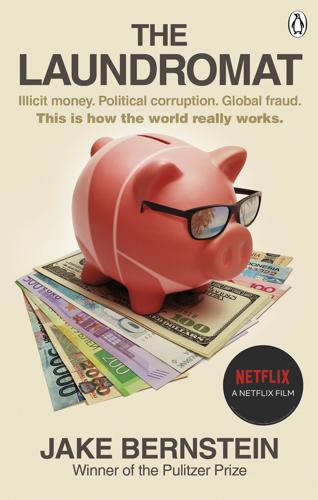
The Laundromat : Inside the Panama Papers, Illicit Money Networks, and the Global Elite
by
Jake Bernstein
Published 14 Oct 2019
FBI director James Comey broke with precedent and inserted himself into the election, parceling out negative judgments and suggestive details on what turned out to be a fruitless Clinton email investigation. And Russian president Vladimir Putin launched a massive cyber-attack on the United States in an attempt to influence the outcome. The Kremlin-backed attack included hacking the email server of the Democratic National Committee, flooding social media with fake news, and attempts to compromise individual state election databases. According to a declassified intelligence assessment, Putin targeted Democrats and the U.S. electoral system in part because he was furious over the Russian revelations contained in the Panama Papers.2 The details about the illicit cash flows swirling around the Russian leader had filled newspapers and news broadcasts worldwide.
…
Erdoğan’s relentless campaign against journalists in Turkey continued. As of August 2017, the Turkish government had arrested more than two hundred journalists and media workers. In the United States, Yalçındağ’s business partner–turned–U.S. president, Donald Trump, also declared war on journalists and the media, castigating them as purveyors of “fake news.” EPILOGUE Ramón Fonseca sat in his corner office in the Mossfon building in Panama City. It was early December 2016, eight months after the publication of the Panama Papers. Evidence of the firm’s demise was all around him—in the empty offices throughout the building’s warren-like interior, the packing boxes that cluttered his work space.

Stolen Focus: Why You Can't Pay Attention--And How to Think Deeply Again
by
Johann Hari
Published 25 Jan 2022
They are damaging not just our attention as individuals, but our collective attention. At the moment false claims spread on social media far faster than the truth, because of the algorithms that spread outraging material faster and farther. A study by the Massachusetts Institute of Technology found that fake news travels six times faster on Twitter than real news, and during the 2016 U.S. presidential election, flat-out falsehoods on Facebook outperformed all the top stories at nineteen mainstream news sites put together. As a result, we are being pushed all the time to pay attention to nonsense—things that just aren’t so.
…
DeSteno et al., “Beyond Valence in the Perception of Likelihood: The Role of Emotion Specificity,” Journal of Personality and Social Psychology 78, no. 3 (2000): 397–416. GO TO NOTE REFERENCE IN TEXT “decreased depth of processing”: Litvak et al., “Fuel in the Fire,” 299. GO TO NOTE REFERENCE IN TEXT A study by the Massachusetts Institute of Technology found that fake news travels six times faster on Twitter than real news: S. Vosoughi, D. Roy, and S. Aral, “The Spread of True and False News Online,” Science 359 (2018): 1146–51. GO TO NOTE REFERENCE IN TEXT during the 2016 U.S. presidential election, flat-out falsehoods on Facebook outperformed all the top stories at nineteen mainstream news sites put together: C.

The Optimist: Sam Altman, OpenAI, and the Race to Invent the Future
by
Keach Hagey
Published 19 May 2025
After GPT-3.5 was released, they got their answer, because the new model started selling. “Customers wanted the aligned model because it was more likely to do the thing they wanted it to do,” said one senior OpenAI executive who worked on the project. Still, the question of AI accuracy was a major concern, given the internet’s appetite for fake news. One idea for solving GPT-3.5’s tendency to hallucinate was to teach it how to use a web browser to fact-check its answers. This project, called WebGPT, was headed up by a researcher and passionate EA named Jacob Hilton, who worked on OpenAI co-founder John Schulman’s reinforcement learning team.
…
Louis, 26, 53 Delicious (website), 75 Deming, Peter, 59–60, 64 democracy, 152–53, 225 Democratic Party, 21, 204, 207–8, 234, 296 Deployment Safety Board (DSB), 279–80, 287 Deshpande, Alok, 58–61, 64, 76, 85, 89, 102, 111, 127 Deshpande, Sheila, 58, 91 Desmond-Hellmann, Sue, 303 Deutsch, David, 314–15 Dewey, John, 45 deworming charities, 211, 213 Diamandis, Peter, 144, 210 diffusion model trained by adding digital “noise,” 262–63 Digital Chocolate mobile gaming company, 97 Diller, Barry, 229 Ditton, Andy, 34–35 DJ Kay Slay, 102 DJI drones, 231 DLA Piper lobbying firm, 300 DNNresearch, 182 Doblet phone-charging startup, 149, 177 Dodgeball location-based app, 104, 105, 118 Donahue, Nick, 260–61 Dota 2 (video game), 215–18, 221–22, 242, 284 dot-com bubble of the late 1990s, 73, 87, 93 Dowling, Steve, 287 Dropbox, 123, 139, 150, 152, 157, 158–59, 247 drop-outs, tech bros as mostly, 62, 88, 91–92, 96, 108, 113, 124, 132, 175, 179, 217–18 Dubai, 274 eBay, 82, 168 economic growth democracy and, 152–53, 225 dot-com bubble of the late 1990s, 73, 87, 93 financial crisis of 2008, 4, 116–17, 131, 137, 150 as a kind of spiritual hack, 153 real wages, 132 Edge web browser, 272 Edison, Thomas, 46 effective altruism, 2, 4, 6 189–214, 224, 265–66, 276, 300 “bed nets” era of, 212 deworming charities, 211, 213 GreaterWrong forum, 301 Open Philanthropy Project, 213–14, 241, 266–67, 276–77, 299–301 see also AI safety Effective Ventures, 276 Efficient Market Hypothesis, 144 Eichler, Mike, 30, 40 80,000 Hours, 211–12 Elbaz, Gil, 243 Electronic Arts, 97 Electronic Frontier Foundation (EFF), 59, 98 energy production, 13, 134, 231, 280, 313–14 nuclear energy, 12–13, 57, 108, 134–36, 154, 177, 205, 230, 259, 280 solar energy, 28 see also compute Enigma machine, 139 Enlightenment, 314–15 Enron, 60 esports, 215–16 Evans, Jon, 142 Extropians, 141–42, 144–45, 164–65, 199, 214 Fabolous (DJ), 102 Facebook, 60, 63, 73, 79–80, 96, 101, 116–17, 123, 127, 131, 137, 161, 169, 184, 188, 204, 207–8, 229 fact-checking, 265 Fairchild Semiconductor, 72, 87 fake news, 265 Federal Communications Commission (FCC), 59, 106 Federal Trade Commission, 285 Feldman, Ellen, 173 Fellow Robots robotics company, 210 Fermi’s paradox, 170 “few shot” learning, 244 “Feynman method of being a genius,” 219 Filan, Daniel, 305 financial crisis of 2008, 4, 116–17, 131, 137, 150 “finding product-market fit,” 107, 156 “finding your tribe,” 157 Finney, Hal, 142 Firefox web browser, 63 Flexport logistics platform, 138 Florida, 40 “Flowers for Algernon” (Keyes), 140 Foo Camp, 63 Forbes (magazine), 257 Foreign Affairs (journal), 267 Foresight Institute, a technology think tank, 144 Forstall, Scott, 112, 114, 116 “Founder Mode” (Graham), 263 founders as kings, 6, 60, 65, 68, 70–75, 95 Founders at Work (Livingston), 63, 64 Founders Fund venture firm, 2, 6, 132, 139, 147, 226 Foursquare, 118–20, 126 Francis, Peggy, 32, 36 “Free Oceana,” 141 Freemasonry, 31 Fridman, Lex, 17, 304 Friend, Tad, 201 From Zero to One (Thiel and Masters), 132, 230 frontier in American history, 153 FroSoCo (short for Freshman Sophomore College), 55, 57 FTX crypto market, 212, 257 Furstenberg, Diane von, 229 Future of Humanity Institute, 5, 165–66, 241–42, 267 Future of Life conference, Puerto Rico (2015), 167–70, 207, 211 Future of Life Institute, 145, 168, 208–9, 272 Galef, Julia, 225 Galois, Évariste, 174 game theory, 166, 285 Gates, Bill, 65, 90, 212, 216, 267–68 Gates, Melinda, 212 Gauss, Carl Friedrich, 174 Gawker Media, 137, 204–5 gay marriage rights, 56, 296 Gay Straight Alliance, 52 Gaza, war in, 289 GE (General Electric), 210 Gebbia, Joe, 263 Gebru, Timnit, 252–53, 270–71 Gemini AI model, 307 general artificial intelligence (AGI), see AI (artificial intelligence) generative AI, 1, 3, 9, 219, 221, 270 generative pre-trained transformers (GPTs), 3, 221, see also various GPTs under OpenAI genius, human, 77, 81, 127, 140, 156, 219 “Gentle Seduction, The” (Stiegler), 199–200 George, Henry, 256 Georgia, 23–25, 58, 104, 142 GeoSim 3D modeling company, 209–10 Germany, 274 Gibney, Bruce, 132–33 Gibstine, Connie (Sam’s mother), 15, 31–38, 39–50, 53–54, 91, 201–2, 227–28, 248–50, 261, 295, 312 Gil, Elad, 136 Gillette, 62, 71 Ginsberg, Allen, 166 Girard, René, 131 Github Copilot, 262 Gittell, Ross, 35 GiveWell, 212–13, 266 Giving Pledge, 212 Giving What We Can, 211 global positioning system (GPS) chips in mobile phones, 57–58, 99 Gmail, 123, 150, 286–87 Go (game), 191–92, 216–17 “godfathers of AI,” 188, 312 Goertzel, Ben, 145 Goetz, Jim, 88 Goldman Sachs, 59, 64, 150, 225 Good Ventures foundation, 212–13 Google AdSense, 243 Alphabet, 194, 271 “Attention Is All You Need” (“the transformer paper”), 218–19, 270 Bard conversational model, 271 Chrome web browser, 272 DeepMind acquisition, 146–48, 154, 165, 168–69, 171–72, 184, 189–94, 208, 211, 217, 221, 270 Dodgeball location-based app acquisition, 104, 105, 118, 104 Gemini AI model, 307 Gmail, 123, 150, 286–87 recent initial public offering (IPO) of, 87 YouTube acquisition, 93–94 see also Anthropic Google assistant, 271 Google Brain, 82, 169, 184, 243, 270 Google Colab Notebook, 247 Google I/O annual developer conference, 307 Google Maps, 59 Google Search, 270 Gordon-Levitt, Joseph, 210, 225 GotNews (website), 204 GPTs (generative pre-trained transformers), see chatbots; various GPTs under OpenAI Graham, Paul, 3, 13–16, 62–65, 67–76, 81–82, 94, 136, 149, 151, 186, 263 “A Unified Theory of VC Suckage,” 72–73 “Collison installation,” 246 “Founder Mode,” 263 “How to Start a Startup,” 69–70 painting’s influence on, 67–69 see also Y Combinator (YC) graphical user interfaces, 195 graphics processing units (GPUs), 176, 181–82, 219, 247, 255 Gras, Mike, 249 GreaterWrong forum, 301 Green Dot prepaid debit card company, 126–27, 133 Green-Lowe, Jason, 301–2 Grey, Aubrey de, 144, 259 Groom, Lachy, 151–52, 154, 157 Gross, Daniel, 309 Groupon, 119, 116 Guardian, The (newspaper), 220 Gurevich, Mikhail, 77, 82 Gurson, Doktor, 149, 177 Hacker News message board, 132, 151 hackers/hacking, 3, 57, 63, 68–70, 160n, 162 Haffner & Gibstine Real Estate, 32 Halcyon Molecular, 257–59 Hall, Ed, 26 Halo 3 (video game), 95, 109 ham radios, 32–33, 48 Hanson, Robin, 141–42, 144 Harder, Josh, 207 “hardware strategy, the,” 226, see also compute Harris, Kamala, 273, 313 Harris, Sylvia, 24–25 Hartford Courant (newspaper), 28 Hartford, CT, 28–29 Hartford Institute of Criminal and Social Justice, 28 Hartmann, Frank, 28–29 Harvard Computer Society, 69 Hassabis, Demis, 145–47, 169, 171–72, 192, 209 Hassenfeld, Elie, 212 Hawaii, 227, 250, 260, 295, 311–12 Hawking, Stephen, 169, 211 Hawkins, Trip, 97 HBO’s Silicon Valley, 101, 258–59 HBO’s Westworld, 199 heads, frozen, 141 Health Extension Foundation, 258 Helion Energy nuclear fusion startup, 13, 136, 207, 259, 280, 298 Helo telepresence robot, 210 Her (film), 307 Herzog, Isaac, 274 Hill, Daniel, 165 Hilton, Jacob, 265 Hinduism, 17 Hinton, Geoff, 178–84, 188, 266, 312–13 hip-hop, 102 Hipmunk travel search company, 162 HIV/AIDS, 33, 43, 49 Hoffman, Reid, 109, 172, 223, 231, 234–35, 277, 296 Hogan, Hulk, 205 Holocaust, attempted analogies to the, 135 Homejoy, 195 Horizon Institute for Public Service, 301 housing, see affordable housing Houston, Drew, 157 “How to Start a Startup” (Graham), 69–70 Howard, James, 110–11 Howl (Ginsberg), 166 Huffman, Steve, 69–70, 75, 76–78, 81, 162–63 Hui, Fan, 192 Human Advancement Research Community (HARC), 195, 197–98, 236 humans in a democratic society, 135 human genius, 77, 81, 127, 140, 156, 219 human-computer interfaces, 210 learning to truly produce knowledge, 314 neuroscience and studying the human brain, 145–48, 202 “only good for hugs or sex,” 269 their brains as the original neural nets, 181 see also chatbots Hunnewell, H.
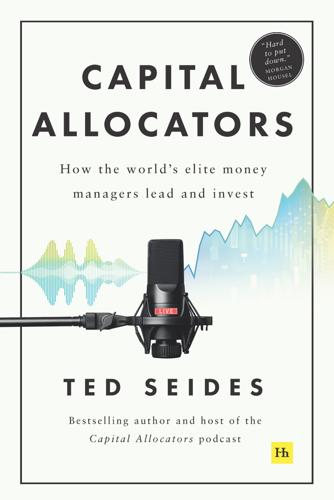
Capital Allocators: How the World’s Elite Money Managers Lead and Invest
by
Ted Seides
Published 23 Mar 2021
Most boards end up spending surprisingly little time on the issue of what they are there to achieve and spend a ton of time on little buckets, benchmarks for each of them, and the ones that are doing a little bit worse than benchmarks. It’s sort of like someone deciding that they’re going to check every newspaper in the world for grammatical and typographical errors instead of understanding whether or not there’s fake news. Managing through the intricacies of the boardroom is an exercise in psychology and human behavior. Chris Ailman describes it as working for a chorus of 12, in which you work with them individually, but you have to listen to the chorus. You can’t listen to 12 solos because you are not going to meet their needs.
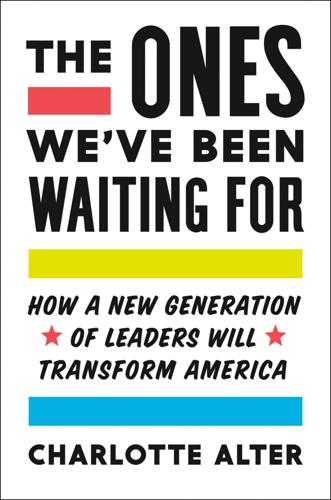
The Ones We've Been Waiting For: How a New Generation of Leaders Will Transform America
by
Charlotte Alter
Published 18 Feb 2020
But because millennials grew up navigating this jungle of online information, they are often much better than older people at deciphering what’s true and what’s false. Millennials are more likely than boomers to get their news from Facebook—but because they’re digital natives, they’re also better at understanding how to interpret it. One study found that people over sixty-five were seven times more likely than younger people to share fake news during the 2016 election. People under fifty are significantly better than older people at distinguishing facts from opinions, according to a Pew study, and boomers are most likely to find themselves in Facebook “bubbles,” surrounded by posts that reinforce their own views. Still, even if millennials are better at metabolizing online information than their parents, the spread and weaponization of misleading information will likely be a permanent feature of millennial political life.
…
understanding how to interpret it: Amy Mitchell, Jeffrey Gottfried, and Katerina Eva Matsa, “Millenials and Political News,” Pew Research Center, June 1, 2015, journalism.org/2015/06/01/millennials-political-news/. during the 2016 election: Andrew Guess, Jonathan Nagler, and Joshie Tucker, “Less Than You Think: Prevalence and Predictors of Fake News Dissemination on Facebook,” Science, American Association for the Advancement of Science, January 9, 2019, advances.sciencemag.org/content/5/1/eaau4586. distinguishing facts from opinions: Jeffrey Gottfried and Elizabeth Grieco, “Younger Americans Are Better Than Older Americans at Telling Factual News Statements from Opinions,” Pew Research Center, October 23, 2018, pewresearch.org/fact-tank/2018/10/23/younger-americans-are-better-than-older-americans-at-telling-factual-news-statements-from-opinions/.

Competition Overdose: How Free Market Mythology Transformed Us From Citizen Kings to Market Servants
by
Maurice E. Stucke
and
Ariel Ezrachi
Published 14 May 2020
While dependent on the Gamemakers for readers, newspapers for the last decade have watched these same Gamemakers siphon away their advertising revenue, which has damaged their ability to pay for high-quality journalism.107 But the Gamemakers are not concerned if the quality of the journalism deteriorates, even to the level of “fake news” (which tends to appeal to the fear and anger that keep us engaged), so long as it attracts users. The Gamemakers are not just siphoning away newspapers’ ad revenues but also their subscription revenues. As one newspaper executive told us, for the privilege of being accessed through the Android smartphone, publishers must hand over between 15 and 30 percent of their in-app subscription revenues and payments to Google.
…
Facebook, “About Audience Network,” accessed May 2, 2019, https://www.facebook.com/business/help/788333711222886. 127.Autorité Report, 19 (“Most publishers who sell their inventory (i.e. their ad spaces, corresponding to various spaces on a webpage viewed by internet users: in columns, between paragraphs of text, etc.) through programmatic technologies use intermediaries, in that their ad space could not be sold through a vertically integrated model due to a lack of audience”), 42. 128.European Commission, Decision AT.39704, Google Search (Shopping), June 27, 2017, http://ec.europa.eu/competition/antitrust/cases/dec_docs/39740/39740_14996_3.pdf. 129.See, e.g., Bundeskartellamt, Online Advertising, February 2018, https://www.bundeskartellamt.de/SharedDocs/Publikation/EN/Schriftenreihe_Digitales_III.pdf, 8 (noting how “[s]ome even claim that the value of advertising is now first and foremost the value of the data and that the big platforms have huge market advantages on account of their combining reach with data depth”); Furman Report, 1.52, 1.73, 1.79, 1.136. 130.ACCC Preliminary Report, 80. 131.House of Commons Digital, Culture, Media and Sport Committee, Disinformation and ‘Fake News,’ Final Report 2019–8, HC 1791 (February 14, 2019), https://publications.parliament.uk/pa/cm201719/cmselect/cmcumeds/1791/1791.pdf, ¶ 116. 132.House of Commons 2019 Report, ¶ 96 (“From the Six4Three case documents, it is clear that spending substantial sums with Facebook, as a condition of maintaining preferential access to personal data, was part and parcel of the company’s strategy of platform development as it embraced the mobile advertising world.”); Sam Levin, “Facebook Documents Published by UK—the Key Takeaways,” Guardian (Manchester), December 5, 2018, https://www.theguardian.com/technology/2018/dec/05/facebook-documents-uk-parliament-key-facts. 133.House of Commons 2019 Report, ¶ 106. 134.House of Commons 2019 Report, ¶ 106. 135.Google Ads, “Grow Your Business with Google Ads,” accessed May 2, 2019, https://ads.google.com/home/ (“Your digital ads can appear on Google at the very moment someone is looking for products or services like yours”). 136.See, e.g., ACCC Preliminary Report, 87 (“Over the past two years, almost half of all complaints received by the ACCC about Google and Facebook from small businesses have been in relation to a lack of transparency in advertising services, including difficulties in disputes.”); see also Bundeskartellamt, Online Advertising: Advertisers often refer to online advertising platforms like those run by Google and Facebook as walled gardens, that is closed platforms or systems on which producers or operators impose user restrictions.

Super Pumped: The Battle for Uber
by
Mike Isaac
Published 2 Sep 2019
The public suddenly realized the scope and targeting power of Google’s and Facebook’s advertising engines. Members of Congress, sensing unrest, began singling out the tech companies. So did the media. “The most obvious way in which Facebook enabled a Trump victory has been its inability (or refusal) to address the problem of hoax or fake news,” a report from New York magazine claimed. The headline expressed the creeping sentiment that “Donald Trump Won Because of Facebook.” That doubt and worry began spilling over into the minds of tech workers, too. Even inside of Facebook, the most zealous of the true believers began to question the world-shaping power of the platform they had built.
…
He had tapped into a rage shared by more people than he had realized. Most immediately, those who retweeted him expressed anger towards the Trump administration and its discriminatory actions. But deleting Uber went beyond that; it became something people could do, an action they could broadcast as part of their protest, a repudiation of tech culture, of fake news, of Silicon Valley—the industry that many believed duped Americans into electing Trump in the first place. To #deleteUber wasn’t just to remove a ride-hailing app from one’s phone. It was also to give a giant middle finger to greed, to “bro culture,” to Big Tech—to everything the app stood for. As O’Sullivan logged out of the @Bro_Pair account on Twitter and turned off his computer later that night, he felt a twinge of happiness for the first time in months.
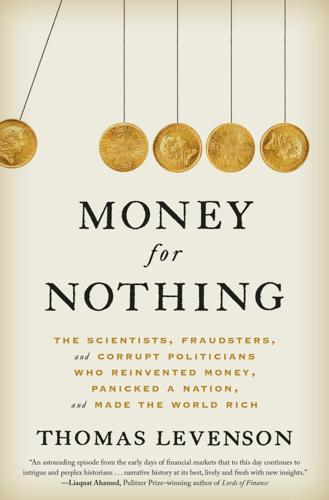
Money for Nothing
by
Thomas Levenson
Published 18 Aug 2020
Most of his audience believed that Exchange Alley was hostile territory and that the trade in financial paper was fraudulent to the core. Those who read their Defoe (or any other typeset scold) knew satire when they heard it. But Shadwell’s scene worked because it was plausibly an exaggeration, not pure fiction. Fake news was a daily fact of life in Exchange Alley, as tipsters for another novel phenomenon, the newspapers, prowled the coffeehouses in search of choice nuggets. Information—or what could be passed as such—had a recognized price, “a shilling, or a pint of wine,” paid to “some little Clerk, or a conference with a Door-keeper.”
…
“BANKRUPTS AND BEGGARS” Daniel Defoe, The Villainy of Stock-Jobbers Detected, and the Causes of the Late Run upon the Bank and Bankers Discovered and Considered (London, 1701), p. 26. NED WARD AGREED Ward, London Spy, p. 298, quoted in Murphy, Origins of the English Financial Markets, p. 161. THOSE KNAVES CAME TO LIFE Thomas Shadwell, The Volunteers; or, The Stock-Jobbers (London: James Knapton, 1693), pp. 23–24 (act 2, scene 1). FAKE NEWS WAS A DAILY FACT OF LIFE IN EXCHANGE ALLEY The Case of the Coffee House Men (undated), p. 7, quoted in Dale, First Crash, p. 10. THE CASE OF ESTCOURT’S LEAD MINE COMPANY Anne L. Murphy, “Trading Options Before Black-Scholes: A Study of the Market in Late Seventeenth-Century London,” Economic History Review, vol. 62, no.
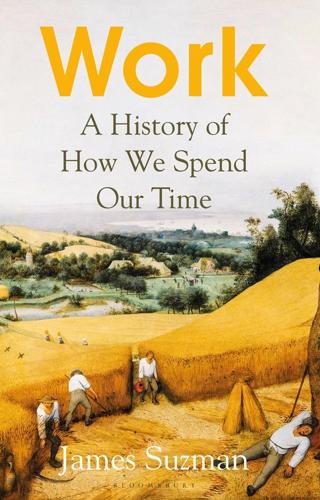
Work: A History of How We Spend Our Time
by
James Suzman
Published 2 Sep 2020
The appeal of this tale of Enlightenment collaboration stemmed principally from the fact that the publication of Wealth of Nations in 1776 not only coincided with the United States wresting its independence from the British Crown, but also because it could be read as a velvet-gloved critique of the tariffs, taxes and customs duties that inspired North American colonists to cast off the shackles of British imperial rule in the first place. But even more than this, the Wealth of Nations articulated the entrepreneurial spirit of free enterprise that America later co-opted as the central narrative of its success. It turns out that the transatlantic friendship between these two titans of the Enlightenment was fake news. Franklin and Smith shared some mutual friends and had read many of the same books. They may also have met one another socially during the period when Franklin served as the representative for Massachusetts and Pennsylvania to the British Crown in London during the 1770s. But there is nothing to suggest that their intellectual exchanges extended beyond Adam Smith purchasing a copy of the book in which Franklin described his experiments with electricity.
…
Each of them played a small role in pushing our species across an important historical threshold. By the beginning of 2008, more people lived in cities than in the countryside for the first time in our species’ history. It turns out that the transatlantic friendship between these two titans of the Enlightenment was fake news. Franklin and Smith shared some mutual friends and had read many of the same books. They may also have met one another socially during the period when Franklin served as the representative for Massachusetts and Pennsylvania to the British Crown in London during the 1770s. But there is nothing to suggest that their intellectual exchanges extended beyond Adam Smith purchasing a copy of the book in which Franklin described his experiments with electricity.

Open: The Story of Human Progress
by
Johan Norberg
Published 14 Sep 2020
Suddenly journalists had a whole planet of horrors to pick and choose from. And even though war fatalities and homicide rates have halved in the last three decades, there is always a war and a serial killer somewhere in the world, and then that will top the news cycle everywhere and give us the impression that it’s becoming more frequent. The problem is not fake news, it’s real news without context or reflection. Ironically, this thirst for drama also makes us blind to some of the worst ongoing tragedies on the planet, like chronic undernourishment or deaths from indoor air pollution, because they are not sudden and explosive, they are just there all the time in the background.
…
Their opponents are not other countries and civilizations, but dictators, fundamentalists and protectionists trying to control their lives and steal their future. And despite aggressive nationalist agitation from these groups, they also join hands across borders. White supremacists adore Russia’s kleptocrats, who in turn support the populist Right and Left with money, fake news and attacks on voting systems. China’s communist party provides lesser dictators with surveillance technology and generous funding. As proven by their harsh measures against any attempt to organize criticism and opposition, their real enemy is not the West but their own people. Populist leaders in the West, like Donald Trump, do their utmost to upend alliances with other open societies, which makes them – and the US – more divided and weaker.
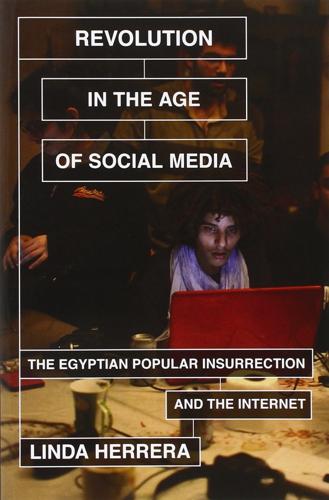
Revolution in the Age of Social Media: The Egyptian Popular Insurrection and the Internet
by
Linda Herrera
Published 14 Apr 2014
The two warring sides—the Islamists and the military—waged fierce battles for control over the minds and hearts of the Facebook youth. Facebook turned into a rumor mill, a platform for misinformation. Rumor vemes entered the space like virtual bombs exploding in the squares of social media. Facebook turned into a discredited space of lies and fake news. In this period of clashes between State Security and the Brotherhood, the “We Are All Khaled Said” page went mute. For the activists involved in the January 25 Revolution, and for the more democratically inclined revolutionaries, this moment became a time of reflection, silence, and confusion. Figure 6.7: “Which do you prefer?

Collaborative Futures
by
Mike Linksvayer
,
Michael Mandiberg
and
Mushon Zer-Aviv
Published 24 Aug 2010
Hamilton Nolan wrote “The email address that sent out this message was linked to the site of The Yes Men, longtime liberal prank group that has been doing things just as complex and finely tuned as this for years. The Yes Men run the Because We Want It site, through which they set up this prank. They wanted to be anonymous for a while allegedly, but too late.” <gawker.com/5084164/fake-new-york-times-declares-iraq-war-over-heres-who-did-it> 77 And from then on, the project authorship was assigned to The Yes Men. The group of organizers sent out a press release later in the day from the email address “New York Times Special Edition <special[at]nytimes-se.com>”. Nowhere in the email is a ribution given, or authorship claimed.

The New Class War: Saving Democracy From the Metropolitan Elite
by
Michael Lind
Published 20 Feb 2020
Under technocratic neoliberalism, however, the boss class pursues the working class after the workday has ended, trying to snatch the unhealthy steak or soda from the worker’s plate, vilifying the theology of the worker’s church as a firing offense and possibly an illegal hate crime to be reported to the police, and denouncing the racy, prole-oriented tabloid Internet as “fake news” to be censored by the guardians of neoliberal orthodoxy and propriety. It is no wonder that the working classes of the Western democracies are rebelling against their arrogant and meddlesome overlords. As we have seen, one reason for the success of demagogic populist politicians in the US and Europe is their willingness to mock the pieties and flout the etiquette that the aggressive managerial overclass seeks to impose on working-class majorities from above.

Team Human
by
Douglas Rushkoff
Published 22 Jan 2019
In repeated experiments, social media platforms have demonstrated their ability to induce people to vote or not vote by placing particular messages in their news feeds. Combine this with the same companies’ ability to predict how someone is likely to vote and we get a powerful tool for undermining democracy by manipulating voters’ behaviors. No fake news required. We have no way of knowing when this is being done to us, or what other techniques are being used. Social media platforms have no facial expressions through which we can detect their duplicity. They see us, but we can’t see them. In these virtual spaces, we can’t even truly engage with the faces of other people.

The Fifth Risk
by
Michael Lewis
Published 1 Oct 2018
She was also pretty sure that people knew what a tornado could do to them. The people in Alabama and Mississippi knew. So did the people in Joplin. Their problem, as she saw it, was a different sort of failure of the imagination. People could not imagine that all those tornadoes that had wound up hitting other people could instead have hit them. The sirens had become fake news. The government needed to find ways to make the news feel real. A few months later, she moved to Washington, DC, on a congressional fellowship and went to work for a senator who sat on the committee that oversaw the Commerce Department. “I’m gunning for something inside NOAA,” she said. “You have to have people on the inside to make the change.”

Tailspin: The People and Forces Behind America's Fifty-Year Fall--And Those Fighting to Reverse It
by
Steven Brill
Published 28 May 2018
They could sign up for news alerts and other emailed bulletins from the websites they agreed with, or short-circuit the whole process by relying on Facebook news feeds and tweets provided by friends and others whose point of view they shared. That often led to relying on news and facts that produced a one-sided spin, as well as being exposed to what came to be called “fake news” that had been piped into news feeds by interests (such as hackers working for Russia) deliberately trying to deceive readers. BuzzFeed News, after conducting an analysis of web traffic and engagement following the 2016 American election, found that “the top-performing fake election news stories on Facebook generated more engagement than the top stories from major news outlets, such as the New York Times, Washington Post, Huffington Post, NBC News, and others.”
…
As a result, newspaper employment had dropped to 174,000 from 412,000 in 2001, and Americans could complain that they were less armed with the straight-shooting journalism necessary to hold their elected leaders accountable. But that is not true. Today, the Internet and social media produce not just fake news or slanted news but infinite sources of solid news and information—if people choose to use them. Sheila Krumholz’s OpenSecrets.org can tell any voter which donor from which industry has given how much to which member of Congress. Peter Peterson’s foundation website produces up-to-the-minute reports on federal spending and the deficit.

London Review of Books
by
London Review of Books
Published 14 Dec 2017
But the American hold on New Orleans seemed anything but secure. ‘All [was] doubt, uncertainty, rumour, conjecture and surmise,’ one contemporary wrote as news of Burr’s activities circulated in the city. There were only 1100 American troops in the area, and one newspaper declared that Burr commanded 12,000 armed men (an early instance of fake news). Others claimed that General James Wilkinson, the governor of the Louisiana Territory, was in league with Burr. (The duplicitous Wilkinson was later discovered to have been in the pay of Spain while plotting his own invasion of Spanish territory.) The French and Spanish residents of New Orleans were not enthusiastic about joining up with an aggressively Protestant nation.
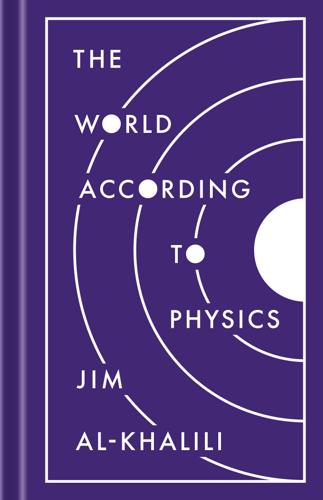
The World According to Physics
by
Jim Al-Khalili
Published 10 Mar 2020
So, trying to persuade someone in this frame of mind with scientific evidence can often prove to be a waste of time. Many people, facing an avalanche of widely different views through both the mainstream and social media, understandably find it difficult to know what to believe. How can they tell accurate evidence-based information from fake news? One thing scientists can do is to tackle the issue of false balance. Thus, when almost every climatologist in the world acknowledges that the Earth’s climate is changing rapidly due to humankind’s activities and that something needs to be done urgently if we are to prevent its catastrophic consequences, the news media does not need to have a climate change denier provide ‘the other side of the argument’.

Grand: A Memoir
by
Sara Schaefer
Published 10 Aug 2020
More in Personal Memoirs The Glass Castle Shoe Dog The Girl with the Lower Back Tattoo Year of Yes An Invisible Thread Primates of Park Avenue about the author Sara Schaefer is a stand-up comedian and writer. She was the cohost of MTV’s Nikki & Sara Live and has written for numerous television shows, including The Fake News with Ted Nelms and The Kennedy Center Mark Twain Prize for American Humor. Sara’s solo show Little White Box debuted to a sold-out run at the 2017 Edinburgh Fringe Festival, and her Comedy Central Stand-Up Presents special premiered in 2019. She lives in Los Angeles. FOR MORE ON THIS AUTHOR: SimonandSchuster.com/Authors/Sara-Schaefer SimonandSchuster.com @GalleryBooks We hope you enjoyed reading this Simon & Schuster ebook.

Fewer, Better Things: The Hidden Wisdom of Objects
by
Glenn Adamson
Published 6 Aug 2018
It relates to a broader set of worries about class distinction: concerns about how, and whether, our citizens are really interested in one another’s perspectives. There is a lot of strong opinion around these days, often fueled by misinformation. Like many suddenly urgent political considerations, this one has resulted in a bloom of catchphrases: Journalists speak of the need to “fact-check,” to combat the rise of “fake news,” to forestall the onset of “post-truth” times. My brother Peter, the philosopher, has contributed some helpful wisdom to this debate, going so far as to suspend his weekly podcast for the first time in order to broadcast a special episode about the current crisis of truth. He argues that the problem we are facing is not so much a spate of outright lying, which he calls a “first-order” problem, or even that people are lying knowingly, or buying into things that they should know aren’t true—which are “second-order” problems.
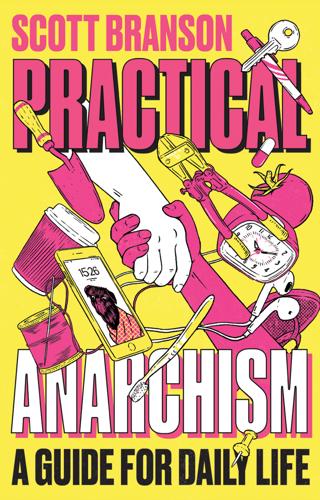
Practical Anarchism: A Guide for Daily Life
by
Scott. Branson
Published 14 Jun 2022
The long process of building up the state has made people more and more dependent on it, erasing stories of particularity with conventional expectations of how things must be. The seemingly innocent realm of realism turns from descriptive to prescriptive. We inherit structures of love and romance from marriage plots and pop songs. Though the mainstream world might be caught up in fears of fake news, and might condemn art as escapist, we can see art instead as a place to begin practicing liberation now. There is freedom in reading—it has always been dangerous to authorities and parents—since when we read, no one else knows what is going on in our heads. Watching films, we can momentarily leave behind the boundaries of our world.
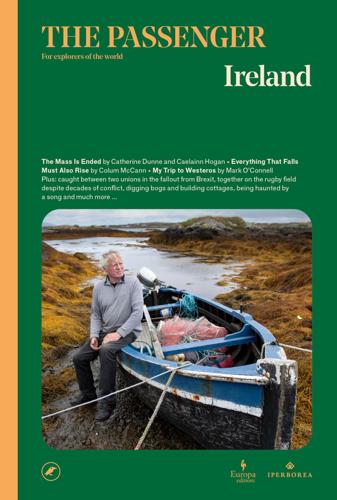
The Passenger
by
The Passenger
Published 27 Dec 2021
Alongside this theme, the German government, for example, sponsored two further assemblies, one on education and the other on an area that often remains outside of citizens’ decision-making: foreign policy and ‘Germany’s role in the world’. In France, along with the climate, initiatives have considered agricultural policies and social cohesion, while in Canada the Commission on Democratic Expression has a three-year mandate to tackle online hate, discrimination and fake news. Wales also chose a laudable issue with its Measuring the Mountain project examining the world of social care, and Australia stands out for looking to the future with an assembly devoted to the legal, ethical and social consequences of genome editing. As with climate change, the aim is to set up a dialogue between science and citizens.

The Passenger: Berlin
by
The Passenger
Published 8 Jun 2021
I will not test the reader’s patience by recounting the endless debates that took place between those for and against the endeavour; suffice it to say that at the turn of the millennium not a day passed without a new article appearing in the press, one report following another so quickly that they cancelled each other out (fortunately, following the resounding and repeated failures of Berlin Brandenburg Airport the papers were spoiled for choice both for fake news and actual disasters). It’s worth remembering, though, that the decision was made to recreate ex nihilo three of the Palace’s four historic façades and to let the Italian architect Franco Stella design the building’s interior in the modern-historic-corporate style so popular throughout Berlin and much of Germany today.

The Aristocracy of Talent: How Meritocracy Made the Modern World
by
Adrian Wooldridge
Published 2 Jun 2021
Boris Johnson denounced the Financial Times and the Economist for their negative coverage of Brexit at the 2017 Tory Party Conference. German populists have repeatedly vilified the Lügenpresse – the lying press. American bloggers routinely denounce the ‘lamestream media’. No one has been so skilled at taking the war to the enemy as Donald Trump. As well as routinely savaging the press for producing ‘fake news’, he forced journalists to sit in ‘press pens’ and encourages his supporters to bait them like caged animals. Adding to the confusion, the populists have chosen some unlikely leaders for their fight. Trump is a billionaire who lives in a triplex in a golden tower in Manhattan and a country club in Florida.
…
Daniel Patrick Moynihan once said that ‘people are entitled to their own opinions but not to their own facts’. Thanks to cable news and the internet, too many of his fellow Americans not only feel entitled to ‘their own facts’ but have news streams that are specifically designed to provide them. To some extent, the problem is proving self-correcting: the educated public, tired of fake news and click bait, is gravitating to certain global brands that are associated with high standards such as the Financial Times, the Wall Street Journal, the Atlantic and the Economist. The more customers these brands attract, the more resources they can devote to hiring high-quality journalists, fact checkers and data crunchers.
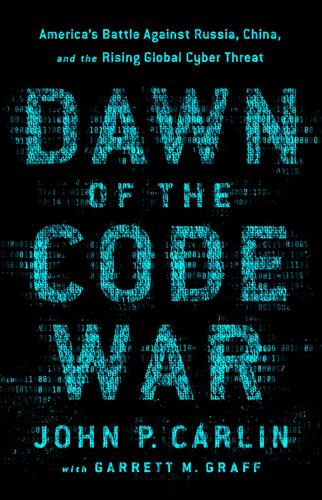
Dawn of the Code War: America's Battle Against Russia, China, and the Rising Global Cyber Threat
by
John P. Carlin
and
Garrett M. Graff
Published 15 Oct 2018
* As it turned out, OPM’s data—and all of the government’s data—might have been safer in hard-copy form, buried in an old limestone mine. * The name of the attack comes from the analogy of a predator waiting at a watering hole in the desert, knowing the prey will show up sooner or later. * Data segregation and segmented networks also make it easier to understand what an adversary wants to target. CHAPTER 9 Fake News EVEN AS WE scrambled inside the government to respond to the Office of Personnel Management data breach in the spring of 2015, we were living through that terrible, scary spring as ISIL’s homegrown, internet-driven recruiting was at its peak—every week brought us new cases and worrisome leads.
…
In another attack, the hackers targeted the US Marines’ recruiting site, defacing it and encouraging Marines to “refuse your orders.” At the National Security Division, the case was an early example to us—and a clearly demonstrable one—of the damage that could come from what we later defined as “fake news,” the weaponizing of manipulated information online to spark specific reactions and emotions. Yet even as SEA toyed with some of the highest-profile news organizations in the world—and even as its pranks graduated to market-moving events—no one online had any idea who SEA really was. Ultimately, with court approval for various search warrants, we were able to trace an email address associated with an SEA hacker known as ThePro to a specific mobile telephone number.22 The account holder had emailed a copy of his personal identification documents—which made clear it was Ahmad Umar Agha, aged 22—and had even set up a LinkedIn account under the name theprosea as part of a specific spear-phishing campaign, using the same IP address as the Gmail address.
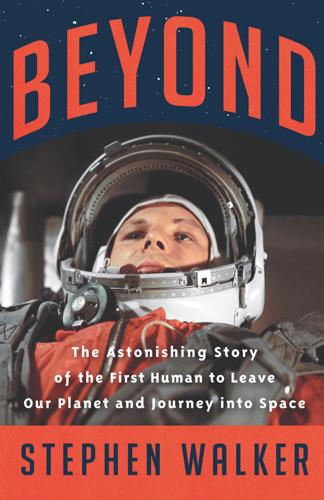
Beyond: The Astonishing Story of the First Human to Leave Our Planet and Journey Into Space
by
Stephen Walker
Published 12 Apr 2021
It had already been decided the previous month to register the flight after it took place for a number of world records, including the world altitude record, with the international body responsible for such matters, the Swiss-based Fédération Aéronautique Internationale or FAI. This would officially formalise the USSR’s trumping the US in the ranks of aeronautical achievement and nullify any capitalist accusations of fake news. But when it came to altitude records the FAI had a number of awkward rules. One of them was that both the launch and landing sites had to be revealed. Another was that the ‘pilot’ had to land in the same ‘vehicle’ he also took off in. In the case of the cosmonaut in his Vostok that would not happen; he would certainly be going up in the vehicle but he would not be coming down in it, not at the very end, because he would have to eject and land separately beneath his own parachute, in the process destroying any chance of the Soviets claiming the world record.
…
‘HOW RUSS WON SPACE RACE’ headlined the Chicago Daily News, in case anybody still had doubts on that score. ‘KHRUSHCHEV BOASTS OF SPACE LEAD – “TRY TO CATCH US” HE TELLS US’, ran the New York Daily News, and such was the paper’s indignation that a Red had got into space before an American that it also scorned as fake news one of the few specific facts the Soviets really had told the truth about, namely Gagarin’s working-class background: Russia’s greatest hero since Lenin, spaceman Yuri (George) Gagarin, who according to the Commies is the son of a humble Russian carpenter and a product of the superior Russian state schools, is actually the grandson of a Russian prince who was shot by the Bolsheviks.
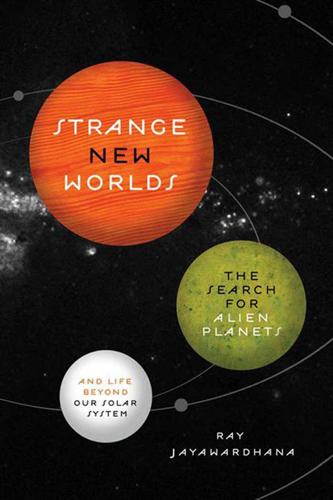
Strange New Worlds: The Search for Alien Planets and Life Beyond Our Solar System
by
Ray Jayawardhana
Published 3 Feb 2011
Many of the Sun’s readers, and even some Yale College scholars, apparently failed to recognize the articles as satire, however. The paper never quite confessed to its transgression but did run a column in its September 16 issue discussing the possibility that the story was a hoax. Even after that, the Sun retained its popularity: its publisher had orchestrated the frst major fake news story of modern times and profted handsomely from it. Next came “Mars Fever.” It started in 1877, when the Italian astronomer Giovanni Schiaparelli reported observing a network of canali, translated as canals into English, on the Red Planet. Others claimed to see seas or lakes at the intersection of these canals, and even changing patterns of vegetation with the seasons.
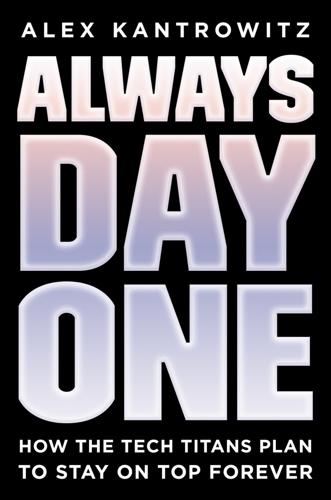
Always Day One: How the Tech Titans Plan to Stay on Top Forever
by
Alex Kantrowitz
Published 6 Apr 2020
As Zuckerberg sat before the Senate, he came close to acknowledging this gap in Facebook’s feedback system. “Facebook is an idealistic and optimistic company. For most of our existence, we focused on all the good that connecting people can bring,” he said in his opening statement. “But it’s clear now that we didn’t do enough to prevent these tools from being used for harm as well. That goes for fake news, foreign interference in elections, and hate speech, as well as developers and data privacy. We didn’t take a broad enough view of our responsibility, and that was a big mistake.” Zuckerberg, understanding that his feedback system needed new inputs, began adding them. To fix the system, the company started hiring ex–intelligence officials, journalists, academics, and adversarial-minded media buyers, and told them to pressure-test its systems.
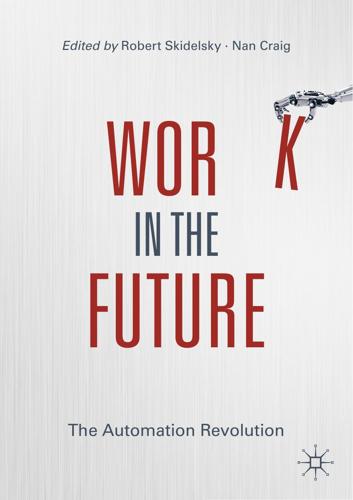
Work in the Future The Automation Revolution-Palgrave MacMillan (2019)
by
Robert Skidelsky Nan Craig
Published 15 Mar 2020
This is for a few different reasons. One is network effects: the more people who use a platform, the more valuable that platform becomes for everybody else. Again, Facebook is a good example. You may despise Mark Zuckerberg, hate the surveillance practices of Facebook and dislike the way they have handled fake news, but if you are going to join a social media network it will be Facebook, simply because that is where all your friends and family already are. That is the power of network effects, and once they reach a crucial tipping point, they grow and grow and grow. The other aspect that leads to a monopoly is the ability to extract and control data.
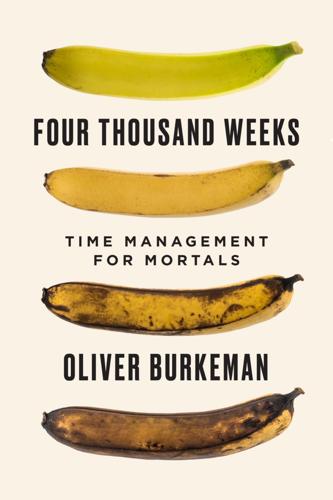
Four Thousand Weeks: Time Management for Mortals
by
Oliver Burkeman
Published 9 Aug 2021
We’re at least dimly aware, too, that our smartphones are tracking our every move, recording how we swipe and click, what we linger on or scroll past, so that the data collected can be used to show us precisely that content most likely to keep us hooked, which usually means whatever makes us angriest or most horrified. All the feuds and fake news and public shamings on social media, therefore, aren’t a flaw, from the perspective of the platform owners; they’re an integral part of the business model. You might also be aware that all this is delivered by means of “persuasive design”—an umbrella term for an armory of psychological techniques borrowed directly from the designers of casino slot machines, for the express purpose of encouraging compulsive behavior.

Life Will Be the Death of Me: ...And You Too!
by
Chelsea Handler
Published 8 Apr 2019
He had the disposition of a butler—he was congenial but kept his distance. Without a kerchief around his neck, he was just another well-groomed dog from Bel-Air. With the kerchief, he was cooler than Fonzie. He amassed a large social media presence during his time with us and never once used it for ill. He didn’t troll people online or spread fake news. He was pure goodness. He loved me categorically, but that’s not the only reason I loved him. It was most of the reason—but he also had qualities I didn’t jibe with. When I came home drunk or stoned, he laid some heavy judgment on me. When I had friends over, he’d give me a look that said, Lights out in five.
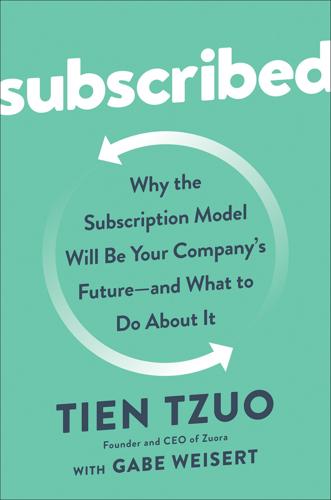
Subscribed: Why the Subscription Model Will Be Your Company's Future - and What to Do About It
by
Tien Tzuo
and
Gabe Weisert
Published 4 Jun 2018
Today most of our commercial transactions are mediated through social experiences. Word of mouth, which has always been important, is now the dominant way we learn about the world, with the internet having amplified our chattiness by what, 100x? 1,000x? We’re still wrestling as a society with this change (fake news, anyone?), but for marketing, this is the new reality. As a result, storytelling has come to the fore. At Zuora, we use the Three Rooms mental model of storytelling. You need the story of your product—the how. You need the story of your market—the who. But most important, you need an overarching story that puts your service and your users within a broader social narrative—the why.
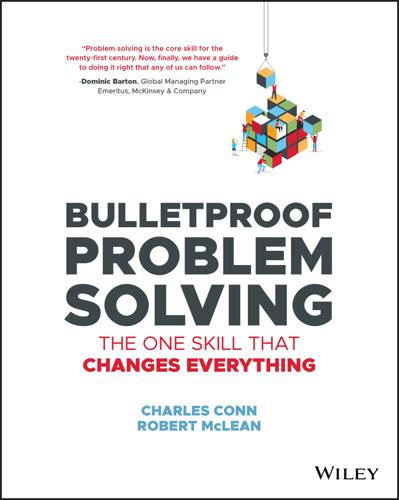
Bulletproof Problem Solving
by
Charles Conn
and
Robert McLean
Published 6 Mar 2019
The analysis stage is critical to the objectivity of your problem solving. There are many jokes about torturing the facts until they speak the truth you want to hear. There was even an old New Yorker cartoon that showed a person reaching into a filing cabinet with drawers marked “His facts. Her facts. Your facts.”—and this was well before the advent of fake news. Following a structured problem approach, where we use good analytic techniques to pressure test our hypotheses and good team processes to limit bias, allows us to avoid torturing the facts. In this chapter, we focus on how to do powerful analyses quickly and efficiently, starting with heuristics, shortcuts, and rules of thumb.

Leadership by Algorithm: Who Leads and Who Follows in the AI Era?
by
David de Cremer
Published 25 May 2020
Since the 1970s, scholars have been providing evidence that human experts do not perform as well as simple linear models in things like clinical diagnosis, forecasting graduate students’ success, and other prediction tasks.²¹,²² Findings like this have led to the idea that algorithmic judgment is superior to expert human judgment.²³ For example, research has shown that algorithms deliver more accurate medical diagnoses when detecting heart-rate diseases.²⁴,²⁵,²⁶ Furthermore, in the world of business, algorithms prove better at predicting employee performance, the products customers want to buy, and identifying fake news and information.²⁷,²⁸ An overall analysis of all these effects (what is called a meta-analysis) even reveals that algorithms outperform human forecasters by 10% on average.²⁹ Overall, the evidence suggests that it is (and will increasingly be) the case that algorithms outperform humans. This scientific evidence, combined with our tendency to think of humans and machines as us versus them, poses the question of whether AI will replace people’s jobs at center-stage.³⁰ This question is no longer a peripheral one.
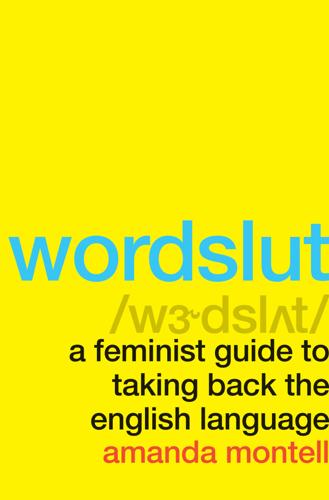
Wordslut: A Feminist Guide to Taking Back the English Language
by
Amanda Montell
Published 27 May 2019
As 1984’s winner of Miss Wasilla and Miss Congeniality, beauty queen Palin was a tailor-made foil to Clinton, whose very laughter, according to several male commentators, made “her sound like the Wicked Witch of the West.” The “Clinton cackle” was a phrase commonly used every time she so much as cracked a smile. (And over the years, similar witch comparisons have been made to Theresa May, Kellyanne Conway, and Senator Elizabeth Warren, who was once the subject of a terrific fake news story claiming that she regularly participated in nude pagan rituals as a college student.) As political scientist Elvin T. Lim wrote in 2009, “There may be objective reasons for thinking Clinton to be unlikable and competent and Palin to be likable but incompetent, but it is surely more than a coincidence that the two most prominent women in American politics in 2008 so perfectly occupied the two sides of the double bind.”

McMindfulness: How Mindfulness Became the New Capitalist Spirituality
by
Ronald Purser
Published 8 Jul 2019
And that takes more than Kabat-Zinn’s reheated Transcendentalism, and its unproven claims about a universal goodness accessible to all through “bare attention.” Yet he refuses to talk about more than tuning into the moment, which is certainly calming but not a great fount of political wisdom. Unfazed, Kabat-Zinn asserts that turning inward on oneself can fix fake news and overturn the surveillance state, whose requirements it subtly instills through self-regulation: The mainstreaming of dharma through mindfulness is prima facie a positive and healing occurrence and a tremendous opportunity for addressing some of the most fundamental sources of pain and suffering in our world at this moment in time.
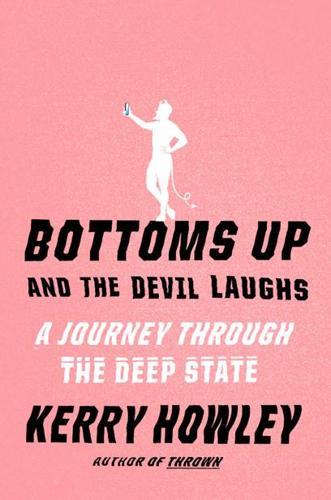
Bottoms Up and the Devil Laughs
by
Kerry Howley
Published 21 Mar 2023
We take our cues from those around us. In an internal interview one security architect would argue that such a document should always be treated as a “five-alarm fire,” but it was not treated this way when it was handed to Cole, who carried on treating it with curious nonchalance. It was 2017. “Fake news” was a term that seemed fresh, concerning, as if in using it one was saying something intelligent about the precarious veracity of public information. That some at The Intercept immediately declared the document was fake is perhaps unimportant, because any reporter with any classified document would go about authenticating that document.

Internet for the People: The Fight for Our Digital Future
by
Ben Tarnoff
Published 13 Jun 2022
“Progress” or “technology” or some other inevitable logic of development did not prescribe its present form. Particular choices brought us to this point. We have the ability, collectively, to choose differently. Market Failure Up on land, where data rises from the depths to find its destination, people are worried about the internet. They worry about fake news, surveillance, censorship, racism, and several other things. They worry that the connectivity furnished by MAREA and the other glass strands encircling the Earth is not only making the world smaller but making it worse. Since 2016, a mood of distrust has congealed around the large tech companies that dominate the internet.
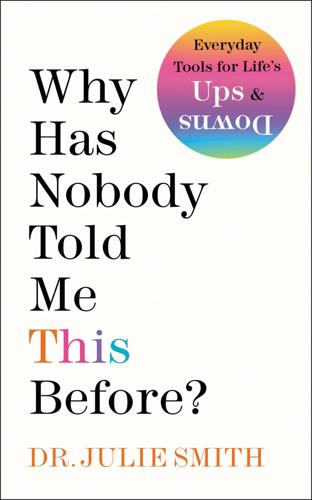
Why Has Nobody Told Me This Before?
by
Dr. Julie Smith
Published 11 Jan 2022
It’s much harder to change an identity as an anxious person than it is to simply reduce anxiety. Fact check Since the power of any thought is in how much we believe it to be a true reflection of reality, ‘thought challenging’ can be a helpful process for many. If a thought is causing you distress, it makes sense to work out whether it is fake news or worth feeling so anxious about. Thought challenging is a simple process. When you start, it’s easier to do it in hindsight, after the event has passed. If you notice anxious thoughts you can follow these steps to challenge them. 1. Write down the anxious thought. 2. Draw a line down the centre of your page to make two columns.

Slouching Towards Utopia: An Economic History of the Twentieth Century
by
J. Bradford Delong
Published 6 Apr 2020
Stock and Mark W. Watson, “Has the Business Cycle Changed, and Why?,” NBER Macroeconomics Annual 17 (2002): 159–230, available at National Bureau of Economic Research, www.nber.org/system/files/chapters/c11075/c11075.pdf. 3. Amanda Robb, “Anatomy of a Fake News Scandal,” Rolling Stone, November 16, 2017, www.rollingstone.com/feature/anatomy-of-a-fake-news-scandal-125877. 4. Barack Obama, “2004 Democratic National Convention Speech,” PBS NewsHour, July 27, 2004, www.pbs.org/newshour/show/barack-obamas-keynote-address-at-the-2004-democratic-national-convention. 5. J. Bradford DeLong, “This Time, It Is Not Different: The Persistent Concerns of Financial Macroeconomics,” in Rethinking the Financial Crisis, ed.

Empire of AI: Dreams and Nightmares in Sam Altman's OpenAI
by
Karen Hao
Published 19 May 2025
GO TO NOTE REFERENCE IN TEXT He, Amodei, and several others: OpenAI, “Better Language Models.” GO TO NOTE REFERENCE IN TEXT “It’s very clear that if”: Will Knight, “An AI That Writes Convincing Prose Risks Mass-Producing Fake News,” MIT Technology Review, February 14, 2019, technologyreview.com/2019/02/14/137426/an-ai-tool-auto-generates-fake-news-bogus-tweets-and-plenty-of-gibberish. GO TO NOTE REFERENCE IN TEXT “If we’re right, and it”: Interview with Clark, August 2019. GO TO NOTE REFERENCE IN TEXT This was frequently discussed: Karen Hao, “The Messy, Secretive Reality Behind OpenAI’s Bid to Save the World,” MIT Technology Review, February 17, 2020, technologyreview.com/2020/02/17/844721/ai-openai-moonshot-elon-musk-sam-altman-greg-brockman-messy-secretive-reality.
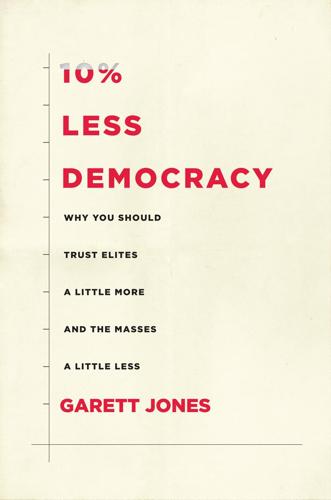
10% Less Democracy: Why You Should Trust Elites a Little More and the Masses a Little Less
by
Garett Jones
Published 4 Feb 2020
If people want to see certain types of news stories—perhaps where my team is suffering unjustly and the other team isn’t playing fair—then an invisible hand, an act of entrepreneurship, will create such news stories. And when the invisible hand creates—or just reframes—news events, it never feels like fake news; it feels like a truth deeper than mere news, better than mere history. As the Batman says at the end of Christopher Nolan’s The Dark Knight, “Sometimes the truth isn’t good enough. Sometimes people deserve more.”¹⁶ All too often, citizens of rich democracies enter that world of better-than-truth.
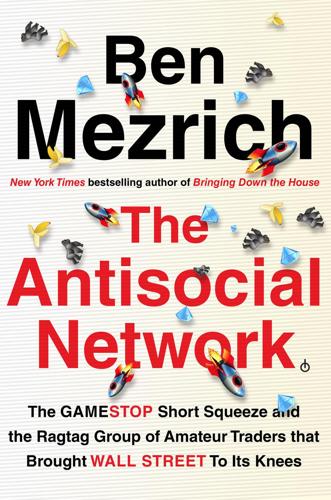
The Antisocial Network: The GameStop Short Squeeze and the Ragtag Group of Amateur Traders That Brought Wall Street to Its Knees
by
Ben Mezrich
Published 6 Sep 2021
Of course, there were more indirect ways that someone as powerful as Ken, running a company as powerful as Citadel, which happened to sit at the center of the very retail trades—and was effectively the backbone, through its payment for order flow symbiosis, of the online brokerage—that had led to the GameStop short squeeze, could have put a finger on the scale. But that was something Ken and Citadel would never, under any circumstances, EVER, no matter what people thought, no matter who said it, no matter how many congressmen or congresswomen or Internet pundits or Reddit users or fake news journalists or armchair Wall Street buffs floated the idea—never, never, never, never, NEVER, and again NEVER, even contemplate, let alone do. Las Vegas casinos didn’t cheat anywhere near as often as people thought they did, for the simple reason that they didn’t need to. The math was on their side.
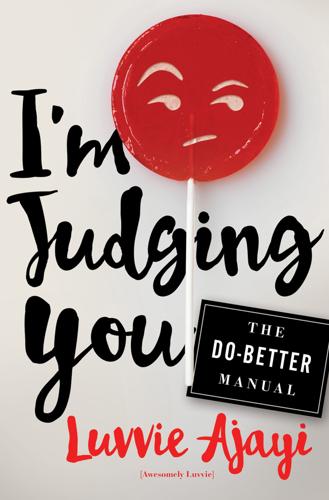
I'm Judging You: The Do-Better Manual
by
Luvvie Ajayi
Published 12 Sep 2016
Dr. King was so wise. Just because a statement is in a nifty-looking meme or superimposed on a picture of someone staring at the sunset affectingly does not mean it should be taken as truth. At least once a day I have to tell my Facebook friends that something they posted and are outraged about is fake news. It’s my contribution to humanity, since everyone seems kinda slow now. Everyone. It crosses lines of class, gender, education, and ethnicity. It is the great equalizer. It’s like critical thinking has gone on permanent vacation since social media has dumbed down our ability to receive and analyze information.

The Behavioral Investor
by
Daniel Crosby
Published 15 Feb 2018
In part two of the study, the deception was revealed and the participants were informed that the true aim of the study was to gauge their reactions to thinking that they were right or wrong. They were then asked to rate how they had actually done on the task in light of this new information and something strange happened. The students who had received fake news of their giftedness persisted in their belief that they were far more talented than average and those who had received bad scores in round one remained committed to their idea of having done poorly. True or false, once an idea takes root it can be very hard to dislodge. This tendency for beliefs to get even stronger in the face of contradictory evidence, known as the backfire effect, is even more pronounced when the information presented is ambiguous or unclear.
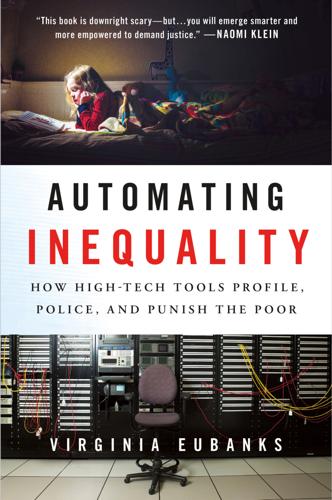
Automating Inequality
by
Virginia Eubanks
—Alondra Nelson, author of The Social Life of DNA “In this illuminating book, Eubanks shows us that in spite of cosmetic reforms, our policies for the disadvantaged remain dominated by the ancient credo of the poor law, obsessed with the exclusion and punishment of the neediest in our communities.” —Frances Fox Piven, author of Regulating the Poor “The single most important book about technology you will read this year. Today everyone is worrying about the Internet’s impact on democracy, but Eubanks shows that the problems facing us run much deeper than ‘fake news’—automated systems entrench social and economic inequality by design and undermine private and public welfare. Eubanks dives into history and reports from the trenches, helping us better understand the political and digital forces we are up against so we can effectively fight back.” —Astra Taylor, author of The People’s Platform: Taking Back Power and Culture in the Digital Age “Automating Inequality powerfully exposes how U.S. institutions, from law enforcement to health care to social services, increasingly punish people—especially people of color—for being poor.

The New Silk Roads: The Present and Future of the World
by
Peter Frankopan
Published 14 Jun 2018
‘I fear our seventy-year-long holiday from history may be over,’ said General Sir Nick Carter, chief of the defence staff in the British Army, in a lecture in the summer of 2018. We are living in an era of ‘constant competition’, he said, marked by difficult questions ‘about the evolving character of warfare’. It was vital to recognise that ‘energy, cash, corrupt business practices, cyber-attacks, assassination, fake news, propaganda – and good old-fashioned military intimidation’ are being used as weapons. ‘What constitutes a weapon,’ he warned, ‘no longer has to go “bang”.’ And in this new era, it was a matter of fact that ‘our state-based competitors have become masters at exploiting the seams between peace and war’.143 Technological innovation produces an array of benefits, ranging from lower financial costs as opposed to maintaining large forces (including the costs of training and equipping), improved and enhanced performance and, of course, lower levels of political risk to leaders who are averse to images of fallen sons and daughters being brought home from wars that are become less and less popular in proportion to how long they go on.

Cultish: The Language of Fanaticism
by
Amanda Montell
Published 14 Jun 2021
This phenomenon of listeners mistaking say-it-like-it-is honesty (which of course isn’t actual honesty, just a lack of filter) for the refreshing voice of antiestablishment dissent might feel familiar to anyone who’s lived through the reign of a problematic populist: Italy’s Silvio Berlusconi, Slovakia’s Vladimír Mečiar, Donald Trump. It would be irresponsible, I think, not to mention the oratorical similarities between Trump and Jim Jones, who shared the same love of coining zingy, incendiary nicknames for their opponents. (“Fake News” and “Crooked Hillary” were Trump’s analogs to Jones’s “Hidden Rulers” and “Sky God.”) Even when their statements didn’t contain any rational substance, the catchy phrases and zealous delivery were enough to win over an audience. It’s riveting to watch someone on a podium speak from a place so animalistic that most of us don’t let ourselves behave that way even with our closest friends.
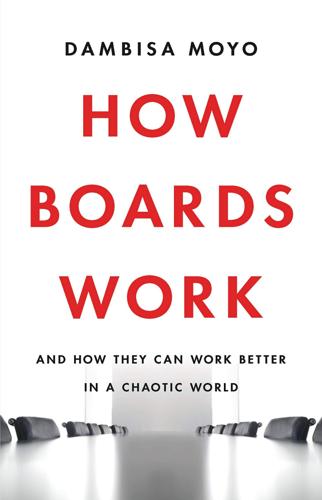
How Boards Work: And How They Can Work Better in a Chaotic World
by
Dambisa Moyo
Published 3 May 2021
On specific issues, about 65 percent of those polled felt that CEOs can make a difference on pay equity, prejudice and discrimination, and training for the jobs of tomorrow, 56 percent believed so on the environment, 55 percent on personal data, 47 percent on sexual harassment, and 37 percent on fake news. In short, respondents believe in the ability of corporations to effect change, despite the appearance that trust in corporations is low. What is a corporation’s social responsibility? It is increasingly apparent that companies are taking on a more central role in addressing social concerns and thereby coming closer to meeting the demands of society.

Deadly Quiet City: True Stories From Wuhan
by
Murong Xuecun
Published 7 Mar 2023
He reads about the Wuhan police ‘dealing with’ eight ‘rumour mongers’ ‘according to the law’, but quickly forgets about it. In the eight years since Xi Jinping’s rise to power there have been so many news items like that. Every police station in the country is busy cracking down on ‘rumours’ – some are fake news, most are just criticism of the government. Practically no one pays attention to what rumour mongers actually say, and Liu Xiaoxiao doesn’t either. The government tells him not to panic so he doesn’t panic. He maintains his daily routine of teaching, tutoring and occasionally driving his car for an online ride-booking platform.

Open for Business Harnessing the Power of Platform Ecosystems
by
Lauren Turner Claire
,
Laure Claire Reillier
and
Benoit Reillier
Published 14 Oct 2017
The trust and safety team will need to constantly review and update rules and policies against governance principles, as new use cases and behaviours reveal themselves. Trust, governance and brand 163 Following the 2016 US presidential election, Facebook and Twitter have been heavily criticized about their role in allowing ‘bots’ to spread misleading or fake information to voters.13 Since then, Facebook has vowed to tackle hoaxes. Google has also blocked fake news from its ad network. Twitter, which by design is a more open platform, still faces challenging governance issues in this area. Make it right Inherently, platforms do not completely control the end-to-end customer experience. When something goes wrong, great customer service can help minimize the reputational damage.
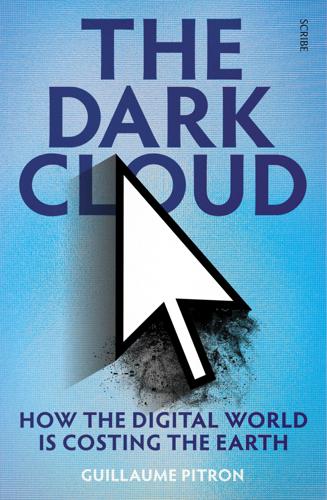
The Dark Cloud: How the Digital World Is Costing the Earth
by
Guillaume Pitron
Published 14 Jun 2023
And that’s not all, since digital technologies ‘help to integrate goods into sharing systems [such as loans and cash gifts between individuals]’, ‘facilitate crowdfunding for renewables or agroecology […]’, and are ‘helping to combat planned obsolescence, such as Spareka, a platform selling spare parts connected to a community of repairers’, states the same leading report.30 In a time of fake news and alternative facts, never have we had such accurate information with which to improve our understanding of the world. This is attributable to the engineering behind digital technologies, for one smartphone alone is more powerful than all the information systems used to send a man to the Moon.31 Now multiply these tools by the number of humans on Earth, picture the legions of super calculators capable of executing billions of operations per second, and you have a new gospel: ‘Green IT’.
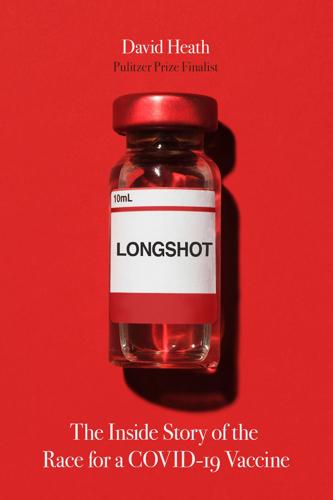
Longshot
by
David Heath
Published 18 Jan 2022
Trump played along: “Don’t tell anybody but let me wait until a little bit after the election.” The crowd cheered.17 Sadly, the public reaction to the vaccine as well as to the pandemic itself has become absurdly political. Trump continued to downplay the virus even as the death toll mounted. “Cases up because we TEST, TEST, TEST. A Fake News Media Conspiracy. Many young people who heal very fast. 99.9%. Corrupt Media conspiracy at all-time high,” he tweeted just days before the election.18 It was, of course, nonsense. Yet the idea that somehow the media and even doctors were conspiring to make the pandemic seem far worse than it was made sense to many Trump supporters.
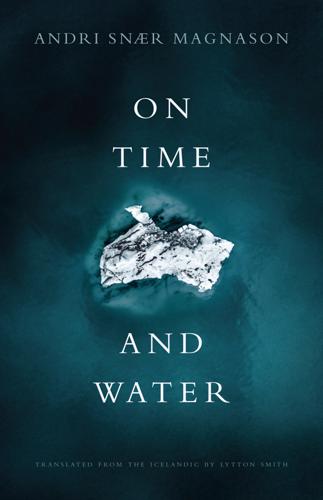
On Time and Water
by
Andri Snaer Magnason
Published 15 Sep 2021
On the contrary, the car fleet is expected to be largely still run on gasoline by 2050 and the United States will become an exporting country for oil and gas by 2020.58 The phenomenon of global warming has been systematically removed from all official materials emanating from the White House; the same is true of most government websites and climate information sources in the U.S.59 Powers with oil industry interests took advantage of Facebook and fake news to hobble the government, which should be the custodian of freedom and of information. We’re heading at full speed over a cliff edge and instead of trying to brake, the gas pedal is floored and the speedometer’s missing. As George Orwell put it: “Ignorance is strength.” The words the Dalai Lama spoke to me cannot be heard in China.
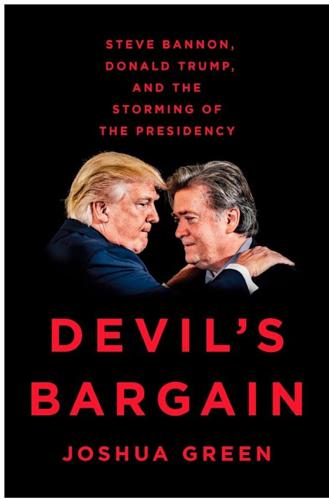
Devil's Bargain: Steve Bannon, Donald Trump, and the Storming of the Presidency
by
Joshua Green
Published 17 Jul 2017
They had just carried off the greatest political upset in U.S. history and sent Donald J. Trump to the White House. — In the days after the election, the world wondered: How could this happen? Many people still wonder. No shortage of scapegoats and malefactors were offered up by way of explanation: James Comey, the Russians, the media, “fake news,” sexism—the list went on and on. Yet none was entirely satisfying, or big enough to encompass the scale of the shock, or capable of unwinding the sense of dislocation so many people felt when they awoke to the realization that something so seemingly unlikely—so utterly extreme—as Trump’s election could happen in plain view of everyone, without anyone really seeing it coming.
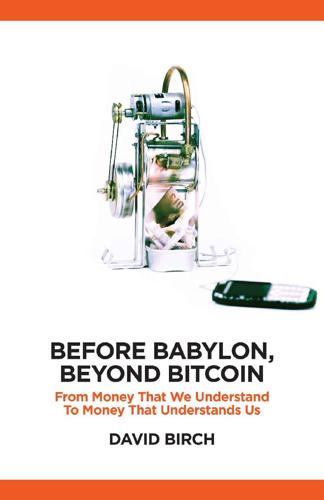
Before Babylon, Beyond Bitcoin: From Money That We Understand to Money That Understands Us (Perspectives)
by
David Birch
Published 14 Jun 2017
I asked him how long I’d been there: ‘Have I been here overnight?’ ‘Oh no,’ he said, ‘you’ve been in a coma for a hundred years: it’s 2117 according to the old calendar.’ It turned out that I’d been moved to the Research Institute that was studying the long-term impact of celebrity gossip and fake news on the human brain but because I hadn’t recovered for so long they’d moved me to a side room and sort of forgotten about me apart from some periodic physiotherapy. Now that I’d woken up I was a celebrity! And not only to the medical staff: the mainstream social media feeds all sent bots to interview me and within a couple of hours I was on a billion phones worldwide.
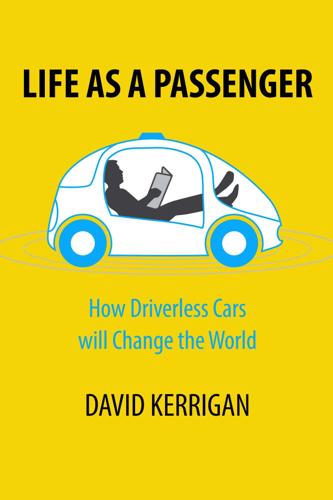
Life as a Passenger: How Driverless Cars Will Change the World
by
David Kerrigan
Published 18 Jun 2017
You need to tread carefully about this because if in writing some article that is negative you are effectively dissuading people from using autonomous vehicles, you are killing people” Elon Musk, CEO, Tesla Media coverage is under the spotlight worldwide as never before after allegations of fake news, echo bubbles and social media complicity in spreading misleading information. It is against this backdrop that the emergence of driverless cars is taking place. What I’ve seen so far regarding driverless cars has often been sensationalist (both negative and positive) rather than genuinely analytical or even just informative.
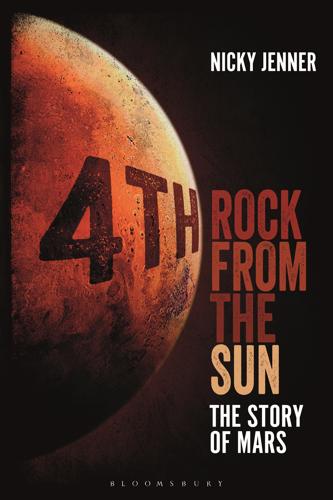
4th Rock From the Sun: The Story of Mars
by
Nicky Jenner
Published 5 Apr 2017
And that’s just about what happened.’ Welles’s radio broadcast may have just been ‘Halloween fun’, but other adaptations were somewhat more sinister. In February of 1949, an Ecuadorian radio station decided to air their own version of The War of the Worlds, in a similar format to Welles’s deceptive fake news bulletins. Listeners became agitated and panicked, some even taking refuge in nearby church buildings. Once the radio station’s dramatic director, Leonardo Páez, realised what was happening he stopped the broadcast and issued an apology, which only turned the panic to fury. By the end of the night, angry mobs had attacked the radio premises, set them alight and up to 20 people had died – and Páez had been arrested.
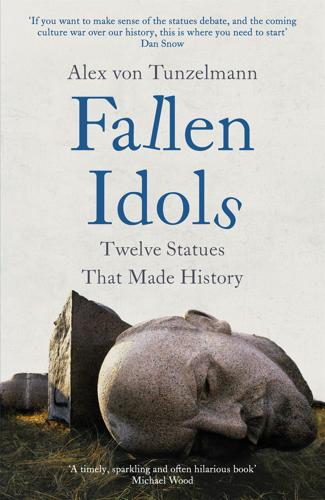
Fallen Idols: Twelve Statues That Made History
by
Alex von Tunzelmann
Published 7 Jul 2021
‘But no individual or group has the right to damage, deface, or remove any monument by use of force.’2 Trump visited Mount Rushmore, where, according to South Dakota Governor Kristi Noem, he told her it was his dream to have his own face carved into the mountain alongside Washington, Jefferson, Roosevelt and Lincoln. ‘I started laughing,’ she said. ‘He wasn’t laughing, so he was totally serious.’3 Trump responded on Twitter by denying that he had suggested it, then, in the same sentence, suggesting it again: ‘This is Fake News by the failing @nytimes & bad ratings @CNN. Never suggested it although, based on all of the many things accomplished during the first 3 1/2 years, perhaps more than any other Presidency, sounds like a good idea to me!’4 Boris Johnson, the British prime minister, also took to Twitter: ‘those statues teach us about our past, with all its faults.

Scary Smart: The Future of Artificial Intelligence and How You Can Save Our World
by
Mo Gawdat
Published 29 Sep 2021
Take those two facts together – how relatively easy it is to develop AI and the incredible benefits and power that it brings – and you realize that even as you read this, there must be quite a few bad people out there trying to use AI to advance their own agendas. From new innovations for identity theft in order to acquire massive wealth, to cyber terrorism, to hacking government files, fake news or manipulation of crowd opinions to displace those in power, it’s all fair game. From killing machines to biological weapons that can wipe out nations, it’s all just a few lines of code away. To assume that the relentless investment from the ‘criminal’ establishment in pursuit of so much power is not going to yield results would be incredibly naive.

Sarah Millican--The Queen of Comedy
by
Tina Campanella
Published 14 Apr 2017
Sarah was taken to a remote country house in the East Midlands, where she was joined by Clive Anderson, Andy Hamilton and two production staff members. Her mobile phone was confiscated and she was denied access to any newspapers, radio broadcasts, television shows or the Internet. For four days she lived in isolation with the other comics, before being taken straight to a studio set to take part in a quiz. Presented with both real and fake news stories, the contestants then had to decided which were real. Both ITV News and Sky News gamely assisted in the filming of the fake stories. It was the first time that Sarah had been described as ‘a celebrity’, and it was a very positive sign of her growing status in the media. Filmed in a reality TV style, it was also the first time Sarah’s fans could catch a glimpse of what she was like when she wasn’t performing on stage.
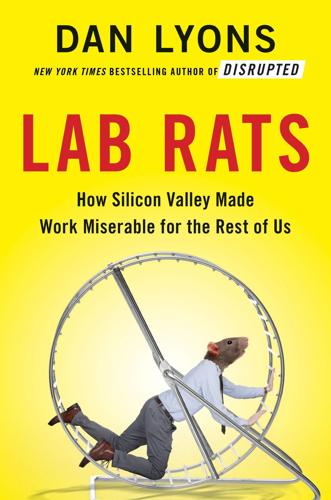
Lab Rats: How Silicon Valley Made Work Miserable for the Rest of Us
by
Dan Lyons
Published 22 Oct 2018
Medium: Signal v. Noise, February 27, 2017. https://m.signalvnoise.com/exponential-growth-devours-and-corrupts-c5562fbf131. Hoopes, James. “The Dehumanized Employee.” CIO, February 4, 2005. https://www.cio.com.au/article/165305/dehumanized_employee. Levin, Bess. “Billionaire Hedge-Fund Manager Ties W.S.J. to ‘Fake’ News Epidemic.” Vanity Fair, January 3, 2017. https://www.vanityfair.com/news/2017/01/ray-dalio-wall-street-journal. Metz, Cade. “The Rise of the Artificially Intelligent Hedge Fund.” Wired, January 25, 2016. https://www.wired.com/2016/01/the-rise-of-the-artificially-intelligent-hedge-fund. Moise, Imani.
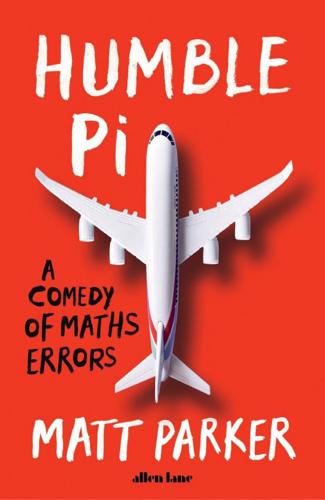
Humble Pi: A Comedy of Maths Errors
by
Matt Parker
Published 7 Mar 2019
I suspect everyone who passed on this meme in earnest looked at it and their brain did something along the same lines of seeing millions as a unit they could exclude from their calculations and put back on at the end. Thankfully, this was way back in 2015, and in the years since then people have become much better at spotting fake news online. Against the grain Here’s one final story involving the pound, but in this case we’re looking at a smaller fraction of the pound: the grain. In the Apothecaries system of weight units, a pound can be split into 12 ounces, which each consist of 8 drams. A dram is then 3 scruples, each made from 20 grains.

The No Need to Diet Book: Become a Diet Rebel and Make Friends With Food
by
Plantbased Pixie
Published 7 Mar 2019
This idea of ‘real food’ being ‘whole food’ also appears in the wellness world, where whole foods are prized above all others, suggesting that other foods are not complete in some way and are (at most) only partially food. If we then extend this to ‘You are what you eat’, no one wants to be called fake, whether it’s being a ‘fake’ friend, having a ‘fake’ designer bag, or being told ‘fake news’. It suggests dishonesty, disloyalty, or a malicious intent. ‘Real women have curves’… But how can you be a fake woman? Apply this to food and it implies the food has some insidious quality that wants to cause you harm, whereas ‘real food’ is associated with honesty and pure intentions. If you want someone to avoid eating something, call it the opposite of ‘real food’, such as a food-like substance, stuff, product – anything but actual food.

Palaces for the People: How Social Infrastructure Can Help Fight Inequality, Polarization, and the Decline of Civic Life
by
Eric Klinenberg
Published 10 Sep 2018
Because when Zuckerberg wrote his open letter he already knew what Facebook would not acknowledge until the US Congress effectively forced a confession: During the most divisive and consequential presidential election in recent history, Russian propagandists had used Zuckerberg’s so-called social infrastructure to buy more than three thousand fake news ads that reached at least ten million people. Thanks to Facebook’s technology, the Russians—as well as alt-right organizations intent on spreading misinformation inside the United States—could target their campaign to swing-state voters. The organizations behind these ads did not merely want to manipulate citizens and suppress turnout in communities likely to support the Democratic candidate, Hillary Clinton.

Hostile Environment: How Immigrants Became Scapegoats
by
Maya Goodfellow
Published 5 Nov 2019
In 2014, YouGov revealed in one poll that 26 per cent of respondents thought that the government should encourage immigrants and their families to leave Britain, including family members who were born here – otherwise known as voluntary repatriation.6 Politicians read these polls not as a flashing warning sign but as if they were a helpful roadmap for winning popular approval. They have presented themselves as hard-nosed truth talkers, crusading against ‘fake news’, while quiescently responding to people’s ‘concerns’ about immigration, no matter how misguided. Anti-immigration politics is presented as an unalterable fixture of political life; the ‘debate’ assumed to flow from the bottom up. What this ignores is how politicians, the media and the UK’s imperial history and present help to create and sustain anti-immigration discourse.
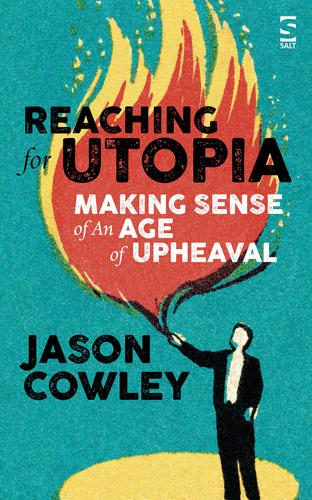
Reaching for Utopia: Making Sense of an Age of Upheaval
by
Jason Cowley
Published 15 Nov 2018
I mean, the classic example of what’s happened since the referendum is the death of the Polish man in Harlow. So, the story is: ‘Polish man gets beaten up because of race hate caused by Brexit.’ That’s the story. It’s everywhere: BBC Two’s Newsnight even ran a report saying, “Nigel Farage has blood on his hands.” ‘Talk about fake news . . . The collective shock of the liberal establishment, they still can’t get to grips with it, and they’re trying to find a reason why this illogical thing, as they see it, happened. In this country, they put it down to lies, and in America, it’s the Russians!’ Ah, the Russians – let’s hope they love their children, too, as Sting once sang.
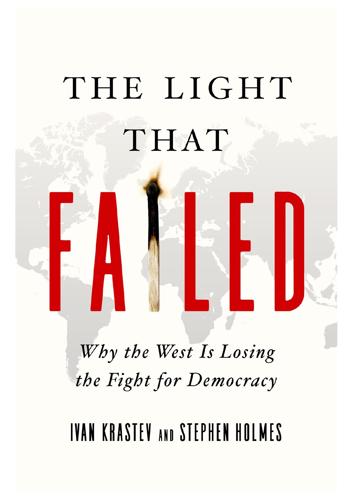
The Light That Failed: A Reckoning
by
Ivan Krastev
and
Stephen Holmes
Published 31 Oct 2019
Trump is no totalitarian, but Arendt’s analysis can be fruitfully applied to his rhetorical style since he regularly reduces statements of fact, made by allies or adversaries, to declarations of political purpose or instruments in the service of ulterior motives. That, indeed, may well be the essence of his instinctual or intuitive illiberalism. Behind his constant complaints about ‘fake news’, we can discern a very specific and very peculiar attitude towards the truth. Here again, associating Trump with post-communist leaders such as Putin, known for publicly denying easily checkable facts, helps illuminate behaviour that would otherwise seem anomalous. As the Russian-born American journalist Masha Gessen argues, Trump and Putin share a similar contempt for objective truth.
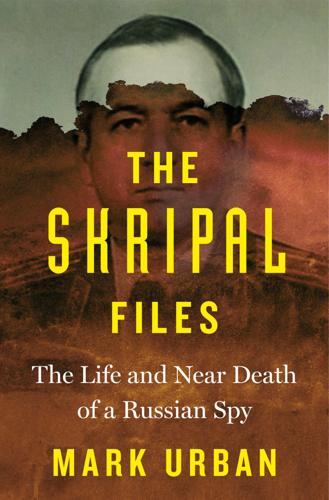
The Skripal Files
by
Mark Urban
If they really hit the jackpot, Poteyev might even send a message himself of the ‘I am still very much alive’ variety and provide a way of finding him. A few weeks after I learnt about the Poteyev ‘fake death’ plot, the Ukrainian SBU used the same ploy, albeit more elaborately, with Russian exile journalist Arkady Babchenko. Here too, we learned, the aim was to intercept online chatter that might be triggered by the ‘fake news’. What the Poteyev case shows was not just the ongoing Russian effort to pinpoint traitors but also why, when faced with difficulties in going after their top targets, they might have moved down the list a little to someone that was easier to find. Sergei had never hidden himself. He was on the Salisbury electoral roll – unlike Litvinenko and Gordievsky, who used British aliases provided by the UK agent-resettlement people.
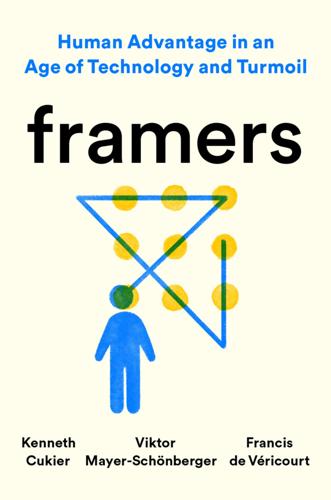
Framers: Human Advantage in an Age of Technology and Turmoil
by
Kenneth Cukier
,
Viktor Mayer-Schönberger
and
Francis de Véricourt
Published 10 May 2021
Crises of nature (from climate change to pandemics) and humanity (from new forms of tribalism to violent oppression) demand not a cognitive leap of faith, but a doubling down on what humans have always done so well: applying imagination under constraints to come up with novel solutions and appreciating their long-term consequences. Ours is an age of division and paradoxes: grand charities and everyday tyrannies, science and anti-science, facts and fake news. The International Space Station visible from the slum, rockets to colonize other planets, and immigrant children held in cages. The primitive and the transhuman; dogs and gods. Normally species go extinct because they cannot adapt to their circumstances. Human beings could be the first species that has everything we need to adapt but perishes because we did not use it—not because we have no other choice but because we failed to make the right choices.

Cloudmoney: Cash, Cards, Crypto, and the War for Our Wallets
by
Brett Scott
Published 4 Jul 2022
But when I’ve been on shows laying out these arguments, the presenters often look at me as though I’m a fool trying to stop a river running downhill. ‘Isn’t it just inevitable that we will go cashless?’ they ask. Let’s leave that question aside for now. What is more revealing is the assumption that underlies it. It is undeniable that we experience a feeling that the end of cash is inevitable, but where does this feeling come from? Fake news futurism Picture the aforementioned TV presenter redirecting the question to an industry futurist instead, asking ‘Isn’t it inevitable that we will go cashless, and if so, why?’ Nine times out of ten, the answer will be something along these lines: ‘Well, yes, consumers are turning towards digital payments because we all want convenience.’
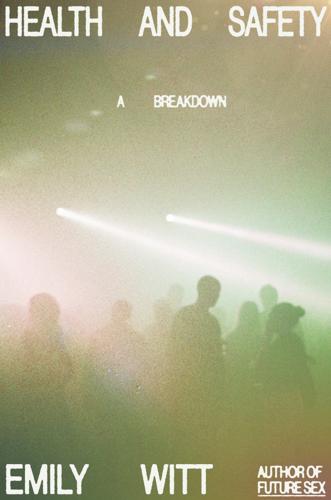
Health and Safety: A Breakdown
by
Emily Witt
Published 16 Sep 2024
The country of ranches and small businesses, where thanks to him you could now leave your ranch to your daughter without having to pay an estate tax and the approval process for pipelines was sped up, the oil would flow fast and thick and the trade imbalances with Europe would be righted and America would be rescued from the corrupt power-hungry globalists and the radical Democrats. The crowd knew every cue. When Trump said “the fake news back here” (gesturing to us) they booed and yelled “CNN sucks.” When he said “We want people to come into our country but they have to come in legally and they have to come through merit,” the arena erupted into chants of “Build the wall, build the wall.” And at the first mention of Hillary Clinton they screamed “Lock her up,” even though Clinton had been in the dustbin of history since 2016.
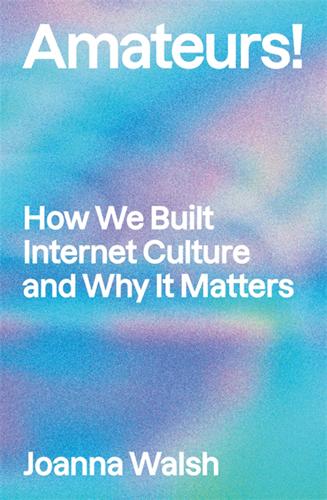
Amateurs!: How We Built Internet Culture and Why It Matters
by
Joanna Walsh
Published 22 Sep 2025
‘It is not a “black box” algorithm that is to blame,’ Steyerl writes, ‘as Stable Diffusion’s actual code is known. Instead, we might call it a white box algorithm, or a social filter.’19 It’s less the machine that’s the problem; it’s the people running it. Donnarumma called AI art ‘soft propaganda for the ideology of prediction’: for electoral control, for deepfakes and fake news, and for the technologies of war. Though these are played out 120virtually, this is biopolitics (when it’s not necropolitics): the end goal is control over bodies. Steyerl points out that this is nothing new: photo-identity was used to define racial facial characteristics by nineteenth-century eugenicists and twentieth-century fascists.
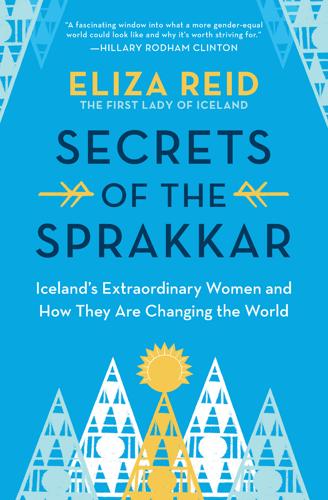
Secrets of the Sprakkar
by
Eliza Reid
Published 15 Jul 2021
She and her friends populate the album with clips from Icelandic news headlines and photo captions that neglect to name women or that identify them exclusively in relation to men: a photo of three people with only the two men identified; “sister of [a former male prime minister] now a member of parliament”; “Króli [a popular male singer] debuts girlfriend at film festival.” Another image is of Gudni and me shaking hands with a stream of anonymous visitors during an open house at the presidential residence. The caption reads “The president greets guests.” In an era of fake news and ridiculous deep-state conspiracies, does the omission of a single name in a photo caption matter? Is being identified solely in relationship to another person really such a big deal? Absolutely yes, these things matter. It is indeed a privilege to worry about these issues, as opposed to even more grievous ones.
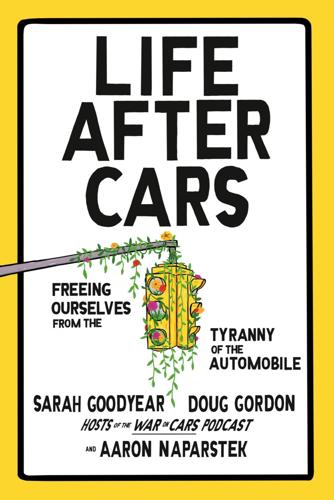
Life After Cars: Freeing Ourselves From the Tyranny of the Automobile
by
Sarah Goodyear
,
Doug Gordon
and
Aaron Naparstek
Published 21 Oct 2025
Chief among them was the fact that there was no bike lane on Tenth Avenue. Still, getting things right is not as important to the bikelasher as giving the impression that they’ve arrived at their opposition to bike lanes in good faith. “I like bikes” is the spoonful of sugar that makes the anti-bike medicine go down. Fake News Whoopi Goldberg’s detailed critique of an imaginary bike lane revealed another key feature of bikelash, which is that there’s something about bicycles that makes otherwise intelligent people say completely unintelligent things. At the height of New York City’s Prospect Park West–related bikelash, New Yorker staff writer John Cassidy—who covers economics and politics and who was educated at Oxford, Columbia, and Harvard—wrote a column criticizing the city’s increasing investment in cycling infrastructure.
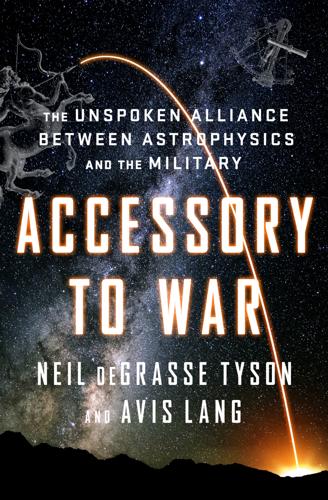
Accessory to War: The Unspoken Alliance Between Astrophysics and the Military
by
Neil Degrasse Tyson
and
Avis Lang
Published 10 Sep 2018
Three weeks later, the book was still number one on Amazon’s lists of both classic and contemporary literature and fiction, political fiction, satire, and dystopian science fiction. Former president George W. Bush weighed in on the nature of power in February 2017 on national TV, one month into the Trump presidency, as the new administration began to ignore long-standing practices of press access and freedom and to repeatedly vilify journalism as “fake news” and an “enemy of the people”: “We need the media to hold people like me to account. I mean, power can be very addictive and it can be corrosive and it’s important for the media to call to account people who abuse their power, whether it be here or elsewhere.” Peter Baker, “Former President George W.
…
R., 91 Taylor, Joseph H., Jr., 182 telescopes about, 101–2 in American Revolution, 111–12 astronomical telescope development, 109 deformable telescope mirrors, 154 Galileo and patronage, 105–6, 160, 173, 442–43n Galileo construction of, 102, 107, 110, 441–42n Galileo’s discoveries with, 52, 103, 109–10 introduced at The Hague in 1608, 103–4, 107 invention and early development, 102–3 lenses and mirrors in refracting telescopes, 109, 110, 444n military use in eighteenth century, 111–15, 116–18 military use in nineteenth century, 115–16, 123–24, 125–26, 127, 130 military use in seventeenth century, 107, 108–11, 116–18, 444–45n mirrors in reflecting telescopes, 133 narrow role of in war, 116–18, 445–46n problems in large refracting telescopes, 133 resolution, 101 see also lenses; optical telegraphs Teller, Edward, 499n Tempel 1 (comet), 207–8 Templo Mayor in Mexico City, 42 Terra Australis Incognita, 91 Tesla, Nikola, 184, 463–64n Tetrabiblos (Ptolemy), 50, 51, 425n Thakur, Ramesh, 310, 507n Thant, U, 302 Thayer, Abbott, 172 The Iliad (Homer), 239 thermonuclear fusion bombs, 304, 389, 390, 391, 474n Thirteen Towers at Chankillo, Peru, 42 This New Ocean (Burrows), 357 threat inflation, 257–58, 485n Three Mile Island nuclear disaster, 255 Thule, 71, 433n Thutmose III (pharaoh), 68 Tiede, Ernst, 424n Tikhonravov, Mikhail, 264, 487n time as a measure of distance, 92–93 time dilation, 218 time units as units of angular measure, 93 tin, 69–70, 432n TIROS (Television Infrared Observation Satellite), 278 Titan Corporation, 412n Tokyo, firebombing of, 301, 304 Toleta de Marteloio, 77 Toscanelli, Paolo dal Pozzo, 86 Tracking and Data Relay Satellite System (TDRSS), 340, 517n trade and commerce and ancient navies, 68, 70 early Mediterranean maritime trade, 68–70, 432n medieval Middle Eastern and Asian trade networks, 81–82 Ottoman tax collectors and, 81–82 in thirteenth through fifteenth centuries, 78–79, 436n types of cargo in ancient times, 69, 432n Transit navigation satellites, 278, 291 transmission curves, 200 transparency, 175 TRAPPIST-1 exoplanets, detection, 399 Travels of Sir John Mandeville, 86, 437n Travels (Polo), 86 Treaty of Saragossa, 88 Treaty of Tordesillas, 88 Treaty of Versailles, 137, 138, 139 Treaty on Common Security in Outer Space, 295 Truman, Harry S., 262, 264, 265, 303, 473n Trump, Donald J. budget proposals, 378, 527n on “fake news,” 509n “fire and fury” rhetoric, 306 immigration policy, 377 inauguration, 377 on NATO, 328 nuclear arms policy, 308 Paris Agreement and, 529n reaction against, 377–79 threats of nuclear escalation, 395, 530n truculence, 396, 530n Tsar Bomba, 307, 505–6n Tsiolkovsky, Konstantin, 263–64, 486–87n Turnbull, David, 92 Twelve Years’ Truce, 104 Two Micron All Sky Survey (2MASS), 222 Two-Micron Sky Survey, 221 2001: A Space Odyssey (movie), 494n Tyson, Miranda, 8 Tyson, Neil deGrasse Commission on the Future of the United States Aerospace Industry, 15, 318, 411n Hayden Planetarium, 15 Natural History (magazine), 15 President’s Commission on Implementation of United States Space Exploration Policy, 323 reaction to battle for Baghdad, 19–20 reaction to protestors against “weapons bazaar,” 17–18 Space Foundation board, 15–16, 20 Ufimtsev, Pyotr, 198 Uhuru satellite, 226 Ujjain, India, 94 ultraviolet radiation discovery of, 146, 168 Earth’s atmosphere and, 199, 214 experienced by humans or animals, 169–70 United Launch Alliance, 371 United Nations calls for peaceful use of space, 272–73, 382 concerns about space debris, 260, 486n treaties and proposals addressing space, summary, 293–95 treaty proposed to ban nuclear weapons, 310 see also Outer Space Treaty United States balance-of-trade deficit with China, 372–73 demand for military production in World War I, 135 experience of modern war avoided, 386–87 military spending, 12–13, 353, 412n, 519n, 533n, 534n optical glass production in World War I, 139–40, 454–55n Russian rocket engine ban, 371–72 Russian rocket engine sales to, 363, 364, 371 space spending, 520n see also Civil War United States Military Telegraph, 123 Universal Time (UT1), 99, 441n Uranus, 52, 62, 167, 304, 444n Urban VIII (pope), 51 Ursa Major (the Great Bear), 67–68, 432nn US Defense Mapping Agency, 99, 343 US economy competitiveness in global economy, 30, 31 research and development spending, 30 science and engineering, percentage of US employment, 21 share of world economy, 31, 419n technical industries, share of gross domestic product, 21 Ushant, France, 72 US Presidents and the Militarization of Space 1946–1967 (Kalic), 290 USS Abraham Lincoln, 24 U-2 spy plane, 198, 276, 278, 492n Van Allen radiation belt, 216, 302 van Creveld, Martin, 116, 117, 445–46nn Vedic astrology, 54 Vega, daguerreotype of, 144 Vela Hotel satellites, 216–17, 474n Vela Sierra and Vela Uniform programs, 474n Velázquez, Diego, 107 Venera probes, 211, 364 Venus albedo, 196 in astrology, 50 radar echoes from, 191 recorded in Mesopotamian tablets, 41 transit in 1769, 91, 92, 440n VERITAS (Very Energetic Radiation Imaging Telescope Array System), 199 Very Large Array, New Mexico, 199 Very Long Baseline Array, 182 Vespucci, Amerigo, 436n Victoria (ship), 88 Vidal, Gore, 35 Vietnam War antiwar movement and, 8, 410n author’s revulsion at, 9 in Johnson era, 289, 290, 500n in Kennedy era, 284 NASA cooperation with Pentagon, 290 photograph of naked Vietnamese girl (1972), 9, 17 and reaction to Desert Storm, 7–8 US troop numbers, 320 Vikings, 68, 78, 432n Vinland, 78 visible light, 100, 101, 165–66, 169, 199 von Braun, Wernher American space program, 267, 366, 488–89n, 523–24n Operation Paperclip and, 262, 468n V-2 rocket and, 193, 264, 468n Voting Rights Act of 1965, 288 V-2 Rocket Panel, 193 V-2 rockets, 58, 183, 193–94, 468–69nn Waiting for the Barbarians (Coetzee), 35 Wallace, David, 423n Wallenstein, Albrecht von, 49 war as stimulus for creativity, 4, 5–6 War of the Worlds (Wells), 242–43 Washington Crossing the Delaware (Leutze), 114–15, 445n Washington, George American Academy of Arts and Sciences, 112 command of the Continental Army, 112–15, 116 telescopes and, 111, 112–13, 115, 116, 130 water hole, 200–201, 470n Watson-Watt, Robert, 190, 194, 244–45, 465–66n, 467nn wavelength, defined, 100, 169 wave–particle duality, 169 Waxahachie, Texas, 29 wayfinders, clues used by, 64–66 weapons ASATs (antisatellite weapons), 257–59, 283, 291, 294, 356, 485n atomic bombs, 151, 190, 263, 303, 457n, 474n directed-energy weapons, 240–41, 242 evolution and development of, 238–40 fusion bombs, 304, 389, 390, 391, 474n kinetic-energy weapons, 240, 241 space weapons, 256–60, 286, 297–301, 312–13, 397, 485n Weeden, Brian, 397 Weinberg, Stephen, 368–69 Weston, Scott A., 393–94 “When Johnny Comes Marching Home Again,” 10 Whipple, John Adams, 144 White, Theodore, 56 Wide Field Infrared Survey Telescope (WFIRST), 232 wigwaggers, 125 Wilkins, Arnold, 244–45 Wilkins, John, 119–20 Wilson, Heather, 325 Wimperis, Henry, 244, 245 Wise, Donald U., 369 Wohl, Louis de, 61 Wolfowitz, Paul, 346–47 Wollaston, William Hyde, 145, 146 Wolter, Detlev, 295 Wood, John, 437n Worden, Simon P.
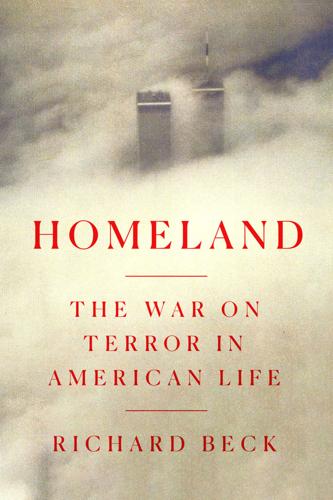
Homeland: The War on Terror in American Life
by
Richard Beck
Published 2 Sep 2024
The year in which the United States invaded, 2003, is the last year in which a majority of Americans told Gallup that they had a “great deal” or “fair amount” of trust and confidence in the mass media, and that trust has declined steadily ever since, from a pre-invasion high of about 55 percent to just 34 percent in 2022.[5] Two decades later, resentment of the media remains at a fever pitch across the political spectrum, with Donald Trump making attacks on “fake news” a staple of his rallies and speeches, and left-wing users of the social media platform formerly known as Twitter regularly castigating journalists who supported the invasion. Journalism’s failure to cast more doubt on the wisdom of invading is our era’s paradigmatic example of what happens when television networks and national newspapers get caught prioritizing the concerns of the people they cover above those of their audiences.
…
W., 55–56 Slate, 367 Sleeper Cell, 205 Slotkin, Richard, 13, 28, 193–95 Smith, Walter I., 192–93 Snowden, Edward, 224–25, 382, 384, 399, 427 social media, 346, 348, 353, 406–13 and protests, 328, 432, 443 Somalia, 77, 221, 293, 375 Sontag, Susan, 289, 349–53, 365, 374 Soviet Union, 155, 202, 243, 257, 430 Spencer, Robert, 324 Stalin, Joseph, 211–12 Standing Rock, 489–90, 492 Stephanopoulos, George, 41, 424 Steve Madden, 99–100 suicide bombers, 39, 85, 204, 293, 326–27, 463 and mass shootings, 454, 456–57 Sullivan, Andrew, 350, 364–66, 379, 468 Super Bowl, 83–85, 96–99, 107–9 superheroes, 44–47, 59–62 Supreme Court, 187, 216, 368, 375–76 surplus population, 286–88, 292–94, 299, 310, 314, 477–78 in U.S., 407, 439–40 surveillance, 117, 388, 393–94, 451, 466, 493 under Barack Obama, 224–26 of Muslim and Arab Americans, 141, 157–59, 400 in public spaces, 119–20, 404–5, 407, 411–12, 414 and Silicon Valley, 391–92, 395–96, 407, 414, 416 technology, 52, 54 and transparency, 427 Syria, 49, 319, 371, 375, 464, 475 civil war in, 315–16, 320–22 and Islamic State, 327 refugees of, 322–24, 326 T Taiwan, 471–72 Talent, James, 187 Taliban, xx, 38, 54–55, 163, 221 in Kabul, xxii, 129, 223–24, 463–64 Tancredo, Tom, 308 Tapper, Jake, 385 Taylor, Astra, 437 Tea Party, 44, 227 tech bubble (2000), 53, 98, 330–33 technology industry, 389–90, 395–96, 482–83 and military, 52–56, 72, 297, 386, 388, 392 teenagers, 407–15 television, 173–78, 205, 207–8 Terán, Manuel “Tortuguita,” 491 Texas, 130, 205, 309, 325, 383 Thiel, Peter, 392 Tillman, Pat, 62–64, 66–67 Titanpointe, 382–83 Tocqueville, Alexis de, 343–45 Torres, Saeed “Shariff,” 146–49 torture, 181–87, 188–89, 194–97, 423, 428, 451, 493 ban of, 216, 219, 226, 253 criticism of, 191, 208 in movies, 173–74, 176–78 Torture Memos, 183, 220, 423, 428 transparency, xxiv, 93, 115, 224, 255, 426–27 Transportation Security Administration (TSA), 88–95 Trillin, Calvin, 93–94 Trump, Donald, 134, 371, 380, 427–29, 462–65, 479 and Black Lives Matter, 449 and China, 469, 471–72 and “fake news,” 346, 348 and “Muslim ban,” 323 and elections, xxiii–xxiv, 418–20, 475, 477 Tunisia, 315–16, 323–24 Turkey, 321, 375 24 (TV drama), xxvi, 174–78, 185, 206–7 Twin Towers, 8, 23, 36, 43, 125, 172 bombing (1993), 113 replacing, 110–12, 126 Twitter, 328, 346, 406, 412–13, 437 U Ukraine, 269, 467–69, 486 undocumented migrants, 306, 309–11, 325–26 unemployment, 98, 266–67, 285–87, 294, 299, 327 and housing crisis, 335–36 United Nations (U.N.), 83, 287, 318, 424, 426, 474 and Colin Powell, 357–59 Security Council, 150, 319, 371 Updike, John, 206 U.S.

What Would Google Do?
by
Jeff Jarvis
Published 15 Feb 2009
We need to use care in beating up Zuckerberg and Facebook in general because we want these folks to push the limits of finding new ideas and trying to make sense out of all the data flowing everywhere. Try it and get some reactions, adjust, find the happy center, rinse and repeat…. If they do really bad things, people vote with the mouse clicks.” It’s not the mistake that matters but what you do about it. Be honest Fake news anchor Jon Stewart is one of the most trusted newsmen in America because he calls bullshit. Howard Stern is the king of all media in the U.S. because he’s honest. The tagline of Stern’s personal news service on satellite radio: “No more bullshit.” Shouldn’t that be every news organization’s tagline?
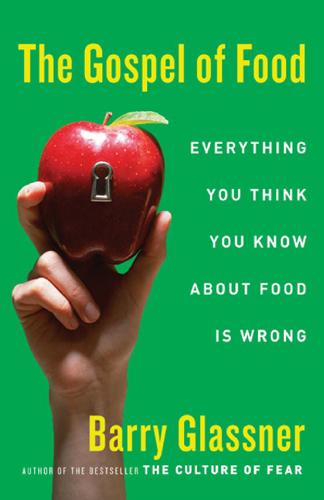
The Gospel of Food: Everything You Think You Know About Food Is Wrong
by
Barry Glassner
Published 15 Feb 2007
Stampfer went on to accord grains a place in a holy trinity: “Like fruits and vegetables, whole-grain foods offer a complete package of naturally occurring vitamins, phyto-nutrients, minerals, fiber, and protein. All of these are key components of a healthy diet that can help prevent disease.” “I’m Danielle Addair,” the pretend reporter signed off at the end of the fake news report, which TV stations on tight budgets could include in their newscasts as if they had put together the story themselves. Larger stations and the national networks, meanwhile, could extract Kessler’s or Stampfer’s sound bites and insert them in their own reports. Precisely how many TV news outlets ran all or part of General Mills’ VNR, I do not know, but presumably several dozen at least.
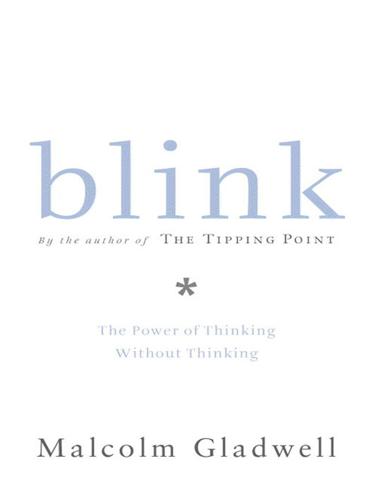
Blink: The Power of Thinking Without Thinking
by
Malcolm Gladwell
Published 1 Jan 2005
The best account is by Thomas Hoving, in chapter 18 of False Impressions: The Hunt for Big Time Art Fakes (London: Andre Deutsch, 1996). The accounts of the art experts who saw the kouros in Athens are collected in The Getty Kouros Colloquium: Athens,25–27 May 1992 (Malibu: J. Paul Getty Museum and Athens: Nicholas P. Goulandris Foundation, Museum of Cycladic Art, 1993). See also Michael Kimmelman, “Absolutely Real? Absolutely Fake?” New York Times, August 4, 1991; Marion True, “A Kouros at the Getty Museum,” Burlington Magazine 119, no. 1006 (January 1987): 3–11; George Ortiz, Connoisseurship and Antiquity: Small Bronze Sculpture from the Ancient World (Malibu: J. Paul Getty Museum, 1990), 275–278; and Robert Steven Bianchi, “Saga of the Getty Kouros,” Archaeology 47, no. 3 (May/June 1994): 22–25.

Comedy Writing Secrets
by
Mel Helitzer
and
Mark Shatz
Published 14 Sep 2005
. • letter to the IRS defending an outrageous deduction • set of directions for using a common personal hygiene product (soap, toothpaste) • application letter for an unusual job (mortician, proctologist) • "I'm out of the office" e-mail message • top-ten list of your pet peeves • list of new cable TV networks or shows • weather forecast • obit for roadkill • travel guide for your local neighborhood • insurance policy, will, or tax return 330 Comedy Writing Secrets • scene for a silent film • movie, play, or music review • set of fake news headlines • list of new car models • short story of your worst dating experience • roast for yourself, family members, or pet • short story about how turkeys feel on Thanksgiving • fairy tale about animals with mental disorders • song or poem • guide for parenting • dress code for the office or home • list of Internet domain names • set of captions for old family photos • fax cover sheet That's a Wrap 331 APPENDIX Glossary AMBIVALENCE THEORY: A theory of comedy that stresses conflicting emotions, such as love and hate, toward a person, object, or idea.
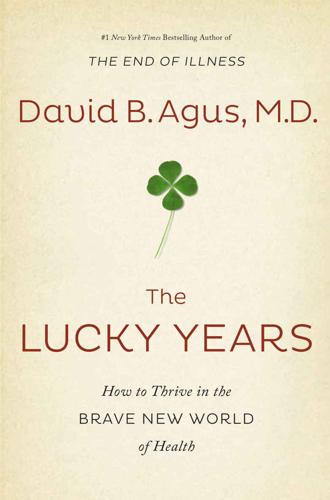
The Lucky Years: How to Thrive in the Brave New World of Health
by
David B. Agus
Published 29 Dec 2015
Chapter 9: The Butterfly Effect 1. Malcolm Gladwell, Blink: The Power of Thinking Without Thinking (New York: Little, Brown, 2005). 2. Excerpt from Gladwell, Blink: The Power of Thinking Without Thinking, iBooks. https://itun.es/us/wByuv. 3. Michael Kimmelman, “ART; Absolutely Real? Absolutely Fake?,” New York Times, August 4, 1991. 4. Charles Duhigg, The Power of Habit: Why We Do What We Do in Life and Business (New York: Random House, 2012). 5. For a comprehensive review of perceptual intuition, see Benedict Carey, “Brain Calisthenics for Abstract Ideas,” New York Times, June 6, 2011. Also see Carey, “Learning to See Data,” New York Times, March 27, 2015. 6.
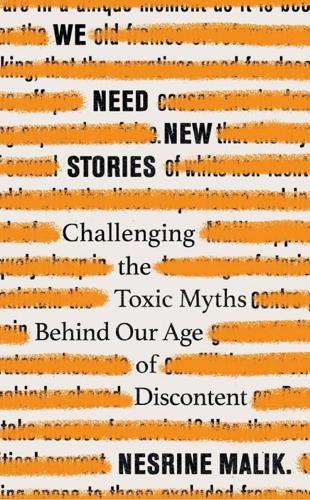
We Need New Stories: Challenging the Toxic Myths Behind Our Age of Discontent
by
Nesrine Malik
Published 4 Sep 2019
Even the BBC regularly rehashes clickbait stories about political correctness out of laziness and traffic chasing. Politicians, pundits and opinion makers then repeat the stories and before they have even triggered suspicion in the recipient’s mind, they are conventional wisdom. This is not to be taken as an excuse to dismiss all sources as ‘fake news’, but as a prompt, a reminder to question if it seems, as I will detail below, like there is something behind a story. As mentioned before, the purpose of myths is to hide the real crises, so as to dampen efforts to resolve them. Gender equality is regressing. Speech by those empowered against the weak has never been more free or in demand.
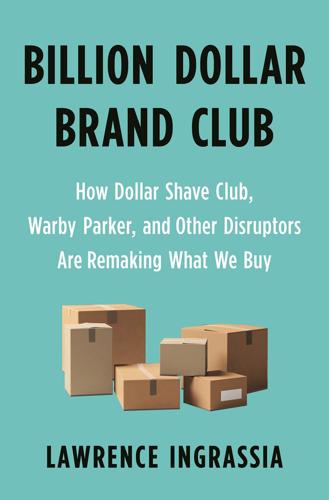
Billion Dollar Brand Club: How Dollar Shave Club, Warby Parker, and Other Disruptors Are Remaking What We Buy
by
Lawrence Ingrassia
Published 28 Jan 2020
Facebook also helped select different target audiences and advised advertisers on the optimum size of the audience for each message for best results, typically anywhere from a few thousand to hundreds of thousands. No wonder that just about anyone who spends time on Facebook and Instagram is bombarded with a steady flow of ads pitching new brands. There, among your cousin’s new baby photos, your friend’s pictures of hiking in the Himalayas, and fake news posts from Russian operatives, are ads for Away luggage, Hubble contact lenses, Quip electric toothbrushes, Glossier cosmetics, Allbirds or Rothy’s shoes, Prose shampoo, Madison Reed hair coloring, Dollar Shave Club razors, MVMT watches, Brooklinen bedding, Purple mattresses, Brandless (yes, that is the name of a direct-to-consumer brand) groceries … and ThirdLove bras

Duty of Care: One NHS Doctor's Story of the Covid-19 Crisis
by
Dr Dominic Pimenta
Published 2 Sep 2020
It still seems such a wild concept that he could move to a city larger than London that I’d never heard of, but, to the citizens of Xining, Paul was an equally wild concept, a foreigner living in a city with nearly no tourists whatsoever. I’d never heard of Wuhan either, before the outbreak started. One cold evening, Dilsan looked up from her phone. “Did you hear about this thing in China? It’s killed 10 people, it says here.” I snorted into my tea. “Where’s that? Facebook? Fake NEWS.” “This is CNN.” “Oh.” The details were vague, a “mystery virus” in the city of Wuhan, China. It sounded like some sort of food infection reported as a local outbreak around a meat market. I knew that Ebola and other serious viruses could be transmitted through bodily fluids from animals. I read the article Dilsan handed to me and passed back her phone.
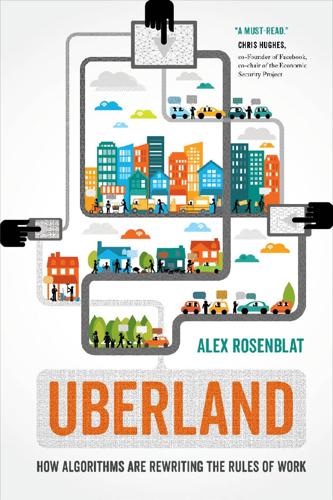
Uberland: How Algorithms Are Rewriting the Rules of Work
by
Alex Rosenblat
Published 22 Oct 2018
In conflicts with Airbnb, the hotel industry alleges that the company operates illegal hotels: hosts rent out their spare rooms or homes to traveling guests but do not have to comply with the safety regulations that govern hotels or bed and breakfasts.58 Likewise, Facebook, which is in the business of sharing news, resists being categorized as a media company. A media company can be regulated and held to account for journalistic ethics, editorial responsibilities, and news accuracy (rather than “fake news”). A neutral platform that uses algorithms to spread content or to curate newsfeeds is the product of engineering and automation, and these efface the responsibilities a media company might have under the guise of technological innocence. Scholars59 and journalists60 have penned marked retorts to Facebook’s arguments, but the logic that Facebook uses is similar to what Uber deploys.
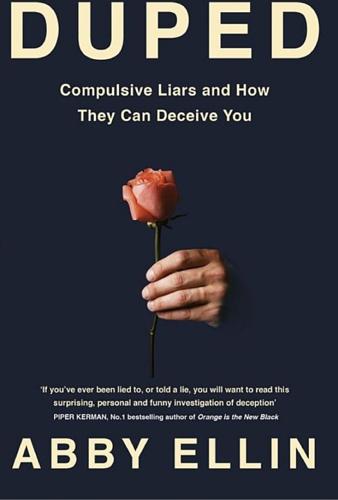
Duped: Double Lives, False Identities, and the Con Man I Almost Married
by
Abby Ellin
Published 15 Jan 2019
Is it ever possible to trust again? All of these questions feel urgent to me. The word of 2016, according to Oxford Dictionaries, was “post-truth”—an adjective “relating to or denoting circumstances in which objective facts are less influential in shaping public opinion than appeals to emotion and personal belief.”26 Fake news and “alternative facts” are referenced daily. Donald Trump, the Gaslighter in Chief, roams the gilded halls of the White House, tweeting with impunity. ONE FUNNY THING about researching dishonesty: every answer seems to lead to more questions. First and foremost: given that we all hate being deceived, why do so many of us lie?
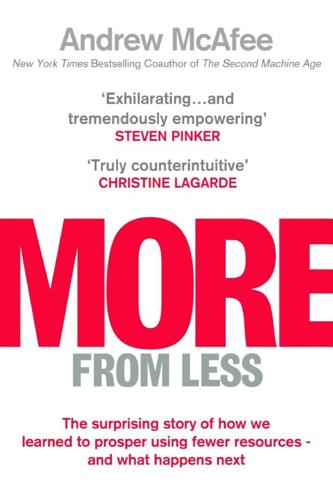
More From Less: The Surprising Story of How We Learned to Prosper Using Fewer Resources – and What Happens Next
by
Andrew McAfee
Published 30 Sep 2019
It’s important to do these things with members of other tribes—people who we know feel differently from us about important things. And it’s particularly important not to try to win arguments with them. For many of us, the strong tendency when we interact with people who have different beliefs and moral foundations is to quickly try to show them why they’re wrong—why their logic is flawed, their evidence is fake news, and their beliefs are unsupportable. This almost never works. It usually just makes other people dig in their heels and hold on to their existing beliefs even more strongly. A lot of debate and discussion increases disconnection. A better way is to start by finding common ground. The psychologist Jonathan Haidt, whose work has been mentioned in prior pages several times already, highlights that people with both liberal and conservative moral foundations believe deeply that we have a responsibility to care.
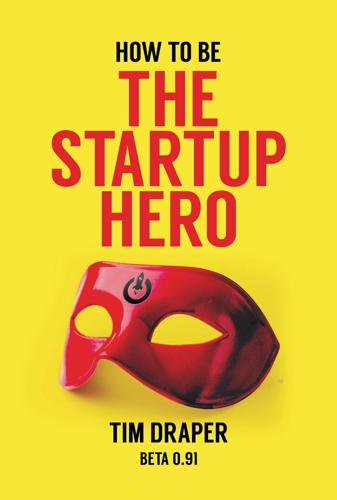
How to Be the Startup Hero: A Guide and Textbook for Entrepreneurs and Aspiring Entrepreneurs
by
Tim Draper
Published 18 Dec 2017
I understand that your recollections of events and mine may differ, but I did my best to lay out each story and I hope you appreciate the spirit of the book. Fortunately, I can change the online version of this book and don’t have to wait for a new printing. If you do have a different recollection, please let me know, and I may make updates accordingly. If I don’t, just think of this as fake news ;). Origins Draper History My grandfather, General William H. Draper Jr., was a dynamo. He led the economic portion of the Marshall Plan for Japan and Germany after World War II. He was the first Undersecretary of the Army and the first US Ambassador to NATO. He started Planned Parenthood, and as delegate to the United Nations Population Commission, he worked with Mao Zedong on the Family Planning Policy in China in 1970, which led to China’s one child policy in 1979.
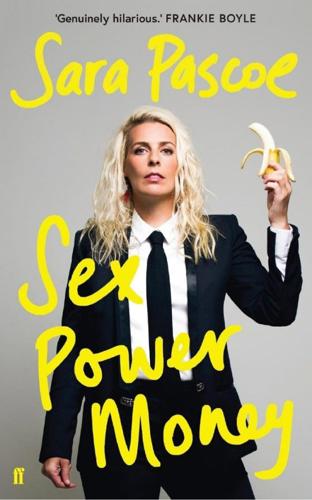
Sex Power Money
by
Sara Pascoe
Published 26 Aug 2019
I was lectured by a red-haired man at a party who said that Betamax had prohibited porn on their format. This meant that people who wanted to watch porn had to buy VHS recorders. Which meant they purchased their non-porn films on VHS too, so films were put onto VHS not Betamax and Betamax went out of business. It’s a great and salacious story that I believed (and repeated) but it’s not true, FAKE NEWS everyone. Mr Redhead – a school teacher, I presume? The VHS was more affordable and that’s why it won the format war. It was a war with one casualty, the Betamax, the oxymoronically named video player who died before we were all born.|| Throughout the 1980s more and more people purchased VCRs and the films and programmes to watch on them.

Experience on Demand: What Virtual Reality Is, How It Works, and What It Can Do
by
Jeremy Bailenson
Published 30 Jan 2018
Consumers of news are increasingly drawn to news sources that confirm their own beliefs. As the number of news organizations that attempt to pursue the established ideals of the profession decline, their deeply reported pieces can get drowned out by stories presented from partisan perspectives or even fake news designed to grab attention and generate outrage. Add to this situation a distrustful and cynical population that no longer can distinguish between the work of journalistic professionals and propaganda, and you have a situation ripe for mischief. In this fast-changing news landscape we have two big reasons to be wary of a medium like virtual reality.
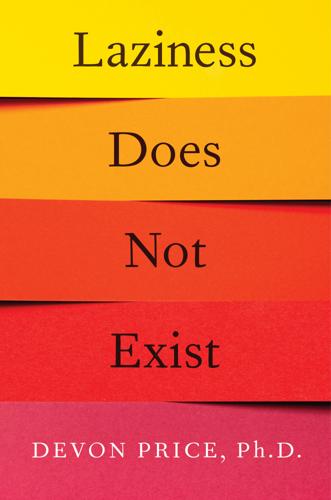
Laziness Does Not Exist
by
Devon Price
Published 5 Jan 2021
The goal of a phishing scam is to get a distracted person to quickly send their log-in info to someone pretending to be their boss or a representative from their bank without a second thought.22 Often, the messages sent by scammers are designed to make the recipients panic, telling them that they’ve been hacked or that their bank account was compromised, and therefore they must e-mail their password to the phisher ASAP. Research shows that when people are distracted or overloaded, they’re less likely to notice that someone is lying to them and worse at evaluating the quality or trustworthiness of information thrown their way.23 Ironically, we might be at the greatest risk of falling for “fake news” when we’re habitually consuming too much information. * * * According to Pew, 20 percent of Americans report feeling anxious and overloaded by how much information is available online.24 However, 77 percent say they actually like having access to as much information as they do. This makes sense when we remember the research showing that smartphones (and access to the Internet) make people feel powerful.

The Perfect Police State: An Undercover Odyssey Into China's Terrifying Surveillance Dystopia of the Future
by
Geoffrey Cain
Published 28 Jun 2021
At first, technology executives will look the other way if profits are strong and collaborate if profits are weak, because they need government support. It helps to deploy cameras and social media that can gather data on your enemies: their facial features, DNA, voice recordings, what they do on the web. “Spread fake news about your enemies on the social media [sic] and apps.” The goal is to create a mood of hysteria, accusation, and paranoia. Step two, he explained, comes with a twist. New technologies in AI and facial recognition will almost always have imperfections. Maybe new software or devices aren’t as efficient or smart as you think, unable to track down criminal suspects that easily.

Life After Google: The Fall of Big Data and the Rise of the Blockchain Economy
by
George Gilder
Published 16 Jul 2018
The result is an Internet architecture top-heavy with free apps that can do anything you could want and porous in its underlying protocols to establish identities, property rights, and other facets of the ground state of the system. A porous, perforated Internet stack allows the money and power to be sucked up to the top. A global copying machine, the Internet founders in establishing origins, facts, truths, timestamps, ground states, and identities. Fake news and phishing expeditions are hardly differentiated from real events and edifying communications. Now it is time to move beyond the slippery slopes of the Internet and provide an immutable database on which to build new structures of trust and truth: low-entropy carriers for a high-entropy era of human creativity and accomplishment.
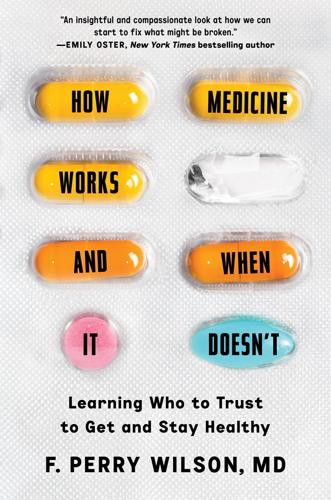
How Medicine Works and When It Doesn't: Learning Who to Trust to Get and Stay Healthy
by
F. Perry Wilson
Published 24 Jan 2023
Kellermann et al., “Gun Ownership as a Risk Factor for Homicide in the Home,” New England Journal of Medicine 329, no. 15 (October 7, 1993): 1084–91, https://doi.org/10.1056/NEJM199310073291506. 6 It was in 2003 that mRNA vaccines hit their stride: Yen-Der Li et al., “Coronavirus Vaccine Development: From SARS and MERS to COVID-19,” Journal of Biomedical Science 27, no. 1 (December 20, 2020): 104, https://doi.org/10.1186/s12929-020-00695-2. 7 But the facts most commonly misinterpreted: Vaccine Adverse Event Reporting System (VAERS), accessed February 16, 2022, https://vaers.hhs.gov. 8 This has resulted in some humorous: Harriet Hall, “Reality Is the Best Medicine: Diving into the VAERS Dumpster,” Skeptical Inquirer, November/December 2018, https://skepticalinquirer.org/2018/11/diving-into-the-vaers-dumpster-fake-news-about-vaccine-injuries. 9 As of June 13, 2022: United States Department of Health and Human Services (DHHS), Public Health Service (PHS), Centers for Disease Control (CDC) / Food and Drug Administration (FDA), Vaccine Adverse Event Reporting System (VAERS) 1990–06/03/2022, CDC WONDER Online Database, accessed at http://wonder.cdc.gov/vaers.html on June, 13, 2022, 1:12:10 PM. 10 But the political divide with regard to: Ashley Kirzinger et al., “KFF COVID-19 Vaccine Monitor: July 2021,” Kaiser Family Foundation, August 4, 2021, https://www.kff.org/coronavirus-covid-19/poll-finding/kff-covid-19-vaccine-monitor-july-2021. 11 As of this writing, these approaches: Matthew E.
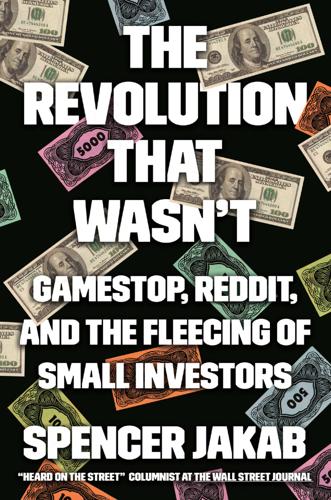
The Revolution That Wasn't: GameStop, Reddit, and the Fleecing of Small Investors
by
Spencer Jakab
Published 1 Feb 2022
The idea has a long and sordid history, but it took on a new dimension with the arrival of the internet and message boards dedicated to stocks. In the early days, some of the more prominent cases, or at least those that were successfully prosecuted, involved very young masterminds. There was the case of seventeen-year-old Cole Bartiromo, who bought shares of fifteen companies and then posted fake news bulletins about them on Yahoo and RagingBull message boards. Even younger, Jonathan Lebed, just fifteen at the time, was forced to disgorge gains by the SEC in a similar scheme. Rather than teenagers, the 2021 version was likely run by people with a lot more resources and sophistication. There is widespread suspicion by many WallStreetBets users that the forum had been infiltrated by organized criminals using “bots”—algorithms or paid posters with multiple accounts—as GameStop became a front-page story.
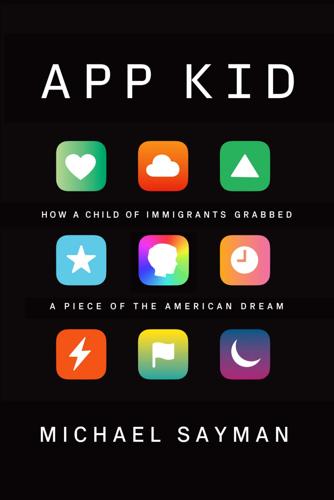
App Kid: How a Child of Immigrants Grabbed a Piece of the American Dream
by
Michael Sayman
Published 20 Sep 2021
By reminding us of all the ways our phones trick our brains into delivering brief hits of unsustainable happiness, I hope to do a little to help humans take back the upper hand in our relationship with technology. About that relationship: so much has changed since I arrived at Facebook as a wide-eyed, metal-mouthed intern in 2014. Back then, “fake news” wasn’t a household term and Russia’s election meddling was yet to be a story. I believe that Zuckerberg, and many others in the tech industry, underestimated the vulnerabilities that could be exploited on large social networks, as well as the degree of damage that could be caused to the world. In those days, Silicon Valley as a whole was a much more optimistic place.
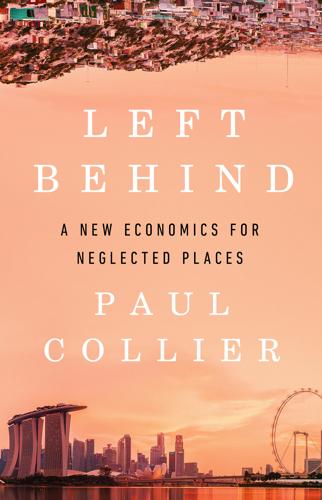
Left Behind
by
Paul Collier
Published 6 Aug 2024
Introducing bus schedules faces a similar problem. The bus owner wants to wait in the central bus station until the bus is full. If there is a rule against it, will he try to bribe the official enforcing it? Will that official refuse the bribe? Collectively the drivers will lobby publicly against the scheduling policy, perhaps using ‘fake news’ to claim that it would raise costs and fares. vi As noted earlier, it is also an astonishingly unequal city: its poor sacrifice liveability, either through overcrowding or dependence on an inadequate bus service. vii That governor, Bola Tinubu, is now President of Nigeria. His early actions have shown the same astute and pragmatic political focus as he displayed in Lagos.

The Rationalist's Guide to the Galaxy: Superintelligent AI and the Geeks Who Are Trying to Save Humanity's Future
by
Tom Chivers
Published 12 Jun 2019
Elon Musk, Peter Thiel, Dustin Moskowitz are the big-name funders behind it, and perhaps it isn’t surprising that these software tycoons all think that good software is needed to save the world. And, as various people have muttered to me during the writing of this book, they seem to be less vocal about the sort of problems – privacy, surveillance, filter bubbles, fake news, algorithmic bias – that their software is creating. It’s fun to sound noble and far-sighted, warning of the dangers of a technical problem still to come; it’s less fun to address the criticisms people are making of what you and your peers are doing right now. Fiennes notes that GiveWell and OpenPhil don’t mention a lot of major areas of possible philanthropy.
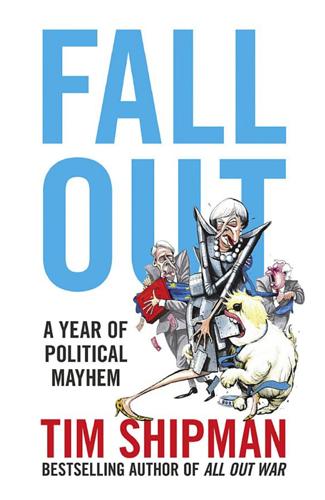
Fall Out: A Year of Political Mayhem
by
Tim Shipman
Published 30 Nov 2017
Trump was also angry at the publication of a dossier by a former MI6 spy, Christopher Steele, which had been prepared for his political opponents, alleging that Russia held compromising material on him, including videos of him being urinated on by Muscovite prostitutes. Denouncing the story as ‘fake news’, Trump said, ‘I’m also very much of a germaphobe, by the way, believe me.’ The admission was about to impact on May’s visit. May saw the Trump visit as key to her Brexit strategy. She wanted a close relationship with the US and the prospect of a preferential trade deal. But she also sought to use the visit to ensure that Trump was engaged in Europe and NATO.
…
Asked what the left should be doing during the election, panellist Paolo Gerbaudo, director of the Centre for Digital Culture at King’s College London, said, ‘My answer is hate … Make the left hate again … I’m full of hate these days. Maybe it’s just because I’m a hateful person.’ Gerbaudo complained that the hate in society was taken out on the wrong people, before suggesting that Philip May was a legitimate target: ‘There’s so many right people to take it out against. I don’t know if it was fake news or real news, I think it was real news, that the husband of Theresa May works for a £1 trillion hedge fund that is profiting from tax avoidance. So let’s take loads of hate against that man … Let’s be personal. Let’s be visceral! Let’s hate!’ He also suggested that to take power the left needed to ‘take the media’ and storm the headquarters of NewsCorp, owners of the Sun, The Times and the Sunday Times: ‘I’d love to do that but I’d probably go to jail.’
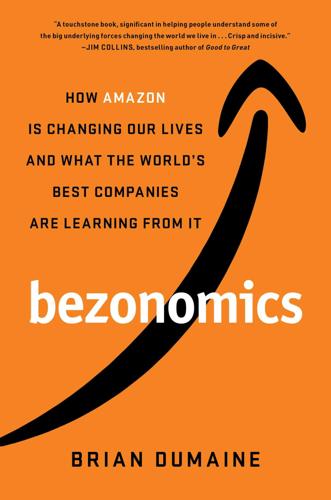
Bezonomics: How Amazon Is Changing Our Lives and What the World's Best Companies Are Learning From It
by
Brian Dumaine
Published 11 May 2020
Even smaller businesses need to adopt the tenets of Bezonomics if they want to survive. Stitch Fix built its online women’s clothing business around a smart algorithm that identifies which fashions its customers prefer. The impact that Bezonomics is having on society is just as profound. Some of the big tech companies are sowing discord with fake news, interfering with elections, and violating personal privacy. As Apple CEO Tim Cook put it: “If you’ve built a chaos factory, you can’t dodge responsibility for the chaos.” The global wealth gap has become so out of kilter that politicians in America and Europe have singled out Amazon and other big tech companies for blame.
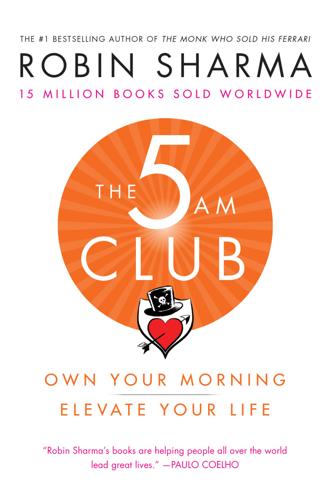
The 5 AM Club: Own Your Morning. Elevate Your Life.
by
Robin Sharma
Published 4 Dec 2018
The Implementation: The Tight Bubble of Total Focus strategy preserves your focus as well as your primal brilliance by giving you long stretches of time free from trivial fascinations and any influences that dissolve your inspiration—and deteriorate your A-game. Each morning, you enter this invisible bubble of your own making that is completely empty of other people’s superficial messages, spam, fake news, advertisements, silly videos, irrelevant chatting and other forms of cyber-hooking that will destroy your life of monumental potential. Part of this philosophical construct is your Personal Menlo Park, the place where—like Thomas Edison—you get lost from the world and go to generate the masterworks that will raise you to industry dominance and global eminence.
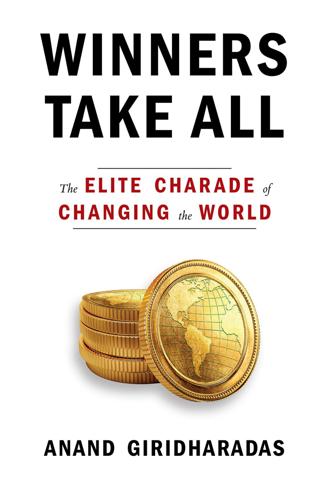
Winners Take All: The Elite Charade of Changing the World
by
Anand Giridharadas
Published 27 Aug 2018
It is no wonder that the American voting public—like other publics around the world—has turned more resentful and suspicious in recent years, embracing populist movements on the left and right, bringing socialism and nationalism into the center of political life in a way that once seemed unthinkable, and succumbing to all manner of conspiracy theory and fake news. There is a spreading recognition, on both sides of the ideological divide, that the system is broken and has to change. Some elites faced with this kind of gathering anger have hidden behind walls and gates and on landed estates, emerging only to try to seize even greater political power to protect themselves against the mob.

Revolution Française: Emmanuel Macron and the Quest to Reinvent a Nation
by
Sophie Pedder
Published 20 Jun 2018
Macron’s attempt to fashion a progressive, European alternative, infused with a message of hope, was both a means of remaking party politics and a response to the populist threat. So, yes, Macron was lucky, and how. But not only. Plenty of obstacles were also placed in his way. Throughout the campaign, the candidate faced his share of personal attacks, sabotage, fake news and orchestrated rumours. During the campaign for the presidential run-off, Jean-Luc Mélenchon refused to call for a vote for Macron, and far-left demonstrators took to the streets with the anti-Macron and anti-Le Pen slogan, ‘Neither a banker nor a fascist’. After his election, and with Putin standing by his side, Macron accused Sputnik and RT, two Russian media, of being ‘organs of propaganda’.
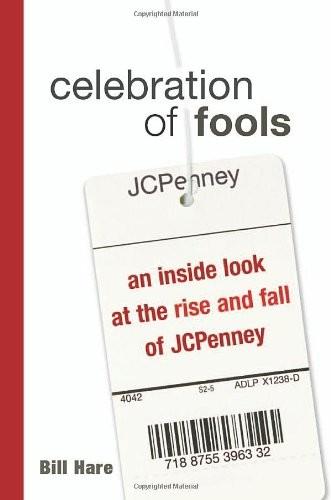
Celebration of Fools: An Inside Look at the Rise and Fall of JCPenney
by
Bill Hare
Published 30 May 2004
Having transferred to New York from the Western Region only a few years before, Howell was a typical store nomad who was much more focused on operational efficiencies. Furthermore, he did not see the former negative arguments as applicable in this day and age. Fashion influences, for one, now originated in many places other than New York—and please name the vendor who wouldn't happily bring sample cases to such a big buyer. The Big Move Never even a fake New Yorker, Howell was also not bothered by the city's predictable fury over the company's exit. When the news hit the street, the Daily News was already being hawked with a front-page headline that read: "J. C. Penney Moving to Plano (That's ‘Plano’ as in Drano) Texas" Speculation that moving would cause a mutiny of experienced talent cut no ice with Howell, either.
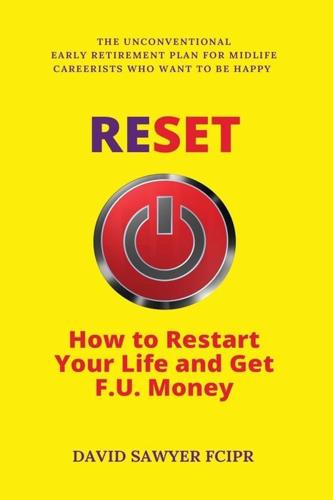
Reset: How to Restart Your Life and Get F.U. Money: The Unconventional Early Retirement Plan for Midlife Careerists Who Want to Be Happy
by
David Sawyer
Published 17 Aug 2018
Online news sites such as BuzzFeed, Huffington Post and, often, electronic versions of traditional media, eg, The Guardian, The New Yorker. Google. Video (whether YouTube, Facebook, LinkedIn). Facebook feed. Facebook groups. Other social networks (Instagram, SnapChat, Twitter, LinkedIn, Messenger, WhatsApp). Because people are going elsewhere for their news (leaving aside the insidious “fake news” that has diminished trust in journalism, a vital part of society), the PR industry has had to change with the times. A new breed of digital PRs has sprung up, urging traditional practitioners to “get with the programme”. They share what they know, for the benefit of others (and themselves, of course, *coughs loudly, again*).
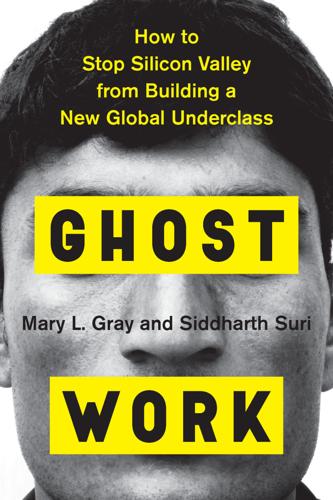
Ghost Work: How to Stop Silicon Valley From Building a New Global Underclass
by
Mary L. Gray
and
Siddharth Suri
Published 6 May 2019
And in cases where a requester really needs people to work without others’ help, they should make that a feature of the work, rather than penalize workers who turn to one another to collaborate. The use case that seems like the most valuable to test today: creating content moderation flash teams that can support each other as they review online content for social media companies. Whether it is fake news posts, hateful tweets or harmful speech spewed by vengeful trolls, or adult content that makes its way into YouTube channels, there is clearly a need to recognize the value of people curating and culling online content. As discussed throughout the book, recognizing and filtering out “bad content” is a technically hard problem.

Corbyn
by
Richard Seymour
The most widely shared stories on this platform were pro-Corbyn and anti-Tory, accentuating Corbyn’s celebrity support and polling improvements, thus undermining the demonisation taking place in the traditional print and broadcast media. Labour understood this advantage and invested more energy in posting and sharing social media content than all of its rivals.16 Some journalists and centre-right politicians have responded to this change with unavailing moral panic about ‘online abuse’ and ‘fake news’. As with all moral panics, they express real tendencies, but in a way that distorts, exaggerates, and scapegoats. Certainly, the emerging attention economy has allowed sensationalist websites and sources of infotainment to exert influence and claim advertising revenue, but neither sensationalism nor infotainment are original products of online media.
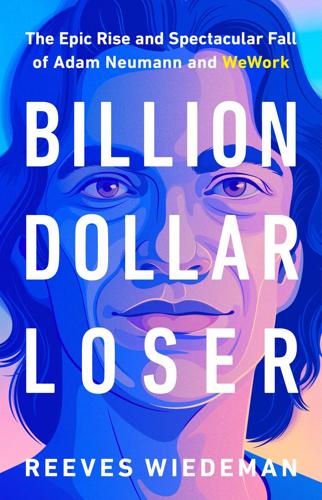
Billion Dollar Loser: The Epic Rise and Spectacular Fall of Adam Neumann and WeWork
by
Reeves Wiedeman
Published 19 Oct 2020
“You should be with me,” he said. “When you have the opportunity to spend time with the greatest real estate mind in the world, you do it.” (The next day, Fry rode with Adam in his car; Adam pulled out a joint, asked if it was okay if he smoked it, then did so without sharing.) Adam began invoking the phrase “fake news” when something negative about WeWork appeared in the press, telling an audience at the New York Stock Exchange it was “a great term.” Masa, meanwhile, had become one of the world’s wealthiest people through a willingness to light himself on fire when necessary. Adam had not resorted to self-immolation, but his confidence grew as each of his gambits worked out.

Artificial Whiteness
by
Yarden Katz
For instance, following a multi-million-dollar grant to study the “ethics and governance of AI,” the Berkman Klein Center for Internet & Society at Harvard University reoriented itself, and scholars rebranded themselves as AI experts. The label’s nebulosity facilitated this rapid uptake. Legal scholars specializing in copyright law, for example, would work on “AI and copyright”; artists, on “AI and art”; journalists, on “AI and journalism” or “AI and fake news”; defense intellectuals, on “AI and national security”; and so forth. The expert industry embraced a purely technical narrative for AI’s sudden importance. According to this narrative, because of increased computing power, larger data sets, and algorithmic advances (typically related to neural networks), AI is finally realizing its promise to radically transform society—and therefore must be managed.

How Long Will Israel Survive Threat Wthn
by
Gregg Carlstrom
Published 14 Oct 2017
In one case, he wrote, a jailhouse janitor offered to pass notes between two suspects, only to turn them over to authorities. Other employees have been shown forged newspaper articles claiming that their friends confessed to a crime. “There have been cases in which the Shin Bet brought in a well-known radio announcer and faked news broadcasts,” he added. Again, their numbers are small, a tiny fraction of Israel’s Jewish population. But their existence underscores Israel’s longtime failure to take seriously the threat of Jewish extremism. The most prominent member of the Hilltop Youth is Meir Ettinger, 24, the grandson of Meir Kahane, the American-born rabbi whose Kach movement was banned in Israel.
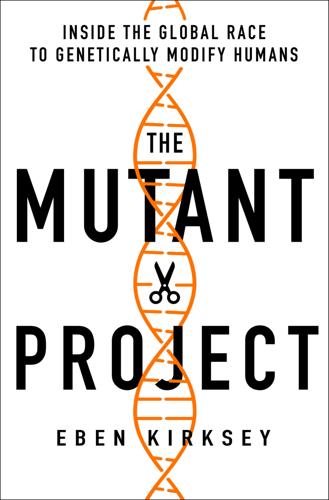
The Mutant Project: Inside the Global Race to Genetically Modify Humans
by
Eben Kirksey
Published 10 Nov 2020
Following the decline of government spending on innovative research, a multitude of start-up companies have tried to step in and fill the gap, promising technological breakthroughs that will solve some of society’s most intractable problems. On the other hand, venture capitalists have a bad history of producing social, economic, and political problems rather than solving them.2 Apple’s iPhone led to factories with appalling work conditions in Shenzhen. Google and Facebook brought us the benefits of social media along with fake news and surveillance capitalism. As Aaron told me more stories—shot through with boundless optimism and promise—I wondered how his venture would actually be different from more established enterprises. Aaron claimed that genetic technology would bring revolutionary changes to medicine, society, and life itself.

We're Not Broken: Changing the Autism Conversation
by
Eric Garcia
Published 2 Aug 2021
I’ve followed candidates campaigning in the past, been to countless political-party and interest-group functions, and seen plenty of politicians press the flesh while I stand on the side with my notepad or sit at a rickety table with my laptop. There is something relieving to me that Benham and I are both members of this Spectrum Generation and we have the opportunity to be judged by our merits, not our autism. People can choose to vote for Benham or her opponent. Readers can think I am an honest broker or a fake-news hack. Either way, we want to be measured by the same metrics every other politician or journalist is measured by. Later that day, as I am heading to the airport to catch a flight back to Washington, I check the Steel City Stonewall Democrats’ endorsement results on Twitter. Benham has won their endorsement.

MegaThreats: Ten Dangerous Trends That Imperil Our Future, and How to Survive Them
by
Nouriel Roubini
Published 17 Oct 2022
Narrow national interests will prevail. The world will split into nations that insist everyone share the tab for ecological damage, and free riders that ignore the calls because they did not cause the problem, they cannot afford to pay for the solution, or they elect leaders who dismiss climate change as fake news. And at some point a violent land grab for the regions of the world that benefit from climate change will ensue: Siberia’s defrosting may lead China and other powers in Asia to an effective grab of this fertile land; already today thousands of Chinese buy and farm land in the steppes of Siberia.
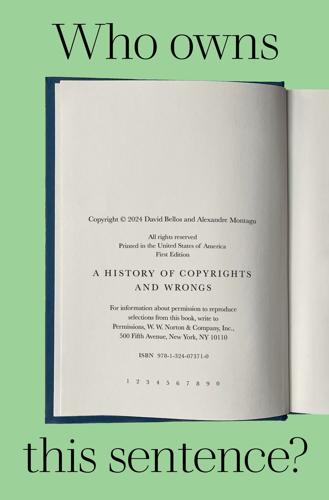
Who Owns This Sentence?: A History of Copyrights and Wrongs
by
David Bellos
and
Alexandre Montagu
Published 23 Jan 2024
No books could be printed in London save by members of the Company, and no member of the Company was free to print books not approved by a privilege. The Company maintained a register which recorded what was to be printed and by whom, so if any unapproved title slipped through, it would be clear who would answer for it. The problems these arrangements were designed to solve have not disappeared: as we know today, the dissemination of fake news, false rumours and crackpot ideas can result in riots and insurrection in otherwise well-ordered states. How to sort good books from bad posts without mistake is a problem no law has truly solved. The Licensing of the Press Act of 1662, which confirmed the Stationers’ monopoly on the printing of books, allowed its members to act as if they owned all rights in the titles they registered, but its main purpose was to have the Stationers serve as royal censors, as the act’s title clearly states: An Act for Preventing Abuses in Printing Seditious, Treasonable, and Unlicensed Books and Pamphlets, and for Regulating of Printing and Printing Presses.
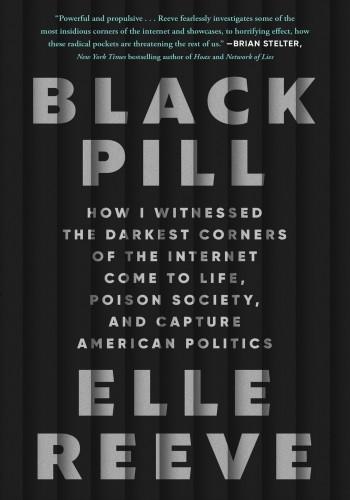
Black Pill: How I Witnessed the Darkest Corners of the Internet Come to Life, Poison Society, and Capture American Politics
by
Elle Reeve
Published 9 Jul 2024
She dismissed the message as absurd, and ridiculed their “absolute grandiosity of thinking that Russia loves them.” Whether or not Russia loved them, it had become clear that Russia found the far-right activists useful in the United States and Europe. It cultivated relationships with them both online and in real life. Russian trolls had used fake social media accounts and fake news sites to inflame racial tensions and stage protests. The state-controlled TV network RT had interviewed as “experts” a variety of extremists, including Spencer himself. Maria Butina had become intimately close with conservative activists, particularly in the National Rifle Association, before she was convicted in 2018 of acting as an unregistered foreign agent on behalf of Russia.

The Hidden History of Burma
by
Thant Myint-U
The government enquiry that followed found that no one had been killed, and Western human rights researchers and diplomats quietly admitted that the story had been made up.21 The UN, though, never acknowledged this. The suspicion grew on Burmese social media, as well as in Naypyitaw, that Rohingya leaders and their supporters abroad were becoming adept at manufacturing “fake news.” Also that January, three Burmese-born members of the Pakistani Taliban were arrested in Bangladesh. Bangladeshi police charged them with planning to “launch activities” in Arakan using their experience in “high-powered explosives.” Pakistani Taliban were then urging their followers to take revenge for violence against Rohingya and “Kill in the Path of God.”22 In the minds of many Arakanese Buddhists, fear mingled with conspiracy theories.

Supremacy: AI, ChatGPT, and the Race That Will Change the World
by
Parmy Olson
Wired magazine published a feature titled “The AI Text Generator That’s Too Dangerous to Make Public,” while The Guardian printed a column breathlessly titled “AI Can Write Just Like Me. Brace for the Robot Apocalypse.” OpenAI had released enough information to show that its new text-generator was eerily good, including a fake news story that GPT-2 wrote about English-speaking unicorns. But it didn’t release the model itself for public testing. Nor did it disclose what public websites and other datasets had been used to train it, as it had with the BooksCorpus set for the original GPT. OpenAI’s newfound secrecy around its model and the warning about its dangers almost seemed to be creating more hype than before.
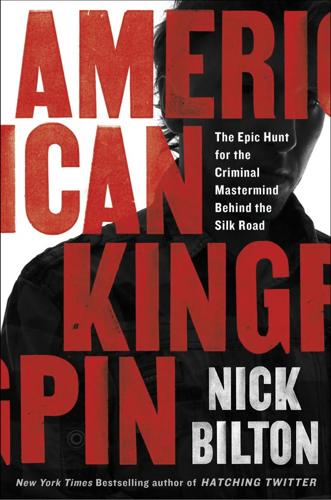
American Kingpin: The Epic Hunt for the Criminal Mastermind Behind the Silk Road
by
Nick Bilton
Published 15 Mar 2017
What made LulzSec so special was that, unlike hackers of the past who would break into an institution for financial gain, this nefarious crew had spent the past year ransacking the Internet for the “lulz,” a neologism that essentially meant “a good laugh.” Part of their comedic hacking had included knocking the CIA Web site off-line, breaking into Sony Pictures servers, and defacing the Web sites of the British newspapers the Times and the Sun by posting a fake news story that Rupert Murdoch had died. All just for fun. But after months of undercover work, Chris Tarbell and his FBI team had systematically arrested the people behind LulzSec all across the world—in Chicago, Ireland, and New York City. Which is why the gang was celebrating at the Whiskey Tavern.
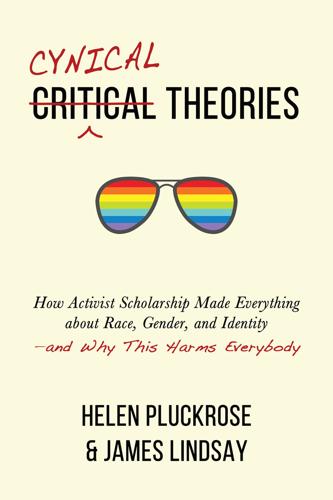
Cynical Theories: How Activist Scholarship Made Everything About Race, Gender, and Identity―and Why This Harms Everybody
by
Helen Pluckrose
and
James A. Lindsay
Published 14 Jul 2020
Online platforms currently seem to be tying themselves in knots with inconsistent and often seemingly inexplicable rules and codes of conduct. YouTube,36 Patreon,37 Facebook,38 and Twitter39 have been criticized for banning or demonetizing certain figures seen as problematic in Social Justice terms, but have also faced censure for having allowed the spread of “fake news,” and enabled echo-chambers including far-right communities to form thus perpetuating polarisation and extremism. This is a complicated issue that cannot be properly addressed here but bears being mentioned. Social Justice activists are very visible on social media and particularly keen to punish people who are influential within media and the arts.
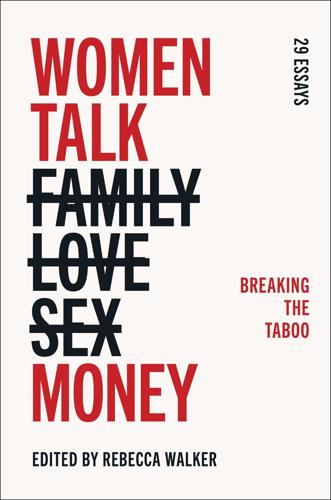
Women Talk Money: Breaking the Taboo
by
Rebecca Walker
Published 15 Mar 2022
—Safiya Umoja Noble, Algorithms of Oppression Whitefluencer (n): A white, cisgender woman with a large social media following who profits off of product placement and endorsements and remains socially and politically neutral at all costs to maximize followers and profits. —Jessica Lawmaster, founder of Kindred Leaders THE INTERNET is a terrible place to make money. In this era of fake news and deep fakes, anti-vax conspiracy theorists radicalize millions on Facebook, Instagram filters cause body dysmorphia,I Russian bots rig presidential elections, and cancel culture dictates who we must like or shun on any given day. Search engines and artificial intelligence algorithms reinforce racism.II A megalomaniacal white supremacist president engineered an attack on his nation’s own capital from the safety of a Twitter account.

The Ungrateful Refugee: What Immigrants Never Tell You
by
Dina Nayeri
Published 14 Sep 2020
After a few weeks with us, Baba succumbed to the church’s proselytising and allowed himself to be baptised. I didn’t object, but I was appalled by the way everyone was playing along. He hated religion. Didn’t they see that he was faking? And for the worst reason, to avoid social discomfort! And yet, maybe, that is where cultural change begins. We fake new habits, we commit to the task, until the habits come without forethought. Maman’s first prayer to Jesus can’t have sounded all that natural. My first American spelling test was a mess of backward letters. But we were already the thing we were pretending to be, because we were devoted. I believe in slow baking.
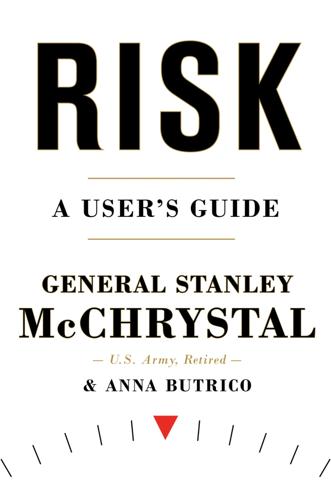
Risk: A User's Guide
by
Stanley McChrystal
and
Anna Butrico
Published 4 Oct 2021
If we can keep it healthy by adjusting and controlling for the factors that affect it, just like our immune system does for our bodies, then we can handle risk in the most effective way. The outcome depends largely on us. What Will Another Book on Risk Teach Me? We’ve heard the warnings about global warming, poor diet, lack of exercise, fake news, the dangers of this or that political dogma. A ceaseless drumbeat of cautionary messages creating a cacophony that deadens our senses and stifles action. Too many boys crying wolf too often. Still, we understand that risk is real and ever present. Small and large, obvious and invisible, it shapes our behavior and impacts our lives.
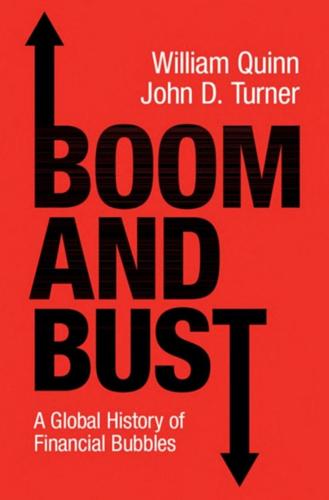
Boom and Bust: A Global History of Financial Bubbles
by
William Quinn
and
John D. Turner
Published 5 Aug 2020
Daniel Defoe warned his readers against ‘false news’ spread with the intention of manipulating share prices.38 At other times, made-up news was simply sold to investors. Small boats would reportedly leave English ports pretending to visit Amsterdam, take a turn around the harbour while making up plausible gossip, then return to the port to sell fake news to speculators. However, when it came to dispelling outright misinformation, the financial news appears to have functioned reasonably effectively. Defoe claimed that false rumours were almost always dispelled by the end of the day, and there is very little evidence that the rumours were a significant factor in pushing up prices.39 Perhaps the greater problem was that most journalists and writers did not fully understand the scheme.
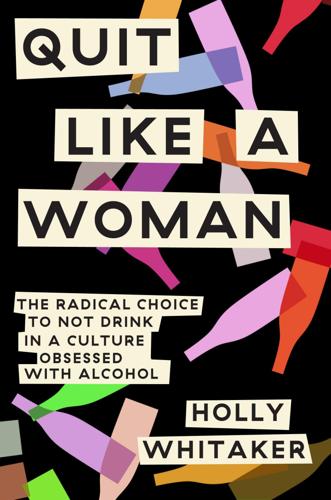
Quit Like a Woman: The Radical Choice to Not Drink in a Culture Obsessed With Alcohol
by
Holly Glenn Whitaker
Published 9 Jan 2020
This “engineered controversy” is what Allan M. Brandt in The Cigarette Century describes as the effort to “produce and sustain scientific skepticism and controversy in order to disrupt the emerging consensus on the harms of cigarette smoke.” It was a public relations move, a midcentury version of fake news, designed to keep the public locked in debate, and it was how Big Tobacco continued to control the positive narrative of the cigarette long after science more than adequately proved it was deadly. If you’ve heard the phrase “Drink responsibly,” I imagine it makes sense to you, that it even sounds sane, thoughtful, perhaps something your parents might tell you.

The Key Man: The True Story of How the Global Elite Was Duped by a Capitalist Fairy Tale
by
Simon Clark
and
Will Louch
Published 14 Jul 2021
London time on February 2, 2018, when we published an article about the Gates Foundation and other investors hiring an auditor to trace their money. The New York Times published an article soon after. The news articles spread worldwide online, on laptops and on mobile phones. They unleashed the floodgates on Abraaj as hundreds of investors and lenders called Arif and demanded an explanation. Arif dismissed the reports as fake news but it was hard to believe that both the Wall Street Journal and the New York Times had gotten it wrong. Banks called in loans and canceled plans to lend Abraaj more money. Arif was running out of options. The day after the Wall Street Journal article was published was a Saturday and Arif was still in London.
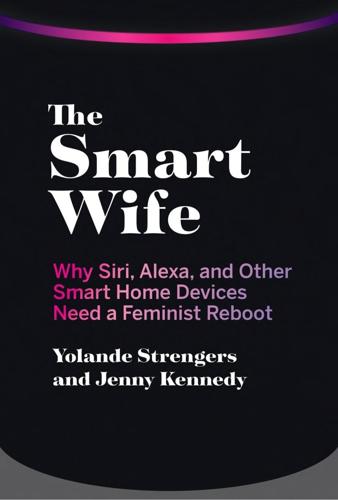
The Smart Wife: Why Siri, Alexa, and Other Smart Home Devices Need a Feminist Reboot
by
Yolande Strengers
and
Jenny Kennedy
Published 14 Apr 2020
It’s an impressive portfolio that has earned Amazon the name of the “Everything Store” (also the title of journalist Brad Stone’s 2013 book on the empire), and increasingly, the Everything Company.11 The chief of this megastore has several side hustles too. In 2000, Bezos founded Blue Origin, a human spaceflight company, which is intended to make the human species multiplanetary and move polluting industries off the planet.12 And he owns the Washington Post, one of the United States’ leading newspapers and a target of President Donald Trump’s “fake news” campaign. Amazon’s market share is incredible and alarming.13 While originating in the United States, the company now operates separate retail websites in at least sixteen countries, and ships internationally to some others. In 2019, it was the third most valuable company in the United States, behind Apple and Microsoft, and the second-largest employer in the United States, after Walmart.14 For fiscal year 2018, Amazon reported a net income of over $10 billion, with an annual revenue of close to $233 billion, while employing 647,500 people worldwide.15 In the same year, Amazon captured almost half of US-based online spending (or almost 14 percent globally) and (excluding cars and car parts as well as visits to restaurants and bars) approximately 5 percent of Americans’ total retail spending.16 The company’s mission is “to offer our customers the lowest possible prices, the best available selection, and the utmost convenience”; its vision statement is “to be the Earth’s most customer-centric company, where customers can find and discover anything they might want to buy online.”17 Presumably Blue Origin has got the other planets covered.

A Fever in the Heartland: The Ku Klux Klan's Plot to Take Over America, and the Woman Who Stopped Them
by
Timothy Egan
Published 4 Apr 2023
Hooded teens soon had their place in yearbooks in Indiana, featured along with the Glee Club or the Debate Society among the accepted extracurriculars. Steve and Barr also launched poison squads, as they were known on the inside. This was a disinformation brigade—clucks and gossips, but the best-known clucks and gossips in every community, so that false stories could be plausibly true. The fake news originated at the top and was planted at the bottom. It might be a whispered suggestion over a neighbor’s fence that a Black family was planning to move nearby. Or that a public servant was a Jew. The Klan prided itself on how quickly it could spread a lie: from a kitchen table to the whole state in six hours or less.

The Glass Half-Empty: Debunking the Myth of Progress in the Twenty-First Century
by
Rodrigo Aguilera
Published 10 Mar 2020
Social media is a case in point since possibly no other technology in recent memory has fallen from grace so quickly. Just a few years ago it was hailed for bringing friends together, allowing people’s views and opinions to be seen by a global audience, and toppling Middle Eastern dictatorships during the Arab Spring. However, now it is more notorious for its negative impact on mental health, spreading fake news and conspiracy theories, and helping increase the appeal of right-wing populists in the US and Europe. Instead, this definition of progress places its emphasis on the normative and institutional aspects of progress. Institutions, after all, define the rules of the game by which societies and organizations function.
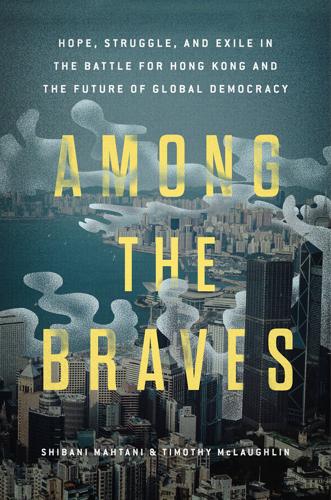
Among the Braves: Hope, Struggle, and Exile in the Battle for Hong Kong and the Future of Global Democracy
by
Shibani Mahtani
and
Timothy McLaughlin
Published 7 Nov 2023
The reliance on mainstream TV reports, as well as their disconnection from the internet in a movement that organized itself on social media, would prove to be an embarrassing mistake. When she checked her phone on her way to the bathroom, Fung saw that a group of young staffers were posting about an attack in Yuen Long station. She responded with surprise, and then incredulity. You “can’t just rely on YouTube clips,” she wrote, warning that there was a lot of “fake news circulating around.” Her younger colleagues were stunned that after nearly two months of protests, top officials in government were just watching TV, seemingly unaware of live streams, LIHKG, and Telegram channels. Lam’s administration should not have needed Fung to alert them, nor should it have been so difficult to connect the dots.
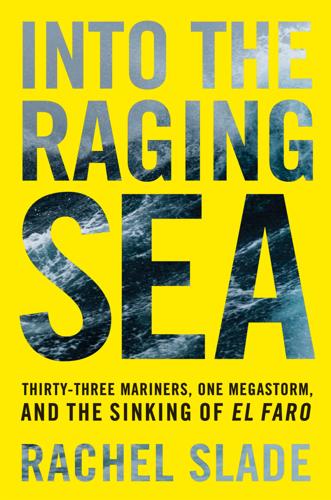
Into the Raging Sea
by
Rachel Slade
Published 4 Apr 2018
Greene replied, “With all due respect, Captain, our masters wouldn’t do that.” The profound irony washed over the room. “[TOTE’s captains] wouldn’t create a voyage plan, in my estimation, that was anything but based on their immense credentials, their qualifications, and their recognition for the voyage at hand.” Had the voyage of El Faro sailed into a hurricane of fake news? Then Greene passed the buck. It was as if this whole business was beneath him. “Sir,” Greene continued, “I’m the president of the company with twenty-six ships in a fleet. I provide strategic direction. I have qualified individuals within the portfolio areas, officers in the company. I expect them to dedicate the time that is required and necessary and appropriate to fulfill their duties in the capacities that they serve.

My Glorious Defeats: Hacktivist, Narcissist, Anonymous: A Memoir
by
Barrett Brown
Published 8 Jul 2024
It was a vastly useful concept, descriptive of phenomena ranging from the palace eunuchs who at times effectively controlled the Byzantine Empire to the networks of anti-communists, oil men, and intelligence assets who remained loyal to Allen Dulles well after the more “structured” portions of the government had relieved him of his official leadership of the CIA. And then, suddenly, these things were incorporated into the conceptual toolkit of people like Newt Gingrich and madness descended upon the land. The jujitsu surrounding “fake news” was even more horribly appropriate, and most fully embodied by The Washington Post’s declaration that the website PropOrNot would clarify what was and wasn’t propaganda and its subsequent admission that perhaps it wouldn’t clarify anything at all. The legacy press obviously does a great deal of good work of the sort that otherwise wouldn’t get done, and in certain other respects competes well with many of the alternatives, but it collectively overreached in its attempt to make of all things its province and to give a name unto every animal it found thereupon.

The Player of Games
by
Iain M. Banks
Published 14 Jan 2011
He stood in the small lounge, fiddling with the Orbital bracelet on his wrist and realising he was looking forward to the coming games on Echronedal more than he had any of the others. The pressure would be off; he wouldn't have to face the opprobrium of the press and the Empire's ghastly general public, he could cooperate with the Empire to produce a convincing piece of fake news, and the likelihood of more physical option bets had thereby been reduced almost to zero. He was going to enjoy himself… Flere-Imsaho was glad to see the man was getting over the effects of seeing behind the screen the Empire showed its guests; he was much as he'd been before, and the days at Hamin's estate seemed to have relaxed him.

What’s Your Type?
by
Merve Emre
Published 16 Aug 2018
They could pay foreign newspapers to substitute the proper name “Adolf Hitler” with “False Prophet,” “False Messiah,” “Amateur Strategist,” “Corporeal Satan,” and “World Criminal No. 1.” They could undermine Hitler using their own arsenal of crude metaphors. Perhaps the most elaborate scenario Murray detailed was a fake news campaign that would trick Hitler into surrendering. It would begin with the OSS planting a report in German newspapers. Should the Allies win the war, the report would claim, all Nazi leaders would be executed except for Hitler. He would be exiled to Saint Helena, the island where Napoleon had spent his dying days, and ordered “to brood over his sins for the rest of his life.”

Mbs: The Rise to Power of Mohammed Bin Salman
by
Ben Hubbard
Published 10 Mar 2020
Saudi Arabia also shut its border, Qatar’s only land crossing, and evicted twelve thousand camels, five thousand sheep, and the Qatari herders who had long pastured their beasts in the kingdom’s eastern desert. * * * — THE INCIDENT THAT would come to be known as the Gulf Crisis was a perfect twenty-first century storm of hackers, fake news, feuding princes, shattered alliances, and Donald Trump. It would drive a wedge through the group of Gulf monarchies that had been considered a pillar of regional stability and put the United States in a bind, since it had partners on both sides who hosted the American military and had bought tens of billions of dollars’ worth of American arms.
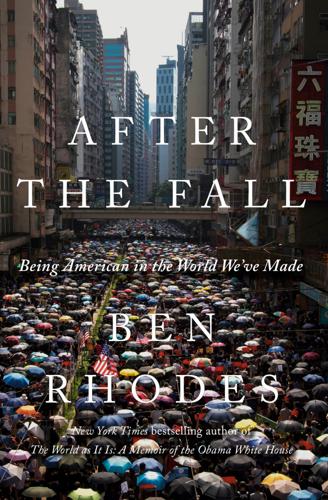
After the Fall: Being American in the World We've Made
by
Ben Rhodes
Published 1 Jun 2021
With just two weeks left before Trump’s inauguration, I sat in the Oval Office as the leaders of the U.S. intelligence community methodically walked us through Russia’s sprawling and successful effort to shape the outcome of America’s election. There was no doubt about these findings—the hacking and release of emails; the creation and dissemination of huge volumes of fake news; the smoke screen around how much of this effort was welcomed by or coordinated with the campaign of the incoming president of the United States of America. I remember Joe Biden looking incredulous as decades of assumptions about the guardrails around American politics were shown to have been upended.
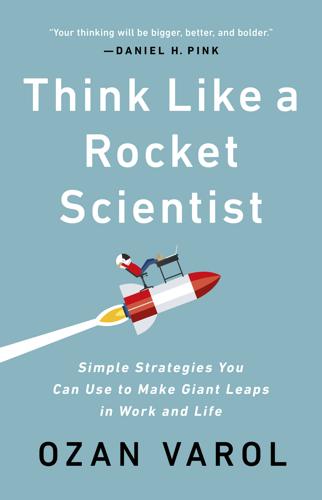
Think Like a Rocket Scientist: Simple Strategies You Can Use to Make Giant Leaps in Work and Life
by
Ozan Varol
Published 13 Apr 2020
People got sick and died in clusters, with some of the corpses twitching or making noises? Vampires, our predecessors concluded, before we knew about viruses and rigor mortis.21 When we prefer the seeming stability of stories to the messy reality of uncertainty, facts become dispensable and misinformation thrives. Fake news is not a modern phenomenon. Between a good story and a bunch of data, the story has always prevailed. These mentally vivid images strike a deep, lasting chord known as the narrative fallacy. We remember what so-and-so told us about how his male-pattern baldness was caused by too much time in the sun.

Border and Rule: Global Migration, Capitalism, and the Rise of Racist Nationalism
by
Harsha Walia
Published 9 Feb 2021
In a revanchist move, Bolsonaro has declared, “Not a centimeter will be demarcated either as an Indigenous reserve or as a quilombola” (free Black communities founded by many of the five million Africans who escaped enslavement in the region), subsequently vitalizing the right-wing, Christian-settler coup against President Evo Morales in Bolivia.62 Bolsonarismo also emboldens patriarchal homophobia and transmisogyny. At a press conference with Trump, Bolsonaro proclaimed, “Brazil and the United States stand side-by-side in their efforts to share liberties and respect to traditional and family lifestyles, respect to God, our creator, against the gender ideology of the politically correct attitudes, and fake news.”63 Bolsonaro once pronounced that he would rather his son be dead than gay. Bolsonaro’s rise as a fascist has wedded all these strands: the antipetismo (anti–Workers’ Party) mobilization of the white landowning oligarchy against moderate redistributive reforms, evangelical conservatism, the power of the military establishment, and popular anti-incumbent concerns for security in cities experiencing some of the world’s highest homicide rates, of which 53 percent of victims are Black.64 Like Duterte, Bolsonaro’s strongman image is rooted in penal populism; his signature move is gesturing with both hands, two fingers pointing two guns.
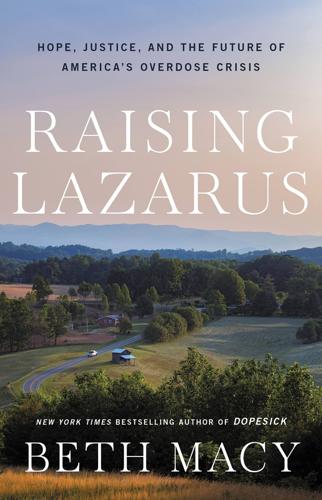
Raising Lazarus: Hope, Justice, and the Future of America’s Overdose Crisis
by
Beth Macy
Published 15 Aug 2022
Among the loudest naysayers was Jerry Waters, a Charleston firefighter-turned-radio-talk-show-host who’d gone on Oprah in 1987 to say that AIDS was God’s way of punishing gay people. Though Waters came to regret his statements about AIDS, recently he’d begun flying his drone over homeless encampments to intimidate people who used drugs. The more the syringe-services proponents cited scientific backup, the louder their critics deemed them suspect, along with the “fake news” journalists who reported facts and presented the harm-reductionists’ side of the story. A troll sent Coyne a Facebook message: “I hope your dad dies from overdose so you can see how this feels. You don’t know real pain.” Coyne, twenty-six, was from San Diego, but she had been a Charlestonian for four years and loved her West Virginia friends and work.

Flowers of Fire: The Inside Story of South Korea's Feminist Movement and What It Means for Women's Rights Worldwide
by
Hawon Jung
Published 21 Mar 2023
News of such assailants being slapped with additional punishment for false accusation has increasingly made headlines in recent years.84 In a high-profile case in 2019, a former judo coach sentenced to six years in jail for raping a teenaged trainee received an extra prison term of five months for bringing a false allegation complaint against her.85 Witch couldn’t hold her rapist accountable for his revenge accusations back in 2014, but some of the women she’d helped could. Minnie Ban hit back at Jo Deok-Je with the same legal weapon he had wielded against her, formally accusing him of libel. Jo, who for years had released a slew of videos attacking Ban as a liar, was convicted and jailed for spreading lies. Jo’s journalist friend who’d produced the fake news about Ban also served a jail term for libel, and the tabloid that had published his stories was shuttered after its head operator was also convicted of defamation. “For six years, my life was stuck in the past of 2015,” Ban said after Jo went to jail in 2021. “My whole life was shaken, my body and soul going through a total breakdown.
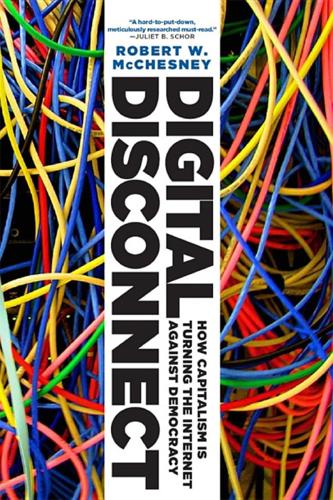
Digital Disconnect: How Capitalism Is Turning the Internet Against Democracy
by
Robert W. McChesney
Published 5 Mar 2013
Unless we could do so, our chances of success, of real structural reform, were slim. On the one hand, Free Press has been a striking success. In conjunction with its partners, it has organized or participated in major successful campaigns around a range of issues, including diverse media ownership, stopping fake news, protecting public and community broadcasting, preventing harassment of independent journalists covering political demonstrations, making TV stations disclose online who is paying for political ads, establishing low-power community radio stations, and preserving what there is of Net neutrality. The group counts around five hundred thousand active members and has thirty-five full-time staff members.
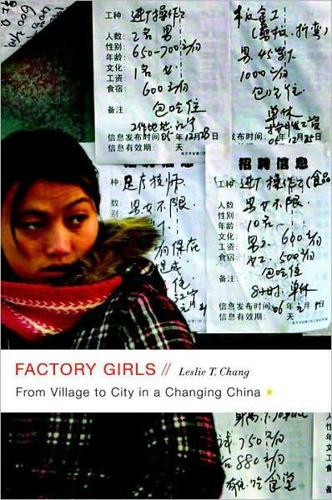
Factory Girls: From Village to City in a Changing China
by
Leslie T. Chang
Published 6 Oct 2008
“More than you do.” My father returned to China often, as scientific exchanges between China and the West picked up. In 1982, he stayed with Lijiao’s family in Harbin; Lijiao’s younger son remembers my father standing up a few minutes into the evening news broadcast and saying, “I can’t watch this fake news.” In 1984, my father stood on the rostrum at Tiananmen Square during celebrations to mark the thirty-fifth anniversary of the Communist revolution. After I moved to Beijing in 2000, my parents visited at least once a year. I sometimes felt that they had forgotten how to deal with Chinese people.
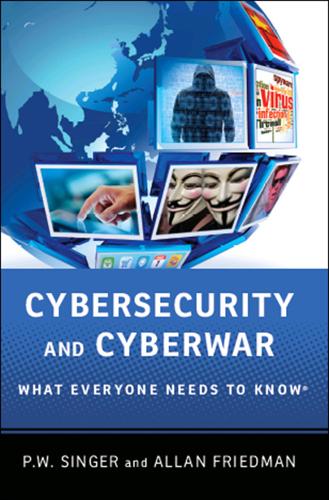
Cybersecurity: What Everyone Needs to Know
by
P. W. Singer
and
Allan Friedman
Published 3 Jan 2014
The Bipartisan Policy Center’s “Cyber ShockWave” of 2010 was an attempt at a war game featuring former senior government officials playing the roles of simulated government officials as the nation was hit by a series of crippling cyberattacks. This exercise was criticized by some as focusing more on appearances than on the substance, especially when fake news coverage of the game was later broadcast on CNN under the title “We were warned.” Given the cost of these larger, more complex simulations, the designers must have a clear vision of the goals of the exercise and design the game appropriately. For example, finding vulnerabilities is a different task from discovering better modes for coordination, just as testing strategy is different from raising public awareness.

Samsung Rising: The Inside Story of the South Korean Giant That Set Out to Beat Apple and Conquer Tech
by
Geoffrey Cain
Published 15 Mar 2020
The Cambodian government had just arrested an Australian filmmaker on trumped-up spying charges and sentenced him to ten years in a Cambodian prison. (He was later pardoned by the king.) My dinner friend’s father, the opposition leader, was also arrested, for treason, and put in a maximum-security prison after the fake news came out about our spy ring. I retreated to Seoul, where I met a spokesman from the office of the new South Korean president at the Seoul Foreign Correspondents’ Club. He thanked me, jokingly, for overthrowing the previous president and installing his administration. “Does Samsung have business in Cambodia?
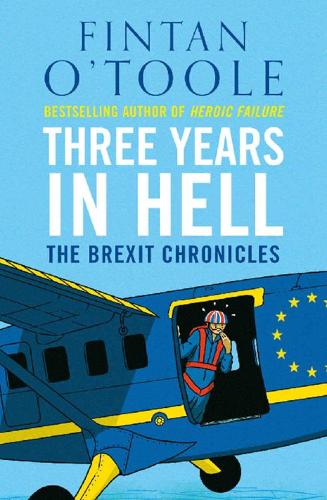
Three Years in Hell: The Brexit Chronicles
by
Fintan O'Toole
Published 5 Mar 2020
Given that the gloom is unlikely to lift anytime soon, will we get to the point where ‘Things fall apart’ replaces ‘There are no strangers here; only friends you haven’t yet met’ (which Yeats did not write but which bears his name on a million tea towels, T-shirts and pub signs) on kitschy consumer products? We need to renew the store of Yeats images that seem to comment on our times. Here is one, from ‘Nineteen Hundred and Nineteen’, that says it all about fake news and the pre-fascist culture of hatred: We, who seven years ago Talked of honour and of truth, Shriek with pleasure if we show The weasel’s twist, the weasel’s tooth. The sense of foreboding in ‘The Second Coming’ is equally well captured in ‘Coole Park and Ballylee’: All is changed, that high horse riderless… Where the swan drifts upon a darkening flood.

1983: Reagan, Andropov, and a World on the Brink
by
Taylor Downing
Published 23 Apr 2018
Western powers have seen this as a trend backwards towards a Soviet-style aggressive state and have responded with economic sanctions and expressions of outrage about corruption and the abuse of human rights. Fears have grown about Russia’s ability to conduct a form of hybrid warfare using cyber attacks against Western systems and deploying fake news against its enemies. This came to a head in the US presidential election in 2016 when accusations were made that Russia had tried to rig the election against Hillary Clinton and in favour of Donald Trump, just as in 1984 there were allegations of Soviet meddling in Reagan’s mid-term election. Russia can still bring hard military power to bear, and not only in conflicts with its neighbours.

Greater: Britain After the Storm
by
Penny Mordaunt
and
Chris Lewis
Published 19 May 2021
It was a long-term, male, patient, predictable, factual, planned, heterosexual, white, Christian, Western-orientated, technology-leveraged, deflationary, structured, left-brained, broadcast, top-down, militarily symmetrical world. There was no mansplaining. No white privilege. No colonial historiography. No gender neutrality. No non-binary. No ‘sick’. No memes. No fake news. No grievance farmers. No revisionism. No sexting. No transphobia. No YOLO. No FOMO. No TERFs.31 In the 1970s, only candles were ‘lit’. No one was woke. The only trans organisation was an airline owned by Howard Hughes. Gaslighting was something Granny remembered. ‘Stan’ was a character from Coronation Street.
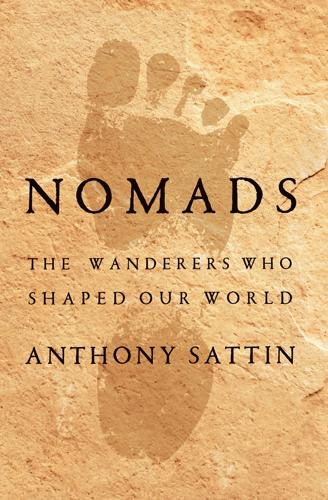
Nomads: The Wanderers Who Shaped Our World
by
Anthony Sattin
Published 25 May 2022
These would serve as a frontier and should have allowed him to annex western Scythia where Ionians, Scythians and others conducted trade. But even that plan was soon abandoned and Herodotus noted that the forts were in ruins in his own time. None of this stopped Darius from announcing on the Bisotun rock that the Scythians were now ‘subject to me’ and the province was now his. This was fake news, for Scythia never became a province of the Persian Empire. Instead, the Scythians added to their reputation as killers on horseback: powerful traders, skilled craftsmen and goldsmiths of the steppes. Protected by the Sky Father, they remained proudly independent, refusing to bow the knee even to the King of Kings.
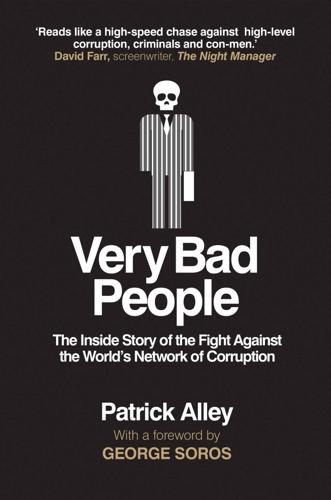
Very Bad People: The Inside Story of the Fight Against the World’s Network of Corruption
by
Patrick Alley
Published 17 Mar 2022
But how to tackle a vastly powerful and violent industry backed by a racist and ideological government? It was a matter of deduction. We knew there was little point in targeting the Brazilian government because we had no influence with them. Bolsonaro’s predecessor President Temer had already dismissed our work as ‘fake news’, and he was a pussycat compared to Bolsonaro. Following the trailblazing work by the local investigative-reporting organization Repórter Brasil, we turned our sights towards the beef industry and those that bankroll it, the banks and financiers of the US and Europe: our home territory. To do that we needed to rely on what we had always relied on: solid evidence.
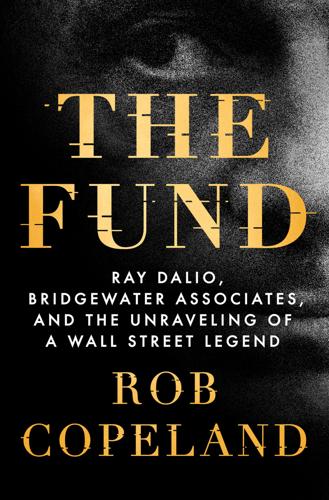
The Fund: Ray Dalio, Bridgewater Associates, and the Unraveling of a Wall Street Legend
by
Rob Copeland
Published 7 Nov 2023
Years later, I would learn that Paul McDowell was seated in the room next to ours, prepared to be called in to demo the creation for me. It never happened. Dalio just kept talking for hours. I began to suspect some inkling of delusion in January 2017, when Dalio wrote a LinkedIn post, discussed earlier in this book, about a story of mine about PriOS. His post, which was longer than the original article, described the story as “fake news” and ascribed a number of befuddling, specific actions to me that simply never happened. Dalio wrote that my coauthor and I had interviewed him and agreed to “not use that information unless we mutually agreed that [the] presentation of it in the article was accurate.” I hadn’t. He claimed that my coauthor and I never spoke to specific people with whom we had, hadn’t “walked the halls of Bridgewater”—I did indeed, with Dalio himself—and quoted me asking questions that never came out of my mouth.

More Everything Forever: AI Overlords, Space Empires, and Silicon Valley's Crusade to Control the Fate of Humanity
by
Adam Becker
Published 14 Jun 2025
That’s not the case, but it’s hard to shake the illusion, and that can lead to gross miscalculations about how seriously to take the output of these kinds of models, as Schwartz discovered with his fake legal citations. More seriously, the paper warned that LLMs could be used to generate plausible-sounding fake news, a prediction that’s certainly come true since late 2020. Finally, the authors of the paper point out the opportunity cost of developing LLMs like this. Automatic generation of seemingly literate text on any subject could be extraordinarily valuable. The success of ChatGPT, still two years off when Gebru and her coauthors wrote the paper, proved this prediction was accurate.

The Peripheral
by
William Gibson
Published 23 Oct 2014
Now he covered some of his favorites with the corner of the duvet and went to clean his teeth. Her sigil appeared, before he could start. “Yes?” “Coffee,” she said, and he could hear her from the bedroom as well as on his phone. “I’ll use the machine as soon as I’ve brushed my teeth.” “No,” she said, “that’s a real Italian downstairs, in that fake news agent’s. I want his espresso.” She made it sound pornographic. “His crema.” “Phone him.” “You ruined my career, put me in a position that forced me to resign from an enviable government position, and ultimately resulted in my being threatened by assassins in the pay of New Zealand’s secret state, and you won’t bring me a decent human-made coffee?
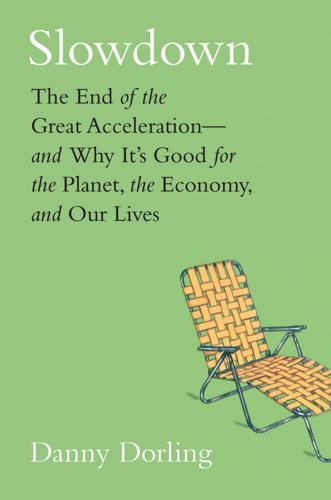
Slowdown: The End of the Great Acceleration―and Why It’s Good for the Planet, the Economy, and Our Lives
by
Danny Dorling
and
Kirsten McClure
Published 18 May 2020
As economic inequality in income begins to fall in most countries of the world, we need to ask what is now becoming the more serious issue.1 Today most things are settling down, but some things are still rising out of control, almost always as a legacy of some past event, decision, mistake, or ignorance. Wealth inequalities, and with them huge inequalities in debt, continue to rise long after income inequalities fall. Information continues to spew forth long after the ability to produce and process such information has peaked (hence the abundance of fake news at the start of the age of slowdown). The pollution caused by economic growth, growth that has long since slowed down, continues to have great effect, above all in increasing the temperature of the planet. Debt is the opposite of wealth. Without an increasing concentration of wealth, there could not be growing debt.

Science Fictions: How Fraud, Bias, Negligence, and Hype Undermine the Search for Truth
by
Stuart Ritchie
Published 20 Jul 2020
There’s good reason to specifically blame the media coverage here. A 2019 study showed that a surge in media misinformation about the MMR was directly (and, under certain assumptions, causally) related to a decline in vaccination rates. Of course, the ultimate cause was the publication of Wakefield’s paper. See Meradee Tangvatcharapong, ‘The Impact of Fake News: Evidence from the Anti-Vaccination Movement in the US’, Oct. 2019; https://meradeetang. files.wordpress.com/2019/11/meradee_jmp_oct31_2.pdf 141. 80%: NHS Digital, ‘Childhood Vaccination Coverage Statistics: England 2017-18’, 18 Sept. 2018; https://files.digital.nhs.uk/55/D9C4C2/child-vacc-stat-eng-2017-18-report.pdf, Figure 6.

Imaginable: How to See the Future Coming and Feel Ready for Anything―Even Things That Seem Impossible Today
by
Jane McGonigal
Published 22 Mar 2022
(The longest known shutdown, imposed by Myanmar in nine townships where there is ongoing military conflict, has been in place for nearly two years at the time of this writing.)16 And while you might think authoritarian regimes are the ones turning off the internet, India—the world’s largest democracy—is the global leader in shutdowns, with 109 in 2020. The most common justifications given for communications shutdowns are public safety, national security, and stopping fake news or “illegal content.” In reality, according to the research and internet rights organization Access Now, shutdowns are most often used to silence protests, disrupt activism, conceal human rights violations, and influence elections. And the trend over the past few years is that internet shutdowns are lasting longer, affecting more people, and targeting vulnerable groups.
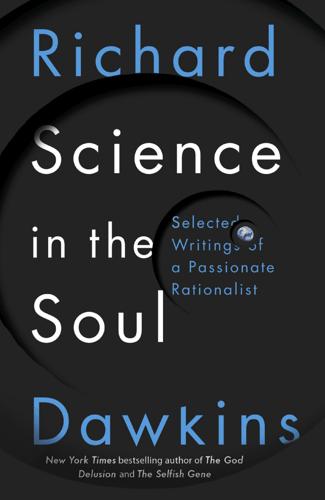
Science in the Soul: Selected Writings of a Passionate Rationalist
by
Richard Dawkins
Published 15 Mar 2017
AFTERWORD Reading this again at the end of 2016 I find its generally optimistic tone a little jarring. There is alarmingly convincing evidence that the year’s momentous US presidential election (it remains to be seen quite how momentous it will prove to be, not just for America but the world) was swayed by a systematically orchestrated campaign of fake news defaming one of the candidates. If further investigation proves this to be true, one would hope legislation, or at least self-policing by organizations such as Facebook and Twitter, will follow. At present these social media exult in their freedom of contribution as well as freedom of access. There’s a minimum of editorial control, limited to censorship of gross obscenity and violent threats: no fact-checking such as that on which reputable newspapers like the New York Times pride themselves.

Surveillance Valley: The Rise of the Military-Digital Complex
by
Yasha Levine
Published 6 Feb 2018
Back then, the network was just a tool to let the Pentagon quickly and easily share data with other agencies.4 To actually spy on people, the army first had to gather the information. That meant sending agents into the world to watch people, interview neighbors, bug phones, and spend nights staking out targets. It was a laborious process and, at one point, the army had set up its own fake news outfit so that agents could film and interview antiwar protesters more easily. The modern Internet changed the need for all these elaborate schemes. Email, shopping, photo and video sharing, dating, social media, smartphones—the world doesn’t just communicate via the Internet, it lives on the Internet.

The Future Is Asian
by
Parag Khanna
Published 5 Feb 2019
Asian leaders such as Narendra Modi and Jokowi Widodo have huge followings on Twitter and Facebook that have been crucial platforms for citizen engagement, policy messaging, and campaign mudslinging across Asia. But after observing Russia’s manipulation of Facebook in the 2016 US election—and viral videos sparking riots in India and Myanmar—Asians have recruited Facebook and WhatsApp to actively screen and counter viral hoaxes in order to ensure that “fake news” does not destabilize communal harmony. As the economist Danny Quah puts it, free-for-all populist cultures resemble the comments section of online newspapers: they get hijacked by ranting trolls. A better model might be liberal societies in which officials act more like Wikipedia editors who ensure veracity and a sense of order.23 Across Asia’s vast array of cultures and regimes, societies generally appear to be comfortable with certain norms such as mixed capitalism, technocratic governance, and social conservatism.

The Billionaire Raj: A Journey Through India's New Gilded Age
by
James Crabtree
Published 2 Jul 2018
“In India, the problem is nothing is ever really true,” I was once told by Jonathan Shainin, an American who worked for years as a magazine editor in New Delhi. By this, Shainin meant that the extraordinarily adversarial nature of public discussion, most obviously on television, often seemed to make even minimal factual agreement impossible. “Long before we all became interested in ‘fake news,’ it was right there, you know? India was kind of the pioneer.” There is something exhilarating about India’s raucous news media, especially when viewed next to its staid and timid competitors in many other Asian countries. The press is not exactly free—it ranked just 136th in the 2017 World Press Freedom list published by the charity Reporters without Borders—but it is often fearless.13 The print industry is thriving, with rising readership especially in languages other than English, in clear contrast to the struggling newspaper empires of the West.
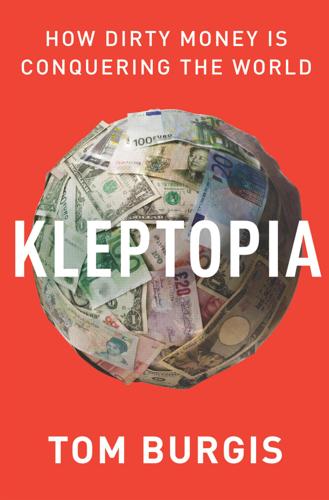
Kleptopia: How Dirty Money Is Conquering the World
by
Tom Burgis
Published 7 Sep 2020
(moneyman), 54–5, 56, 280–1, 282–3, 351–2n Cohen, Michael (Trump fixer), 317, 324–6, 415n, 418n Colchester, 243, 271 Colombian drug cartels, 201 Congo, 49–54, 56, 276, 277, 279, 280–3, 284, 307–8, 402–3n, 404–5n, 413n Congo Cobalt Corporation (CCC), 406n Connolly, John, 86 Conservative Party, 121, 215; and ‘City grandees’, 13; May’s ‘hostile environment’ policy, 257; and Patrick Robertson, 262; Temerko’s donations to, 337, 423n Conté, Lansana, 201 Coppa, Frank, 83 copper, 10, 51–2, 55, 278–9 Corporation of London, 120, 136–7 Courchevel (French ski resort), 124–5, 183, 235 Covid-19 pandemic, 296, 336 Crédit Agricole, 29 Credit Suisse, 13, 14, 171, 214, 241, 278–9, 394n CrowdStrike (cybersecurity firm), 414n Cyprus, 246, 379n, 396n Czechoslovakia, 31–2 Dagan, Meir, 258 Dalman, Mehmet, 174, 335, 374n, 421–3n David, Craig, 209 Dawkins, Richard, 176, 377n Delimkhanov, Adam, 234–5, 237, 391n Deloitte & Touche, 13, 179 Deltour, Antoine, 231, 390n Democratic Choice for Kazakhstan, 166 Deutsche Bank, 13 Dezita prospect (Congo), 402–3n DiBartolomeo, Joseph, 258 Diligence (corporate intelligence firm), 103–5, 117, 160, 304, 362n Dinmore, Guy, 253 Docklands development (London), 118–19 drug trade, 72, 86, 87, 99, 170, 177, 201, 246 drugs, use of, 15 Dubai, 144, 289, 331, 391n Dudley, Bob, 17–18, 19, 20, 22, 23, 342–3n, 343n, 344n, 345n Duterte, Rodrigo, 337 Earhardt, Ainsley, 310 Edmonds, Phil, 56, 185–6, 336 EFG (Swiss bank), 329, 420n Egypt, 119 Eliot, T.S., ‘Macavity’, 243 Elmer, Rudolf, 230 Elson, Monya, 342n Epstein, Gideon, 365n Equatorial Guinea, 201, 246 Erdoğan, Recep Tayyip, 324, 337 Erskine, John, 353n Erste Resources SA, 403n Escobar, Pablo, 201, 384n Esper, Mark, 318, 416n Eural Trans Gas, 381n Eurasian Natural Resources Corporation (ENRC): listed on London Stock Exchange, 12–15, 23–4, 121–2, 128–31, 335, 367n; buys Camec, 73, 276, 401–2n; and Rudny (iron mine), 94–5, 128–31, 133–5; and corporate governance, 121–2, 128–31, 367n; Gerrard’s investigation into in Kazakhstan, 128–31, 133–5, 158, 172–3, 307, 367–8n, 368–9n; Russian Trading Scheme, 129–30; Trio retain control of after flotation, 129–30, 174, 367n; SFO’s ultimatum to (January 2013), 173–4; Gerrard’s investigation into in Africa, 173, 174, 210, 276–9, 281–2, 283, 284, 285, 307; and Victor Hanna, 174, 275–7, 278, 279, 280, 281–2, 283–4, 285, 300, 400–1n; formal SFO investigation into, 210–11, 212, 276, 282, 284–7, 299–304, 308, 309, 402–3n, 410n; moved to Luxembourg, 210–12; the Trio’s buyout/delisting scheme, 210–12, 387n; buys Chambishi copper smelter, 278–9; Trio extract money from, 279–80, 281–2, 283; Dezita prospect purchase, 279, 402–3n; Och-Ziff bribery case in US, 282–3, 307; series of deaths relating to, 283–7, 308–9, 405–8n; McCormick as employee, 284–6, 300, 410n; Trio’s alternative facts on Gerrard, 299–302, 411n; Mirakhmedov’s role with, 334–5, 421n Euro-Asian Jewish Congress, 212–13, 387n European Court of Human Rights, 42, 268–9 European Union (EU), 114, 251, 262, 277, 306–7, 412n Evans, Sir Dick, 161–2, 372n extraordinary rendition, 254 Exxon, 45, 201 Facebook, 256, 270, 313 facial recognition technology, 336, 423n fake news and alternative realities, 238, 295, 303, 304–6, 311–12, 317–19, 414n; and FSB, 16–23, 342–5n; and expropriation of Yukos, 35–6, 38–43, 64, 65; and Trump, 274–5, 303, 311–12, 313, 317–19, 322–3, 400n, 414n, 417–18n; Trio and Gerrard/SFO, 299–304; strategy of projection, 317, 320, 416n; and the anti-corruption campaign, 320, 417n; malleable public record under Trump, 322–3, 417–18n Falciani, Hervé, 230–1 Farage, Nigel, 337 Fayulu, Martin, 308 FBI, 78, 156, 375n, 377n, 381n; Michael Sheferovsky as informant, 79–80; Felix Sater as informant, 82–4, 87, 199, 249, 313; Whitey Bulger scandal, 86, 87; and Solntsevskaya brotherhood, 99; and Semyon Mogilevich, 176, 179, 180, 183; takes over Bethel and Strydom case (2020), 309 FBME Bank, 203, 246, 385n, 396n Ferguson, Alistair, 344–5n Ferguson, Ian, 263 Financial Conduct Authority, 185, 187, 382n; management ‘concerns’ over Wilkins, 207–8, 386n; Wilkins’ email (June 2014), 217, 228–9, 389n; Wilkins suspended by, 229, 230, 231–2, 358n; fires Wilkins for gross misconduct, 232, 239, 272; Wilkins’ Employment Tribunal case against, 239–40, 241, 242–3; Osborne removes Wheatley from, 241, 395n; Wilkins’ settlement with, 242–3, 272; disciplinary report on Wilkins, 347n financial crash, global (2008), 7, 15; bailout of financial system, 8, 61, 62, 70, 117, 271, 354n; the masses left with the bill for, 8, 14, 29; increased scrutiny of City after, 58–9, 70–1, 353n; US unemployment rate, 74; sovereign debt crises after, 88, 358n; worldwide recessions following, 88 Financial Services Authority (FSA), 70, 71, 342n; Wilkins’ post at, 5–6, 59, 120, 137–8, 185–7; Wilkins’ view of performance of, 6, 137–8, 185–7; warning to BSI (2004), 59, 137, 187, 353n; Wilkins warns about BSI (2008), 71, 88–9, 137, 187–8, 214–15, 216, 231, 240, 329–30; and tax schemes, 186–7 Firtash, Dmytro, 182, 289, 378–81n Fisherman, Igor, 376n Five Star movement (Italy), 254 FL Group, 367n Fleury-Mérogis prison (Paris), 252 Flint, Martin, 29, 332–3, 347n Florida, 78, 199, 200–1, 202, 315, 415n Flynn, Michael, 324, 418n Forbes, Dr M.J., 386n Foreign Corrupt Practices Act (USA), 156 Formula One motor racing, 224 Foster, Norman, 63 Foucher, Laurent, 193, 247–8, 396n Fox News, 310–11 Fraenkel, Ernst, The Dual State: A Contribution to the Theory of Dictatorship, 36–9, 268, 348n Franzese, Michael, 77, 78 Franzese, Sonny, 77 Freeland, Chrystia, Sale of the Century (2005), 35, 347n, 348n Freeman, Andrew, 388n, 389n FSB (Federal Security Service), 18–23, 174, 183–4, 234, 342–5n FTI Consulting, 257–8, 398n FTSE 100 list, 13, 126, 157, 210 Fusion GPS, 302–3 Gaddafi, Muammar, 120 Galeotti, Mark, 374–5n; The Vory (2018), 342n, 356n, 360n Gambino family, 356n Gangi, Rosario, 357n Garske, Peder, 395n gas industry, 18, 20, 21, 22, 181–2, 183, 226, 344–5n, 344n, 379–81n; Ukraine pipeline, 100, 222, 224, 289, 331, 389n Gazprom, 18, 20, 21, 22, 181–2, 344–5n, 344n, 381n Geithner, Tim, 170 Geneva, 100, 108–9, 110, 123–4, 156, 190, 199–200, 247–8, 361n Geremeyev, Ruslan, 234 Gerrard, Neil, 128–9, 367n; investigation into ENRC in Kazakhstan, 128–31, 133–5, 158, 172–3, 210, 307, 367–8n, 368–9n; investigation into ENRC in Africa, 173, 174, 210, 276–9, 281–2, 283, 284, 285, 307; fired by Sasha, 184, 210, 276, 282, 284, 300; Trio’s alternative facts on, 299–302, 411n; threats to and surveillance of, 303–4 Gertler, Dan, 280–1, 282–3, 307–8, 404–5n, 404n Giangamboni, Carla Maria, 409n Gibson, John, 304, 309 Giffen, James, 156–7, 161, 370n Gigante, Vincent, 79, 356n Giles, Andrew, 347n Giuliani, Rudy, 317 Glasenberg, Ivan, 9, 23–4, 162, 281, 308 Glasser, I.
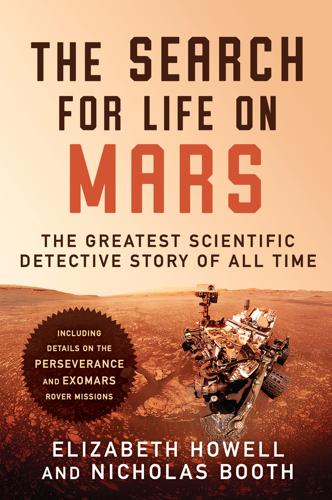
The Search for Life on Mars
by
Elizabeth Howell
Published 14 Apr 2020
Until the early 2000s, most information had been in the form of dispatches sent out to journalists. Now, online updates, released through videos and various social media accounts, keep the world informed. By their very nature—such releases tend to come in staccato bursts—they often create a false impression. Not so much “fake news” but, as McGregor acknowledges, providing no coherent narrative to connect the dots and show how coherently organized NASA’s Mars exploration program is. “There were certain times when we would worry about [this],” Veronica McGregor says. “There are a lot of missions in this Mars pipeline. And how do we explain to the public what this one’s doing that the other one didn’t do, and why we have to do this next one, and why it is so incremental.”
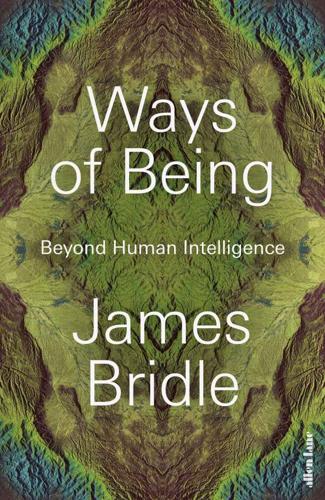
Ways of Being: Beyond Human Intelligence
by
James Bridle
Published 6 Apr 2022
From these responses, whole social worlds have emerged. Yet here also, these systems shape our lives in many detrimental ways. Facebook assumed that the social model of interaction among privileged white American college students was the best way for the whole world to talk to one another; believing them, we ended up with gossip, spite, trolls, fake news and worse. Google decided that selling our data to advertisers was the best way to monetize the free flow of information, so we ended up with clickbait, Cambridge Analytica, Russian psy-ops and the alt-right. Beyond these obvious examples are many more invisible technologies operating beyond and outside our awareness and oversight: systems of surveillance, of legal judgment, of financial extraction and of social control.
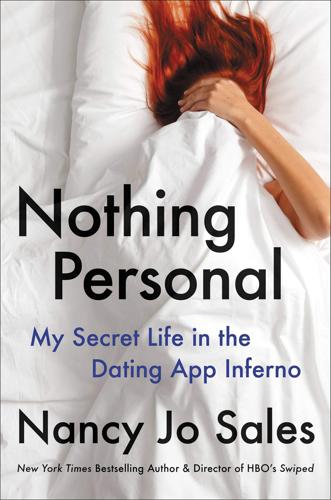
Nothing Personal: My Secret Life in the Dating App Inferno
by
Nancy Jo Sales
Published 17 May 2021
I felt like Shelley Duvall in that scene in The Shining where she goes to Jack Nicholson’s typewriter and sees that he’s been typing, over and over, “All work and no play makes Jack a dull boy.” Of course I had checked out Axel before hiring him—that is, online. I’d seen his website, Facebook, YouTube channel, LinkedIn, all of which did a very good job of suggesting he was who he said he was—all those profile pics of him hoisting a Canon! But it was all fake news. And I’d believed it. Why? I guess because part of me was worried that I couldn’t really make this movie on my own. It’s always easier to think that someone else is going to show you the way, when really you have to figure things out for yourself. And I think I’d wanted to believe in our love affair, wanted to believe that, approaching fifty, I could still have a romantic adventure like the one I thought I was having with Axel.

Persians: The Age of the Great Kings
by
Lloyd Llewellyn-Jones
Published 15 Mar 2022
It tells of Darius’ many triumphs and consecrates his victories to the gods. The inscription is the very ipsissima verba of Darius, so much so that each section of the text starts the same way: ‘Thus says Darius the king…’ Darius’ Bisitun account of his accession was a masterful compilation of fake news. It was a rich melange of untruths, spin, and pure bravado. Darius the Great was antiquity’s most confident, bold, and successful propagandist. Utterly cynical, he seems to have believed only in the self-justification of his own power and its preservation and if, as is often claimed, propaganda is indeed the art of persuasion, then Darius must be credited as being a master of the craft.
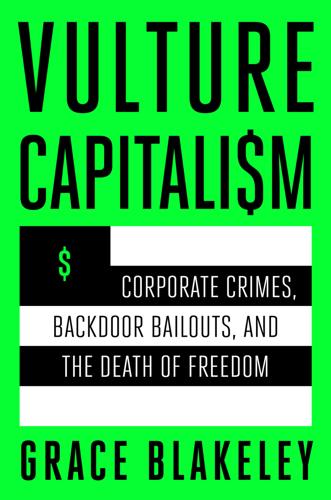
Vulture Capitalism: Corporate Crimes, Backdoor Bailouts, and the Death of Freedom
by
Grace Blakeley
Published 11 Mar 2024
By June 1954, Armas and his CIA-trained men reached the Guatemalan border. At this point, Árbenz discovered the coup attempt and released the news to the Guatemalan press. But the Americans were not deterred and started to broadcast false reports of an Armas victory on US-controlled radio stations.88 The US was using fake news as a weapon long before it hit the headlines back home. While Armas’s ragtag group of mercenaries could never hope to defeat the Guatemalan army by force, the US’s clear determination to depose Árbenz led to defections within his administration and severely weakened the president. A panicked Árbenz resigned on June 27, 1954, handing power over to the head of the armed forces, convinced that the Americans would not attempt to install Armas in his place.89 But a few days after Árbenz’s resignation, the newly chosen president was informed by a local CIA representative that he was “not convenient for the requirements of American foreign policy.”90 The American ambassador later showed up at the president’s house with a list of Guatemalans the US suspected of communist sympathies, informing him that these people “would need to be shot immediately.”91 It was not long before Armas was declared president of Guatemala.
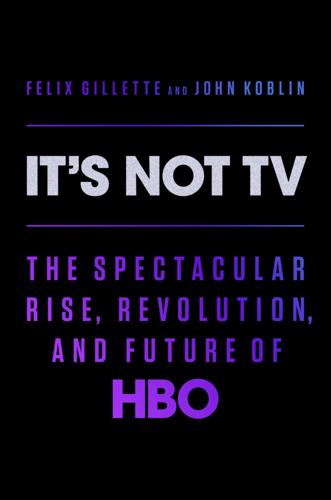
It's Not TV: The Spectacular Rise, Revolution, and Future of HBO
by
Felix Gillette
and
John Koblin
Published 1 Nov 2022
A few days later, they had another big and disheartening development to worry about. On November 3, Donald Trump defeated Hillary Clinton to become the forty-fifth president of the United States. Throughout the campaign, Trump had repeatedly lashed out at HBO’s sibling network, Time Warner’s CNN, calling it “fake news,” “fraud news,” “garbage journalism,” “dishonest,” “unwatchable,” “distorted,” “sick,” “a great danger to our country,” and “the enemy of the American people.” “We knew during the transition there were going to be problems,” Ginsberg says. “We were hearing from Trump’s people that he was going to come after us.
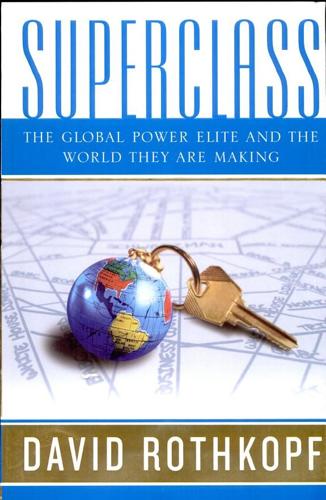
Superclass: The Global Power Elite and the World They Are Making
by
David Rothkopf
Published 18 Mar 2008
News media, in particular, have evolved considerably in the last five years, not only with the rise of Internet news and blogs, as discussed, but also with reporting that is increasingly entertainment-oriented in nature. Indeed, more Americans in the eighteen-to-twenty-five age bracket get their news from Jon Stewart’s “fake news” program The Daily Show than from any other source. (Keeping in step, Murdoch’s Fox News Channel introduced The Hour News Hour in 2007 to compete with Comedy Central’s popular parody.) In the global era, overlapping networks of entertainment celebrities have more than star power—they have the power to affect real-world outcomes, political and otherwise.

Age of Ambition: Chasing Fortune, Truth, and Faith in the New China
by
Evan Osnos
Published 12 May 2014
Large swaths of the city were being demolished or refurbished to create a clean, modern backdrop for the games. The workers had laid down a smooth bed of cement and were using a ruler and plumb line to carve crisp lines and corners. It took me a moment to realize that they were drawing the suggestion of fake new bricks on top of real old bricks. Facing my front door, on the alley wall, a faded bit of Cultural Revolution–era graffiti declared, in five blocky characters, LONG LIVE CHAIRMAN MAO! With two swipes of the trowel, the Great Helmsman vanished behind the cement. The urge for perfection extended to the medal race.
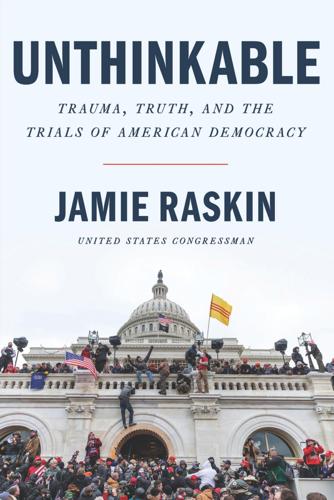
Unthinkable: Trauma, Truth, and the Trials of American Democracy
by
Jamie Raskin
Published 4 Jan 2022
At trial, Madeleine Dean interspersed Trump’s tweets of that day with his incendiary incitement to demonstrate how focused he was on building a massive angry crowd: “All of us here today do not want to see our election victory stolen by bold and radical left Democrats, which is what they are doing, and stolen by the fake news media. That is what they have done and what they are doing. We will never give up. We will never concede. It doesn’t happen. You don’t concede when there is theft involved. Our country has had enough. We will not take it anymore, and that is what this is all about. And to use a favorite term that all of you people really came up with, we will stop the steal . . .

The Finance Curse: How Global Finance Is Making Us All Poorer
by
Nicholas Shaxson
Published 10 Oct 2018
The monopolisation of news has been especially dangerous because it eliminates ideological competition, leading to ‘a mushy liberal sameness in every market’, as the US economic historian Bruce Bartlett once put it. Haughty and distant from large parts of the population, large news organisations based in London or New York peddle what often feels, to rural communities and the poor, like fake news. As Facebook, Google and other monopolising Internet behemoths slaughter newspapers’ advertising revenues, only the strongest news giants prosper, reinforcing these dangerous trends and fuelling the furious new politics now convulsing large parts of the world. In 2017 and 2018 the Trump administration rolled back protections against monopolies in local broadcast news, allowing a slew of stations to come under the control of the arch-conservative and pro-Trump Sinclair Broadcast Group.

In Pursuit of the Perfect Portfolio: The Stories, Voices, and Key Insights of the Pioneers Who Shaped the Way We Invest
by
Andrew W. Lo
and
Stephen R. Foerster
Published 16 Aug 2021
Derivatives Markets and Information While neither Scholes nor Black nor Merton invented the concept of derivatives, their contributions to option pricing led to an increase in efficiency that powered the explosive growth in the use of derivatives.60 The world of derivatives was dramatically different before and after their 1973 publication containing the Black-Scholes formula. While options on stocks existed in the seventeenth century, before the 1970s, purchasing options in the public mind was considered to be basically the same as gambling and prone to market manipulation, often through the spreading of false rumors or fake news. One SEC official commented that he had never seen a market manipulation in which options weren’t involved. At times in the eighteenth and nineteenth centuries, options were banned in Britain, France, and various U.S. states. Following the stock market crash of 1929, an outright federal ban on stock option trading was only narrowly averted.
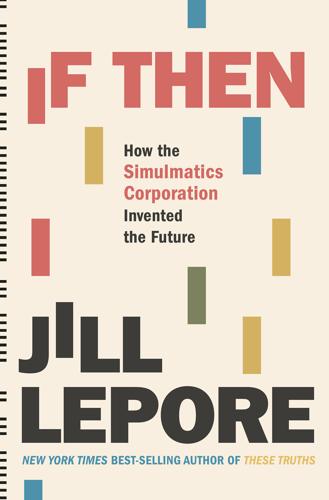
If Then: How Simulmatics Corporation Invented the Future
by
Jill Lepore
Published 14 Sep 2020
Most of them failed.86 Hoc proposed something called the Sorcerers Project, he explained, because “Vietnamese villagers believe in prophecy and the power of holy men to foretell the future.” (Not unlike secretaries of defense who vest the same power in IBM machines.) For this project he intended to circulate false magic, the way another sort of psychological warrior might circulate, for instance, fake news. Alas, “the sorcerers did not say what they were supposed to say.” Another operation, Hoc’s Chain Letter Project, involved giving villagers envelopes containing four copies of a letter and asking them to help get the letters to the Vietcong. Somehow, this never came off. Hoc’s Folksinger Project involved composing new folk songs intended to “inject dislike and hatred of the VC.”
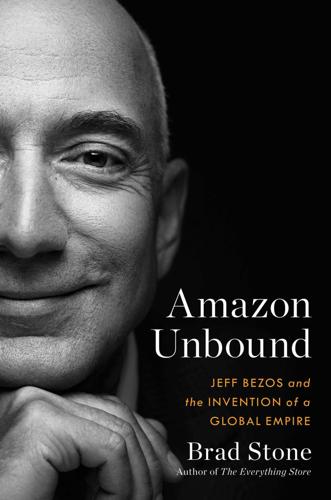
Amazon Unbound: Jeff Bezos and the Invention of a Global Empire
by
Brad Stone
Published 10 May 2021
Only Donald Trump, lobbing Twitter grenades from afar, noticed the discord and tried to stir the pot: Donald J. Trump @realDonaldTrump Washington Post employees want to go on strike because Bezos isn’t paying them enough. I think a really long strike would be a great idea. Employees would get more money and we would get rid of Fake News for an extended period of time! Is @WaPo a registered lobbyist? * * * Predictably, Bezos took the most interest in the Post’s products and technology. He forged a partnership with CIO Shailesh Prakash, a graduate of the Indian Institute of Technology in Bombay, and boasted that the newspaper had better engineers than many Silicon Valley startups.
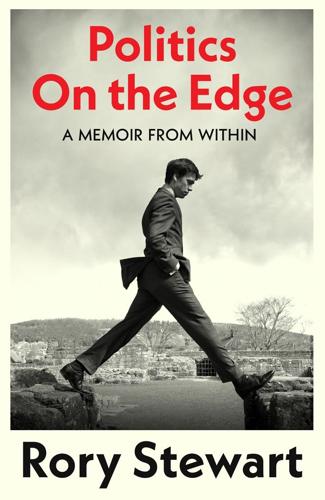
Politics on the Edge: The Instant #1 Sunday Times Bestseller From the Host of Hit Podcast the Rest Is Politics
by
Rory Stewart
Published 13 Sep 2023
The turnout in the Scottish referendum was 85 per cent – 20 per cent higher than in the previous general election – demonstrating a quite new level of political engagement. Incomes were stagnant, productivity had not recovered from the financial crisis in 2008. In Scotland and across the world, algorithms on Twitter and Facebook were already rewarding the most provocative voices, turbocharging fake news, deepening a daily habit of anger and bafflement. In March of the referendum year, Putin had formally annexed Crimea – the first violent change to a European border since the Second World War. Two months later, populism had arrived in India with the election of Narendra Modi. A month after that a few hundred ISIS fighters routed three divisions of the Iraqi army and seized the second largest city in Iraq and declared a caliphate.
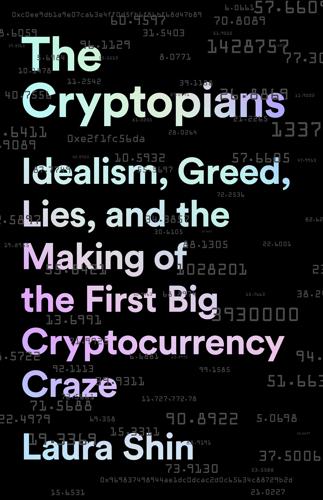
The Cryptopians: Idealism, Greed, Lies, and the Making of the First Big Cryptocurrency Craze
by
Laura Shin
Published 22 Feb 2022
,” Reddit via Removeddit, June 21, 2017, https://www.removeddit.com/r/ethereum/comments/6imd5u/can_we_make_a_mega_thread_for_people_to_explain. 39. Dan Finlay (@danfinlay), “No? Status just raised as much as they could possibly want, for chat stickers and ads,” Twitter, June 21, 2017, https://twitter.com/danfinlay/status/877333592346476544?s=20. 40. Joon Ian Wong, “Fake news of a fatal car crash wiped out $4 billion in ethereum’s market value yesterday,” Quartz, June 26, 2017, https://qz.com/1014559/vitalik-buterin-dead-a-hoax-on-4chan-crashed-ethereums-price. 41. Vitalik Buterin (@VitalikButerin), “Another day, another blockchain use case,” Twitter, June 25, 2017, https://twitter.com/VitalikButerin/status/879127496024772610?
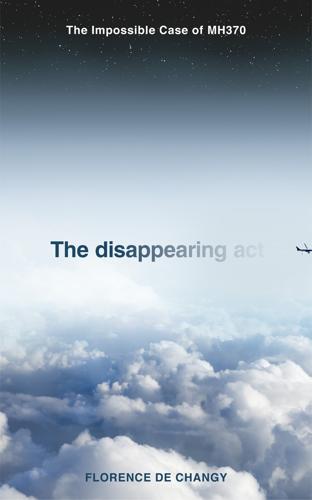
The Disappearing Act
by
Florence de Changy
Published 24 Dec 2020
Because this fake information came on top of hundreds of articles and at least two books that had already claimed – or at least hinted – that the pilot had planned it all and was the sole person responsible for the loss of the jetliner and all those on board, even the belated regrets of Jeff Wise himself about his erroneous accusations against Zaharie did nothing to redress the general negative impression that had been built up about the pilot. Ironically, despite the formal refutation of the validity of this ‘hard evidence’ by its author, the article was quoted again and again. To date, New York magazine has not removed it from its website nor offered apologies to its readers for this major piece of fake news. Ill-portrayed and falsely accused, I am now convinced that Zaharie never had the slightest of deadly intentions. On the contrary, I recall what his friend Peter Chong once told me: ‘If something were to happen when I was flying, it’s Captain Zaharie I’d like to see in the cockpit. If anyone could save a plane in the most difficult circumstances, it would be him.
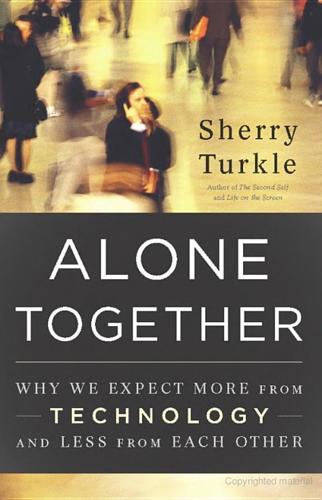
Alone Together
by
Sherry Turkle
Published 11 Jan 2011
Norton, 1980) and Childhood and Society (New York: Norton, 1950). 3 In Julia’s world, e-mail is considered “slow” and rarely used because texting has greater immediacy. 4 It is so common to see teenagers (and others) attending to their mobiles rather than what is around them, that it was possible for a fake news story to gain traction in Britain. Taken up by the media, the story went out that there was a trial program to pad lampposts in major cities. Although it was a hoax, I fell for it when it was presented online as news. In fact, in the year prior to the hoax, one in five Britons did walk into a lamppost or other obstruction while attending to a mobile device.

The Enemy Within
by
Seumas Milne
Published 1 Dec 1994
Windsor says he refused, though the national officials submitted a letter to the Lightman Inquiry apparently signed by Windsor in 1986 agreeing to pay the money to the IMO.48 There was also a 1987 land-registry document assigning a £29,500 charge on the Windsors’ Sheffield home to the IMO. Hudson remembers that Windsor agreed the charge. But it was in fact never registered because, despite numerous requests, Windsor failed to provide the necessary details of his house deeds. In July 1990, the Mirror and the Cook Report revealed the document to have been at least partly faked. ‘New Scargill Affair sensation’, the Mirror’s front page promised excitedly, and the rest of the media followed the story up. Neither of the two witnesses to the signatures named on the document, Meryl and Roy Hyde, had ever seen it before; their address was wrong; and Angie Windsor’s signature bore little relation to the real thing.
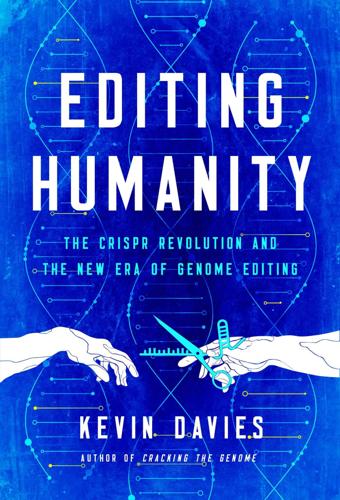
Editing Humanity: The CRISPR Revolution and the New Era of Genome Editing
by
Kevin Davies
Published 5 Oct 2020
A British company, Tropic Biosciences, is using CRISPR to reprogram some of the plant’s own RNA interference defenses to target the fungus.35 The company is also engineering coffee plants that will be genetically depleted of caffeine. The threats to oranges and bananas illustrate the dilemma that all farmers and agricultural biotech business are now confronting: how to reassure the public that genetically modified, potentially gene-edited, fruits and crops are safe in an age of misinformation, fake news, and a legacy of anti-GMO disinformation. Some manufacturers have brazenly capitalized on this fear and ignorance by slapping “non-GMO” labels on all sorts of foods and fruits—even those that by definition cannot be genetically modified. Take water—an oxygen atom sandwiched between two hydrogen atoms—or salt, the simple union of sodium and chloride ions.
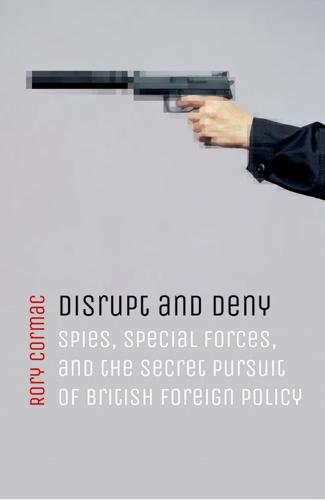
Disrupt and Deny: Spies, Special Forces, and the Secret Pursuit of British Foreign Policy
by
Rory Cormac
Published 14 Jun 2018
Russian activities in Crimea and eastern Ukraine mirrored those against Poland as long ago as the 1920s.47 KGB operations to influence European elections took place in the late 1940s and 1950s. Soviet intelligence spread disinformation accusing American soldiers of sex attacks in Germany to undermine NATO, a scheme remarkably similar to so-called ‘fake news’ accusing migrants of sex attacks in Germany to undermine the European Union. Even the fear of hybrid warfare, as operating in permanent support of some clearly defined foreign policy goal, is reminiscent of Cold War thinking. It perpetuates an idea of a powerful Kremlin, a scheming and dangerous chess master needing to be countered.48 Russia may be up to its old tricks, but Britain has been here before.
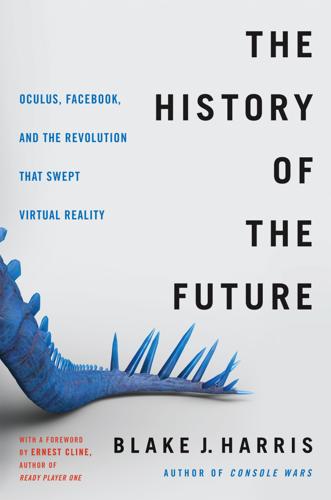
The History of the Future: Oculus, Facebook, and the Revolution That Swept Virtual Reality
by
Blake J. Harris
Published 19 Feb 2019
When Malinowski first took over in August 2015, the community had only a couple hundred members. Now, one year later, it had become Reddit’s second-most-active community, boasting over 175,000 members. It had grown so powerful that even Trump himself had come by to answer questions. And yet, as popular as The_Donald had become, and as good as Malinowski had gotten at brushing off “fake news” about how evil-racist-whatever he and his fellow Trump supporters were, he couldn’t shake the feeling that he ought to be doing more. There just had to be something else out there that he could be doing—to help nudge his candidate to victory, to help nudge New London back on track. After months of racking his brain, Malinowski found what he thought might be that something: a simple-but-clever way to make a difference.

An Impeccable Spy: Richard Sorge, Stalin’s Master Agent
by
Owen Matthews
Published 21 Mar 2019
I never doubted that if necessary he would do so – that he would shoot me to protect the case in hand, or if he had been ordered to.’14 Just days after his recruitment by Berzin in late October 1929, Sorge and his new boss Ulanovsky were sent to Berlin. Their contact was to be Konstantin Basov – codename ‘Richard’ – the man who had talent-spotted Sorge and one of the most experienced agent trainers of his generation. Basov’s job was to orchestrate the building of the two men’s cover stories, stitching their fake new identities into the fabric of reality like an expert tailor, invisibly patching over their Soviet past. He had already procured a Czech passport under the name of ‘Kirschner’ for Ulanovsky. His plan was to set the fictional Herr Kirschner up as a businessman representing a legitimate German or European company in China.

How to Hide an Empire: A History of the Greater United States
by
Daniel Immerwahr
Published 19 Feb 2019
In the end, the students were permitted to sing the Honduran national anthem, take a census, and raise their flag (on a CIA-supplied pole). The students left, never realizing who their drinking buddies were. Or that a contingent of marines had been waiting, ready to start shooting if the beer didn’t work. The family jewels were worth protecting. In 1954 the CIA had successfully used radio to spread fake news during a coup it helped stage to overthrow Guatemala’s democratically elected but left-leaning government. With its transmitter on Swan Island, it could run an even more secure and sophisticated operation, this time directed at Fidel Castro’s socialist regime in Cuba. Through “Radio Swan,” which posed as a privately run station, the United States promulgated false news reports and trolled the Cuban government.

Valley of Genius: The Uncensored History of Silicon Valley (As Told by the Hackers, Founders, and Freaks Who Made It Boom)
by
Adam Fisher
Published 9 Jul 2018
David Cheriton: The thing that many people don’t recall from that first web era was that a lot of the companies that started out as search companies introduced advertising and then compromised the search in favor of the advertising, so nobody trusted the search. Paul Buchheit: Companies would just mix the ads in with the regular search results so people would think it was a search result. It’s kind of like fake news or something. Brad Templeton: In most of the publishing business, there is a history of having a wall between editorial and advertising. Google really took that to heart. They tried to keep their wall between the advertisement and the actual editorial content pretty strictly divided. But all the other websites were basically tearing down the wall.
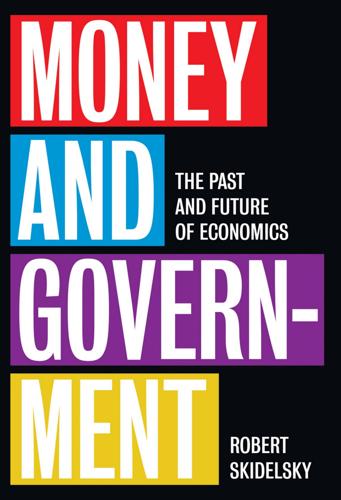
Money and Government: The Past and Future of Economics
by
Robert Skidelsky
Published 13 Nov 2018
General equilibrium models offer no insight into the sources of aggregate malfunctions: the role of uncertainty in the interaction of many markets, the importance of money as a precaution against uncertainty, the prevalence of herd behaviour, the role of entrepreneurship in creating new wants and new products, the part played by advertising in manipulating choices, the fact that the information systems on which we rely transmit rumour and fake news. They shed no light on the dynamics of the market system as agent of both creation and destruction. 387 A N e w M ac roe c onom ic s A particular source of false reasoning is the use of language from physics, engineering and mechanics to describe economic processes. Thus we are presented with a picture of perfect markets (machines), which may nevertheless exhibits signs of ‘imperfection’ (e.g. imperfect competition, imperfect information).

Power and Progress: Our Thousand-Year Struggle Over Technology and Prosperity
by
Daron Acemoglu
and
Simon Johnson
Published 15 May 2023
“The Medium Is the Measure: Technical Change and Employment, 1909‒1949.” Review of Economics and Statistics 98, no. 4: 792‒810. Allcott, Hunt, Luca Braghieri, Sarah Eichmeyer, and Matthew Gentzkow. 2020. “The Welfare Effects of Social Media.” American Economic Review 110, no. 3: 629‒676. Allcott, Hunt, and Matthew Gentzkow. 2017. “Social Media and Fake News in the 2016 Election.” Journal of Economic Perspectives 31:211‒236. Allcott, Hunt, Matthew Gentzkow, and Lena Song. 2021. “Digital Addiction.” NBER Working Paper no. 28936. DOI:10.3386/w28936. Allcott, Hunt, Matthew Gentzkow, and Chuan Yu. 2019. “Trends in the Diffusion of Misinformation on Social Media.”
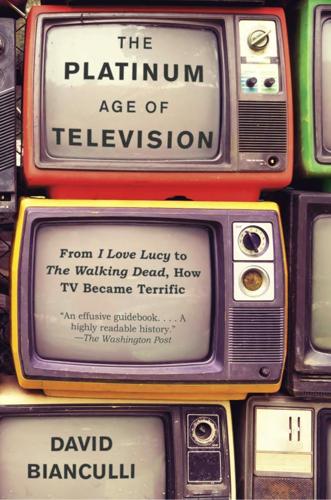
The Platinum Age of Television: From I Love Lucy to the Walking Dead, How TV Became Terrific
by
David Bianculli
Published 15 Nov 2016
It’s really impressive that you did this show for this long, and kept it this good for this long. And you stayed with the world’s events, and you were a voice of reason, and you were funny. It’s really, like, one of the great comedy accomplishments of all time that you did.” The Daily Show with Jon Stewart was a fake news show that often delivered more real substance, context, and commentary than many of its serious cable TV counterparts. Here, President Barack Obama visits Stewart, one of seven appearances made before or during the Obama presidency. The next night, on his final show, Stewart made room for virtually all of his correspondents, past and present, as well as a nod to the future—a roll call that included not only the Daily Show alumni Steve Carell, Samantha Bee, Lewis Black, John Oliver, and Larry Wilmore but the next Daily Show host, Trevor Noah, who took over later that year.

And Here's the Kicker: Conversations with 21 Top Humor Writers on Their Craft
by
Mike Sacks
Published 8 Jul 2009
Whether he was yammering on about “truthiness,” having water playfully thrown in his face by billionaire Richard Branson, or mocking President Bush at the 2006 White House Correspondents' Dinner, Stephen Colbert (the character) was a walking-and-talking indictment of arch-conservative egotism. The right-wing pundit was the fake-news personality that everybody (sometimes even Republicans) loved to hate. Silverman, who has been The Colbert Report's co–head writer with Richard Dahm since 2005 and a co-executive producer since September 2007, is largely responsible for much of Colbert's fictional persona — including the idea for Colbert to strut around his desk as guests make their entrance over to the desk.

Practical Ext JS Projects With Gears
by
Frank Zammetti
Published 7 Jul 2009
Before we dive into the code, though, let’s get an initial glimpse of Code Cabinet Ext, shown in Figure 5-1. 1 The Great Space Coaster (http://en.wikipedia.org/wiki/The_Great_Space_Coaster) was a children’s television show from the early ’80s that many of us in our mid-thirties grew up with. Most people tend to remember two things: Knock-Knock the bird, who naturally enough told knock-knock jokes, and Gary Gnu, who did the fake news reports (“No gnews is good gnews with Gary Gnu”). Of course, the theme song tends to stick in our heads too: “…get onboard, step inside, slowly for a magic ride… roaring towards the other side where only rainbows hide…” Ah, the memories! C ha pt e r 5 ■ a p La C e F O r Y O U r S t U F F : C O D e C a B I N e t e X t Figure 5-1.
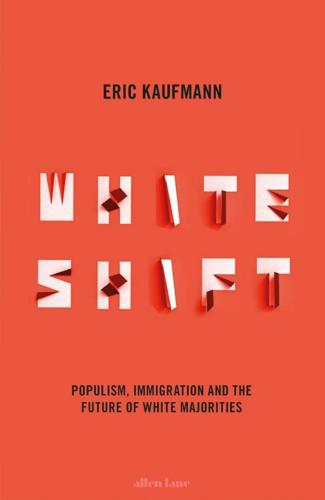
Whiteshift: Populism, Immigration and the Future of White Majorities
by
Eric Kaufmann
Published 24 Oct 2018
In one case, Time magazine’s cover showed a crying child looking up at President Trump. This was based on a picture which had gone viral, and which Time claimed, erroneously, involved the child being dragged from its parents. Even after publishing a correction, the magazine continued to defend the publication of the photo. Given Trump’s oft-repeated and usually false charge of ‘fake news’, Time’s refusal to admit it made a mistake is disheartening.133 Trump’s move is part of a series of reforms to end ‘catch and release’, an approach which permits illegal immigrants to enter society as their cases are processed, which often results in them disappearing into the US. Ideally, families would remain intact as asylum cases are adjudicated, but this can take years due to a backlogged system.

The Anarchy: The Relentless Rise of the East India Company
by
William Dalrymple
Published 9 Sep 2019
Eventually, on the eve of yet another Afghan invasion by Ahmed Shah Durrani, who was now married to Alamgir’s daughter, and who he feared would naturally side with his father-in-law, the vizier decided to rid himself of his royal encumbrance entirely before the latter did the same to him.31 According to the account of Khair ud-Din Illahabadi in his Book of Admonition, the Ibratnama, Imad ul-Mulk finally took action in the early afternoon of 29 November 1759, at the fourteenth-century Firoz Shah’s Kotla, south of the Red Fort, overlooking the Yamuna River. ‘Imad ul-Mulk mistrusted the King, and equally the minister Khan-i Khanan, whom he knew to be party to the King’s secret counsels.’ So, he first murdered the Khan-i Khanan while he was at his prayers, then he sent to the King the fake news that, ‘A wandering dervish from Kandahar has come and settled in the ruins of Firuz Shah’s kûtla, a wonder-worker definitely worth visiting!’ He knew that the pious King had a penchant for visiting fakirs, and that he would not resist an invitation to see one who had come from Ahmad Shah Durrani’s homeland.

Elon Musk
by
Walter Isaacson
Published 11 Sep 2023
Musk responded by linking to a right-wing conspiracy site that falsely suggested, without offering any evidence, that Pelosi might have been hurt “in a dispute with a male prostitute.” Musk commented, “There is a tiny possibility there might be more to this story than meets the eye.” Musk’s tweet showed his growing tendency (like his father) to read wacky fake-news sites purveying conspiracy theories, a problem that Twitter had writ large. He quickly deleted the tweet, apologized, and later said privately that it was one of his dumbest mistakes. It was also a costly one. “It’s definitely going to be a problem with advertisers,” Roth texted Alex Spiro. Musk had begun to realize that creating a good venue for advertisers conflicted with his plans to open the aperture to more raucous free speech.
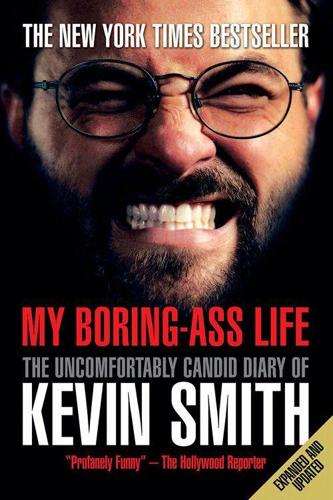
My Boring-Ass Life: The Uncomfortably Candid Diary of Kevin Smith
by
Kevin Smith
Published 24 Sep 2007
The extent of my performance today involves me sleeping on a couch while two other actors do all the dialogue. God, I love my job. I’m in the first set-up, and when we’re done, I head back to my trailer and watch the end of Metropolitan, then get started on The Daily Show DVD box set, Indecision ‘‘04. I love Jon Stewart, Stephen Colbert, Rob Corddry, Ed Helms, and Samantha Bee. Even though the “fake news” is almost a year old, it’s still hilarious. The decision is made that I’m not gonna be in the background of anymore shots for the day, so I’m wrapped around four, and back to the hotel. We have family dinner at Byron and Gail’s apartment (steak and sausage), and Harley talks about her Arts Umbrella Camp program, including day one of Tennis Camp.
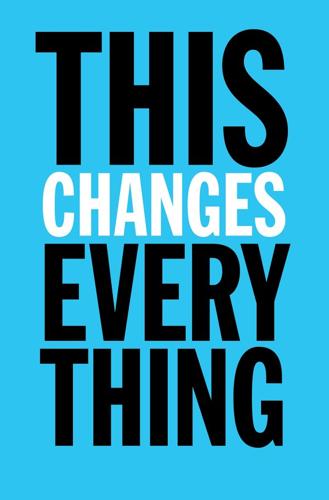
This Changes Everything: Capitalism vs. The Climate
by
Naomi Klein
Published 15 Sep 2014
Yale’s Dan Kahan points out that while those who poll as highly “hierarchical” and “individualist” bridle at any mention of regulation, they tend to like big, centralized technologies that do not challenge their belief that humans can dominate nature. In one of his studies, Kahan and his colleagues polled subjects on their views about climate change after showing some of them fake news stories. Some of the subjects were given a story about how global warming could be solved through “anti-pollution” measures. Others were given a story that held up nuclear power as the solution. Some were shown no story at all. The scientific facts about global warming were identical in all news stories.

Designing Data-Intensive Applications: The Big Ideas Behind Reliable, Scalable, and Maintainable Systems
by
Martin Kleppmann
Published 17 Apr 2017
ISBN: 978-0-553-41881-1 [88] Julia Angwin: “Make Algorithms Accountable,” nytimes.com, August 1, 2016. [89] Bryce Goodman and Seth Flaxman: “European Union Regulations on Algorith‐ mic Decision-Making and a ‘Right to Explanation’,” arXiv:1606.08813, August 31, 2016. [90] “A Review of the Data Broker Industry: Collection, Use, and Sale of Consumer Data for Marketing Purposes,” Staff Report, United States Senate Committee on Com‐ merce, Science, and Transportation, commerce.senate.gov, December 2013. [91] Olivia Solon: “Facebook’s Failure: Did Fake News and Polarized Politics Get Trump Elected?” theguardian.com, November 10, 2016. [92] Donella H. Meadows and Diana Wright: Thinking in Systems: A Primer. Chelsea Green Publishing, 2008. ISBN: 978-1-603-58055-7 550 | Chapter 12: The Future of Data Systems [93] Daniel J. Bernstein: “Listening to a ‘big data’/‘data science’ talk,” twitter.com, May 12, 2015. [94] Marc Andreessen: “Why Software Is Eating the World,” The Wall Street Journal, 20 August 2011. [95] J.
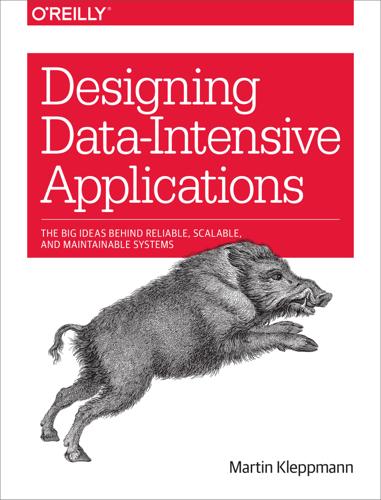
Designing Data-Intensive Applications: The Big Ideas Behind Reliable, Scalable, and Maintainable Systems
by
Martin Kleppmann
Published 16 Mar 2017
[89] Bryce Goodman and Seth Flaxman: “European Union Regulations on Algorithmic Decision-Making and a ‘Right to Explanation’,” arXiv:1606.08813, August 31, 2016. [90] “A Review of the Data Broker Industry: Collection, Use, and Sale of Consumer Data for Marketing Purposes,” Staff Report, United States Senate Committee on Commerce, Science, and Transportation, commerce.senate.gov, December 2013. [91] Olivia Solon: “Facebook’s Failure: Did Fake News and Polarized Politics Get Trump Elected?” theguardian.com, November 10, 2016. [92] Donella H. Meadows and Diana Wright: Thinking in Systems: A Primer. Chelsea Green Publishing, 2008. ISBN: 978-1-603-58055-7 [93] Daniel J. Bernstein: “Listening to a ‘big data’/‘data science’ talk,” twitter.com, May 12, 2015
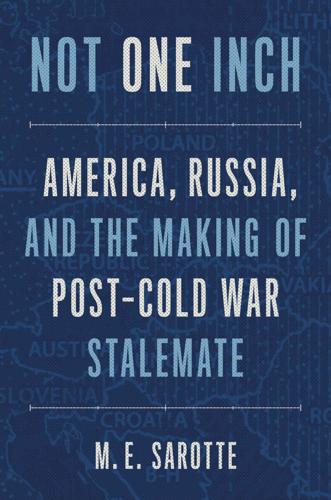
Not One Inch: America, Russia, and the Making of Post-Cold War Stalemate
by
M. E. Sarotte
Published 29 Nov 2021
Moscow’s mismanagement of Chernobyl contributed to support for Ukrainian independence by giving rebels against Russian control “a new cause to add to their previous agenda of political freedom, human rights, and the development of the Ukrainian language and culture”; Plokhy, Chernobyl, 299; see also Reiss, Bridled Ambition, 129–30. 61. Andrew E. Kramer, “In Russia, Days of Fake News and Real Radiation after Deadly Explosion,” New York Times, August 12, 2019. On the risks of civilian nuclear power, see Perrow, Normal Accidents. 62. Statistics from Pekka Sutela, “The Underachiever: Ukraine’s Economy since 1991,” Carnegie Endowment for International Peace, March 9, 2012, https://carnegieendowment.org/2012/03/09/underachiever-ukraine-s-economy-since-1991-pub-47451; see also D’Anieri, Economic Interdependence. 63.
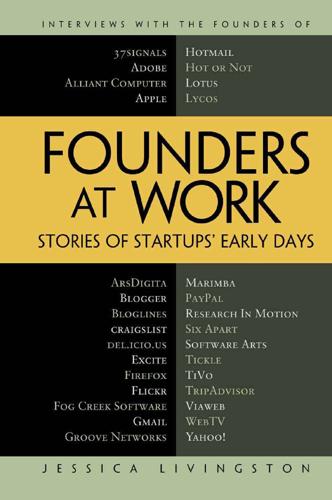
Founders at Work: Stories of Startups' Early Days
by
Jessica Livingston
Published 14 Aug 2008
They were tricking them selling search results—which we considered a questionable thing to do because people didn’t realize that they were ads. Livingston: The users didn’t know? Buchheit: Companies would just mix the ads in with the regular search results so people would think it was a search result. It’s kind of like fake news or something. In a newspaper, they’re usually pretty good about separating out which things are advertisements and which aren’t. But the search engines at the time were all selling search results and mixing them in with the real ones, so it was a little bit of a differentiator that we always said that we would never do that— and haven’t.

Enlightenment Now: The Case for Reason, Science, Humanism, and Progress
by
Steven Pinker
Published 13 Feb 2018
Right-wing anti-intellectualism has been deplored by conservatives themselves in books like Charlie Sykes’s How the Right Lost Its Mind (2017) and Matt Lewis’s Too Dumb to Fail (2016). 74. Centrality of reason: Nagel 1997; Norman 2016. 75. Extraordinary popular delusions: McKay 1841/1995; see also K. Malik, “All the Fake News That Was Fit to Print,” New York Times, Dec. 4, 2016. 76. A. D. Holan, “All Politicians Lie. Some Lie More Than Others,” New York Times, Dec. 11, 2015. 77. In analyzing history’s deadliest conflicts, Matthew White comments, “I’m amazed at how often the immediate cause of a conflict is a mistake, unfounded suspicion, or rumor.”

Lonely Planet Western Balkans
by
Lonely Planet
,
Peter Dragicevich
,
Mark Baker
,
Stuart Butler
,
Anthony Ham
,
Jessica Lee
,
Vesna Maric
,
Kevin Raub
and
Brana Vladisavljevic
Published 1 Oct 2019
Inside there’s a collection of armoury, two good museums, plenty of crumbling ruins to scramble around, and superb views over the valley. The castle grounds also house a recovered US Air Force jet with an interesting backstory as to how it got here. One is the official Albanian version, the other is the official American version. Both versions are what might today be termed as ‘Fake News’, but the US version is faker than the Albanian one… oCold War TunnelTUNNEL (Sheshi Çerçiz Topulli; 200 lekë; h8am-4pm Mon-Fri, 10am-2pm Sat, 9am-3pm Sun) Gjirokastra’s most interesting sight in no way relates to traditional architecture, but instead to a far more modern kind: this is a giant bunker built deep under the castle for use by the local authorities during the full-scale invasion that communist leader Enver Hoxha was so paranoid about.

Wanderers: A Novel
by
Chuck Wendig
Published 1 Jul 2019
“Now we’d better get a move on, don’t you think? The mystery of Maker’s Bell awaits.” Look at this photo of these 11 zombies—four of them are identifiable Antifa crisis actors. This isn’t some foreign attack or some kind of outbreak. This is a leftie conspiracy in action. Stay frosty, spread the word. Two words: fake. news. —user KobraKommandr at r/conspiracy, answering the question, “What’s the weirdest thing you’ve seen while alone?” JUNE 4 Pine Grove, Pennsylvania “SO LIKE, WHAT THE FUCK is going on here?” Zig asked. “I dunno,” Shana said, her fingers drumming on the filthy dash of his little Honda Civic.
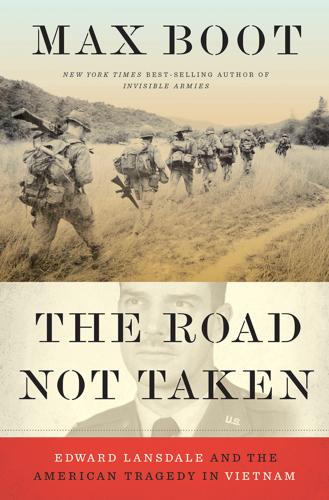
The Road Not Taken: Edward Lansdale and the American Tragedy in Vietnam
by
Max Boot
Published 9 Jan 2018
ONE “BLACK psywar strike in Hanoi” of which Lansdale was particularly proud involved leaflets purportedly “signed by the Vietminh instructing Tonkinese [northern Vietnamese] on how to behave for the Vietminh takeover of the Hanoi region”—including instructions to make an inventory of their personal property so that the Vietminh would know how much to confiscate. Lansdale bragged that “the day following the distribution of these leaflets, refugee registration tripled. Two days later Vietminh currency was worth half the value prior to the leaflets.”45 In a midcentury forerunner of “fake news,” another handbill showed a picture of Hanoi with three circles of nuclear annihilation superimposed on it, implying that it was about to be atomic-bombed by the United States. Other fliers claimed “Christ Has Gone to the South” and “The Virgin Mary Has Departed from the North.” When Polish and Russian ships arrived in the South to transport Vietminh sympathizers to the North, a pamphlet, attributed to a nonexistent Vietminh Resistance Committee, reassured “the Vietminh they would be kept safe below decks from imperialist air and submarine attacks, and requested that warm clothing be brought.”
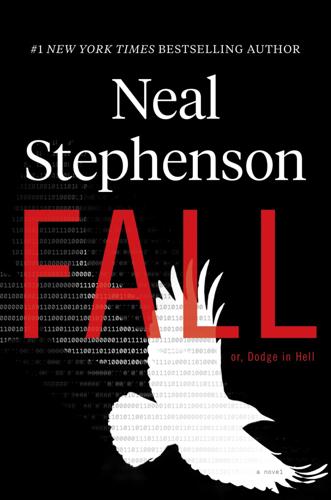
Fall; Or, Dodge in Hell
by
Neal Stephenson
Published 3 Jun 2019
After meeting Corvallis she had spent several years as an Internet hate speech lightning rod, which had been fascinating in a way—but it was an essentially passive role, a work of performance art the whole point of which was to obliterate her real identity and bury it a million miles deep under fake news. Any thinking person who paid attention to that spectacle would end up asking, “But who is this person really?” To the extent that the project had succeeded, it had only made her real identity that much more enigmatic. Under that cover, she had, with Corvallis, raised three children in weirdly normal urban-soccer-mom style.

Thomas Cromwell: A Life
by
Diarmaid MacCulloch
Published 26 Sep 2018
Amid generally accurate intelligence, he reported that Milsent had been hanged and Bellow baited to death with dogs.37 This was all the more plausible because a day or two later exactly parallel outrages really did occur at Horncastle, a small episcopal market town very like Louth (though here its absentee landlord was the Bishop of Carlisle). A Horncastle mob beat to death Bishop Longland’s Chancellor John Rayne, and hanged an unfortunate memorably called George Wolsey, surely not coincidentally an old servant of the Cardinal.38 The fake news of Milsent’s and Bellow’s atrocious deaths quickly spread in London, and was in fact relayed to Brussels in an otherwise strikingly well-informed report by Chapuys’s nephew, who added the significant detail that the hanged man was cook to Dr Thomas Lee.39 In fact both Milsent and Bellow survived their ordeal, despite a fortnight’s imprisonment, as did George Parker, who was at large and doing the bidding of royal commanders against the insurgents within a week of the Louth insurrection.40 That drawing back from the most extreme militance was a mark of how the very large armed gatherings mustered in Lincolnshire were fairly quickly contained.

Eastern USA
by
Lonely Planet
New York Post (www.nypost.com) Famous for spicy headlines, celebrity scandal-laden Page Six and good sports coverage. New York Times (www.nytimes.com) The ‘Gray Lady’ is the newspaper of record for readers throughout the US and much of the English-speaking world. NY1 An excellent source of local news, this is the city’s all-day news station on Time Warner cable’s Channel 1. Onion (www.onion.com) Weekly fake news and satire website; the print edition has real and extensive listings for goings-on about town, especially comedy. Village Voice (www.villagevoice.com) The weekly tabloid is still a good resource for events, clubs and music listings. WFUV-90.7FM The area’s best alternative- music radio station is run by the Bronx’s Fordham University.

Artificial Intelligence: A Modern Approach
by
Stuart Russell
and
Peter Norvig
Published 14 Jul 2019
For example, when Carrie Fisher was 60, a generated replica of her 19-year-old face was superimposed on another actor’s body for the making of Rogue One. The movie industry creates ever-better deepfakes for artistic purposes, and researchers work on countermeasures for detecting deepfakes, to mitigate the destructive effects of fake news. Generated images can also be used to maintain privacy. For example, there are image data sets in radiological practices that would be useful for researchers, but can’t be published because of patient confidentiality. Generative image models can take a private data set of images and produce a synthetic data set that can be shared with researchers.

USA Travel Guide
by
Lonely, Planet
New York Post (www.nypost.com) Famous for spicy headlines, celebrity scandal-laden Page Six and good sports coverage. New York Times (www.nytimes.com) The ‘Gray Lady’ is the newspaper of record for readers throughout the US and much of the English-speaking world. NY1 An excellent source of local news, this is the city’s all-day news station on Time Warner cable’s Channel 1. Onion (www.onion.com) Weekly fake news and satire website; the print edition has real and extensive listings for goings-on about town, especially comedy. Village Voice (www.villagevoice.com) The weekly tabloid is still a good resource for events, clubs and music listings. WFUV-90.7FM The area’s best alternative- music radio station is run by the Bronx’s Fordham University.